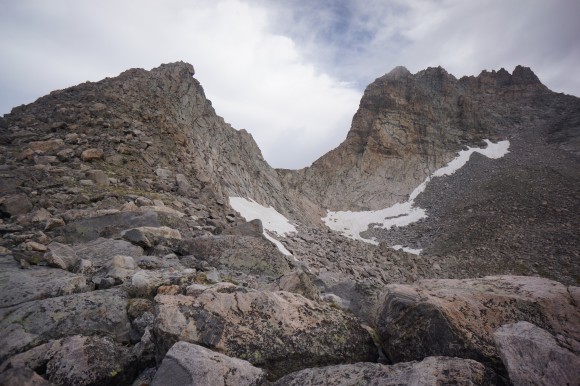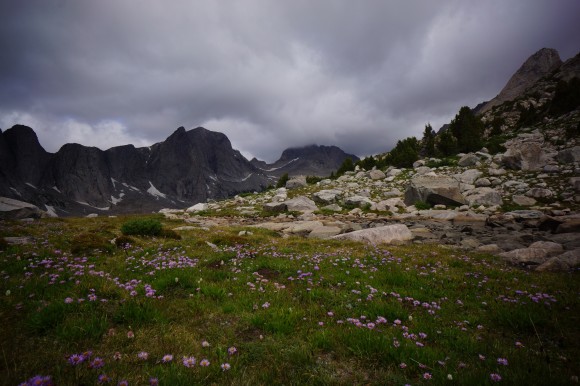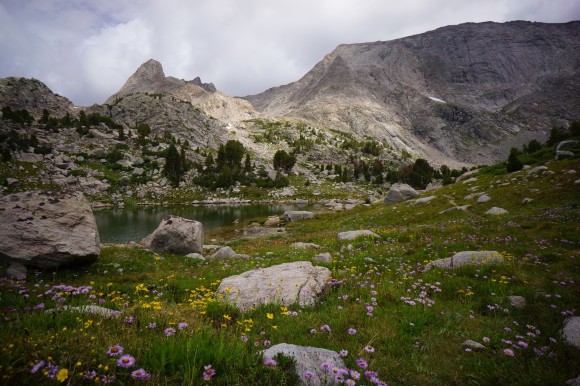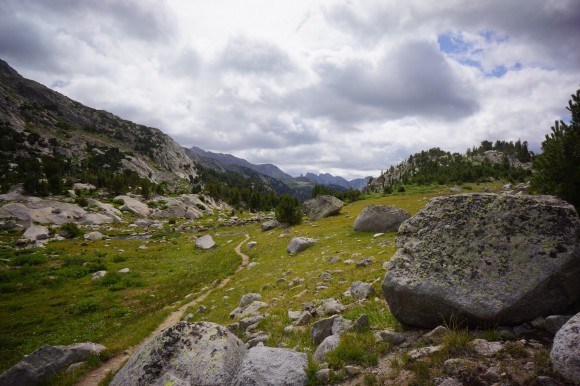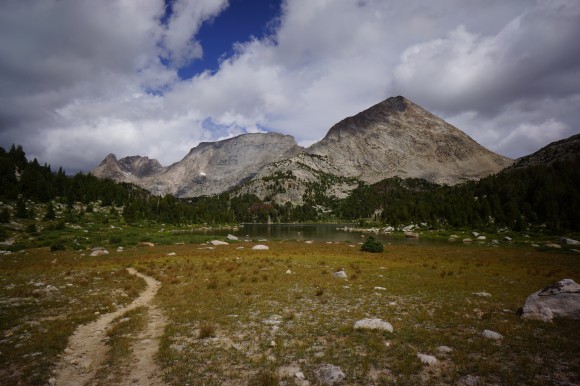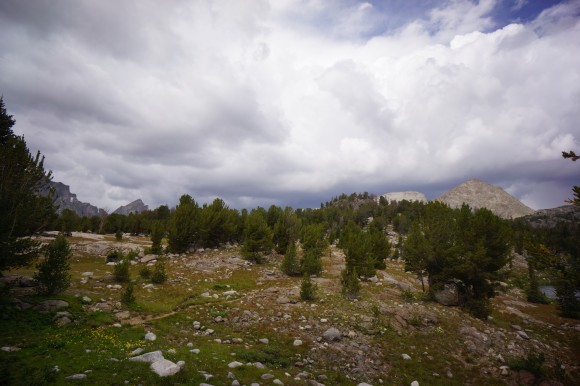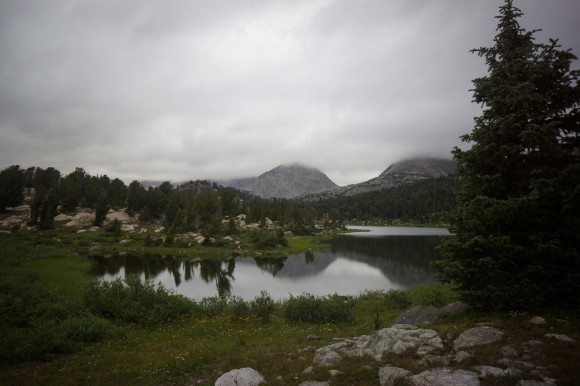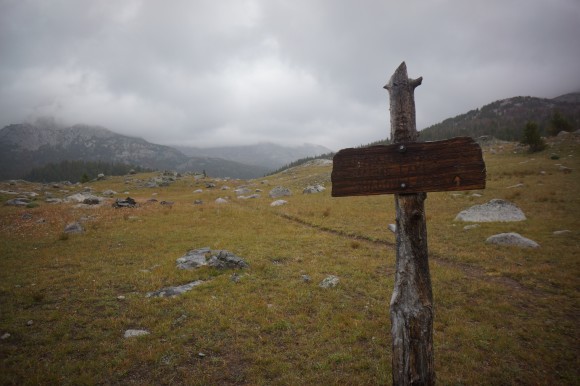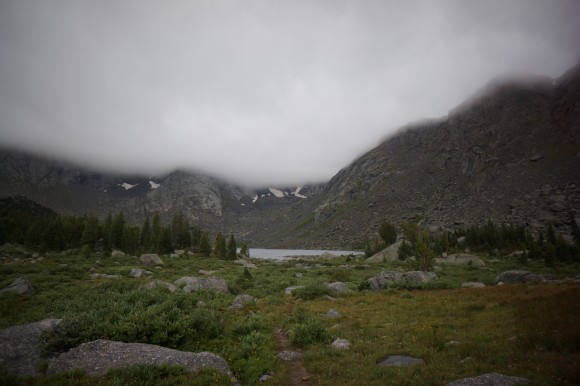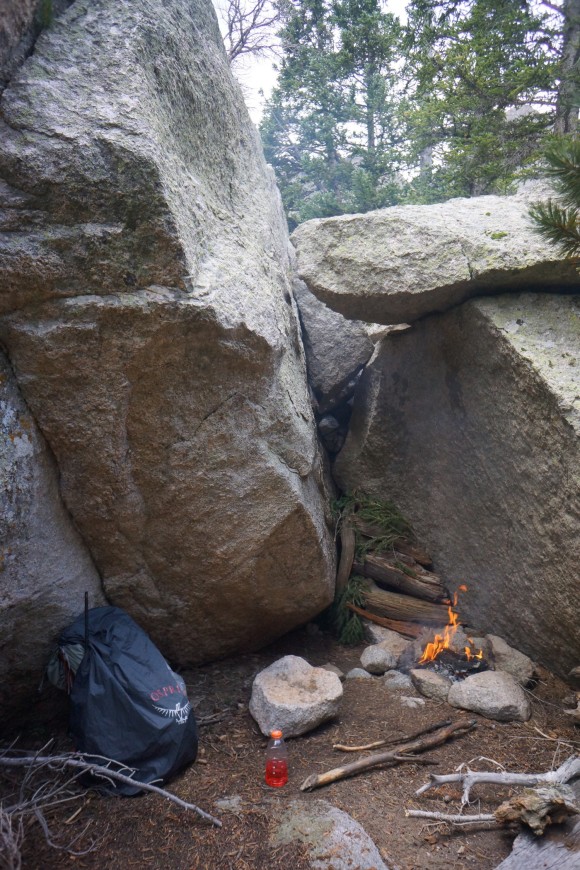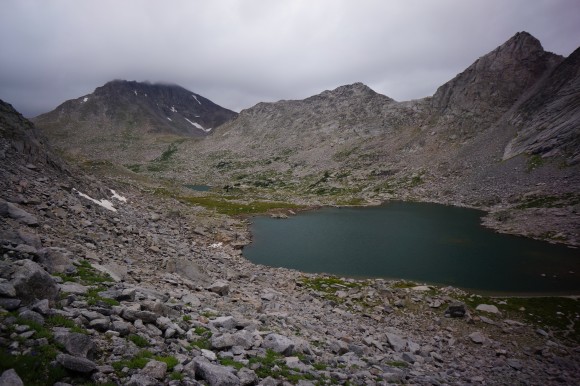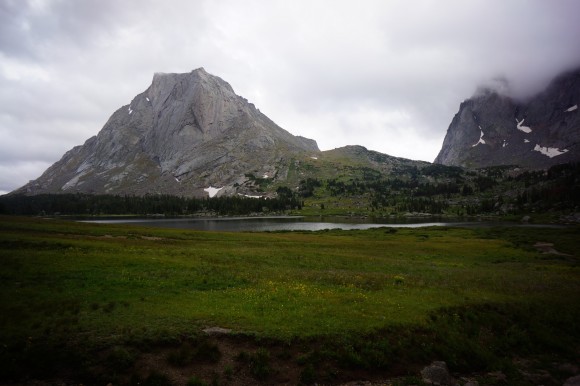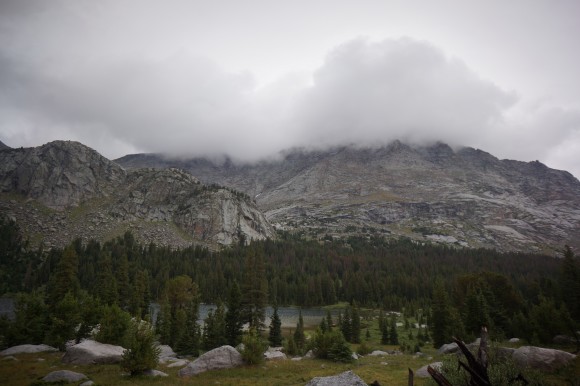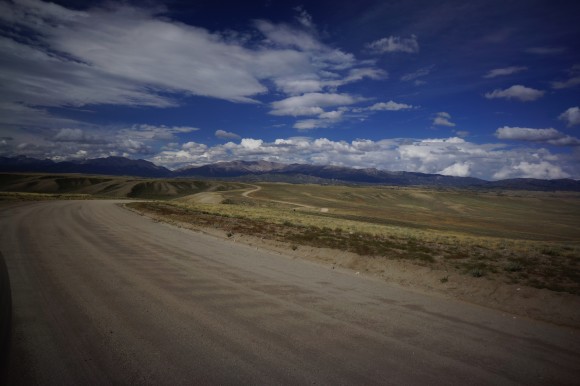Ruby Mountains, NV: High Route Hike Lamoille Canyon to Seitz Canyon
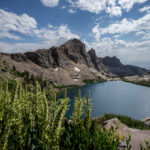
Ruby Mountains, NV – High Route Hike Lamoille Canyon to Seitz Canyon
- Hike Location – Ruby Mountains, Nevada – Ruby Mountains Wilderness
- Land Administration – Humboldt National Forest
- Hike Type – Point to Point
- Fees & Permits – No fees or permits needed
- Start Trailhead – Roads End
- End Trailhead – Powerhouse
- Length Of Time Hiked – 14.5 hours
- Miles Hiked – 19.28
- Route Difficulty – 8
- Scenic Beauty – 9
- Solitude – 9
Video: Ruby Mountains, NV – High Route Hike Lamoille Canyon to Seitz Canyon
Ruby Mountains Hike Maps
Here’s the caltopo map of the Lamoille to Seitz Canyon High Route Hike:
Download GPX file for the Lamoille to Seitz Canyon High Route Hike
Pre-Hike Planning Notes
There are no fees or permits required to hike in the Ruby Mountains. Thomas Canyon and Terraces Campgrounds are available in Lamoille Canyon to camp the night before/after your hike, or simply pull off the road and camp in the National Forest land. You should also be able to camp in a van/camper at the trailhead for one night, there was nobody there to check or bother us. Spring Creek is the nearest anything, and 30 minutes away is Elko which is a big town for Nevada.
This hike is a route that I wanted to do on my 2020 Basin and Range Trail thru hike, but wasn’t able to fit in, logistically. My route along section 6 of the BRT ended at Roads End Trailhead in upper Lamoille Canyon. The route we will hike here is a route that connects upper Lamoille Canyon with Seitz Canyon, leading to the Powerhouse Trailhead in lower Lamoille Canyon. This route should be very scenic, and will offer a spectacular finish to an already great section of the BRT. The Ruby Crest Trail was nice, but I have a feeling this will be nicer.
This route is almost entirely off-trail. There were only a few sections of this route, like in Seitz Canyon, where a trail is marked on the map. On the ground though, it barely existed. Just a fading trail that hasn’t seen maintenance in decades. In other words, most of this route is off-trail, and there is some bushwhacking involved… mostly in Seitz Canyon. With that said, it’s an awesome route that is challenging, rewarding and gets you off the beaten path in the Rubies. The Ruby Crest Trail gets most of the traffic in the Rubies, but there are many other great spots here, such as Echo Lake.
This hike can be done a long day hike, but it would be best to split this hike up into two days, camping at Echo Lake. There are multiple excellent campsites along Echo Lake.
Three final things:
- Beware of the private land at the entrance to Seitz Canyon. That’s why the route goes along the hillside at the end to reach Powerhouse Trailhead. There is an active ranch here with a few homes.
- This hike can be done as a day hike, but it may take all day, as it did for us. Make sure to bring a headlamp, just in case. We wish we did…
- Water is abundant, you won’t hike more than a few miles without it.
July 17th, 2021 – Ruby Mountains, NV High Route Hike Lamoille Canyon to Seitz Canyon
Miles Hiked – 19.28
Elevation Gain – 5,592′
My friends Sam and Ken (2020 CDT thru hikers) will join me for this hike. Last night, we slept off the road in National Forest Land near Camp Lamoille at the entrance to Right Fork Lamoille Creek Canyon. Descent spot, good views of Lamoille Canyon especially at sunset.
In the morning, We drove Ken’s Explorer down to the Powerhouse Trailhead in lower Lamoille Canyon, then drove my van up to Roads End Trailhead in upper Lamoille Canyon. We’ll walk back to Ken’s Explorer today, and then he’ll drive me back up to Roads End to get my van.
We left the trailhead around 8am following a trail up Lamoille Canyon. Soon enough, we realized this one was taking us up to Dollar Lake instead of Lamoille Lake. We began hiking off-trail sooner than anticipated, and headed for a horse trail that runs higher up the hillside in the canyon. I know this, because that’s the route I hiked down from Liberty Pass last year on my BRT thru hike.
The off-trail stuff here was mostly our fault for not taking the horse trail in the first place. I should have known better. Now, we spent some time walking through tall bushes and grasses, thankfully not crazy thick.
We hit the horse trail and followed that a ways uphill. We stopped for a quick break at the spot where we leave the horse trail and begin out hike uphill to our off-trail pass below Snow Lake Peak, leading over to Thomas Canyon.
Sam had just flown to the US from England a few weeks ago, and had bought some cheapo Walmart shirt to hike in for the summer. It was a long sleeved, collared shirt, the kind your cheap dad might wear when he’s forced to dress up. Ok, me too. I joked with Sam about this, and the need for a tie to complete the ensemble. After all, it looked like he was here for a business interview. Well, from the waist up, anyways.
The route up to the pass was steep and had us winded, but it was an easy walk. No bushwhacking, no huge extended boulder fields, it was mostly just a steep incline.
At the top of the pass, we enjoyed great views down into Lamoille Canyon and Thomas Canyon. To the south was Snow Lake Peak. The Snow Lake Peak was eroding was very obvious, and we joked that the Forest Service needed to come out here and “repair” these crumbling mountains. “A few more years and we won’t even have a Snow Lake Mountain”. Ha!
We stopped for a break on the pass, soaked in the excellent views and scouted our next move. The plan was to stay high up on the ridgeline and contour around the mountainside towards Mt Fitzgerald. It looked kinda steep though, and we contemplated taking a route a bit lower, meaning more elevation gain and climbing.
The descent form the pass into Thomas Canyon was steep, but short. Below the pass, a green and grassy patch of land with water flowing through it. A nice hike here.
Next we climbed back up in elevation some to reach our desired contouring line. This was intermittently hard/easy. We’d be climbing up steep, loose rock and boulders one minute, then walking short sections of flat, easy going terrain. All with great views of Thomas Canyon, though.
When we rounded the northwest-facing ridge before Mt Fitzgerald, we were met with an entire mountainside filled with boulders. Not what I like to see, but Sam loves the stuff. It was a big view though over Thomas Canyon. It was very green down below, but we were well above that, in the boulders.
The mountain scenery here was very impressive. The hiking here is more akin to a Sierra High Route or Wind River Range High Route. We are surrounded by towering mountain peaks and rock faces, in a sea of boulders. Slow going, but worth it.
Directly below Mt Fitzgerald was an imposing place to be. The peak towered above us, as we worked our line around the base of it. Even through the boulder fields along the slopes, we routinely cross trickles of water and small streams. There is no shortage of water here.
After Mt Fitzgerald, we went up and over a ridgeline separating Thomas Canyon with Right Fork Lamoille Canyon. The same excellent scenery extends into this canyon as well. Superb views here.
I came across a pile of a few boulders that had some minerals that caught my eye. I’ve been seeing a lot of large books of mica around, but that was it until now. Here though, in upper Thomas Canyon below Mt Fitzgerald, I found garnets. They were embedded in the host rock though, and I couldn’t do much with them without tools to extract them. Still, a cool find. Fun fact, the early explorers who first passed through the Rubies named them the Ruby Mountains because they thought these garnets were actually rubies. And now, I can see why.
Right Fork Lamoille Canyon continued to impress us the entire route around its upper slopes. We have been walking mostly on boulders for quite some time now, though, and it’s tiring.
Eventually, we reached a saddle in between peaks 10,528′ and 10,882′, at the top of Right Fork Lamoille Canyon. The wind was really picking up now. We followed the ridgeline towards No Echo Knob.
Along the way up to the ridgeline, we enjoyed excellent views of the Ruby Mountains. There were some sheer cliffs to stand at the edge of overlooking Right Fork Lamoille Canyon. It looked like the potential for rain now, although nothing directly nearby threatening us at the moment.
At the top of the ridge leading to No Echo Knob was perhaps some of the best distant views of the day. It was our most proper ridgewalk of the day, as well. The views were just stunning in every direction. A truly magical place.
We summited No Echo Knob, high point of the ridge. It was here that Sam, hiking for the first time in Nevada, realized the hidden gem that he’d stumbled upon. “Why is it that so few people visit this place”, he wondered. Nevermind why, we have it to ourselves today.
The descent form No Echo Knob to Echo Lake was outstanding. Echo Lake is hard to ignore; it’s surrounded by a tall, steep cirque of mountains, and the lake itself is a deep blue color. It’s large and looks to be deep. It certainly commands your attention, and respect.
Our original plan was to drop down to the lake to traverse around it’s east shore, but from our elevated position, we saw a better route. We’ll stay higher above the shoreline, and contour around the lake. This way, we minimize our total elevation gain traversing around it. There looks to be a route we can follow, but who knows. Let’s try it!
The entire hike around Echo Lake was stunning. The views were constantly changing, with seemingly better and better angles and lighting. The hike itself wasn’t too hard. There was no real path to follow, but it was easy to pick from numerous lines that traverse the east side of the lake.
The views from the extreme east side of Echo Lake were probably the most impressive to me. Here, the lake looks the biggest, and one has a great view down Echo Canyon. Lining Echo Canyon is Mt Silliman, peak 11,330, and Echo Box Peak. These peaks, and the ridgelines leading up to them, form huge, towering walls above Echo Lake, making this the beautiful place that it is.
We stopped along a small creek for a break. There was a great camp spot here, overlooking Echo Lake. If only we were camping!
After the break, we continued traversing around Echo Lake. Of course, we had to stop and test the echo properties of Echo Canyon at some point. The echo is indeed impressive! We also took the time to test out our skiing skills on some of the snow slopes. I made a successful run down a hundred feet or so, which is always fun to do in shoes.
After contouring around Echo Lake, it was time to head up to a pass below Mt Silliman. From here, it was a climb of about 350′ to the top. It was a very manageable climb up boulders, and we made quick work of this one.
At the top of the pass, we had our first view into Seitz Canyon. Nice, but the north face of Echo Box Peak on the Echo Canyon side was more impressive.
Now for the route down into Seitz Canyon. Our plan was to contour around the north face of Mt Silliman and work our way down a diagonal line Seitz Lake below, avoiding the steep and narrow Seitz Canyon route which is more direct. I thought it would be best to avoid Seitz Canyon when planning this route from home, based on the slope angle shading/steepness of the grade, but now that we’re here, it does indeed look doable. Sam, Ken and I discussed our options, and we settled on the direct route down Seitz Canyon.
So from the top of the pass, it’s 1400ft down this steep, narrow chute filled with snow, ice and boulders. We traversed a sketchy section of loose boulders just to get down to the snow field in the center of the canyon. Past the boulders, we take our first footsteps in the snow. The slope angle is steep, seemingly close to 45 at times. Sam went first, kicking steps on his way down. I went next, and Ken at the top.
The snow was mostly soft enough to kick steps in. Ken and I had the advantage of using Sam’s steps to walk down into, without expending as much energy as Sam. However, it was still slow and tedious. I took out a trekking pole for the first time today, almost never using them anymore, except to support my tent. But here, a trekking pole was great to have. I used my upper hand to balance myself in the snow as I hiked down, which makes your hand quite cold soon enough. So then, I’d switch sides, putting my opposite leg first as the leading leg, giving my other hand a chance to warm up again. Yeah, didn’t think of bringing gloves for this hike. Nor micro spikes or ice axe, but having them here would have been nice.
No way around it, it was slow going down Seitz Canyon. Descending the snow field was enough to get your heart rate up a bit, but also not feel overly worried about the dangers of falling. Maybe that’s just my confidence in the snow. Either way, this slope was not glissade-able… safely.
There were two sets of snow fields in the chute. The upper one was the steepest. There was a short section of boulders separating the two snow fields, and then it was on to descend the lower one. Sam was below and hollered up that it was icier than above. Ken, having hiked with Sam on the CDT in 2020, joked that Sam doesn’t kick great steps anyways. It was fun to see the dynamic between these two, it was the first time I hiked with them together.
Past the second snow field, we were roughly halfway down the chute. It’s all steep boulders here now, and I wondered which I would rather have; the boulders, or the snow. I say, the snow.
We took a break near the bottom of Seitz Canyon, and I ate a snack. I hadn’t eaten in several hours, and really needed the boost. I was indeed feeling better now. We exited Seitz Canyon on a bit of a high, looking back at the increasingly crazier looking chute we had descended. I let out a loud scream into the canyon, which had an incredible echo to it with a delay of a few seconds.
As we covered distance downhill now and entered a flat, open valley above Seitz Lake, we entered a new phase of the hike… bushwhacking. There will be a lot of it in Seitz Canyon, unfortunately. The upper section of the canyon is thick and wet. The views looking back were outstanding, though!
The bushwhacking continued to Seitz Lake. There really wasn’t any good access to Seitz Lake, surprisingly. The shoreline was thick with vegetation. The view sure was nice looking across the lake and up the canyon, though. We assumed the trail would become more obvious downhill from here, but that was wishful thinking.
Below the lake, we continued to be fooled into thinking we had stumbled on the trail every time we came across the slightest hint of a beaten path. However, the setting sun created an extremely pleasant sunset this evening. We had a few sprinkles briefly, but the cloud cover provided the backdrop for those oranges and reds.
We came across a good sized waterfall around the 8200′ mark as we continued to hunt for the trail. We’re right on it according to the map, but we see nothing 95% of the time. It’s a steep descent down the hillside in thick brush. We reach the creek below and stumble upon a ribbon on a tree. You can tell the forest has been cleared out a litter wider in places, but that it’s overgrown for decades without maintenance.
The trail fades in and out and we continue to doubt our ability to stay on whatever the trail is supposed to be. We continue to surprise ourselves though, and routinely see signs that we are on the right path, even if the path is now gone. We saw more ribbons on the trees, scattered randomly along the way, but it’s still a bushwhack.
We hit a creek bed that we followed for a while, which was dry. However, it was full of tress, plants and debris that made this an obstacle course.
Losing light now, Ken stumbles in the thick brush and falls. He’s alright, but a symbol of how were are all feeling… tired. After a helping hand, he’s up and at it again.
Day turns into night as we continue hiking down the canyon. Sam and I have our phones for light, and Ken also has a headlamp. So, one headlamp for the 3 of us. We hit a slightly better path lower down in the canyon, then some type of 4×4 road.
Now we reach the lower reaches of Seitz Canyon, or Rabbit Canyon as the map now marks it here. This is where the private property begins. Following the road out into the valley means walking through private property. There is a ranch here too, and the road goes right behind a couple of homes. So, to avoid them you must contour around the hills above the private property. Fortunately, in the lower reaches of the canyon here, it’s not thick and green, it’s drier and more barren. Open and easier to walk. Still, it’s dark now.
Pick your poison here… walk the hillsides in the dark or drop down to the private property after passing by the homes and walk a nice road out to Lamoille Canyon. I won’t tell you what to do. Just be aware of the property lines, is all. Use the caltopo app and turn on the public lands layer.
We reached Lamoille Canyon sometime around 10:30pm, having hiked a solid two hours in the dark. That’s a 14.5 hour day of hiking for us. It was a very dark night, too. We could barely see Ken’s Explorer until we where right up on it at the Powerhouse Trailhead.
Ken drove us up to the Roads End Trailhead, and we slept in our vehicles for the night. What a killer hike!!
Lamoille to Seitz Canyon Route Verified As New Leg of the Basin and Range Trail
The route we hiked today was challenging, but repeatable. It was not technical nor was there any real exposure. There is plenty of water, excellent camping and outstanding views. Plan to bushwhack Seitz Canyon, though.
So, I am happy to report that the hike we did today will become the new “standard route” for the Basin and Range Trail to end Section 6. The alternate route would be to hike down Lamoille Canyon, or simply hitch down. The route we hiked today was easily equal to the scenery along the Ruby Crest Trail, if not greater. And not only greater scenery, but far more rewarding. Anyone can hike the well-manicured Ruby Crest Trail, but the off-trail stuff we did today provides a greater adventure in my book. The standard BRT route will still hit the Ruby Crest Trail in it’s entirety (except the final mile or two to Roads end trailhead in upper Lamoille Canyon), and so this new route will only enhance the Basin and Range Trail hiking experience.
Jackson to Flagg Ranch – CDT Thru Hike 2018
Continental Divide Trail – Jackson to Flagg Ranch Hike Overview
After walking 2 miles into Jackson, resupplying and walking across the valley to Wilson in one day, we entered the Jedediah Smith Wilderness and Grand Teton National Park. We hiked our own version of the Teton Crest Trail winds in and out of both of these land administrations. The Tetons are pretty damn grand to say the least! North of Lake Solitude, we took a steep cross country route out of the basin and over to the west side of the divide. Lots of wildflowers, delicious berries to eat, and bushwhacking!
Thursday August 16th – CDT Day 118
Started hiking at 7. It was less than 2 miles to the trailhead. From there, we walked into Jackson.
When we reached the downtown area, the search for a breakfast restaurant was on. We landed at The Bunnery. Good food, but pricey.
Everything in Jackson is expensive and the people are yuppity. Lots of tourists and tons of traffic. Jackson was not my favorite town stop. Fortunately, we were just getting what we need and walking out later.
We hit up an outfitter, the ranger station and a couple stores. Then we headed over to the rec center to take a shower. They had a pool, hot tub and sauna, so we spent about an hour here taking advantage of the amenities.
Lunch at DQ, then headed to the other side of town. Here, we hit the library for a few hours. Hopeful and I spent some time researching the big sky alternate. Feeling the crunch for time, in terms of reaching Canada by Oct 1st, it was a good idea to have this as a backup.
I called Patagonia to arrange for a new capiline lightweight baselayer shirt to be sent father up trail. Mine has a forearm sized hole in the back.
We then went to the grocery store for food and picked up dinner. Katie found a ride to Wilson, so hopeful and I will do the road walk and meet her there. This will set us up well for entry into the Tetons tomorrow.
I didn’t find Jackson to be very scenic. However, the views were much nicer heading west out of town. The road had a bike path next to it that we followed much of the way. We didn’t leave Jackson till after 8, so it was going to be a bit of a night hike.
There was road construction on hwy 22, next to the bike path. Lots of traffic backed up and honking horns. Kinda hard to deal with after spending so much time in the wilderness.
Katie texted us and said we could camp in the backyard of the guy who gave her a lift. She gave us an address and we headed that way.
We took what liked like a short cut, and it dead ended at a gate with a keypad. No private property signs though. We could walk around the gate. As we were contemplating what to, in the darkness, a truck came flying the corner from the opposite side of the gate. Illuminated by the headlights, all I could do was wave and see who they where and their intentions.
As it turns out, the 5 guys in the truck were trying to take a short cut themselves and avoid some of that traffic. They had just spent last week in the wind river range themselves. When we said we had been walking since April, they have us each a cold beer.
Moments later, another truck pulled up behind the first truck. This was the landowner, and she asked what we were doing. Truck guys said looking for a short cut to pass through, the woman said OK and opened the gate. We said the same thing and she wouldn’t let us walk through. We were only about .3 miles from fish creek road, half mile total from our destination. I mentioned it would be an hour or more detour for us, but she didn’t care. That really sucks!
It was 10:30pm now and we started the long walk around. Back to the road construction, then another pitch dark bike track and country roads with no street lights. I had a terrible headache, and was finding the walk difficult near the end.
We finally reached the house Katie was camping at sometime after 11:30pm. The house backed up to a river, and were told to camp there near it. Fine. I know there’ll be condensation in the morning, but I’m so tired I don’t care. Cowboy camped under the stars. Fell asleep around 12:30am.
Miles – 18
Total Miles – 1939
Rain – no
Sleep – backyard, tent
Animals – deer
Friday August 17th – CDT Day 119
Sure enough, everything was wet this morning. Got up at 7 since hopeful and Katie were already awake. Packed up and went to a bagel shop down the road for 2nd breakfast. Already ate leftover chicken strips and croissants earlier.
Stated hiking hwy 22 up to Phillips trailhead sometime around 9:30. It was already hot out. The road walk kinda sucked with all the traffic and vehicles that don’t get over a little when they pass by. Some came awfully close.
Lots of cars at the trailhead. The people faded out when the trail split off for ski lake. The views also began to open up.
Lots of wildflowers high towards the pass. Good view at the top. Now we enter the jedidiah Smith wilderness and begin the teton crest trail.
The farther we hiked, the better the views became. The trail winds into a new valley. On the other side, rock formations that look like they’re part of a castle. Beautiful.
On the next pass, we entered grand teton National park. The trail winds back and fourth between the national park and wilderness throughout the teton crest trail.
The trail passes by Marion Lake, a really nice spot. The kind of place you only dream of camping on the CDT. But as always, there’s more miles to cover before I can feel good about the day’s progress.
Great views continue. Good trail, helps to keep a good pace. There was a lot of climbing today and with heavy packs, it was tiring. I listened to some music today for the first time in a while. This helped keep me going.
A few more scenic miles and we were approaching the final pass leading up to death shelf. I’ve seen some great pictures from this area and so I was looking forward to it.
Death shelf did not disappoint. However, it was overcast and it killed the sunlight, so it was not as photogenic at I hoped for. There’s always tomorrow.
Miles – 21
Total Miles – 1960
Rain – no
Sleep – Backcountry, tent
Animals – marmot
Saturday August 18th – CDT Day 120
Nice hike this morning coming out of death shelf.
The Tetons have been looming on the horizon for many miles now, growing bigger with every step. Amazing views in an otherworldly landscape!
Alaska basin was nice. Mainly, the northern section. Tons of wildflowers.
At the top of hurricane pass was our first unobstructed view of the three tetons; grand, middle and south. Incredible! Oh and fun fact, tetons is French for “tits”. French fur trappers who discovered the area named it as such because the pointy peaks reminded them of boobs. Grand Tetons literally means “big tits”.
Below hurricane pass lies schoolroom glacier. It has a large moraine that was now acting as a berm to hold back a small lake. Icebergs in the lake, beautiful water.
The upper cascade creek area was just incredible. On par with the wind river range. Our pace reflected this too.
Rain clouds building on and off. Hiked down to the junction with solitude lake, and took this trail uphill. Saw a Moose on the way up.
Awesome views from Lake Solitude. Tons of people here too. Pretty ironic name if you ask me.
Now it’s time to climb out of the basin. Around the lake and up hill. Some steep rock climbing with limited holds involved.
Now up on the highest shelf, we could see no easy way to the top anywhere. The skies were also pitch dark and looked like rain at any moment. We made the call to head back down to the lake.
May try another way out of the basin tomorrow or head up paintbrush ridge in order to drop down to mink lake to try another way over the crest.
Miles – 20
Total Miles – 1980
Rain – yes, light
Sleep – Backcountry, tent
Animals – marmot, moose
Sunday August 19th – CDT Day 121
Started hiking at 6:30am. I spotted another potential exit from the lake solitude basin. It was a grassy chute that looked increasingly more appealing the closer we got. It was steep, but not as bad as last night’s failed route.
Made it to the top of the chute. It was hazy today due to forest fire smoke, coming from who knows where. Nothing close by to my knowledge. Grand Teton was a prominent feature looking through the haze. Really incredible views from here.
After the chute, we walked over some talus fields and pools of melt water on relatively flat ground. Not what you think of when you imagine mountain ridgelines. More impressive views on the other side of lake solitude.
Next we followed a ridge over to Littles peak. It was a bit of a knife edge for a hundred yards or so. Pretty cool!
We traversed around Littles peak instead of going up and over. This was mostly a great choice, avoiding elevation gain and boulders. First half was grassy and somewhat flat. Then it became steeper and took some work to find a way down.
Lunch break by a steam, then moved on. Nice walking for a while. Passed some scenic little lakes which reminded me of a scene in the Sierras for a bit.
The trail then goes up and down for a while. Nice little basins and ridges.
We took a break at a stream above bitch creek. Yep, bitch creek, that’s the name. Descended to the creek then ascended dead horse pass. Something like 1800′ in 1.1 miles. No wonder why they call it dead horse pass… The horse is dead by the time it reaches the top. Just like I felt. Great view and break spot at the top though.
We made quick work of the descent. Covered good ground through the valley and took another break before the ascent to camp lake.
The first part of the climb to camp lake was the steepest. Pretty steep for about a mile. The terrain flattens out some before the lake but I was already whooped at this point. Hopeful and Katie were ahead waiting for me at the lake. It was 7:30pm now, and we decided to stop here for the night.
I went to bed around 8:15 tonight since I was so tired. Katie and Hopeful stayed up and had a campfire. Today involved a ton of climbing, at least 5-6k feet.
Miles – 19
Total Miles – 1999
Rain – no
Sleep – Backcountry, tent
Animals – deer
Monday August 20th – CDT Day 122
Left camp lake at 8am. We’re hoping to make it to flagg ranch today, or at least very close.
We followed good trail up to a junction for nord pass. From here we needed to take a trail that was on the map but didn’t seem to exist on the ground. More bushwhacking, Yay!
We eventually picked up a faint trail that looked like it hadn’t been used or maintained in many years. Made it to the pass that will drop us down into Webb canyon and enjoyed a hazy view. I hit my 2000 mile mark here which was a nice milestone.
The route down was off trail but an easy grassy slope. We hit trail and followed it down to Moose creek. However, this is where the trail ended.
We crossed moose creek over some downed trees, the last time we’d keep our feet dry. From here on out, it was a nasty bushwhack. Steep slopes, thorn bushes, downed trees and tall vegetation hiding holes, rocks and sharp downfall. This forced is into the river a few times, just walking downstream. The water was cold though, and progress was limited to how long you could stand the pain. This was one of the most difficult sections of bushwhacking I’d face along the entire CDT.
After a couple miles of the above, we hit a poorly maintained trail that faded in and out for a mile or two. More bushwhacking, but not as nasty. After passing through a meadow, the trail seemed to be maintained like normal. Great, because we still have a lot of ground to cover now.
Took a break and was surprised to see 4 hikers coming up the trail. They were seasonal NPS workers heading up to a cabin for a week. Here, they’ll be on the lookout for big horn sheep and mountain goats, studying their numbers and location, etc. We told them, “good luck” with the trail above the meadow. We figure, once they see how shitty it is, maybe they’ll put in a work request for trail maintenance there. But if it goes by how much traffic the area gets, forget it, it’s never getting done.
The next section had some nice waterfalls, lined with vibrant wildflowers. Also, lots of blueberries and raspberries growing along the trail. We stopped to pick some along the way. Delicious!
As we entered a burn area mid afternoon, it started raining. It rained for an hour or so, but we hiked through it. We could now see Jackson lake in the distance.
As we neared the lake, the weather cleared. We reached the berry creek ranger station around 4:30pm and took a break. From here it was 8 miles to grassy lake Rd, then a couple miles of road walking to flagg ranch.
After our break, we decided to go for flagg ranch. It was now sunny and we were in good spirits. The trail was not the most scenic which helped us cover good ground without many stops for pictures.
We reached grassy lake Rd a little before sundown. We walked into the darkness and made it to the ranch around 9:45pm. We checked in and got a tent site. The general store was still open so I bought a couple of hot pockets to stave off the hunger. On a side note, every time I would blow a snot rocket on trail, I get the Hot Pockets jingle stuck in my head, but using the words “Snot Rockets” instead. That’s not gonna leave ya now is it?
After setting up camp in the dark I took a nice hot shower. Almost as good as a hot tub. Looking forward to sleeping in tomorrow.
Miles – 28
Total Miles – 2027
Rain – yes
Sleep – campground, tent
Animals – deer,
Tuesday August 21st – CDT Day 123 (zero day)
Slept in til 9am. Headed over to the lodge and had the breakfast buffet. It was a bit subpar but nevertheless, I filled up. I then picked up my boxes from the front desk… Food from dad and a new pair of shoes from REI.
Today was spent organizing food and planning out the next town stops and route for Montana. Did laundry as well.
Ate dinner at the lodge. One of the best burgers I’ve had on trail. We then had a fire in camp and drank some whiskey.
Tomorrow we head into Yellowstone.
Miles – 0
Total Miles – 2027
Rain – no
Sleep – campground, tent
Animals – none
Dubois to Jackson – CDT Thru Hike 2018
Continental Divide Trail – Dubois to Jackson Hike Overview
Leaving Dubois, we had another 2.5 days of hiking to cross the northern Wind River Range. This proved to be much more difficult than anticipated, exceeding our time estimates. Road walked from Green River Lakes west to the Gros Ventre Wilderness. The Gros Ventre sees few hikers, and has few established trails as a result. Off trail adventures continued here on fields of snow and boulders, and involved some sketchy moments scrambling down steep rock faces. Once again we found ourselves low on food and hungry, only this time with a different outcome. This section was full of adventure and very scenic, among my favorites of the whole trip.
Friday August 10th – CDT Day 112
Woke at 7. Went to breakfast then finished packing. Liz, the owner of the motel, gave us a ride to glacier trailhead where we left off. Katie didn’t want to do a section of road walking that Hopeful and I were doing, so she had Liz drop her off about 6 miles back down the road we came in on, and we’ll meet Katie there.
The road walk was, well, a road walk. Not much to say about it other than easy walking for once.
Katie was hanging out at this wildlife viewing pavilion thing in the shade. We joined her for a while, happy to get out of the heat.
Resumed hiking around 12:45. After a short road walk, we jumped on a trail that took us over a ridge. On the other side was a scenic little valley with a ranch.
The trail took us right into the ranch. Not sure exactly where the trail continues through the ranch, we stopped at the office to ask. We were on private property, but the owners gave us permission to pass through. They also gave us ice water, cookies and a loaf of coffee cake!
The valley beyond the ranch was nice. Eventually we left the ranch and entered public land, although this boundary was not marked.
Crossed a river and then took a break. After this, the trail was thick and had lots of blow downs. Also lots of boulders and a little scrambling. Tough section. We lost the trail many times.
Came to another stream crossing. The stream had a steep cut bank that was sketchy getting down. I slipped and cut my hand. Used super glue to close the wound.
Continued uphill on an increasingly better trail. Found some raspberry bushes with some tasty berries. Reached a flat spot that had good camping near a stream, and decided to stop to make camp. We packed out two beers that we put in the stream to get cold for later.
Made a small fire, my first on trail, and enjoyed our one beer with dinner.
Miles – 15
Total Miles – 1816
Rain – no
Sleep – Backcountry, tent
Animals – none
Saturday August 11th – CDT Day 113
Woke at 6. Lots of stars last night.
The trail climbs uphill immediately after leaving camp. Went over a ridge then dropped down to a small lake. Kept going and made it to Simpson lake a short while after. Took a break at Simpson.
Followed Simpson lake’s Inlet Stream uphill. It was beautiful here with snow capped peaks, blue lakes and green grass. Stopped at pinto lake for a swim.
Next the trail goes uphill to a pass. It’s scenic and mostly gradual, but had a few steep spots. Good views on the other side of the Divide, so we stopped at the top of the pass to eat a snack.
Excellent views coming down the pass. Found our route down despite the steep grade.
Reached a cliff that forced us to hike around. The new route required some down climbing with a little exposure. This took us a while to find a doable route down, and the doing was slow and sketchy.
Down at roaring fork river, we needed to cross. The bank was very steep and loose, but we traversed it to a point where a safe river crossing was possible. This, and the cliff above, took about 3 hours!
The river Bank was thick, thorny and rocky for a ways. We ended up crossing again. Picked up a small trail and followed it downhill.
More obstacles… Boulder fields and thick vegetation. Came across 3 guys camping along the river, wasn’t expecting this here. Very little traffic in this area. They pointed us to a trail a hundred yards away. Back on track.
Walked another few miles before finding camp along the river at a bridge.
Miles – 20
Total Miles – 1836
Rain – no
Sleep – Backcountry, tent
Animals – none
Sunday August 12th – CDT Day 114
Last night, We agreed to sleep in to 7am is morning. The extra hour of sleep felt great.
Crossed the meadow with roaring fork running through it. Hiked trail on the other side of the river for a while, before it faded out.
Crossed roaring fork River again, it was cold! Took a short break after.
Trail goes over a ridge and into the valley containing green river lakes. Squaretop mountain can been seen in the distance. Beautiful.
Hiked down to the green river. It was wide but shallow enough to cross. It was a few inches above the knee on me. Fun fact: This is the Colorado river’s largest tributary.
Now it was a long road walk. Katie immediately began planning to hitch down the road to avoid it. We stopped under an awning to figure out the logistics of where to meet up later, etc.
Katie very quickly secured a ride with a guy parked on the side of the road. Hopeful and I continued on our road walk. I guessed 10-12 miles.
The scenery was pretty nice overall. The Green river winds along the road for most of the way.
We saw Katie sitting under a tree along the road a few miles before the bridge. After a few minutes of sitting together, a couple atvs pulled up. Really nice people… Gave us cold beers, drinks and were just nice to talk to. Wyoming locals, they’ve been pretty friendly thus far. Then Katie hitched with them to the bridge while Hopeful and I walked. Continuous footsteps to Canada, that’s what it’s all about for Hopeful and I.
A few more miles and we reached the bridge. Took a food break here then moved on.
The three of us were now hiking together again. We’re now following a dirt road towards the Gros Ventre Wilderness. Nice walking.
Hiked a few more hours this evening. Nice calming and relaxing landscape. Rolling hills, sage brush and the sun low in the sky.
Found camp on a small hill along the trail at 8:30pm.
Miles – 25
Total Miles – 1861
Rain – no
Sleep – Backcountry, tent
Animals – elk, pronghorn
Monday August 13th – CDT Day 115
Hit the trail at 7am. Meadows and forest as we descended to the creek below. Passed an old mining operation.
Crossed the creek and took a break. Hopeful saw an animal that looked like a cat, and was about the same size. Probably bobcat.
Entered the Gros ventre wilderness. So far, we had trail. Passed an old wagon. Saw bear shit and tracks.
The trail disappeared as we headed up hill to the pass. It was a pain in the ass due to the thick brush, catching each step.
Passed a couple of nice lakes. Looks like very little use here.
The route up the next pass was littered with large pits under he rock towards the bottom. The hole in the ground would look small, but underneath would be a larger than expected pit. Interesting. Gonna have to watch my footing here.
On the top of the pass, it was a nice but daunting view. Lots and lots of boulders, very barren looking. Found a route down though steep and loose rock. Very sharp too. Climbed many ridges up and down to cross the main valley, and started up hill to a small saddle.
The saddle provided a view of snow and boulders. More hard work ahead.
Now to skirt the mountainside. Steep boulders, and sharp. Truly horrible. However, we did find some really cool rocks. Geode like rocks with crystals. Lots of yellow in the rock. Bagged a few to take with me.
Crossed a couple of snow fields. Micro spikes would have been nice but didn’t feel too bad without. We sent these home in Dubois after the Winds. Hopeful slipped a slid a little. A couple times actually.
Took a break after the snow fields. Lots of huge slabs of razor sharp rock to walk on now.
We headed up to the top of the ridge where we’ll cross and get down into the next valley. Only problem is, it’s all sheer cliffs. Beautiful scenery though!
Walked to the last saddle on the ridge. At first, it looked like no way down. Then I spotted a steep, but doable, chute to down-climb. Looked to be about a 60ft climb.
Hopefull went first and scouted the route. Katie followed, then myself. The climbing wasn’t as bad as it looked. However, we were now faced with a steep and loose scree field. We slid on our butts and somehow avoided cutting up our hands too badly.
Made camp right below the crazy wall we just descended. It was 8:45pm now and almost dark. Beautiful spot though.
Miles – 19
Total Miles – 1880
Rain – no
Sleep – Backcountry, tent
Animals – elk
Tuesday August 14th – CDT Day 116
Last night’s nightmare wall was this morning’s scenic view. Just awesome.
Hiked up a small pass above camp. Now we could see the long ridge we needed to walk around. Looks like lots of ups and downs on Boulder fields.
We took a lower route to Steamboat peak, which we’ll hike around.
Made it around Steamboat peak and was rewarded with an actual trail to follow. Hiked down to a small pond on a shelf. Lots of wildflowers and a great reflection.
Below the pond we came across shoal lake. Another beautiful lake. The outlet was lined with colorful wildflowers as well.
This whole drainage is just incredible. No wonder it was its own wilderness… The shoal creek wilderness study area. Great trail and awesome views.
The trail drops downhill and through an old burn area. It then crosses the creek and goes uphill again, over the opposite ridge.
The next section of trail is less scenic. Lots of woods and low brushy, weedy plants. Then a burn area. Super.
Finally, we reached the trailhead and a road. Now it was decision time. We had very little food, basically enough for the rest of the day. Jackson was still about 30 miles away, so another day of food was paramount. We didn’t want a repeat of the winds, hiking a full and difficult day on a handful of m&ms.
We walked into a nearby ranch place, which ended up being a school of some sort. There was a guy riding around on a mule, and we informed him of our food predicament. He told us to sit tight and returned with 3 bags full of food. Ham and swiss sandwiches, nuts, apple, cheese, granola and dried fruit. Perfect! This was a real help.
Still, we could use a little more food. We’re hungry thru hikers after all. We then proceeded to chat with an older woman named Jean camped by the river in a huge rv. She offered to drive us to to the granite hot springs about 2 miles up the road to check what concessions they have.
The hot springs had chips, soda, granola bars and some candy. We picked up a few items and headed back. In the parking lot, couple from Texas gave us some granola bars, cold waters and 2 beers. Jean was then nice enough to give us a huge bag of chips, 6 cokes, and some canned foods back at her rv.
Feeling good about our food supply, we headed out. We decided to hike the granite creek trail instead of the granite highline trail, since it looked like It would have a better trail and was more gradual with its elevation gain. We stopped to eat dinner in the granite campground, eating the heavy and most garbage producing foods first.
Hiked up stream along the granite creek trail about 2 miles past the hot springs and found a nice campsite.
Miles – 19
Total Miles – 1899
Rain – no
Sleep – Backcountry, tent
Animals – deer
Wednesday August 15th – CDT Day 117
Hiking at 7. Great trail, allowed us to cover good ground. Steep sided mountains and cliffs line the canyon.
Morning was very pleasant but uneventful. Just knocking out miles through beautiful country on a legit trail for once.
Made it to the top of the pass going over to cache creek around noon thirty. Lunchtime. With cokes!
The other side of the pass was beautiful too. Great hiking and very enjoyable afternoon.
Down at the bottom of the valley we hit the cache creek trail. 9 miles to Jackson according to the sign.
Good hiking but nowhere to camp along cache creek. Hiked to about a mile before the trailhead, where we found a decent spot. It was only 6pm, early for thru hikers.
I used the extra time to wash up in the creek, gather sticks for and build a fire, and catch up on some journaling. Clearly I didn’t feel like writing much today. Great evening by the fire.
Tomorrow, we Jackson!
Miles – 22
Total Miles – 1921
Rain – no
Sleep – Backcountry, tent
Animals – deer
Lander to Dubois – CDT Thru Hike 2018
Continental Divide Trail – Lander to Dubois Hike Overview
The first 30 or so miles are a lead up from the lowlands of the great divide basin desert into the high country of the Wind River Range. The next 120 miles were the most challenging, beautiful and amazing outdoor experience of my life. I had more adventure in these 10 days then the rest of the entire CDT combined. Jagged peaks, frozen lakes, glaciers, crevasses, abundant wildflowers, miles of boulders and snowfields, mountain lions, big horn sheep, steep snow traverses, scrambling and climbing, milky glacier fed rivers, and almost NOBODY to share it with. Additionally, the majority of this route is off-trail. In my opinion, the Wind River Range offers the best high alpine backpacking experience in the continental US.
In the southern Winds, we left the official CDT and began the 450+ mile alternate route I created. My route, now affectionately known as the “Famous Route”, takes a much higher route through the Winds and into Dubois, then back through the Winds and cross country through the Gros Ventre Wilderness and into Jackson. Next, we’ll hike west across Jackson Hole and hike the Teton Crest Trail north into Flagg Ranch. Finally, we’ll enter Yellowstone through the South Entrance and hike the Bechler area to Old Faithful where we’ll reconnect with the official CDT route.
Sunday July 29th – CDT Day 100
Slept to about 8am. Spent the morning getting food and gear together, and didn’t leave until after 11am.
Hopeful, Katie and I hiked down the main strip in Lander to hitch. We got a ride after 20 minutes from a guy named Eli. He dropped us off right where I had left off yesterday morning. Another guy was there at this gate on his way out, having just dropped off a couple of CDT hikers himself. Tim Green from South pass city. Nice guy.
We set off into the wind river range around 1pm today. It was a great feeling to finally be here again but I wasn’t feeling the best. Still worn out from the basin, and the egg casserole I had for breakfast wasn’t agreeing with me.
Today’s hike was an easy one on dirt roads and some trail. Little elevation gain. The landscape is now hills and forest, with Rocky outcroppings dotting the meadows. Looking back to the south, the basin is still clearly visible. Easily identifiable by the lack of trees.
Late this afternoon we bumped into Alex and Ariel, two CDT hikers from Missouri. We took a break together and chatted for a bit. They mentioned a campsite a little ways up and we decided to go for that tonight.
The 5 of us set off for the evening’s hike. Pretty country with mountains in the distance beyond the meadows.
The campsite was decent. Near a river and flat. Wind died down at sunset and it was a good night.
Miles – 14
Total Miles – 1664
Rain – no
Sleep – Backcountry, tent
Animals – none
Monday July 30th – CDT Day 101
Got up at 6:45. Still wishing I could sleep more to recover from the basin.
Started hiking at 7:45. The views kept getting better as the Morning progressed. Passed a couple of nice streams and rivers.
Now we have a 2000′ climb ahead of us. The grade was decent so it wasn’t bad at first.
At the top of the climb, there was a great view of little Sandy lake.
Stopped for lunch along little Sandy creek. This is also where the cirque of the towers alternate begins.
After lunch we started hiking the alternate. Mostly through forest. Some steep sections of trail, mostly short though.
We stopped at this unnamed lake this afternoon because it was so damn impressive. Favorite lake on trail so far. Jagged peaks make a great backdrop. Katie and hopeful went for a swim while I relaxed along the shoreline.
The trail was hard to follow after this. We thought it stayed high on a hillside above a valley, but eventually we saw a trail below. A short scramble had us down on flat and open ground, much easier walking.
This area, along little Sandy creek, was absolutely incredible. We were all in awe and took our time stumbling through here staring at the canyon walls. This is only the beginning of the treasures that lie ahead in the winds. I know this, but Katie and Hopeful are oblivious.
We ran into a NOLS group this evening, a fairly common sight here in the winds. We pressed on another mile or so to treeline and found a couple of campsites with a great view.
Tomorrow will be a tough day with 3 passes, and cirque of the towers.
Miles – 21
Total Miles – 1685
Rain – no
Sleep – Backcountry, tent
Animals – deer
Tuesday July 31st – CDT Day 102
Started hiking around 8am. Up to the top of a pass, which leads to temple lake. Just below the base of the pass was a beautiful lake, again with no name on my maps. The mountains surrounding the lake were very impressive as well.
Great views going up the pass. Knots was hiking up the pass at the same time, and didn’t stop at the up. We never saw him again today.
Going down the pass towards temple lake was incredible! Temple peak was a massive sheer rock face, which towers over the lake and valley below. We were all in awe.
First bit of hiking around the upper lake was slow. Boulders, snow pack, ups and downs over an occasional use trail. Stunning scenery though!
The trail improved as we headed downhill. Now the cirque of the towers could be seen ahead, especially Pingora. Very enjoyable section.
Big Sandy lake was much nicer this time. When I was here in 2014 on my wind river high route, there was a storm and I couldn’t fully appreciate the area. Lots of people around here too. Big Sandy trailhead is only a few miles away, which is probably the busiest trailhead in the winds.
The trail going up to Jackass pass starts out steep. At least I found the trail… In 2014, I Bushwhacked down the creek since I could not find a path to follow. It was rough!
Again, amazing views hiking up to Jackass pass. Lots of wildflowers and pointy mountains everywhere. Fairytale land, really.
Even though we found the trail from big Sandy lake going up, it eventually turns into a scramble up boulders. It was the heat of the day and really wearing us out.
There’s a legit trail every now and then, but often it was just a matter of hiking uphill. Below the top of Jackass pass were some of the best views of the cirque of the towers area in my opinion. These mountains just blow Colorado away. Unimaginable beauty. The kind of place you imagine in some exotic country.
We stopped for a much needed break at the top of Jackass pass. We sat here for a while looking down at lonesome lake and the whole cirque. Great spot.
Easy hike down to lonesome lake. Took another break here for water and to cook dinner.
Next we headed up Texas pass. It was really steep for the first 500ft, a little better in the middle section. More awesome views, but getting cloudy. Looks like potential rain. In 2014, low clouds engulfed all the peaks in the cirque of the towers, so it was really nice to be able to see this place in its entirety. However, we needed to get over this pass in case the weather turns.
Near the top of the pass was a long chute of snow. Same as 2014, and I was here in late August then. Not too bad going up.
Made great time to the top, and it was much easier than anticipated. Jackass pass was much harder. This was the third pass we Climbed today.
More awesome views looking down on Texas lake in the new valley. However, it was really steep going down. There was a path weaving through a Boulder field, but it consisted of fine dirt and pebbles. This made slipping a frequent hazard. We all slipped and fell a few times. Pretty treacherous.
It started sprinkling just before we reached the bottom of the Boulder field. Put on rain gear and continued. The rocks were really slippery now.
The rain quickly subsided as we traversed Texas lake. Stopped here for a break so I could address my rumbling stomach.
The next lake in the chain was Barren Lake. Another beautiful spot. Great views in both directions.
Billy’s lake was next. This lake had a sandy beach which just added to its beauty.
The sun was setting and creating a pink hue to round out the back drop. Gorgeous. We hiked down to an area just north of shadow lake. We saw a Llama grazing in the field, which was odd. It had a saddle and was probably part of a pack Llama team, but no other Llamas or people could be seen in the area. We ended up camping here in the area though.
What a great day. Easily the most scenic day on the CDT for me, and I believe Hopeful and Katie agree. They were in awe of the winds, and I’m really glad to see how much they’re enjoying it. We only hiked 16 miles though, humbling as a CDT hiker.
Time for bed, gotta recharge for another tough day ahead.
Miles – 16
Total Miles – 1701
Rain – sprinkles
Sleep – Backcountry, tent
Animals – marmot, Llama, deer
Wednesday August 1st – CDT Day 103
Hiking by 7:45am. Lots of mosquitoes this morning.
A few river Crossings this morning, but able to hop rocks and keep the feet dry. Nice views looking at the back side of the cirque behind us.
Reached the trail junction where the cirque of the towers CDT alternate splits off from our route. Hiked past skull lake, mays lake and then pyramid lakes. Mays and pyramid were beautiful!
The trail ends on the map at pyramid lake. From here it’s cross country hiking for a while. There was a decent use trail in spots but most of the time you just find your own way. There was a very scenic unnamed pond above pyramid lake as well.
We crested the top of the saddle above the east fork River. This was just as impressive as I remembered it. A long wall of imposing peaks. Very cool.
Now we climb up raid peak pass. Snow patches and Boulder fields make up the route, but it wasn’t too difficult or steep. Time consuming on the boulders though.
After a quick break on the top of the pass, we moved on. It looked like rain clouds building so we hurried over to the saddle where we drop down to Bonneville lake.
The route down to Bonneville lake looked a bit scary from the top, but looked doable once we approached it. It was steep and had some butt sliding going on, but we made it down to the Crux. Hopeful went down first, and as Katie headed down she kicked loose a tennis ball sized rock. We yelled “rock!!” down to hopeful who thankfully knew what to do… Tuck into the mountain and cover your head. The rock hit the back of his calf but he was ok. Whew! This was a tense moment. I dislodged a larger rock that just missed Katie later on. Dangerous decent to say the least.
We took a break above Bonneville lake and monitored the rain clouds. The view was incredible! Some of our favorites so far.
The hike around Bonneville lake wasn’t too hard and was beautiful. We really enjoyed this part and took our time. Hopeful and I tried glissading down a slope that ended up being too flat to go the whole way down. Still fun.
Next we hiked the pass leading from Bonneville lake to Lee lake. Bonneville pass? Not sure of the name. Great views going up.
At the top of the pass was some of the most beautiful mountains I’d ever seen. As I crested the top of the pass, covered in snow, towering peaks became larger. The sun shined just behind. This was a magical moment that words or even pictures can’t describe.
Hopeful and I had another shot at glissading with all the snow on the pass. This time we picked up a little speed, and it was quite fun. Safe runoff so no worries.
We headed over to a ridge to check out a potential campsite. Instead of traversing a steep snow field, we chose to glissade down then walk up. Great choice, fun had by all.
Although we decided not to camp here, the views from this ridge were insane. Below the towering Pronghorn Peak lies Donna lake, which was still partially frozen. Huge chunks of ice were floating in the lake. Just so cool! Where the hell am I, Patagonia??
We headed down the ridge to look for camp. Some of the best views so far of the winds, and thus, the entire CDT.
We found camp around 8:45pm. Got all our camp chores done just in time for a thunderstorm to roll in at bedtime. Heavy rain and lots of lightning. Haven’t had one in a while, and at least I’m in bed now.
Miles – 16
Total Miles – 1717
Rain – yes, heavy thunderstorms after 10pm
Sleep – Backcountry, tent
Animals – marmot, pica
Thursday August 2nd – CDT Day 104
After retreating to my tent last night, the rain started. Lots of thunder, lightning and heavy downpours. This persisted for a while, maybe two hours.
I was slow to get up this morning with everything wet. I’m glad I wasn’t the only one. Storm clouds were building this morning as well, but they quickly dissipated after we started hiking. Hit the trail after 8am.
It was a soggy hike around middle fork lake but a beautiful one. Our feet got wet crossing a river without ample rocks to hop, and our clothes were wet from the willows. The route around the lake basically goes through a cascading waterfall. Lots of wildflowers, putting our FPH numbers off the charts… Since we were covering so few miles, we decided to rate our progress in flowers per hour instead of miles per hour.
Next was some off trail hiking. Over a small saddle, into a scenic little valley and up another hill. Ran into mold and mildew, who joined us for a while. This would have been a pretty confusing area to hike without a GPS, as the land features were small and not so prominent.
The halls lake area was beautiful. It seemed much more impressive than my 2014 visit. The weather was a little better than last time and I am going in the opposite direction, which gives a whole different perspective. Stopped along the lake for lunch with mold and mildew.
After halls lake we were basically off trail. Awesome views, great hiking.
Europe canyon was cool. Steep decent. Lots of wildflowers around the lake. Lots of boulders too.
Next we climbed a small pass to long lake. Really spectacular views here.
Took a break around Long lake. Progress is slow when things are so beautiful. Also, the terrain is really tough. It was wearing us out. Up here, the ground is seldom flat and grassy, but usually super rocky or piles of boulders.
Past long lake, the clouds started to darken. They were the most menacing looking clouds I’d seen in awhile. Rain looked inevitable. Katie and hopeful had their tents set up before I could find a spot, so when the rain started I jumped into hopefuls tent to wait it out.
Waited for about an hour before the storm let up. I then found a spot of my own and watched a beautiful sunset over glacier lake.
Miles – 13
Total Miles – 1730
Rain – yes, heavy thunderstorms 7pm
Sleep – Backcountry, tent
Animals – none
Friday August 3rd – CDT Day 105
Woke up at 6, hiking by 7. Everything around glacier lake was wet, not only from last nights rain but it was soggy and swamp like. Just like I remembered from 2014.
Hiked up to Hay pass. Everything here, and all along this route, seems more impressive this time around. Maybe because I’ve already hiked 1700+ miles and this blows everything else away. Maybe I’m in better shape and not in zombie mode like 2014. Either way, it’s just beautiful around every corner.
The view of Dennis lake from Hay pass was incredible. Now we descend to the Golden lakes area. This too was a sight to be seen. A chain of lakes surrounded by green, nestled in a tight little valley.
Down at Golden lake, we took a break. Then we moved on past Louise lake and then upper golden lake. Again, just awesome. Streams, waterfalls, blue lakes and great camping.
North of Golden Lakes, we hiked past Lake 10787 and an unnamed lake, just south of Douglas Peak. It’s not on the map, but I believe the pass is called Douglas Pass. Again, very scenic. I mean, what isn’t in the Winds?
Then we dropped down to camp lake. Stopped for another break then moved on. More water Crossings. Many today. In fact, I got my feet wet on probably 8 separate occasions.
Hiked over a hump separating camp lake from another lake. This unnamed lake was crazy beautiful. We crossed the stream at it’s mouth to the lake, and discovered there was basically a stream flowing into the lake and out of it at the same spot. We stopped to filter water here.
Next we climbed a steep rocky slab slope along mini cascading waterfalls. We called this waterfall pass. Quite an interesting place to be, I don’t recall another spot like it on the CDT. This took us up to the Alpine lakes area.
The route around the lowest alpine Lake starts out steep. Had to jump in the lake and walk along a cliff in knee deep water to get around one spot. Tough work in the boulder fields to work around this lake. But, this is only the beginning. Having been through here before, I knew how difficult the route around Alpine Lakes is.
Walking around the SW corner of the lower Alpine Lake was again, gorgeous. This is about as easy as the hiking gets around the Alpine Lakes, although still a rocky mess.
Next was a large snow field to cross. One part was rather steep and if you fell, you could slide right into the icy lake. However, ridiculously beautiful scenery!
Dark clouds overhead and few campsites ahead past the lower Alpine Lake. No way we’d make it over alpine pass tonight, and no where to camp along the upper alpine lake. I know this from prior experience. Just boulders, ledges, snow and ice. We decided to make camp at 6:45pm on the peninsula that jets out into the lower alpine lake, where i camped on my hike here in 2014. Good call!
Miles – 15
Total Miles – 1745
Rain – no
Sleep – Backcountry, tent
Animals – none
Saturday August 4th – CDT Day 106
A little windy last night. Woke at 5am, hiking by 6am.
Worked our way around the middle alpine lake. This one is not too bad compared to the upper and lower lakes. Nowhere to camp though, and the team was happy with the call made last night to camp where we did.
Crossed a river running under the snow before reaching the upper alpine lake. Huge icebergs are floating along the western shore. Hopeful hopped two floating icebergs to reach the main one, which had footprints on it. Katie and I were skeptical, so he ran the length of the iceberg/lake to scope the exit. Nothing good, scrap the iceberg idea.
This was a tough spot back in 2014 when I came from the opposite direction through here. With no shortcut across the iceberg, we headed up and over a notch in the rocks. We should have tried the low route, Because this became a long ordeal.
Now we had a large snowfield to cross. So much snow! However, the snow is easier to walk on than a sea of boulders, so that’s preferable if the angle isn’t too steep.
Two couples caught up to us as we put on our micro spikes to tackle the ascent of alpine pass. They were former CDT hikers themselves. The pass was completely covered in snow and steep. Hopeful went first and kicked steps. We angled up to a Rocky outcrop where we took a short break.
The final push up alpine pass was wild. Steep and slippery. Everyone else took the Boulder field once near the top, but I just went straight up the snow field. It was awesome! Steep, but fun.
Coming down into a new valley now, finally out of alpine lakes area. Tons of snow here. The entire upper basin was filed with snow and glaciers, specifically, knife point glacier and bull lake glacier. Very impressive. We descended boulders for a while until we reached a snowfield. We glissaded the rest of the way down. This is always fun!
Took a snow filled valley down hill. Then we entered a prehistoric looking Valley filled with a maze of streams. Crossed downstream where the channels of water had converged into one.
Then we hiked over a pass leading into another valley. Lots of wildflowers here, very nice.
The next area we entered was north fork bull lake creek. Super long name, I know. Huge impressive peaks, lots of snow. The river was this milky blue green turquoise color, so beautiful. This was one of my favorite places so far.
Crossed the river and made camp partially up the climb to blaurock pass. It was 6:45pm, not enough time to make it over the pass and down safely the other side to find camp there. So again, we stopped early. Only 12 miles today. Beautiful views from camp though!
Miles – 12
Total Miles – 1757
Rain – no
Sleep – Backcountry, tent
Animals – none
Sunday August 5th – CDT Day 107
Start hiking at 6am. The sun never came up though, it was obscured by clouds today. These clouds looked like trouble, too.
Almost immediately after leaving camp, we found ourselves in a massive boulder field that leads up to Blaurock Pass. These were some pretty big boulders, with big gaps in between. Tough to work your way through. To make matters worse, it was beginning to snow. This made the boulder field even more treacherous, as the rock was now slippery too.
The snowfall became heavier as we climbed higher. It wasn’t long before the conditions had deteriorated severely, and we found ourselves in a complete whiteout. There were less big boulders to contend with now, and mostly just snowpack. On top of the pass, we could see nothing. On the other side, the topo map appeared to be steeper. Going down in these conditions seemed like a poor idea, but we had no cover either. We considered waiting it out under an emergency blanket. As we discussed our options, the snow began to clear up and visibility improved. Good thing, because this moment was one that had the three of us pretty worried.
Going down the north side of Blaurock pass wasn’t as bad as we anticipated. The grade was steep but the mountainside was littered with scree and not big boulders. Much better to work with, but still not easy. The weather improved as we dropped in elevation.
After losing more elevation, we stepped off the snow and scree fields and onto a grassy hill. Around this time, the clouds cleared momentarily and the sun shined through. The surrounding mountains became visible and knocked our socks off. This place has an otherworldly feel to it. The kind of stuff people dream up, but never see in real life.
The weather changed rapidly throughout the rest of the day. From sunny to storm clouds and back to sunny all within 10 minutes. Get used to it.
We continued downhill, traversing a couple more snow fields along the way.
Once we reached Dinwoody Creek on the map, we followed this uphill again towards Dinwoody Glacier. The small ponds here were an intense turquoise blue color, due to all the minerals in the water. Water like this always had a way of mesmerizing me.
Above the mesmerizing turquoise ponds lies a massive boulder field, which likely would have been covered by Dinwoody Glacier only decades ago. It probably would have made walking through this area easier had it been glacial ice and not boulders.
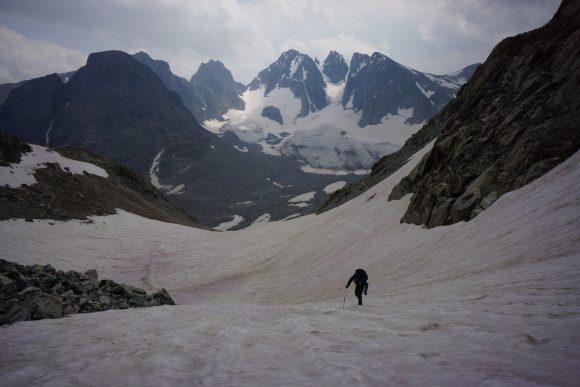
Next we began the climb up West Sentinel Pass. The best route appeared to be a high one in the snow above a bowl. We began the traverse along a steep snow slope, kicking in steps as we went. The closer we got to the top of the pass, the more steep it became. In an instant, Jay had slipped and slid 150′ down the snow into the bowl. Fortunately, the slide was not a dangerous one with boulders or a cliff below. Moments later, I too slipped and fell down into the bowl. Poor Katie was left alone up there, and decided to glissade down herself. It’s a bit easier when it’s on purpose.
The three of us took a more direct route up the pass this time, no issues. At the top of West Sentinel Pass, we entered Gannett Glacier. This was the largest glacier we’ve been on yet, covering the entire upper basin we were standing in. Massive.
We worked our way across the glacier until we encountered some melt out. Going down straight down would just mean more water, and the map shows crevasses here. We decided to go up and around the melt out, and then back down. Still, this had us weaving in and out of crevasse territory. We encountered several crevasses, mostly smaller ones. Down in a gully below us, only an unintentional glissade away, we could hear the roar of water flowing under the snow.
After dropping in elevation, we reached the terminus of the glacier. This is quite an interesting place to be. Much of this ice is dirty ice, a mix with mud and debris. The ground below the terminus is freshly exposed for the first time in potentially thousands of years. I wanted to search for interesting rocks, if only I had more time. It started raining around this time, and we continued downhill in search of cover where we could take a break. The clouds had really moved in fast.
By the time we reached Gannett Creek, the rain had subsided and it was sunny again. No cover but we stopped here for our break.
We worked our way up Gannett Creek, which was more like a series of ponds and small lakes with an occasional stream in between. Beautiful color.
We continued uphill through a sea of rocks until we reached a snowfield above an icy pond. We thought about traversing the slopes above it, but the team was not up for it without an ice axe after this afternoon’s slip down West Sentinel Pass. Instead, we dropped down to the pond and found a narrow spot to hop boulders across. We followed the other side of the pond until we were clear of the pond, then continued the ascent up an unnamed pass NE of Bastion Peak.
From the top of the pass there was a good view of Bastion Peak behind us, and Grasshopper Glacier to the north. The closer we got to Grasshopper, the more prominent the terminus of the glacier was. A wall of ice at least 50′ tall marked the edge. And that’s where we need to go tomorrow!
We found a place to camp near the temrinus of Grasshopper Glacier. The ground was a fine sand/silt, a little wet and soft. It seemed this area was usually covered in snow and or ice, and only recently exposed. Not the ideal campsite, but a unique one for sure.
Miles – 12
Total Miles – 1769
Rain – 2″ snow, complete whiteout. Rain, hail
Sleep – Backcountry, tent
Animals – pronghorn sheep?, marmot
Monday August 6th – CDT Day 108
Hiking at 6am. Cold night, Frost inside tent.
Walked up to the edge of grasshopper glacier. The terminus of the glacier must be 60+ feet tall. Never seen anything like that up close. Hiked up the glacier to the snowpack, uphill for a while.
Huge snow fields. Just massive. Easy walking too!
Hiked up to the Continental Divide. Followed the ridge for a while, fairly easy walking.
Reached baker lake and iceberg lake. The latter was really cool. Another tall glacial terminus. Lots of icebergs too!
Next we Climbed uphill and followed the Divide for a while.
Reached a saddle a mile before downs mountain. On the map, We saw what looked like a route down to our end point the glacier trailhead. Skirted the mountainside along the least steep terrain the topo showed. This looked easier than the Ley alternate coming down from the summit of downs mountain.
We spent 5 hours working our way down a series of ledges and steep boulders on the mountainside that ended at a really steep snowfield. This appeared to be steeper than we could safely cross, but I went down for a closer look. I attempted to take the first step off the boulders and onto the snow, but the angle was so steep that step kicking may not cut it. Right then, Katie and Hopeful said they weren’t going to follow me even if I go for it, due to the danger of it. I stopped and assessed the situation and they were right. The runoff below is boulders or a cliff. Without ice axes, it would just be stupid. Reluctantly, we turned around and headed back uphill to find another way.
Back at the saddle we started from, we headed up the ridge to downs mountain. We weren’t going to be able to drop down into the valley we saw this earlier from here though. Instead, we’ll have to continue many miles north and take a completely different route. Awesome views from the climb up Downs mountain though. Lots of boulders, hard work and sometimes sketchy. We were already rationing food for the last several days, and nearly out. We planned on getting to the trailhead tonight, but that’s not gonna happen now.
Tired and hungry, we worked our way around the west side of downs mountain instead of doing the climbing up it. Lots of boulders either way. Mentally exhausting. Saw some big horn sheep on the ridge above us, that was cool. Basically right on top of Downs Mountain.
At the saddle after Downs, we set foot on Continental glacier. It’s all snowpack up here. Absolutely enormous!
Hiked to 8pm. We descended the glacier instead of staying high above it on a ridge to find camp. Cleared rocks in a debris field for campsites. Dinner was 1 granola Bar. Can’t wait for town tomorrow, I hope we finally make it.
Miles – 15
Total Miles – 1784
Rain – no
Sleep – Backcountry, tent
Animals – big horn sheep
Tuesday August 7th – CDT Day 109
Another cold night sleeping in a debris field next to a glacier. Woke at 6, didn’t start hiking until almost 8am.
Today is our 10th day in the winds. We ate the last of our food for breakfast, which was basically starvation rations to begin with. We only planned on 7 days of food.
Walked over some boulders and back down to Continental glacier. Hiked on the glacier since it was much easier travel than rocks and boulders.
Walked up shale mountain next. Fairly easy walking, for the winds anyways.
Crossed a large snow field with a collapsed section where a stream runs underneath. Some crevasses as well.
Made it to the top of the pass that leads down to the ross lakes area. Really steep. Took a break at the top, couldn’t see much of a way down. For the record, I don’t think this is really a pass at all. Just a possible route down for those willing.
Found a ridge to follow down. Walked down a snowy slope to a patch of boulders. Another snow slope below the boulders, but this one was steep. Hopeful went first, no micro spikes, and slipped. He slid about 40 feet and crashed into a large Boulder. He turned at the last moment and his backpack took the brunt of the impact, but still hit his ankle. Fortunately he was alright.
Although the slide down was scary, it was really the only good looking way to continue downhill. I kicked some super deep steps with my spikes on and made it down safely. Katie went last and also made it safely.
Down on the valley floor, we filtered water from a steam. Just downhill, I saw 2 mountain lions standing in some large boulders. Side profile, tail curled up in the air. Big cats. They saw and heard us, and ran off. These were the first mountain lions I’d ever seen.
Next we went through a section of blown down trees in thick brush. Kinda where the mountain lions were. I tripped a few times and cut my hand. Pain in the ass. Would be nice to have some calories in my stomach.
Climbed over one last hill before mostly heading downhill. Awesome view of Ross lakes from here.
Picked up a trail at the bottom of the hill. You don’t know how good it felt to reach this trail! Now it’s time to haul ass to the trailhead. We were just empty shells now, running on a couple hundred calories and less than 2 liters of water all day. Hopeful hiked the day on 12 M&Ms. Running serious deficits that cannot be sustained.
Reached the trailhead around 6pm and luckily ran into a guy named Stephen. He was headed back to Dubois and so he had no problem giving us a lift. He also had a couple of ice cold beers for us, which tasted amazing! Keystone Light never tasted so good.
We ate at the noon Rock pizza place in Dubois with our new friend Stephen. Pizza and wings really hit the spot! Got a room at the black bear inn which was very hiker friendly. I think we all went to bed with an enormous sense of satisfaction having just completed the greatest adventure of our lives. I know I did.
Miles – 17
Total Miles – 1801
Rain – no
Sleep – hotel
Animals – 2 mountain lions, marmots
Wednesday August 8th – CDT Day 110 (zero day)
Slept in today which felt amazing! Ate breakfast and got started on town chores.
Picked up packages at the longhorn ranch, which we intended on staying at. However, the allure of a hotel was much too great. The ranch was kind enough to give us the packages at no charge, even though I offered to pay a reasonable fee for the service.
Did laundry, ate at the cowboy Cafe (2 entrées), and backed up photos and GoPro videos.
Thursday August 9th – CDT Day 111 (zero day)
Hurried to pack up and get ready to hike. However, it was obvious I had too much to do today, and we could all use a little more rest. So the decision was made to stay another day. This gave me all the time I needed to check off items on my to-do list, like sending in a couple pairs of Darn Tough socks for warranty, etc.
The motel we were staying at was the Black Bear Inn. Super hiker friendly. They had a river flowing through the property and there was a sweet patio setup down by the water… BBQ grills, tables, hammocks, christmas lights. Bumped into a few other hikers today in town and invited them over to grill out with us and drink some beers. We made grilled cheese sandwhiches and italian sausages. So naturally, we combined them… yum!
Back on trail tomorrow.
Sawtooth Wilderness, ID High Route – 8 Day Solo Hike Aug 2017
Sawtooth Wilderness High Route – 8 Day Solo Hike August 2017
View All Sawtooth Wilderness Photos | Watch the Sawtooth Wilderness Hike Video On Youtube
- Park Administration – National Forest Service
- Fees & Permits – No fees to access the Sawtooth Wilderness. You need a permit which is FREE. Permits are available via self-registration at the trailheads.
- Trailhead – Tin Cup Trailhead at Pettit Lake
- Length Of Time Hiked – 8 Days, 7 NIghts
- Miles Hiked – 67
- Route Difficulty – On marked trails, 6. Off trail sections, 9
- Fires Allowed – Yes, on a fire pan or fire blanket. Campfires are not allowed: Off-trail from July 1st through Labor Day. In the following drainages: Alice/Twin Lakes, Toxaway/Farley Lakes, Goat Creek (tributary of the South Fork of the Payette River), or Alpine Creek. Within 200 yards of Sawtooth Lake, Goat Lake and Alpine Lake near Iron Creek, Alpine and Saddleback Lakes in the Redfish drainage, and Scenic Lakes.
- Scenic Beauty – 9
- Solitude – 4 on Trail, 9 Off Trail
Sawtooth Wilderness Pre-Hike Planning Notes
Actually, the route I set out to hike was much longer, closer to 90 miles and over 25k feet of elevation gain. Averaging 8517′ over 89 miles, I called it “The Ultimate Sawtooths High Route”. Over 50 miles of the 89 mile route was off trail. A route like this would have a lot higher chance for successful completion if one had firsthand knowledge of what to expect in key sections. I didn’t have that luxury though, this will be my first visit to the Sawtooths, and first to the sate of Idaho. I will be sharing more info on the Ultimate Sawtooths High Route later on.
My goal with the route was to to stay as high as possible, while hitting as many of the places I could that were on my “must see” list. As far as planning a hike goes in the Sawtooths, you’ll find information from scattered sources online but there is no dedicated forum or “go-to” resource for the Sawtooths. I gathered what info I could about my route between trip reports and pictures, google earth, and studying the topo maps to create the route.
Sawtooth Wilderness Weather Forecasts
For weather in the Sawtooth Wilderness, I was using mountain-forecast.com for Mount Cramer:
https://www.mountain-forecast.com/peaks/Mount-Cramer/forecasts/2500
Sawtooth Wilderness Backpacking Maps & Route Information
Here’s my caltopo map I used to plan my route:
Download GPX file of this hike
Day 1 – Friday August 18th, 2017
Miles Hiked – 6.35
Elevation Gain – 2090′
Route Hiked – Pettit Lake to Alice Lake
The road to Pettit Lake from ID-75 was well graded and in great shape for a dirt road. I was driving a Chevy Cruze, and wouldn’t hesitate to take the smallest car. High clearance not need whatsoever. I arrived at the Tin Cup Trailhead (located at Pettit Lake) around 6pm, and man was it packed. I was able to find a spot, but there were’t many left if any at all. I changed clothes and did my final packing, and was on the trail at 6:30pm.
My destination tonight is Alice Lake, hopefully. I have 2.5 hours of daylight max to work with, better get moving. I quickly passed several groups of hikers, walked past the lake and hit the Wilderness Boundary sign. Here is where you self register for your permit.
The trail is mostly forested for the first few miles. Eventually, it emerges into a couple of open areas where boulders and talus have spilled down the slopes above. Hiking is still easy through these sections because this is such a well traveled trail, and in great shape. Once the first set of switchbacks are encountered, roughly half the way there to Alice, you start to get some nice elevated views. The Sun was already going down fast at this point.
The hike to Alice Lake was pretty nice for a day 1 hike. Normally, the trail taking you to the high country is in a low valley, long and rather uneventful. I would say the trail to Alice Lake is much more interesting, and if nothing else, shorter than many of the approach hikes I’m used to.
Right before I reached Alice Lake is a couple of small ponds, with great views and lots of people already camped there. Farther up the trail, at Alice Lake proper, I was again out of luck finding a campsite in a prime location such as the outlet. With the Sun fading quickly I hurried on farther along the lake. The trail starts to climb above the lake offering no viable campsites.
Towards the center of the lake, at a point where the trail had veered farther from the water, I found a place to hang my hammock. Not the most scenic spot, but who cares, it was already time to bust out the headlamp. Nothin’ to see here tonight. No need to use the tarp over my hammock, skies are looking clear and will remain so for the next couple of days according to the weather forecast.
I arrived at camp around 9pm, and after setting up headed to bed at 10. I’ve got a long week ahead of me!
Eagles Nest Wilderness (Gore Mountains), CO – 4 Day, 25 Mile Hike July 2017
Eagles Nest Wilderness, CO – Gore Mountains 4 Day Backpacking Trip July 2017
View All Eagles Nest Wilderness Photos | Watch the Eagles Nest Wilderness Hike Video On Youtube
- Park Administration – US Forest Service – White River National Forest
- Fees & Permits – No fees to access the Eagles Nest Wilderness. Register at trailhead (although I didn’t see where!)
- Trailhead – Gore Creek Trailhead
- Length Of Time Hiked – 4 days, 3 nights
- Miles Hiked – 25
- Route Difficulty – 7.5
- Fires Allowed – Yes
- Scenic Beauty – 9
- Solitude – 7, less within 4-5 miles of trailhead
Eagles Nest Wilderness Pre-Hike Planning Notes
Gore Mountains Weather Forecast
– https://www.mountain-forecast.com/peaks/Buffalo-Mountain/forecasts/3894
Gore Mountains Road & Trail Condition Reports
– https://www.fs.usda.gov/Internet/FSE_DOCUMENTS/fseprd542981.pdf
The Eagles Nest Wilderness is a 133,496 acre tract of land located within the White River National Forest. The Gore Mountains are the backbone of this wilderness area. It’s right off I-70, giving you the impression that it’s going to be a popular, well known hiking destination, but it’s not. Apparently, this area doesn’t get much use in comparison to other Colorado backpacking hotspots. One reason for this is the fact that there are no 14ers in the Gore Mountains. Don’t let the lack of notoriety fool you, as the Gore Mountains are definitely a hidden gem.
The first thing you need to realize about hiking the Gore Mountains is that it’s a rugged place with a lot of steep terrain. Because of this, many of the valleys are “dead ends” for the average hiker, and some are completely unpassable by all except the most skilled climbers. Stringing together a long hiking route that stays high is pretty difficult here. To make long loops, you either have to be OK with spending a lot of time in the lower valleys or be a really good climber.
Access to the Eagles Nest Wilderness is said to be easier on the west side near Vail. See this map for trailhead locations in the Eagles Nest Wilderness. I parked at the Gore Creek trailhead, 2.3 miles east of Exit #180 off I-70 on Bighorn Road. This road to this trailhead is completely paved, so you can access it in any vehicle. Watch out for all the bikers on the road, there’s a tons of ’em here. Coloradans are probably used to seeing this many cyclists, but here in southeast Michigan the only people riding bicycles on the road are doing so because they have a DUI! The Gore Creek trailhead was pretty packed but many of them were bikers, not hikers.
Nearby towns of Vail, Silverthorne and Frisco should have everything you need for last minute stops. Also note that you can get a shower after your hike for $5 at the Silverthorne Rec Center if needed. The address for the Silverthorne Rec Center is 430 Rainbow Dr, Silverthorne, CO 80498.
Eagles Nest Wilderness Backpacking Maps
[sgpx gpx=”/wp-content/uploads/gpx/EaglesNestWilderenssJuly2017.gpx”]Download GPX file of this hike
Here’s my caltopo map of the route I hiked:
Day 1 – Saturday July 8th, 2017
Miles Hiked – 6.54
Elevation Gain – 3058′
Route Hiked – Gore Creek Trailhead to Gore Lake
I started my hike at the Gore Creek trailhead (8688′ elevation) around 10:15 am, just in time for a few clouds to start brewing. The trail immediately begins to climb after leaving the trailhead. The trail itself is pretty well maintained here. There’s a sign marking the entry to the Eagles Nest Wilderness after about 1 mile. Once you pass the sign, the trail goes over the top of a small hill where you lose sight of I-70. The sound from the road is also gone, and replaced with that of Gore Creek. The trail winds through a few patches of aspens before the evergreens become the dominate tree with increased elevation.
The crowds of people started to thin out about two miles from the trailhead. Most of the people on the trail were older folks, and seemed to be locals coming out to get a few miles in for exercise. I stopped along a slow bend in Gore Creek after an hour to eat a little food. I didn’t see any fish, but it looked like there would be potential if one were to walk the bank looking for deeper holes.
There were few sweeping views of the valley, and the trail only occasionally swings alongside Gore Creek. The trail maintains a pretty manageable incline much of the way to the intersection with Gore Lake trail, with occasional steeper bursts. I passed a guy who said he’d just seen a large bear at the intersection, which I arrived at about 10 minutes later. No bear, fine with me.
At the intersection of Gore Creek trail & Gore Lake trail, the elevation is 10,180′. AT this point, the elevation gain is roughly 1800′ (with the ups and downs of the trail) over 4.15 miles. Now on the Gore Creek trail, I’ll climb 600’+ in about a half mile. There’s a little view of the valley below after gaining a little elevation. The trail then overlooks a creek, although don’t believe it’s the main creek flowing out of Gore Lake. I saw my first patch of snow around 10,700′.
At the top of the 600′ push I was rewarded with a nice meadow. It was flat, open and green, the first of the hike. It sprinkled a little now, but not heavy enough to be a bother. The views were definitely improving now. In the meadow, jagged peaks and snow capped mountain sides loom in the distance. There were some small patches of colorful flowers here and there, still a ways off from peak bloom though.
After passing through the meadow, the trail then climbs another 500′ in .6 mile along the final stretch to Gore Lake. I enjoyed the final approach to the lake, where your view of a nearby peak is hidden and then revealed as you crest the top of the final slope. A somewhat “dramatic” way to arrive at such a beautiful lake!
10 Day Sierra Loop Hike – Kings Canyon NP & John Muir Wilderness – Aug 2016
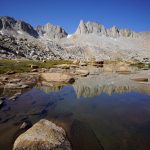
Kings Canyon National Park & John Muir Wilderness 10 Day Loop Hike Starting From Florence Lake
All Photos From This hike | Watch the HD video of my Sierra hike on Youtube
- Location – Sierra-Nevada Mountains, CA
- Park Administration – John Muir Wilderness, Kings Canyon National Park & Inyo National Forest
- Fees & Permits – $5 for a wilderness permit, required for overnight camping
- Travel Logistics – Flew into Fresno, rented a Chevy Sonic for the drive to Florence Lake
- Trailhead – Florence Lake
- Length Of Time Hiked – 10 days, 9 nights
- Miles Hiked – 95
- Trail Type – Loop, 50/50 mix of on and off trail hiking
- Route Difficulty – 8
- Fires Allowed – Only below 10,000ft
- Bear Canister Required? – No, not along my route. See map of where bear canisters are required in the Sierras
- Scenic Beauty – 9
- Solitude – 6
Kings Canyon/John Muir Wilderness Loop Hike Maps & GPS Files
[sgpx gpx=”/wp-content/uploads/gpx/SierrasRouteHiked2016.gpx”]
Pre-Hike Travel Logistics
To access the Sierras, one typically enters on the east of west side. People have mentioned using the town of Bishop as access from the east, but I chose to fly into Fresno, rent a car, and drive in from the west.
There are few direct flights to Fresno, so from Detroit I had to stop in Dallas. The problem was, bad weather in the Dallas area when it was time to leave, lots of red on the radar. We sat on the tarmac in Detroit for an hour before taking off, then we got diverted to a small airport in rural Arkansas to wait on the tarmac there for another 2 hours. Apparently, the entire DFW airport had closed down for a while due to the storm. By the time I landed in Dallas, pretty much all the flights had been cancelled. Great, gotta call the car rental company and change my reservation, as well as try to cancel tonight’s hotel in Fresno.
Now the real “fun” began… dealing with American Airline’s customer service. Calling them is a 2+ hour wait, and they suggest to leave your name and number and be called back later. Meanwhile, I waited in an hour long line to talk to an AA agent at one of the gates. I was given another flight to Fresno tomorrow morning at 10:37am, the earliest they had. I’m still optimistic at this point, thinking I could still get to Fresno, rent the car, get last minute supplies, drive to Florence Lake and hike a few miles in without wasting a whole day.
Now I’m left with the task of finding somewhere to sleep. Since the cancellation is due to weather, American Airlines doesn’t offer any kind of compensation for the delays and you’re basically shit out of luck. All the hotels inside the airport are booked. Sleeping in the chairs was not working for me, and the armrests prevented you from laying down on them as well. They did bring out cots, but at a 1 to 20 person ratio. I didn’t get one. In fact, I spent 4 hours walking all the terminals looking for a decent place to sleep, and eventually found a yoga area that had a few yoga mats. I stacked a few of these up and at least had some cushion for the cement ground. All night people were coming into this little yoga area and I could hear them murmur “ah shit”, as they realized it was taken, just as I did for 4 hours prior.
In the morning, the plane was 5 minutes from boarding and all of the sudden there was a 20 minute delay. Every time I checked back, there was another small delay added. By this time, people were getting upset as there had been no announcement as to the reason. In order to get information, I had to wait in another 1 hour line to speak with someone. The American Airlines agents kept giving me different information and the delays kept getting longer. Finally after a 3.5 hour delay, the plane boarded and I was on my way to Fresno. On the plane, my seat didn’t lean back and the charging plug underneath the seat didn’t work. The flight attendant said “old plane”. American Airlines, you gotta step up your game! Why do I even fly with you?
In Fresno, I got my rental car and headed to my hotel. I did the “name your price” thing with priceline, and got a room nearby. The room ended up being a smoking room, and there were no other rooms available. I had no idea that smoking rooms were on the table when I bid on a room. I had to sit in this ashtray of a room all night before the hike. Disgusting.
Day 1 – Sunday August 21st, 2016
Miles Hiked – 12.49
Elevation Gain – 1976′
Route – Florence Lake to Evolution Valley/Goddard Canyon Junction
Coming from Fresno this morning, I drove to the ranger station in Pranther to pick up my permit. I had called them yesterday morning to let them know that my flight was cancelled and that I could not make my intended start date, and to try and push that date back by one day. The rangers they have working there at that station are great. They accommodated my request and were very nice to deal with all round.
I took hwy 168 to Huntington Lake, where I took Kaiser Pass Rd the remainder of the way to Florence Lake. The road is fine all the way up to Kaiser Pass Rd. From Huntington Lake, it’s about 23 miles to Florence Lake along a one lane road. This road happens to a cliff on one side much of the way, along with blind curves and blind hills every couple hundred yards. Some sections where really rough and had lots of loose gravel. There were few areas to pull off and let opposing traffic through as the non-cliff side of the road was often also a rockface itself. This was a white knuckle drive to say the least. It will take at least 1 hour to drive from Huntington Lake to Florence Lake. But, it’s totally feasible for any small car. My Chevy Sonic rental made it just fine.
The trailhead parking at Florence Lake was much busier than I expected. I was lucky to find what appeared to be the last parking space. I had about 20 minutes before the 10:30am ferry leaves to take me from the northwest side of the lake to the southeast side. This saves about 4 miles of hiking from what I am told. I bought my ticket for one way across the lake, unsure of what I’ll be doing on the way back and what time I’ll be making it to the ferry. As of 2016, the ticket prices are $25 round trip and $13 one way. When picking up my backpack to walk over to the ferry, one of the straps holding the top compartment down broke off. Great, not how I want to start a hike.
The ferry across the lake was on a little boat that fit 8 people, 4 across two rows of benches. The captain of the boat was a skinny kid who looked about 25. He was wearing what looked like a 10 year old girl’s shirt with some home made hearts on it. Interesting thing for a guy to be wearing, but who am I to judge. There were two forest rangers on the boat with us, and they checked our permits during the ride. The boat ride across the lake took no more than 15 minutes or so. The boat lands at slab of rock with a floating dock. It’s a short uphill climb to get a lay of the land in front of you from here. I stopped to readjust my shoes and pack, and realized that I had forgotten my phone in the car. Bummer, no music this hike, but I’ll be fine without it.

South side of Florence Lake looking north. Not sure why this truck is here, but it was gone when I returned 10 days later.
I began hiking around 11:15am today. As always, the first mile is pretty tough. My pack is at it’s heaviest, 56 pounds including 4 liters of water, and I’m not yet acclimated to the elevation. There were a lot of small ups and downs in the beginning as well. Regardless, I was making good time and eager to get out of the rather unimpressive lowlands. There were likely some better views from the meadows, where Muir Ranch and Blaney Hot Springs are for example, but on the trail the views were minimal.
Within the first 2 hours or so, I developed a blister on my heel. Before the hike, I was looking to replace my Inov8 Roclite 315 trail runners, but was disappointed to learn that model was discontinued. I settled for the next closest thing, the Roclite 295. My 315s required no break in, and so besides trying the 295s on to confirm the fit, I did not really test these shoes out. Big mistake! Although I don’t think this was the problem causing the blisters, I also noticed the shoe had a coarser mesh allowing much more debris into the shoe. This trail was pretty sandy so far, and I was getting tons of it in my shoes. These are just not the kind of problems I want to be dealing with, let alone on day one.
The skies had clouded over now, with rain looking very possible later. I’ve been seeing a lot of people on the trail so far, but all going the opposite direction. The trail gets a little more scenic after passing Blaney Hot Springs and Muir Trail Ranch. There’s a steep trail heading up to Seldon Pass just east of Muir Trail Ranch, which I took on my return on day 10. About 1.3 miles east of here is the official JMT/PCT route up to Seldon Pass. These two routes merge together about 600ft up, so either way, you’re going to reach the same place.
The landscape opened up a bit and the super fine dirt and sand on the trail seemed to subside. This was more akin to my style of hiking. Sometime around 2pm, it started to rain. I put on my rain jacket and covered my pack, but it was pretty light and so I left the rain pants off. The rain was very light and intermittent for a couple of hours, and was not too big a deal.
I crossed the bridge over the Piute River and entered Kings Canyon National Park. From here, the canyon narrows and is a nice change of pace. There were few tress in this canyon and the trail was mostly rock now, much better!

When I made it to the point on the map labeled “Aspen Meadows”, I didn’t see any meadows. I did see a campsite, but it didn’t offer much of a view and I decided to keep moving. About a mile and a half further, there was another campsite. While there were multiple sites here, several were taken and I would be camping a little too close to others. I kept moving once again.
The next potential campsite location was at the junction of Evolution Valley and Goddard Canyon, just south of the point where Evolution Creek and the South Fork San Joaquin River intersect. I figured there’d be some people here, and sure enough, I was right. I crossed the bridge over the South Fork San Joaquin River and scouted the east side of the river. More people. I eventually found a spot, but it offered no view and no immediate access to water. This is it, even if I have to walk a little ways to get my water. I saw 2 deer near camp while searching for it.
I set up my tent and got started on water. For this trip I have a new water filtration system, a Platypus GravityWorks setup. The jist of it is, you scoop up your dirty water into this 4L bag, then carry it back to your campsite where you can hang it from a tree or set it on a rock. The bottom of the dirty water bag has a quick connect fitting, where you connect the a hose leading into the filter, which empties out another hose as a clean water via gravity. I can remove the bite valve on my 3L Platypus bladder in my backpack and with a connector fitting, connect the GravityWorks hose to the bladder. No need to remove the bladder anymore from my backpack when filling it, and never have to open it during a hike. Just keep the dirty water bag above the container used to store your clean water and let gravity work for you while you do other stuff. This thing filters fast too. I didn’t time it, but it was about 1L per minute. After filling the bladder, I can then fill my water bottle (32oz gatorade bottle). I keep extra water in the dirty bag by clamping the little shut-off valve closed on the hose below the filter.
After water, it was on to fixing the broken strap on my backpack’s top compartment. The strap is attached by being inserted into a hole in the corner of the top compartment, and then sewed in place. Since I had no needle and thread, I used super glue. I put some glue on both side of the strap, inserted it into the hole it came out of, and used my fingers to clamp it together for a while. Yes, I got super glue all over my fingers. It took a couple of days to wear it all off. The repair seemed to be working well after a few minutes, but I let it sit overnight.
Even though I could have had a fire tonight since I was still below 10,000ft, I didn’t. Instead, I went to bed shortly after sundown. My heels were pretty sore and I was really wondering how I’m going to make it another 9 days without doing too much more damage. Oh well, no choice!
Day 2 – Monday August 22nd, 2016
Miles Hiked – 10.46
Elevation Gain – 2649′
Route – Evolution Valley/Goddard Canyon Junction to McGee Lake
It rained a little bit last night around 3am, so my tent was wet this morning. I was going to be slow at packing up my stuff this morning anyways as it certainly takes a few days to get my routine polished. I put some moleskin over my blisters and covered them with Ace sports tape. I was on the trail by 8:30 this morning.
The skies were pretty clear at this morning and I had high hopes of good weather. The trail starts climbing up some switchbacks immediately after leaving camp, literally within 20ft or so of camp. Nothing like an 800ft climb to get the blood pumping in the morning!
Once near the top, the trail hugs the banks of Evolution Creek on and off as it tumbles over a few waterfalls. There are more people now, and there’s a sense of wonder among them. Hikers are moving slower and taking their time. And, many of them are older. I didn’t see so many people here under 40 it as I somewhat expected and planned, with school starting around this time.
There was a ford of Evolution Creek that required getting wet. Fortunately, the creek was very mellow here and barely knee deep at the max. I stopped on the other side for a snack and talked to a few nice people. Many of the hikers seem to be local Californians, and well familiar with the area. At least, the popular areas. I mentioned my plans to visit Ionian Basin, but many had not heard of it. That tells me I’m going to the right place!
After the water crossing, the trail passes through a mix of forest and meadows. The meadows were pretty nice, and would make a great place to camp. There’s a ranger station in McClure Meadow, right off the trail. I didn’t stop in to see if it was manned, but it looked like it could have been in operation still. I saw some pack llamas on the trail in this section as well.
Eventually, The Hermit came into view. This marks the entrance to McGee Canyon. When I reached the Evolution Creek and McGee Creek, I did not see any time of trail leading into the canyon. I was pretty surprised as this is supposed to be a very popular area (Evolution, not McGee). I just assumed the nearby canyons would all have some sort of use trail at the very least.
I headed off-trail for the first time this trip towards McGee Canyon. After hiking through a small field I was at Evolution Creek at what appeared to be the perfect crossing, despite the lack of trails or tracks here. A tree spanned the width of the creek allowing for a quick and easy crossing. On the south side of Evolution Creek now, the land starts heading uphill into McGee Canyon. I headed towards McGee Creek so I’d have something to follow and started the climb up.
Shortly after my ascent into McGee Canyon, around 12:15pm, it started to rain. A sprinkle at first, then it started picking up. I stopped to don my rain gear, and thought I might wait a few minutes under a couple of pine trees to see if it cleared up. It didn’t. Instead, the storm intensified with a display of hail, thunder and lightning. I decided to abandon my pine trees and head for more solid cover. I found a large boulder with an overhang that allowed me to stand underneath without getting wet. I ended up waiting around until around 2pm until the rain let up. I was getting pretty cold just sitting around, and was glad to get moving.
I continued uphill with grey, dreary skies above. There was no trail still, at least on the east side of McGee Creek. I crossed it for the first time around 10,250ft, but didn’t see a trail here either. The climb up to this was only 450+ feet, but felt like much more. My feet were soaked at this point.
Out of the forest and into the meadows now, the views were more to my liking. I followed the creek upstream through a soggy meadow, with increasingly impressive mountains revealing themselves as I drew closer. Patches of snow remain on Mt. McGee. It was very nice to look at, but the going was a little slow through this area as the best path through here seemed to cross the creek often.
At the south end of the meadow where it starts to climb uphill, I stayed west of the creek(s). There is still no trail visible though here that I’ve seen. After another 450+ft climb, I reached the first lake in the chain. Great views, more scenic than I was anticipating for this area.
After leaving the first lake behind, I noticed a faint trail around the lake, which I followed. I’m fairly close to camp now and done with the hardest part of the day, so it was time to slow down a bit and take some pictures around these lakes. I just wish the sun was out, the grey skies weren’t helping my cause.
I eventually found a place to camp on the little peninsula between upper and lower McGee Lakes. After doing all my camp shores I headed down to the lake to do some fishing. I had seen some small brook trout in here on my way to camp. The sun was out now too, and I was feeling pretty good. I had a couple of bites on my mepps #2. but unfortunately I didn’t catch anything. Oh well, I wasn’t expecting much out of this lake fishing wise. The better-than-expected views and lack of people her more than make up for it. I haven’t seen anyone since leaving Evolution Valley.
The blisters on my heels didn’t get any worse today, and were much less of a problem with the moleskin and sports tape. Without the tape, the moleskin always falls off after a couple of hours as my feet sweat and the moleskin gets rubbed out of place. This is the first time I’ve used it in conjunction with that sports tape and so far, it’s working.
Not much of an appetite yet, even though I was hungry earlier. I ate what I could and headed to bed at sunset.
Day 3 – Tuesday August 23rd, 2016
Miles Hiked – 4.32
Elevation Gain – 1323′
Route – McGee Lake to Lake 11,196
It was an amazingly calm night last night with zero wind. I expected it to be windy out here on this peninsula. But the lack of wind came with a cost… lots of condensation in my tent this morning. It was a nice clear morning, and I took some extra time to let my tent dry out a little.
Today I plan to hike to Ionian Basin. The Davis Lakes side of Pass 11,720 didn’t look like a sane option, so I planned to work my way up towards Davis Lakes Pass from McGee Lakes. It looks a lot easier than Pass 11,720 itself. Then I will hike around Davis Lakes, through Goddard Basin, down to Martha Lake, over Goddard Col and over to Scylla. At least, that’s the plan.
After leaving camp there were some excellent views, with the mountains reflecting in the blue water. Ah, I love the high country! I took my time around the last bit of Upper McGee lake.
When it was time to confront the first uphill battle of the day, it didn’t look so bad at all. A grassy hill with some occasional boulders. Of course, the higher I climbed the less grass there was, and eventually it was almost all boulders.
It was about 400ft up to the next small lake, and another 100ft to yet another lake. The higher lake, at 11,276ft, had a spectacular reflection on it that showcased the puffy while clouds above in contrast to the turquoise blue water. Really beautiful, and basically a “nothing” on the map.
The next section of my route takes me up to the small lake just north of point 12,262. It’s a climb of almost 500ft over boulders and large sections of granite slabs. More excellent views along the way up. I reached the top of the pass, just northeast of point 12,262, at 10:45am. From here, my view was mainly to the east/southeast towards Wanda Lake.
After a 30 minute break I moved on. From here, I had to work my way around some boulders that form a ridgeline running south/southeast from point 12,262. The pass I’m on now isn’t named, but the ridgeline I took drops me down to Davis Lake Pass. This looked like the best way over to Davis Lake from McGee Lake. On the HST map, viewing the cross country passes in the Sierras, there is a pass that more directly connects McGee Lake and Davis Lake directly called Pass 11,720. It’s labeled a class 2 route, but from the looks of the counter lines, I was extremely skeptical.
Along the ridgeline is a series of ups and downs. I didn’t follow the ridgeline far enough south to the low point at Davis Lake Pass, where the route down to Lake 11,1196 is the most gentle. Instead I started heading down sooner, eager to get out of this boulder field. The route I chose down was steep and time consuming. There were many loose boulders and treacherous chutes to traverse. I should have just continued south on the ridge a little farther! The sky was also clouding up fast, I’ll have to keep an eye on that.
Along the way down, I found a balloon that had the following written on it; “Go Dodgers”, “RIP Eddie” and “Miss you bud”, along with a date of 9-23-1993. Wow, these balloons sure do last a long time. So, friend of Eddie, next time you release a balloon into the sky, remember that it might end up somewhere like this.
The route down was long and tiring. To be honest, I felt “off” today. The scenery was great, but I was just having a hard time moving. Sure I was tired, but it was more of a mental thing. I guess I just didn’t feel like kicking my own ass today on this tough terrain. I still had a long way to go to my planned campsite, and it was already going on 1pm. It was around this time when it began to sprinkle. Now I really wanted to get a move on, but of course, there’s no shelter up here.
Now it was time to make some decisions. Strong storms look imminent now, so I’ll be very exposed with little or no shelter all day if I continue. I’ve heard Ionian Basin gets a lot of lightning and is a frightening place to be during a storm. If I do continue, it’s probably going to be pretty slow going, and I might not make it to Scylla tonight. I decided my best bet is to set up my tent for now and see if the storm passes quickly.
I hurried around Lake 11,196 looking for a place to set up my tent, and found a spot on the southwest side. There were a couple of other people camping on the southeast side of the lake as well. After getting my tent up, it rained on and off all afternoon. During this time I tried to do some repairs to my gear. One of the straps broke on my water shoes, so I repaired it with 550 cord. I added some carabiners to the bottom of my backpack on the outside so I had some way to keep my rain fly in place and taught.
Later in the afternoon I took shelter inside the tent for about an hour as heavy rain/hail, thunder and lightning pounded the area. Hail was piling up around the tent after it slid off, and it was starting to accumulate. I had a feeling it was going to storm heavily (as the weather indicated a few days ago), and I think I made the right call by staying put.
At this point I knew I was done hiking for the day. My new plan is to skip Ionian Basin. Instead, tomorrow I’ll go over the same pass I went over today, Davis Lkaes Pass, but will be taking a better route this time. Once at the top, instead of following that ridgeline, I’ll just go right over and drop down to Wanda Lake where I’ll pick up the PCT/JMT. I’ll follow that through Evolution Basin and over to Darwin Bench, where I planned to camp on night 5 anyways. I’ll be there a day early, which gives me wiggle room with the rest of my hike. I’m liking this plan, as I typically create a route and almost never deviate from it. I was disappointed in myself for not completing the route I set out to do, but at the same time, happy that I have some extra time to play with.
After the rain let up, the sky still didn’t clear. Storms loomed in the distance and the weather was still looking rather questionable. It stayed this way until I went to bed. The sunset was nice, with some reds illuminating the storm clouds. I hope this weather moves out by tomorrow.
Day 4- Wednesday August 24th, 2016
Miles Hiked – 7.7
Elevation Gain – 1372′
Route – Lake 11,196 to Darwin Bench
The storm seemed to vanish shortly after bed last night. It was very clam again, and there was a lot of condensation inside my tent again this morning. The sky was clear this morning, and I had a good feeling about today.
After breaking camp I headed around Lake 11,196 towards Davis Lakes Pass. I passed by the other group of hikers at camp who were set up on the southeast side of the lake. The terrain immediately before the route goes uphill is basically a flood plain, with various streams running through it. Combined with the rain yesterday, everything through here was drenched. Gotta love wet feet first thing in the morning.
The route up was much easier here than it was going down yesterday. Not only is the terrain less steep, but the route is a little shorter and doesn’t climb as high. There were still a lot of large boulders to contend with and some hard work, but I made great time going up nonetheless. There was another guy at the top when I arrived, although he was a little farther the ridgeline I traversed yesterday.
I stopped to eat some snacks real quick and kept moving. The path down to Wanda Lake was much easier than the Davis Lake side. The PCT/JMT runs along the east side of Wanda Lake, so I made my way towards the northern end of the lake and picked up the trail near the outlet.
Next, I headed north through Evolution Basin. I started to see a lot of people now. Almost every person I saw today was hiking south. Good views and easy trail to follow. Mostly downhill all the way to Evolution Lake too. I stopped several times to eat along the trail this morning, as I was in no rush today.
I passed by Sapphire Lake which was nice. The trail runs high above the lake though, at least until the northern end of the lake. Here, it drops down to lake level as it rounds the final bend before reaching Evolution Lake.
The first views of Evolution Lake from the south end are nice. I stopped here for a snack. I was actually eating today, at least in small doses. The jagged peaks of Mt. Mendel and Mt. Darwin to the east were impressive.
The middle section of Evolution Lake nice too, but less impressive than the southern side. There weren’t many established campsites in this area. I passed by a couple of rangers, I believe, on horseback with a team of horses in tow, carrying gear. Looked like they were going to do some trail maintenance. Well, my feet could use some maintenance. The blister on my right heel seemed to be getting worse. I’ll deal with that later when I get to camp.
The northern end of Evolution Lake is where it’s at. There were more people here hanging out around the lake as this appeared to be the best view of all. I’m glad I got to see the lake since I didn’t get to see Ionian Basin. This would definitely be the spot to camp, if you can stand camping near a ton of other people. Me, I’m headed up to Darwin Bench today.
After passing the lake, I knew I’d have to start climbing uphill soon. I wasn’t sure what to expect for an existing trail leading up to Darwin Bench, but I figured there had to be something. I was right. At the last moment before the trail starts heading down some switchbacks, there’s a very obvious trail junction with a path leading up to Darwin Bench. It quickly peters out though, and you’re left with a very faint, but super manageable path uphill. There’s probably a couple of different paths up at this point, and it really doesn’t matter which way you take as long as you follow the creek uphill. There’s an occasional cairn marking the way through this section.
Beautiful scenery near the top of the hike up Darwin Bench and all throughout this area. I didn’t see anyone up here once I reached the lower lake, so I decided to set up camp on the east side. There’s a nice spot with some decent cover and good views. It was only about 1:15pm now, so I still had a lot of time left to enjoy the day.
When I went down to the lake to get water, I noticed the bottom had a lot of algae. The lake was shallow around the shoreline here on east side of the lake. I was careful to not stir any up as I filled my bag. On the way back to my campsite, I noticed a backpack hanging over the edge of a rockface by a trekking pole. Huh, I wonder how long that’s been there.
After getting water and doing some other camp chores, I headed off to explore the lake a little. First things first, though. I need a bath! I passed a couple of small waterfall pools along the way up the creek that looked enticing, and that’s where I headed.
At the waterfall pool, a scared away a bunch of small trout as I entered the water. It was cold, but nice to clean off. Definitely one of the most scenic places I’ve ever bathed. No soap in these creeks, of course, just rinsing off. It’s amazing how much better that makes me feel out here. The cold water really gets your blood pumping, even long after getting out of the water.
After cleaning up, I headed up to the lake outlet where I saw some small trout earlier. These guys are really alert though, and they know you’re coming from a mile away. I had a bite, but didn’t catch anything. They mostly ignored everything I threw at them, which was just Mepps spinners and rooster tails. Oh, and a Crickhopper, which normally slays bass here in Michigan. But they ignored that too.
Defeated, I headed off to get some pictures of this beautiful area. There were a couple of small hills and high points near the southerly edge of the bench that I gravitated towards.
After exhausting my stay down by the lake I retreated to my campsite for the evening. Today was a really good day all around. I sat around camp all evening in awe of where I was. When the sun set, I followed suit.
Day 5 – Thursday August 25th, 2016
Miles Hiked – 7
Elevation Gain – 1650′
Route – Darwin Bench to Muriel Lake
I slept pretty poorly for the first few hours last night, but much better the second half. Once again, more condensation in my tent this morning and a very calm night. At least the weather is predictable here.
Today my plan is to go over Alpine Col and over to Tomahawk Lake, if I make it that far. While packing up my gear, I noticed 2 guys climbing up a steep rock chute right above my camp. They were just dots at this point, but I could see them up there and hear the rocks tumble down as they made their way up. I wonder if they were climbing Mt. Mendel?
After leaving camp, the trail follows the lake briefly. There is a trail here around the lower lake on Darwin Bench, but north of the lake there’s a ton of streams that converge here and in this chaos, the trail is lost. I’d bet there’s one leading off into Darwin Canyon and up over Lamarck Col, but I did not see a trail for the rest of the day after this point along my route up and over Alpine Col.

Route up to Lake 11,540
After passing the area where all the streams converge, it was time to find a line up to lake 11,540. It’s a climb of about 250′ up some rocks slabs, choked with a little vegetation. I ended up following the creek flowing out of lake 11,540 up the hill. Near the top though, the path along the creek becomes narrow and was no longer the easiest route up. I skirted the hillside to the east and climbed over some rocks to reach the top and gain my first view of lake 11,540.
While I did not check out the north/west side of lake 11,540, the south/east side appeared to be the best path. However, along the northeast side of the lake I ran into a bit of a snag. The path along the shoreline abruptly stops due to a cliff butting up to the lake itself, with no way around it other than backtracking a bit and climbing up and over it. Without any other option, I reluctantly headed up the steep mountainside looking for a route around the cliff.
The climb around the cliff was not as easy as I’d hoped. It was steep and there was no obvious line around it. I was working my way along a narrow path along a cliff when that dropped down to a lower section, requiring me to remove my pack and lower it down. Then, without my bulky pack on, I was able to maneuver around this obstacle and keep going. Much of the talus was loose here due to the grade of the slope. At one point, I stepped on a rock that moved, causing my foot to slip and my leg then became wedged in between two rocks. I lost my balance and fell over, with my leg pinned between the rocks. This caused a large scrape on my leg, but it could have snapped my leg had I fallen the other way. Whew.
Eventually I made it around the cliff and back down to the lake. Looking back the way I came along the shoreline, it was only a couple hundred feet of cliff along the shore that I had to work my way around, but it took much, much longer than I thought it would. The depth of the lake next to this cliff only appeared to be a couple of feet deep at the max, but there was no avoiding getting in the water. Because of this I chose to go up and around the cliff. Looking back though, I would seriously consider just getting in the damn lake and walking along the cliff. Keep this in mind when moving through this area.
My route now passes in between lake 11,540 and lake 11,546. Good views through this stretch. It may have been possible to setup a one man tent here, but of course, I had more distance to cover today. Just a thought for someone passing through here.
Past the section in between the two lakes, my route then climbs about 400′ up to lake 11,910. This section featured some really large slabs of granite. Higher up, pools of melt water lay in the shadows with small pockets of snow alongside them.
About halfway through the eastern side of lake 11,910 there was a small sandy beach. The water was crystal clear and had a tropical look to it. Stunning, actually. But no time to stop and enjoy this, or those no-see-ums will have chewed my arms and legs down to the bone.
Almost the entire hike from the midway point around lake 11,910 on to lower Goethe Lake consisted of boulder hopping. These boulders were manageable along the lake, but as I’d find out later going over Alpine Col, this was nothing in comparison to the large boulders on the Goethe Lakes side. There were tons of no-see-ums in this stretch too, and they were relentless.
Now on the northern side of lake 11,910, it was finally time to start heading up Alpine Col. I had read some notes about going over this pass before heading out here. Those notes basically said to angle up above some small sections of grass before you’re directly underneath the pass. From there, you’ll see 3 rock faces with sections of talus in between them. Choose the one on the right. From there, the path to the top is relatively straightforward. Those notes seemed to be spot on for me.
On the top of Alpine Col, I rested for a while and took this opportunity to refuel. Awesome views from the top in both directions. From Alpine Col, you can’t help but feel isolated and alone. There were no use trails here and almost no signs of human intervention.
Now it’s time to descend Alpine Col to Goethe Lakes. The path down was a nightmare. Giant boulders everywhere, and steep in several sections. These boulders ranged in size from a beach ball to a large SUV. Imagine the space in between a couple of SUV sized boulders piled up together. Negotiating these boulders required a lot of patience and care with every step. I normally have my camera hanging from my neck when I hike, but I had to put it away going down Alpine Col. I didn’t want it bouncing around and getting in the way, or falling and breaking it. As a result I got few pictures through here. Most of the ones I’m posting through this section are snapshots from my GoPro footage.
The top section was very steep and required some time to find a feasible line down. The best route appears to be one that angles left on the way down, as the right has even larger boulders. Dark clouds were building above the pass and it looked like it could potentially rain. The next section was not as steep as the route I just descended, but the boulders provided no relief in the difficulty of the route. Around the 12,000′ mark, there’s a steeper drop off of about 200′. If you go right, it looks even steeper and the boulders look larger. So naturally, I went left.
Now working my way west along the 12,000′ mark, I began to realize that this route is not very good either. It was more of the same, large boulders and steep slopes. At one point, the only way I could see to continue was to traverse this section of slick rock which happened to be sitting above a rather large drop off. Water was running down a section of rock a couple of feet wide, with algae on it making it very slippery. I didn’t dare walk across it standing up, but I did need to cross this area to keep going. By crab crawling on all fours I was able to cross this slick rock. That worked, but lead me to a steep rock chute shortly after. This was the only way down from where I was, and so I had no choice but to traverse it. Each step knocked rocks down the chute and caused me to slide down hill.
I continued west along my line around the 12,000′ mark for quite a while looking for a feasible route down. I started angling downhill and west, and ended up hiking over the first moraine shown on the map west of Alpine Col, farther than I wanted to go. After that I came to a another steep chute that was very loose. This one was even looser than the last one, and as a result the remaining rocks in the chute were smaller. This allowed me to turn sideways, dig in my heels and just do a controlled slide down. I got a lot of debris in my shoes from this, but it was the only way down. It appeared I was done with the worst of the descent from Alpine Col now, but definitely not done with boulder hopping just yet. I still had a ways to go to the lake, and a sea of boulders was strewn across my route as far as the eye could see.
Finally, I made it to upper Goethe Lake. I let out a loud victory cry, unable to hold back my enthusiasm for being off the pass. Even though I reached a small section of grass, the terrain moving forward appeared to be more of the same large boulders piled around the lake. I stopped and dropped my pack on one of the boulders near the lake and took a break. More of a mental break than a physical one, although I was dog tired too. Think about the mental strain that comes with needing to make sure every step is right for hours on end. That’s one thing you really can’t prepare for. It was really nice to be able to relax my mind for a couple of minutes here. Having just gone through the roughest section of my entire hike, I didn’t seem to mind the no-see-ums as much on this side of the lake as I did by lake 11,910.
I was glad to be done with the worst of it, but looking at the terrain ahead of me, it was clear that I was not out of the woods yet. The general consensus online was to take the west side of Goethe Lakes, as the east side has huge boulders. The east side was still a pain in the ass.
I guess there is no good way down Alpine Col on the Goethe Lakes side, from what I can tell. I think that many who have done Alpine Col and wrote about it online have done it in times when there was more snow, quite possibly making this route easier. Make no mistake, this route is NOT for the faint of heart. I’m not saying this route should be avoided altogether as it’s totally feasible with the right experience and mind set, but do not even think about doing this route if you have any qualms about boulder hopping for several hours on end without any breaks in the terrain. It sucks, but damn is it beautiful.
The boulders didn’t let up until I reached the lower Goethe Lake. Finally, I was walking on dirt and grass. From memory, I want to say I spent a solid 5 hours working my way through that nightmare of a boulder field that people call Alpine Col. However, looking back at upper Goethe Lake and the cirque behind it was breathtaking.
After passing lower Goethe Lake, the landscape really opened up and flatted out before reaching a rock outcrop above Muriel Lake. From here, there was a great view of Humphreys Basin and Muriel Lake to the north, and Goethe Lakes and the cirque with Goethe Glacier to the south. Scenery wise, this would have been an excellent place to camp. However, the dark clouds to the south still threatened rain. Being as exposed as it was, it was windy too. It was quite a walk back to the lower Goethe Lake from here as well, so it wasn’t ideal in terms of proximity to a water source. I kept moving downhill to Muriel Lake, bummed about not being able to stay at this otherwise beautiful place to camp.
On my way down to Muriel Lake, I saw 2 guys crest a ridge coming from Wahoo Lakes. They were headed towards Alpine Col, and so I asked the first guy if that was his plan. He said, “No, the guy I’m with is 84 years old, he’s not going over that. But he did 30 years ago!” I When I passed the 84 year old guy, I was shocked to see how good he looked. If I had to guess I would have said he was 60 years old. He barely had any wrinkles and had no physical impairments. I was tired and worn out from my hike today, but after seeing this guy out here I told myself to shut up and quit whining. I wanted to say to him, “You’re like the Jack LaLanne of hiking!” I’m sure he would have gotten the reference. Oh, and they both made comments about me going over Alpine Col in trail runners, basically saying I’m crazy doing so without the ankle support of boots.
The hike down to Muriel Lake was easy, with a solid trail to follow now. When I arrived at the lake I was a little surprised to see nobody camped here. That’s great news for me though, as I had the entire place to myself. I found a small flat area among some small trees and a few large boulders to set up my tent. From here, I had a pretty good view of Muriel Lake and Mt. Humphreys.
I didn’t eat much today. Not because I wasn’t hungry, but I was so involved in the route over Alpine Col. I mean, who wants to stop in the middle of terrain like that and eat? I just wanted to keep moving and get out of the boulder field before it started raining. But tonight, I was ready for dinner. I had a tortilla with pre-cooked bacon and cheddar cheese, as I did most nights. Simple and delicious, and last forever in my pack even in fairly mild temperatures.
After eating, getting water and doing all my camp chores, it was finally time to relax. There was some small brook trout in the lake but I didn’t bother to throw in my line. Instead, I hung out near camp enjoying the expansive view of Humphreys Basin. At this time of day the light wasn’t great over the basin, but Mt. Humphreys was perfectly illuminated. The view of Mt. Humphreys from Muriel Lake was pretty impressive. While walking around near camp, I spotted another backpack stashed in a little opening below a few boulders. It was an older model pack, and looked like it was full of gear. Why are so many people leaving their backpacks behind out here?
Day 6 – Friday August 26th, 2016
Miles Hiked – 9.31
Elevation Gain – 1226′
Route – Muriel Lake to Elba Lake
This was the first morning that I had no condensation in my tent. Finally, I could put it away dry. I heard some coyotes howling last night in the distance. My legs were a little sore for the first time this trip as well. Not surprising after what I went through yesterday.
The views into Humphreys Basin were not great as it appeared to be filled with a thick haze or smoke. It looked like forest fire smoke to be honest. Huh, hope this doesn’t get worse, and hope there isn’t a fire nearby. Either way, this doesn’t bode well for photography.

There were a couple of trails here in the Muriel Lake area, and I followed one towards Piute Pass. I could have just dropped downhill, cut across the valley west of Summit Lake and head uphill where I could intersect the trail, but I chose to stay on trail. While the terrain was open and grassy in the valley below, it also looked like much of it was wet and marshy. I figured I’d just stay on trail here even if it meant adding a little extra distance.
The trail to Piute Pass was well worn and easy. However, with the haze in the basin, I didn’t take many pictures.
From Piute Pass, I headed northwest into Humphreys Basin. The trail remains solid through this section. Humphreys Basin, which was a massive open area, was mostly grass and dirt with less rocks and boulders than my last few days, a welcome change. I made good time through this area. I started to see more people here too. I ran into a group of people along the trail and it was at this point that I realized I had gone a bit farther than I intended to. I was planning on leaving the trail somewhere south of Lower Desolation Lake, and head towards Tomahawk Lake. I had to backtrack a couple of minutes to avoid going up a steeper slope covered with thick vegetation.
Now back on track, my off trail journey for the day began. Fortunately, this was some of the easier off trail hiking I did on this trip. Huge open fields with little in the way of obstacles. Not necessarily the most spectacular views of the trip, but being alone in the middle of such a vast open area and surrounded by distant peaks like Mt. Humphreys certainly set a different mood. I was enjoying today’s hike, and just felt really good overall!
When I reached Tomahawk Lake, I had a pretty good view of it from the hill around 11,200′ to the south. I had planned on dropping down to the lake and walking along it’s western shore, but instead I chose to stay high above the lake and work my way around the slopes to the east. This saved me some ups and downs. Staying west of the long ridge southwest of Desolation lake near the 11,400′ mark, I made my way towards Mesa Lake.
I took the western shore around Mesa Lake. There was a nice section of sandy beach here along the shore, and the deep blue waters sparkled in the sunlight. Just the kind of place that looks perfect for swimming, until you remember just how cold the water is. I also saw some crap here along the shoreline that looked like it came from a coyote, only bigger. Mountain Lion? There was a lot of hair in it.
Past Mesa Lake, there was a decent trail to follow, at least for a little while. The trail faded as I made my way up the slopes leading to Carol Col, also called Puppet Pass. This section was not too difficult, and it was only a couple hundred feet up to the pass from here.
Up on the last shelf below Carol Col, the landscape consisted of smaller talus strewn about a somewhat soggy field. Carol Col, while not very distinct, can clearly be seen from here. The final approach was super easy.
The view from Carol Col is awesome. Clearly though, going down the Puppet Lake side is going to be much harder. For now, I stopped to eat and take pictures. My favorite views are typically from mountain peaks and passes, although peaks reflecting in a lake of turquoise blue water is right up there too. Enjoy this moment while I can!
When it was time to descend the pass towards Puppet Lake, I ended up taking the wrong path down twice. I didn’t make it too far before realizing this was probably not the right way. The path looked steep, too steep. I backtracked and kept looking. I found the best path down starts from the extreme northeast side of the pass, south of point 12,225′.
Coming down the pass was hardest near the top. The best route follows an obvious rockface down hill, but the rockface isn’t reached until you’ve descended 200′ or so. Also, when taking the path I took from the top, you must angle west a little in order to reach that rockface. Until then, there were some large boulders to negotiate along with some tricky sections, but nothing as bad as Alpine Col.
Once you’ve reached the rockface, it looks like you can take a high or low route. The high route hs you pretty much walking on top of the rockface, and this left me with some uncertainty about getting down from said rockface later on. Therefore I chose the low route, which basically follows the base of the rockface. This is what I recommend. This keeps you out of the worst of the boulders and gives you good landmark to work with.
After working my way past the rockface, the going became a littler easier. From here, it was more boulders to hop downhill. A couple of guys were heading up the pass now, and I stopped to chat with them. They had been fishing too and we exchanged info on our experiences so far. They had camped at Elba Lake, directly north of Puppet Lake, and said the fishing was good near the outlet. They also said there were some good campsites near the outlet. They had a dog with them, and I wasn’t sure how that dog would be able to make it up to the top of the pass considering some of the sections I had to go through.
Instead of just walking down to Puppet Lake directly from here, for some reason I worked my way around the slope east of the lake. This was a mistake as the entire hillside was more big boulders. I would not recommend this. I started dropping down towards the lake as soon as I could, but by this time I had already traversed the worst of it.
Once I got down to the shores of Puppet Lake, I started looking for potential campsites. I wasn’t sure where I wanted to camp exactly, but was considering here or Elba Lake, going on the recommendation of the guys I passed earlier. With no great campsites in sight near Puppet Lake, I kept moving. I’m sure there are plenty of campsites here but I just didn’t see anything that caught my eye. I was kinda bummed about passing by Puppet Lake since I heard the fishing was good here.
Past Puppet Lake, I found a clear trail heading downhill towards Elba Lake. Thankfully the trail was here, as this section was a lot steeper than I was expecting. It started to sprinkle a bit on my way down, but quickly tapered off.
At 10,900′, Elba Lake had more trees around it now than Puppet Lake did. I also found lots more people camped here. There were none at Puppet Lake, actually. I worked my way from the southern shore of Elba Lake east, and then around to the northern side of the lake. There were people camping in the areas the guys I had passed earlier mentioned, so I had to keep moving. There was a clear trail around both sides of the lake which made it easy to hike, but I wasn’t seeing a lot of good campsites near the water. There were a lot of places I could camp, but not a lot of places I wanted to camp. Finally, I just took a spot well off the trail and away from the lake. It was windy and still looking like rain, so I figured the trees here might provide the cover I need.
After setting up camp, I headed down to the lake to do some fishing. Again, no luck. For some reason these trout want nothing to do with my mepps spinners. In my past experiences fishing in alpine lakes, fish bite anything shiny. Hell, they’ll bite a damn hook by itself! Not this trip though. Good thing I didn’t bring all my stuff to clean and cook fish: stove, fuel, frying pan, spatula, scrubbing pad, zatarains fish fry breading, cooking oil, etc. I hike without a stove most of the time actually.
I didn’t really care for this campsite much compared to my others so far. There were much more scenic campsites along the lake, but the best ones had already been taken and I guess I just settled for this one. I didn’t have a great view of anything, there were a lot of people around, I wasn’t close to the water and the fishing was not good here, at least for me. If I could do it again, I would have looked harder for a good spot to camp by Puppet Lake. The skies had been threatening rain for much of the afternoon and evening as well, so tonight I pretty much just waited for darkness so I could go to bed. I looked like some serious rain was moving in, but it avoided my exact locale and I never got wet.
Day 7 – Saturday August 27th, 2016
Miles Hiked – 6.8
Elevation Gain – 1634′
Route – Elba Lake to Granite Park
I awoke to clear blue skies again this morning. The haze and smoke that were plaguing my long distance views yesterday didn’t seem to be a factor today. It ended up being a calm night with no rain, and no condensation this morning. Today, I planned to camp at one of the Royce Lakes, making a somewhat short day and giving myself time to explore and fish.
The trail form Elba Lake to Pine Creek pass was rather uninteresting. From Elba Lake’s outlet, the trail drops down roughly 280′ into the valley below. You’re below tree line now, although it’s still pretty open. Still, you can’t see much.
At around the 10,640′ mark, the trail starts climbing up again. The trail reaches a flat shelf around 11,000′, where the views start to improve.
After another 100′ or so, I was at the top of Pine Creek Pass. I stopped here to take some pictures, and then eat some food. Two other hikers came up Pine Creek Pass and they stopped to chat with me for a while. Martin & Maria were their names, and they had a base camp at French Lake. Nice people, great to talk to. Martin was a former mountain guide with experience all over the world. It turns out they were heading up to Royce Lakes too, and possibly beyond. They planned to return to their base camp later tonight. Martin had a map of the area that was maybe 1:100,000, so I showed him my map of the area that was 1:24,000, and let him take some pictures of it.
My route up to Royce Lakes was off trail from here. Fortunately, this part was pretty easy. There were few large rocks and boulders to deal with, as the terrain was generally just dirt and small rocks. Some sections of granite slabs too.
I hiked up the hillside until I reached a shelf with a small pond. The reflection of Royce and Miriam Peaks in the water was stunning. Such beauty for such a lackluster spot on the map. This is a perfect example of why I like to explore off trail!
Miriam Peak on the left, Royce Peak in the center. Royce Lake #3 center, #4 to the right.
After passing the unnamed lake, I could see Martin and Maria in the distance. Instead of going down to Royce Lake #2 (I believe the lowest lake is #1 and the highest is #5), I stayed high above the lake and just hiked towards Royce Lake #3. Somewhere near Royce Lake #3 I finally caught up to Martin. We stopped to chat again briefly before parting ways again.
I then hiked down to lake level when I got a chance. When I reached the lake, I found myself on the extreme north side. Great views of Miriam Peak from here.
Between Royce Lakes 3 & 4 would be a good place to camp. In fact, there’s a great spot closer to Royce Lake #4. It’s a flat, sandy area free of rocks and perfect for a tent, maybe two. However, it was early in the day and I couldn’t see myself spending the whole day right here, even though it was beautiful. The shoreline wasn’t great for fishing. It was really rocky in general, and didn’t seem to have good access to fish-able waters. To get to the deep water, you’d have to hike over some huge boulders.
I kept moving around Royce Lake #4. The first half of the lake was fairly easy to traverse, with small rocks along a flat shoreline. After the midway point or so, the boulders became larger and they were stacked more steeply. Not the kind of stuff I want to be dealing with all day if I was camping nearby.
At the northeast end of Royce Lake #4 lies Royce Pass. Here, I saw Martin & Maria again eating lunch in the only shade in the area. They mentioned trying for Italy Pass today. I had seen another possible campsite nearby, but this one looked less appealing than the last one I saw in terms of access to the lake. I was also considering checking out Royce Lake #5. With all the large boulders in the area now, I was thinking that I should probably just abandon that idea. I was now thinking of camping in Granite Park tonight instead of Royce Lakes, and considering my route options from here. I didn’t know about Royce Pass before I left as I didn’t have it marked on my map. Instead, I was considering an off trail route from Royce Lake #5 down into Granite Park. This looked roughly equal in terms of steepness on the map, this route would not lose as much elevation. It was tempting, but I decided to head downhill from what I now know to be Royce Pass, which sits between Treasure Peak and point 12,470′. This is also the way Martin chose moments earlier.
Before heading down the pass, I took some pictures. One peak stands out from the rest in the interesting geological area. Marked 12,245′ on the map, this peak is made up of a predominantly dark colored rock, but with veins of lighter colored rock zigzagging through it. Pretty unique looking. Actually, when I look back at the picture I took of this same peak from the Pine Creek Pass area, I can see that the light colored veins are a feature of the entire ridge line all the way up to Bear Creek Spire. I don’t ever remember seeing another mountain quire like this one.
Another interesting thing about Royce Pass is that it offered my first solid view of the eastern Sierras. I could see down into Owens Valley, somewhere around 4,000′ at the floor, from my position here at 11,750′. Mt. Whitney borders Owens Valley too, making it “one of the deepest in the US” according to Wikipedia. Then, what’s deeper?
Descending Royce Pass was easy. There was nothing technical about it, and no large boulders to traverse. I made good time going down.
Following the ridge line down from point 12,470′, there was a tiny pond around the 11,150′ mark. This looked like a viable route over the ridge line, and would save me from dropping down to about the 10,600′ mark. There were even some use trails now leading the way as I approached the pond. It turned out to be another off trail gem, and another one of my favorite photos from the trip. But then again, I have so many favorites!
Past the little pond, I dropped downhill a very short distance and met up with the main trail running through Granite Park. Everything about this area was beautiful. The farther I hiked, the more spectacular it became. I was really enjoying my hike today and definitely glad I made the decision to visit Granite Park instead of camping at Royce Lakes. Around this time, I saw Martin & Maria heading back towards their base camp. They didn’t make it to Italy Pass, but they seemed more than happy about just being in Granite Park.
I took my time hiking through this area, stopping anywhere I could to take pictures. I only hiked about 3/4 mile from the tiny pond earlier before finding a campsite I couldn’t pass up. From the trail, I could see a large flat sandy spot below, perched above a chain of small lakes. I headed down to check it out, and decided to make it home for the night. This was my favorite campsite of the trip.
After getting water and snacking, I headed down to the lake to wash up. It had been a few days now since I’ve got in the water completely, and so it was time to take the plunge once again. Damn it’s cold, but it makes you feel sooo good when you’re done. Not only do I feel cleaner, but it really gets your adrenaline flowing being in that icy water. I sat by the lake afterwards soaking up the sun and drying out. Just another surreal way to spend an afternoon.
I did try fishing the small lakes by camp, but once again, no luck. The fish looked especially small here anyway. While exploring the other side of the lake I was camped alongside, I noticed another couple and their dog near their tent. They were actually very close to my camp, but completely out of sight. I wonder if they saw me change out of my underwear earlier by the lake when I was washing? I really thought I was alone up here. Later, I noticed that another person had set up camp near the outlet of the lowest lake in the chain on this shelf as well.
Back at camp, it was time for dinner. Another tortilla filled with pre-cooked bacon and cheddar cheese. This was probably the best tasting one all week for some reason. I think my appetite was improving, which is always a problem for me on these long hikes. And as luck would have it, I realized that I had an extra bacon/chz wrap, so I ate two of them tonight. Bonus meal!
Today was one of the best days of my hike. Greta scenery, great weather, and a bad ass campsite. What more could I ask for? I went to bed happy tonight, and felt like I was startling to settle in to being out here. It definitely takes a couple of days to adjust physically and mentally.
Day 8 – Sunday August 28th, 2016
Miles Hiked – 7.69
Elevation Gain – 1782′
Route – Granite Park to Vee Lake
The Milky Way was very bright last night once again. I could see it often throughout this hike, something I never see at home due to light pollution. This morning was clear and calm again, with deep blue skies. Another great day to be in the mountains! Today, I’ll hike over Italy Pass, skirt the mountainside to Dancing Bear Pass and drop down into Bear Basin, where I’ll camp at Vee Lake.
I rejoined the trail after packing up camp and headed uphill towards Italy Pass. The trail ascends a series of shelves which contain several small lakes. The landscape continued to impress today, with spectacular reflections of the mountains in almost every pool of water. Jagged peaks dot the horizon in all directions. The hike was not difficult at all through this area either. The trail was well worn and easy to follow, and nothing was too steep.
Above the 11,600′ mark, the trail winds away from the lakes for the last time. I saw a couple of other solo hikers come down Italy Pass and pass by me. Below the final approach to the pass, there was a tiny little creek bed, with just a trickle of water coming down. It was grassy and had fewer rocks alongside it, and led the way to the top. Italy Pass was both beautiful and easy, a rare combination.
On top of Italy Pass, I took a short break. I love cresting the top of a pass and seeing a whole new world open up beneath me. I always found the top of mountain passes interesting. Often times, different rocks can be found up here than at lower elevations. Looking in one direction, the mountain looked as if humans had paved it with some large stones and then weathered over time. Looking towards Mount Julius Ceaser, you can see all of the rocks are aligned in the same direction, pointing towards the sky. Then I picked up a few pieces of trash some thoughtful hikers left behind up here. Come on, people.

Skirting the mountainside towards Dancing Bear Pass, above the long patch of snow on the left. Jumble Lake below
Heading down from Italy Pass wasn’t too bad. I originally planned on dropping down much farther towards Jumble Lake than I actually had to. I was surprised at how easy the route looked going from Italy Pass to Dancing Bear Pass. It looked much easier in person than it did on the map. Usually, the opposite is true.
This section didn’t have much in the way of giant boulders, which was nice. The rocks were smaller in size and there were a few patches of snow here and there. Great views as well. I even passed a campsite up here, a flat spot with no rocks just large enough for a one man tent. It also seemed like there was a use trail here, but it faded away often. It was not really needed though as the terrain was open enough and easy enough to not be a problem regardless.
Below Dancing Bear Pass there was a large patch of snow that remained. I stayed north of the snow, where the route looked easiest. The climb up the pass was short and simple.
Dancing Bear Pass is an interesting one. It’s a long, flat area in between two peaks. Most passes have a bunch of rocks piled up and generally are just more rugged. Towards the middle of the pass, it’s actually very sandy. Since the pass is so long on the top, you can’t really see much from the middle.
Exiting Dancing Bear Pass, I had my first view of Bear Basin. Seven Gables can been seen clearly in the distance. I stopped here to take a food break. While doing so, I heard some yelling in the distance. I scanned the horizon and saw a couple of guys above White Bear Lake. One of them was waving his arms. I waved back, and I think that was the purpose of the yelling… to say hello. Well, hello back, and glad you aren’t injured or something, because that’s what I was thinking at first. I watched them drop down towards White Bear Pass, and eventually they headed down the pass towards Lake Italy.
It was a short hike down Dancing Bear Pass to the knob above White Bear Lake, near the area the guys where yelling from earlier. I hugged the eastern side of the knob as I made my way downhill towards Big Bear Lake. Light use trails exist, but nothing you can count on to take you from one place to another. Most of my hike through the area would be considered off trail.
The hike through Bear Basin was awesome. I thoroughly enjoyed the entire route through the basin. My only regret is not having more time to spend here and explore. I got the impression that few people visit the area, exactly what I was looking for. The terrain wasn’t as tough as other places, with large area of grass and flatlands, along with some occasional boulder fields of course. At least, it was fairly easy along my chosen route. There were only a few sections where I was forced to work my way through large boulders.
Little Bear Lake was particularly appealing to me. Coming from Big Bear Lake, the outlet drains into a narrow little canyon where the stream runs underneath some boulders. After hiking through this short section, Little Bear Lake comes into view with Seven Gables in the distance beyond the west end of the lake. This area looked appealing to camp at, but I had my mind made up already for Vee Lake.
In between Little Bear Lake and Vee Lake lie more tiny, unnamed lakes that offered spectacular views as well. For anyone interested in photography, I would try to fit more time in here as I could not walk very far without finding something to shoot. I also saw a marmot bumbling around in this section, one of a handful I’ve seen this trip.
When I got my first glimpse of Vee Lake, I realized how large it actually was. I dropped down almost 200′ to get to the lake, and quickly realized that there weren’t many good campsites. Not that the view wasn’t good, but there was nowhere to camp that offered any “amenities”, such as places to sit or protection from the wind. And right now, it was really windy.
On the eastern end of the northern spoke of the “V”, there was a large grassy field that I was thinking could be a potential campsite. When I got there though, it was really soft and soggy, not a place you’d want to camp. I kept walking around the lake, towards the inside of the “V”. Again, I saw no previously used campsites, although I did not make it all the way to the inside of the “V”. It was just too windy here to consider it. After having my tent blown over by wind in the middle of the night twice before, I have a strong distaste for windy campsites. I turned around and went back to the northern shore, near where I originally came down to the lake.
I found a flat spot to place my tent here on the northern shore of Vee Lake. It was windy here too, but probably less windy than the little peninsula in the inside of the “V”. I figure the wind will just die down when the sun sets as it has done every day since I’ve been here. After getting my tent set up, I walked the shoreline for a bit taking some pictures. I then noticed another guy camping on the peninsula in the center of the “V”, just past where I was checking earlier. I wonder if he was there when I was over there and I just didn’t see him, or if he moved in right after I left the area. Either way, he can have that constant wind that was coming directly across the lake from the direction of Seven Gables. Plus, less distance for me to cover in the morning tomorrow when leaving from this spot.
Now it was time to try my hand at fishing once again. I headed down to the lake and found a bit of a peninsula that jets out into the water, with deep water alongside it. First cast, bam! Landed a 10″ Golden Trout, my first Golden ever. Caught it on a mepps #2 spinner with a gold blade. Awesome, the fishing is going to pick up, I thought. I got my GoPro out and attached it to my headband, hoping to get some fishing action on tape. After that though, no bites all night. I moved around several times and switched lures, but that was the only fish of the night. Since my 10 day non-resident fishing license cost me a staggering $47, I dubbed this fish the $47 trout.
I try to do the right thing by buying these non resident fishing licences, but I know many people don’t buy them out here and I can understand why. $47 is way too much for a 10 day licence. I firmly believe that states need to lower these prices to encourage more people to buy the licences. Chances are, you’ll never get caught out here, especially in places like this well off the beaten path. But if you expect people to do the right thing, then give them some incentive to do so! Don’t rape us with those insanely overpriced fishing licences, and then wonder why people don’t buy them.
Done with fishing, I headed back to camp to wait for the sun to set. With no fire, I found myself going to be shortly after sunset each day this trip. Thankfully it was summer (the best season!) and there was actually some day light to work with. When I do my annual desert hike in January, the sun sets at 5 something. With no fires, that’s a looong night to spend in the tent. At least this was more manageable.
Day 9 – Monday August 29th, 2016
Miles Hiked – 8.96
Elevation Gain – 1274′
Route – Vee Lake to Marie Lake
Just as I thought it would, the wind died down last night right after the sun set. It was a calm and very cold night, the coldest yet. It was 31°F in my tent when I checked around 4am. Amazingly though, within 15 minutes of the sun rising, I was perfectly comfortable in shorts and a t shirt!
Today my plan is to hike down the outlet of Vee Lake to the Seven Gables Lakes area, then follow that downhill to East Fork Bear Creek. Follow that down to the PCT/JMT junction and then head to Marie Lake for my final night in the Sierras.
After packing up camp and heading out, I took my time hiking around Vee Lake. The water was calm and provided an excellent reflection of Seven Gables.
I hiked towards the outlet of Vee Lake. There was a spotty trail along the shoreline which quickly faded away where outlet starts draining downhill. I saw no trail or cairns to help me navigate down. It wasn’t super hard, but it was slow going. There was a myriad of tiny streams crisscrossing the hillside, with some thicker shrubs along some of these streams too.
Once down into the Seven Gables Lakes area, I was expecting to find a trail. I didn’t. There were some very occasional cairns, but nothing solid to follow the entire way through the valley. At least not that I saw. I stayed west of the creeks and lakes. Not saying that’s the best route, it’s just what I happened to choose based on what I saw.
It was actually a little chaotic down here in the valley. There were tons of little streams flowing from every which way. There were also many small hills and rock outcrops to navigate around, and it made it tough to just look at the terrain and choose the best way through it. It’s obvious which direction I need to go, but which is the best path through the obstacles in front of me? It wasn’t tough terrain, but slightly time consuming from a route finding perspective.
I ended up hiking west of the lowest Seven Gables lake, but later I saw what appeared to be a trail to the east of the creek flowing out of the lake. Later, where the canyon narrows near point 10,851′, I found myself up on a small set of cliffs where I had to backtrack in order to get down. Great view from the cliffs though. It looks lake a lake from above, but the map shows a river.
Down by the water I saw from above, I saw some prints in the muddy shoreline that could have been mountain lion. They were too big to be a coyote and didn’t appear to have claws. Not bear prints either. Despite the fact that these prints were here, it would have been my choice for a campsite if I were to stay in the area overnight. I found this area to be the most scenic of part of this morning’s hike.
I still wasn’t sure if I was on the right or wrong side of the creek when I reached the point where the canyon narrows. There was no easy way across it, so I just kept moving downstream. I took an awkward path over a rocky ridge at the narrowest point of the canyon, and found myself about 40′ above the creek below. The narrow section was only a few hundred yards long, and then the landscape widens again.

Looking west from East Fork Bear Creek
From here on out, the trail was extremely spotting for a while. I know I need to follow the creek downhill,but there wasn’t much in the way of cairns or markers to let you know you’re on the right path. The best route appeared to alternate between the two sides of the creek, requiring semi-frequent crossings. Nothing that you can’t hop rocks across, but without cairns or trail markers, it’s easy to continue on well past an area where you should have crossed. This meant hiking through thick bushes, boulder fields and all sorts of other obstacles when I missed the “right way”. Needless to say, the next couple hours weren’t necessarily fun.
The top section of East Fork Bear Creek was the worst. The middle section got a littler better. I passed a European guy in this section going uphill, and man, I did not envy him at the moment. The long slog uphill alone is enough, but he’s carrying a 65 pound pack. He was headed to Vee Lake, and like Martin 2 days ago, was only carrying a 1:100,000 map. I let him take some pictures of my 1:24,000 map of the route from here to Vee Lake and gave him some info on my hike through the area before we parted ways.
There was a short section where the trail headed uphill again, working it’s way around a hillside. After this section, which is roughly halfway between the PCT/JMT and the point where the canyon narrows at the top, the trail started to become more solid. Finally, something to follow and I can start to cover some miles. The pine trees were getting larger now, and the smell was a refreshing reminder of life below the treeline.
I made great time through the bottom half of East Fork Beak Creek and eventually hit the PCT/JMT. There was an easy water crossing here, with rocks strewn across the creek. The trail seemed massive to me now since I haven’t seen anything this well maintained in several days. Almost like a 4 wheeler path.
I made great time moving along the PCT/JMT. For the first mile or two, there wasn’t much to see. Then, the trail winds through some nice meadows as it nears Marie Lake. I didn’t see a single person the entire way to Marie Lake, which was maybe 3 miles.
I saw a few people at Marie Lake when I got there. They were all basically congregated near the large peninsula in the center of the lake. I kept moving towards Seldon Pass, thinking I could grab a campsite near the pass so I’d have less distance to cover tomorrow morning heading back to Florence Lake. I didn’t see much, but then I found a great spot perched above the extreme southern end of the lake, near the inlet. This was also directly below Seldon Pass, so it was perfect for me. The only downside was that my campsite required a bit of a walk down to the water.
After setting up camp, I set up my GoPro on the tripod to do a time lapse of the clouds moving over Marie Lake. I had tons of GoPro batteries left since my solar charging panel was working so well, and didn’t mind setting it up and just running it til the battery dies.
While the GoPro was doing it’s thing, I went down to the lake to fish. The shoreline was pretty poor for fishing on this side of the lake. The shoreline was soggy and wet, and the water was shallow in many areas. I could see a clear, distinct channel running through the lake coming from the inlet, so I had a closer look at this. The shoreline here was soft and soggy too, but I could see tons of fish sitting in the channel. Following that channel to the inlet itself, there was a pool filled with hundreds of trout! They got spooked as I approached, but hey, they’re here!
I went back to the channel, away from the pool by the inlet and proceeded to cast. Before long, I had caught a couple of 12″ brookies. I’m glad I caught these fish, because I didn’t really want to call that golden I caught last night the $47 fish. I had fun chasing these fish around for a few hours, and I think I ended up with 4 on the night. I caught them all on the same mepps #2 spinner with the gold blade.
Back at camp, it was time to reflect on my hike as sun set on my final night. I was feeling great for being out here for 9 days. I wasn’t overly tired, sore, sunburnt, hungry, anything. I just felt good. Of course, I was really looking forward to a hot meal and a shower.
I was treated to an incredible sunset tonight filled with lots of red and orange, reflecting over Lake Marie. There was also this weird looking “funnel cloud” very nearby that ended up turning red as well. That was interesting. All in all, a great way to end my last night out here.
Day 10 – Tuesday August 30th, 2016
Miles Hiked – 12
Elevation Gain – 780′
Route – Marie Lake to Florence Lake
I woke up at 6am today, much earlier then the the rest of the days on the hike. I want to make it to Florence Lake by 11am so I can catch the Ferry. Otherwise, I’ll have to wait until 1pm for the next one. I was on the trail by 6:55 this morning.
The climb up Seldon Pass wasn’t too tough, but as I’ve said before, there’s nothing like a mountain pass in the morning to get the blood pumping. The view from Seldon Pass was better in the direction of Marie Lake then Sallie Keyes, but at this time of the morning, the lighting wasn’t up to par yet to take many pictures. Besides, I was on a mission to get back to Florence Lake, and since I wasn’t sure exactly how long it was going to take, I had to get moving.
I stopped only briefly along Heart Lake and Sallie Keyes Lakes to take a few pictures, and moved on as quickly as possible.
There were a few people camping neat lower Sallie Keyes lakes, but nowhere else along this morning’s hike. Sallie Keyes Lakes looked so different then the lakes I’ve grown accustomed to in the high country. These lakes were surrounded by tall, thick pines and I thought I could have been at 5,000ft if I didn’t know any better.
After Sallie Keyes Lakes, I really hauled ass. I was already fast walking all morning, and I stepped it up a notch from here on out. I was guessing this hike would be about 12 miles, and I was hoping to do it in 4 hours flat. Fortunately there was a very good trail today all the way from Marie Lake on, and it was all basically downhill. I was keeping a close eye on the time, and it was going to be close.
There was not much to see after passing Sallie Keyes Lakes. There were few meadows, and few distant views. You’re basically in the forest the entire way with nothing super interesting to see. That’s fine with me, since I don’t have time to stop and enjoy the scenery anyways. I’m really glad I didn’t choose to hike up this way in the beginning though. I didn’t even consider it, to be honest. 4,000’+ of elevation gain with a full pack on day one, when you’re not acclimated yet… not my first choice in routes. Still, I saw several people making this slog uphill. I’m just glad I’m going down!
After crossing Senger Creek, the trail heads downhill steeply. Here, there’s a series of switchbacks that wind through an entire mountainside of manzanitas. All I could think about was my hike in the Sierras Ancha Wilderness, AZ in May, and some of the nightmare off trail sections there where I was hiking through thick patches of manzanitas. I have a big scar on my shin from one of them now, and have a new respect for that plant.
I continued to fast walk down the switchbacks until they ended, and it was just s teep trail through the forest again. Coming down, there’s a trail that leads off to the left and the right. The one that heads left is the official PCT/JMT, but heads southeast and away from Florence Lake. The other trail, heading right, is a “shortcut” trail that just runs directly south and joins up with the main trail running through the Blaney Meadows area. I went right as this was the obvious route for someone heading back to Florence Lake.
Now done with the worst of the downhill and on generally flat ground, I started to run a little. I had about an hour left to get back to the lake and it still looked a long ways away. Running with a backpack on is not fun, with the extra weight and having it flop around. Straps tend to come lose on your pack making it even more awkward. To make matters worse, I was running on about 500 calories for the day. I literally had no time to stop and eat, as I was realizing every minute counts.
I alternated between running and fast walking for much of the last hour. It was going to come down to the wire, and so I was running the last section. You can’t see the ferry until the you crest the final hill, and when I did, the boat was halfway across the lake already. I looked down at my watch and saw it turn form 10:59 to 11. So, he must have left at least 5 minutes early. I waved my armed and yelled at the top of my lungs before I realized he either can’t see/hear me, or he doesn’t care. Great, I just busted my ass for 4 hours to get here on time, just so the ferry could leave without me. Now i have to wait another 2 hours for the next one.
I took refuge in the only shade in the area and took a nap. I was too pissed off to do anything else. I had plans to get back to Fresno early and actually have time to do something today, but now that’s not going to happen.
Eventually, other hikers started pouring into the area. We all moved towards the dock before 1pm, waiting for the boat to come. When 1pm rolls around, we still don’t see him coming. 1:30 hits, and still no boat. One of the other guys said there was some sort of phone at the top of the hill that can be used to call them, so he went up there to ask what’s going on. He came back and told us that there was a lot of wind on the other side of the lake and that their dock blew away. They said they would try to send out the boat again later this afternoon, but could not give us a time as to when they would be here to pick us up. Oh man, really? So now, I’m thinking I should just hike around the lake back to the car. It’s another 4 miles or so, but would require a little backtracking form here. Plus, I know as soon as I leave to do that, the boat will come. I considered it but stuck with my instinct to stay and wait for the boat. I pulled out my fishing pole to kill some time, and sure enough, just as I did that, we could see the boat on it’s way.
When the boat arrived, the captain was complaining that someone called and complained that he hadn’t shown up. He said something like, “Alright, who’s the one who called and complained that I wasn’t coming? I’m pissed now, you put me in a bad mood. I was busy chasing our dock that got blown away”. I turned and said to one of the other hikers “Ha, he’s pissed? I was here at 11am and he had already left. I’ve been waiting here for almost 3 hours”. Later on the boat, he admitted to leaving 5 minutes early. He said I was supposed to use the phone to call them before I had crested the hill above the boat docks so they know I’m close. Well, that was never explained to me. If it’s that important, it should be something you mention while everyone is on the boat, not after we’ve docked and people have already walked away. Apparently, that’s when he does the explanation of the phone bit. I mentioned what I went through this morning, doing 13 miles in 4 hours and running with my pack to get here on time, and the captain says “Oh, you must be a really good hiker”. Really? You smug little bastard. Kind of a crappy way to end a great trip.
Final Thoughts
I would not start my hike from Florence Lake again. I’d rather just not deal with the ferry ride, or the long scary drive on Kaiser Pass Rd. I’d rather start somewhere like North Lake where I can start at 9,000’+ instead of 7,000 at Florence. Logistically though, it’s more difficult, but that would be my ideal approach to the area.
Many of my past hikes were ones where I created a route and never wavered from it. It feels good to create a plan and stick to it, but this hike taught me some valuable lessons in flexibility. My 3rd day here forced me to re-evaluate my route when the weather turned bad. I ended up chopping off the Ionian Basin section as well as the Sabrina Basin section. I had a feeling that my exit plan from the Sabrina Basin area was going to be tough, and was unsure of the danger level. I chose a safer route and worked in an extra day to either take as a zero day or to spread out between the remaining days. This layer of flexibility was something I am not used to, but I enjoyed. I supposed I forced myself to do shorter days this hike and focus on enjoying the area instead of just covering ground.

How my feet looked everyday. The Inov8 Roclite 295s do a piss poor job of keeping the fine debris out.
My Inov8 Roclite 295 shoes were a major let down. They let way too much fine debris into the shoe to be viable for most types of terrain. Damn you Inov8, bring back the Roclite 315s! These shoes allowed me the “opportunity” to perfect my blister care methods though. Putting a band aid over the blister and then putting Ace sports tape over the band aid seemed to work wonders for me in terms of preventing the blisters from getting worse and minimizing the pain.
As always, questions and comments are welcome!
If you found my trip report useful, please don’t hesitate to leave a comment! Alternatively, if you feel you have any information you’d like to share with others regarding this hike, please feel free to leave that below in a comment as well.
Sierra Ancha Wilderness, AZ – 30 Mile Loop Hike May 2016
Overview
View All Photos | Sierra Ancha Wilderness Video on Youtube
- Location – Sierra Ancha Wilderness, AZ
- Park Administration – Tonto National Forest
- Fees & Permits – None
- Travel Logistics – Flew into Phoenix, rented a Toyoa Yaris
- Length Of Time Hiked – 3 Days, 2 Nights
- Miles Hiked – 30
- Trail Type – Loop
- Trailhead – Parker Creek
- Trail Difficulty – 6.5/10 (not including off-trail segments)
- Fires Allowed – Yes
- Solitude – 7.5
- Scenic Beauty – 8
Notes
This trip was a bit different for me. I had about a week to plan it, and hadn’t had a chance to do any training. I’ve only been lifting weights since my return from Big Bend in January, and hadn’t even had the time to do that during the previous month. The week leading up to the hike, I got in about 4 hikes of around 6 miles with a 45 pound pack and did stair climbs one day with a 45 pound pack.
The route I planned out winds in and out of the Sierra Ancha Wilderness, within the Tonto National Forest. It was somewhat difficult planning loop hike through. The geology of the area and way the trails are laid out make it better suited for day hikes or point to point hikes instead of loops, unless you don’t mind either hiking large parts of the same trail twice, road walks, or huge elevation gains/losses. I identified a lot of areas I wanted to see here but in the end, it was impossible to make a loop out of them.
Sierra Ancha Wilderness 30 Mile Loop Hike – Map & GPX Files
[sgpx gpx=”/wp-content/uploads/gpx/Sierra_Ancha_Route_Hiked.gpx”]
Getting There
I flew out to Phoenix after work on Friday. The plane left Detroit around 4:15 EST and I landed around 5:50 PST. After picking up my backpack from baggage claim and the rental car, I headed out. The car was a little Toyota Yaris, only $57 out the door for Friday-Monday. I stopped at a gas station and picked up a couple gallons of water, and stopped at a Culvers to grab my last hot meal for a couple of days.
Now, I headed east on 60 towards Globe. This is my second trip to Phoenix since hiking a big 92 mile route in the Supes in 2014, and I can really appreciate the view of the Superstition Mountains after hiking the entire ridgeline on my last day of that hike. Driving along 60 provides great views of the Superstition Mountains and has access to the Peralta trailhead, which I still have yet to visit. I hear it’s one of the busiest trailheads in Arizona.
The drive along 60, 188 and 288 is very scenic. Unfortunately it was getting dark quick and by the time I hit 188, I couldn’t see anything. I turned onto 288, crossed the Salt River and started heading uphill again. Even though it says the pavement ends, the surface is just as good as the pavement elsewhere on the road, and it wasn’t rough anywhere. I made it to the Parker Creek trailhead, right off hwy 288, around 8:45pm.
I decided to sleep in the car tonight. Big mistake. The Toyota Yaris drivers seat is almost impossible to sleep in. The stupid headrest is tilted forward at a ridiculous angle, preventing you from leaning your head back at all. It was a long night, and always, part of the adventure. That’s what I tell myself, anyways.
Day 1 – Saturday May 21st, 2016
Miles Hiked – 11.49
Route – Parker Creek Trailhead to Edward Spring
I couldn’t sleep and just woke up at 5am when the sun rose. I filled my water bladder, water bottles, ate breakfast, etc and finally got on the trail around 6:30am. The sun would barely have risen yet back home.
The Parker Creek trail starts climbing immediately after leaving the parking lot. The trail skirts the highway for a little while before the road turns west and the trail turns east up South Fork Park Creek. The trail here is a steady incline and runs alongside the creek, which appeared to be dry. Then, I came across a small dam which was channeling water somewhere. Above the little dam, there were small pools of water. Little did I know, this would be the most water I’d come across the rest of this hike.
Past the dam is where the trail really starts to climb. But with the climb comes my first elevated views of the surrounding mountains. The trail crosses a scree slope for a few hundred feet, which provided some good views as well. In the distance, I could see the Four Peaks and Theodore Roosevelt Lake.
There’s a couple of good views up along the Parker Creek trail, but once up on top of the saddle, there really isn’t much to see except trees. There’s a couple of campsites up here, but nothing special. I kept moving and dipped down into the next valley. Lots of green here, unlike my other Arizona hikes which have been at lower elevations. Very cool.
From here, I’m headed up Aztec Peak. The trail loses a bit of elevation as it makes it’s way past Mud Spring, which appeared to be dry. The trail splits off to Carr Trailhead or the Rim Trail. I’m headed towards Carr TH. The trail gains 400ft elevation and emerges into an even greener environment, full of lush grasses and trees.
It’s a short road walk along a FR 487, a 4×4 road, before passing the Peterson trailhead. Eventually the trail heads back into the forest. It wasn’t long before the trail passes through a large open meadow that looked like it could have been Michigan, with grass that green. I was not expecting this in Arizona.
Next the trail passes through an area ravaged by fire and downed trees. There were a lot of large trees that requires maneuvering to get over. It looks like it’s been a while since this trail has seen any maintenance. But I could say the same thing about several stretches of trail in the Sierra Ancha Wilderness.
As the trail nears the top of Aztec Peak, the lack of trees make for some pretty good views. The last couple hundred feet up Aztec Peak were really nice.
On top of Aztec Peak, it was pretty windy and much cooler. I went up the fire tower only to find that the top level was inaccessible due to the hatch being locked. It was extremely windy up here, maybe 50-60 mph, so I only took a couple of pictures and headed down.
After that I went to check out the red rock cliff edges along the southeast side. This area was really cool. Long, distant views from a variety of comfortable seats on the rocks provided a great place to stop and eat lunch. At 7748′, this is the tallest point along my hike. I had 4G service up here too. If it weren’t so damn windy, it’d be a great place to camp too if it weren’t for the road that runs up here. FR 487 runs up to the top here and it looks like Aztec Peak gets a fair amount of use. There were two different vehicles that came and went while I was up here, along with a pack of ATV riders.
After finishing my food I headed down Aztec Peak along FR 487 for a short ways before jetting off onto the ridge that heads towards Murphy Peak. While hiking along FR 487, I was an object in the road. It was an iphone, 65% charged, with a cracked screen and very dusty. I bet it fell out of the pocket of one of those ATV riders that just passed through here only 10 minutes ago. I set the phone alongside the road, propped up against a rock, so it could be seen more easily if they come back to look for it.
FR 487 takes s sharp, hairpin turn right where the ridge to Murphy Peak looked the most accessible. Judging by the beaten path out onto this ridge, I’m going the right way. I left the road behind and started my off trail adventure. The trail quickly faded away, but the terrain was pretty open and not to difficult to traverse besides some downed trees.
Next my route has me going up point 7662′. The approach from south/southeast is cliffs, so I worked my way around the more gentle southwest slope. Once on top, I had a pretty good view of Murphy Ranch from some interesting rocks. Some rocks were pitted, others looks like they had warts. Another section had light colored veins running through it. Really great views to the east from these cliffs.
I continue my hike north to Murphy Peak, the second tallest point on the hike at 7732′. It was pretty easy going up to the top, but trees obstructed the view. From here I headed down a ridgeline that will intersect trail 150. This section was steep but pretty manageable, then levels out. Before long I found trail 150 and was on my way down hill along the north side of Murphy Ranch.
I followed trail 150 a ways before leaving the trail and continuing in a straight line towards my destination, Edward Spring. This next off-trail section was among the two toughest challenges on this hike. The vegetation was thick and often thorny most of the way down, with steep slopes near the top.
Just as the trail was getting steep, the vegetation was becoming impenetrable. I had to backtrack a little and find a way around the thick patches of trees, shrubs and bushes. I found a game trail that got me past one of the thickest spots, but quickly lost it. I found the best strategy to be to follow the faint little game trails where you can and just do your best in between the game trails, through the thick stuff. While dipping down into a small drainage along the way, I scared up an what I believe to be a bull elk, judging by the overall size of the animal and the size of it’s antlers. It wasn’t that far away, maybe 150 ft, but he bolted before I got a good look at him.
There were a lot of Manzanitas through some stretches, and along with the other plants they did some damage on me. My arms fared alright since I had a longsleeve shirt on, but my shins took the brunt of the damage despite having pants on. I wouldn’t recommend anyone following this route, unless you’re slightly crazy like me. It took me about 1.5 hours to go 1.6 miles off-trail.
I was hot, hungry, thirsty and tired by the time I made it to trail 141, just a short distance from Edward Spring and some amazing overlooks above Pueblo Canyon. I first went to check out the views from the cliffs, and see where I could camp in close proximity to said views. I couldn’t find the proper pair of trees to hang my hammock from near the cliff’s edge, but only a short 2 minute walk back to my campsite closer to trail 141 will suffice. I found Edward Spring to be completely dry.
After getting my hammock set up around 2:15pm, I took, a 45 min nap. Today was only supposed to be 8.9 miles or so, but ended up being 11.5 miles and 4000 feet of elevation gain. The route I draw out on the map, no matter how detailed I think it is, always seems to fall way short of the actual distance hiked that day.
After my nap I headed over to the cliff’s edge with some food and my camera. I explored along the edges for a while, looking for that perfect shot of Pueblo Canyon. I spent most of the afternoon just lounging around on the cliffs, enjoying the beautiful scenery and silence. It was cool to have such an amazing place all to myself, during what seemed like prime hiking weather. From what I can tell, this place doesn’t get a ton of backpackers.
After watching the sunset to complete an enjoyable evening I headed back to camp. I didn’t set up my tarp above the hammock since there’s no rain in the forecast for the foreseeable future, so tonight’s full moon lit up the sky throughout the night. I went to bed at 8pm, right after it got dark.
Day 2 – Sunday May 22nd, 2016
Miles Hiked – 13.19
Route – Edward Spring to Asbestos Point
I woke up at 5am today, and just barely caught the sunrise. I headed over to the cliffs overlooking Pueblo Canyon just as the sun peaked over the horizon. Really nice sunrise from this spot.
After getting my fill of pictures, I headed back to camp to finish packing. I snacked on a few items this morning, but didn’t want to eat a full breakfast until I know for sure I’ll have water from Cold Spring. I’m running low on water, having drank more than I expected yesterday.
Trail 141 was a little overgrown in spots but overall pretty easy to negotiate. The hike to Cold Spring was about 1.2 miles of easy walking.
When I reached the spring, I saw a pile of bones from a large animal a few feet from the water. As for the spring, I was pretty disappointed. It was a pool maybe 18″ in diameter and about 2 inches deep. I really should have brought my MSR Miniworks water filter so I could have filtered out the mud and debris a littler better. I brought my SteriPen Opti and Gatorade bottles instead. I ended up digging the pool out a little deeper to get my bottle mostly submerged, but of course, had to let the water settle first. It took a long time to filter this water. I chugging a liter now and filtered 5 more to finish out the hike, unless I come across more.
I left Cold Spring Canyon after getting my fill of water and continued on towards trail 139, the Rim Trail. My maps show the trail climbing out of Cold Spring Canyon more abruptly, but the trail I followed skirted the contour lines a little more. This stretch had been burnt in the past so maybe the trail was re-routed. It eventually intersects the Rim Trail which I continued south on.
There were occasional vistas along the Rim Trail but usually only where the trail traverses around the edges of canyons like Cold Spring Canyon, Devil’s Chasm, and some unnamed canyons. Of course, if you have the time and are willing it looked like there’d be some killer views from some of the ridges above these canyons but that would be all off-trail. Since I know I’ll be doing some serious bushwhacking this afternoon to get to Zimmerman Peak, I had to pass.
Sometimes the trail was well beaten and others it was practically non-existent. There were a couple spots along the Rim Trail where it got so faint that I lost it. I saw a couple of piles of bear crap through this area, and some were pretty large.
The landscape changes a bit when the trail turns the corner into Coon Creek Canyon as it’s a south facing slope. Here, there’s more cacti and shrubs vs pine trees. At least the trail now skirts the edge of the cliffs more and there is more to see. The last couple of miles were a little dull to be honest.
With the new environment come new dangers. I came within 3 feet of stepping on a rattlesnake. It was in the sunlight in the middle of the trail, but just beyond a small patch of shrubs obstructing my view of the ground. 2 minutes ago, I was just thinking about how I had somehow never seen a rattlesnake yet on any of my hikes, no joke! And now here I am looking at one. There was cliffs on one side and dense shrubs and thorn bushes on the other wise, so it was hard to get around him. I quickly moved past when he had his head turned the other way, as he tried to move aside as well. I made it past him, but coming so close prompted the tell-tall rattle sound. Cool, but now I need to really watch out for those guys.
Eventually I hit the Parker Creek Trail (160) where i had passed through yesterday, but went up to Carr TH from here. This next .65 mile section to the top of Carr Ridge is the only part of trail I’ll be repeating along this figure 8 style loop. It was almost noon now and I was getting warm in the sun.
Soon enough I was at the top and took a break in the shade. I ate a little food too but not much. Like I often complain about, I wasn’t hungry when I really should have been.
After lunch, from here on out it’s all off-trail. I heading in a southerly general direction down the Carr Ridgeline to Zimmerman Peak. I’ve been told there’s some wicked patches of Manzanitas near Zimmerman, but so far the terrain is pretty open with only large, well spaced pines to worry about. As I go farther south, the pines thin out a little and there’s other types of vegetation to contend with, but it’s still easy going. The first 1.5 miles or so was not an issue at all. There’s remnants of a barbed wire fence that runs along the very top of this ridgeline, which just so happens to follow almost the exact path of the route I drew at home based on the topography. How convenient, this made a great marker to follow when needed. Between this and the game trails that weave around the pockets of vegetation, it’s not too hard to make your way through here.
The closer I get to Zimmerman, the more difficult it becomes. There’s beginning to be some really great views as well. I didn’t take as many pictures as I’d like’d to have through here.
Near point 6936 is where the going got really tough. The manzanitas were so thick it was crazy. Instead of going up the ridgeline and over the summit of point 6936 I found it easier to skirt the western hillside. However, once I emerged south of point 6936 the manzanitas became even worse. There was a sea of them all down this ridgeline as far as I could see, and no game trails running through them. Also, they were swarming with bees on the little flowers, so I had to wade through bees as well. This was one of the most difficult sections of the hike. My legs and shins were taking a a real beating.
After much effort and lots of cuts and scrapes I made it down the ridgeline below point 6936. It was a little easier going up this next hill, the last one before Zimmerman Peak. Closer to the top of this hill, I saw another rattlesnake. I spotted this one a little farther away, but it was essentially head level since I was going uphill. Not a good place to be. I gave this one some room and went around it.
When I reached Zimmerman Peak I was rewarded with some really awesome views. I stopped for a while to rest, take pictures and look for a spot to camp, if that was even going to be possible.
After a little searching I determined that it was probably not possible to hang my hammock up here. Bummer I guess, but I didn’t really want to have to do any more off-trail hiking tomorrow morning if I can get it out of the way today. So, down to Asbestos Point.
The first bit of trail down Zimmerman Peak was the steepest. This part leads down to Zimmerman Point, then down the final ridge to Asbestos Point. That same barbed wire fence is still running down the center of this ridgeline and continues to be a good marker to follow. Eventually I hit FR-489, the 4×4 road that runs up here to Asbestos Point. After what I just hiked through it’s hard to believe there’s a road near here. I followed it a few hundred yards up to the top of the ridgeline leading up to Asbestos Point.
Now I could look for a place to camp. There’s more pine trees here to hang from, but I’m not seeing the right trees that will give me a view from my hammock. That’s alright though, because it’s still pretty windy and I’d rather have some cover. I found a spot that fit my needs not too far away, and just a short walk from some great views to the south. It was about 4pm now.
After getting camp setup, I hopped in the hammock to relax for 20 minutes. Afterwards I headed over to the area where they used to mine for asbestos along the cliff’s edge. There were a lot of mosquitoes out though and I had to put on my headnet. There was an old bulldozer sitting at the end of the road near the edge of the cliff, as well as numerous other mining artifacts laying around.
The sides of the cliffs had several mine entrances exposed and uncovered. They probably figured that the fact that it’s an asbestos mine will keep people out. Wrong! I went in a couple of them a short ways, just to get a peek. I was careful not to kick up any dust, took a few pictures and headed out. Check that one of the bucket list.
After making my way around the mountain and it’s mines, I headed back to camp to finally eat some dinner. It would have been really nice to have a fire and heat up my bacon cheese pita sandwich thing, but I didn’t want to go through the trouble just for this sandwich, when it’s windy and dry out and I don’t even need the warmth. I ate almost two of those but didn’t have a great deal of water left. Now it’s ration mode until I get back to the car in about 15 hours. I think I had about a half liter left by the time I went to bed later tonight.
After dinner I headed back towards the cliffs edge for the sunset. It would have been much better up on Zimmerman, but that wasn’t in the cards. I took some pictures and enjoyed the sunset as my final night here comes to an end. Dead tired, I headed back to camp to get some rest.
Day 3 – Monday May 23rd, 2016
Miles Hiked – 4.51
Route – Asbestos Point to Parker Creek Trailhead
The wind died down last night and it ended up being pretty calm. I slept pretty good. Once again, I was up at 5am to catch the sunrise.
After packing up camp and barely eating anything for breakfast I headed out. Today should be an easy hike, mostly downhill along FR-489 and then a short road walk back to my car at Parker Creek Trailhead.
At first, the road looks alright. Eventually though, this thing had ruts like 3 feet deep. I mean, no problem for me, I can just walk around them. But driving up this road seems insane. I wonder how much use this road gets. I know people make it up to Asbestos Point and camp, there’s plenty of toilet paper up there to prove it unfortunately.
Going down this road was uneventful and fast. Fine with me a I have a plane to catch this afternoon. I passed Pocket Spring on the way down which I could hear running water from, but I didn’t go to check it out. Farther down, Parker Creek was flowing closer to hwy 288.
When I did finally reach hwy 288, I had a 1.33 mile road walk north to my car. The first thing I did when I got into my car was chug water from the extra 1.5 gallons I had sitting in there. After changing clothes I was on my way back to Phoenix to catch my plane.
Final Thoughts
It was great to get out and do this hike, I really needed to get away. I’m hoping this will be just the start of a busy summer, my favorite time of year. It was awesome to visit Arizona when things are in bloom and a little greener. This was my 4th trip to Arizona but my first outside of January and March when things are a little more brown.
I was pretty tired from this hike but on the other hand, I only had 1 week to prepare for it. Considering that, I think I did pretty good physically. The first day had 4000 feet of elevation gain, but it wasn’t as bad as I thought it would be. I did lose 7 pounds on this hike in just 4 days, but I’m kinda getting used to that. I am going to look into appetite stimulants and see if that’s something that can help me get more food in my body during these hikes.
The Sierra Ancha Wilderness, and surrounding Tonto National Forest, has some awesome views. In my situation, being solo, only a loop hike would work for me. I could have put together a much better route if a point-to-point was an option.
The off-trail sections of this hike were pretty tough at times. Sometimes I wonder why I choose to do this stuff, when I’m poked, cut, bruised and battered from bushwhacking through all that madness. Somehow, the harder a hike is for me the more rewarding it feels I guess. And that’s one of the things that can be hard about hiking solo sometimes. Nobody else will ever truly know what you went through, what you saw and how you felt, despite your best efforts to describe it with words or pictures. It can be a powerfully motivating experience though, revitalizing the mind and soul. I’m ready for my big summer hike… I just need to figure out where!
As always, questions and comments are welcome!
If you found my trip report useful, please don’t hesitate to leave a comment! Alternatively, if you feel you have any information you’d like to share with others regarding this hike, please feel free to leave that below in a comment as well.
[tcb_comment_count]Big Bend National Park 7 Day Hike – Jan 2016
View All Big Bend National Park Photos | Big Bend Hike HD Video on Youtube
- Location – Big Bend National Park, Texas
- Fees and Permits: $12 for backcountry permits. $25 to enter the park. $14/night in the developed campgrounds.
- Length Of Time Hiked – 7 days, 6 nights (plus 2 days in the park before the hike)
- Miles Hiked – 85
- Trail Type – Point-to-point
- Starting Trailhead – Sotol Overlook (parking near Homer Wilson Ranch Overlook)
- Ending Trailhead – Chisos Mountain Lodge
- Route Difficulty – 7.5/10
- Fires Allowed – No
- Solitude – 9.5 everywhere but near the Chisos Mountains, where solitude is a 2
- Scenic Beauty – 8.5
Maps For Big Bend National Park
My main navigation tool is my Garmin Oregon 450 GPS. I am using the Garmin 24k National Parks Central map set. I also carried a printed 24k topo map for each individual day of hiking from my maps on caltopo.com, which are shown below. From those caltopo maps, if you follow the link to the full map in the upper right corner, you can print out the maps for yourself.
Below is a caltopo map showing my completed hike with my waypoints(click the link in the upper right corner to go to the full map):
Below is a caltopo map I created to plan this hike(click the link in the upper right corner to go to the full map):
About Big bend National Park
Big Bend National Park covers over 800,000 acres, making it the largest protected area of the Chihuahuan Desert in the US. It contains more than 1,200 species of plants, more than 450 species of birds, 56 species of reptiles, and 75 species of mammals. The park, particularly the Chisos Mountains region, is home to a small but very active population of mountain lions and black bears. It is estimated that there are only around two dozen mountain lions and 25-30 black bears in the park, but sightings are somewhat common.
Before 1535, there was evidence of several Indian groups inhabiting the region. The Chisos Indians and the Jumana Indians were two of the prominent tribes in the area, and records indicate they may have been enemies. Early in the 18th century, the Mescalero Apaches had overtaken the area and displaced the Chisos. One of the last Native American tribes to use the region was the Comanches, as part of their periodic raids into the interior of Mexico until the mid 19th century.
In 1933, the Texas Legislature passed legislation to establish Texas Canyons State Park. Later that year, the park was redesignated Big Bend State Park. In 1935, the United States Congress passed legislation that would enable the acquisition of the land for a national park. The State of Texas deeded the land that it had acquired to the federal government, and on June 12, 1944, Big Bend National Park became a reality. The park opened to visitors on July 1, 1944.
The geology of Big Bend National Park is really interesting. Here, you have mountains next to desert, next to a river. Much of the landscape as we know it today was formed only recently in geological terms due to volcanic activity, erosion and a variety of fault lines. However, at one point the entire region was the bottom of an ancient sea. The NPS site says it best… “The abundance, diversity and complexity of visible rock outcrops is staggering, especially to first-time observers”. How true. It seems around almost any corner you turn in Big Bend, things look completely different.
Travel Day/Pre Hike Day 1 – Saturday January 9th, 2016
My buddy Ryan and I flew into Midland/Odessa airport on Saturday January 9th. From there, we rented a car and hit up a local grocery store for food and supplies for the next day and a half before we start the hike, as well as some last minute food items for the hike itself. We then stopped at a sporting goods store to get fuel for Ran’s stove, and then we were off towards Big Bend National Park, roughly a 3 hour drive to the park’s entrance.
As we left Midland, we saw a sign for a Meteor Crater impact site. Wow, that’ sounds cool, we thought. I remember seeing the sign now from the last time I went to Big Bend, but we didn’t have time to stop. Well, this time we went for it. And it was only a 5 minute drive off the main highway! But our excitement quickly faded when we arrived. There was a small building that acted like a museum for the meteor beside the impact area, which was rather small and unimpressive. Neither Ryan or myself took a picture. We walked into the little building and immediately the guy behind the counter literally shouted “Please sign in!”, then went back to whatever he was doing. The actual meteor was sitting there in a case, which was sort of neat. I believe it was something like 195 pounds, and the size of maybe 2 basketballs. We got out of there pretty quick and made some jokes about how we should just skip the Big Bend trip and stay here at the meteor crater site the whole time.
We made the drive through Ft Stockton and then continued down hwy 385 to Marathon. Last gas station til we hit the park. A few miles south of the city of Marathon is the border patrol checkpoint. But they only stop you going north, so we just drove right through. We had our first javalina sighting after passing the checkpoint but before reaching the park as it ran across the road.
Once you hit the park entrance, it’s still a really long drive to get anywhere in Big Bend. Your GPS might tell you it’s a 3+ hour drive, and with the 75 and 80 mph speed limits most of the way, that’s really feasible. But After entering the park, it’s 26 miles just to Panther Junction. From Panther Junction to Rio Grande Village, where we’ll be staying for the night, it’s another 20 miles. At the posted speed limit of 45 throughout the park, that would take quite a while. However, most people seem to drive a bit faster which just makes sense given the open land here.
We arrived in Rio Grande Village with just enough time to set up our tents before the sun started setting. We walked around the campground for a bit before finding the Nature Trail. We followed this out to a bend in the river with a good sized hill in the middle for a view of the surrounding area. During sunset, the Sierra del Carmen mountains behind the town of Boquillas, Mexico are illuminated quite nicely.
We came back to camp and settled in for a cold night. Lows were in the 20s this evening. We did cook a couple of steaks over the charcoal grill though, so there was at least some warmth there.
Pre-hike Day 2 – Sunday January 10th, 2016
It was a cold night, and we both had some frost to contend with inside our tents this morning. As soon as I awoke I hurried over to the spot we watched the sunset from last night to catch the sunrise. There was a low mist over the Rio Grande which made for some nice photos. There were a few javalinas rooting around near the banks of the river as well.
After we packed up our camp and had some breakfast, we headed down to the border crossing at Boquillas. The town of Boquillas lies on the other side of the Rio Grande across from the Rio Grande Village area. The crossing was closed after 9/11 and just now reopen a few years ago. Here, you can cross the Rio by row boat into Mexico for $5, or you can literally walk across. When we visited though, the water was chest high and 40°F so the row boat sounded like the more sane option. Under the right conditions it would have been cool to just walk across back into the US. To secure the row boat ride, you just flag down one of the guys on the other wide of the river and they’ll row across and pick you up. Once in Mexico, you can rent a donkey or get a truck ride into town, hire a guide, or just go it alone on foot as we did. It’s only about a 10 minute walk to town.
Once in town, we stopped at the immigration office (a white trailer) to get our passports stamped and fill out a form. When leaving to go back to the US, we must remember to come back here and return the stub that came with the form we just filled out. After leaving the immigration office we saw a couple of soldiers (who just looked like young kids) walking down the street with automatic weapons in camouflage. They were talking with the towns people and seemed friendly, but we didn’t get too clsoe. We popped into Falcon’s restaurant for a bit and inquired about getting to Boquillas Canyon, and returning for lunch later. The lady there spoke good english and gave us good information on how best to get to the canyon and what we can do with a half day here.
After leaving Boquillas and headed towards the canyon, we saw a couple of dogs eating a mule(?) carcass along side the road. Mmm, that’s all you buddy.
We pretty much just followed the river there. The walk was nice but a bit longer than we were expecting. Once we got to Boquillas Canyon, there were a couple of older guys sitting around by the bank, probably waiting for tourists like us. He asked if we wanted to see the crystal cave, which the lady at Falcon’s told us about. We said sure and let him take us to it. It’s a good thing too because we probably wouldn’t have found it on our own. It was cool to see but we were both expecting something a bit larger, like something you can walk inside. This was more like a big crystal pocket exposed on the outside of a huge boulder.
We got a few pictures down by the river in the canyon before heading back to town. We were told there is a road to follow that is quicker than taking the river back and we did locate that road. After a while though, the road started veering off and looking like it was going out of the way. At this point we just needed to cross some open desert and a sand dunes area to get back to the main road out of town, which we did.
Back in town, we stopped at Falcon’s for lunch. After that we headed down to the immigration office to return our stubs and then back down to the Rio. We got our row boat ride back onto American soil and then it’s back through the US border crossing facility. The process for reentry was basically this: go to this booth, scan your passport, pick up the phone (there is a camera on you recording), talk to the immigration officer on the phone and answer questions. For me, they asked “Are you an American citizen”? Yes. “Are you declaring anything”? No. “Have a good day sir.” And we were on our way.
Now mid afternoon, we headed to Panther Junction visitor center to get our backcountry permits for the hike. After some printing errors we were issued a permit and now had a couple of hours to kill before sundown. Tonight we’ll be camping in the Chisos Basin, but for now we decided to hit the road and drive around the park a bit. From Panther Junction, we headed towards Study Butte. We drove about 13 miles before turning onto the Ross Maxwell Scenic Drive. Lots to see through here and a great way to spend some time.
Once the sun started to dip we headed back to the Chisos Basin. By the time we got to camp it was dark, and we still had to set up our tents and get some gear together for the hike tomorrow. After getting the tents up we decided to just get dinner at the Chisos Mountain Lodge restaurant. Neither one of us wanted to sit around forever cooking food in the dark over the charcoal like we did last night, and this was probably the best decision we made today. After coming back from dinner we started topping off our camera batteries before heading too bed. Tomorrow, we hike!
Day 1 – Monday January 11th, 2016
Miles Hiked – 9.37
Route – Sotol Overlook to Smoky Spring
I always have great intentions for the first day but somehow it always seems impossible to stay on schedule. We got up around 7am and proceeded to cook breakfast while getting a jump on the rest of our food preparation and gear packing. I still had to make my dinners and lunches for the hike; since I’ll be eating salami and pepperoni wraps for dinners, I figured I’d wait until this morning to make them.
The plan for today is to drop down into the Blue Creek wash from our starting point and hike off trail through a canyon east of Goat Mountain towards Mule Ears, over to Mule Ears Spring and then over to Smoky Spring to camp for the evening.
We finally got to our starting point at Sotol Overlook and started hiking at 10:30am. We had planned on starting from the Homer Wilson ranch, but it just has parking along side the road here. Only a few hundred yards down the road (south) of Homer Wilson is the Sotol Overlook which has a better parking area and a bathroom. We chose to park here and just head down the hillside here to get into the wash below. After all, today’s hike will all be off trail for the most part anyways, might as well just start now instead of walking down to Homer Wilson.
After descending the first hill from the road, we found ourselves in a wash. We followed this wash to another hill, over that and down into another wash. Already it was a bit difficult to tell which hill we needed to be on which side of as we searched for the right drainage to follow. And to make matters worse, there were a lot of thorn bushes to contend with here. I slipped and fell fairly early on into the hike and cut a small cut on the knee. Ryan also had a fall early on but without any major damage done.
It wasn’t long before we were certain we had found the right wash to follow. Eventually our route led us to a point at which our path narrows and we enter a canyon. Our route today has us walking through the wash running between Goat Mountain and point 4358, which seems to have no official name or trails on any of the maps. Then we hit our first pour off, and had to drop our packs for an 8ft down climb.
Sometimes the wash we be really easy to follow, with nice fine pebbles to walk on, and other times we found ourselves fighting with thick thorn bushes and climbing down small pouroffs. For now, the going was not bad overall. The geology of this area is really interesting and gave us much to look at as we passed through this canyon. The one thing we noticed pretty quickly is that there is a lot more signs of animals here than human. There were piles of bear crap every 50ft or so along much of this wash.
We took a break around noon. That’s one thing I know I don’t do enough of is stop, take my pack off, and have some food and re-hydrate. For me, I am always wanting to get to the destination as soon as possible for some reason. So, it’s nice to have someone with me to make me stop more. I know it’ll be best for me at the end of the day.
The walls of the canyon were becoming more varied now. Sometimes they were red, white or a dark blue/purple color with a quartz veins running through them. Really cool Stuff.
There was another pouroff not too much farther up but this one we were able to find a walking route down without dropping our packs. Soon after we hit our first spring. Honestly, I don’t know the name of it, but there was some water here. There was even an old pipe running from the spring downstream, although the pipe was broken in half several feet away. I didn’t see any large pools for filtering though, and since we were pretty well stocked on water at the moment I didn’t look very hard either. This spring is located directly west of point 4358 and just southeast of Goat Mountain. There was an old dam here at one point.
Not much farther downstream from the spring we hit our first major obstacle, a huge pouroff of about 100+ ft. There was no way to down climb this one. Instead, we worked our way around the top of the high ground to our west. From here it looked like our route down was going down a ridge, but as we got closer it appeared a bit too steep and crumbly. Next we thought we’d follow the gully alongside this ridge down. This too was steep and treacherous. Eventually we stopped about midway down while Ryan dropped his pack to recon the lower portions of this gully. Near the bottom, he encountered another drop off of about 30ft making this way a no-go. Meanwhile, I started climbing up the crumbly ridge. Even though it was only a short ways up, it was precarious and gave up on the notion of using the ridge for a route down. Ryan then worked his way up the hillside from below. He spots a route out from the top, and he comes down to pick up his pack.
After what seemed like a good amount of time, we finally found our way down off this high ground and back into the more manageable wash below. Now, it’s like we’re in the Badlands. Big Bend actually has a lot of Badlands areas scattered throughout the park, but I hadn’t really planned on encountering them here. I find these areas really interesting and very good for photography. Too bad the sun was straight ahead much of the afternoon, washing out many of my photos.
We passed one interesting rock formation we dubbed “Camel Rock”. Pretty clearly a Camel, and to me as distinct if not more so than Boot Rock.
By mid/late afternoon, Ryan’s pace had slowed considerably. He had tore his planters tendon last year and the rough, rocky terrain of today’s off trail hike was beginning to aggravate his foot. As we made our way through this badlands area, we had a hard time telling which way to go to reach Mule Ears Spring. We didn’t see any real trails running through here, although I did see my one and only footprint for the day (the next 3 days actually) in this area. Since we were good on water at the moment and had Dominguez Spring coming up tomorrow, we decided not to go to Mule Ears Spring and just head straight to our campsite near Smoky Spring.
There was a network of washes running through the flatlands here as we had made it to the general Mule Ears area. However, the two trails on the map running through these washes don’t really help us now in terms of reaching our campsite near Smoky Spring, so we must walk a direct line across the open desert here towards Smoky. In the distance was a rock formation we thought looked like a marmot, and we headed for that as it was pretty much in the direction we needed to travel. Soon we were approaching the trail on the map running towards Smoky Spring. When we reached the area where the trail should be, it was so faint it might as well not even be considered a trail at all.

Hiking through a wash between Mule Ears and Smoky Spring. This may have been the Smoky Creek “trail”, which we were only on for a short ways. You’d never even know you were on a trail at all, as there were no cairns or signs. I did see ONE footprint somewhere near here.
We set up camp in the general vicinity of Smoky Spring. We could see some water down in the gully containing the spring, but there was no easy way down from where we were, and since we were in no need of water tonight, neither of us made it down there for a closer look. There were some ruins nearby as well, above Smoky Spring and nearing the point where the canyon really starts narrowing.
Sun set quickly after we reached camp and soon the stars were out and shining brightly. We were only a couple days into a new moon now so the sky was extremely dark after the moon dipped below the horizon. We saw a couple of shooting stars as we sat outside chatting. Around 7:30pm, we heard a raspy growl a few hundred yards away near the base of the mountains. I’ve never heard anything like that before. We both agreed it was a cat of some sort… bobcat or mountain lion. Great! We tossed a few rocks in that direction and continued to have our conversation, a bit more loudly now.
We discussed the state of Ryan’s feet, and ultimately he decided that tomorrow morning he’ll hike back to the road near the Mule Ears Overlook and hitch back to our car. Our first day was really rough on his feet and he decided that he did not want to find himself many miles from a road if anything really bad were to happen, such as tearing the planters tendon again. At this point we estimated that it would be about a 5 mile hike back to the Mule Ears Overlook tomorrow, if he could find the trail that we missed earlier today. We then made some plans for the remainder of our trip. I would be continuing on solo, and Ryan is going to try to meet me up on the South Rim for our last night. The thinking is that he’ll be rested by then and we would be closer to help if need be as well as have a more well maintained(less rocky) trail up into the Chisos.
Well that’s a bummer that I will have to hike the rest of this alone, but I am prepared to do so. Still, I can’t help but think of the overwhelming feeling of deja vu… my Wind River Range hike in 2014 where my buddy backed out on the morning of day 2 and said he’d join me on our last night. Hopefully this works out and he is able to join as planned, that would be a great way to finish out this hike.
After going to bed around 9:30 we heard that raspy growl again. Later that night, I heard something moving around in camp and I started making some noise. Ryan heard it too, in fact he said he heard something brush up against his tent as he awoke from my shouting. More than likely it was that mountain lion coming into our camp to check us out. We talked and made some noise for a while before finally falling back to sleep.
Day 2 – Tuesday January 12th, 2016
Miles Hiked – 13.39
Route – Smoky Spring to badlands north of Y Spring
After we heard the animal in camp last night, the remainder of the night was calm. It was a clear day when the sun rose over Mule Ears this morning. We packed up camp and by 9:15am we had said our goodbyes and parted ways. This, of course, is a very odd feeling given all the planning and preparation that we had put into this trip, but being flexible is the key to salvaging a hike like this. Ryan will have plenty to do around the park with the car, and should have no problem entertaining himself.
The plan for today is to go up Jack’s Pass, down to Dominguez Spring, and follow the Dominguez Spring Trail out into the open desert. At some point I will leave the trail and head southeast into the open desert towards a patch of badlands to camp for the evening.
After I left camp behind, the trail descended from the high ground into the wash below as the canyon narrowed further. At first, there were some patches of thorn bushes to work through, then the going was clear for a while. It started out sandy and not too rocky.
As I made my way through this new canyon I began to see more signs of bear once again, with more crap littering the trail. And when I say trail, really I just mean the wash. There is no clear trail through here, nor was there anywhere yesterday.
The hike through here wasn’t terribly hard, but the ground was no longer small rocks and pebbles. Instead, I found larger rocks and thicker, thorny plants choking the walkway. It wasn’t a bad hike through here but at the same time it wasn’t as scenic as I was expecting. There were no cairns through this area, and so a couple of times I took the wrong wash before realizing my mistake and backtracking to the main wash.
Once I found myself at the base of the final push up Jack’s Pass, I could see an old fence line running up the mountainside. This fence line appeared to follow the best line up to the pass, and so I naturally followed said fence line. While not very technical, the climb up to Jack Pass from here was a little steep. Combined with all the cacti and thorn bushes, it was not a necessarily fun climb.
I reached the top of Jack’s Pass around noon. First thing I did was stop and have a break. After getting my fill of food and water, I had to think about climbing up point 5168 or not. From the pass, everything but the first section is hidden from view. All I can see is a really steep path up the next hill.
After some debate I headed up to the top of that first steep hill to check things out. I decided not to go any further for a few reasons. Mainly, I wasn’t sure how much time I was going to have to get to camp later before sunset if I do this. I had to get water from Dominguez Spring below which was going to take some time, as well as just finding the spring. That, and the climb down Jack’s Pass looked really steep. I got some pictures from this point while I was here and decided to skip the summit of point 5168.
After returning to Jack’s Pass and retrieving my backpack, I headed down towards Dominguez Spring. This is one of those passes where you really can’t see the route down yet from the top because it’s just so damn steep. As I approach the edge, the landscape below slowly comes into view. Although there is a path to follow near the top, it quickly fades away leaving me to climb down any which way I see fit. This took quite a while getting down due to the steepness of the terrain and the cacti everywhere.
Once I was finally down off Jack’s Pass, I found myself in another wash. This is much easier to manage and heading in the direction of the spring. Although I was expecting to have to search a little harder for it, after a bit of walking I reached Dominguez Spring. Here there were several areas of water running over rocks and a couple of pools here and there. Lots and lots of bees buzzing around too.
I have no idea about the flow rate of the spring, but I was able to filter 5L from here without any impact in the size of the pool. I left the spring around 3:15 or 3:30 after getting what I need. My map shows that the Dominguez Spring trail starts here (if you’re heading south like me), and it basically follows the wash out of the Dominguez Spring area and into the open desert. There were several washes flowing through here so it was hard to stay in the main one where the trail actually is, but they all run in the same basic direction.
I was making great time now through these washes as I head south into the flatlands. I could see more bear crap again and even saw a nice distinct bear print.
The sun was going to set soon and I needed to cover some miles while the moving is easy. There were less cacti here and the plant life was spread apart much more, making cross country travel a lot easier. As I walked through desert, I scared up several jack rabbits. Most of the time they take off long before you get near, other times you practically step on them before they decide it’s time to flee.
I had picked a spot on the map before heading out here to camp for the night, and now I could see that spot in the distance. Although it looked like a fine spot to camp, another area sparked my interest just south of that. It was another patch of Badlands, and it appeared to be a good spot to camp on the edge of. So, that’s where I’m heading. I reached that spot at around 5:30, just enough time to settle in before sundown.
I really like the area I chose to camp. While there’s not much time to explore now, tomorrow morning is shaping up to be quite interesting as I make my way through this unique and colorful area. The ground here was pretty flat and mostly free of large rocks. I did notice some rodent holes in the area but less animal tracks overall. With no wind, it was also ridiculously quiet here.
Right before I was going to get into my tent and go to sleep, I scanned the nearby area with my headlamp. At about 100yds, down in the nearest wash, I saw 2 eyes staring at me. I chucked a rock in that direction and the animal moved a little bit. I figure it was a coyote by the way it walked. Whatever it is, I didn’t want it hanging around camp tonight. I yelled at it and threw a few more rocks, and eventually chased it away from sight. With all the rodent holes in the area though, this is probably prime hunting ground for them.
Looking back at the day, and the hike as a whole for that matter, I wish I had chosen to hike through Fisk Canyon instead of going up over Jack’s Pass. I had debated about this for a while while planning this hike, and chose Jack’s Pass in favor of the high ground. Oh well, Fisk Canyon will have to be on another adventure.
Day 3 – Wednesday January 13th, 2016
Miles Hiked – 13.42
Route – Badlands north of Y Spring to Mariscal Canyon overlook
I did hear some coyotes howling last night but they were pretty far off in the distance. Otherwise I slept alright. It was 39° in my tent this morning, but each night has been getting a few degrees warmer since I’ve been here.
The plan for today is to head for the Rio Grande to the southeast, refill my water there, then head up the Mariscal Canyon Rim Trail to the Mariscal Canyon Overlook where I’ll camp for the night.
I broke camp around 8:15 this morning, heading off into the badlands. As the sun rose, the beautiful colors here began to show themselves. What an awesome and amazing place to find myself, and alone at that. This area is truly desolate looking and yet so intriguing. How could people not want to hike through here?
I quickly became keen to the idea of walking the spine of one of these ridges, and so I climbed up one. I walked along the ridge for a while, taking my time as I played with my camera and GoPro. I wish I had more time to spend here, but I also wanted to make sure I reach the Mariscal Canyon Overlook early enough so that there’s enough sunlight for some decent pictures there. And so, the need to move compels me to get a move on. I worked my way down the side of the ridge and down into the lowlands below.
More interesting landscapes in the lowlands below the ridge I was just walking along for a while. Eventually though, these formations end and the land transitions into open desert. Some of this is sandy, and other times it’s small rocks. Either way, very easy to move through compared to the mountains and canyons of the first day and a half.
Now that mandatory contact with cacti and thorn bushes is a thing of the past, for now, I decided to zip my pants off into shorts. This felt great as it was getting rather warm today. Soon I was overlooking Y Spring, and as I was expecting there was no water in sight. There was a lot more green vegetation here though.
Later in the morning, I was walking along some ground which suddenly dropped away, leaving me standing at the top of a small plateau overlooking the wash in the lowlands below. Down in this wash I saw a coyote, right out in the open. He clearly saw and heard me. As quickly as I could, I swapped on my zoom lens. unfortunately, by the time I got it on and looked up, he was gone. I took a quick food break while I had my pack off and continued on my southeasterly path.
Not much of interest between the coyote and the Rio Grande along my route. I saw a bunch of horse tracks through this stretch, and a bunch more jack rabbits. After a couple miles of that I reached the dirt road that runs down to the Rio Grande at Talley around noon. I followed that road the rest of the way there and reached the Rio by around 1pm.
There was nobody in sight at the Rio Grande. I kinda thought I’d see someone here. The banks are pretty high up above the river, and at Talley there is really only one spot where you can step down the bank and get to the water’s edge. I filtered 8L of water, and I had a liter already so I have 9L to get me though today, tomorrow, and late morning day 5. After filtering the water, I rinsed off in the river. I know it’s January, but for some reason I expected the water to be a little warmer. It was cold! But, it felt great to get clean. No chance of doing this again for the rest of the hike so I better take advantage of this now.
By 2:30 I was leaving the Rio and heading back up the dirt road 1/3 mile to the trailhead for the Mariscal Canyon Rim Trail. The trail starts off refreshingly well marked and very easy to follow. Something I hadn’t seen so far this trip.
The landscape was very interesting through here, but unfortunately the sun washed out many of the good photo ops. The trail was relatively easy much of the way up, not too steep, until the last 700ft.
The last push was the hardest, but then I found myself on the “top” of the canyon over looking the Rio. Wows, this was truly incredible! I was looking forward to this campsite tonight and the views did not disappoint.
After setting up my tent, I gathered my camera gear and headed off to the edges of the canyon to soak in the hard earned views. As soon as I reached the edge I noticed some Aoudads, or also known as Barbary sheep. These guys were introduced to the US(parts of Texas, New Mexico, California) sometime after WWII from Africa. And I’m actually looking at several of them now, moving along the steep cliff side below. This time, I was able to get my zoom lens on in time to snap a couple of photos before they scampered off out of sight.
After the Aoudads left, I put the wide angle lens back on and tried my luck at photography here. Really though, this is one of those areas that’s just hard to accurately depict with a camera. You see what’s there, you can tell it’s pretty impressive, but you just can’t grasp the immensity of the landscape without being there. Plus, lighting is really tough here at this time of day.
I watched the sun set over Mexico and illuminate the Rio Grande. The entire landscape looks golden just as the sun sets. The rest of the evening was uneventful. It was very calm up here with no wind, thankfully, as it’s very exposed.
Day 4- Thursday January 14th, 2016
Miles Hiked – 17.07
Route – Mariscal Canyon Overlook to campsite southeast of Elephant Tusk
I woke up at 7 this morning. I got some pretty crappy sleep last night for some reason, even though it wasn’t too cold or windy or anything. I just didn’t sleep well.
The plan for today is to hike the Mariscal Canyon Rim trail to the point where it meets the Cross Canyon trail. From here, I’ll continue north along the spine of the Mariscal Mountain range to the Mariscal Mine, and then head northwest towards the Elephant Tusk trail. I will follow the Elephant Tusk trail about 1.5 miles and make camp for the night.
I left camp around 8:15 this morning. As I continued along the Mariscal Canyon Rim trail I quickly realized there were no more views of the canyon. Before the trail leaves any hint of a view behind, I jumped off trail and over to the canyon’s edge for one last view. I’m glad I did because this picture might be my favorite from this area.
Back on the trail now, it was easy to follow and well marked with cairns. The trail continues to climb in elevation steadily for a while. Finally, I get to the top of the ridge and the rest of the ridgeline is coming into view.
After a couple of ups and downs I’m at the point where the Cross Canyon Trail wants to take me down off the Mariscal Mountains. From here, I’m on my own picking a route up this steep hillside to continue the walk along the spine of this range.
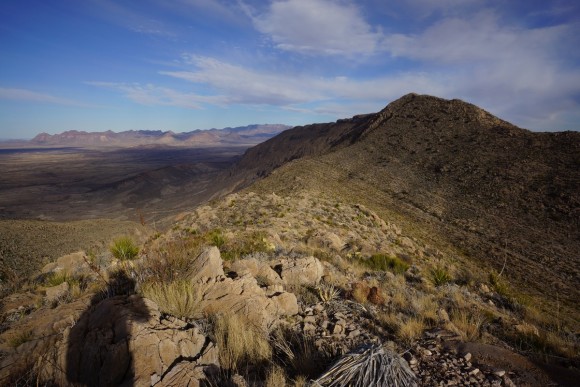
You can see the Cross Canyon trail running down the mountain side on the right. That’s where I’ll climb up that mountain to continue my route along the spine
After the initial climb up from the Cross Canyon trail, I was more or less on the spine now. The first section, before reaching the high point of Mariscal Mountain (3932′), was probably the most technical, but also probably the coolest part of the hike today. There’s a few areas that involved a little bit of scrambling, but nothing difficult at all and nothing that risky besides one or two steps along a knife edge section. There were a lot of false summits though on the way up to Mariscal Mountain, since it’s barely higher than the other points along this area of the ridge line. There is a USGS marker up here marking the summit. Fun fact… Mariscal Mountain is the southernmost peak in the Rockies.
Up on the spine of the Mariscal Mountains, the rocks were often extremely sharp. I did not want to fall on these rocks for fear of getting sliced up. On the flipside, they were great for gripping with my shoes. There were also a lot of interesting rocks along the way up here. Often times the ground just sparkled like crazy, and there’s piles of white/clearish crystals. Some had a tint of blue or green. Ah if I could only remember more from Geology class, I could put a name on them.
North of the Mariscal Mountain “summit”, it’s fairly easy going for a while while the elevation remains fairly flat, yet sloping downhill now. Around this time I got my first and only cactus thorn in the foot during my entire weeklong hike. I was wearing my Merrill Moab Ventilators for footwear, and had even considered wearing my Inov8 Roclite 315s. In the end, I chose the Moab Ventilators due to the extra beefiness of the shoe and figured that would be preferable in this rocky and stabby terrain. So far they have been pretty good for this hike. I removed my shoe to pull out the thorn and kept going.

Probably about 2/3 of the way through the Mariscal Mountains. The trail drops off this high ridge and transitions into a series of rolling hills and drainages
After a while the terrain started to become less of a knife ridge and there were more side canyons running down the sides of the mountain. This makes for slightly harder route finding. Occasionally I’d find myself following the wrong gully and needed to either backtrack or just head up the nearest hill in order to maintain my bearing. I was also getting a little tired now as the direct sunlight was taking it’s toll. Not getting sunburnt, just a little tiring. There was no more than a few patches of shade all day today.
Right before reaching the first views of the Mariscal Mine, there was one good sized hill I needed to traverse. I ran out of water in my bladder around this time. I had another 2L left but this needed to last me this evening and tomorrow morning until I reached the spring near Elephant Tusk. So basically, no more water until I reach camp tonight, unless I really need it.
After getting to the top of this hill, I dropped my pack in the shade. Finally, shade! After a few minutes I was on my way again. However, right after I started moving I slipped and fell on the loose rock, and cut my finger. Not terribly bad but I dropped my pack again to clean and bandage the wound.
Now I made my way through the Mariscal Mine area. All of the mine shafts have been closed off with grates to prevent entry. There were several buildings still standing, but I was running short on time and so I only snapped a few quick pictures and kept moving. Looks like an interesting area to explore more thoroughly.
The old road up to the mine petered out as I walked my last few steps on the Mariscal Mountain Range. Now on the desert floor again, I followed a road (I believe it was the River Road) for a very short ways while it was heading west. Once it turned south, I jumped off and headed north through the Fresno Creek wash. Once I get through the gap in the mountains ahead, I can start heading northwest towards Elephant Tusk.
This next section was a huge network of washes. At first the going was easy. The terrain was open and vegetation was fairly sparse. Eventually, moving anywhere outside of the washes became a chore due to the thorn bushes, and yet, the washes themselves where lined with thick shrubbery as well. At one point I had a thorn bush blocking my path. I used my trekking pole to break one of the branches, and continued to whack at a second branch based on my initial success. However, this proved to be a mistake as my trekking pole simply snapped in half. I’m using Gossamer Gear LT4 poles, which are super light but this is now the second time I have broken one. Clearly, I was using the poles for another purpose they weren’t meant for, but I wasn’t hitting those branches that hard. Ah well, I can buy another replacement section for this pole but really, I am beginning to question the ability to use these poles on longer hikes due to their frailty.
Eventually I made my way through the wash and I could see a white truck parked in the distance. That’s the trailhead for Elephant Tusk I was looking for alongside Black Gap Road. At first I didn’t see anyone alongside the truck and figured they were out in the desert camping somewhere. But as I got closer, 3 guys stood up from behind the truck, startled by my presence. By this time it was 5:15, and they were probably not expecting to see anyone out here. “Hi, don’t mind me, random guy popping out of the desert” I said. They laughed, and we chatted for a few minutes. One guy seemed pretty knowledgeable about the park as he recognized just about everything along my route, and had possibly hiked through the same canyon west of Goat Mountain as I had on my first day. Before leaving, I asked if they had a liter of water they could spare, which they gladly supplied. That really helped and lifted my spirits a bit.
After leaving the ET trailhead behind, it was time to cover some distance before dark. There was a a defined trail to follow here, although faint in many spots. The landscape was pretty flat with small rocks and scrub, so walking was the easiest it had been all day. I covered another 1.5 miles before calling it quits for the day. I had about 15 minutes of daylight left to work with, and quickly got my tent up and situated around camp.
I was pretty whooped by the end of today. Not much to do out here without a fire or anyone to talk to, so I was off to bed around 8:30.
Day 5 – Friday January 15th, 2016
Miles Hiked – 14.99
Route – Campsite southeast of Elephant Tusk to Juniper Canyon
I slept pretty good last night, which was a relief after the subpar sleep the night before. I probably heard more coyotes throughout the night here than anywhere else on this hike. Some were pretty far and others were closer, but none really close. It was a little warmer last night, around 45° when I woke up this morning at 7.
Today’s plan is to hike to the spring just east of Elephant Tusk and get water, then continue north on Elephant Tusk trail towards the Dodson trail. I will take the canyon northwest of Tortuga Mountain to the Dodson trail from the Elephant Tusk trail to shave off a little distance, and check out Adler Spring. Take the Dodson trail east to Juniper Canyon trail and head north, where I’ll camp in Juniper Canyon for the night.
After leaving camp, I found the trail to the base of Elephant Tusk to be pretty good. Easy to walk on, easy to follow.
As I near Elephant Tusk, the trail stays high up above the wash below. The spring isn’t that far away now but the trail is still high, and left me wondering if/when it will ever dip down into the canyon to meet this spring. The trail goes up and over a hill or two before crossing a side canyon that pours into the main wash below. I thought this side canyon was the trail now, since I saw no cairns or obvious route on the other side. So, I followed it down to the wash.
There was some really dense shrubbery through here and of course, it was pretty thorny. Once down in the main wash I was pretty sure this was not the correct route, but at the same time there was some water here and I knew the spring was in this area so it must be right. I kept walking upstream and saw some Cottonwood trees growing in the middle of the wash and knew this was Elephant Tusk spring.
Despite all the flourishing trees and greenery here, there were very little pools to actually filter from. In fact, the one I used was the only one I saw that was barely deep enough to dip a bottle into. It had a rocky bottom and so you couldn’t trench it deeper either. Downstream there were some larger pools but they looked more stagnant, and so I opted to draw my water from a spot nearest to the source. I chugged a liter and filtered 6 more. As I filtered my water, a small plane flew overhead. It was pretty low and seemed to come closer when it saw me, but didn’t make a second pass. I wonder if they were searching for a lost hiker or if it was an aerial tour or something. I tried to filter my water as quickly as possible as it was really cold in the shade.
Once I was ready to go, I headed north in the wash and just past the spring I saw some cairns heading uphill. I figured that must be the way out of here, and followed this trail. It went up a short ways before heading back south again, where I came from. I thought, maybe it’s taking me around an obstacle, let’s just see where it goes. Well, it went back to that side canyon I took down to the main wash. I had simply missed the cairn in the side canyon that marked the trail through here, and around all that terrible vegetation below in the wash. It’s all making sense now.
Now I’m back on the Elephant Tusk trail again, which is in the wash now. The trail winds through several canyons as it makes it way north. Sometimes the trail has you down in the wash, and other times it’s going up over a small hill to avoid obstacles. There are some cairns through here, but they aren’t huge and obvious sometimes, and so you really need to keep an eye out for them. I missed them a few times and had to go through some thick vegetation or climb up/down something to keep going forward.
The most interesting feature of the Elephant Tusk trail for me was the some of the red rock in the washes and canyons. While not huge or anything, they were really colorful and just plain cool looking.
Father north along the ET trail, the route has you out of the wash now and going up and over some larger hills. Here, I saw a couple of deer, my first on the hike. When I got up to the top of this first hill it was hard to find the trail again. It was on and off for a while, and rather annoying. I was expecting this trail to be pretty good since it was so well marked on the maps.
When it was time to leave the Elephant Tusk “trail” for the canyon with Adler spring, I wasn’t sure this was going to save me any time. It looked like it too had a lot of thick, thorny plants and I wondered if this was the right choice. I made the decision to go for it, trying to stick to my original plan where possible.
At first, this wash was not hard to walk though. After a little ways I began to see water. Lots of water, more than any other location I saw in the desert on this hike. I followed the water for a ways before reaching the spring itself.
Upstream of the spring, the vegetation became really thick and once again, a nightmare to walk through. Fortunately for me I was pretty close to the Dodson now, and only had to go another half mile or so. I fought with the thorn bushes for a while before just going up over some small hills to get me out of the wash.
Finally, I reached the Dodson at a rather nondescript junction around 3:15. This basically means that the rest of my hike will be on a legitimate trail system and will make covering ground that much easier.
This section of the Dodson trail, heading east towards Juniper Canyon, goes up and down a bunch of hills and doesn’t offer much for a view at first. No matter, I need to get some miles in today and this highway of a trail I had here was working great. After making it past a couple of hills, the peaks of Hayes Ridge and Crown Mountain begin to show themselves, marking the entrance to Juniper Canyon. That’s still a ways off in the distance though. I continued to haul ass.
When I reached the end of the Dodson trail, where the Juniper Canyon trail starts and Juniper Road ends, there was one guy there camping. He was facing the other way, sitting in a chair reading a book. I said a quick “Hi” and kept going. A few minutes later, I saw another lone hiker coming down Juniper Canyon and out towards the Dodson trail. We exchanged a few words and moved on. Like me, he was probably more concerned with getting to and setting up camp tonight. Oh, and there’s more bear crap on the ground now, and it’s in much bigger piles. Bigger bears in the Chisos area due to the increased food supply.
I made it to camp tonight around 5:15. Although there were a few sites right along the trail, I chose to go up over a small embankment alongside the trail and back a ways. The vegetation was pretty thick here but I found a spot that someone else had clearly used in the past, as there were some grasses matted down just big enough for a tent. Nice view too!
While setting up my tent I saw a deer about 100yds away, and scared him off pretty quickly. The sunset was nice tonight with a lot of reds in the sky.
The wind started picking up a little after dark but I didn’t think too much of it. After midnight though, it could no longer be ignored. The tent shook wildly with every gust. Not ridiculous speeds, but probably 30+ mph. The sound of the wind howling as it approached was really loud and intimidating. For a couple of hours, the winds were much heavier and consistent. After about 5am, they died down a little and I was able to get some rest.
Day 6 – Saturday January 16th, 2016
Miles Hiked – 8+
Route – Juniper Canyon to South Sim, campsite SE2
I was really glad to get out of the tent this morning after a long night. It was still really windy this morning and very cold. The wind added some difficulty to packing up the tent and gear this morning.
My plan for today is to continue the hike up Juniper Canyon, over the pass and down into Boot Canyon. Here I will find and filter water, and then continue on up to the South Rim via the Northeast Rim trail. From here I will make my way around the rim to my reserved campsite at SE2. Hopefully, Ryan will make it out here today as we agreed to do back on the morning of day 2. However, the one thing we didn’t discuss is what the plan is if he does not show up at SE2. Tomorrow, would I hike back into the Chisos Basin as we planned to do if we did meet up today, or do I finish the hike as planned at the Homer Wilson Ranch/Sotol Overlook? Hopefully, he shows up and we don’t even have to cross that bridge.
It was really nice to start moving this morning. Mainly because I wanted to get out of the wind, and that I was cold from said wind. There were a few more campsites, and some pretty nice ones, along the way up in Juniper Canyon. Here, the trail is well groomed and really nice compared to what I had to work with the last few days. Down in the wash to the west, there’s tons of green trees now, and the trail is lined with tall grasses. Along with cacti, those never go away. But the point is, the landscape was changing.
I made good time going up Juniper Canyon. I stopped for one break along he way up for some food and water, although I was running a little short now. Just over a liter left, but that’ll get me to the pools in Boot Canyon no problem. After passing Upper Juniper Spring, I entered the switchbacks. Not as hard as I was expecting today to be but still quite a climb. I made it to the top of the little “pass” down into Boot Canyon at around 11:15, and was disappointed with the lack of view. Oh well, many awesome views to be had from the South Rim later today and tomorrow.
Heading down into Boot Canyon was an abrupt change from windy, exposed side of the mountains in Juniper Canyon. Here, the trees were heartier and the grasses flourished. And yes, tons of cacti. It certainly had a different feel to it, and it was nice.
It’s a half mile hike down to the bottom of Boot Canyon where the hunt for water can begin. At the bottom, there’s a pool of some green water with a bunch of leaves in it. I’ll pass for now. I looked downstream a bit and didn’t see much, so I headed upstream. Here I saw my first person of the day, and person number 6 for the entire hike. But, that number was about to increase dramatically as my stay on the South Rim gets underway.
There was some pools of so-so looking water lower in the canyon, and some better looking water farther up. The problem is, the best looking water was frozen. I keep searching upstream and found some pools that got a little more sunlight then the others, and was able to get my water. I filtered 6L to last the remainder of the hike. Oh, and there was this rock with some moss growing in the shape of a heart. I can’t imagine that grew naturally like that, but maybe?
At this point I had traversed far enough up Boot Canyon where I should just continue this way up to the South Rim versus heading back down Boot Canyon and catching the Northeast Rim trail. Once you near the top of Boot Canyon and the South Rim appears, it’s an awesome feeling. For me, being up here last time on my Outer Mountain Loop hike in 2012, was the highlight of the trip. I walked up to the edge of the rim, and slowly the landscape below comes into view. So amazing.
As much as I want to mess around by the rim’s edge, I hurried to camp. SE2 was empty and Ryan was not here. It’s 1pm now, so he’s still got some time. He ended up arriving at 1:30 and so the timing was pretty good. Of course, we had a lot to discuss as we got caught up with the happenings of each other’s week.
On the day we split up, Ryan ended up making it back to the road near Mule Ears Overlook without any foot issues, although he said the “trail” up and over Mule Ears to the spring was basically non existent. He thought he saw a faint trail but it was not worn enough to actually help him. He did not have the luxury of a GPS as I did, but I gave him the National Geographic Big Bend topo map so he had something, as well as the 24k topo map I printed that shows the Mule Ears and spring area from our first day. Once back at the road he hitched a ride back to our car at the Sotol Overlook.
Ryan camped at Cottonwood for a night or two while he explored the west side of the park. He visited Santa Elena Canyon, Tuff Canyon, Study Butte, and other areas. After this he moved over to the Chisos Basin campground where he explored the popular spots like The Window and the Lost Mine Trail. His feet were feeling better and so he was also able to climb Emory Peak one day as well.
After catching up a bit, we gathered our photography equipment and headed down to the edge of the rim to enjoy the rest of the afternoon. Having the time to simply mosey around the rim’s edge, climbing and exploring while taking pictures, was a real treat. The short days in the winter mean almost no time for anything else other than hiking unless you are willing to keep your miles down, which I typically have a hard time doing. So the fact that I had a couple of hours to kill up here in full day light and with the best view in the park meant I couldn’t be happier.
The downside to being up here on the rim is all the people. We passed a boy scout troop of 30+ people, all in one group. That’s crazy to me that the park allows that. Good for those kids for getting out here but they had several adults with them and so I feel like they should be in groups no larger than 8. I’ve been other places where in terms of camping, group sizes were limited to the 8-10 range. Passing a group of 30+ kids makes me feel like I’m part of a school field trip and not a hike in the “wilderness”. I hope you are reading this, NPS. Besides the boy scout troop, there were tons and tons of people up here, but they were in normal groups of 1-3.
Not far from our campsite at SE2, we found a nice ledge near the edge of the rim to sit on and relax. We continued to talk about our experiences of the last few days as we photographed the vast landscape below. The rim drops off 200oft at the minimum compared to the high points below, and 3000ft relative to the desert floor. There’s nothing obstructing your view here and so the effect is quite dramatic.
After getting all the pictures possible from this spot, we moved east along the rim’s edge towards Juniper Canyon. There are many points along the edge of the rim that we stopped at for pictures. There were many rocky outcrops that were fun to climb along for photo ops as well. Another interesting feature of this area is all the bright green and orange lichen on the rocks.
We kept making our way east down the rim until we realized the sun is going to start dropping pretty quickly. We headed back to the SE2 general area. There were a couple of mule deer on the trail now and they did not seem to care at all that we were only feet away, talking softly and taking pictures of them. They all appeared to be bucks, and the largest was on the tail in front of us. He quickly left, probably to start flanking us, we laughed. The others continued to eat their grasses and roots , occasionally looking up at us as they did so. After getting a few pictures we moved on and let them be. However, around the corner was that boy scout troop again, and surely the deer will be scared away by the sound of all those people.
We watched a nice sunset from the rim’s edge and reflected upon the events of the past week. Our last night in Big Bend was finally upon us and thoughts of a hot meal, shower and real bed were starting to sound really good. After the last bit of sunlight faded away for the evening we headed back to camp.
We returned to the edge of the rim later in the evening to eat, away from camp. For my last dinner of the trip, I had a tortilla with pre-cooked bacon and shredded cheddar cheese. That was delicious, and I wished I had another one. But when can one ever get enough bacon? We stayed here watching the stars for a while before the rocks below zapped away our body heat, and it was time to return back to camp for the night.
Day 7 – Sunday January 17th, 2106
Miles Hiked – 7+
Route – SE2 to Chisos Basin Lodge
Last night the wind was howling like crazy, just as it did the night before. I believe it was hitting the south face of the South Rim and getting pushed up over us. Because of that, the wind never actually hit my tent, but damn was it loud as it whizzed overhead. I was relieved to not have to face those winds again tonight. A guy I passed yesterday said he camped at SE3 the night before and the wind blew his rain fly off his tent a couple of times. Been there, don’t want to do that again. Also, it was interesting to note that we did not hear any animals or have any encounters at all last night. This is where I was expecting to have animal encounters, not in the desert below as I had all week.
The plan for today is was originally to hike up Emory Peak and then back down into the basin, but since Ryan had already climbed it a few days ago, and I had in 2012, for time purposed we decided to skip that. Therefore today’s itinerary is to hike the Northeast Rim trail down to Boot Canyon, follow that up to the base of Emory Peak where we’ll take the Pinnacles trail down to the Chisos Basin. This is where Ryan left the rental car yesterday before heading up to the South Rim to meet me.
After getting out of the tent, we headed down to the same spot along the rim from last night in order to catch the sunrise. I set up my GoPro on my Flow-Mow panning timer to get some time lapse shots while I did my stills from another location.
It was another cold morning as we hit the trail at 9:20. Our motivating factors today were numerous, and we had no problem getting going after leaving camp. We worked our way east along the rim until we reached SE3, the campsite I stayed at in 2012. The campsite itself looks more exposed to the wind, but I think this site offers the best view from SE1 eastwards. On this hike I didn’t venture west of SE1, into the SW sites, so I can’t recall the view for those sites for comparison. Just as we were enjoying the view from the edge of the rim near SE3, the huge group of boy scouts were up and at ’em, and invaded our spot. That prompted us to keep moving and get some space in between us and them.
The trail continues to follow the edge of the rim as it curves northward. Here, there’s a few nice overlooks of Juniper Canyon below. After this though, the trail veers away from the rim’s edge and becomes less interesting as it approaches Boot Canyon.
After reaching Boot Canyon, we headed north along the Boot Canyon trail towards the Pinnacles trail. We saw a lot of people here in the canyon passing through, and many looked like day hikers. The Boot in Boot Canyon was pretty distinct now as we could see it poking up from the mountainside in the distance.
Now at the base of Emory Peak, I climbed up some boulders to get a few pictures of the Chisos Basin below. I remember climbing these same rocks in 2012 when I camped here at the Toll Mountain campsite. Great views, but very windy up here at the moment.
Next we headed down the Pinnacles trail. We passed probably close to 100 people going up this trail on our way down, many of them were part of another over-sized boy scout troop of 30-40 people. Again, is that necessary? Why would anyone want to travel in a group that large anyways? It must take all day just to cover 5 miles with a group of that size. As it turns out, this page on the NPS site states that a group of backpackers cannot exceed 15 people. Well, someone dropped the ball there, or these boy scouts are just ignoring those rules. Not cool.
The Pinnacles trail down to the basin starts off with a lot of switchbacks. The trail itself is well groomed and easy to hike. Many of the best views are obstructed by trees but there are a couple spots with some great vistas.
After passing the steep section with switchbacks, the trail levels out some and you find yourself in the grasslands of the basin. Only a couple of miles now to the end. After passing the last few campsites, we began to see signs that the trail was coming to an end, such as the water tank for the basin. Our knees were aching a bit from the long descent as we finally set foot on pavement in the Chisos Basin Lodge parking lot somewhere after noon.
We ordered carry out from the Lodge while we changed clothes and cleaned ourselves up. For me, getting out of my hiking clothes and into my regular, clean clothes and washing up in the bathroom of the lodge felt amazing. However, I forgot to bring a pair of flip flops and so I had to put on my regular tennis shoes now. After a weeklong hike, my feet were swollen and did not fit very well in my regular shoes. But, no blisters!
After getting our food from the Lodge we got in the car and headed back to Midland. I can not emphasize enough how awesome it is to have a normal, comfortable seat to sit in. This is one of those little pleasures you take for granted after a hike of this length.
On our way through the border patrol checkpoint south of Marathon, they asked us to pull over and get out of the car. They said the dog alerted to our car. We got out of the car and almost immediately, without even checking inside, they said ok you guys are good to go, have a good day. But, I thought the dog alerted to the car? Probably them doing their typical “false alerts”. Ugh, whatever.
Back in Marathon, we saw about 20 border patrol vehicles. Actually, I don’t think I saw one vehicle driving down the road in Marathon that wasn’t border patrol. It’s pretty clear what this town’s economy is based off of. We fueled up and headed north towards Ft Stockton, where we stopped at Dairy Queen for a Blizzard. Back in Midland, we checked in at our hotel and got some food later at the Tilted Kilt next door. Back at the hotel, we made use of the hot tub and relaxed for the rest of the evening. Finally, well deserved rest and comfort. Tomorrow morning, we fly back home.
Final Thoughts
Another successful hike in the books. I was worried about my ankle on this trip since I had sprained it(moderately) 3 months ago, and it still felt a little funny. Lots of clicking and popping in the ankle before the hike but everything was fine, no problems at all this trip.
This is one of the trips that taught me a little lesson, although I’m sure I will have to be reminded of it often in the future. That lesson is that no matter what the terrain looks like from the satellite, and no matter what the topo maps look like, hiking off trail is never as easy as I think it’s going to be. I was not expecting the washes to be lined so heavily with thorn bushes, which proved to be more of an obstacle than cacti for the most part. I only got hit by a couple of cacti the whole trip, but avoiding those thorn bushes is not possible.
The animal life here was much more active than I remember from my hike last time. Having that mountain lion so close at night, and actually coming into camp, was a real shock. I had never heard of a mountain lion attacking anyone while in a tent, and so I figured we were more or less safe. But still! When I returned home, I google searched “mountain lion attacked man in tent” and did find a story about a guy who was attacked through his tent in the middle of the night by a lion in California in 2012. Apparently though, this was unheard of and in fact possibly the first recorded instance of such an attack. I’m glad we didn’t become the second. Also, the amount of coyotes here was much more than I was expecting.
I really wish I would have chosen the Fisk Canyon route instead of my route over Jack’s Pass for my first 2 days. That will be a route for next time. I chose the route over Jack’s Pass because of the high ground which i am typically drawn to, but hiking through some of the canyons was just as interesting.
The geology of this place is amazing. The variety in land formations, rock types and environments I passed through were pretty incredible. I really need to brush up on my rocks and minerals again, as it would have been really cool to be able to identify more of what I saw here.
The hike along the Mariscal Mountain range was cool, but it would have been much more enjoyable with another person I think. The topo map made some of my route look harder than it actually was. The steepest part was the climb up from the junction with the Cross Canyon trail. After that only a few knife edge sections were technical.
I was expecting the Elephant Tusk area to have a better trail than it did, more like the Dodson. The trail was faint where it was not in the wash, going up over hills, and the cairns were small and easy to miss. Give yourself a little more time in here. Also, I found Adler spring near the Dodson to have much more water than the spring east of Elephant Tusk.
I was really surprised by how few people I saw outside of the Chisos area. Having covered over 50 miles by the end of day 4 when I saw my first humans, that would be the longest stretch of both time and miles that I have gone without seeing anyone while backpacking. Day 5 I saw 2 people and didn’t see another person until I reached Boot Canyon midday of day 6. So, 5 people in 5.5 days, and all of those 5 within the last 36 hours… not bad!
Of course, I was really bummed that Ryan couldn’t join me for the entire hike. I have done several solo hikes of this length in the past and would not hesitate to do so again, but having someone to share the experience with is preferable. It’s nice to have someone to talk to and laugh with along the way, and to get a second opinion for interpreting what I see along the way. I’m glad Ryan’s feet healed up and he was able to not only enjoy his solo adventures throughout the week but also that he was able to join me on the South Rim for our last night.
I’ll be going back to Big Bend, along with the Superstition Wilderness in Arizona, for years to come in the winter. I just need a few more “go-to” hiking destinations to round out my selection of warm weather winter hikes.
As always, questions and comments are welcome!
If you found my trip report useful, please don’t hesitate to leave a comment! Alternatively, if you feel you have any information you’d like to share with others regarding this hike, please feel free to leave that below in a comment as well.
[tcb_comment_count]
Wind River Range Traverse, WY – August 2014 (Backpacking Trip Report)

Wind River Range High Route Hike Overview
View ALL my pictures from the hike here: Wind River Range Traverse Photos
View an HD video of this hike on youtube: Wind River Range Traverse
- Location – Wind River Range, Wyoming
- Park Type – National Forest, Wilderness
- Miles Driven To Destination – ~3500 miles Round trip
- Trailheads – Start at Green River Lakes TH, end at Big Sandy Trailhead
- Length Of Time Hiked – 8 days, 7 nights
- Trail Type – Point to point
- Miles Hiked – 100.9
- Trail Difficulty – 9.5/10
- Solitude – 9 (except near trailheads or Cirque of the Towers)
- Scenic Beauty – 10
- Fires Allowed – Yes
[sgpx gpx=”/wp-content/uploads/gpx/Wind River Range Traverse Route.gpx”]
Notes About the Wind River Range
The Wind River Range is a mountain range located southeast of Yellowstone and Grand Teton National Parks, running NW-SE. Lander is the main town on the east side of the range, and Pinedale is the popular staging town on the west side of the range. It’s so rugged that there isn’t a single road that crosses the 100 mile mountain chain, forcing you to drive around it. The Continental Divide trail runs through the Winds, as they are called for short, and is often labeled one of the most spectacular sections of the entire 3,000 mile hike. The Winds are home to Gannett Peak, Wyoming’s tallest at 13,804ft, and more than 40 other 13ers. It’s home to the largest network of glaciers in the American Rockies. Grizzly and Black Bear roam these mountains, as well as Big Horn Sheep, Elk, Moose, Wolverine, and Wolves. World class trout fishing can be had in the Winds as well, in the rivers or many alpine lakes. Despite it’s popularity, it’s one of the most remote backpacking destinations in the lower 48, with spots as much as 20 miles from the nearest trailhead. Ok, are you drooling yet?? Yeah, this place is every bit is awesome as it sounds.
Wind River Range High Route Maps
Download a GPX file of this hike here: Wind River Range Traverse GPX File
Here’s my caltopo map for the Wind River Range High Route as I hiked it:
Getting There
The night before I left home, my hiking partner Marc and I were running around doing last minute errands. It was raining, than it rained some more, and then all of the sudden it was a Florida-like outburst of torrential rain that did not let up for over an hour. Large pools of water started forming on the roads as we pulled into a gas station for our last stop. The rain had just started to let up, and now extent of the flooding was fully evident. Looking out onto the main road, water was mid door height on the cars brave enough to ford the water. Waves of water sloshed into the gas station parking lot, and into the neighboring shopping plaza, where water looked to be about 3 feet. This is crazy, Michigan doesn’t get this type of flooding. Locals are calling it a “once in 50 years” type of storm. Later we found out that some spots received over 6 inches of rain in only a few hours. It was reported that 1.24″ of rain fell in just 24 minutes at Detroit Metro airport!
Even though I only had a 1/4 mile to drive from the gas station, I just barely made it home myself due to the depth of the water. Side streets were filled with dead cars, casualties of the flooding. Absolutely crazy, I have never been through anything like this. My neighbors’ basements were flooding, as were friends in the area. So far, mine was holding tight.
The plan was to get up at 6am tomorrow and start driving, but at 11pm I noticed my basement was starting to take on water. Good thing Marc was here with me, it was great having an extra hand to get everything of value off the floor before it got wet. Also, we had to rip out some carpeting before it got water logged. The basement ended up with about 1-2 inches of water in the deepest spots. By 1am, I had done all I could do, and tried to get some sleep. Now, I was unsure if I would even be able to leave, considering the circumstances.
The water was receding at 6am when I woke up, and was fully drained by 8am. I turned on a dehumidifier, several fans and turned down the central AC. I figured this was pretty much all I could do even if I was stuck here dealing with it. I was uneasy about leaving the house but wasn’t about to miss this hike! I was out the door about an hour and a half behind schedule. Not bad considering the circumstances! I also had a friend come by a few days later to check on the house, just in case.
It was tough getting out of metro Detroit once we finally got on the road. Almost every road in my area was flooded, damaged, had dead cars in the middle of the road or some other obstacle. Marc played navigator, checking traffic on google maps. Freeways were out of the question, since they were filled to the top with water last night and completely out of commission today. We snaked our way through side streets and tried to avoid major road closures, which were pretty much everywhere. We would have spent hours trying to get out of town if it wasn’t for google traffic.
Once out of Southeast Michigan, the next 1,000 miles were pretty boring. Corn, as far as the eye can see for hundreds of miles. Once into Wyoming, the landscape became much more interesting. This was the first time I had ever been to the “Cowboy State”, which is the least populated state in America and the 2nd least in terms of population density. In other words, there’s a lot of open land here. Incredibly vast amounts of it. But, a great drive with lots of variation in land formations.
We arrived in Lander, WY late in the afternoon, where we had a hotel booked for the night. There was a Safeway grocery store in town for last minute shopping needs. We ate dinner at the Dairy Land drive-in. This place serves deep fried cheeseburgers called a “cheese wheel”. I highly recommend it if you happen to find yourself in Lander!
The next day, we drove to Big Sandy trailhead on the west side of the Wind River Range. This is the southernmost trailhead in the Wind River Range. Once we turned off HWY 28 onto Lander Cutoff Rd, it was about 36 miles to Big Sandy campground. The landscape was a desert scrub with some rolling hills, and some interesting land formations. The transition between the desert and the mountains was much more drastic than I thought. As far as the road condition goes, the first third of the 36 miles was pretty rough, the middle third was pretty good, and the final third was rough. But hey, if a mid 90s Saturn can make it, so can whatever you’re driving.
From here, we parked the car and waited for out pre-scheduled shuttle service to pick us up and take us to Green River Lakes campground, the northernmost trailhead in the Winds. The Great Outdoor Shop in Pinedale, WY offers this service. You might also try to contact taxi companies in Pinedale to shuttle you from one trailhead to another, if you aren’t hiking a loop.
As soon as our shuttle service dropped us off at Green River Lakes campground, it started raining a little. I was able to get my tent up pretty quick, but Marc struggled with his due to being unfamiliar with it. By the time we got everything set up, we decided not to get in our tents and instead to wait out the rain in our rain gear underneath the awning of a little building nearby. It was some sort of maintenance shed, and the doors were locked. We got a little wet, but the weather cleared up after an hour or so.
After the rain let up, we walked down to Green River Lake. Squaretop Mountain dominates the view to the south. We haven’t even started the hike yet and already the scenery was incredible.
Day 1 – Friday August 15th, 2014
Miles Hiked – 12.6
Route – Green River Lakes trailhead to Three Forks Park
Today’s Map
I woke up today at 6am. It was very foggy, with visibility only a few hundred feet. It rained last night and everything was wet. We were slow to leave camp this morning since this was Marc’s first overnight backpacking trip. He hasn’t yet familiarized himself with his equipment (much of it is borrowed from me), nor has he developed a system for setting up or breaking down camp. So, this is going to be a learning experience for him.
The outhouses at Green River Lakes campground where the nicest I have ever seen. Definitely not going to have that luxury for the next week, so we made one final stop here. We left the campground around 8:15 and made our way down to the lake to find the trail. Once we were on the path, it promptly crosses the Green River, where it winds through a meadow. The sun was burning off the fog, and already we where blown away by the beauty of this place. The plan for today is to hike upstream along the Green River and find camp in Three Forks Park.

The sun wasn’t high enough in the sky to see the true color of the first lake, but the next lake up in the chain was properly illuminated. We stopped for a gear adjustment and quick snack here. Such amazing color, that green. Some hikes seem like they take a while to “get to the good stuff”. Not this one, right into it from the beginning.
After passing the second lake, the Green River snakes its way through various meadows and woodlands. Again, the color of this river is mesmerizing. The trail follows close to the water most of the remainder of today’s hike.Also, the trail was very easy to follow all day.
We passed a few people here and there today, but nothing crazy. Far less than I was expecting. Marc seemed to do well on the trail today. He kept up a good pace wasn’t having any trouble breathing.
Although Beaver Park had some camping opportunities, we chose Three Forks Park because it’s pretty much the southernmost camping area along the trail before it starts going up in elevation. We hiked 12+ miles today before stopping to set up camp at around 2:15. There weren’t an abundance of good campsites here though, at least not obviously visible from the trail or near it.
Camp was nice, it had all the amenities… close to the river, fire pit, good cover from large, healthy pine trees, and a bear hang rope already set up in one of the nearby trees.
While Marc set up his tent and experimented with his hiking routine/gear set up, I took full advantage of this sunny afternoon by fishing in the Green River. I brought a small collapsible fishing rod (brakes down to 5 pieces, and maybe 15″ in length) and a tiny reel with 4lb test line. For tackle, I mostly used spinners. Didn’t catch anything here, and I was a little disappointed considering the hype this place has for trout fishing. However, the countless alpine lakes still lay ahead. Better luck next time.
Marc had spent most of the afternoon setting up his camp, and making adjustments to his gear. He had a blister forming on one heel, but he attributed that to an improperly cut insole he added to his shoes. He trimmed that up some more and various other adjustments.
Firewood was fairly abundant nearby, and we had a campfire going come early evening. Marc pulled a “Dan”, and burned some of his gear tonight in an effort to save weight. His glasses case and a spare pair of underwear met their demise in the campfire tonight. All I could do was laugh.
Tomorrow is shaping up to be one of the hardest days of the trip, based on the elevation gain and distance. Right now we are at 8,300ft elevation in Three Forks Park, and Knapsack Col (a col is like a pass) is over 12,200ft, plus all the other ups and downs of a 13+ mile hike. We decided to go to bed early at get an early start.
Day 2 – Saturday August 16th, 2014
Miles Hiked – 13.7
Route – Three Forks Park to Titcomb Basin
Today’s Map
I woke up at 5:15 this morning. Shortly after Marc got up, he informed me that his breathing was a real concern and he wanted to turn around and go back. I was shocked that he was saying this right now. He spent a quite a bit of money on his clothing and various other items for this trip, along with the time and money spent getting all the way out here. It must be bad if he is willing to turn around now. However, I’m not turning around. I’m not cutting my trip short. I’m going to continue on solo and finish this hike!
We talked for a while about how we were going to handle this situation logistically. His plan was to hike back to Green River Lakes campground. From there, his options consisted of camping at Green Lakes for a few days, hitching a ride to Pinedale for a few days, or hitching to Big Sandy and camping there. Or, a combination of all three. Either way, he must end up at Big Sandy campground in a week to meet me at the end of my hike. He threw out the possibility that he may try to join me in the Cirque of the Towers my last night if his breathing is up to par. In this case, we would meet at Lonesome Lake at 6pm next Thursday night. If he’s not there, meet at my car at Big Sandy campground as planned the next day at 2pm.
It was a strange feeling to part like this. However, I must continue on now, solo. I hit the trail around 7, and it quickly starts climbing. After about 1,000ft elevation gain through some switchbacks, the trail crosses Trail Creek. This was one of two streams I actually had to put on my water shoes to cross during the trip. It was less than knee deep, but not able to cross by hoping rocks.

Looking back the way I came up
Once past Trail Creek, I saw a few other campers set up here in Trail Creek Park. The trail then continues to climb another 1,000ft or so to Vista Pass. Above 10,000ft now, the land opens up a bit and finally starts to look the alpine hike I expected. The trail descends the pass briefly and then continues up through a long, rocky gully.
After climbing up another 600ft or so, I reached Dale Lake. Now the scenery was turning from great to stunning. As I continued on, I could see Peak Lake in the distance. I started to slow down quite a bit now as the scenery required more stops for photos.
As I made my way across the north side of Peak Lake, a forest ranger passed by, carrying an axe in his hands. He asked me where I was headed and that was pretty much it, he was on his way. The first half of the traverse around Peak Lake was up high above the lake, in a field of large and steeply stacked boulders. Then the trail drops rather abruptly down to lake level, where the trail remains for the second half.
Past Peak Lake, the breathtaking views continue to amaze. From this point on, I can follow the Green River up to its source below Knapsack Col. Standing on the very spot where water trickles out of the ground and forms such an iconic river of the west was pretty cool. It’s hard to believe that this little stream becomes the main tributary for the Colorado River, which cuts through the Grand Canyon.
Now at the base of Knapsack Col, I could see the challenge that lay ahead of me. It was only about 600 vertical feet to the top, but it looked damn near vertical. Scrambling up the steep boulders was brutal. I snapped one of my trekking poles, a Gossamer Gear LT4. I was pretty bummed about that.
At the top of Knapsack Col, ~12,260ft, there was a group of about 10 people who just came up the other side. At first I thought they might be part of NOLS, but they were part of a community college trip of some sort. One guy had cell phone service up here, but I did not.
Now it’s time to head down Knapsack Col and onto Twins Glacier. The top section was mostly rock and dirt, now snow or ice. However, it was very steep. After a few hundred feet I took my first steps in the snow. My Inov8 Roclite 315 trail runners have handled everything else well up to this point, but they were pretty slippery here. It was pretty steep, and I ended up just glissading down the top section. I my camera out, which got a little wet from the snow flying up everywhere. The bottom of my backpack also got pretty wet from dragging in the snow a little bit. No big deal, but next time, I’m going to put the rain cover over my pack and put my camera under my jacket when I glissade. Definitely fun though!
One scary thing about hiking on the glacier was that occasionally, I would take a step and one leg would fall through the snow and I would be up to my crotch. I just kept hoping that I didn’t fall into something larger. Once off Twins Glacier, the remainder of the hike into Titcomb Basin was rocky and soggy. Lots of water flows through the rocks up here, and under the snow in spots. I was getting pretty tired now and looking forward to finding camp. There was one campsite high up in the basin, well before the first lake. I wanted to make it farther today, so I pressed on.
The Titcomb Lakes were huge once I got up to them. The hike around the first lake was nice. I could see a few tents up in the distance, but I was not seeing any good campsites along the trail where I was yet. Any campsites I have seen thus far have all been behind large boulders for wind protection.
Finally, I settled on a spot in between the Titcomb Lakes, perched up on a little hill. I didn’t know how much farther I’d have to hike before I found another suitable camp, and I was exhausted. It was 4:45 by the time I stopped today. Although there was no huge boulders here, there was a rock wall. At least I had some protection from the wind.
I spent much of the evening reinforcing my rock wall and positioning my tent out of the wind as much as possible. I hate sleeping in high winds. I’ve had my tent blown over in the middle of the night a few times before, it’s not fun. When the wind wasn’t blowing, the mosquitoes were out!
The sunset was nice, and the winds started dying down some after dark. I was in bed pretty early tonight. Another long day lies ahead of my tomorrow.
Day 3 – Sunday August 17th, 2014
Miles Hiked – 13.4
Route – Titcomb Basin to Alpine Lakes
Today’s Map
I woke up at 6 today and was on the trail by 7. My intended campsite for today is at Camp Lake. Starting this morning, I won’t see anyone for 2.5 days from this point on.
I wish I had more time to explore the Island Lake area, but I have a lot of ground to cover today. The trail was great in some spots, and tough to follow in others.
The hike through Indian Basin was beautiful, especially the upper portions of the basin. The weather looked like it might possibly rain for a minute, then it cleared back up. Nice, more blue skies!
Once on top of Indian Pass, I could see Knifepoint Glacier, which I had to descend next. The descent was very steep at the top. I tried to follow the talus down for a while to someplace less steep before stepping onto the snow. Now, I could glissade my way down again. This time, I prepared myself better, and everything went much more smoothly. I didn’t get wet and neither did my camera. Great success!
At one point, my leg went through the snow again, only this time there was a large rock in the space below the snow for me to bang my leg on. My forward momentum of my upper body kept moving forward as my leg remained stationary, and this seemed to stress the knee. While this didn’t hurt too bad initially, I think it may have played a role in the knee pain I would experience later on during the hike, and as I write this now, 6 weeks later.
I continued to head down the glacier, until I realized that I was of course. I was supposed to follow the 11,640ft contour line to the base of Alpine Pass. Instead, I hiked too far down. When I realized my mistake, I had to re-plot my course. The most direct route now involved descending the glacier completely. This was a rather interesting experience. Water could be heard flowing beneath the snow in many spots. It was steep in spots and quite slippery in trail runners. However, I did get to do more glissading! I turned around on my stomach and used my trekking pole as a brake. This slowed me down some, but certainly didn’t stop me. Without the brake, I was picking up some speed.
The climb up to Alpine Pass was about 750ft. Seemingly everything here in the Winds is steep and rocky. At the top, I got my first glimpse of the Alpine Lakes area. Unlike the rest of the hike so far (since the top of Indian Pass actually), there is no trail on the map. I have 3 alpine lakes to hike around before reaching Camp Lake. I’m taking the western shoreline of all three lakes. Once I got down to lake level, there was a narrow snow slope to cross before continuing on. There were lots of these along the hike, where it slid straight into the icy water. I kicked in some steps along the slope as I walked along here, and much higher above the water, away from the overhang at the edge.
The next couple hours sucked. The shoreline wasn’t passable, and I had to head up another steep slope in search of a way around this lake. A passable route was never clear, so moving forward was a matter of going a little ways and peeking around the next ledge or boulder. Sometimes it was a dead end. This ate up a lot of time and energy. At one point, I had to climb down a class 3 ledge system with a 40ft drop to continue along.There were definitely some sketchy moments along the ledges up here.
While moving across a large boulder field, I slipped and braced my fall with my left hand, smashing it on a boulder, palm first. The thumb and hand ended up getting pretty bruised and swollen later on. I believe it was a sprain. Most of the time it didn’t bother me too much afterwards, but there were a few painful mishaps with it later on in the week. Both knees were also starting to hurt as well.
It was late afternoon now, and I was past the first lake. Battered, hungry and tired, I accepted the fact that I wasn’t going to make it to Camp Lake today. Instead, I would try to hike a little farther, to the southernmost Alpine Lake. That is, if there is even a decent campsite there. I haven’t yet seen anywhere I’d want to or even could camp at yet in the Alpine Lakes area.
The second lake in the chain was much easier to get around. Nothing here was protected from the wind though. I could see a bit of a peninsula that jets out into the 3rd lake in the distance, so I head for that. Sure enough, I found a spot up there. It was situated behind a very large rock slab protruding from the ground and in a bit of a bowl, protected from the wind. This will have to do! It was already 6:15 , much later than I wanted to be hiking.
The mosquitoes were bad at camp tonight, just as they have the previous nights. After refilling water and eating dinner, I didn’t have the time or energy to do anything else. I went to bed as the sun went down. Another long, hard day. The last two days have been some of the most difficult hiking I have ever done.
Day 4- Monday August 18th, 2104
Miles Hiked – 12.8
Route – Alpine Lakes to Glacier Lake
Today’s Map
Woke at 6:30, left camp at 7:45. Today’s hike was supposed to take me from Camp Lake to Europe Canyon, however, I was now a few miles behind schedule. We’ll have to see how far I make it today.
Immediately after leaving camp, I continued on my course from yesterday, traversing around the last of the 3 Alpine Lakes. The research I had done before this hike had shown a route past this lake on the north/east side of the lake. However, this route was supposedly pretty step and had a class 4 maneuver. The south side of the lake looks much more benign on the map, and this is the route I chose. The first half of the lake was fairly easy, but the second half was more of a challenge. Eventually, I was stopped by some steep cliffs that required a steep climb up loose boulders to the top of a ridge. From here, I could now go around the cliffs. There were a few more narrow ledges to negotiate, as well as some dead ends, before finally making past the last of the Apline Lakes. Good riddance! This was the toughest section of the hike for me.
By now I could see the route ahead was about to dip below the treeline. I started following a small ridge down, but quickly realized that I was going to have to make my way down off the ridge and walk along side it. To get down, I had to climb down a 30ft section of steep rock with dense shrubbery. The whole rockface was covered in these pine tree-like shrubs, barely supporting my weight as I gingerly tested out each step on the way down. Now, I could continue on downhill with a little more ease.
After heading downhill a short ways, my route had me descending another steep rockface. This time, it was much more wide open and clear, other than various streams running down it, making for some slippery spots. The rock was smooth and resembled a big slide, one that I did not want to test out. It was very beautiful coming down this section though.
Once down off the rockface, I was rewarded with a trail to follow, at least for a little while. Unnamed Lake was now visible, and boy was it beautiful. It looked like a great spot to camp, and I wished I had made it here last night. Oh well, moving on. After passing Unnamed Lake, the trial goes up and over a small hill before the approach to Camp Lake. I fully expected the walk around this Lake to be easier than it was. At the top of the hill, I could see now that the only way down to the lake was a steep decent of huge boulders. Sometimes, the boulders are so large that climbing on them and moving from one to another becomes a real chore. That was the case here.
Now out of the boulder field, the trail picks up again and makes it’s way around the east side of the lake. Despite the name, I didn’t see any good spots to camp along Camp Lake. I wasn’t looking too hard though either, since I wasn’t going to be camping here anymore. It sure was pretty though.

After passing Camp Lake, the trail starts to climb again. The next section wasn’t super steep, and there was actually a decent trail to follow. I made good time up to the top of the pass, which didn’t seem to have a name according to my GPS and maps.
After descending the pass, I found myself overlooking the Golden Lakes area. The trail was excellent in this area, and there were plenty of great campsites to be found. I fully expected to see some people here, but I didn’t. I made good time through this area with an easy trail to follow over relatively easy terrain. I stopped for lunch near lower Golden Lake, and got devoured by mosquitoes and biting flies.
After lunch, I continued on the trail and headed up and over Hay Pass. At this point, I started seeing some bear crap, near Dennis Lake. It was pretty wide open up here though, so at least I shouldn’t stumble across a bear without seeing him from a distance. Hopefully. The bugs where horrendous up here as well. Even while walking, I couldn’t escape the biting flies. This is crazy, I thought… must I wear my mosquito net while hiking, too? I wasn’t willing to hike in long sleeves today though since the sun was shining and it would have been too hot. Therefore, I had no choice butt to be eaten alive much of the day.
The trail was easy to follow along North Fork Boulder Creek, until I had to leave it to stay on course towards Glacier Lake. The hiking was easy up here, but pretty soggy. Lots of wildflowers and huge, open valleys. Not as spectacular as other areas, but this is where I am going to set up camp for the day, alongside Glacier Lake. I could have kept going an tried to make it to my intended campsite in Europe Canyon, but I decided to call it a day at 4:15.
There wasn’t much for campsites beside Glacier Lake. I found a decent spot behind a large boulder after some searching. Definitely not the best campsite, but it will do.
After setting up camp, I headed down to the lake for water, and to do some fishing. First cast, 12″ Cutthroat Trout. Awesome, but there’s no wood up here to burn. I didn’t bring a stove, so I had no way to cook it. Catch and release, I guess. I ended up catching about 8 trout in 30 minutes, all in the 10-13″ range. Caught them all on a#2 Mepps spinner. That was fun, but I really wanted fresh trout for dinner! Maybe another day, when camp is below treeline.
My knees hurt a little today, but less than expecting. I had another fall while hiking trough a boulder field, and again, I used my left had to brace my fall. Surprisingly, I didn’t seem to do any further damage to my already swollen hand. Back at camp, the bugs were the worst I have ever experienced. My head net quickly became one of the most valuable items in my kit.
Day 5 – Tuesday August 19th, 2104
Miles Hiked – 14.2
Route – Glacier Lake to Bonneville Lake
Today’s Map
I was up at 5:45 this morning, and broke camp by 7. The sky was pretty grey today, and only got worse as the day went on. I have had excellent weather the last few days, so I suppose some bad weather is about due.
The main reason I stopped last night where I did was that I wasn’t sure how difficult is was going to be getting around Long Lake, which is situated between Glacier Lake and Europe Canyon. Given the difficulties I had going around Alpine Lakes, I didn’t want to get into anything too serious last night, and figured that was best left for this morning. In reality, it wasn’t too bad going around the lake.
Parts of Long Lake seemed to flow into the horizon, dropping off into nothingness. Somewhat like one of those “infinity pools”. This was a pretty cool effect. I only wish the sky was blue, these grey clouds are awful for pictures. To be honest, the lakes were starting to blend in to me now at this point. Don’t get me wrong, they were beautiful, but some of them were not named on my map/GPS, and there were just so many of them. This was a stark contrast to my previous hikes in the Rockies, both in Colorado, where there were relatively few lakes in comparison.
Once I go to Europe Canyon, I was looking for campsite locations out of curiosity, since I would have stayed here last night. I didn’t stray from my course though, and didn’t see anything great nearby. However, the area looked ripe with potential if one were willing to spend some time searching.
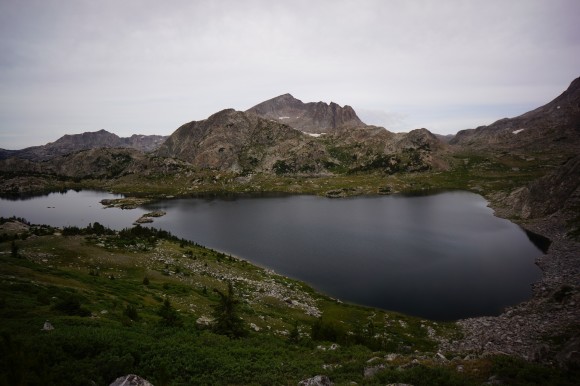
I had been off trail since yesterday afternoon, and will continue to be until later portion of today. Passing through Europe Canyon, my route now skirts around the east side of an unnamed lake up over a small hill. On the map, the contour lines made it look like it was going to be steep and difficult, but it was actually not bad, this time.
I’m seeing lots more bear crap now as I headed down the hill leaving Europe Canyon and down towards Halls Lake. One pile of crap looked particularly large, possibly Grizzly. I figure, better start making a little more noise, since I am by myself. I started yelling “Yo bear!” every so often.
While working my way down to Halls Lake, I did run into a small black bear, maybe 100 pounds. I was coming down a hillside along a rockface, and the bear was foraging for food alongside it. It was about 150ft downhill. My first thought was that there could be a mother bear nearby. As I reached for my bear spray, I was also yelling and making noise. The bear immediately scampered up the steep slope like it was nothing. My heart pounding and hands on the bear spray, I scanned the area for signs of the mother. Nothing but silence. I moved on with a new sense of awareness, and you can bet my “Yo bear” calls got louder and more frequent.
Once I approached Halls Lake, I realized that I should have crossed Halls Creek a little sooner. After some scouting around I was able to find a crossing point at the mouth. I started thinking about taking an alternate route now, as I approached Middle Fork Boulder Creek. I had planned on hiking along Middle Fork Lake, Lee Lake, and going up over Bonneville Pass. Instead, I chose to cross Middle Fork Boulder Creek and stay to the west of Dragon Head Peak and Pronghorn Peak, hiking along Rainbow Lake and Sunrise Lake. I would still end up at lower Bonneville Lake, but would avoid a major pass and possibly shave off a mile or two. Yup, that’s the plan.
Crossing Middle Ford Boulder Creek was the second of my two river crossings that required my water shoes during this hike. The was a lot of water flowing through the area and several branches of the creek to cross. From there, I had to climb up another 600ft to reach Rainbow Lake.
While hiking alongside Rainbow Lake, I saw a guy and his dog camped higher up the hillside. This was the first person I had seen in 2.5 days. I would also see a few more people before the end of the day. There was a good trail to follow, but it quickly petered out after Rainbow Lake.
The Rainbow Lake and Sunrise Lake area had some excellent camping, and looked like a great spot to fish. In fact, I saw a few guys taking some trout back to their camp, and I was jealous. However, I still wanted to keep going, and make it to Bonneville Lake.
The Hike from Sunrise Lake to Bonneville Lake involved an awkward traverse of a hillside, where hugging the same contour line across was the best approach. Despite the lack of cairns throughout much of the Winds, there were some helpful ones throughout this section.
The Bonneville Lakes area was incredible! Too bad the weather was looking worse and worse, with rain imminent. Someone took the primo spot, but I found a good site on the southwest side of the lake with some decent cover under pine trees.. This was closer to where I needed to head tomorrow morning anyways.
I set up camp around 4, with very light sprinkles on and off for a while. I was able to get everything set up and get some food in me before the rain got heavier around 5. While raining, I took a nap for a while until it stopped around 7:30.
I was glad to be “caught up” and on schedule now. The next 3 days should be relatively easy, with mileage in the 7-9 range. Hopefully the weather is nice and I can enjoy the extra time I have at camp.
Day 6 – Wednesday August 20th, 2014
Miles Hiked – 7.1
Route – Bonneville Lake to Skull Lake
Today’s Map
I had set my alarm for 5:45, but ended up sleeping in til 7. It rained last night, and everything was wet. It was 41°F in my tent this morning. Since I only had to hike 7 miles today, I decided to take it easy this morning. The last 4 days were tough, I earned it!
The sunrise over Bonneville Lake was awesome. I wish I had more time to spend here. The weather was looking good this morning, blue skies over the lake. I left camp at 8:20, and shortly thereafter the skies turned grey again..
The hardest part of my day today should be the pass I am about to hike up now. I couldn’t tell exactly where the route would take me until I got right up to the base of it. I’m not sure what the name of this pass is, or if it’s even named, but it’s between Mount Bonneville and Raid Peak. There is a creek running down the mountain here and flowing into the southeast corner of lower Bonneville Lake. Stay to the right of this creek, as it’s too steep to go right up. I crossed it at about the 11,200 mark.
I could see Mount Bonneville now, which was engulfed in clouds. The rest of the way up to the pass was fairly easy, and I was at the top by 9:30.
From the top of the pass, I had great views of this new valley. There wasn’t a name for this valley on my map or GPS, but it certainly looked large enough to be named. The East Fork River flows through here, so East Fork Valley sounds fitting to me. There was a steep descent of boulders at the top, then a long boulder field to navigate through. I was really impressed with the beauty of this area.
As I made my way down from the pass, the views got better and better. The valley really opens up and shows it’s size. To the east lies Mount Hooker, Tower Peak and Pyramid Peak. On the west, Mount Geikie and Ambush Peak. The view to the west was stunning, a solid wall of imposing peaks running for about 3 miles north to south. Simply incredible.
I hiked out of the valley and down towards Pyramid Lake. I saw a few more people here in this area. There was a pretty well beaten path to follow at this point. My GPS is calling it the Haily Pass Trail. I remembered that I hadn’t seen any bear crap since going over the Pass this morning, which was good.
After leaving Pyramid Lake, the trail passes by Mays Lake. From here, it was only about another mile to Skull Lake where I intend to camp for the night. It was easy hiking through this section, and I made it to Skull Lake at 12:20. Only 4 hours of hiking for me today.
I set up on a spot overlooking the lake. I could see the Cirque of the Towers now in the distance from camp. The weather started to improve in the early afternoon, with increasing sun, despite huge cumulus clouds forming all around. I knew it was going to rain eventually, but for now, it was fishin’ weather!
I headed down to the lake to do some angling. I know there is plenty of wood around to burn, so that’s not going to be an issue today. Same deal today, basically every cast is either a catch or a bite. However, these weren’t cutthroat trout, I believe they where Brown or Brook trout. Either way, they were on the small side at only about 7-8″, so I threw them all back. Damn, I was really hoping for fish tonight. Today would have been perfect too, since I have so much time at my disposal.
While down at the lake, a group of people passed by on the trail above with pack llamas. First time I had ever seen a llama on the trail. Many other people passed by my camp throughout the day, on foot and on horseback. Must be a popular area.
By 3:30, the rain was here. I sat in my tent until 5 when it stopped. The, I fished some more. It was fun catching them, even with no intentions of keeping them. It was just so easy!
My knees really stared to hurt today. I’m glad I don’t have many miles left. I’ve been relatively lucky with the weather so far, and I’m hoping that it holds out for another 2 days. The peaks were all engulfed in clouds by the time the sun went down. Hopefully this passes overnight.
Day 7- Thursday August 21st, 2014
Miles Hiked – 9.1
Route – Skull Lake to Cirque of the Towers
Today’s Map
I woke up at 6:45 this morning, but ended up sleeping in til 8. It didn’t rain much last night, but enough for everything to be soaked this morning. By 8:45 I had left camp, en route to the Cirque of the Towers.
It looked pretty nasty out this morning, and I knew I was going to be wet today. After leaving Skull Lake, I saw several people along the trail. I’ve come to realize that the southern end of the Winds is more popular than the northern end. I expected as much with the Cirque of the Towers drawing so many people to the south.
After crossing Washakie Creek, I hooked up with the Shadow Lake Trail and headed east. It was raining now as I made my way through the open valley towards Shadow Lake. My trail runners offered no protection from the water and my feet were soaked at this point. Still, my feet were plenty warm, as long as I’m moving anyways.
Once I reached Shadow Lake, the weather was looking worse, and I decided to wait a while to see if the weather clears before heading up over Texas Pass. I sat under a tree for a while, with my knees at my chest and arms around my legs. I was still getting rained on, but kept hoping this was going to clear up.
After 45 minutes, I got up and started looking for a better temporary shelter. I figured I’m going to be here a while and might as well try to get out of the elements a little more. I discovered an area surrounded by three garage-sized boulders offering some protection from the wind. On top of that, there was a bit of an overhang on one of the boulders, and it looked like a great spot to have a fire. It was pretty cold out and now I wasn’t moving around at all.
It’s amazing what you can find to burn, even when it’s raining out. With plenty of wood at my disposal, I made the best out of the afternoon here in my little hideout. I stayed here for a few hours until there was a little break in the weather. Not much, but maybe enough to go over the pass.
After leaving Shadow Lake, the the next lake up in the chain was Billy’s Lake, then Barren Lake and finally Texas Lake. I’m sure the views would have been spectacular if they were not hindered by the clouds. The trail up Texas Pass was pretty good, well beaten and generally easy to follow. I expected as much from such a popular area. The weather held out until the final push up Texas Pass, when it started to rain lightly. Better than hail and lightning. I’ll take it!
Coming down Texas Pass, there was some snow pack for the first few hundred yards of descent. I headed downhill through some talus fields and then the landscape gave way to grass. I figured there would be an obvious trial to follow down to Lonesome Lake from here, but that was not the case. There would be short sections of trail that would vanish without a trace. I expected the hike down to be relatively easy, but it was actually quite a pain.
As I started to drop down into the valley, the Cirque of the Towers and surrounds peaks loomed above, with the tops of the peaks obscured by the thick clouds. I tried to imagine how beautiful it would be on a clear, sunny day.
Pingora Peak was really impressive. It dominates your view of the landscape most of the way down to Lonesome Lake.
My knees were hurting quite a bit now on the steep descent. It wasn’t until a few hundred vertical feet above the lake until I was able to follow an actual trail. Once down to the lake level, I had to make my way to the other side. This involved traversing the west/southwest side of the lake, which was also quite a pain. There were huge boulders all along the shoreline which made for some unwanted scrambling.
It was now about 6pm as I made it around the lake. I couldn’t see anyone near the lake, and figured Marc wasn’t going to come up here anyways. I headed straight for the higher ground above the lake to find camp. I passed a handful of people up here camping, not as many as I expected. I found a spot and dropped my pack around 6:15.
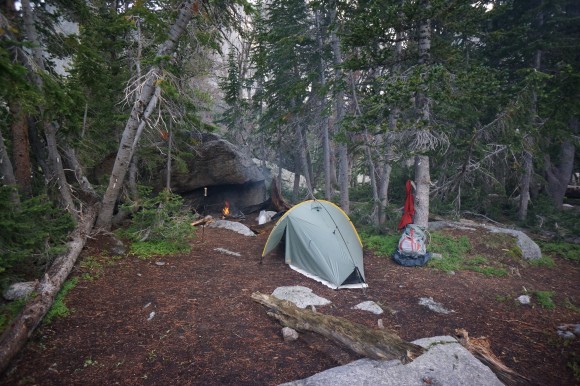
My shoes and pant legs were soaked from hiking through tall, dense wet vegetation the whole way down from Texas Pass. After setting up my tent, the next order of business is to start a fire and try to dry out my clothes and shoes. There was a large overhang on boulder at my campsite that was excellent for fires. It was large enough to store extra firewood underneath as well. The fire was great, much needed. My feet were pruned from being wet so long.
I wanted to explore the area more, but I just didn’t have the time. I got to camp so late today that I didn’t have time to do anything but gather wood and dry out my clothes. I was running pretty low on food now. I wasn’t overly hungry throughout the trip, but was a little tonight as I rationed my remaining supply to last me through tomorrow. I had brought about 14 pounds of food, however, my food it not nearly as dense as some of the more hardcore backpacker’s diets. I’m picky, and would rather carry more weight in food as long as it’s food I like. I don’t want to be choking down some nasty kibble just for the sake of saving weight.
I enjoyed a nice fire on my final evening in the Wind River Range, reflecting on the wonders and hardships of the trip. It’s a good thing the rewards are so great hiking here, because it’s equally as challenging. I’m ready for a hot shower and big, hot meal tomorrow!
Day 8 – Friday August 22nd, 2014
Miles Hiked – 9.3
Route – Cirque of the Towers to Big Sandy trailhead
Today’s Map
There were storms with heavy rain and wind all throughout the night. It was definitely colder this morning than it had been all week. The peaks above had a dusting of snow this morning as well, albeit very little. I slept in until 9:45, trying to wait out the weather for the climb over Jackass Pass. Dark clouds loomed above, with occasional thunder. However, I have a schedule to keep… Marc is waiting for me at the parking lot today and expecting me at 2pm.
I was packed up and ready to head back to Big Sandy trailhead by 10:30. I figured that the hike back is all downhill after Jackass Pass, and there should be a good trail to follow. Should is the key word here.
The weather still wasn’t clear as I headed up the pass, but I couldn’t wait any longer due to my time constraints. The weather was fine until I reached the top, where there was high winds with rain/hail whipping me in the face. I had to put on my sunglasses! I wanted to take some pictures, but I didn’t want my camera to get wet.
After I made my way down off Jackass Pass and to the vicinity of Arrowhead Lake, I heard an incredible noise overhead. I looked up to see an F-16 style fighter jet screaming across the sky. The trajectory suggested that it had just taken off from somewhere west of here. Seconds later, another jet followed, punching through the rising clouds above one of the peaks. I’ll never forget the sound they made as they echoed through the wilderness. That’s the sound of freedom right there! ‘Merica.
Once I reached North Lake, my route had me going around the east side of the lake. However, the west side looked like it would be easier, and that’s what I chose to do. Big mistake. It looked manageable at first, but quickly became the most treacherous boulder field of the entire trip. These boulders were enormous, some the size of garages or small homes. These were stacked and strewn about, with huge gaps between them This made hoping from one to the other impossible in spots. Not only that, but these boulders were so huge that they had an entire sub-chamber of smaller boulders beneath them. Sometimes there would be as much as a 20ft drop from the boulder I was standing on to the next one below. To make matters worse, it was wet and slippery. Lots of dead ends, backtracking and frustration. The worst part was how slow moving it was. Like I said, I’ve got a schedule to keep!
Finally past North Lake, I thought my troubles were over. Again, I was wrong. Any trail I found just disappeared after a short ways. So, I started following North Creek down, thinking this was the easiest route. This was tough too as the slopes of the creek banks were steep and hard to walk along without losing my footing. All the vegetation was thick, thorny and soaking wet as well. Later, I realized the trail probably stayed higher up out of the ravine on the west side where the slope is more mild, along the 10,080ft contour line.
When I finally did reach Big Sandy Lake, I started seeing legitimate trails, and plenty of people. My maps showed an easy hike back to the trailhead now, but you never know.
The rest of the hike back to the Big Sandy campground was extremely fast and easy. I was on a mission now as I was just a little behind schedule. I passed a forest ranger headed towards Big Sandy lake who told me that I was getting out just in time, as the weather was going to be in the 20s tomorrow and they were expecting a few inches of snow. Yeah, definitely good timing!
I arrived at the trailhead at 3, 1 hour late. Marc was sitting in my car waiting for me. Walking back into the trailhead was a great feeling after such a brutal hike. I changed into some clean clothes and put on my sandals. Finally, I can air out my feet! And even though I had to drive now, sitting in such a comfortable seat seemed like a luxury now. Ah, back to civilization.
Marc and I exchanged stories of what happened in the past week now as we drove through the 35+ mile network of dirt roads back to the main highway. He ended up spraining his ankle on the way back to Green River Lakes campground the day we split up. He hobbled back to the trailhead, and hitched a ride back to Pinedale. He got a hotel and rested for a few days. When he felt a little better, he walked around town and hung out at a bar, playing pool with the locals. Then, he took a cab out here to the trailhead to meet me this afternoon.
The drive back to HWY 28 through the 35 mile dirt road maze was pretty cool too. The landscape is completely different here compared to the alpine environment only a few miles away in the Winds. Vast, arid, and strangely beautiful. A huge storm was brewing to the west, and the sky was looking dark as hell. Good thing we’re going east.
From here we headed to Casper, WY where we got a hotel with an indoor pool and hot tub. It’s always nice to relax in a hot tub after a long hike! We ate at Poor Boys Steakhouse, which wasn’t as good as the reviews online made it out to be, but still satisfying after 8 days on the trail.
Final Thoughts
Well, the first thing that comes to mind is how much more challenging this hike was than I expected. I figured, the Rockies are the Rockies. I’ve hiked in Colorado, this will be just like that. No way. This is a step above that for sure. The hikes I went on in Colorado did not require any climbing at all. The High Route through the Wind River Range is largely off-trail, is requires much scrambling. Going over some of the passes here was similar to a class 2/3 summit of a Colorado 14er, climbing wise. Lots of boulder fields to traverse, lots of climbing. Even when you aren’t going over passes, there was a lot of climbing involved on this route. I’m not talking about sheer cliff faces with a 1,00ft death drop or anything, but plenty of spots where slipping could prove fatal.
The northern end of the Winds seemed to be the most remote and offered the most solitude. While previously used campsites were more common in the southern sections, they were tough to find in the northern end, mainly the Alpine Lakes area.
Mosquitoes and biting flies were unbearable in some spots, so make sure you don’t forget your head net. Food storage-wise, I used the bear hang that was at our campsite in Three Forks Park, but other than that, I relied on my OPsaks for food storage and smell resistance, and stored that away from camp at night in a larger roll-top bag. I didn’t have one problem with my food storage system, which is always a concern in bear country. Especially when you have seen a bear already!
Boulders… get used to hiking on them. Many, many miles of boulders, of all shapes and sizes. Some are steep, so steep you fear disturbing one will bury you in a landslide. Others are so large, they’re difficult to move from one to the other. A large portion of this trail is spent traversing boulder fields, so be prepared for that.
Hiking over the glaciers was awesome. Having crampons would have been nice but they certainly aren’t necessary. I was able to move through here with trail runners. It was slippery in spots, but not too bad. I wouldn’t want to do it without a trekking pole though. I guess I’m lucky I only broke one pole going up Knapsack Col.
I didn’t bring enough food this time, even though I had about 13+ pounds. I should have known better. I wasn’t hungry throughout the trip, except maybe the last night. I didn’t weight myself immediately after the hike, but 3 days later after pigging out on fast food the whole way home I had still lost about 15 pounds. I didn’t need to lose any weight really, and ended up losing several pounds of muscle. The physical effort needed for this hike was much more than I anticipated. Realistically, I’m not sure I’d even be able to stomach as many calories as my body would burn out here. I’m going to have to work on getting more calories in my food next time.
I felt bad for Marc and how his week turned out. I assumed he would camp at the trailhead or near it for a few days since he has all his food and equipment. But since he hurt his ankle, he just wanted to get in town and rest up properly, in a hotel. So, this trip was pretty costly for Marc, especially since he needed to buy almost all his clothing and a pair of shoes. I was disappointed that we couldn’t continue together, but was glad that I was prepared to continue on alone. Had Marc continued, he very well may have sprained his ankle on the trail somewhere more remote. I’m glad I didn’t get hurt myself. This route was no joke.
My right knee is still bothering me, more than 2 months later. I’ve been able to do squats and deadlfts, but can’t run on it, and I certainly wouldn’t trust it out on another 100 mile trek just yet. I guess it’s a decent time for a nagging injury, if there is such a time, since I don’t have any hikes planned for the future right now. With that said, I can’t wait til the next one. Get better, knee. Get better.
As always, questions and comments are welcome!
If you found my trip report useful, please don’t hesitate to leave a comment! Alternatively, if you feel you have any information you’d like to share with others regarding this hike, please feel free to leave that below in a comment as well.
[tcb_comment_count]
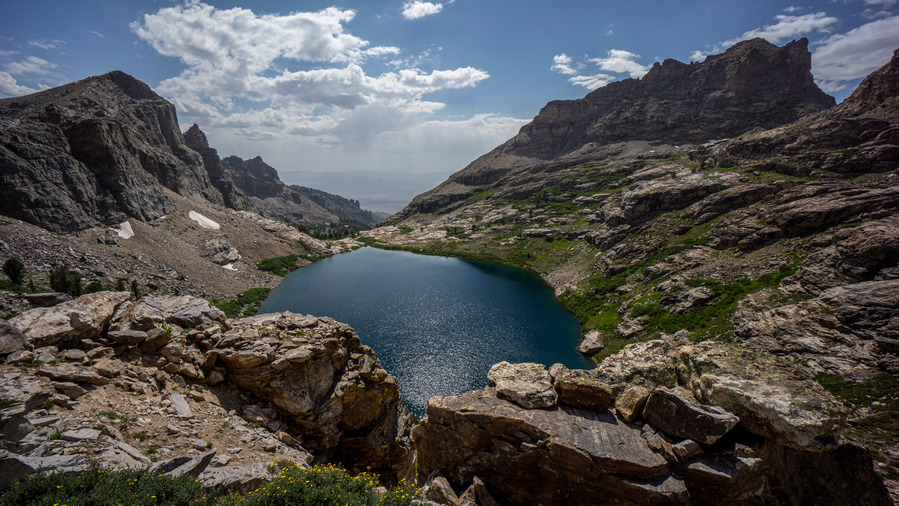
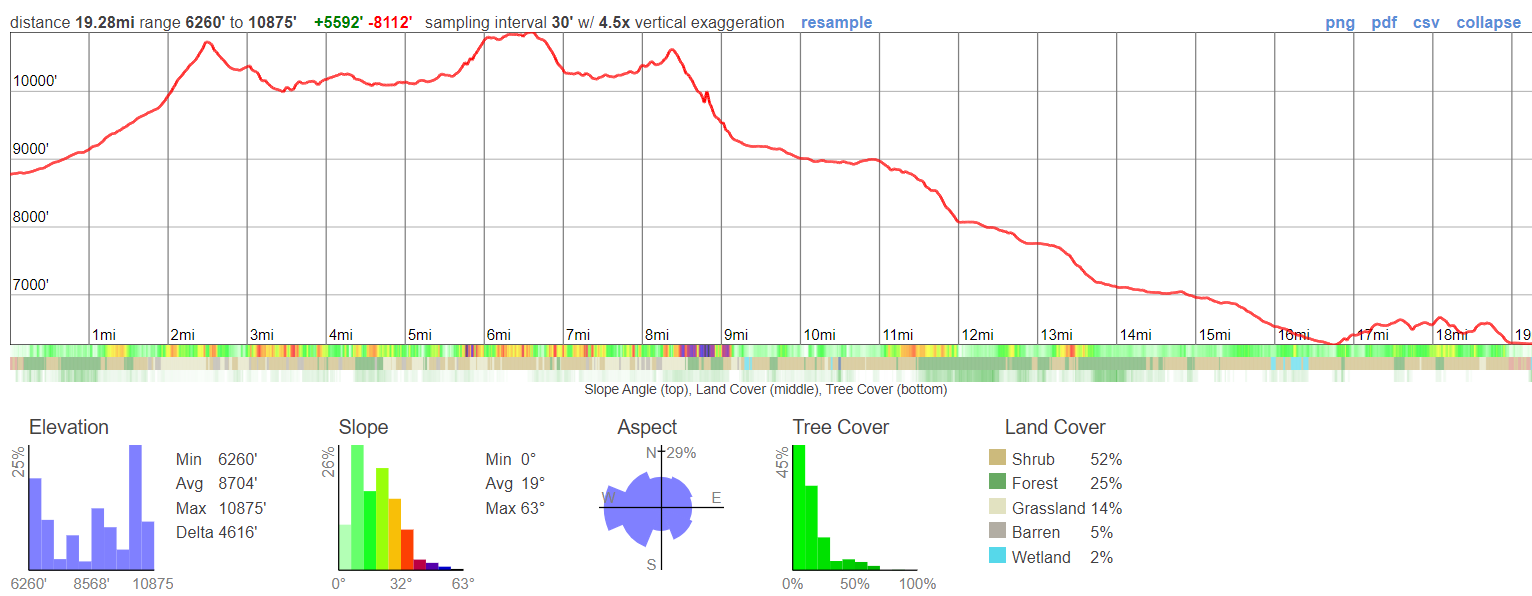




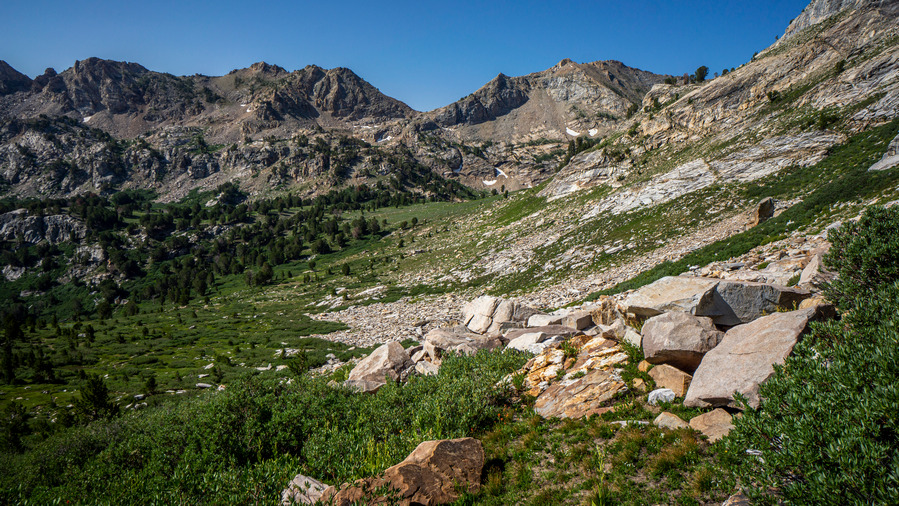
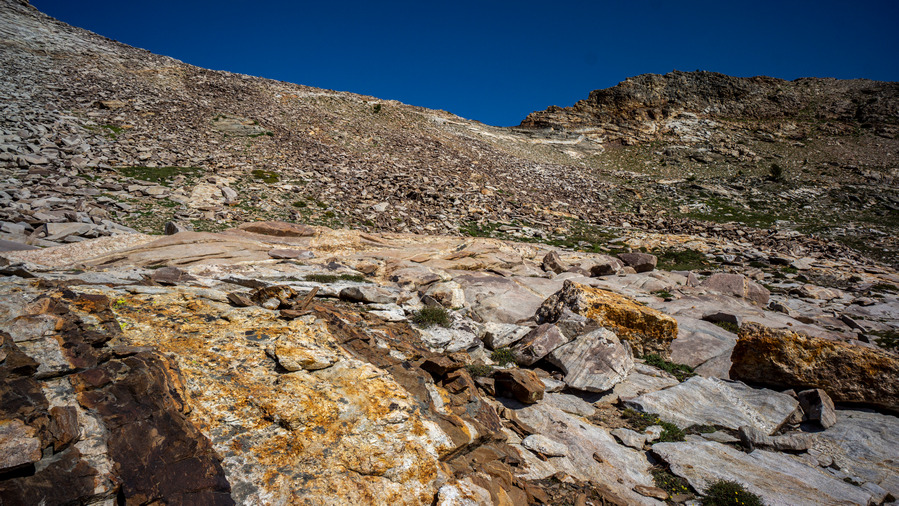





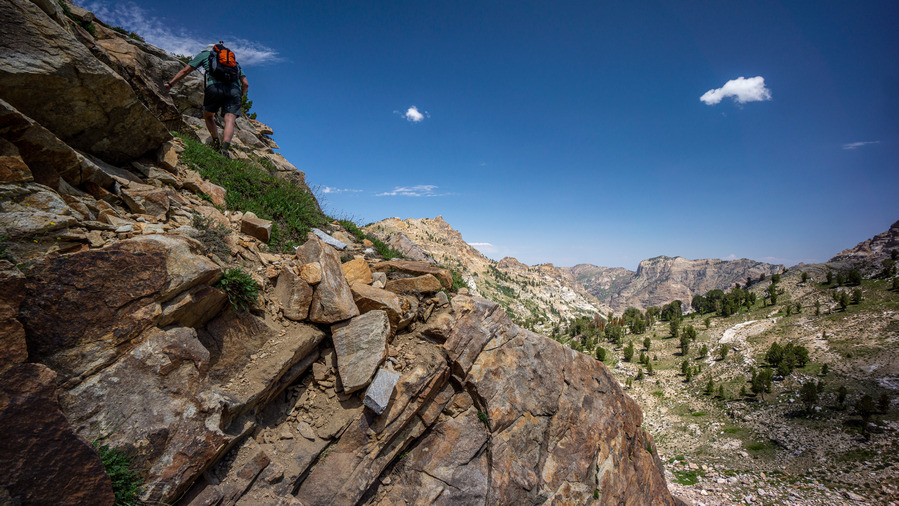
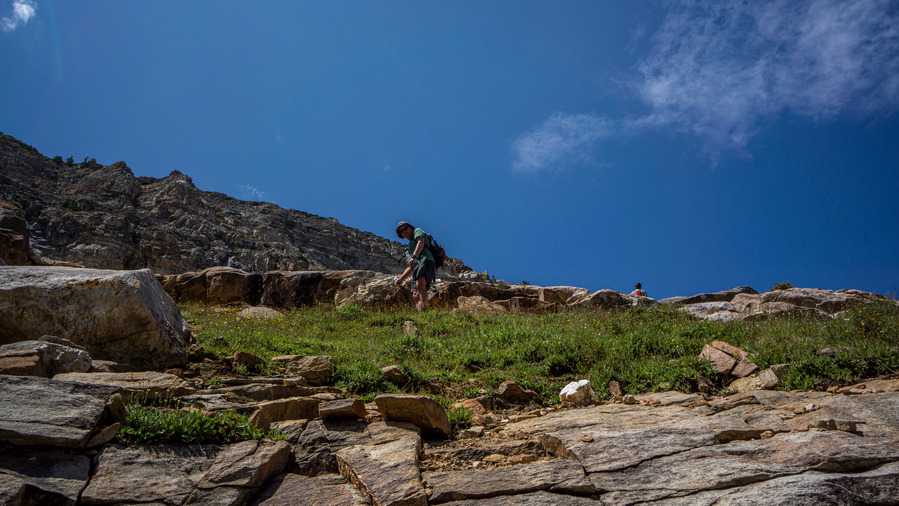




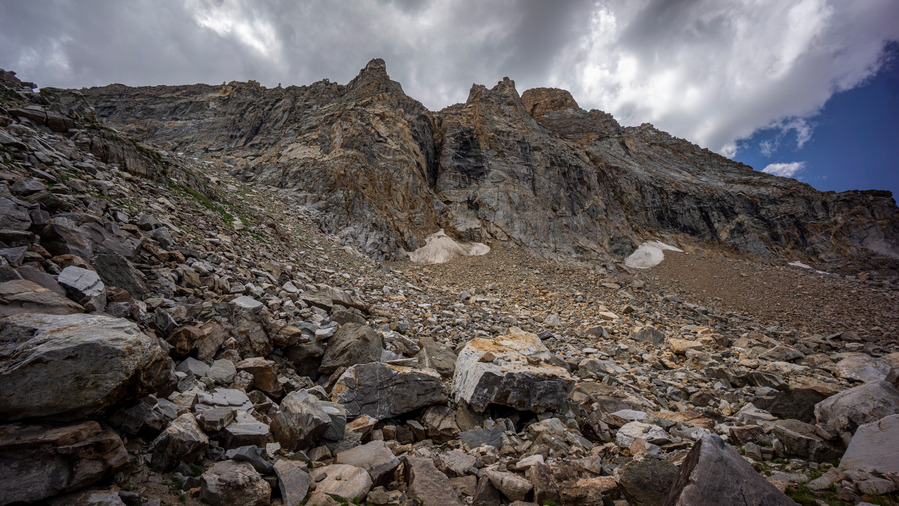

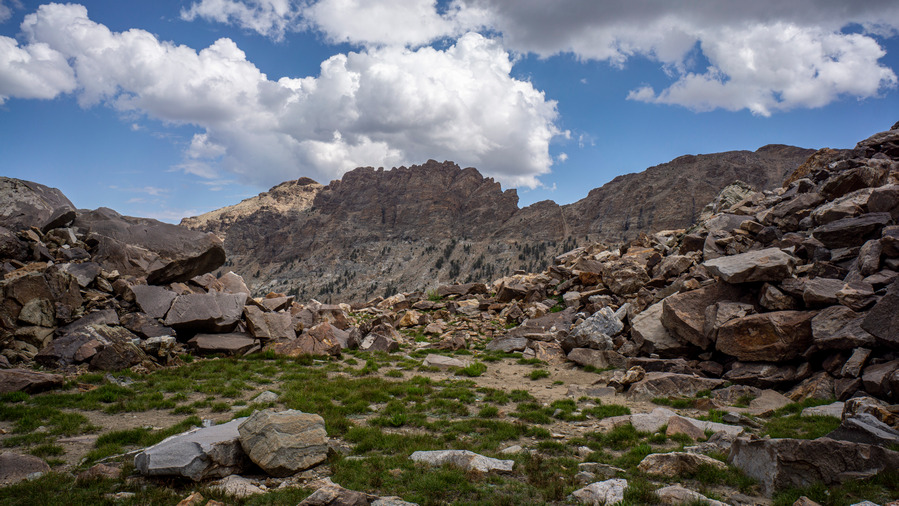

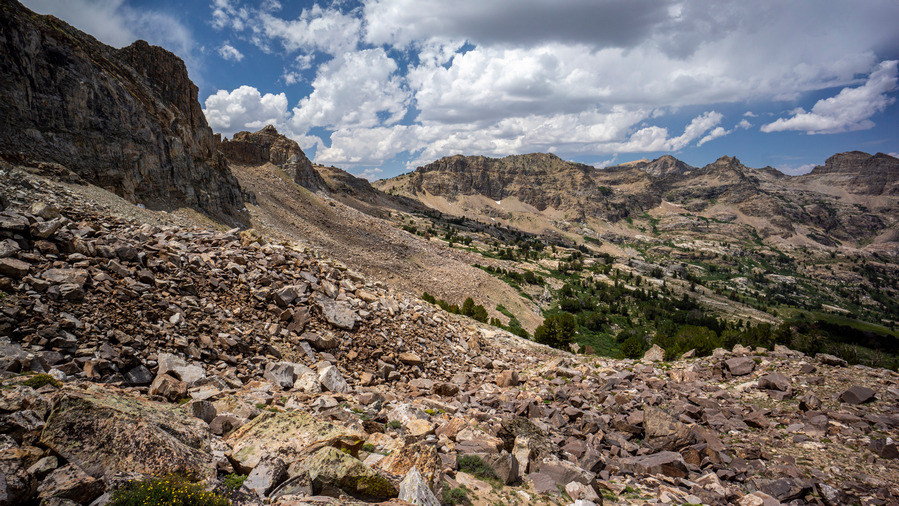
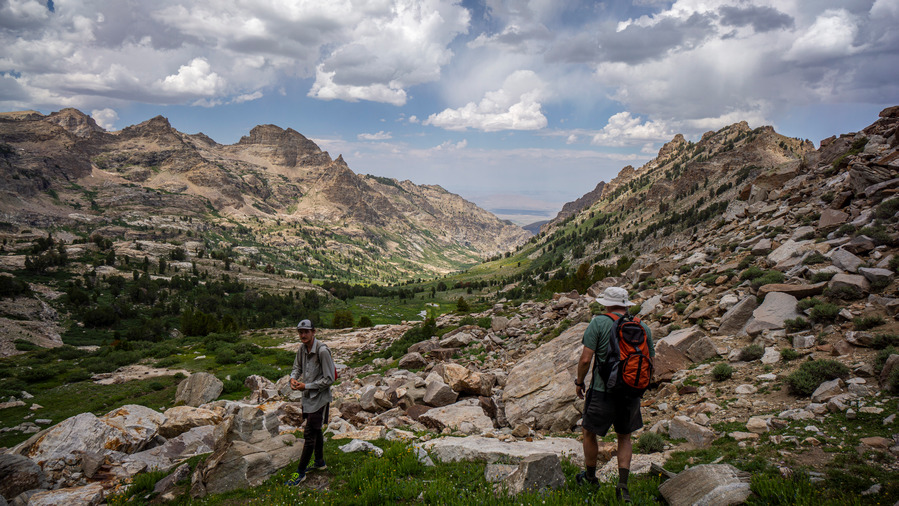
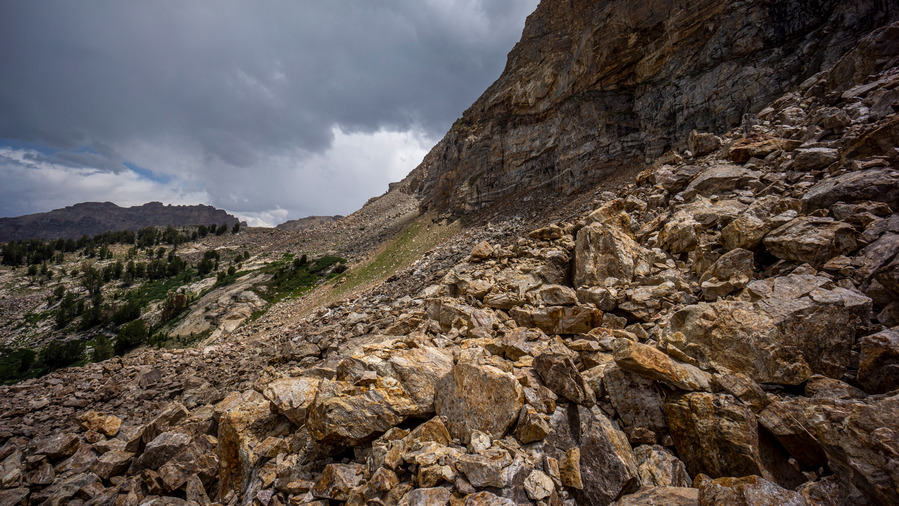
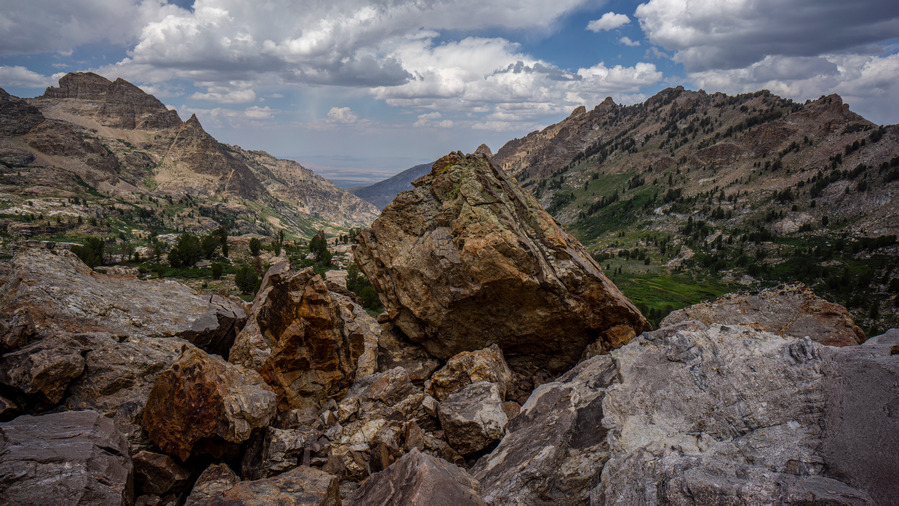
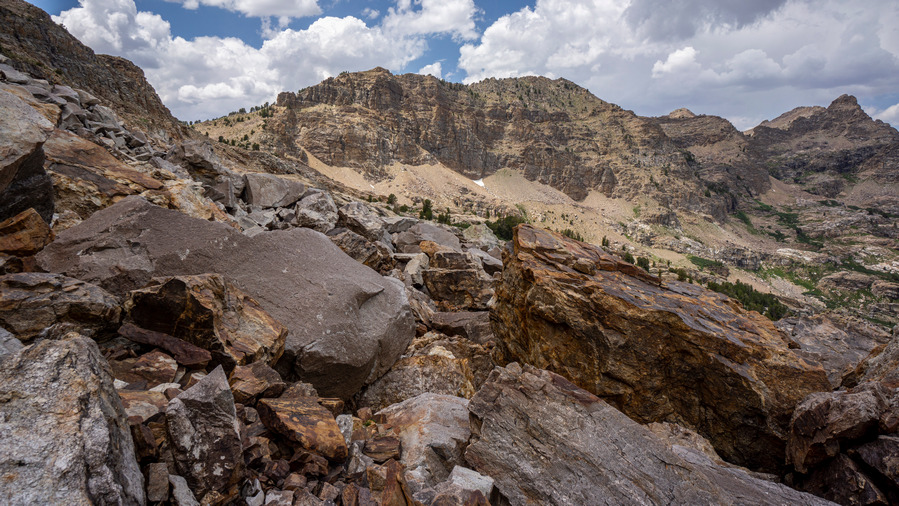
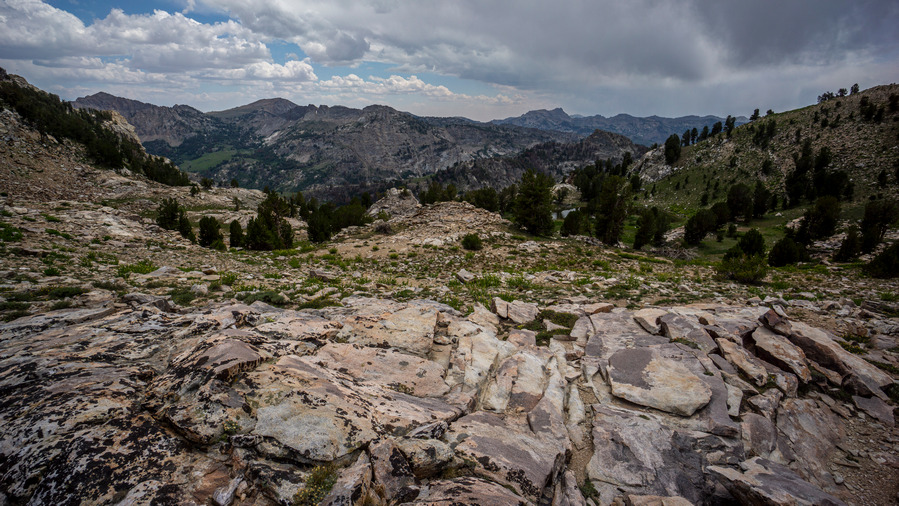


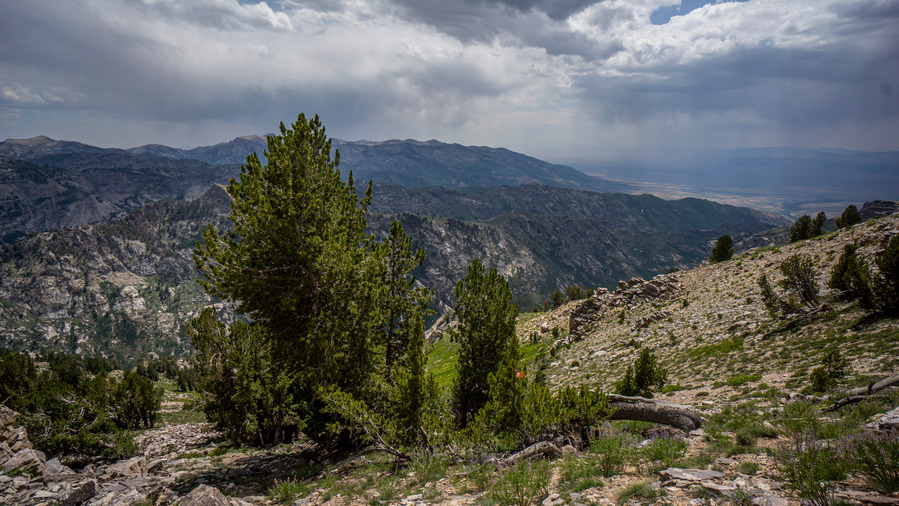
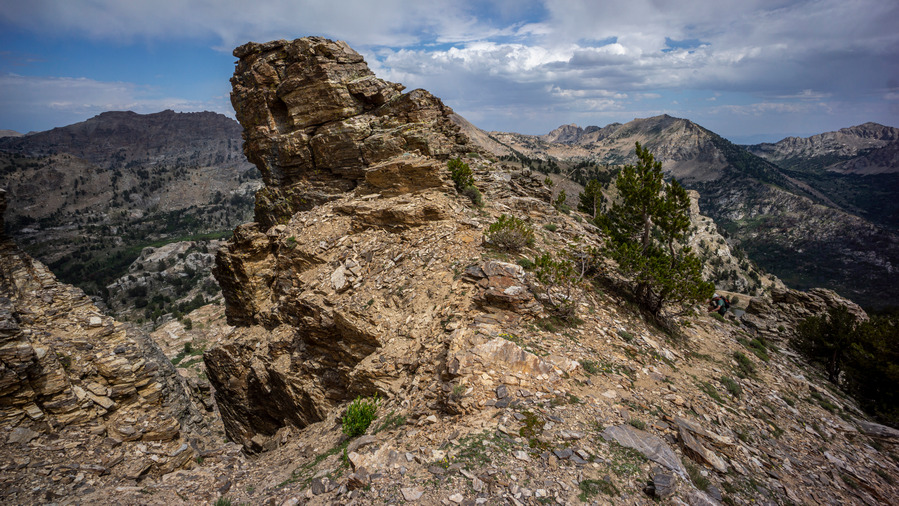

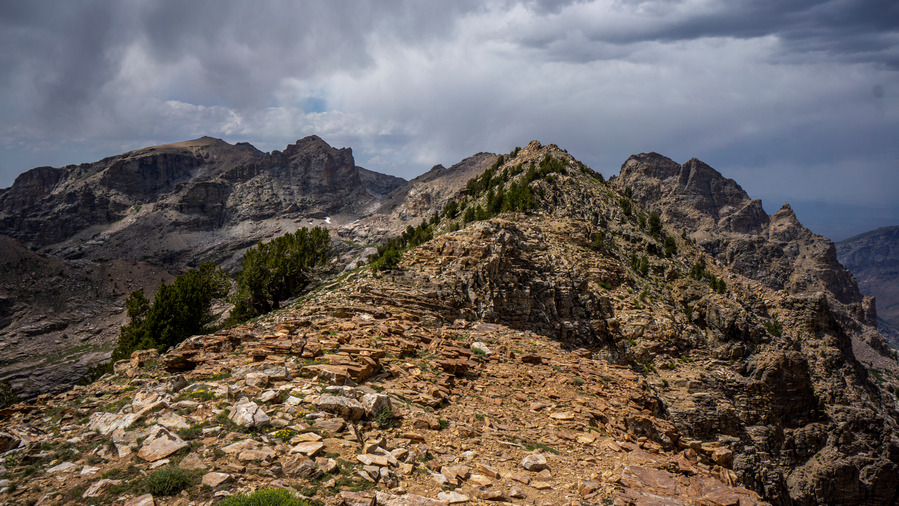


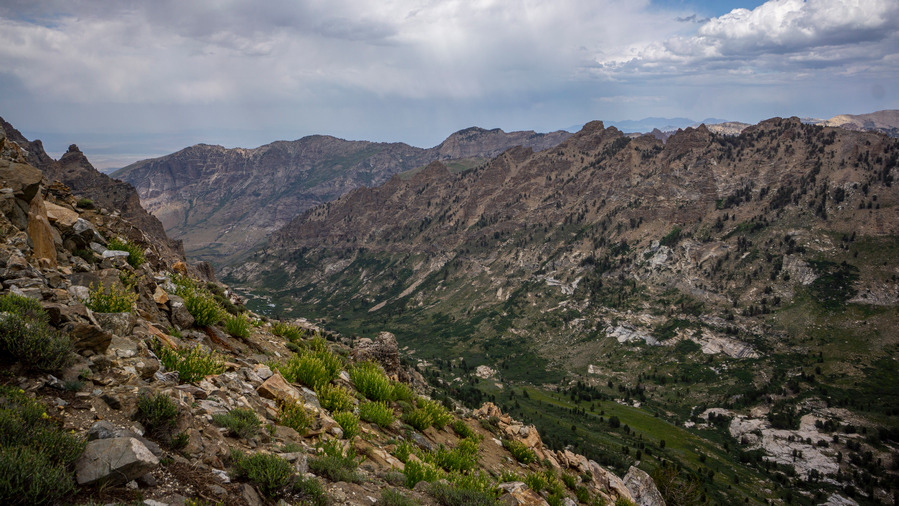
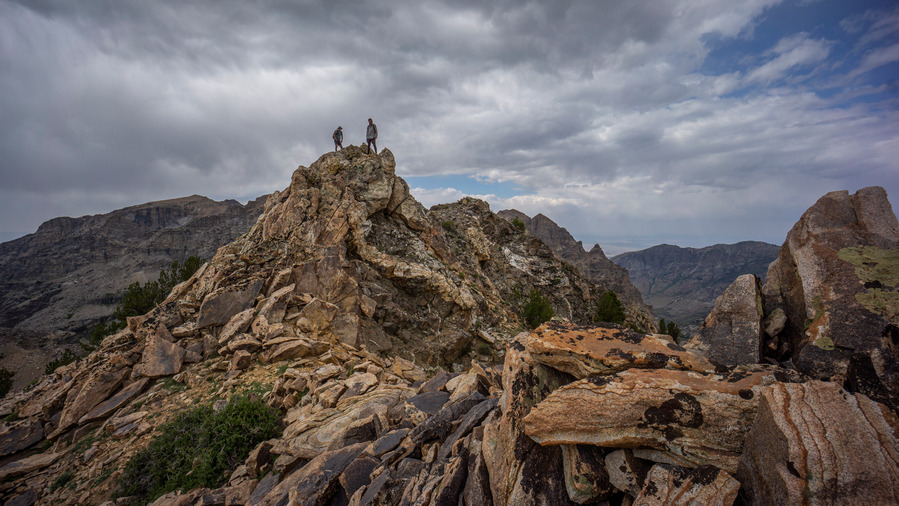



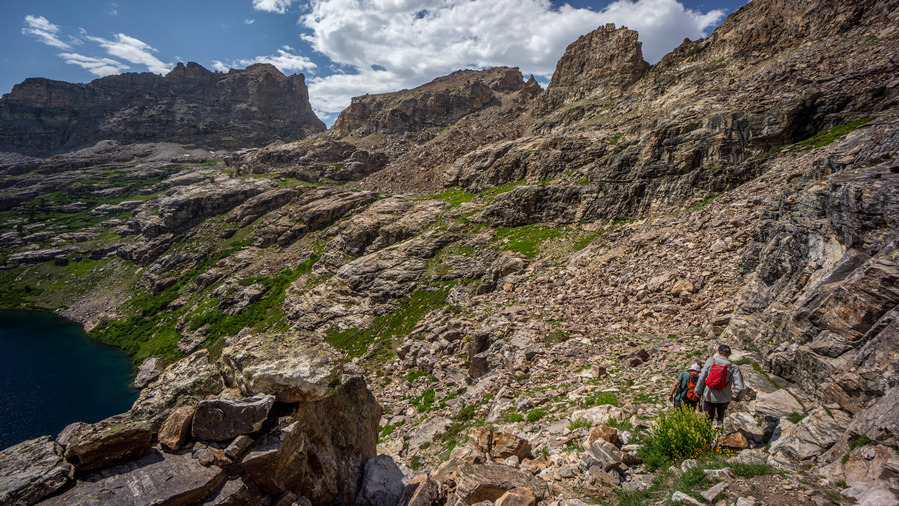
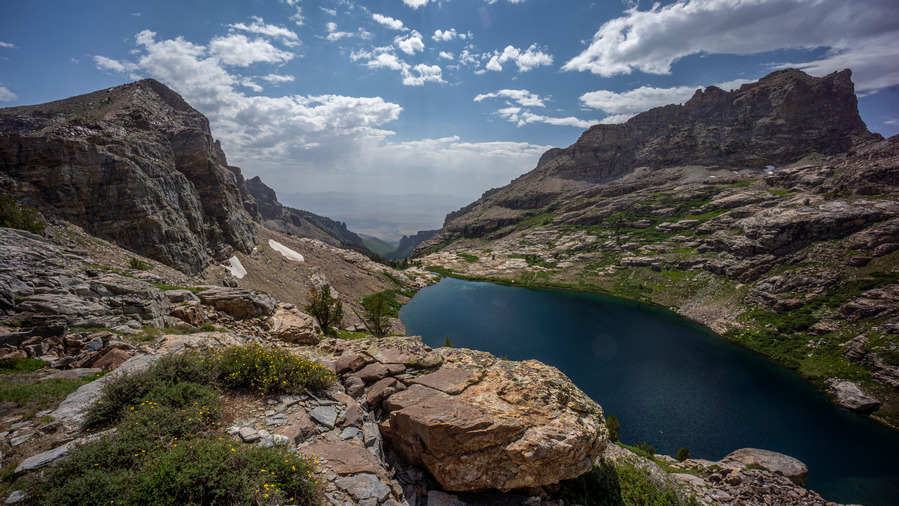
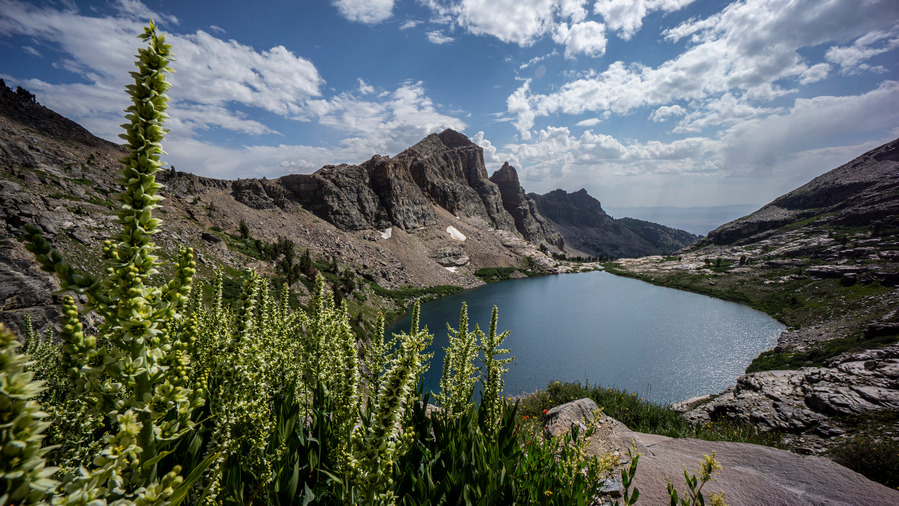




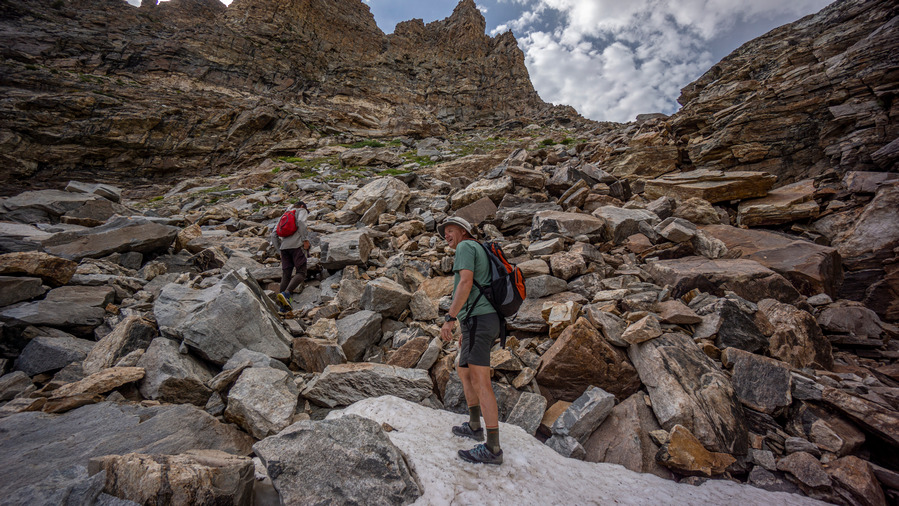

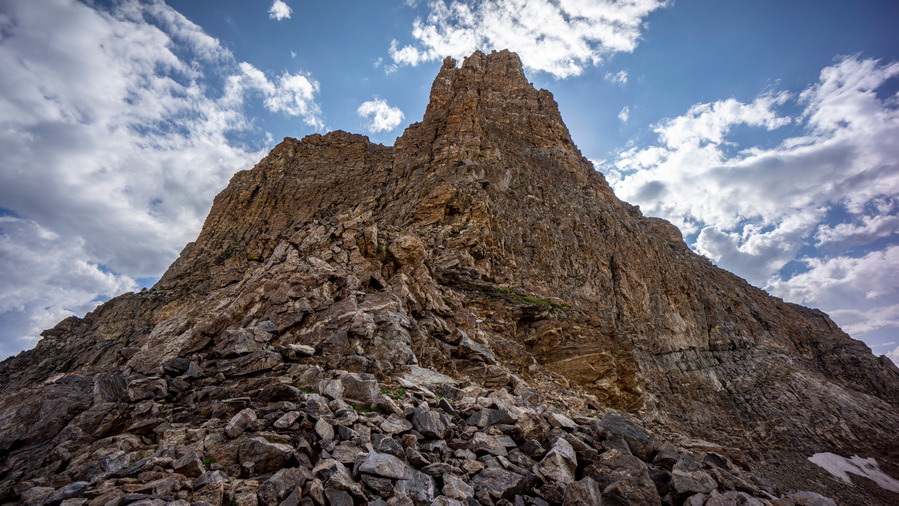




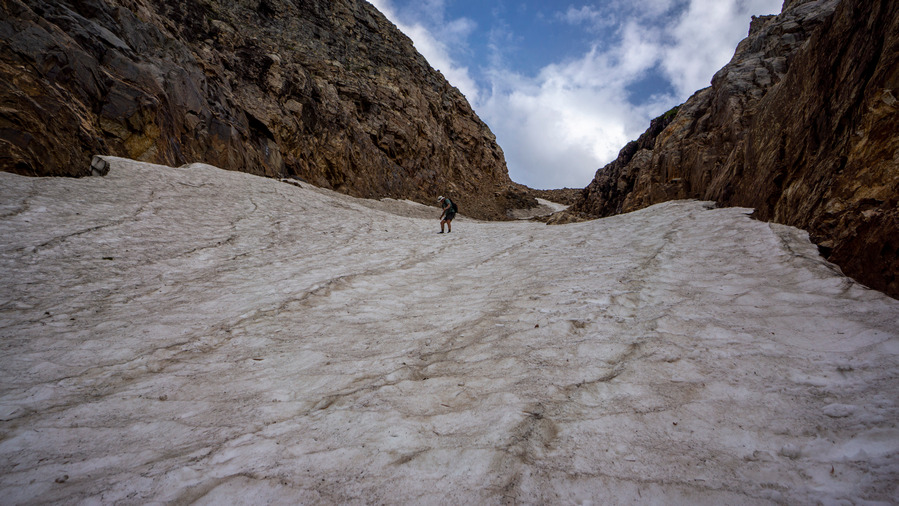
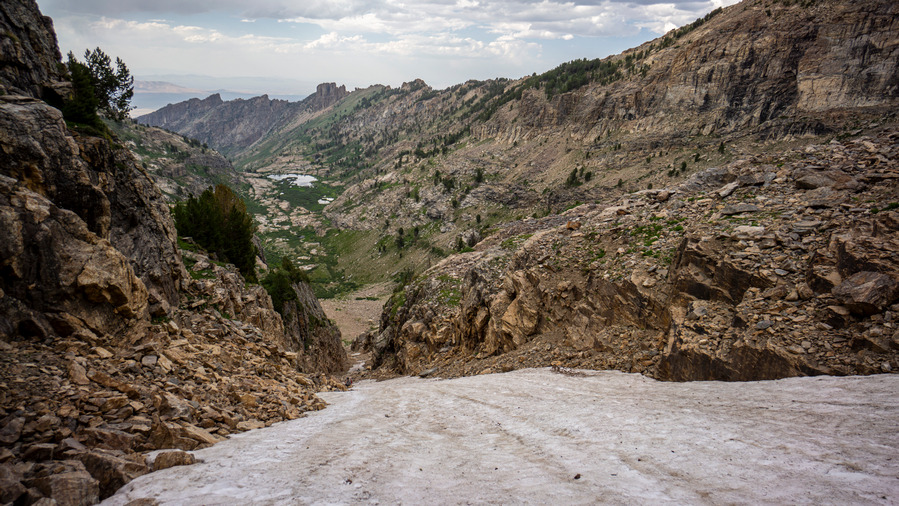

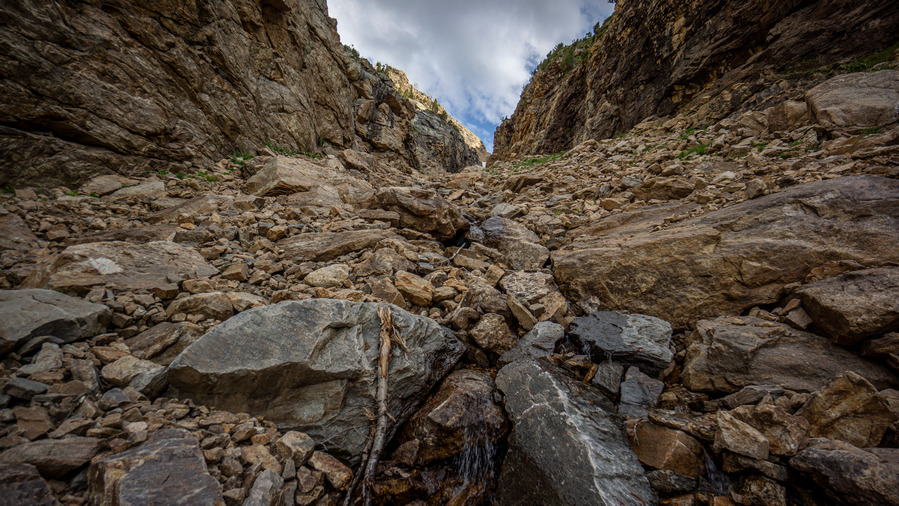




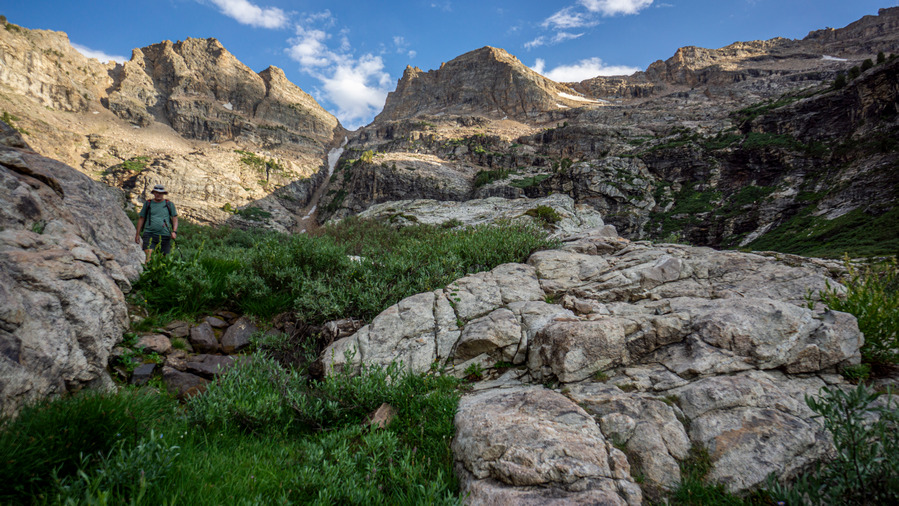


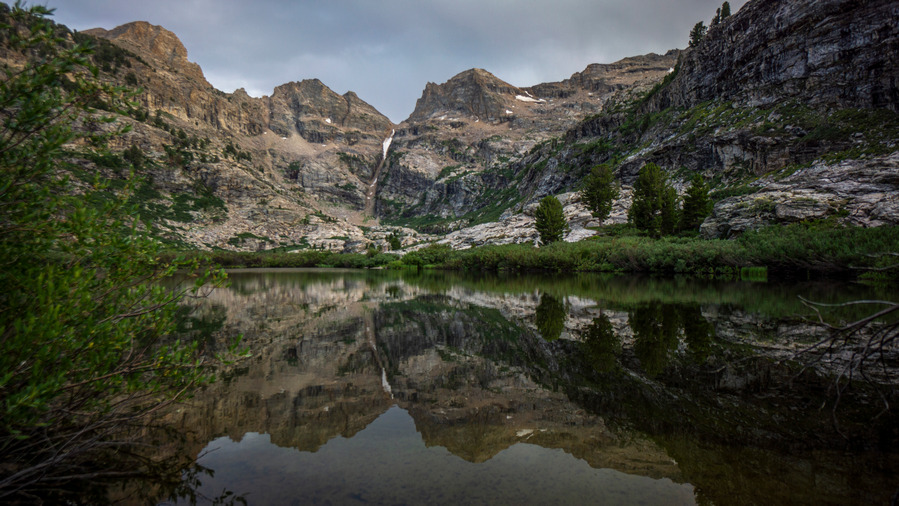
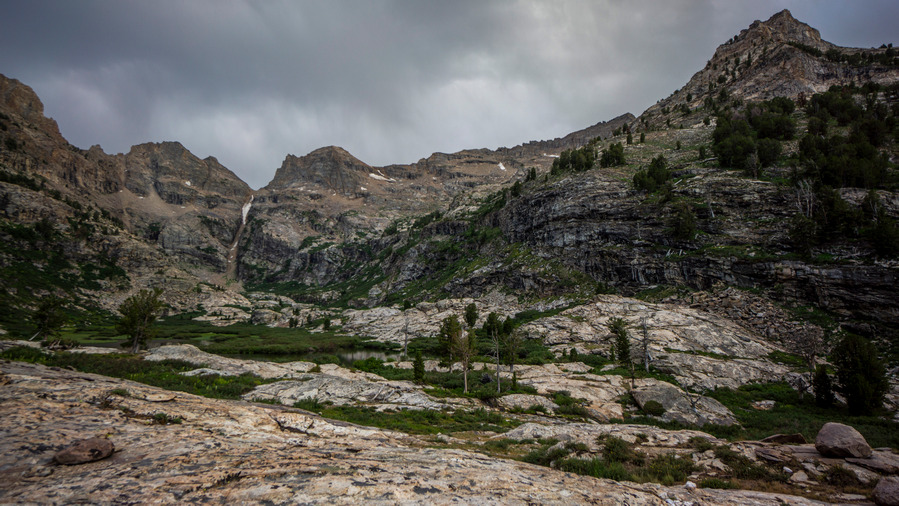





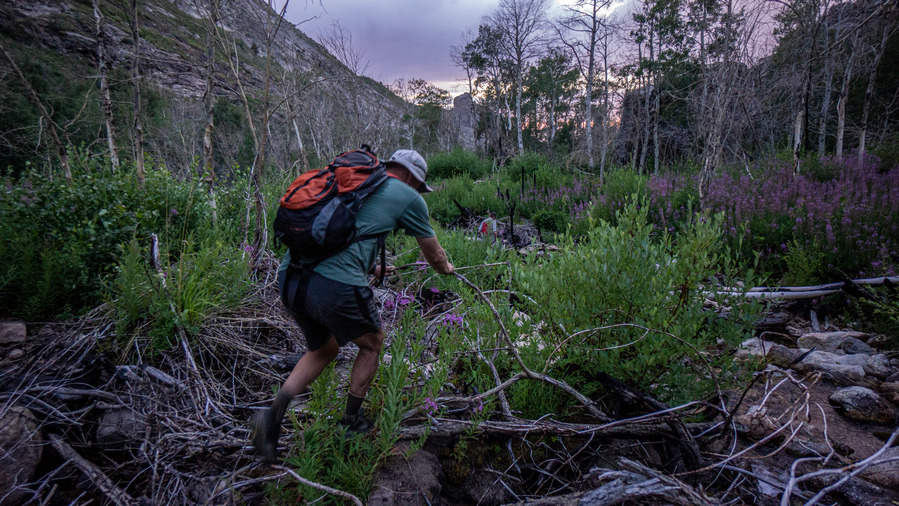

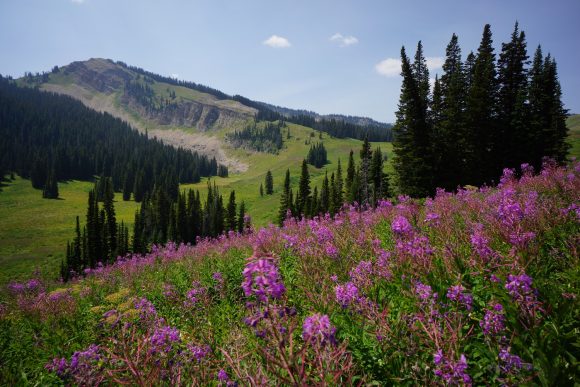
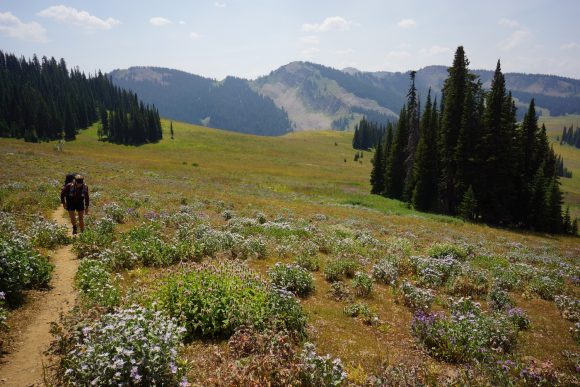

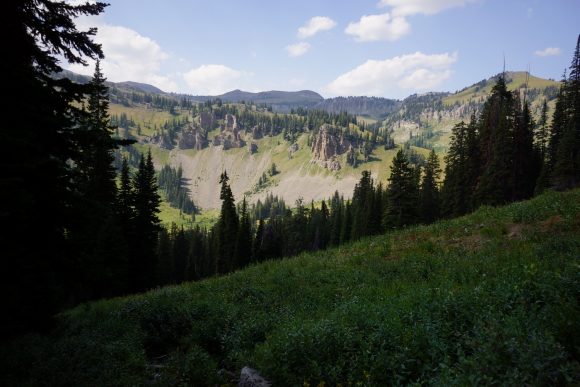
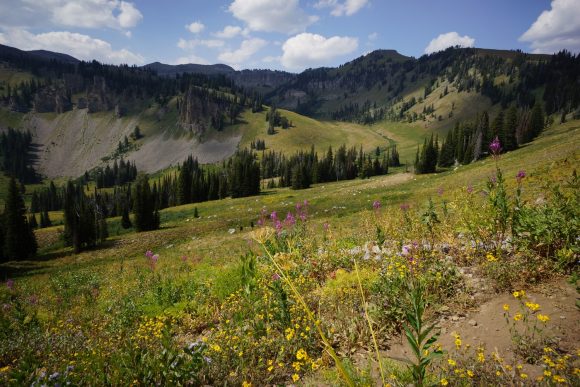
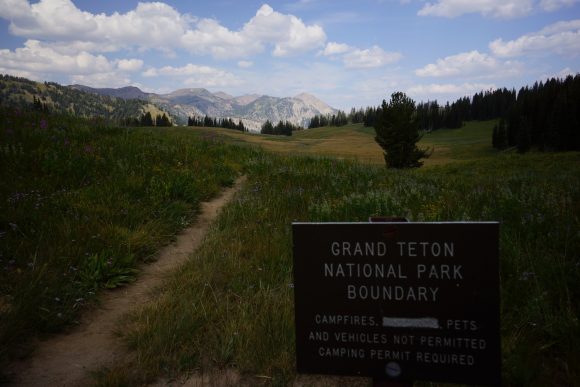
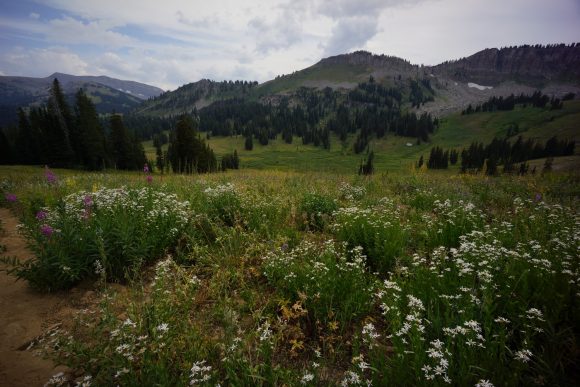
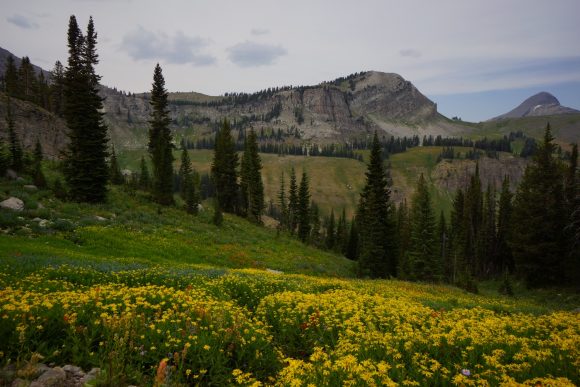
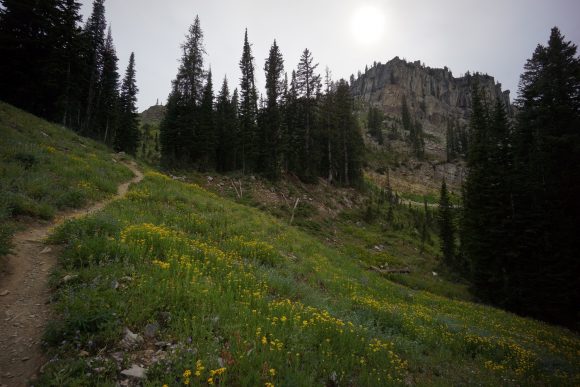


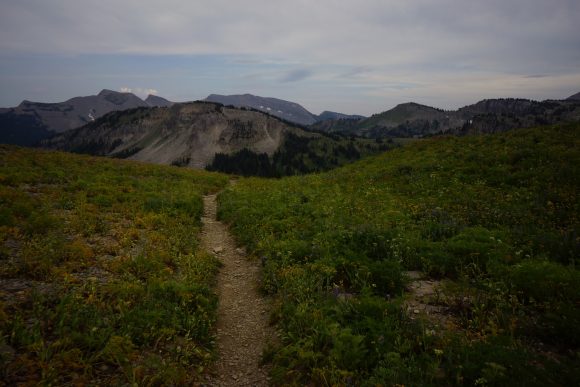
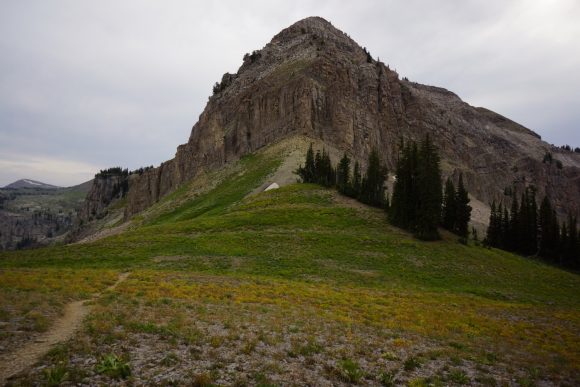

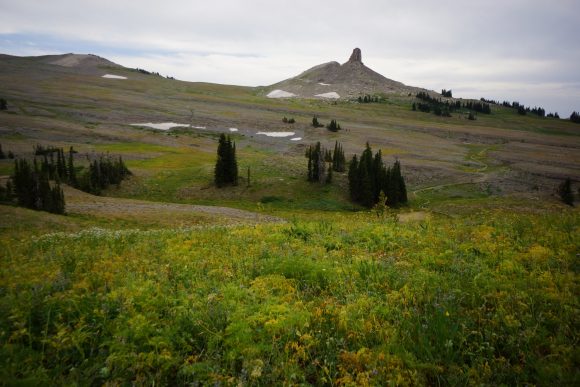
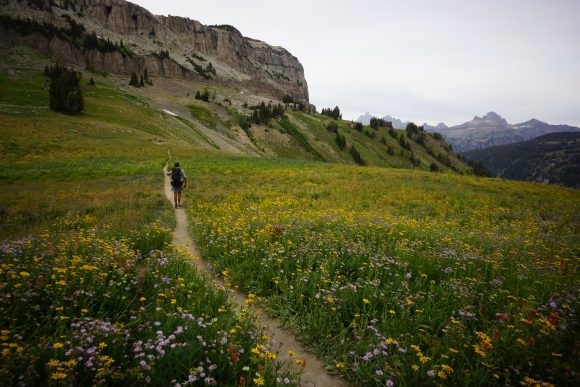



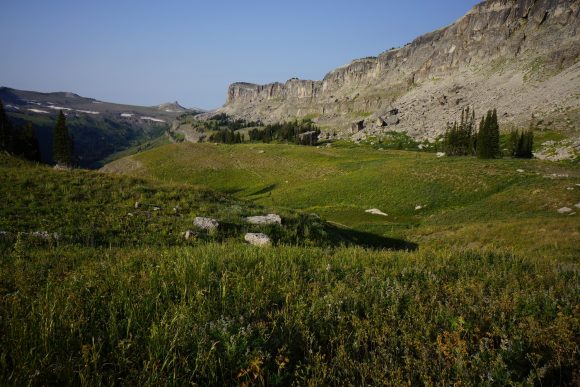
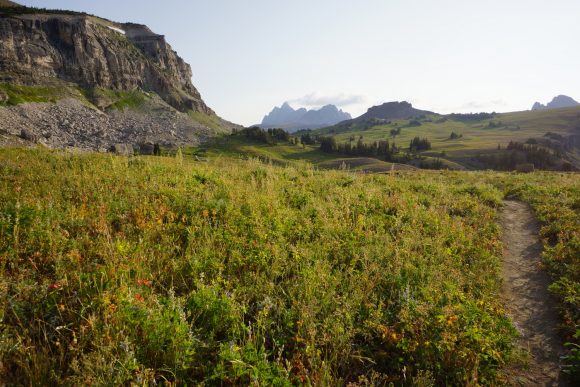

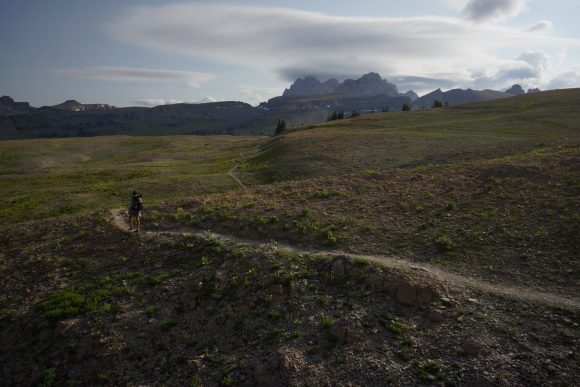
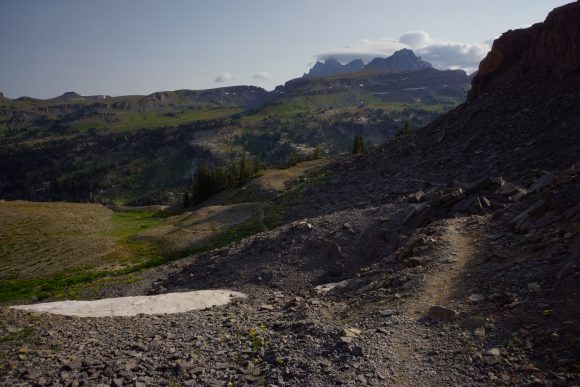
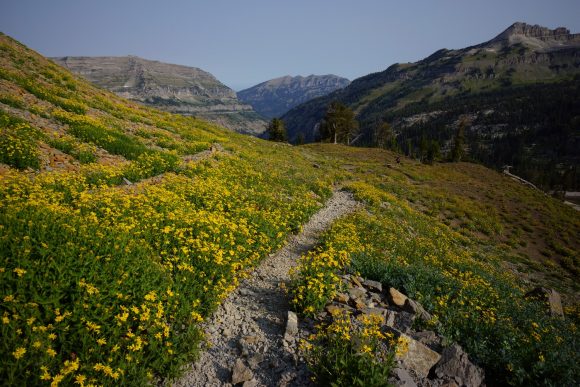




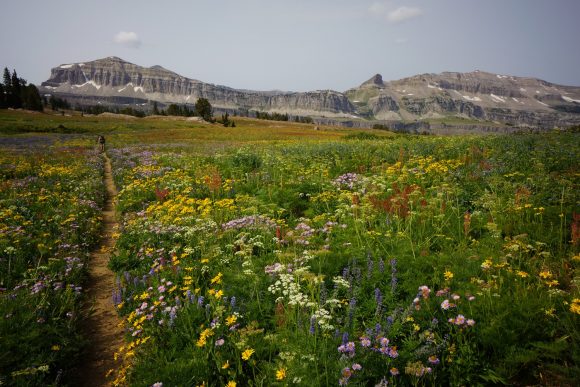

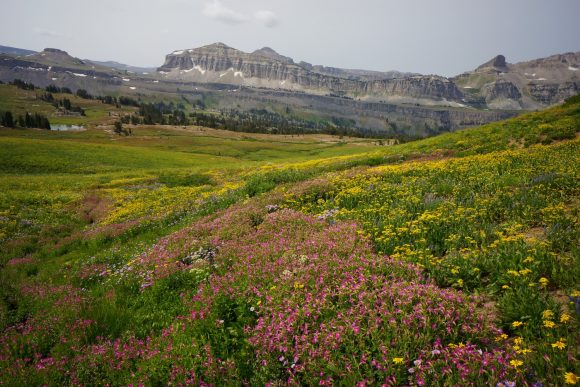
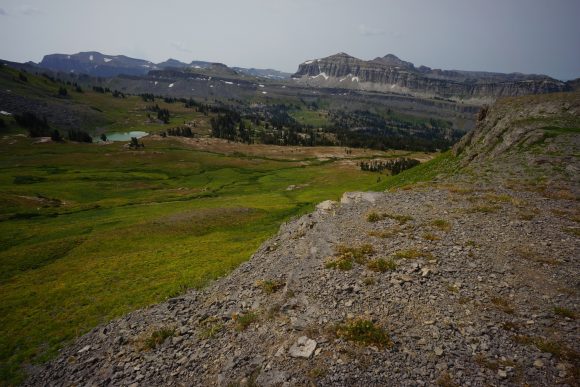

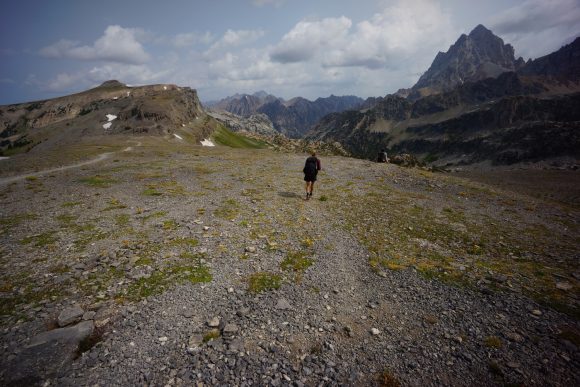


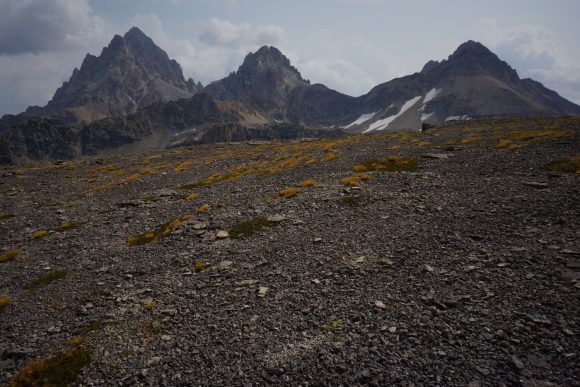
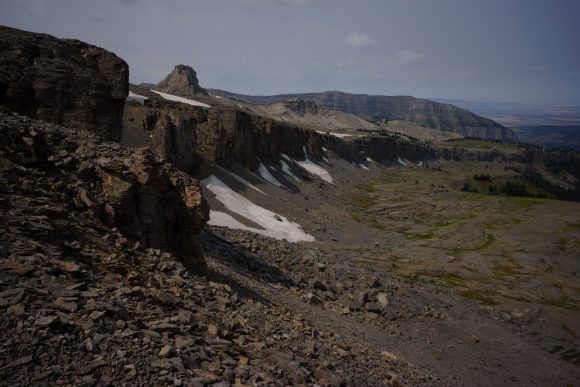
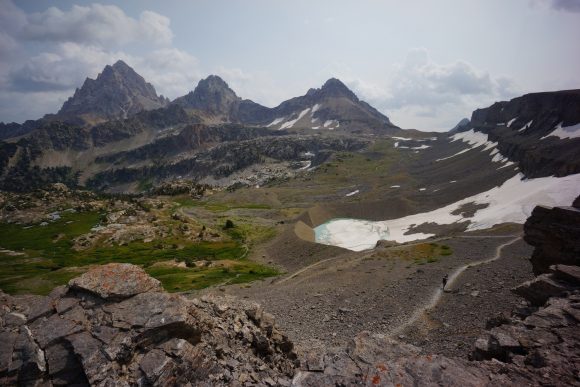
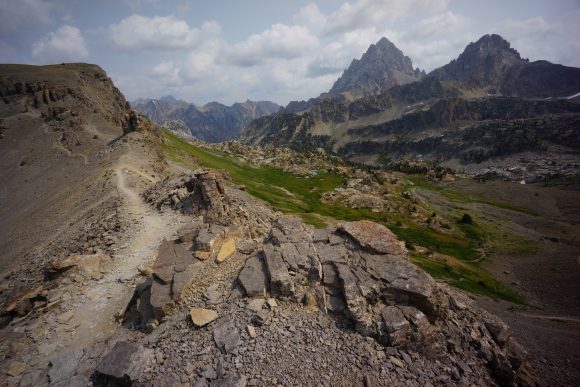



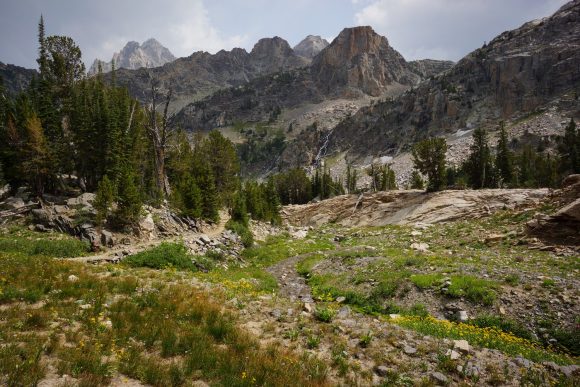
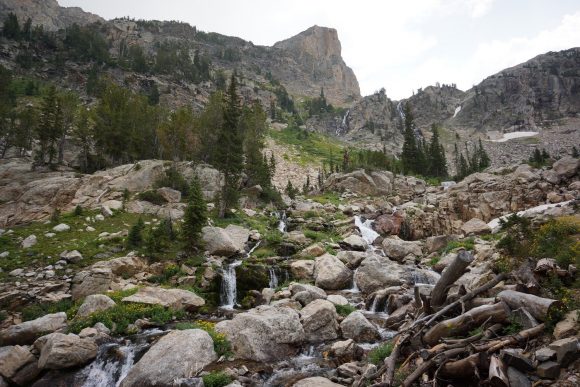
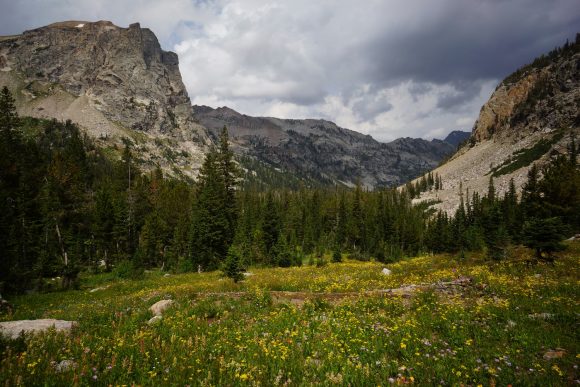




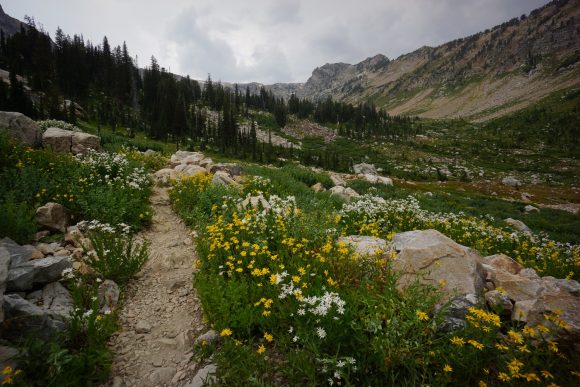

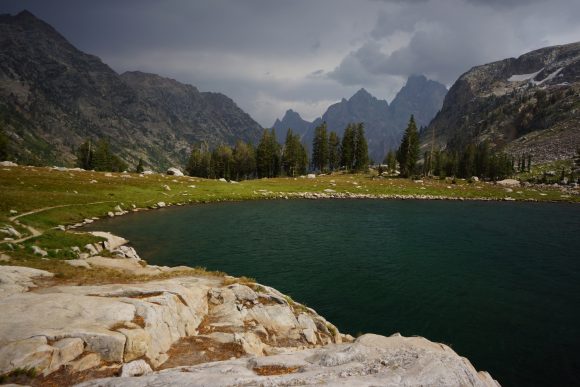
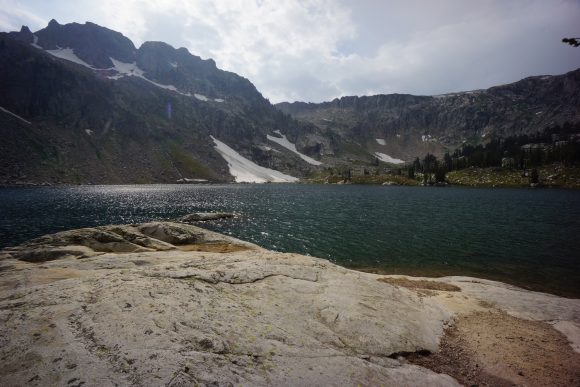
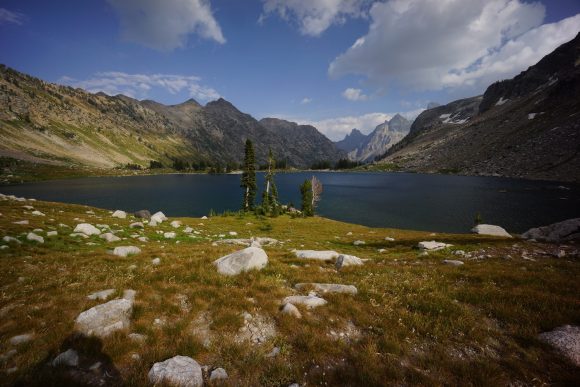

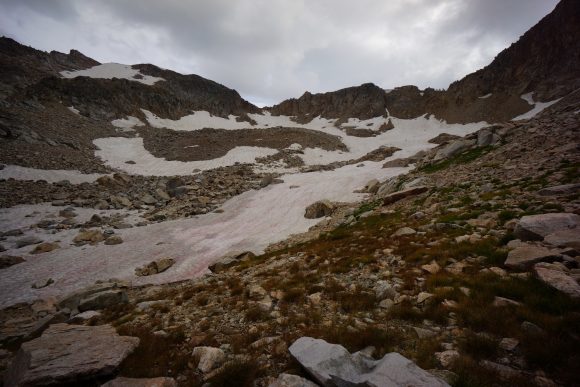

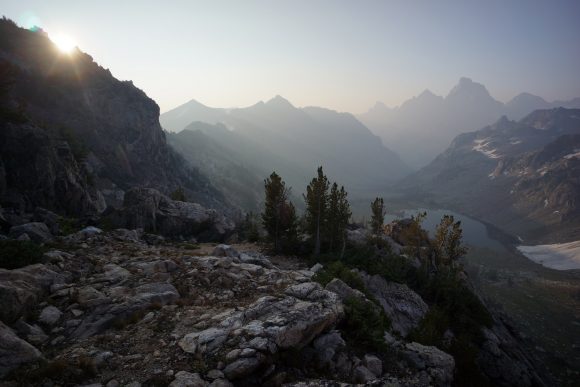
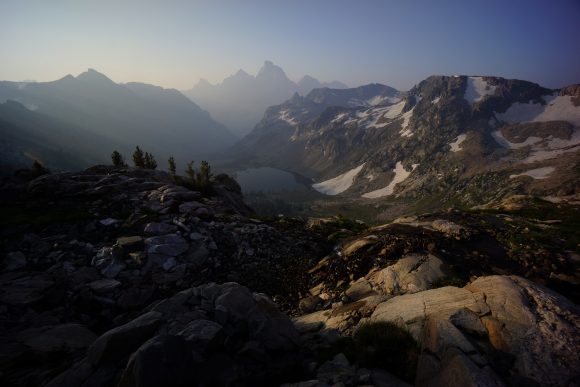
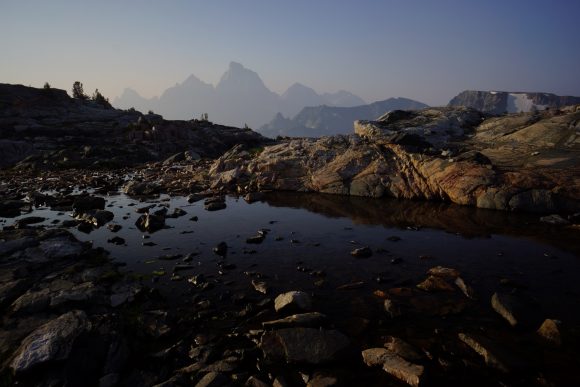
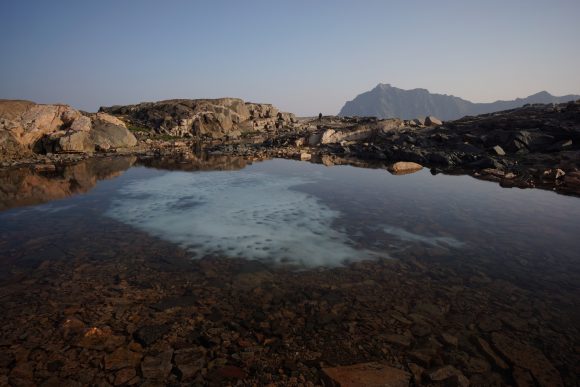


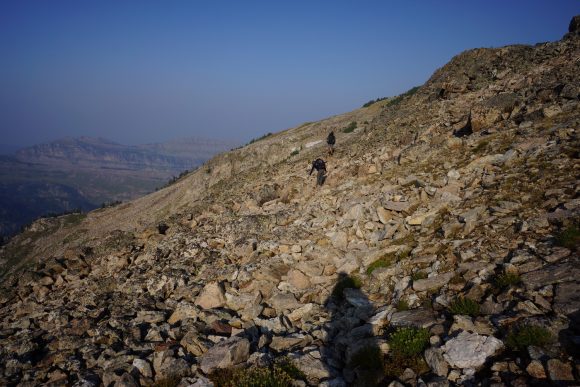
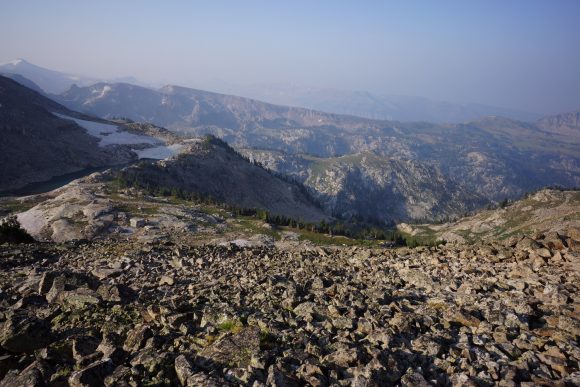
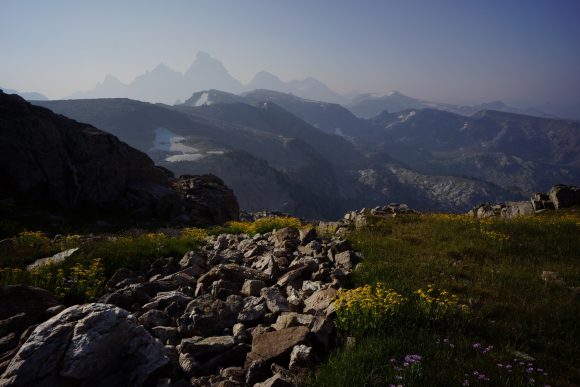
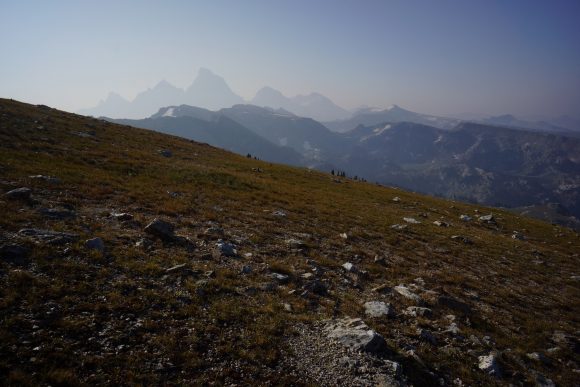






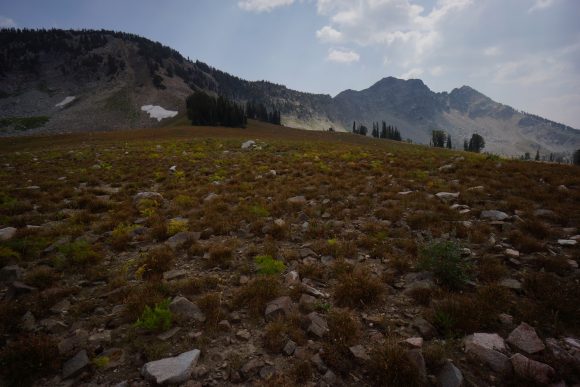


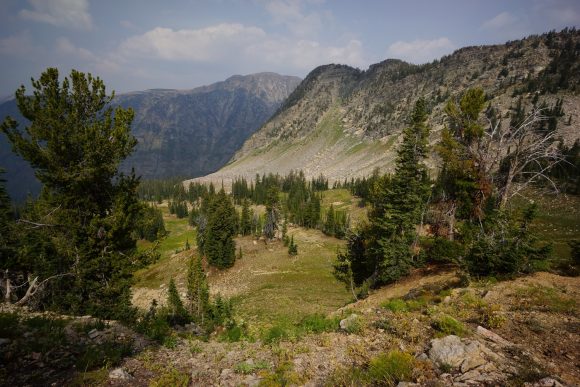
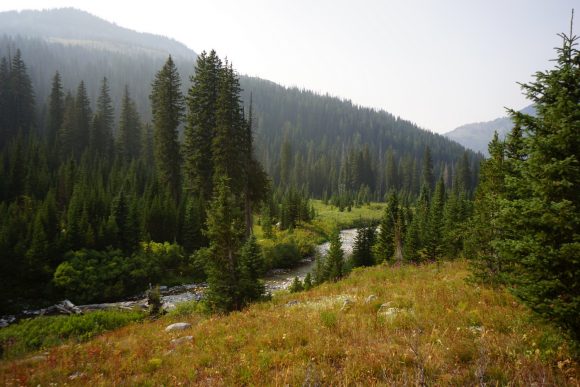
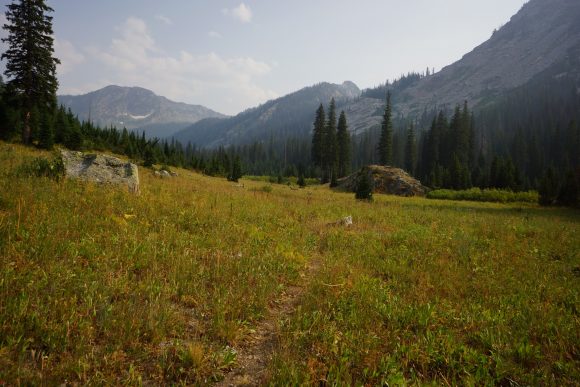
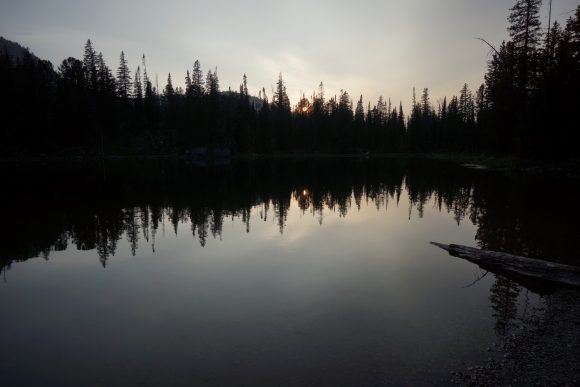
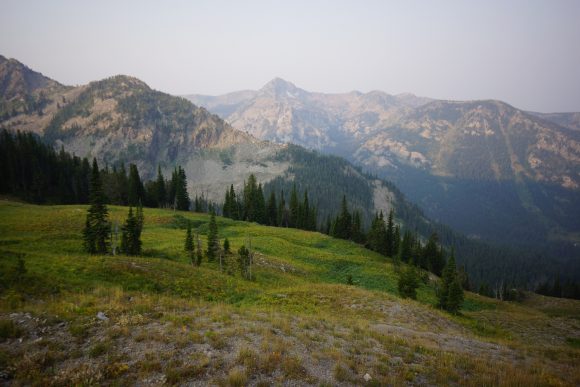
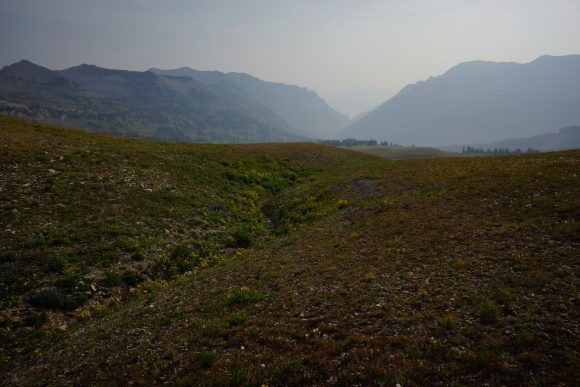

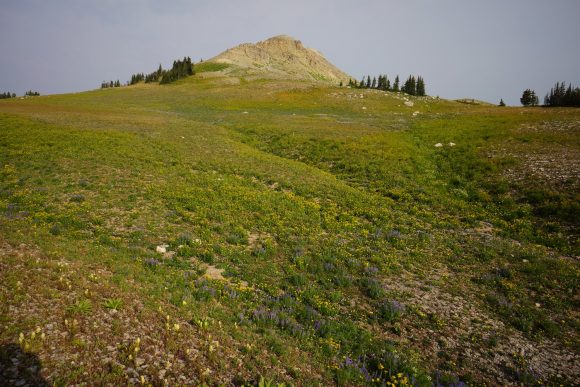
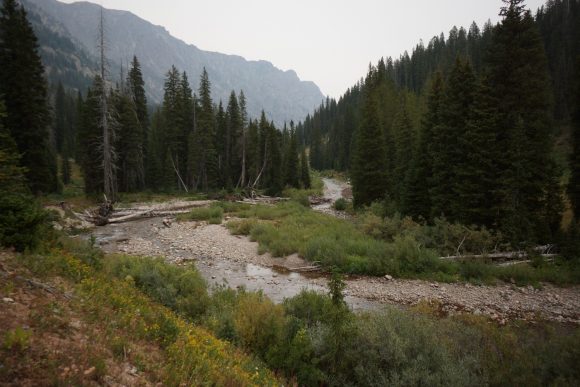

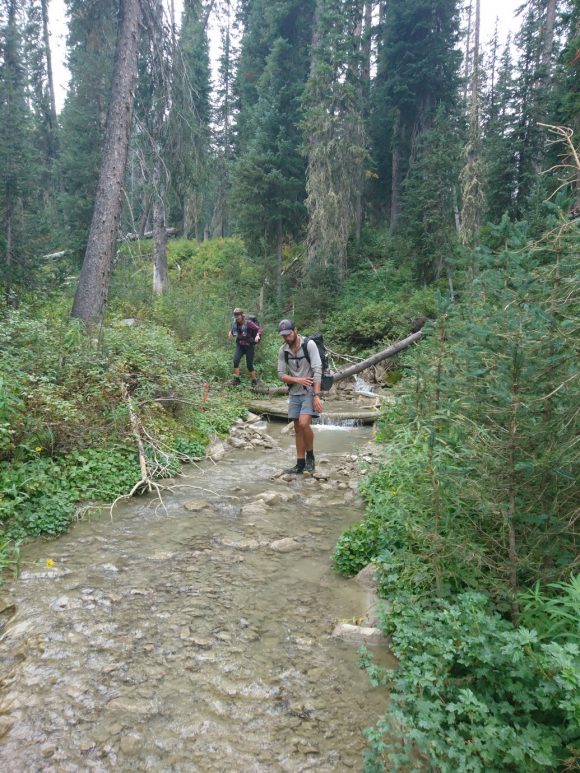
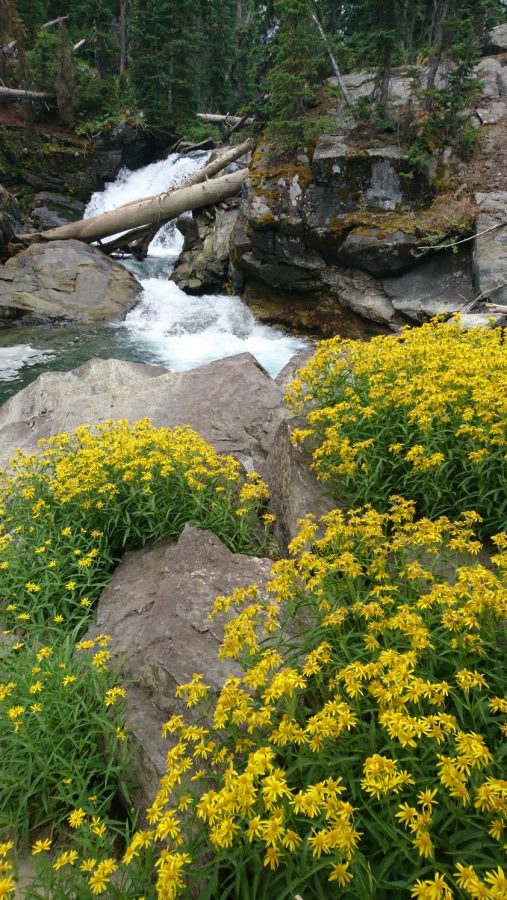
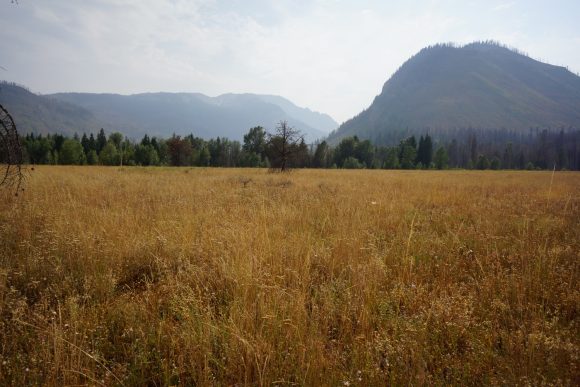

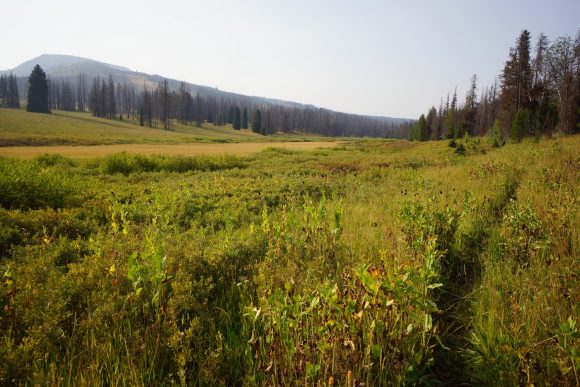




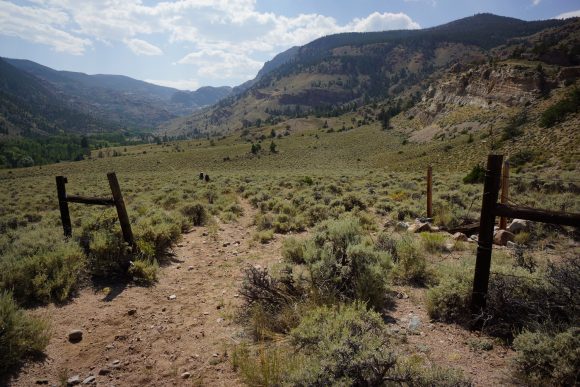
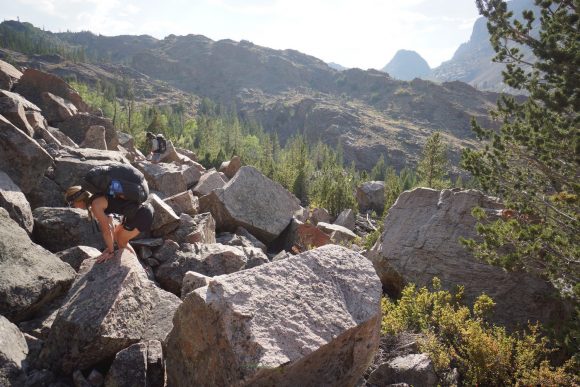

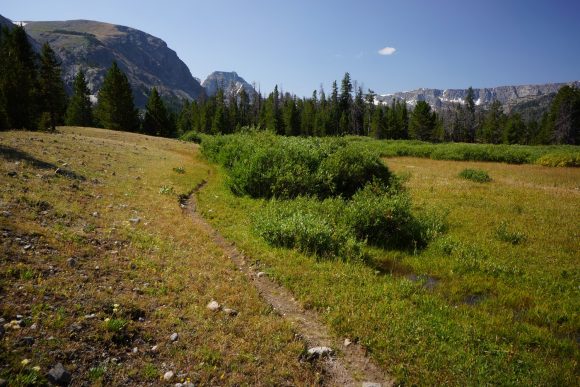
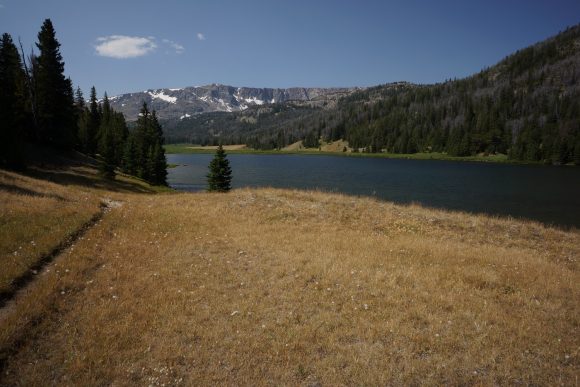
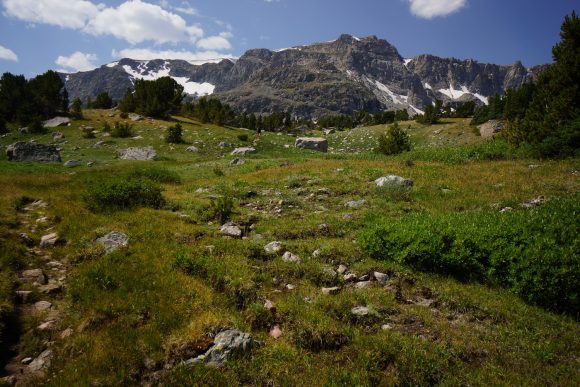
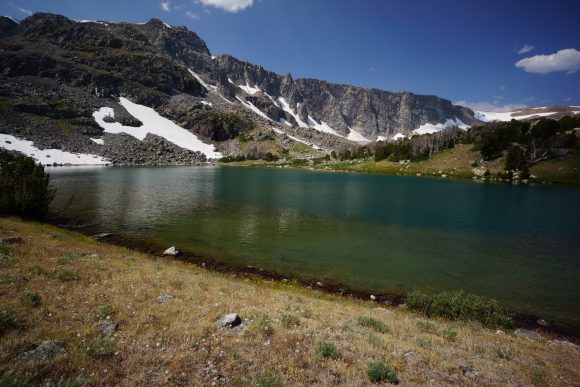

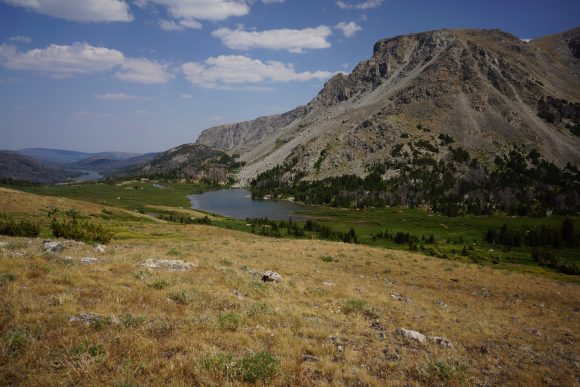
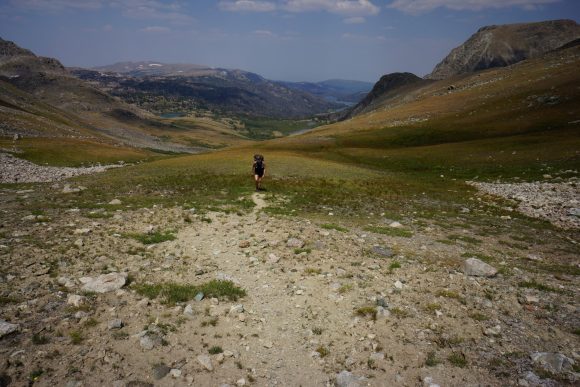
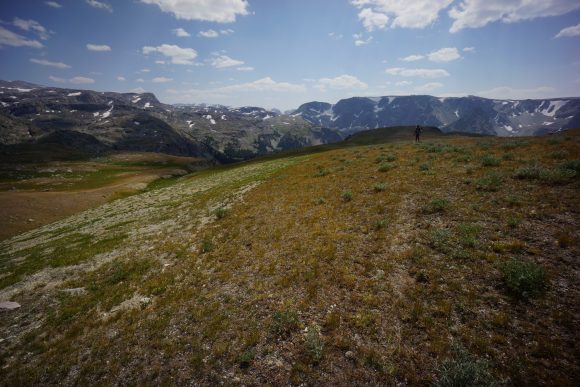

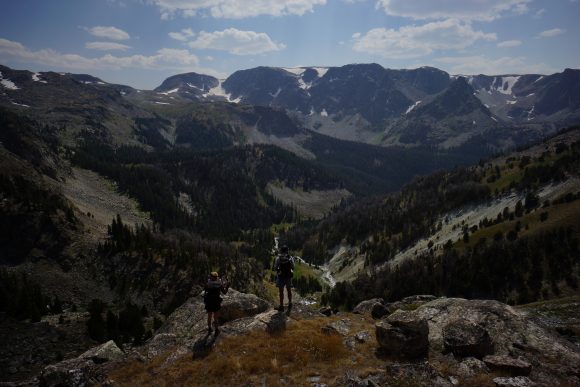
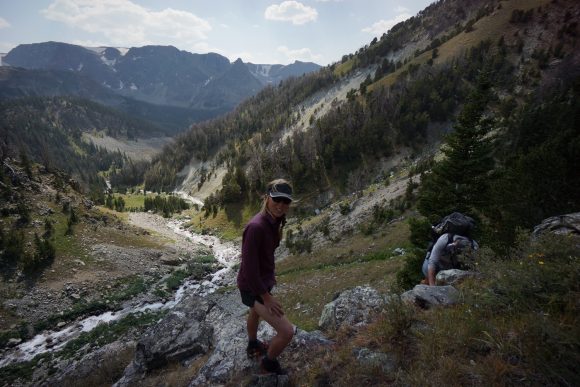

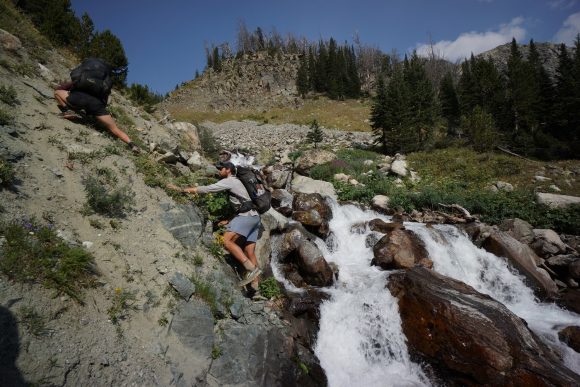
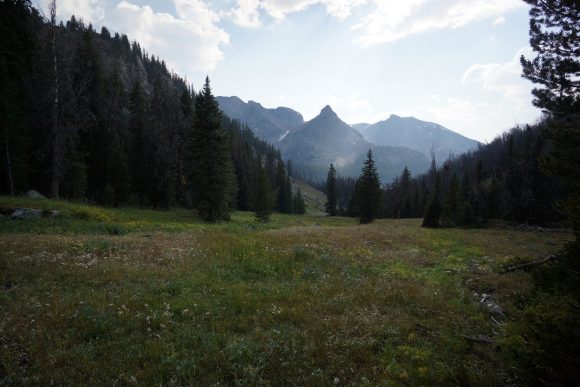




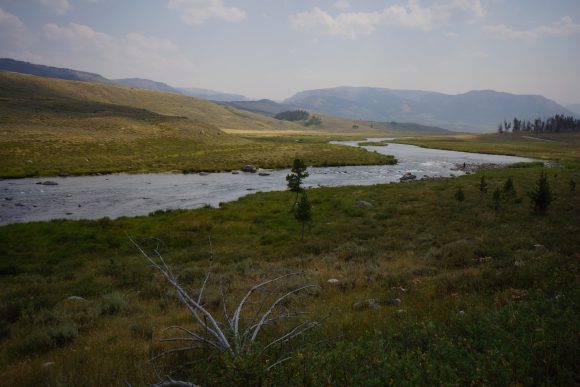
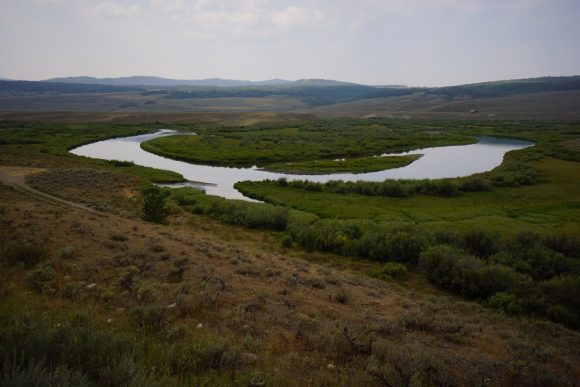

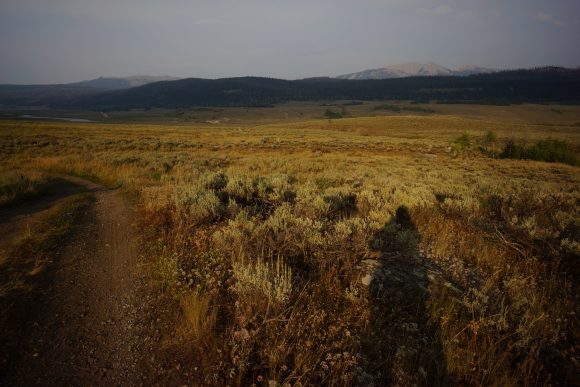
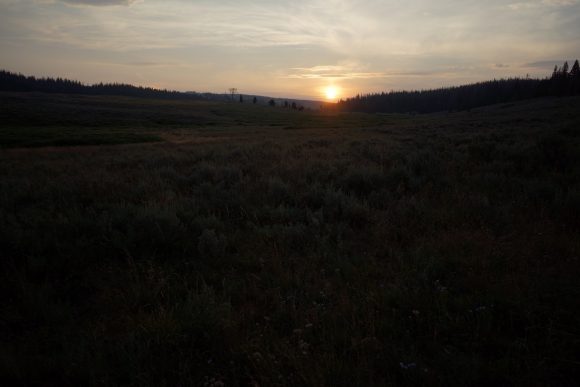
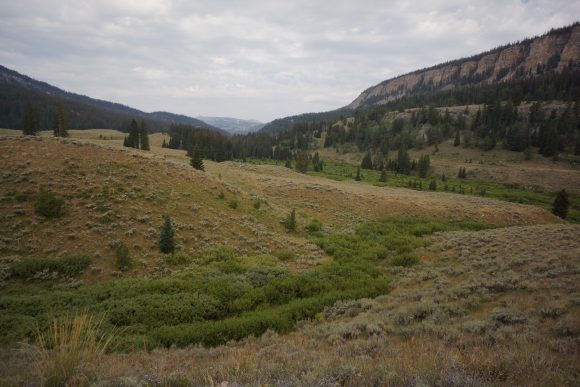

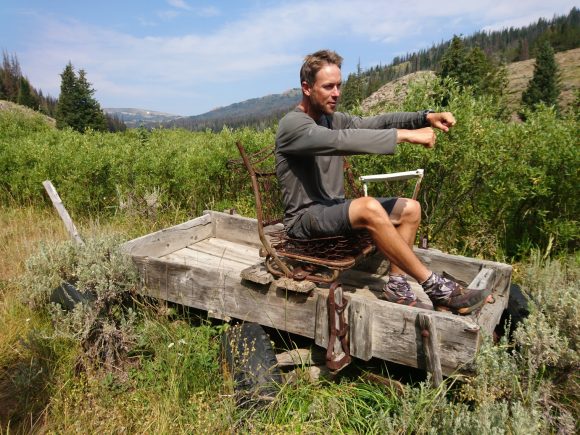
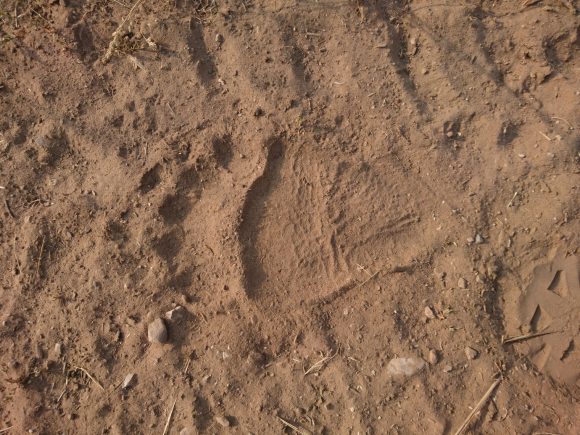
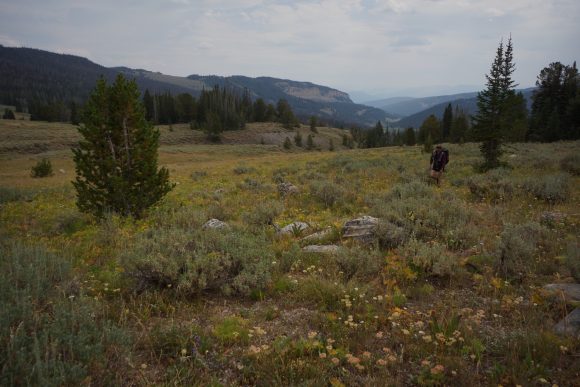


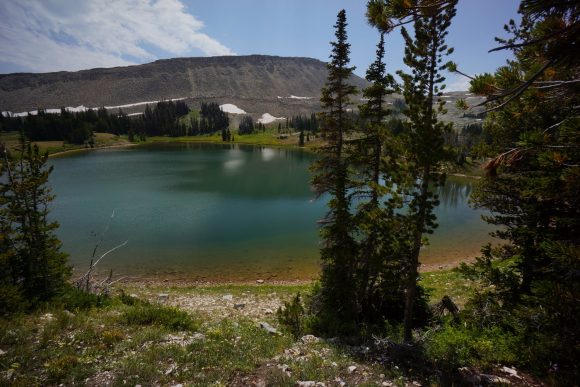
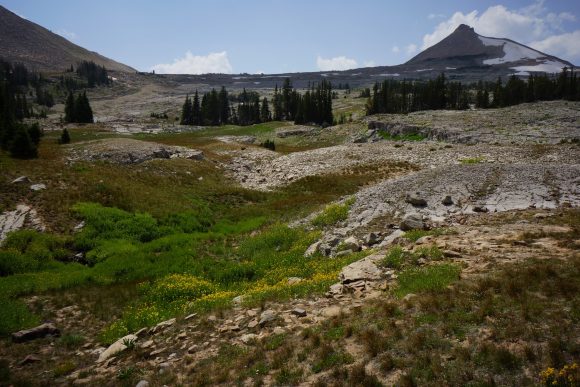
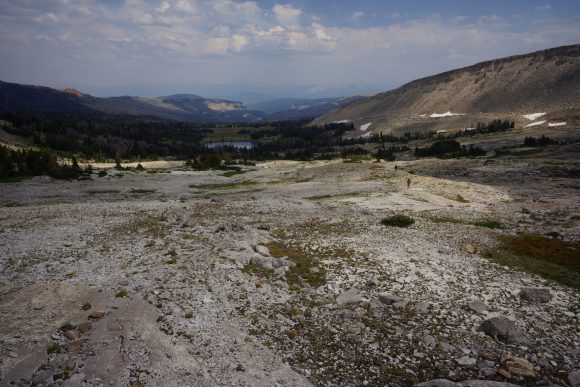
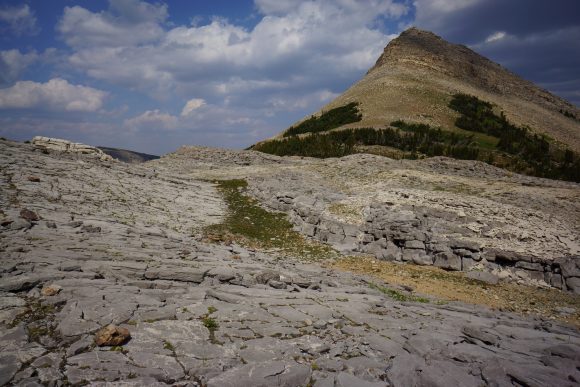


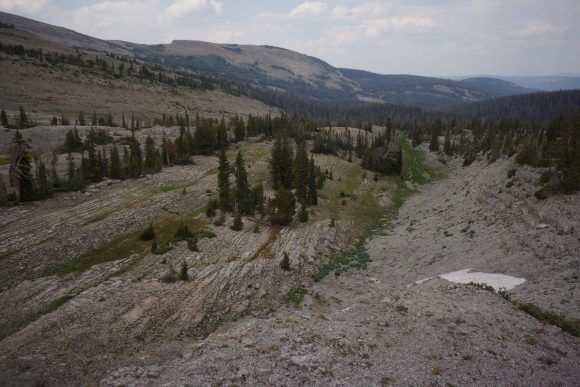
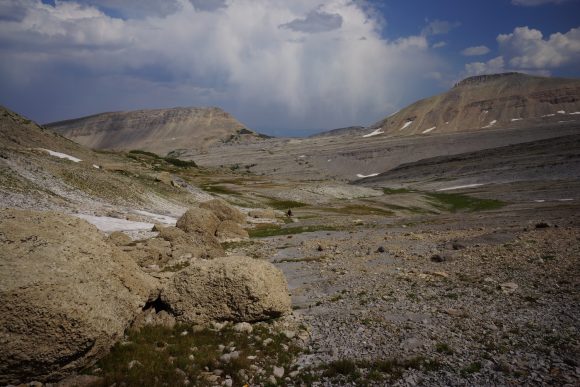
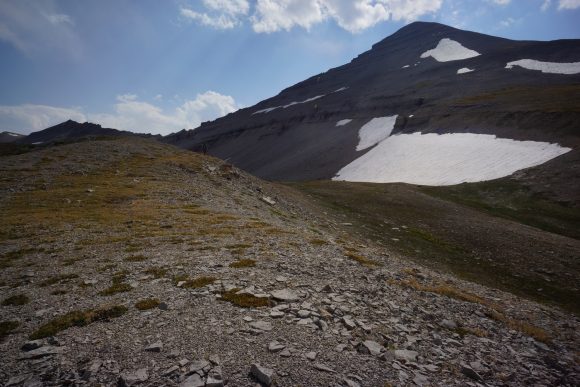


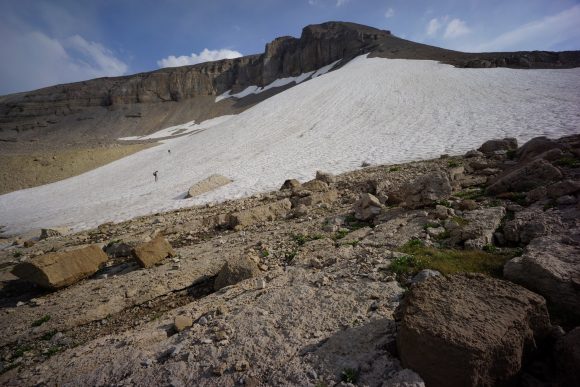

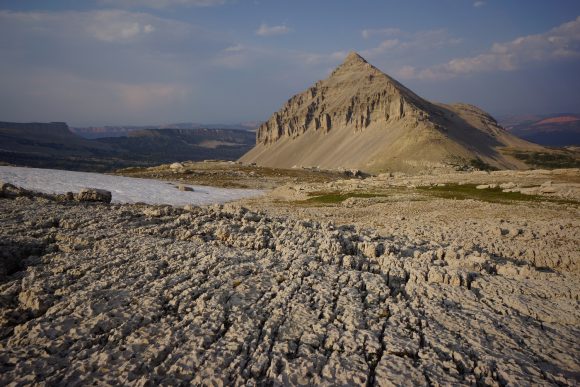
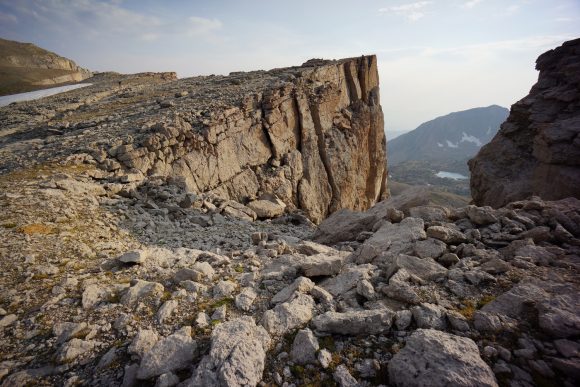
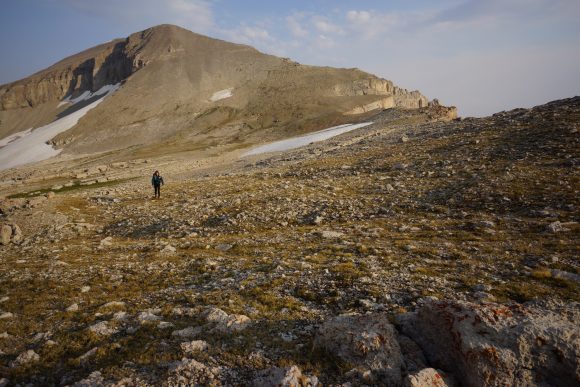

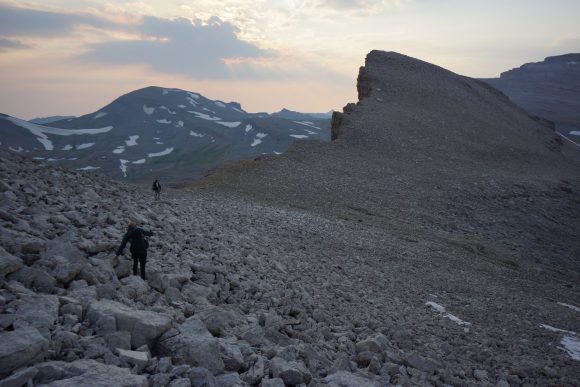
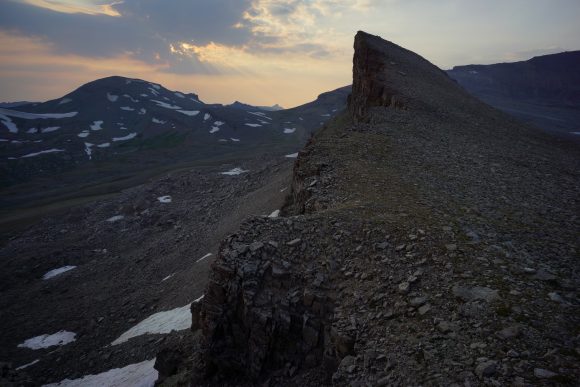



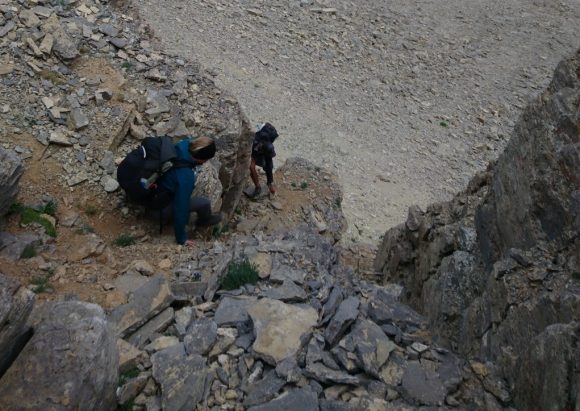
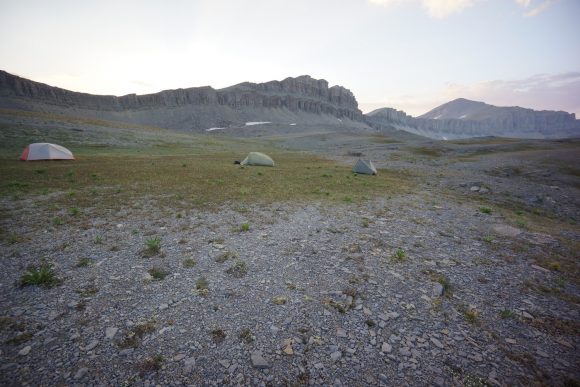
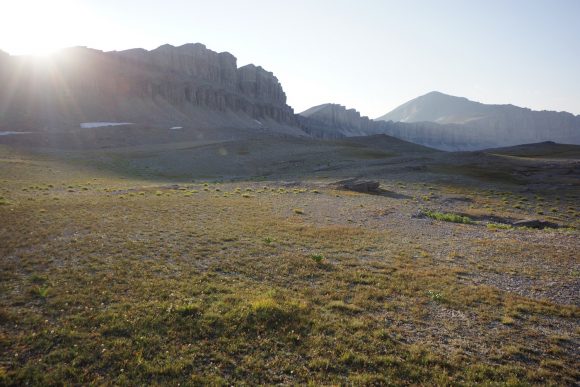
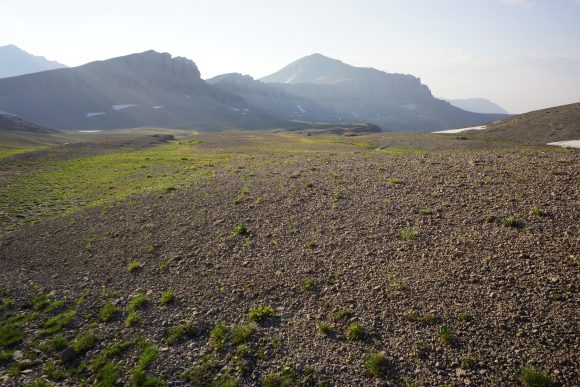
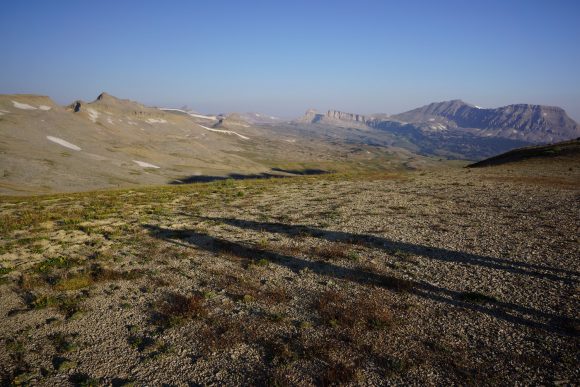
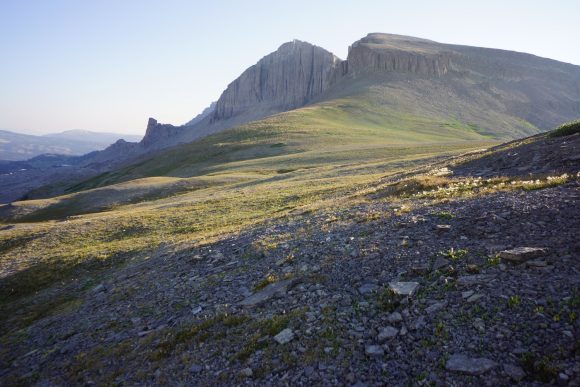

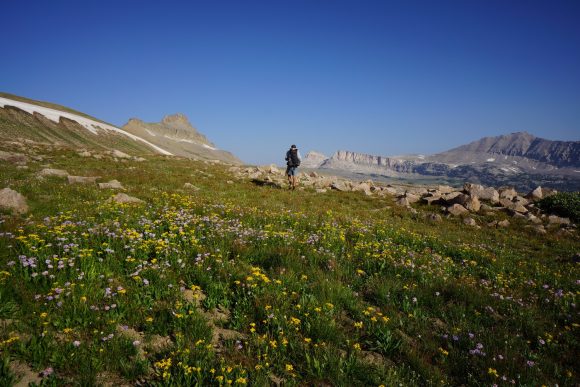
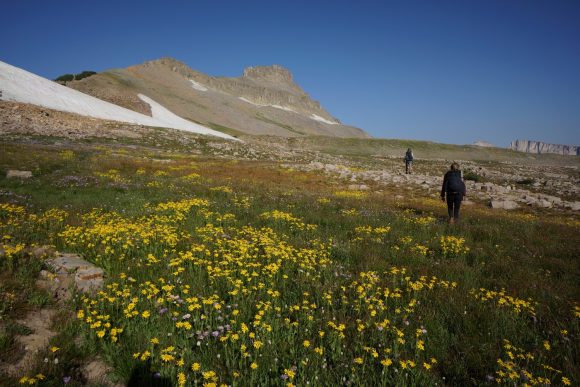
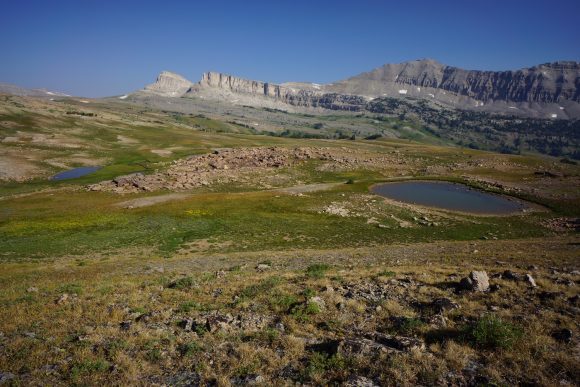

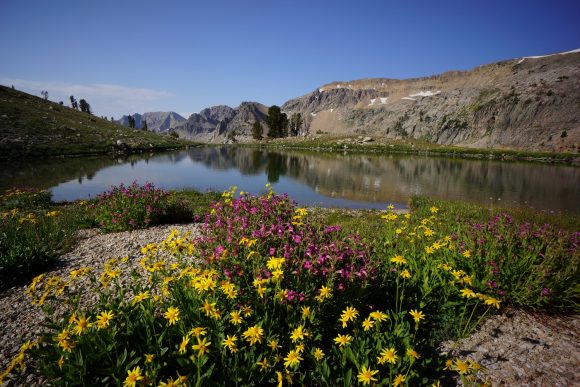

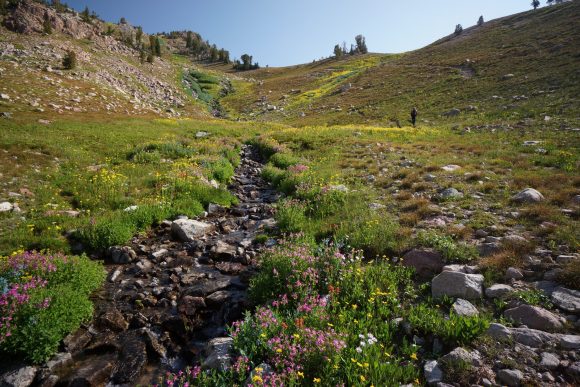

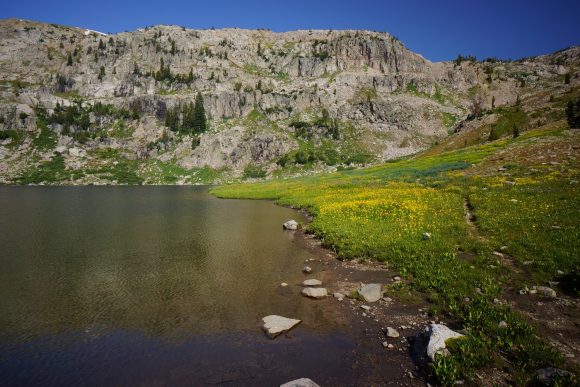

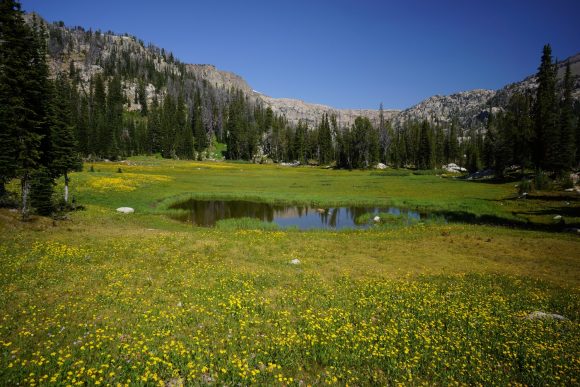
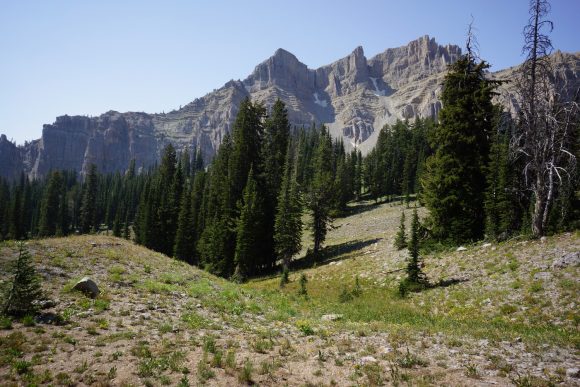


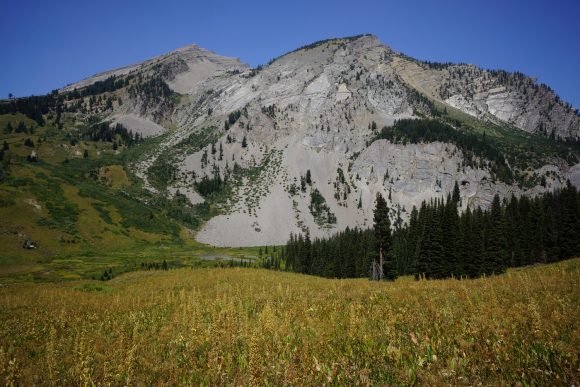
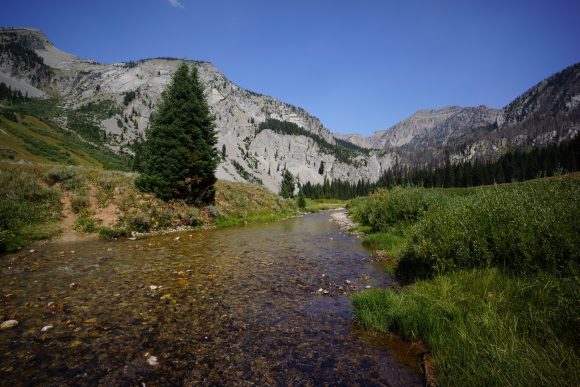
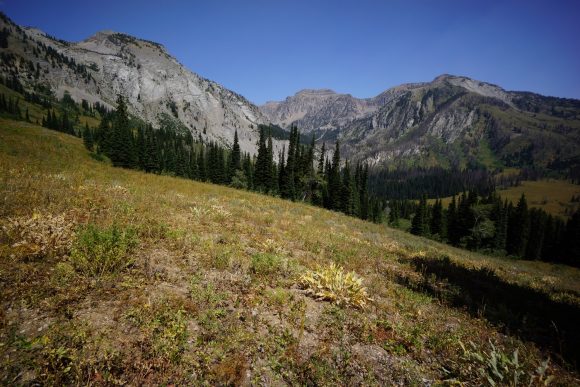

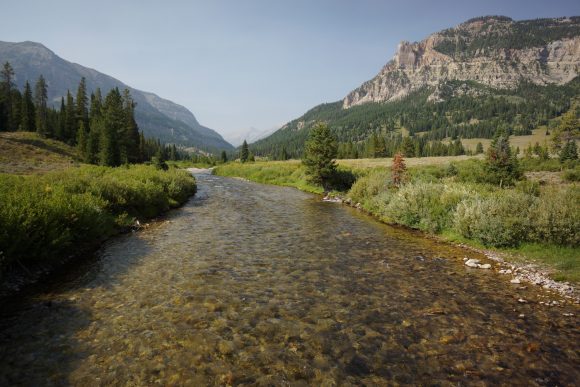
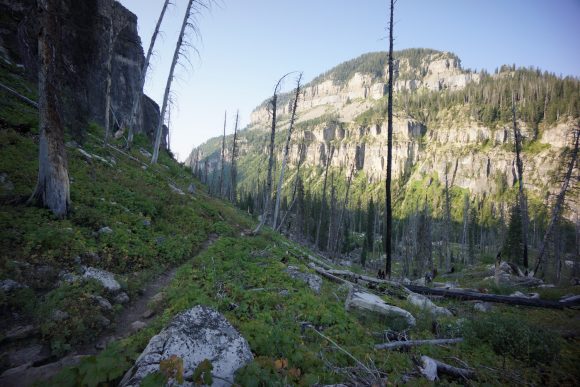



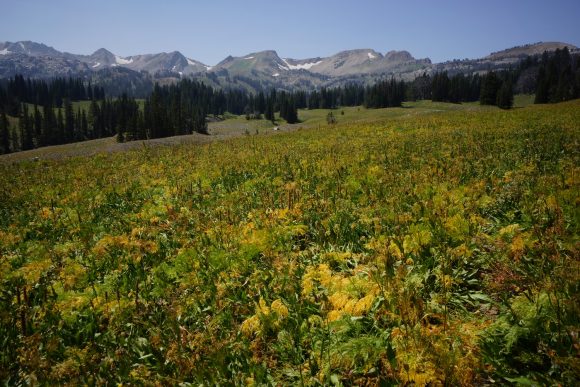
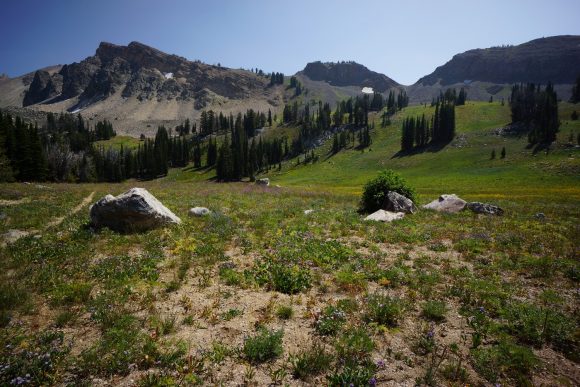


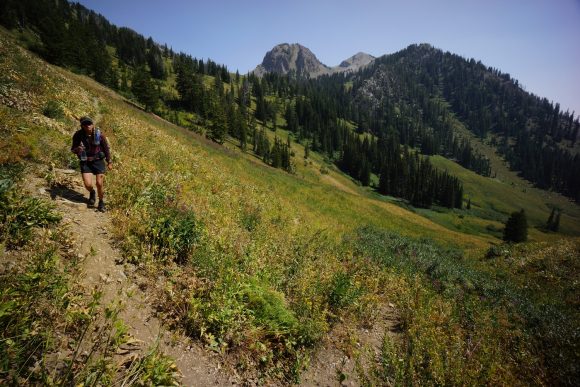

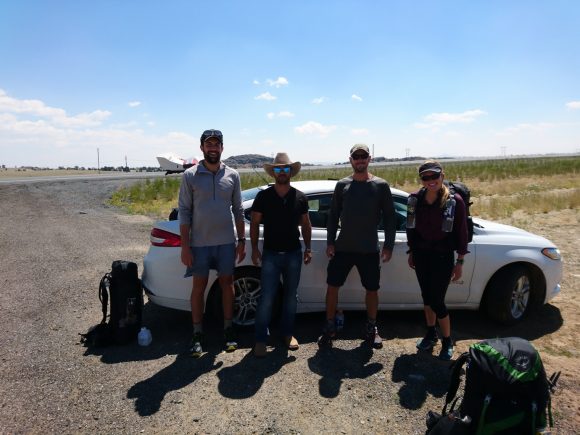

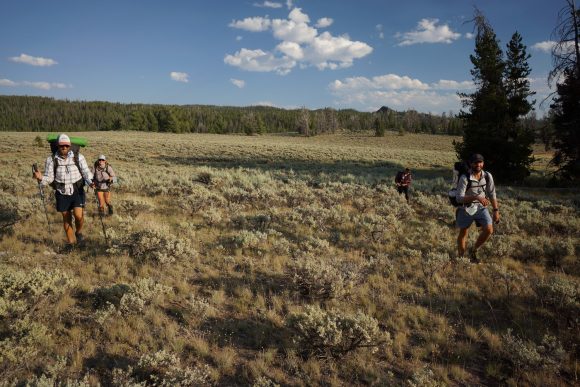
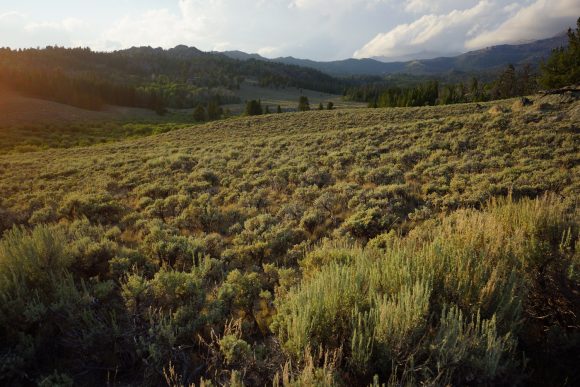
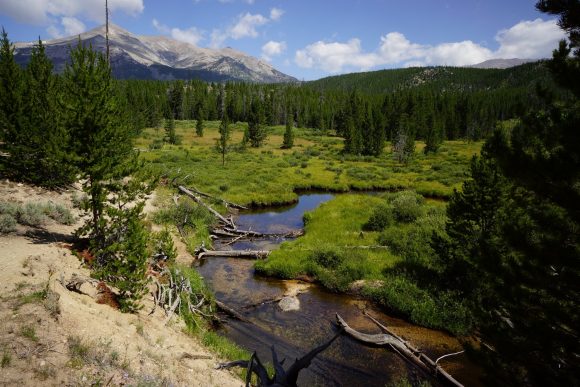

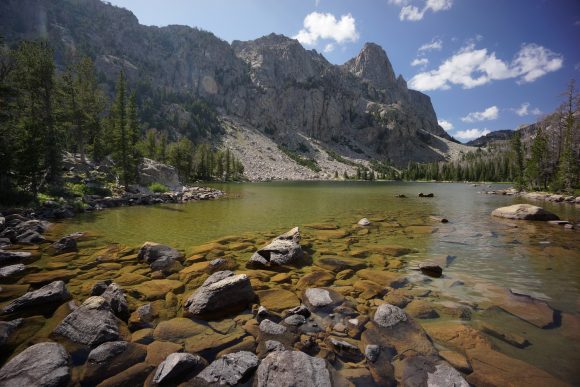



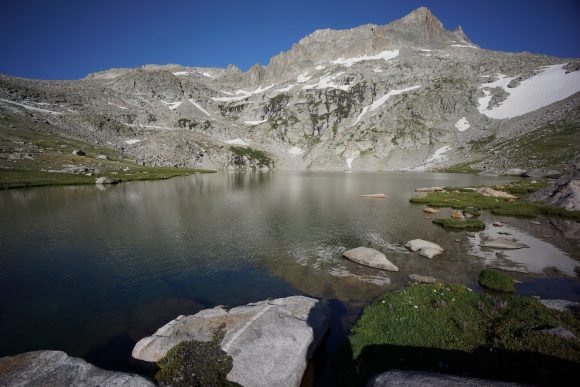
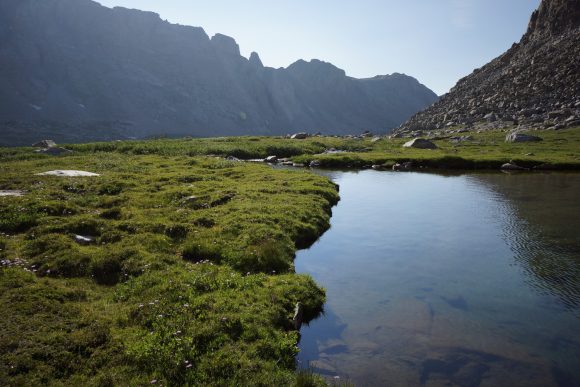


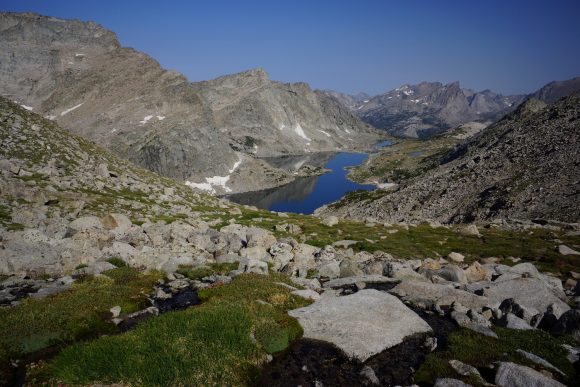

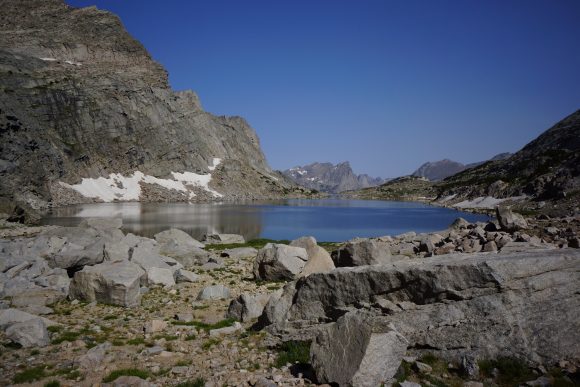

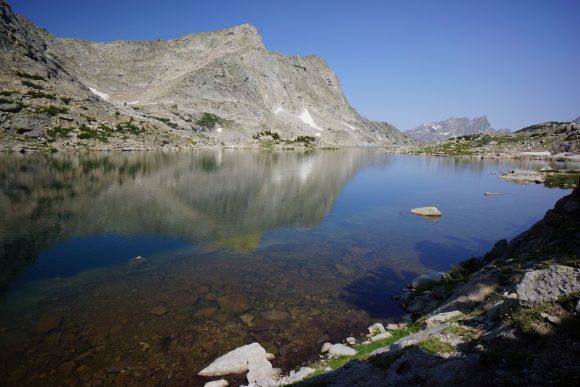





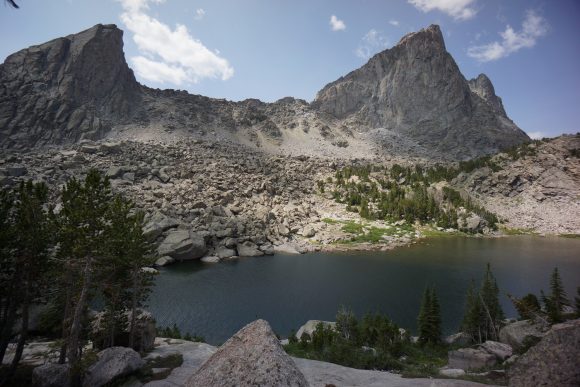




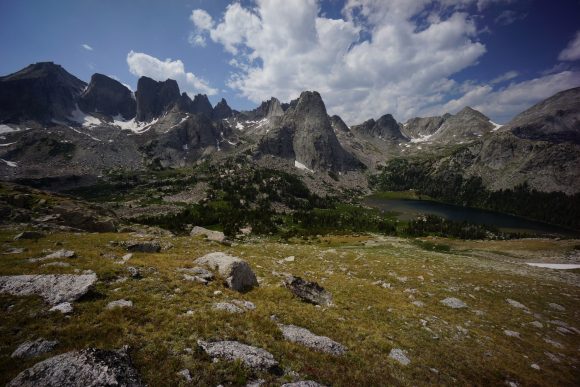

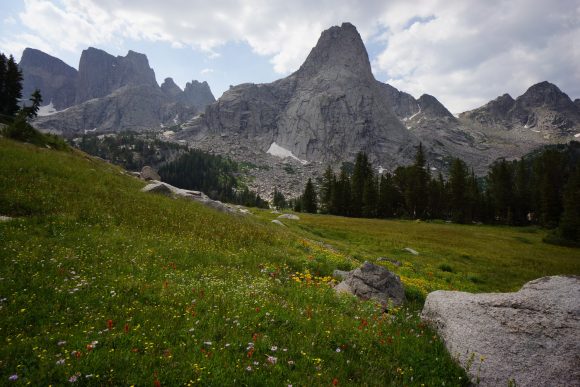
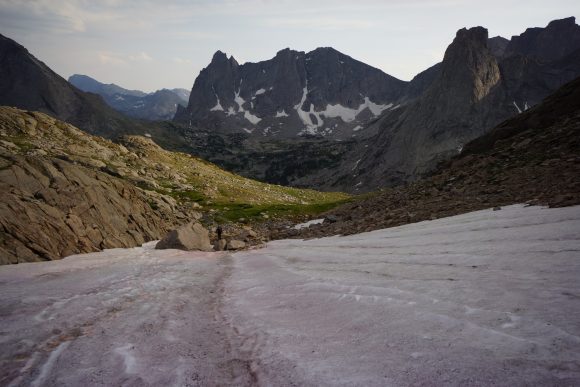
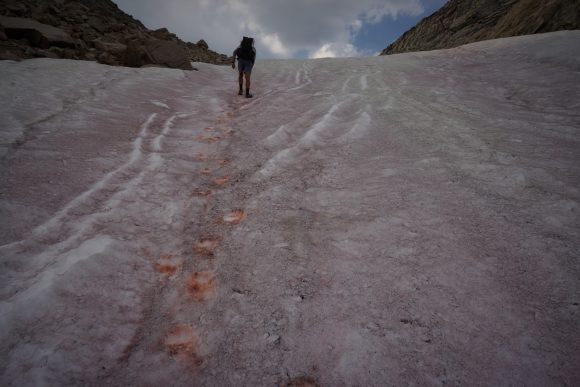

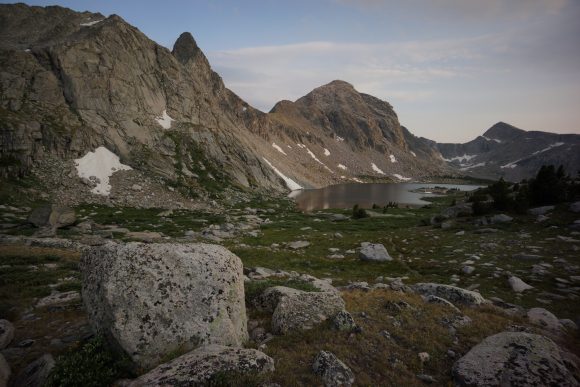


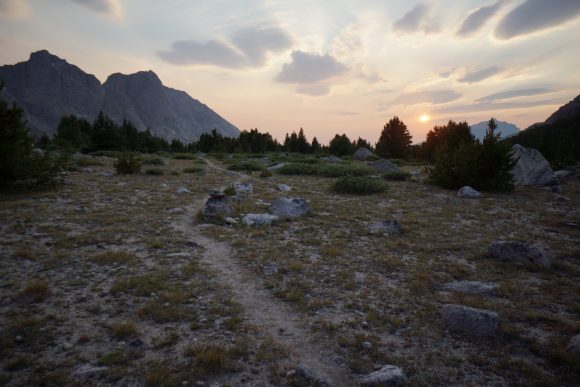
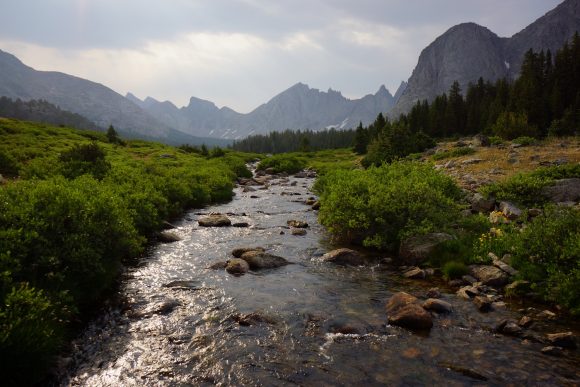
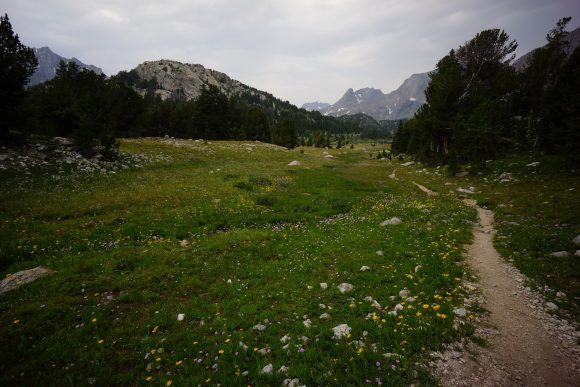
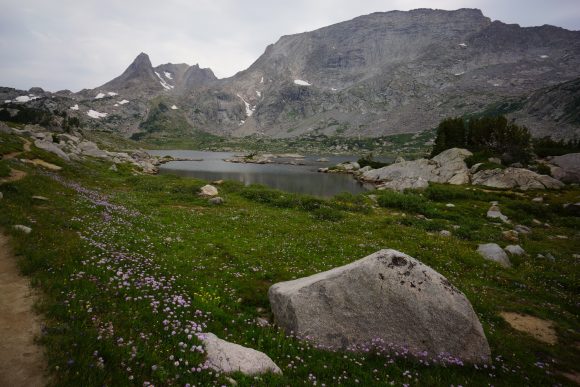
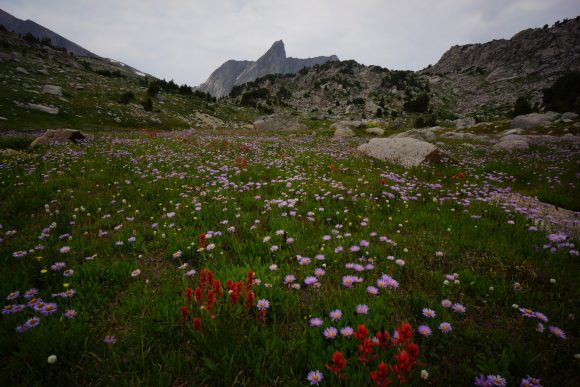
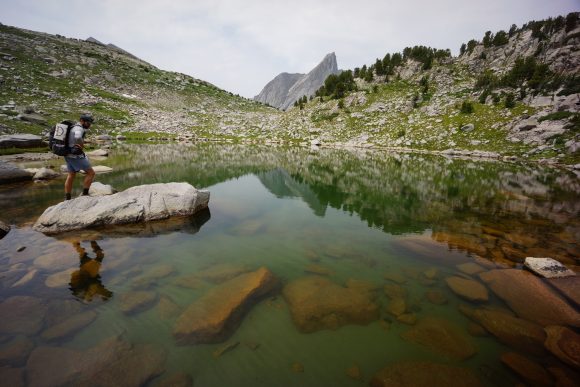
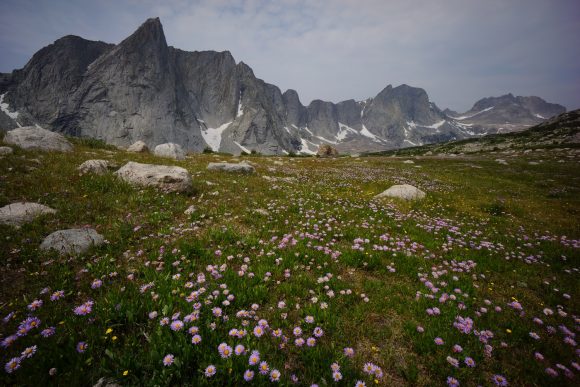
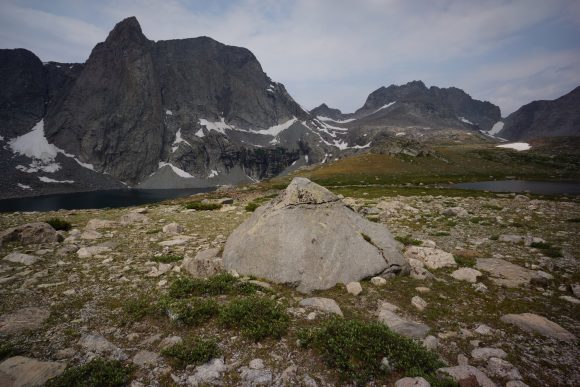
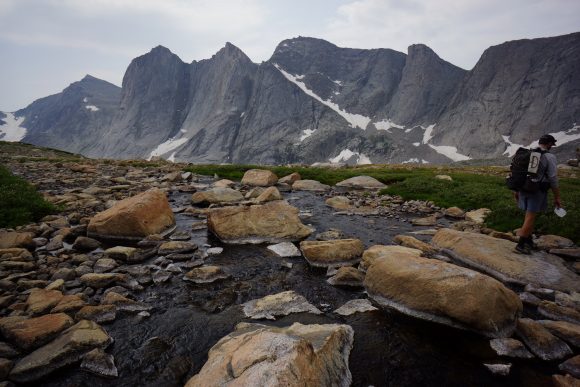

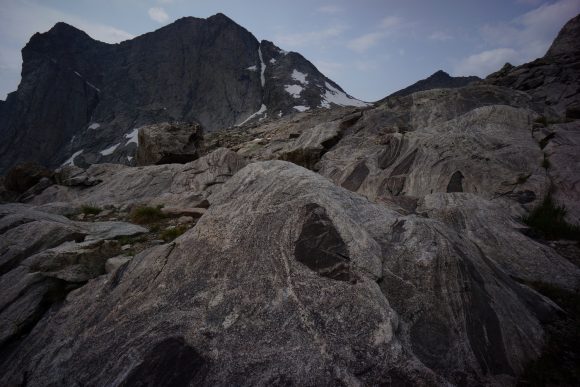

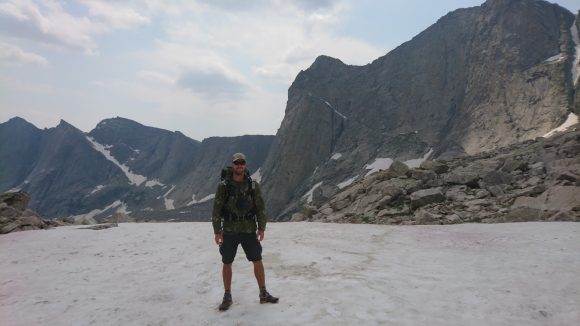
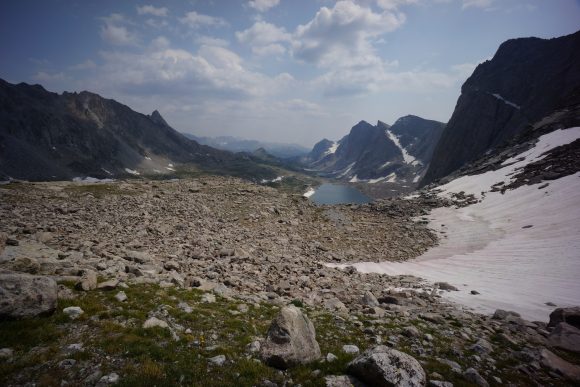

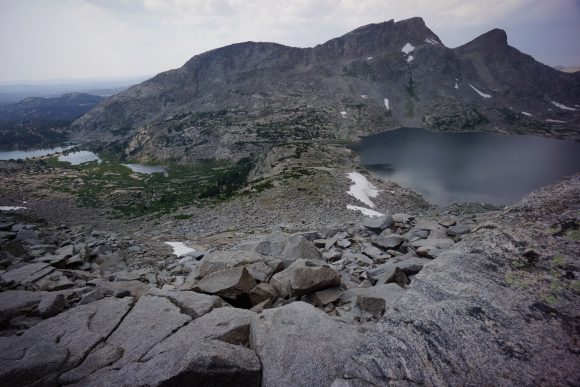
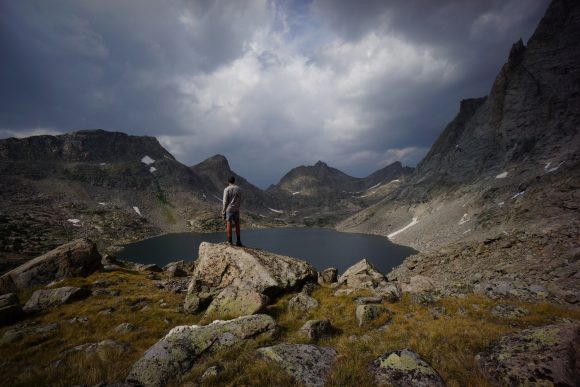
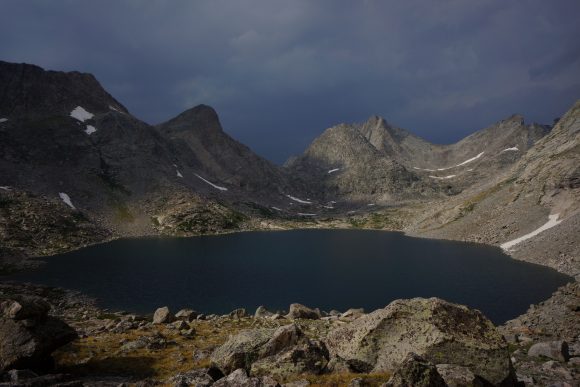

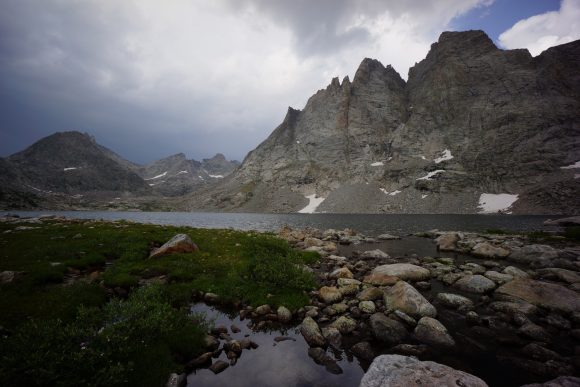


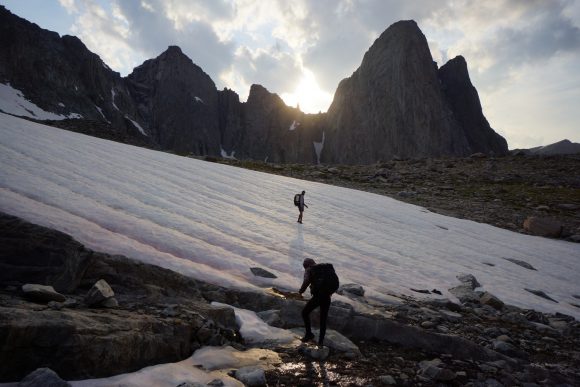
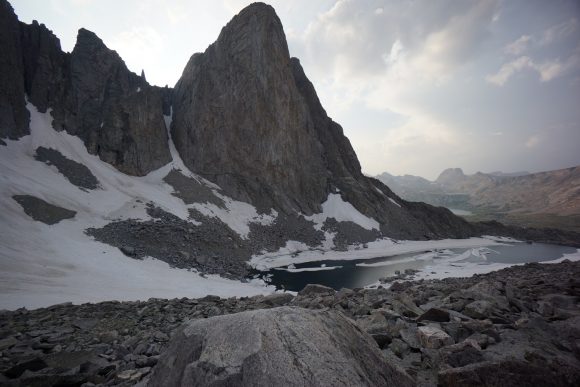


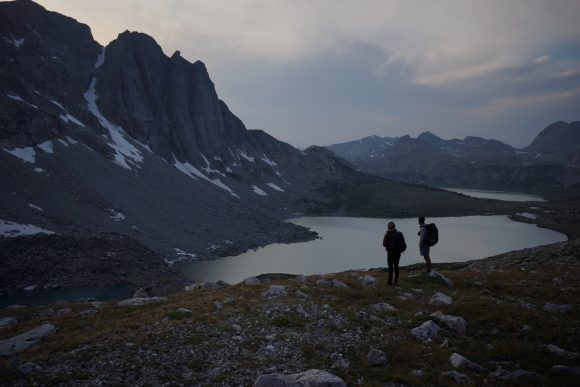




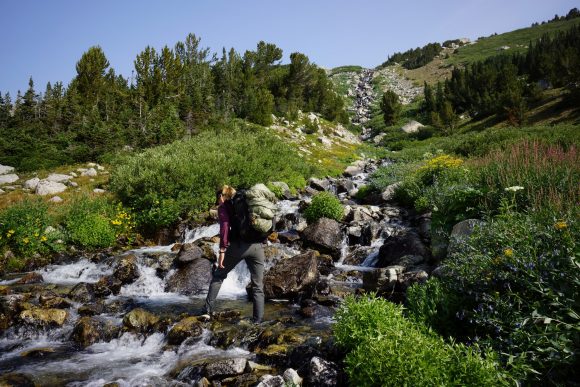
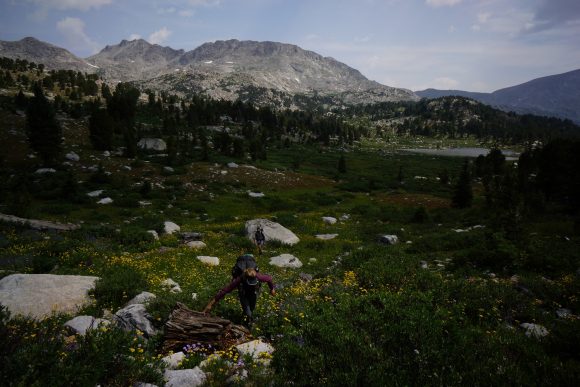
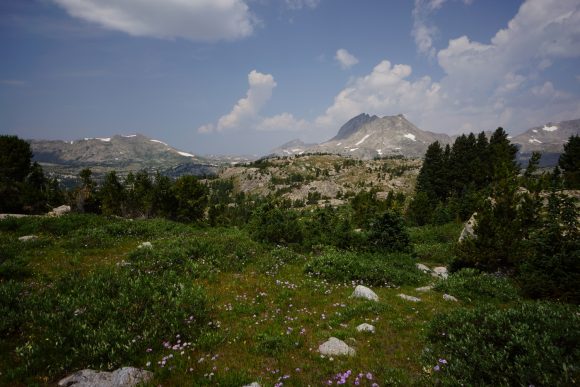
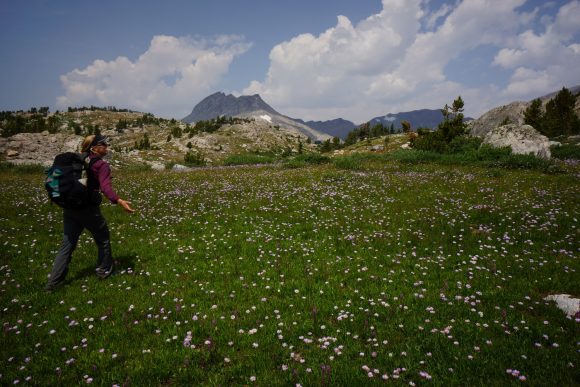
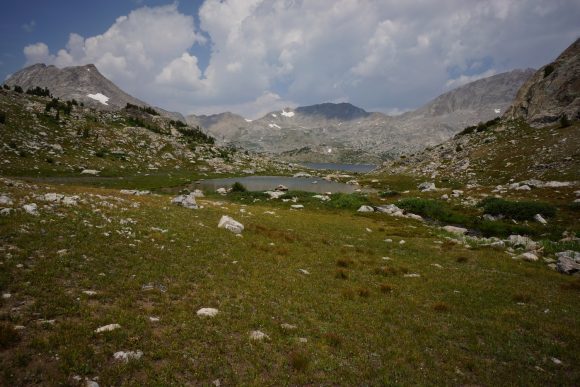




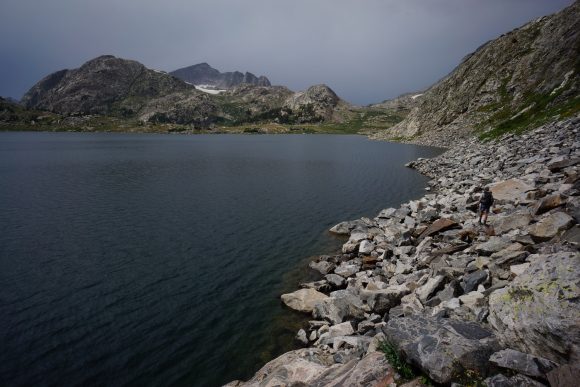
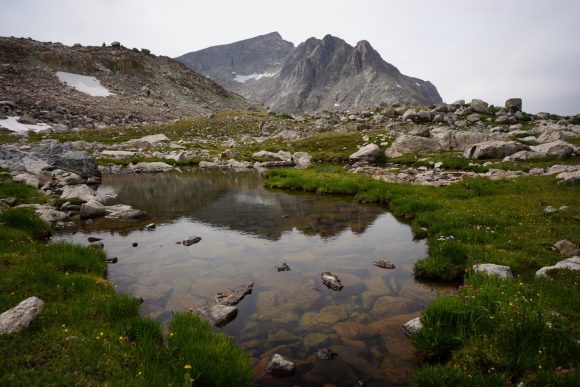
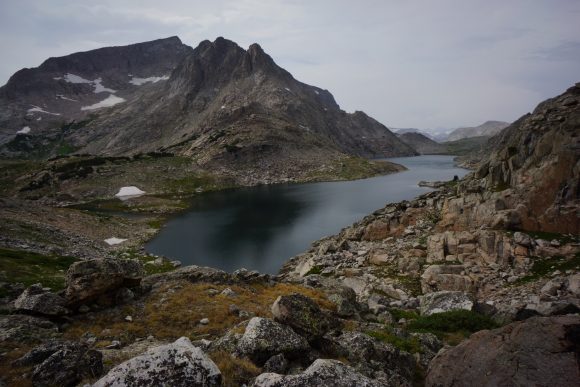


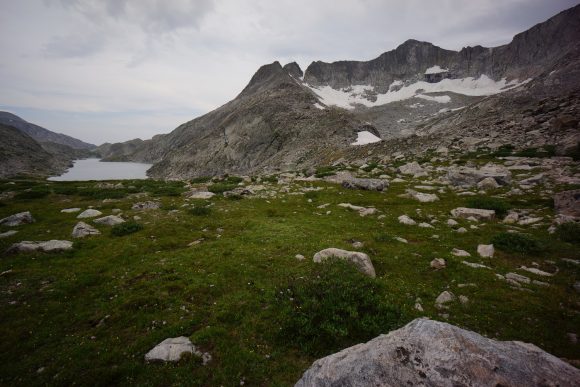
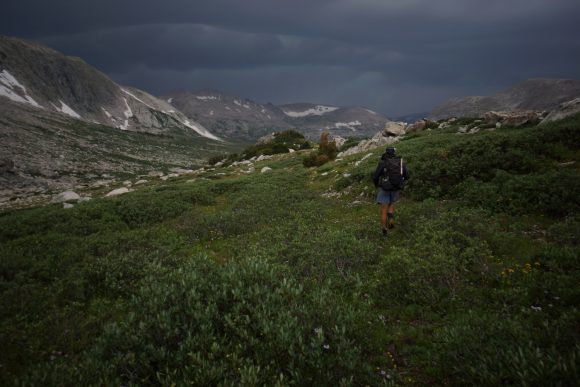
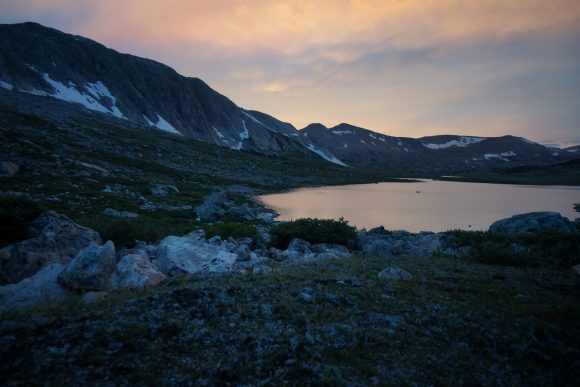
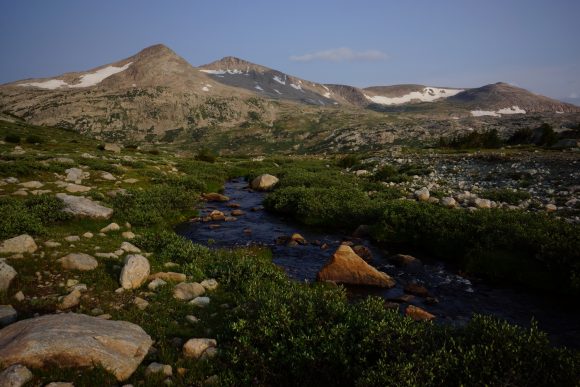
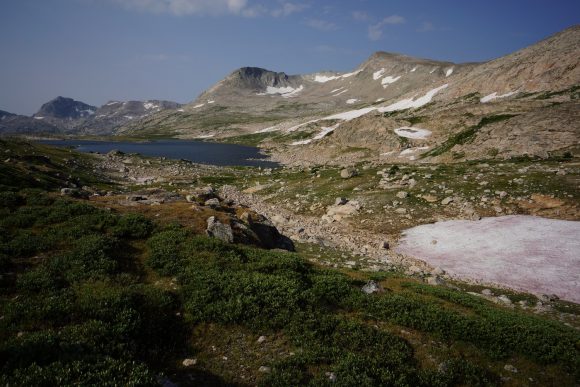

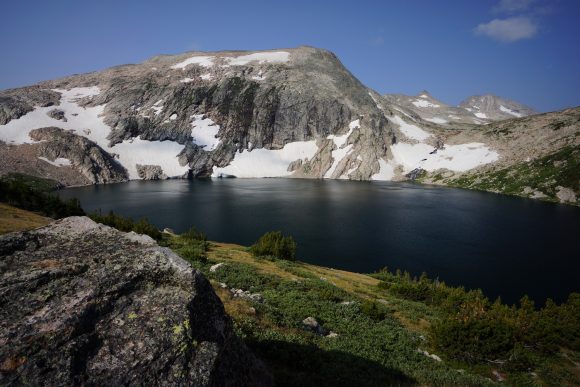
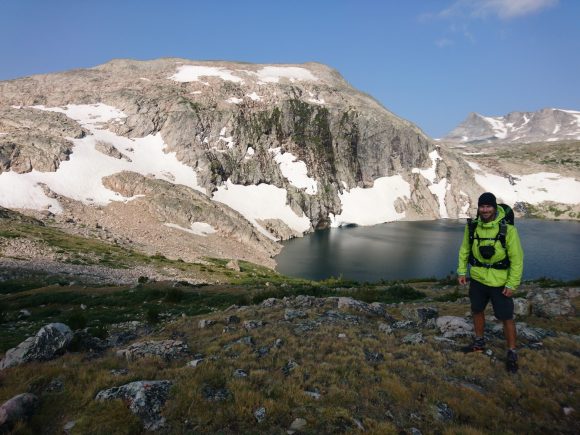
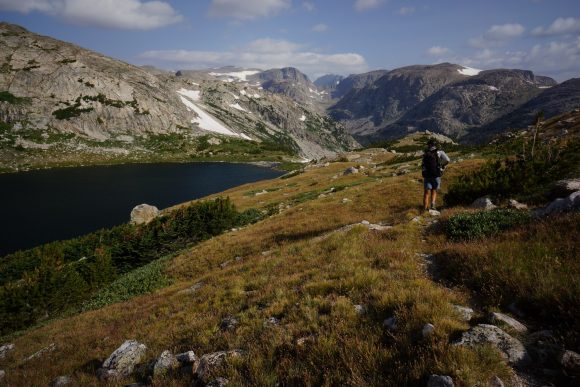

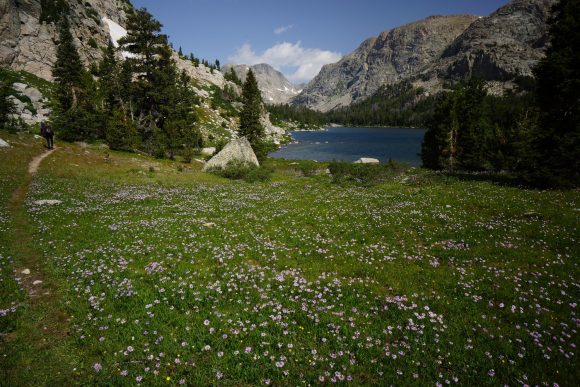
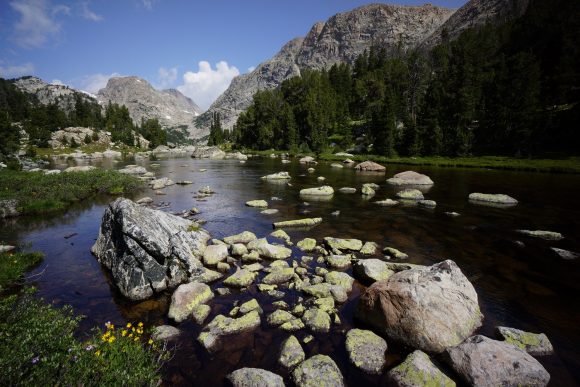
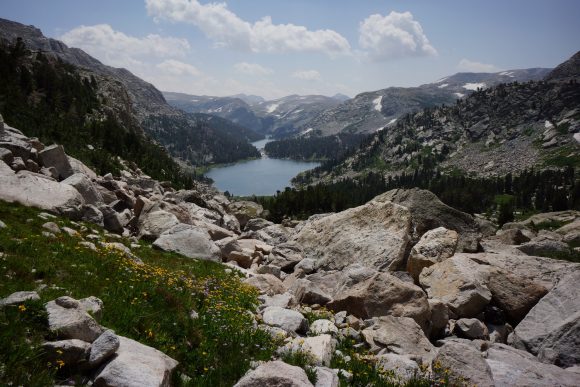
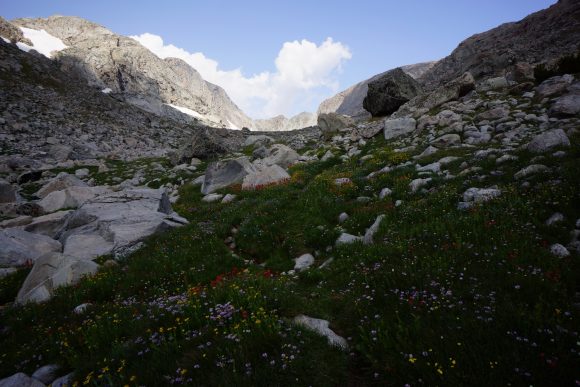



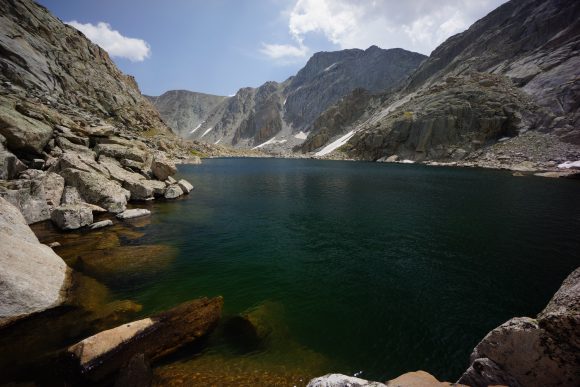
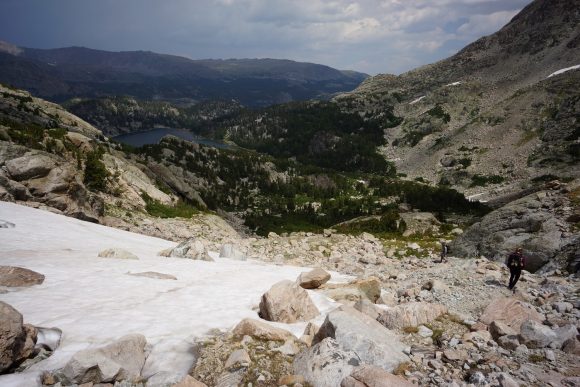

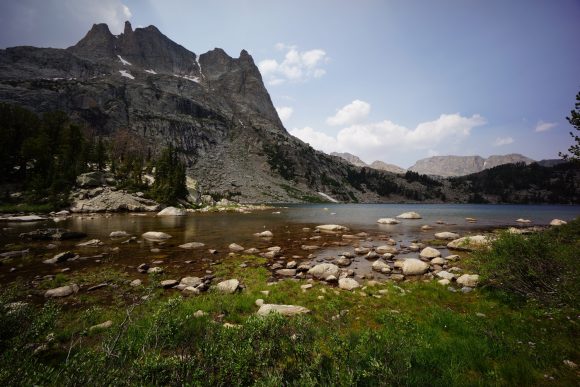
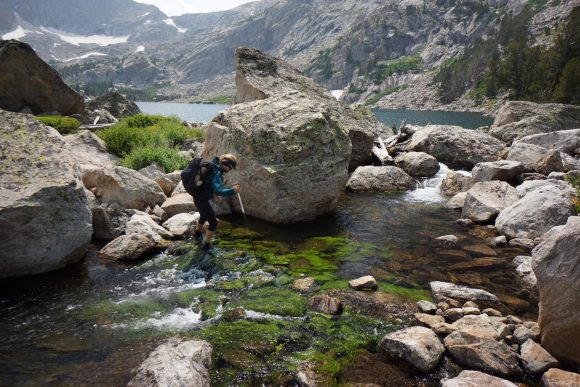
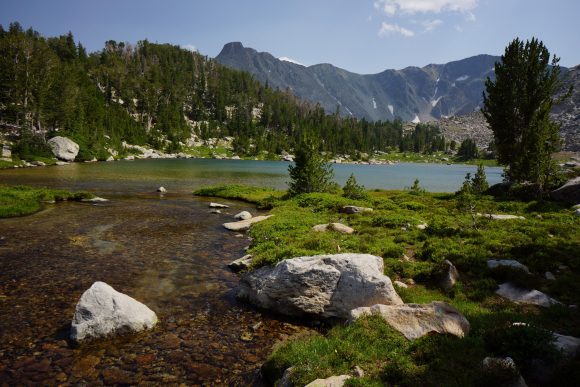

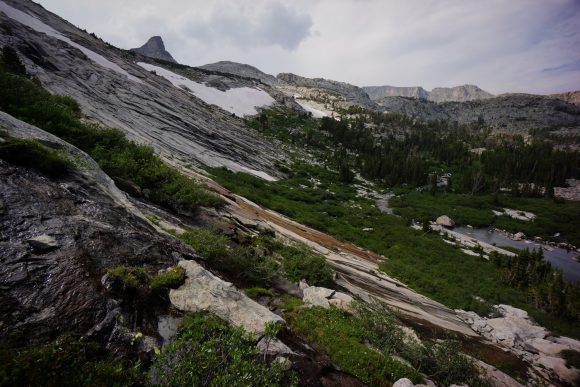
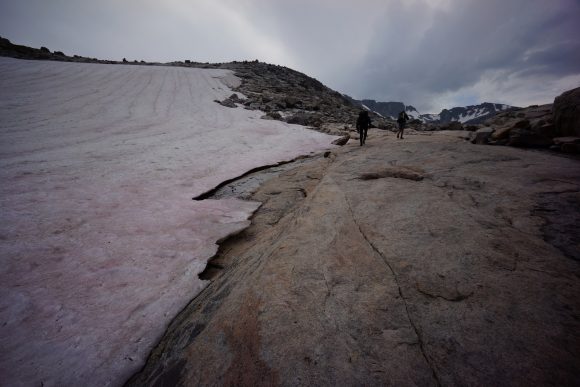



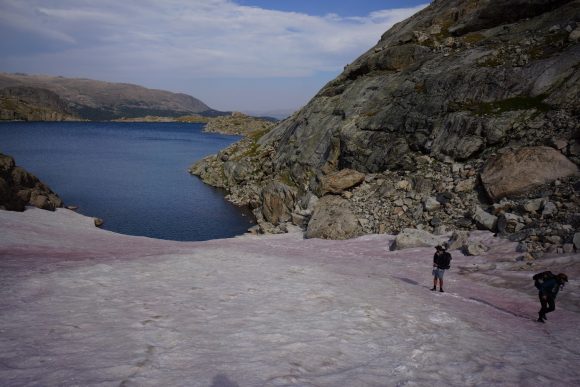
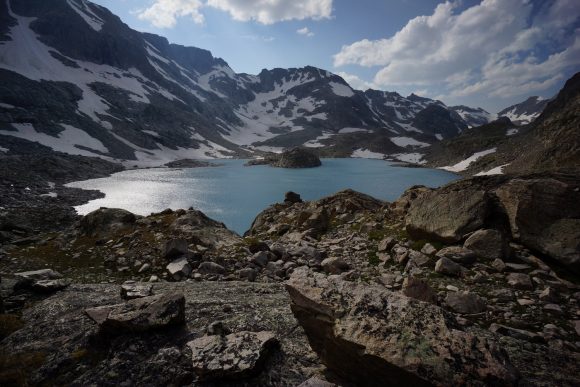

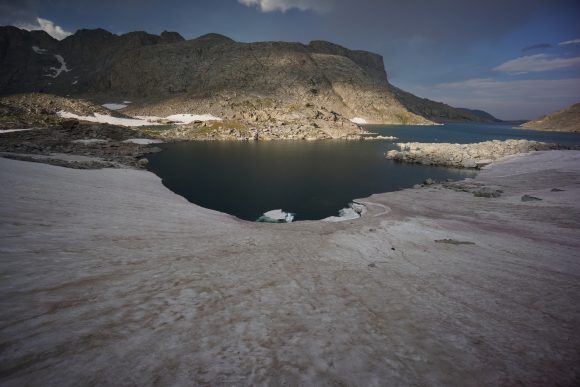
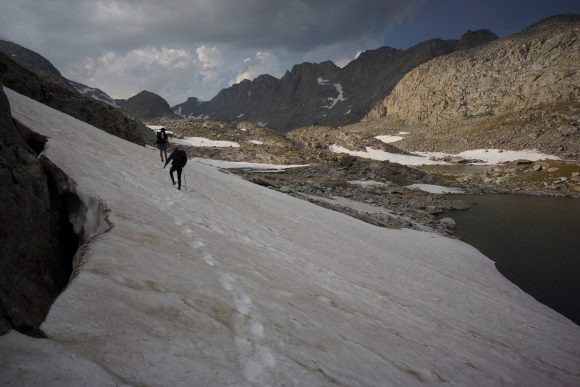
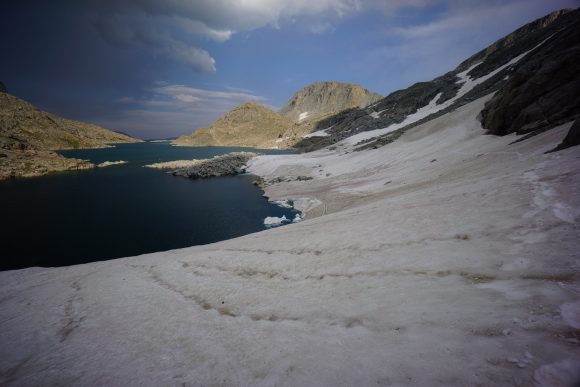

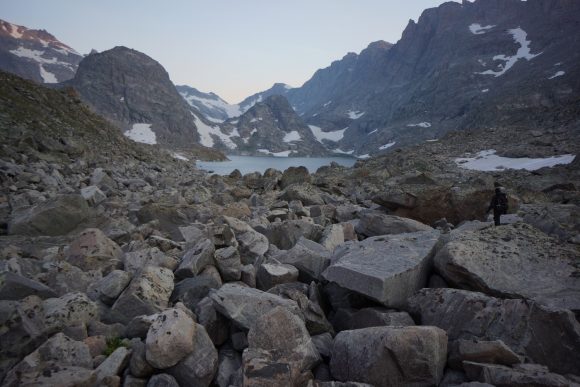
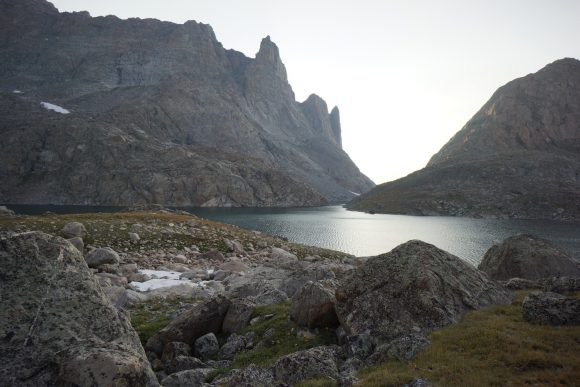
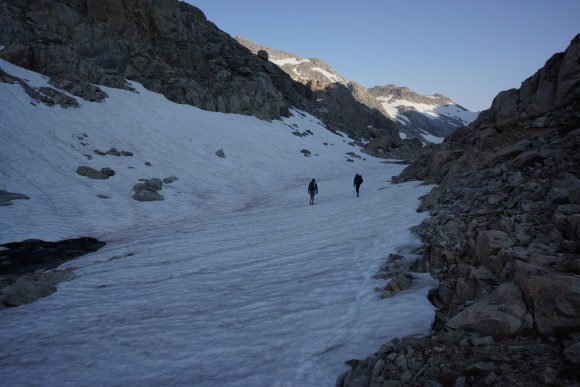

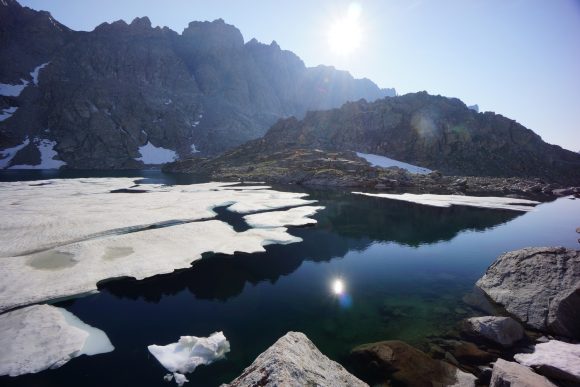

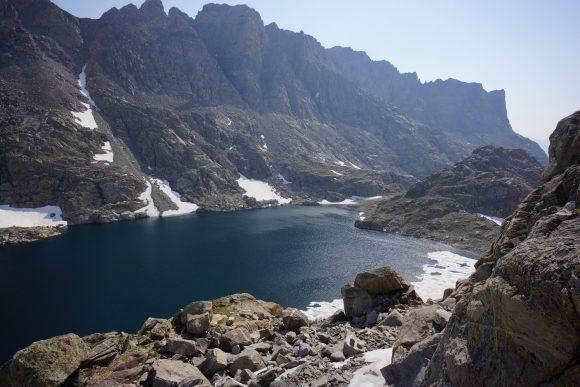
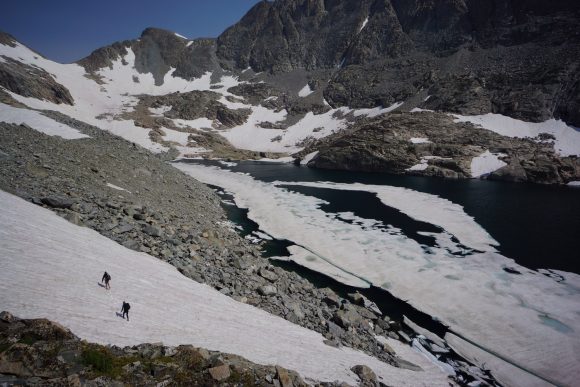

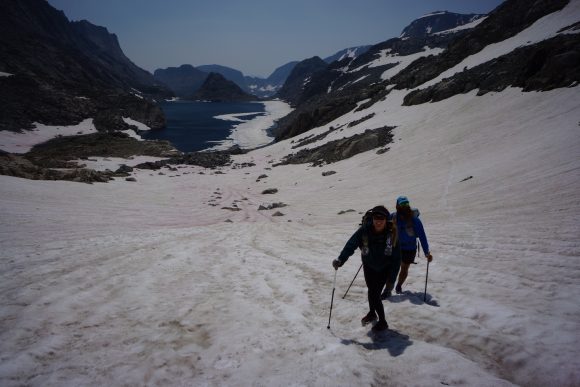

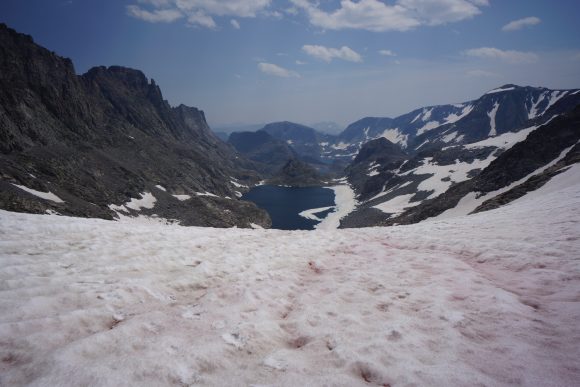

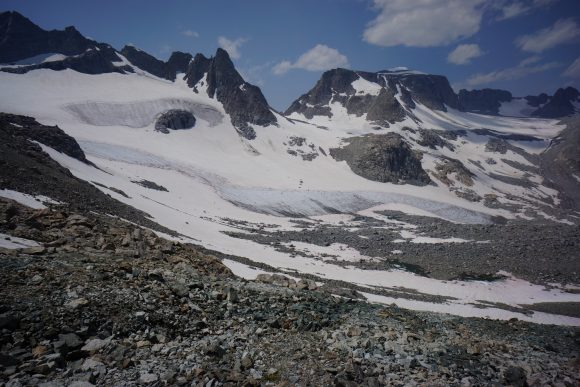
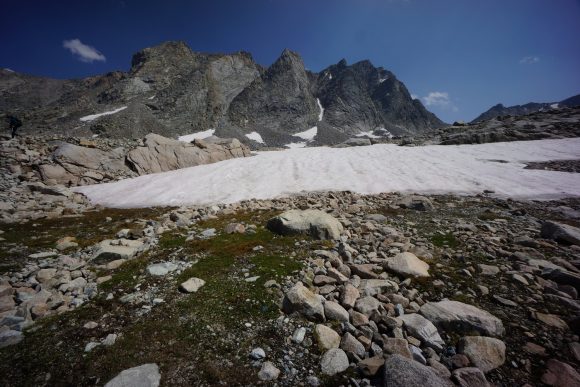
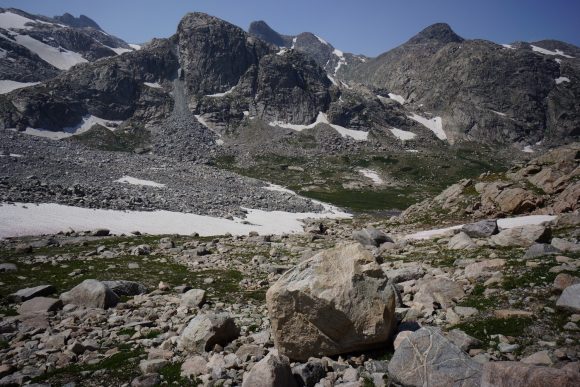

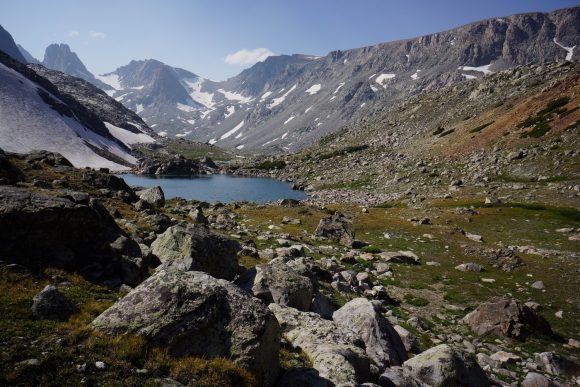

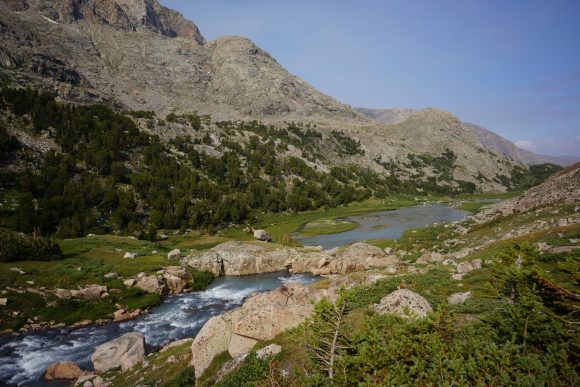
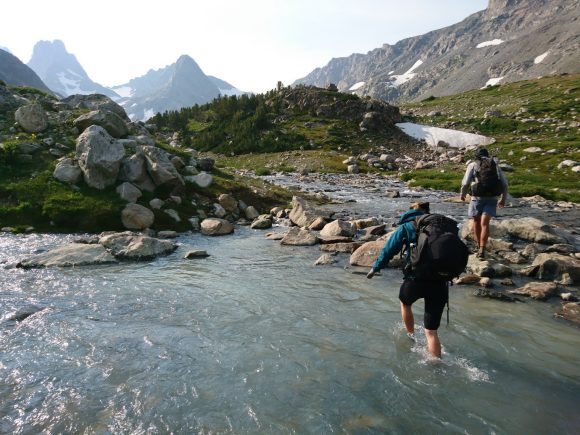
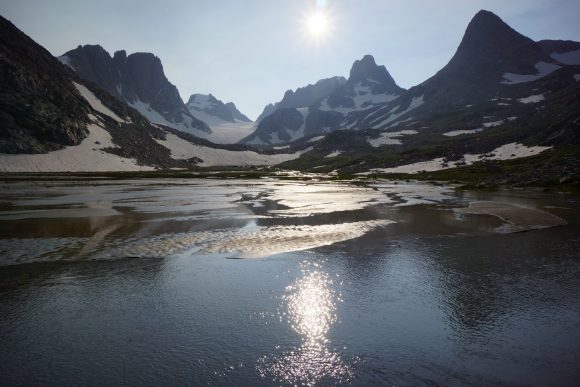

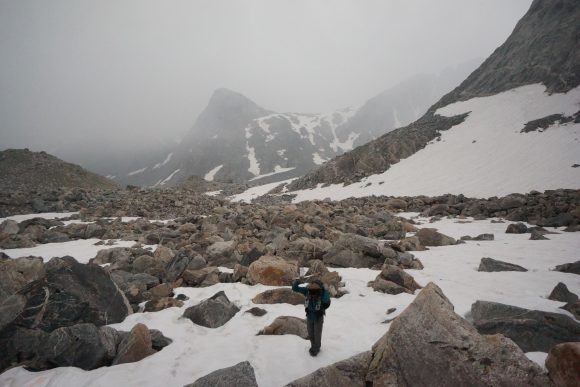
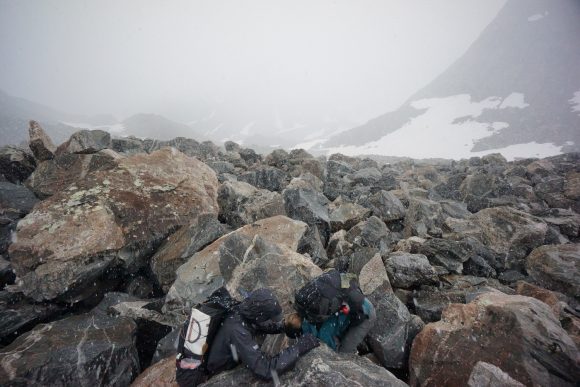
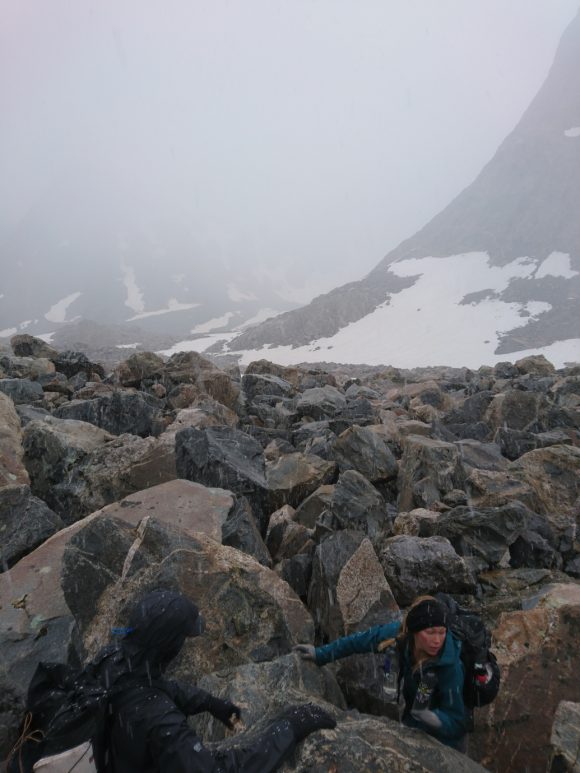

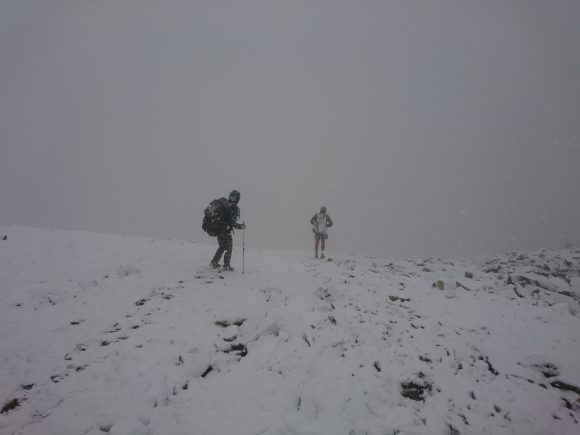
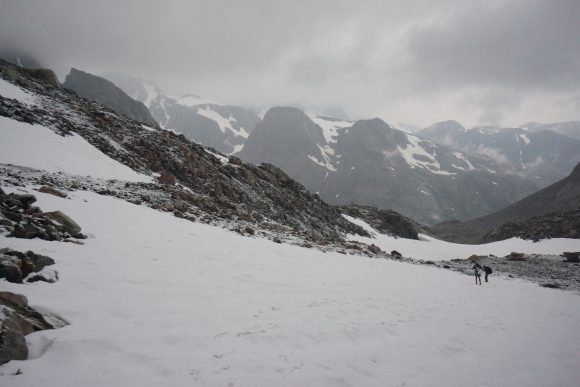
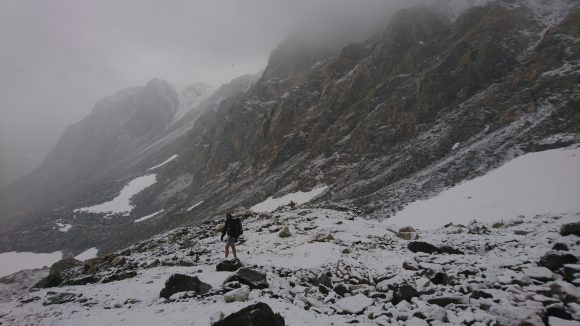


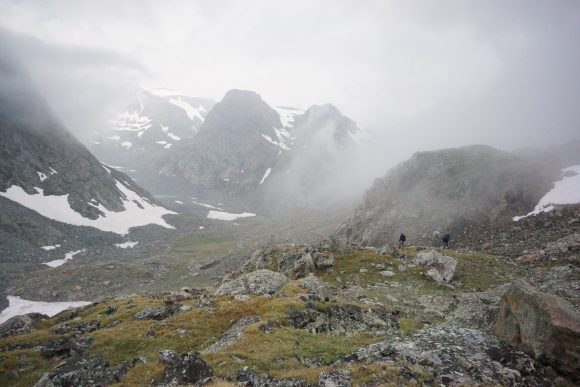


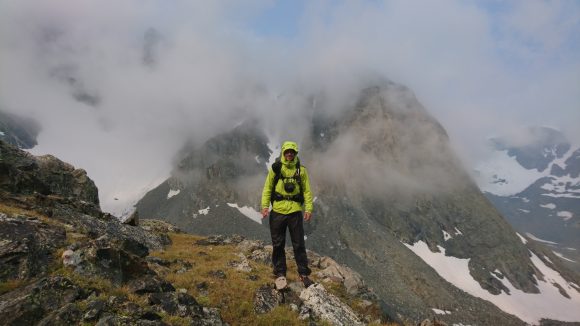
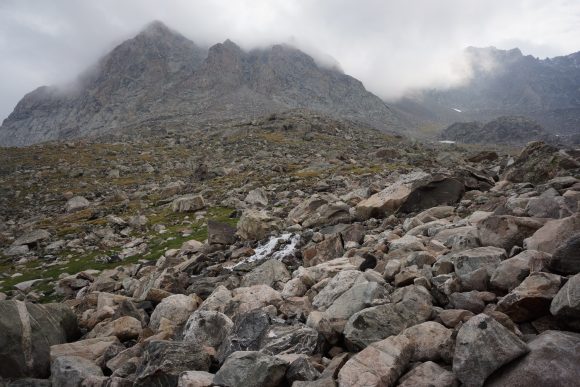

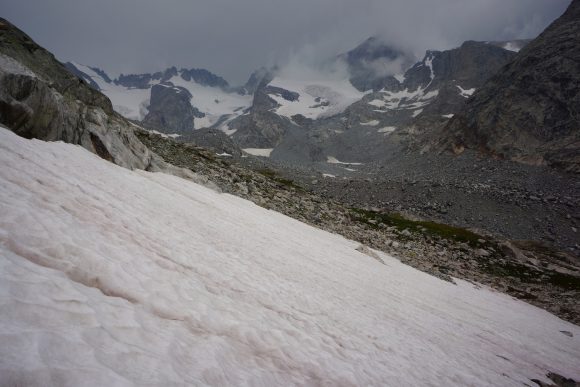
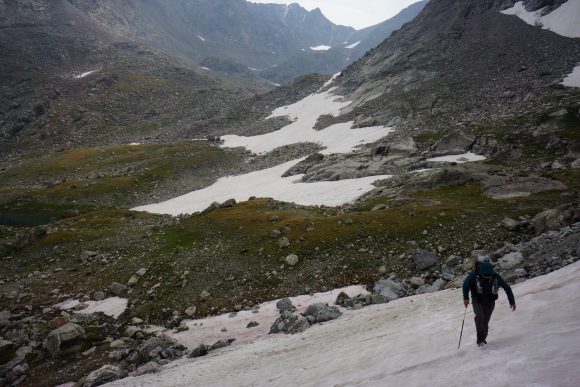
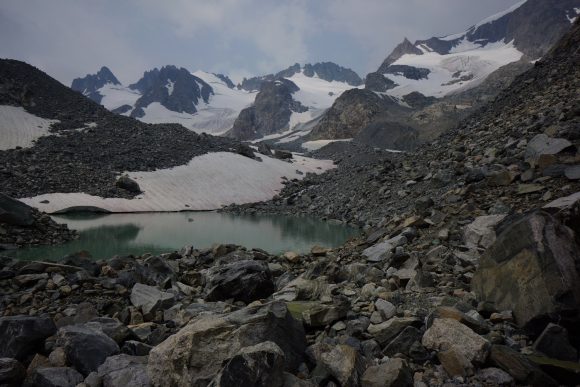

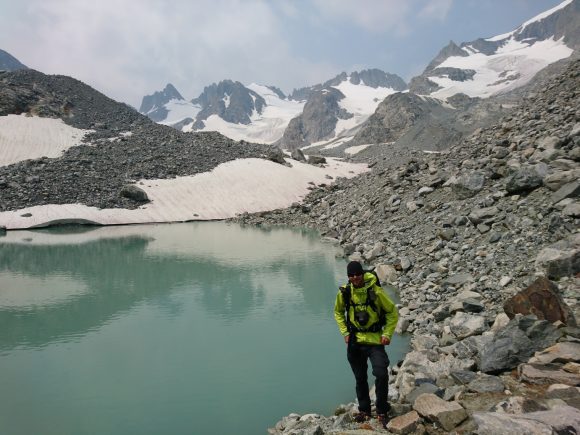
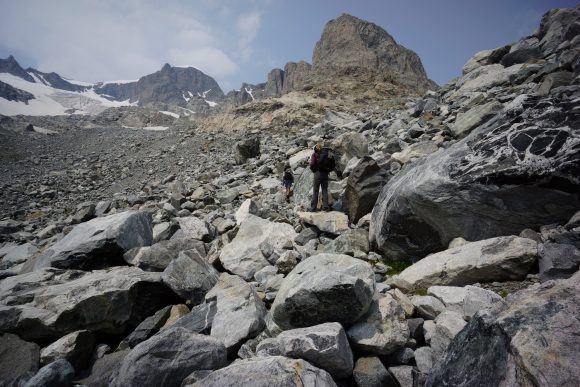
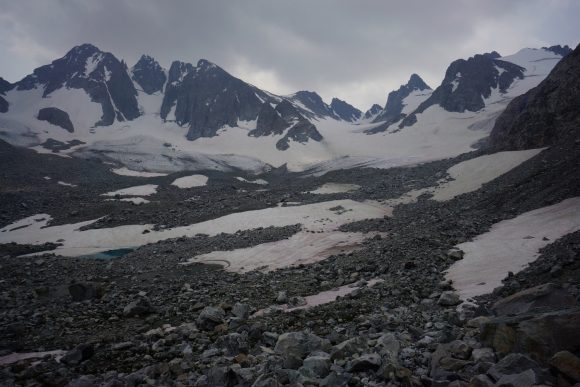
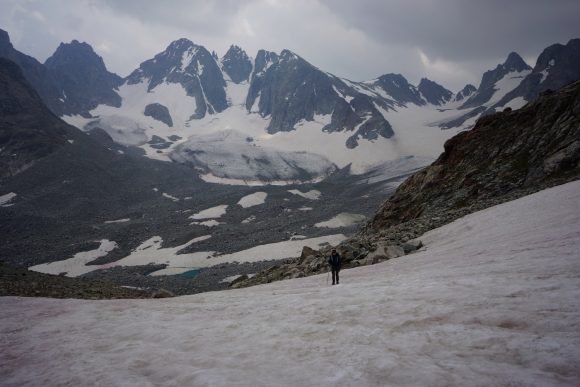


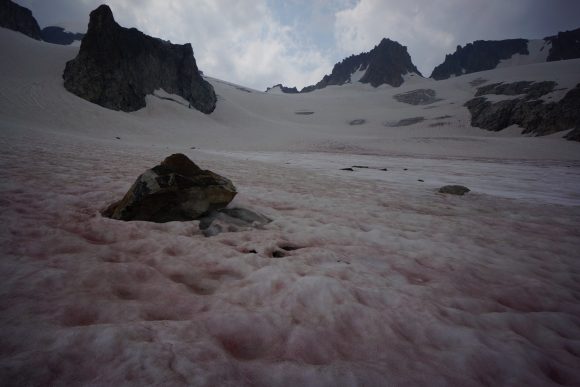
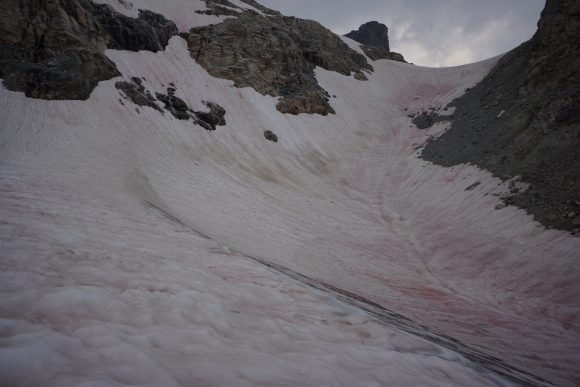
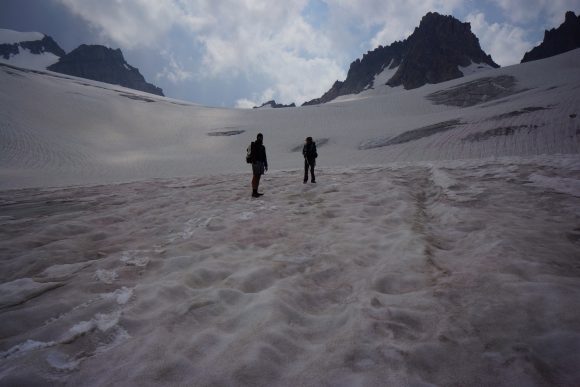
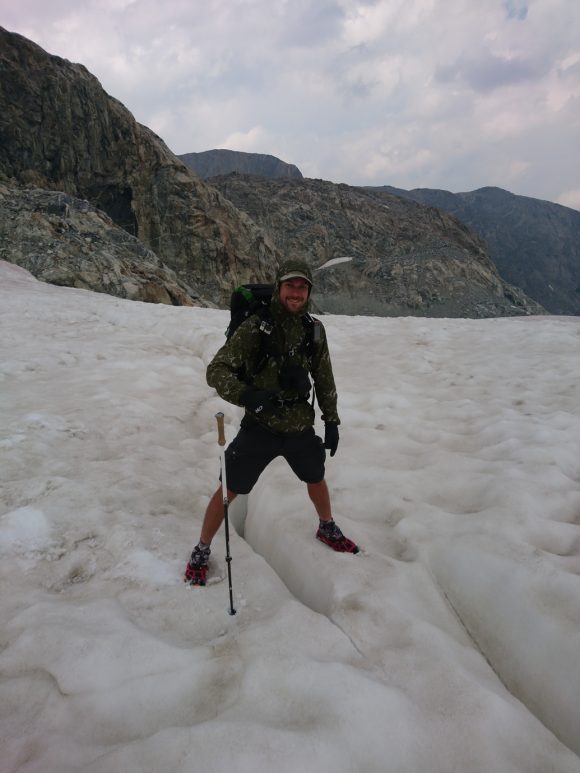
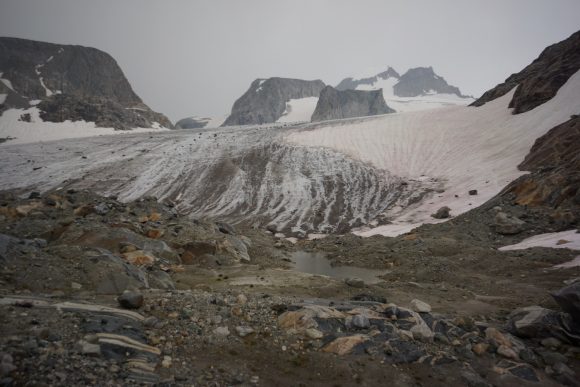

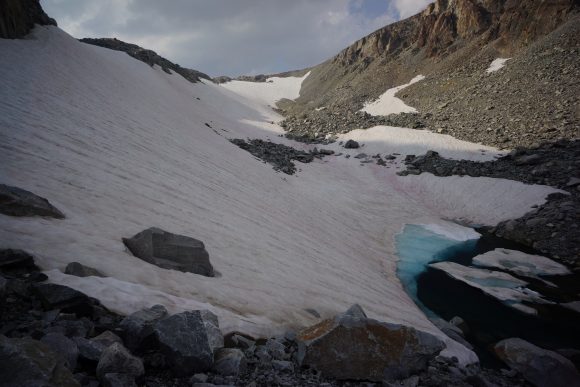

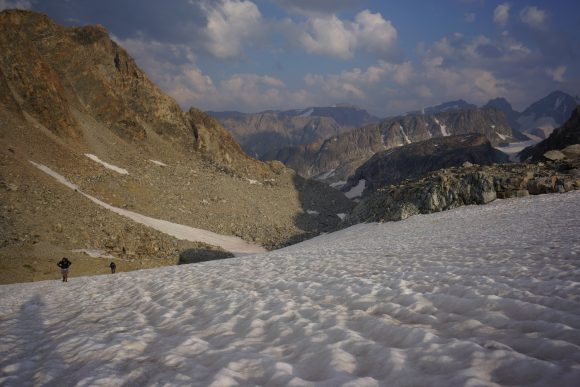

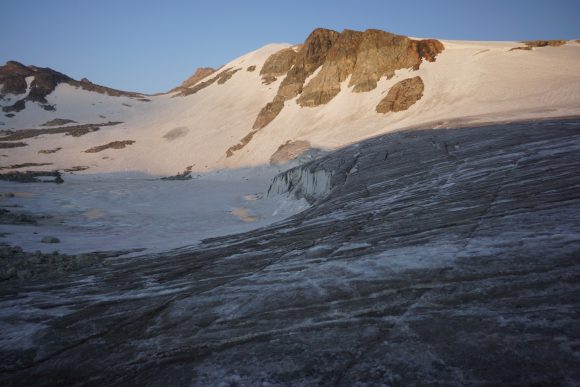
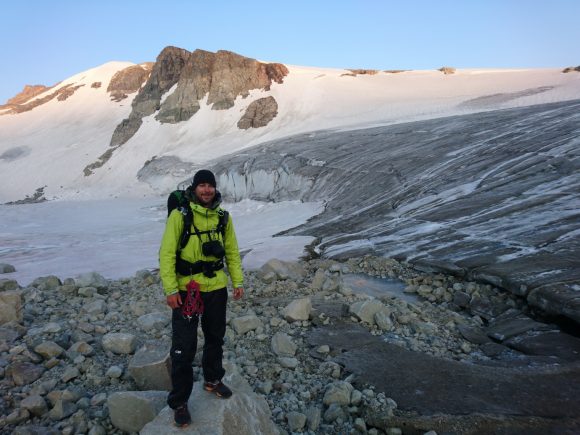
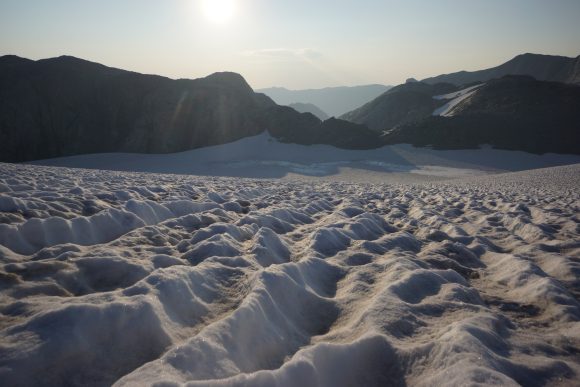
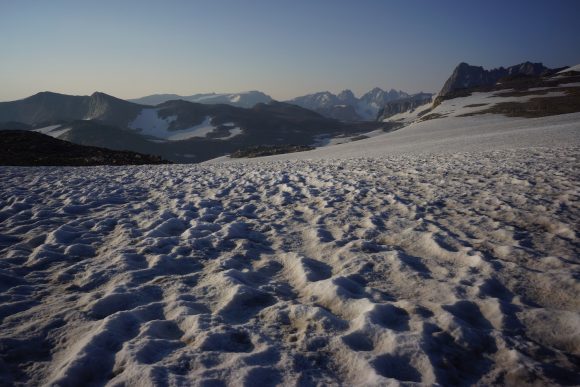

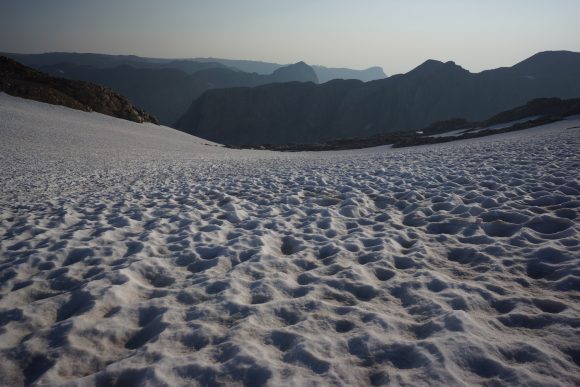
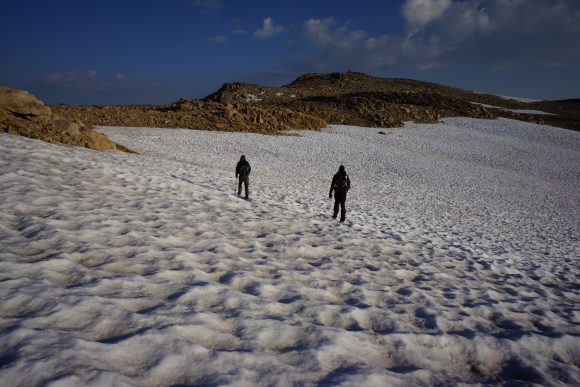

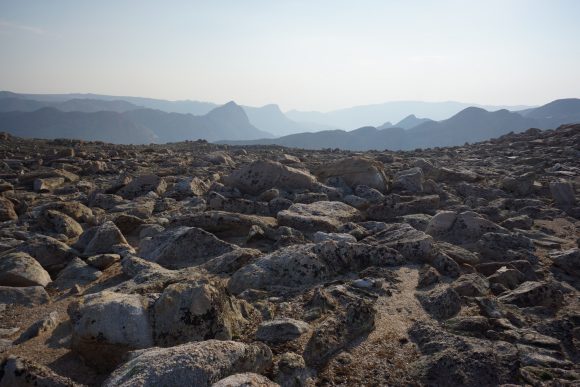




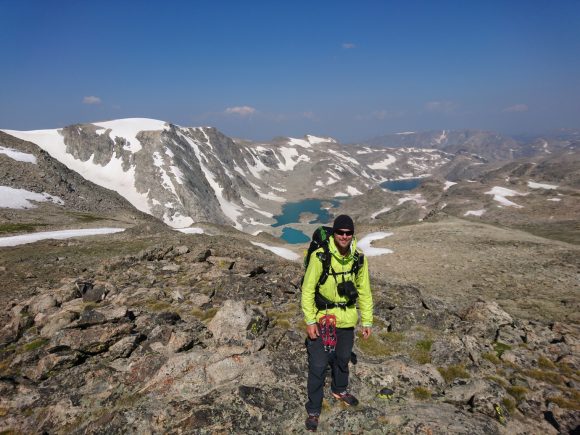
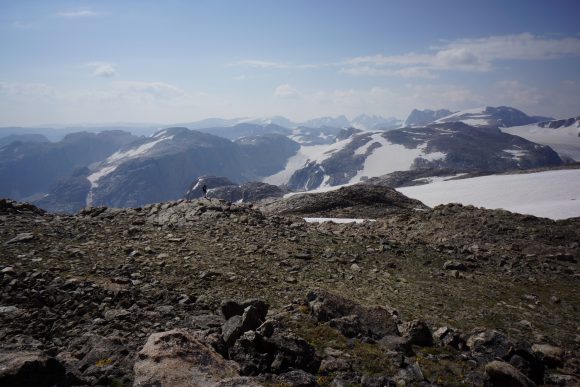

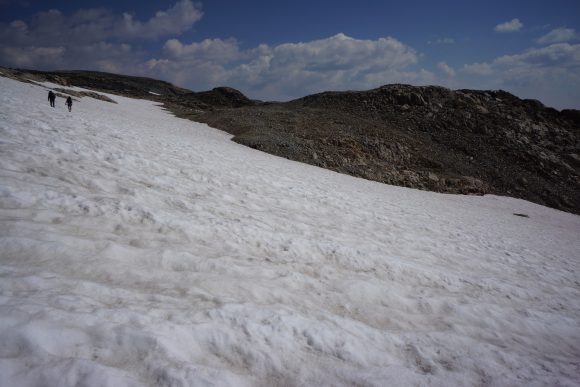
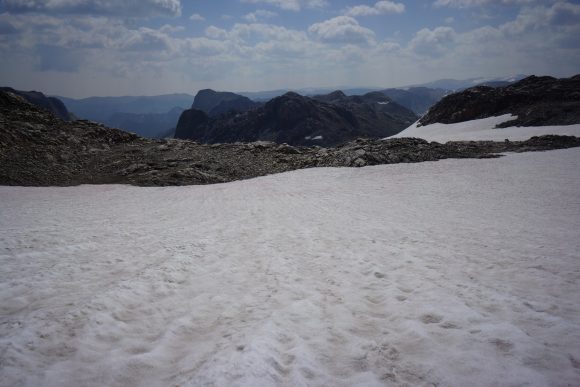

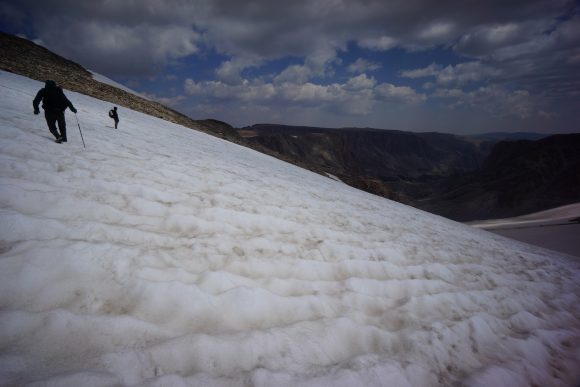
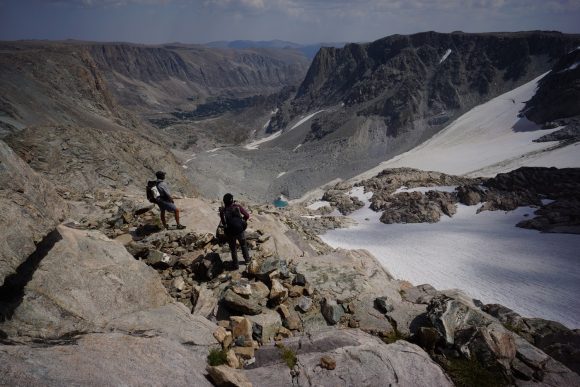
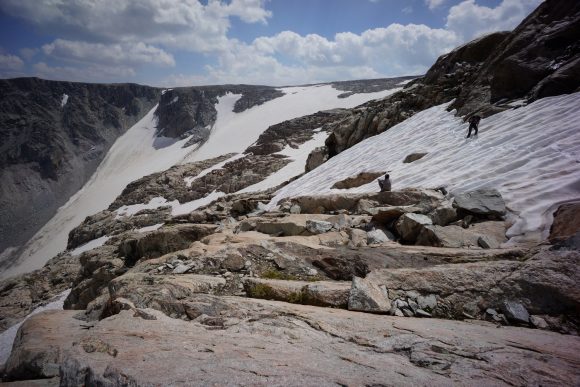
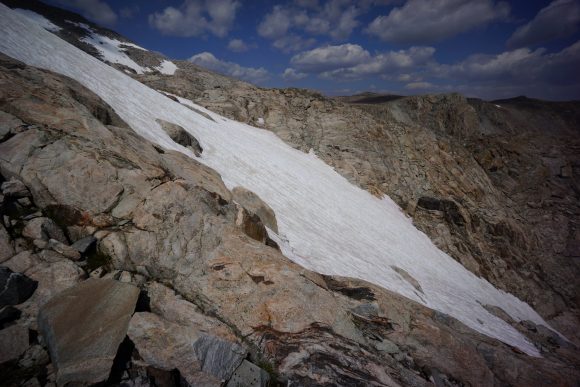
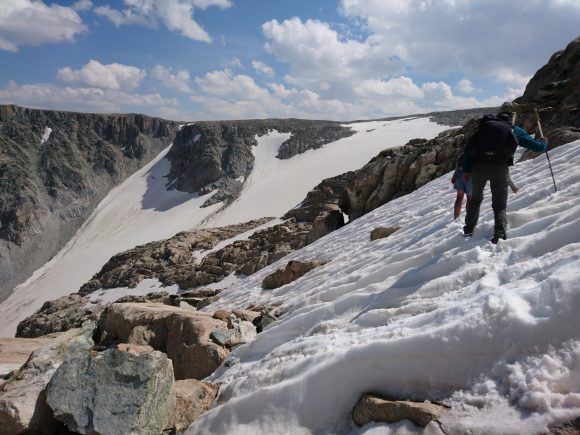
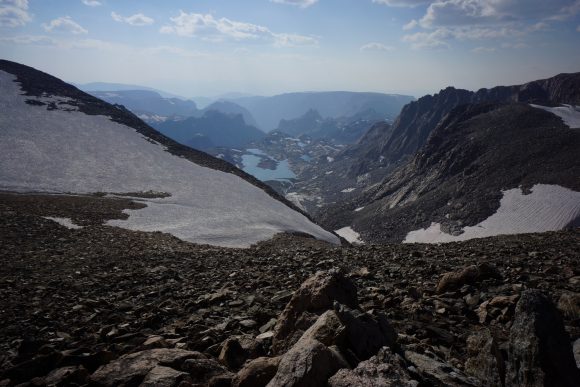
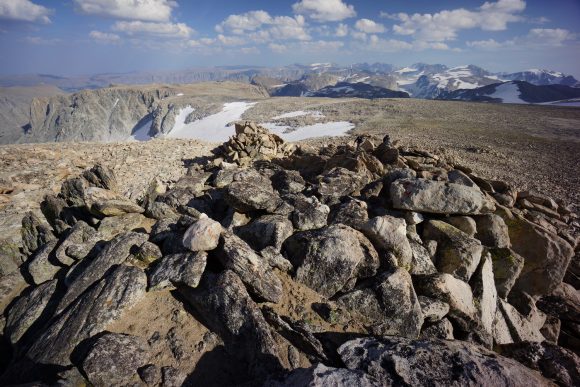
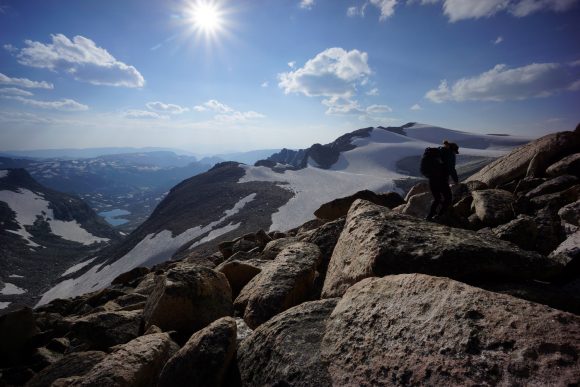



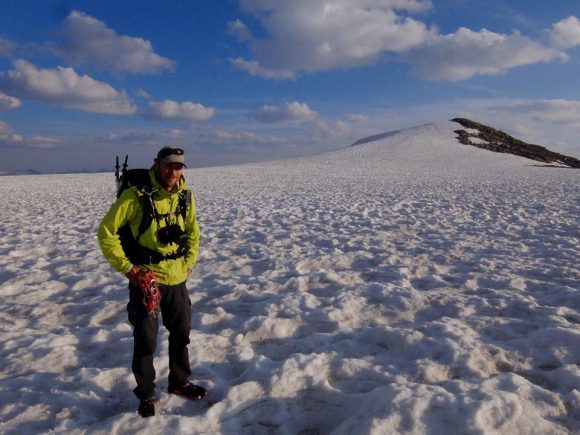
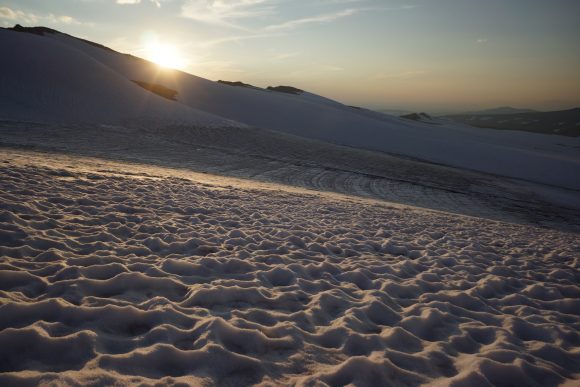
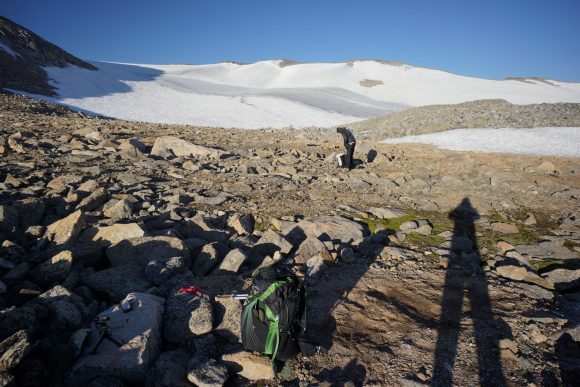
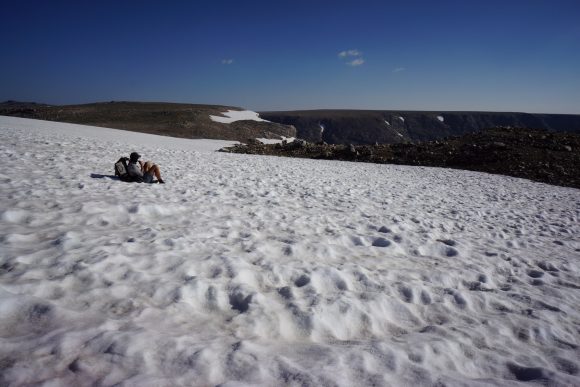
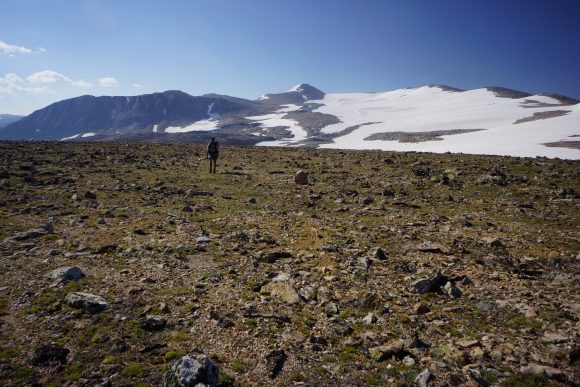
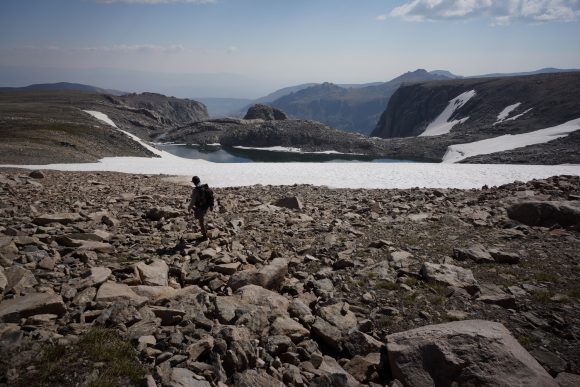
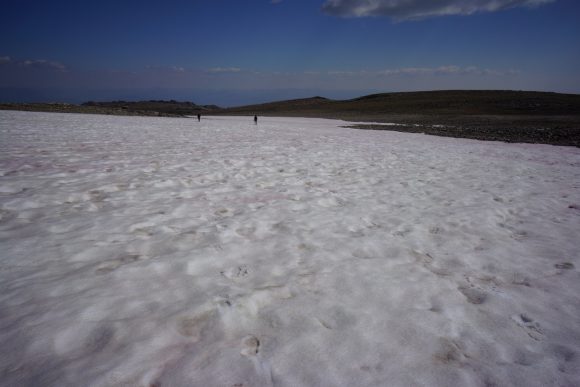
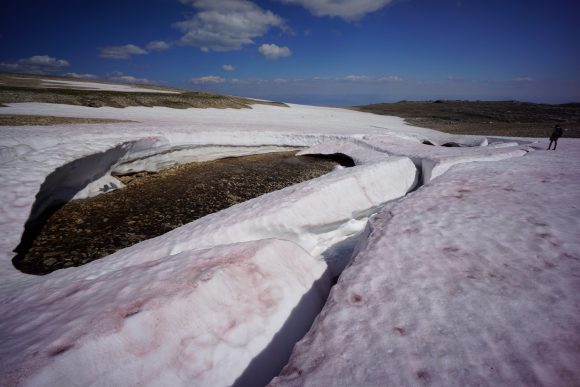
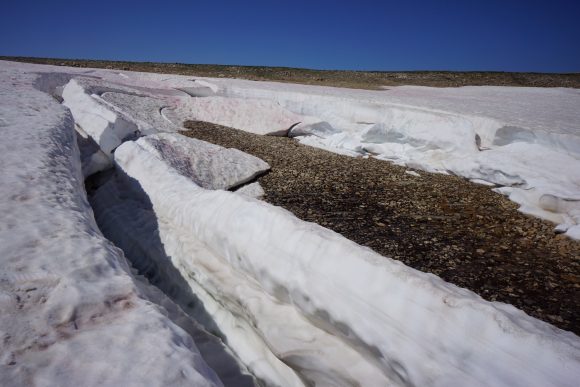
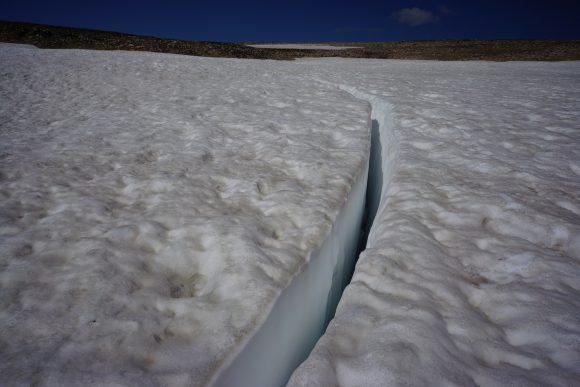

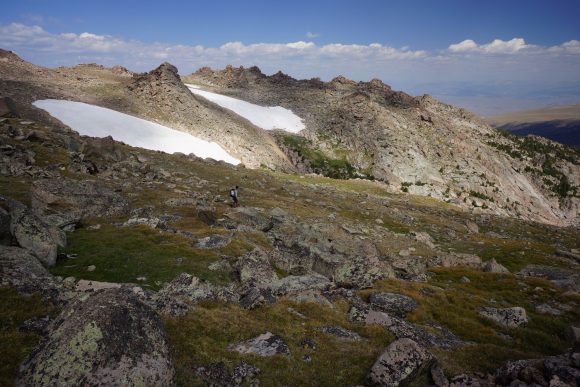

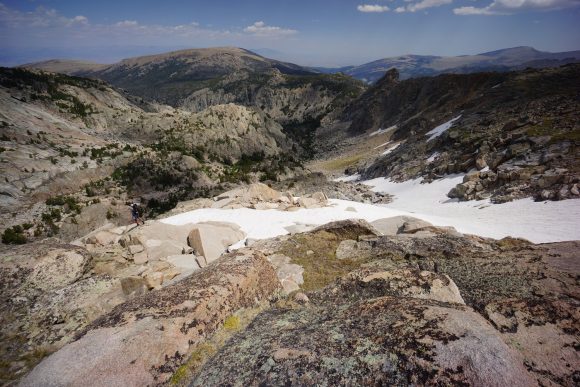
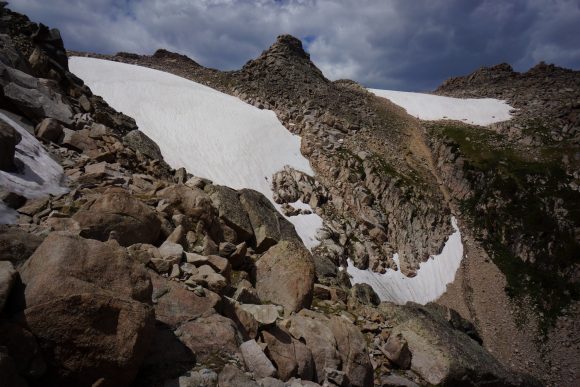


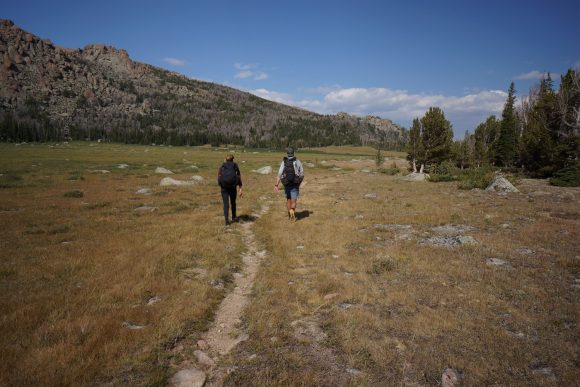
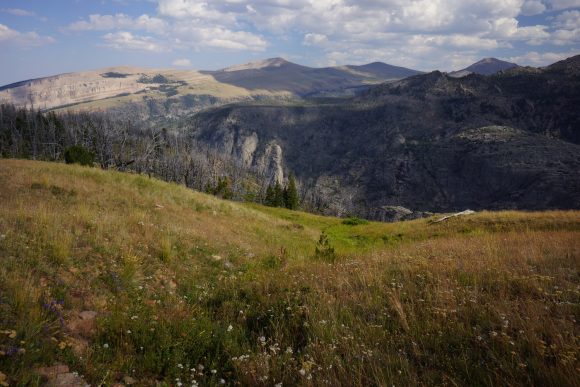
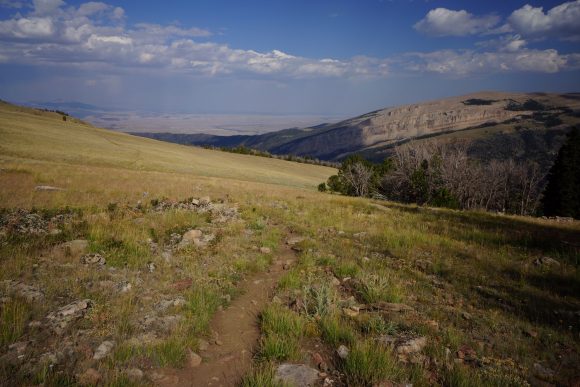
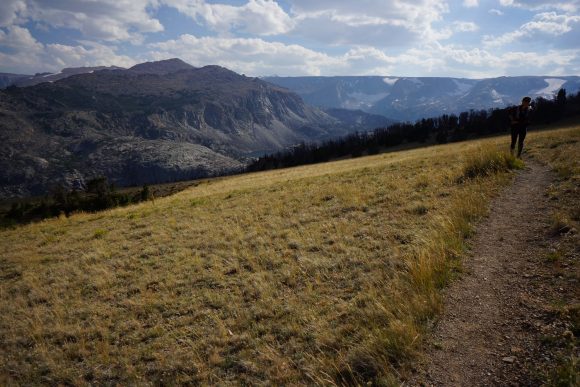
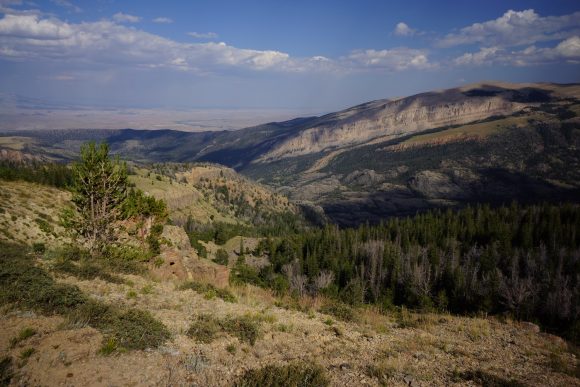

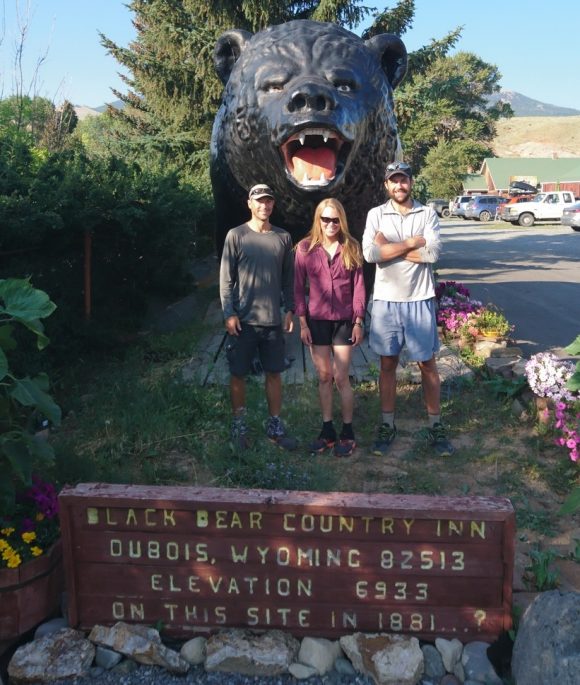
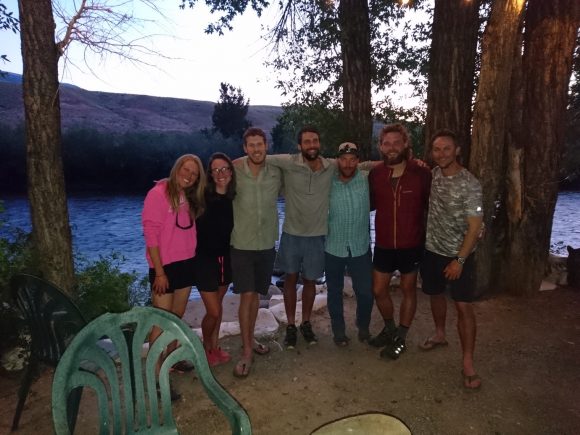







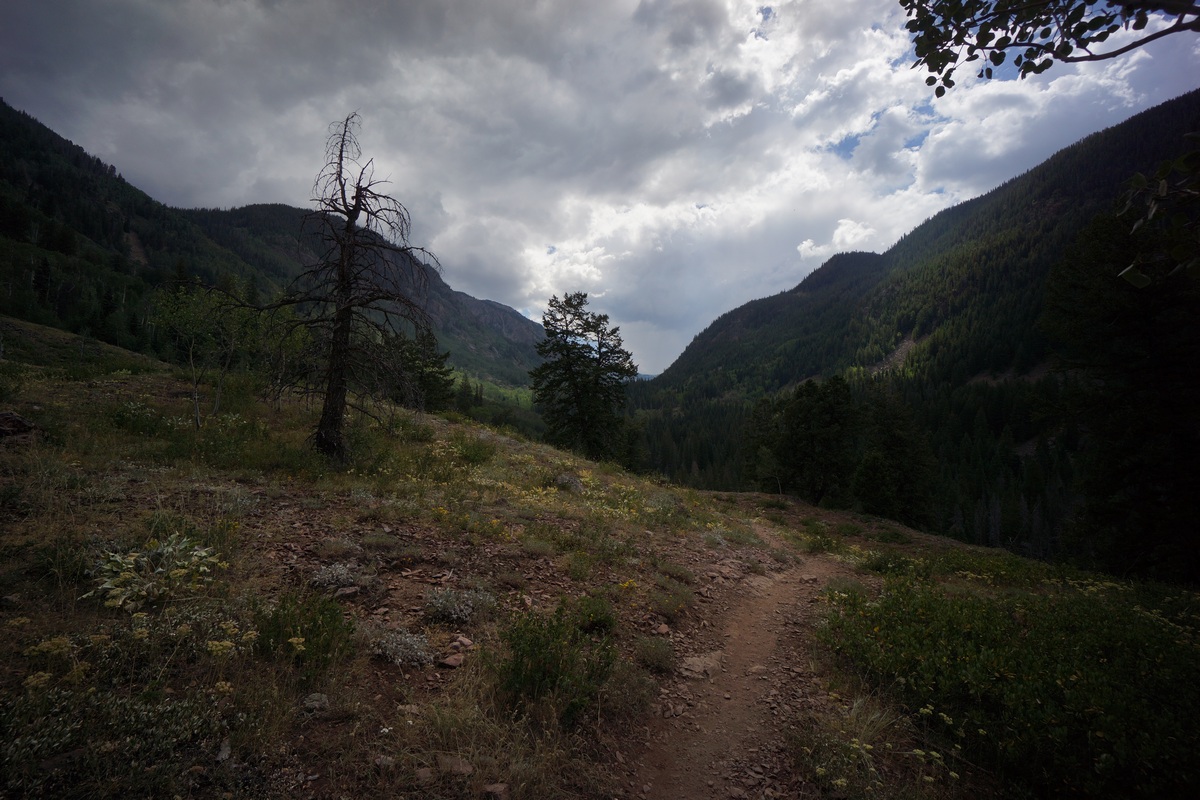



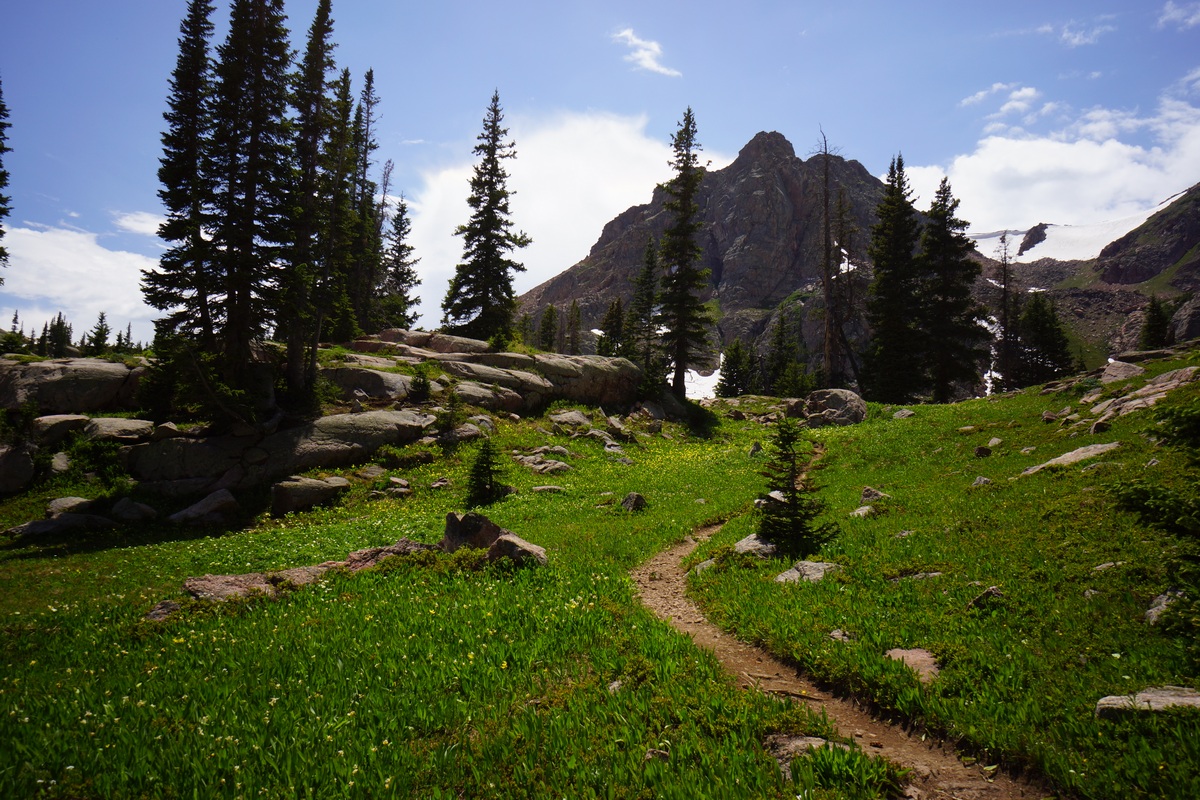
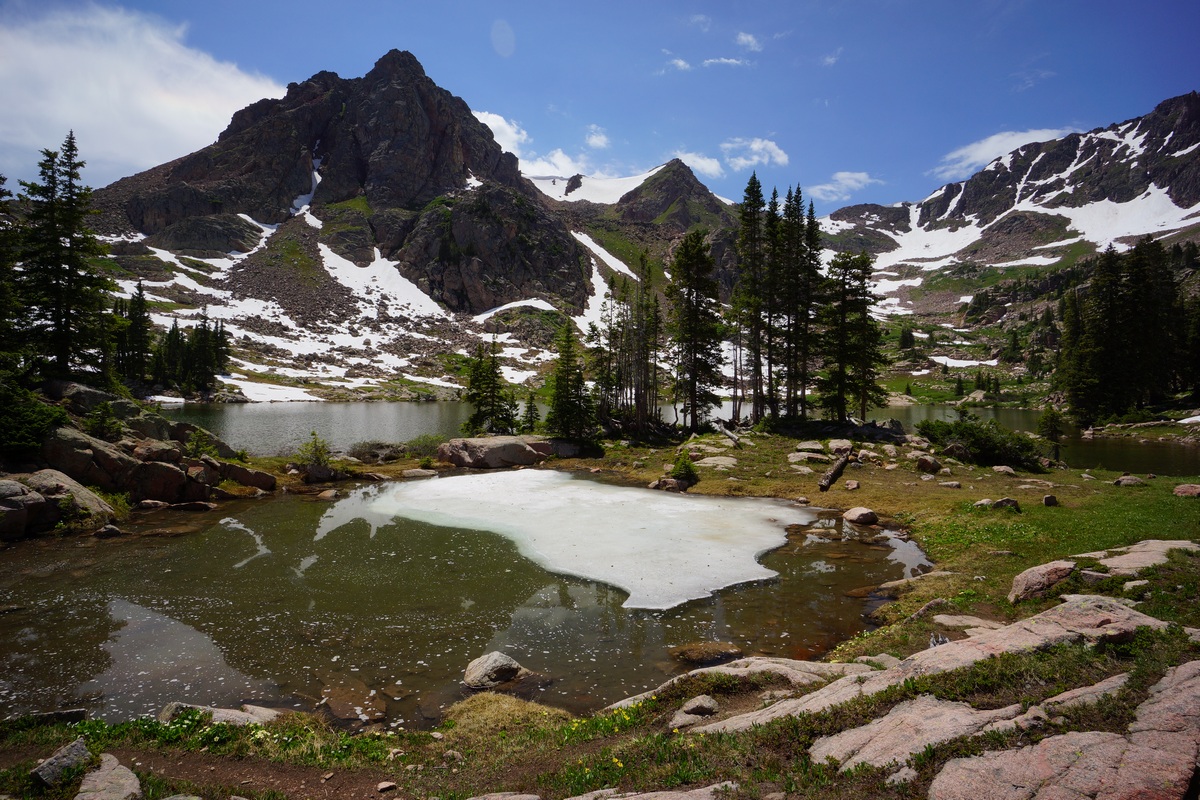



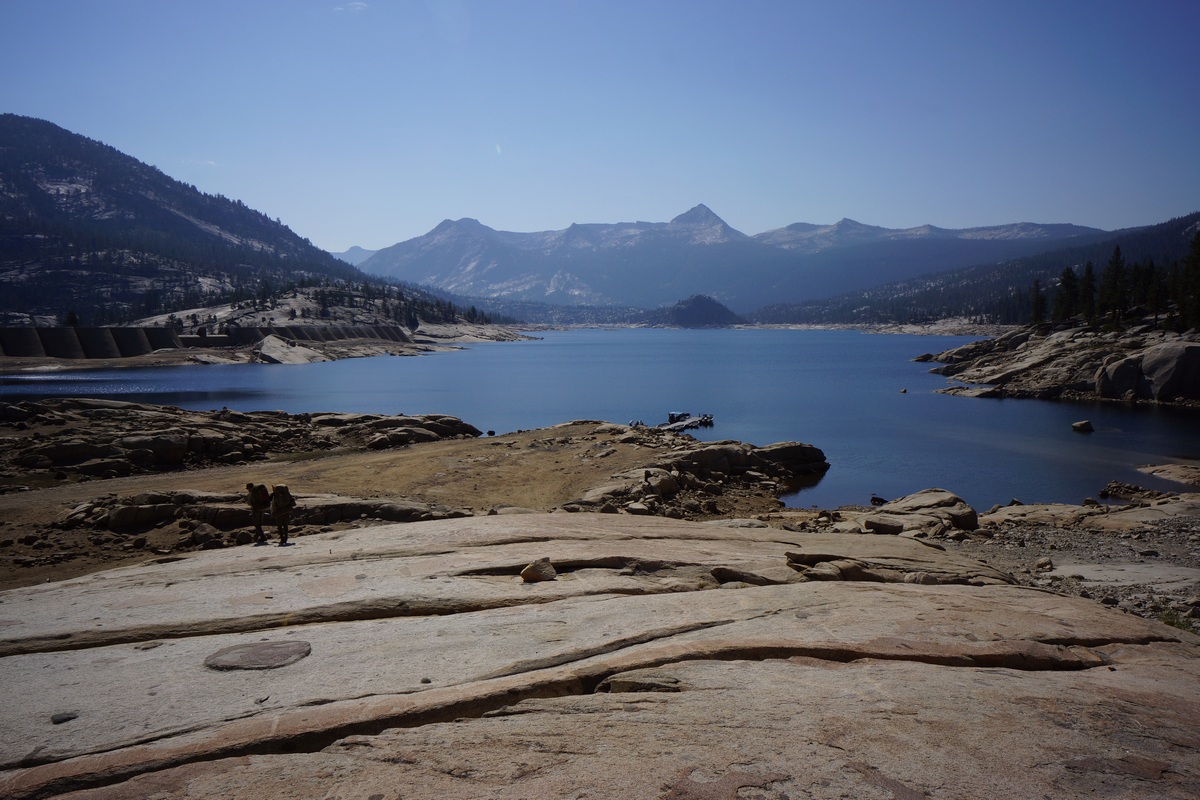




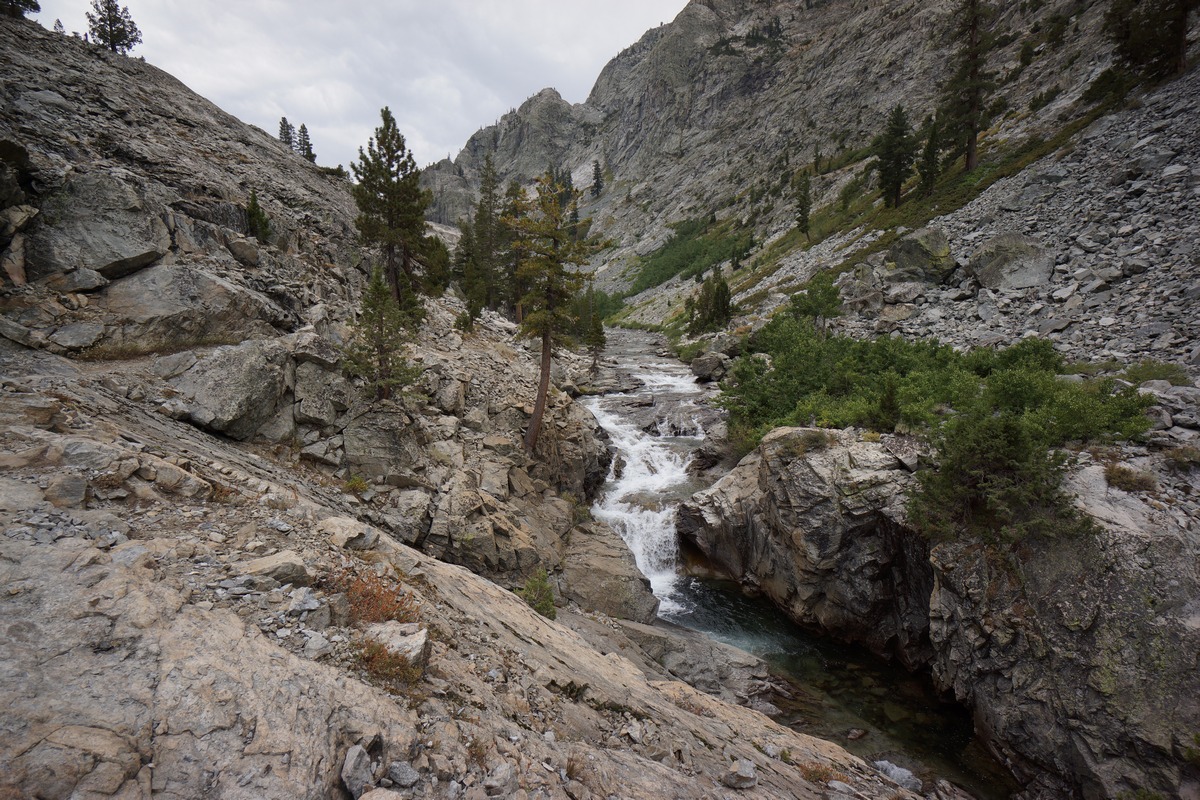
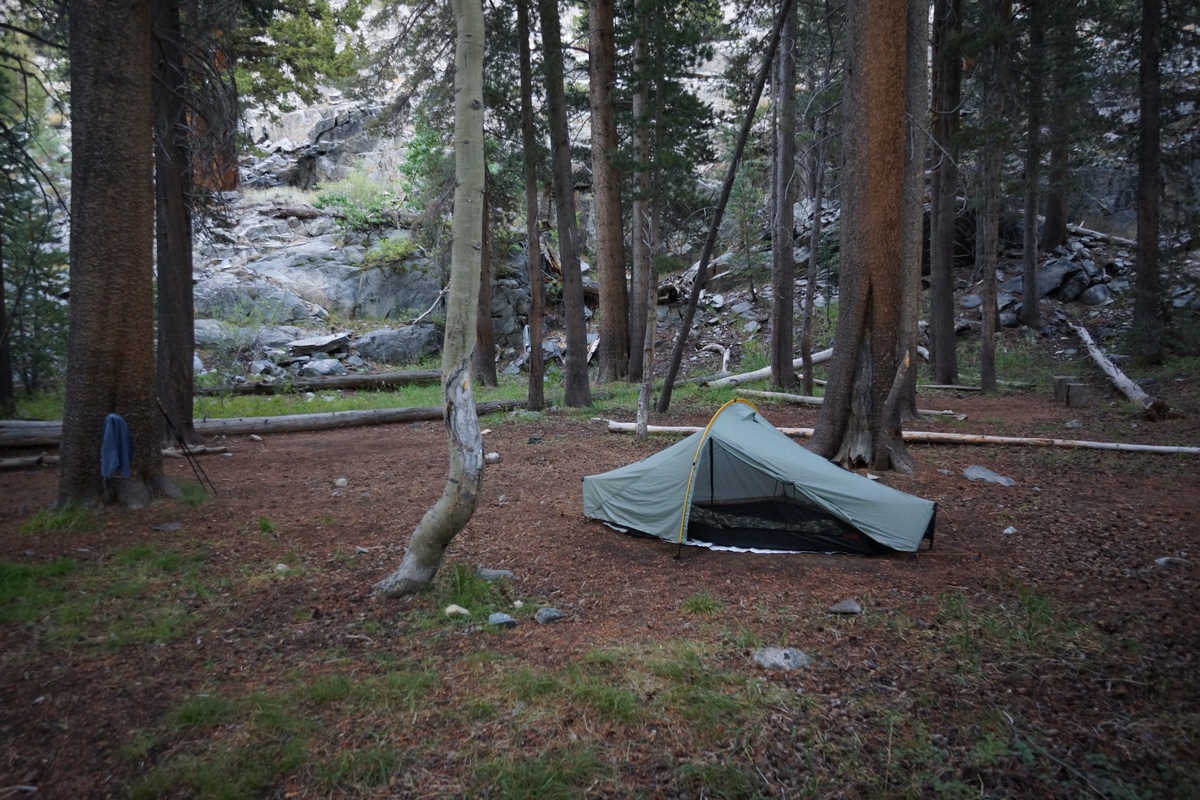
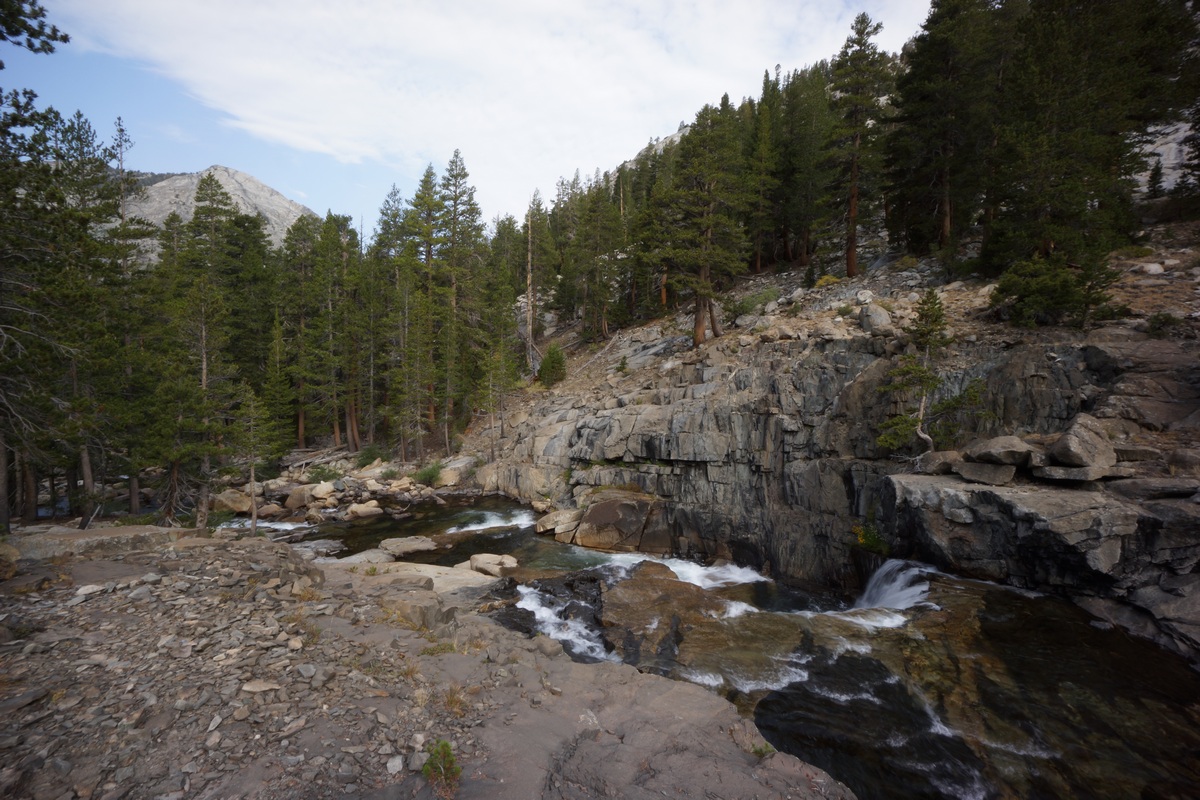


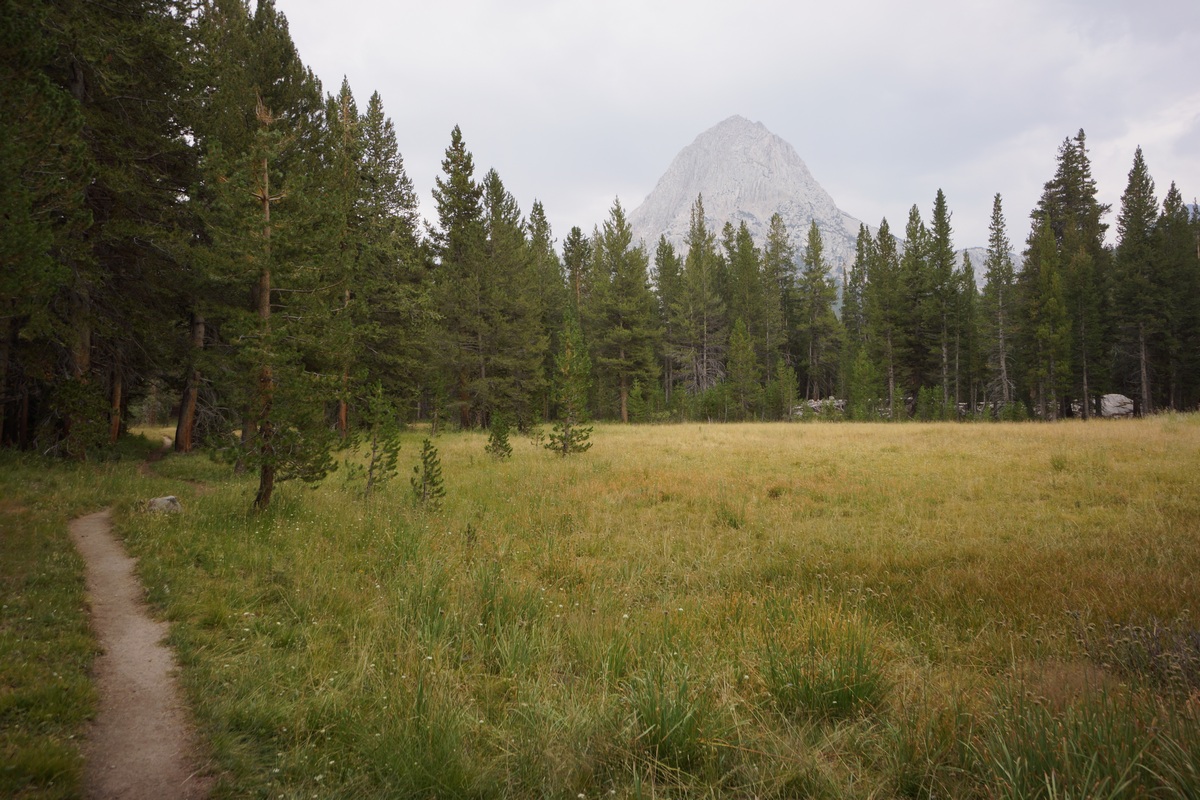
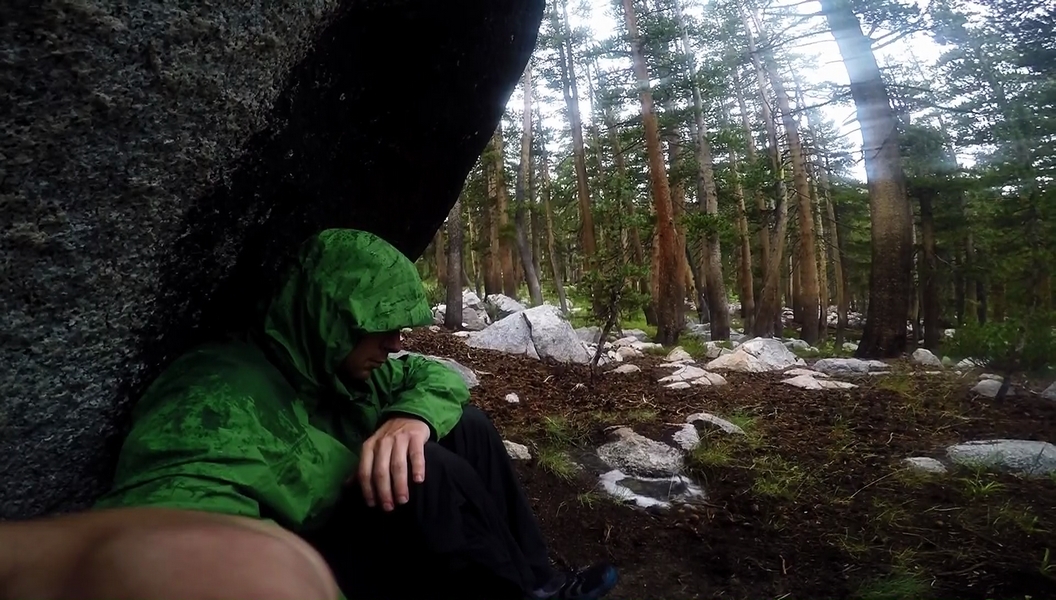

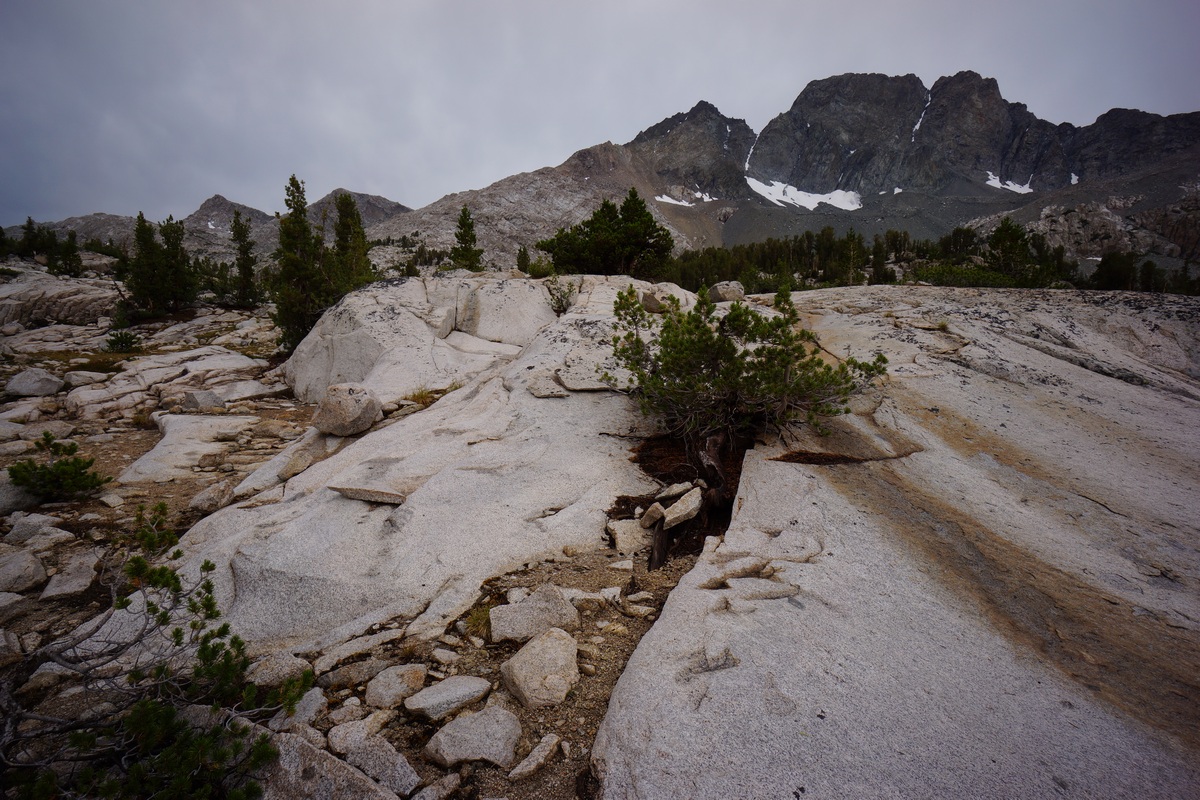






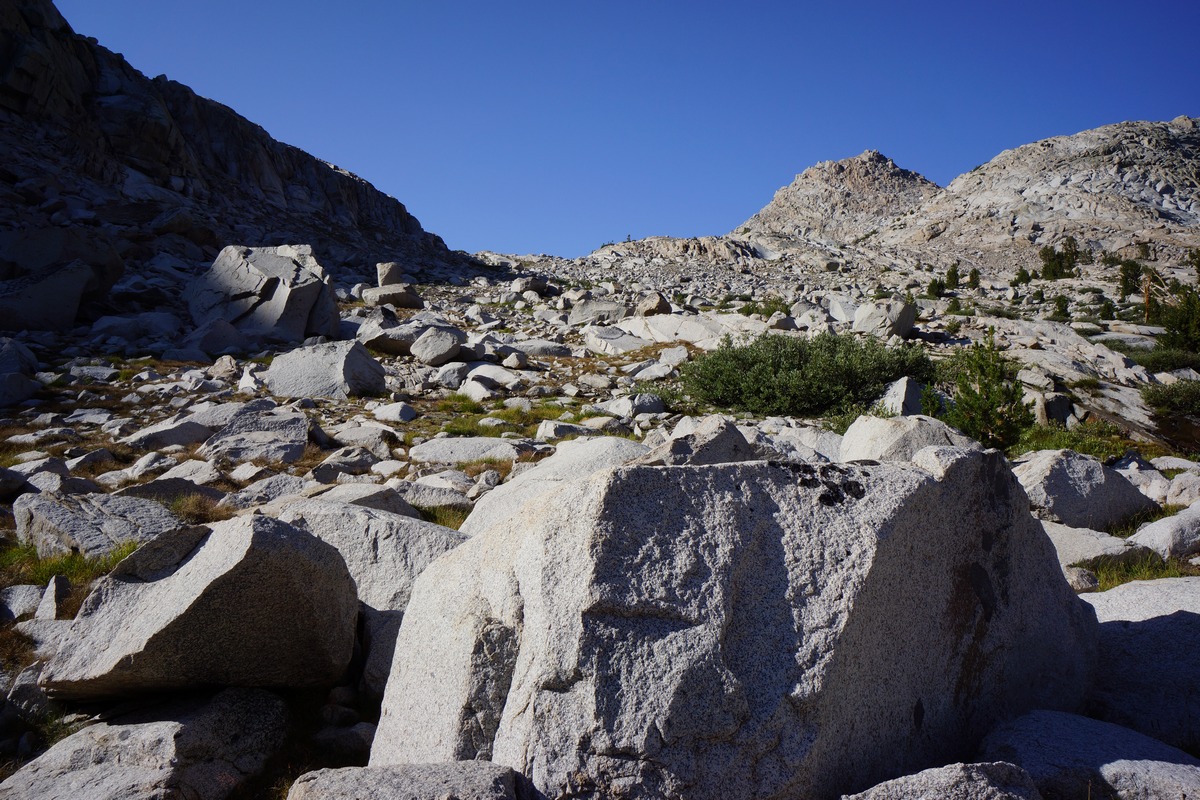
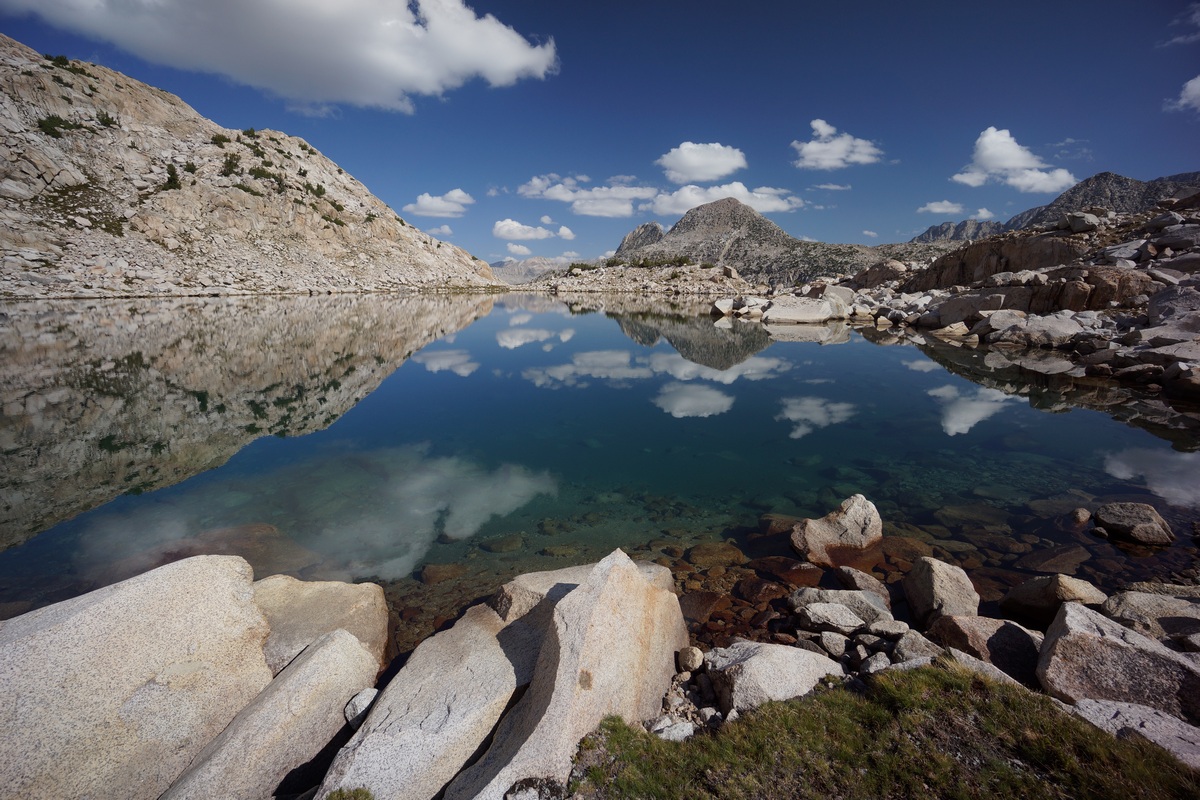


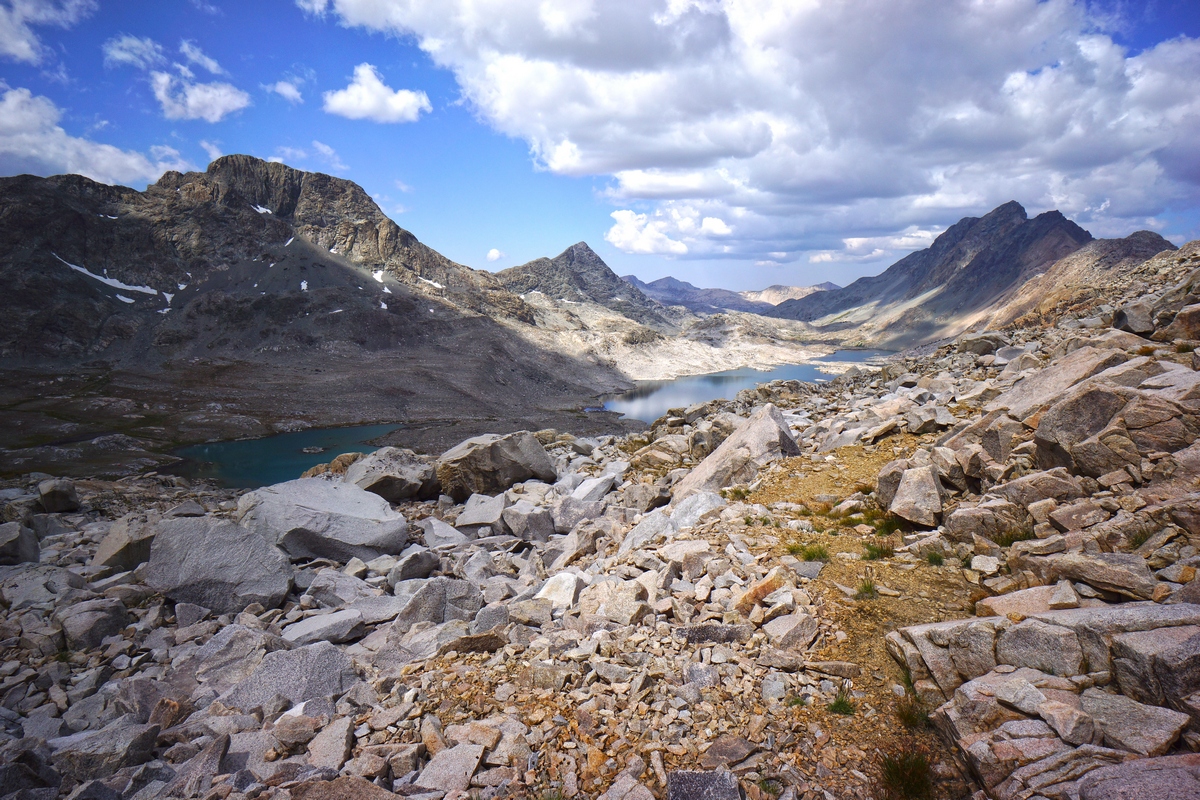
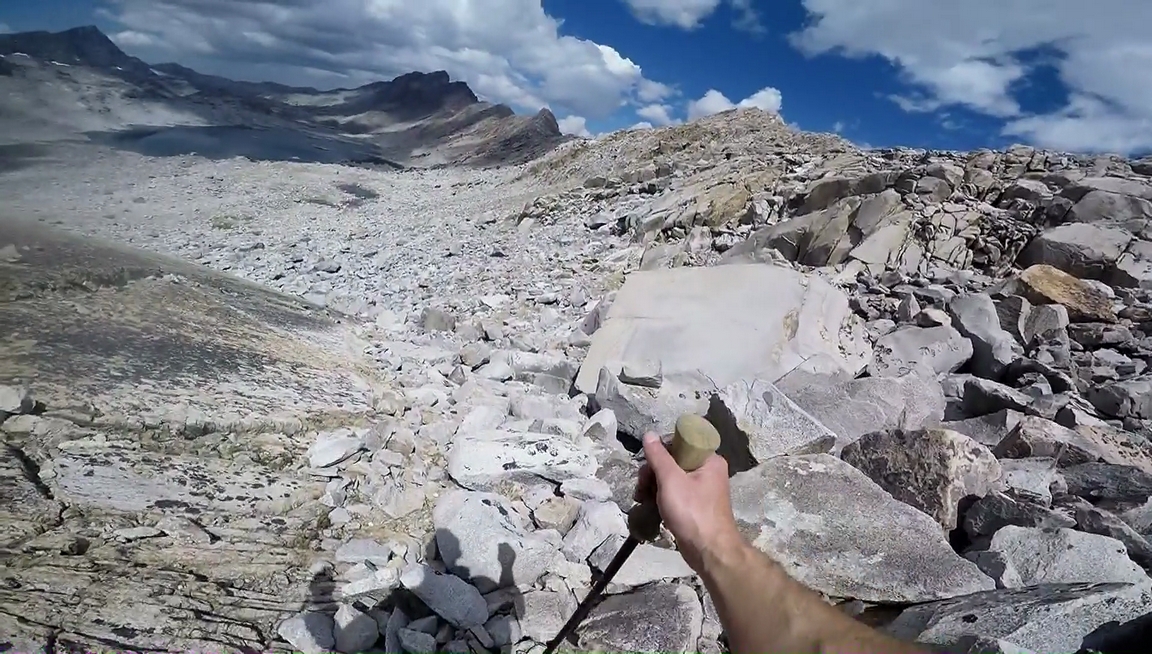



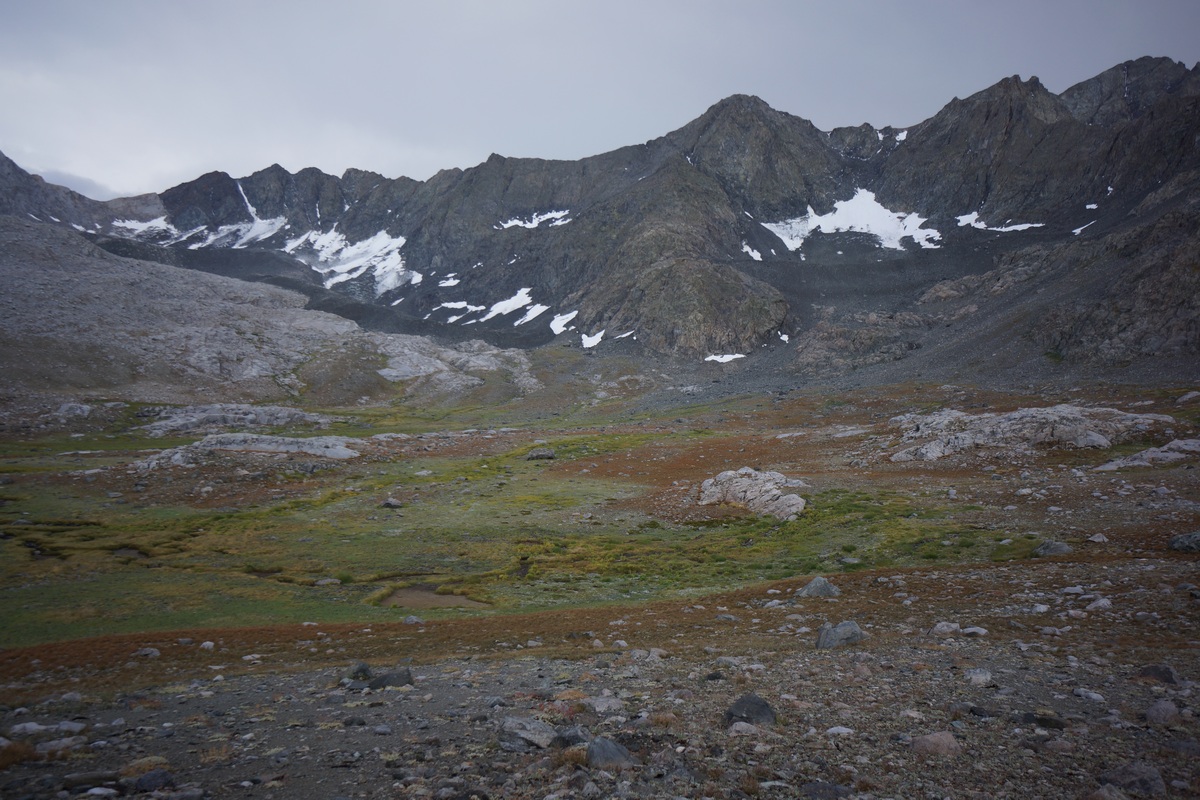



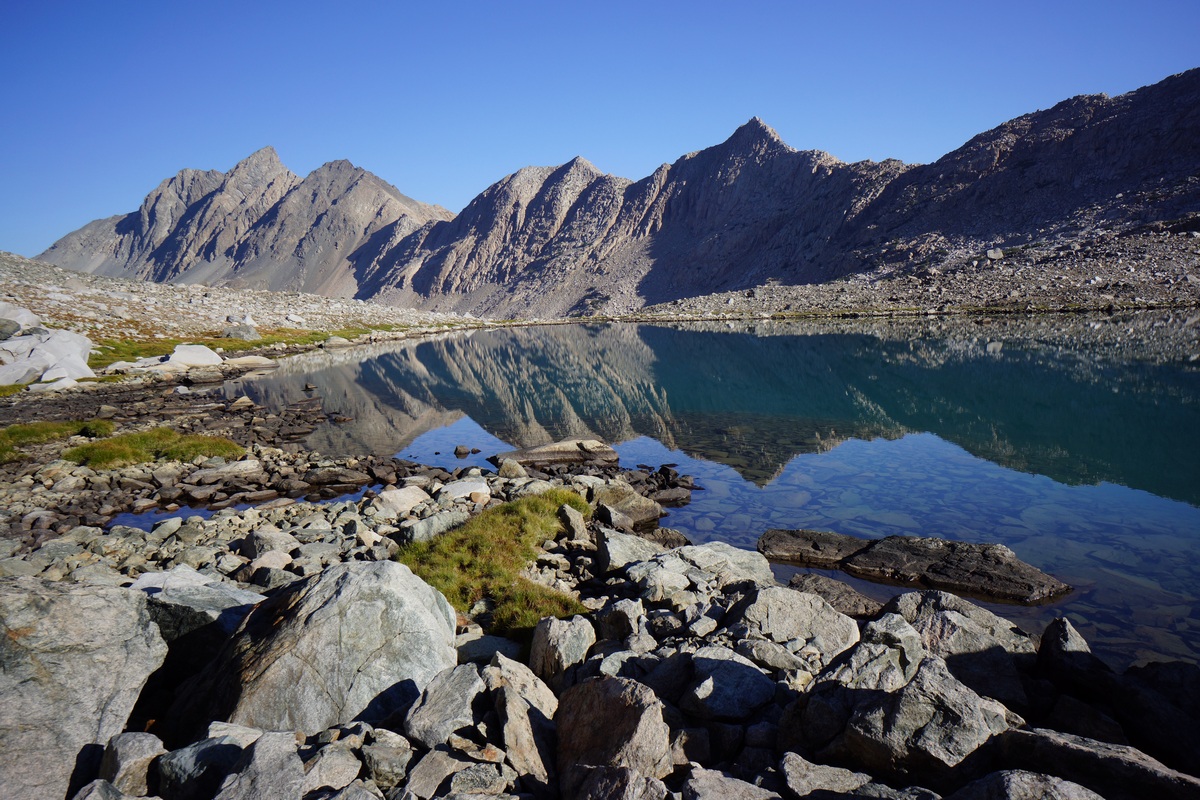
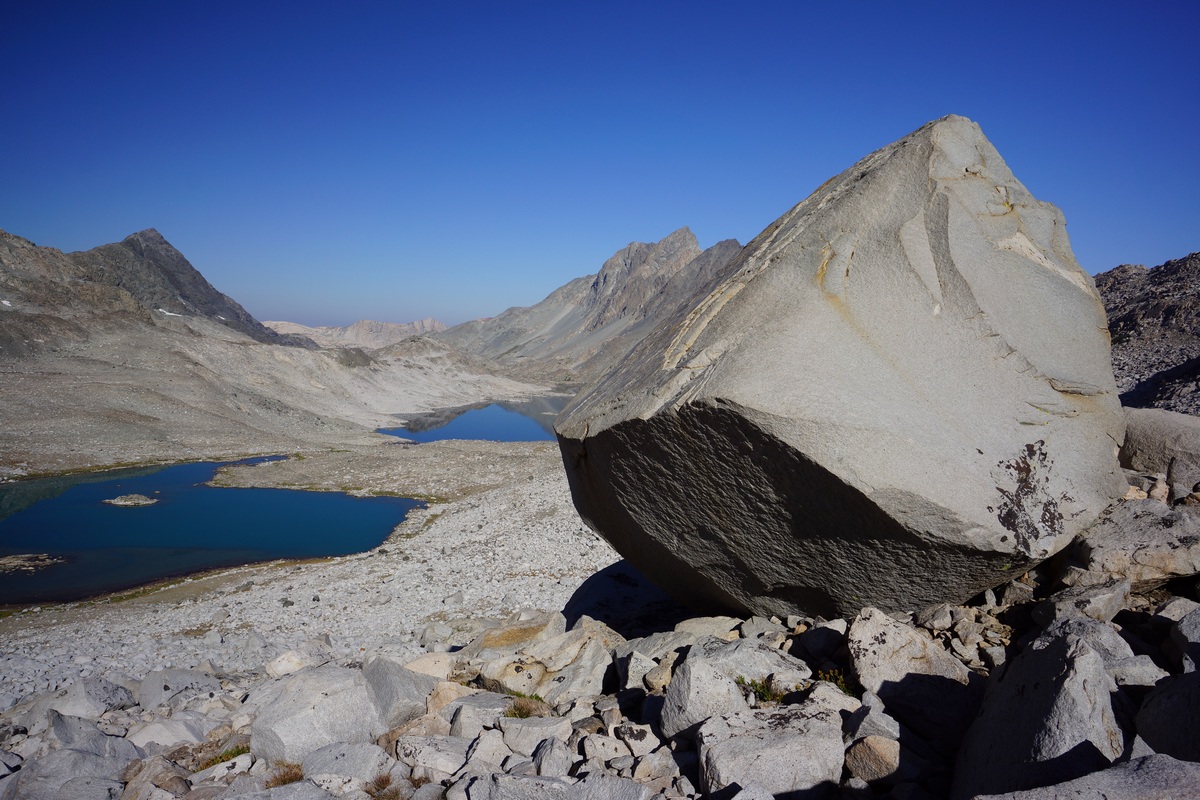
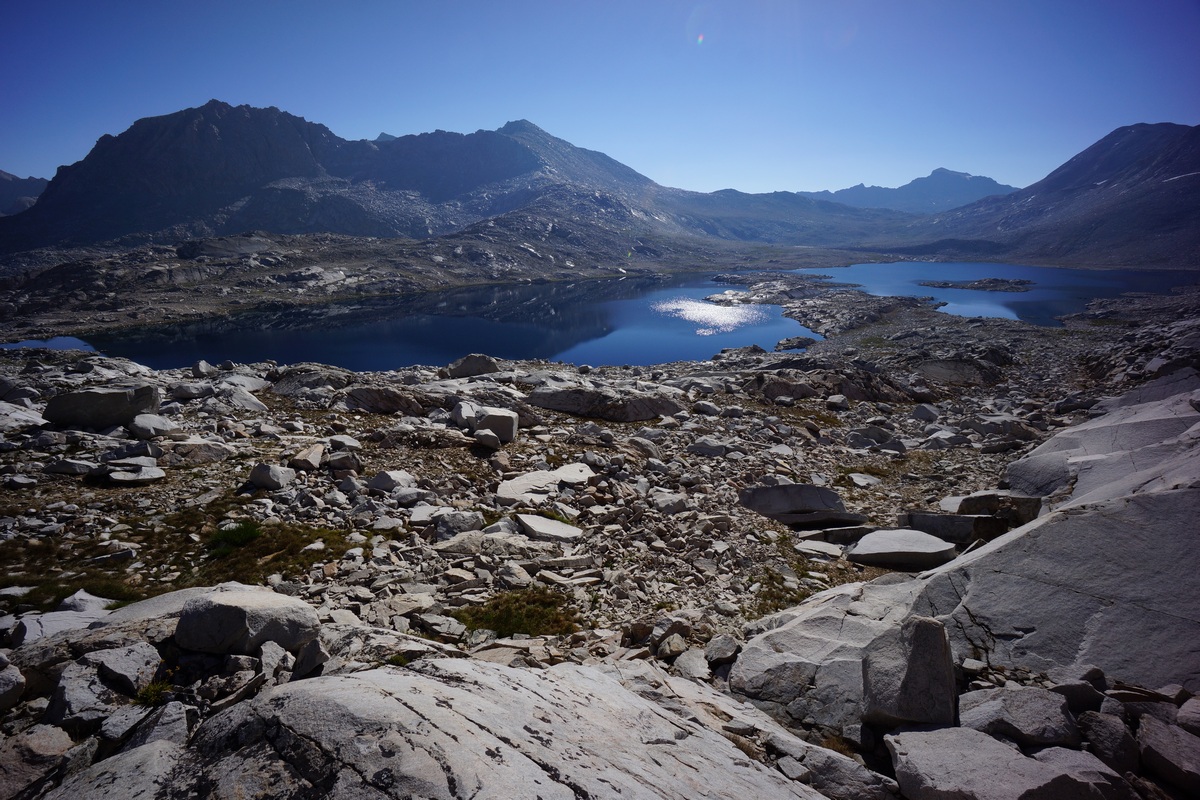
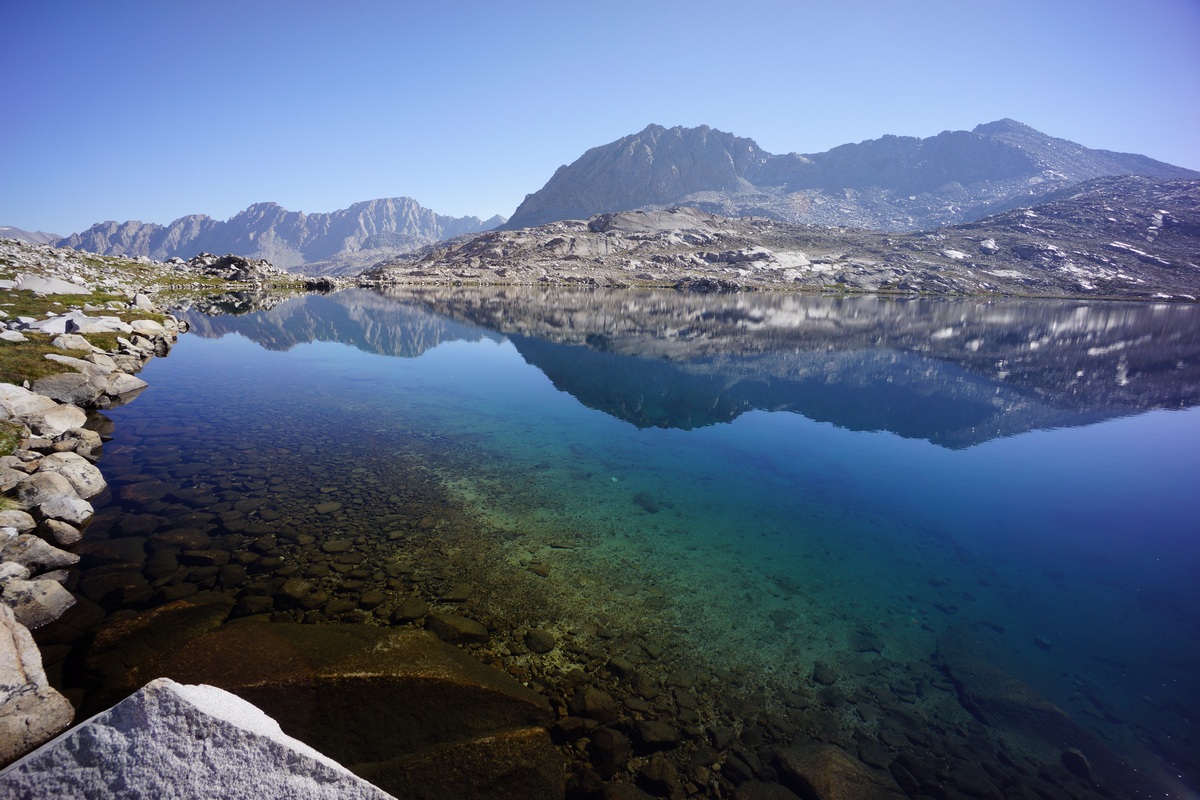




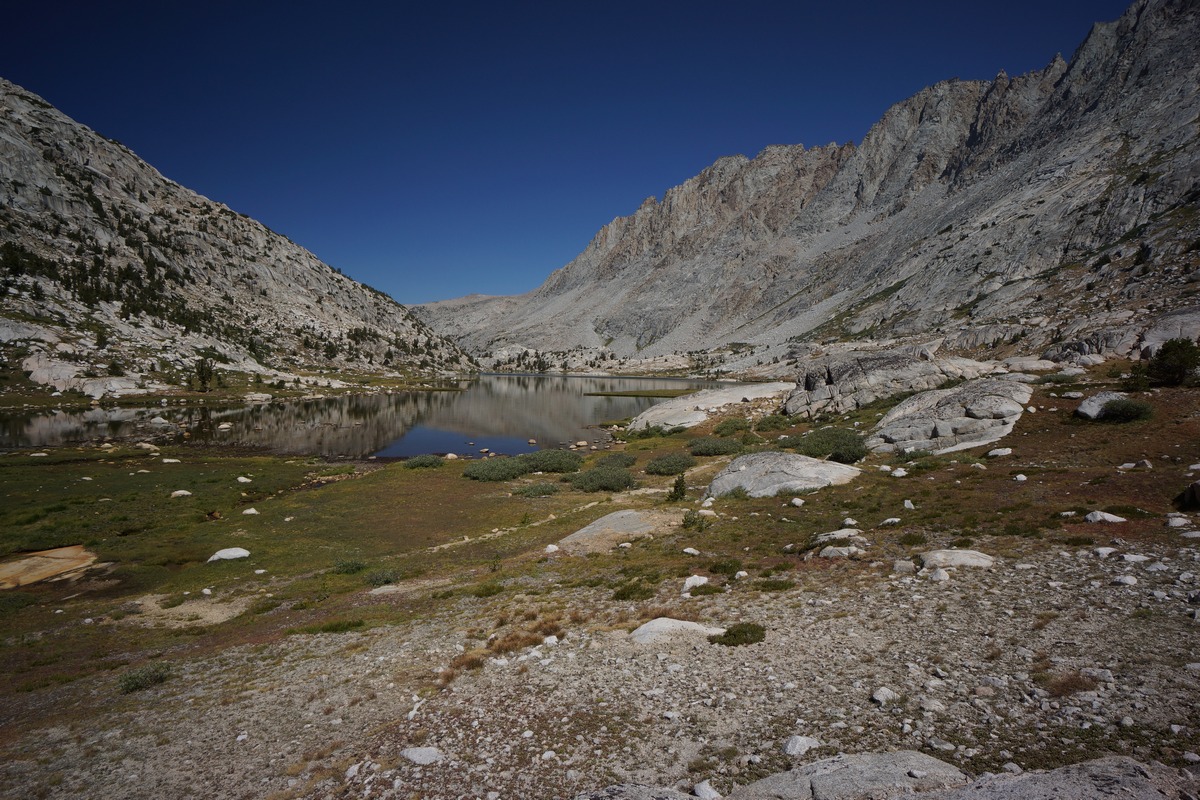


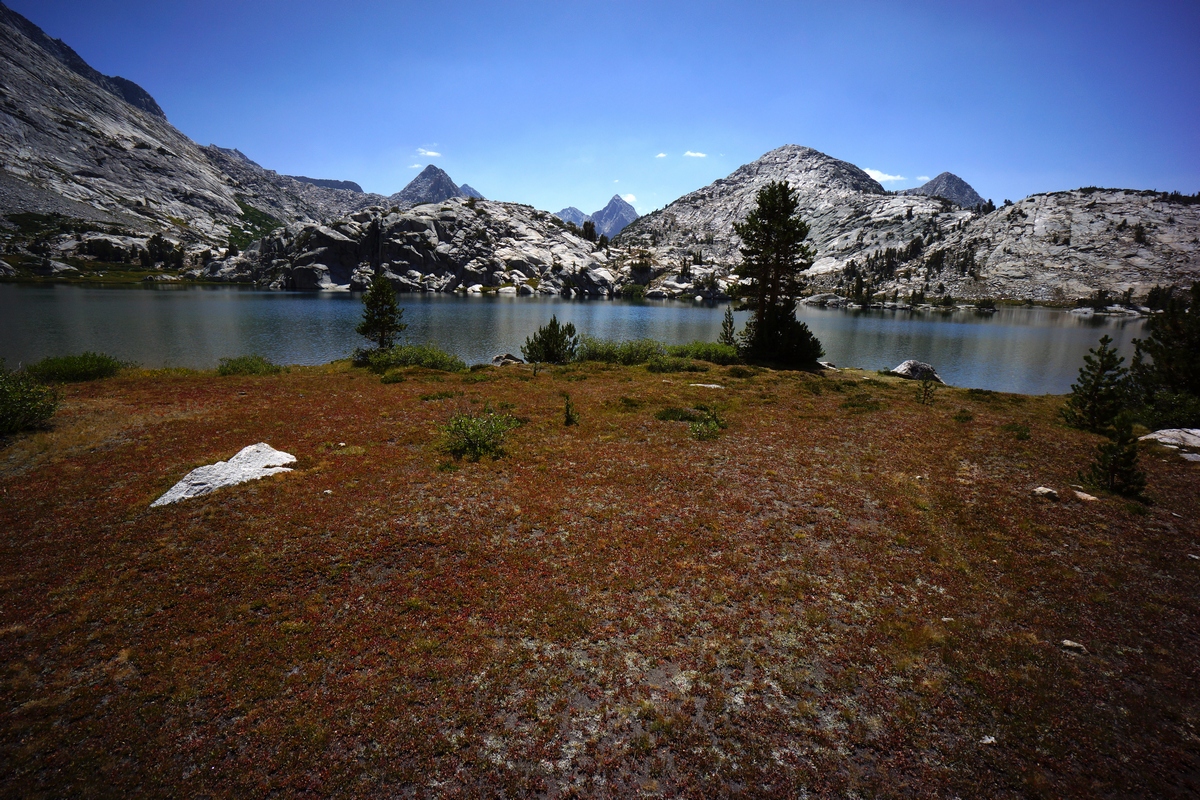
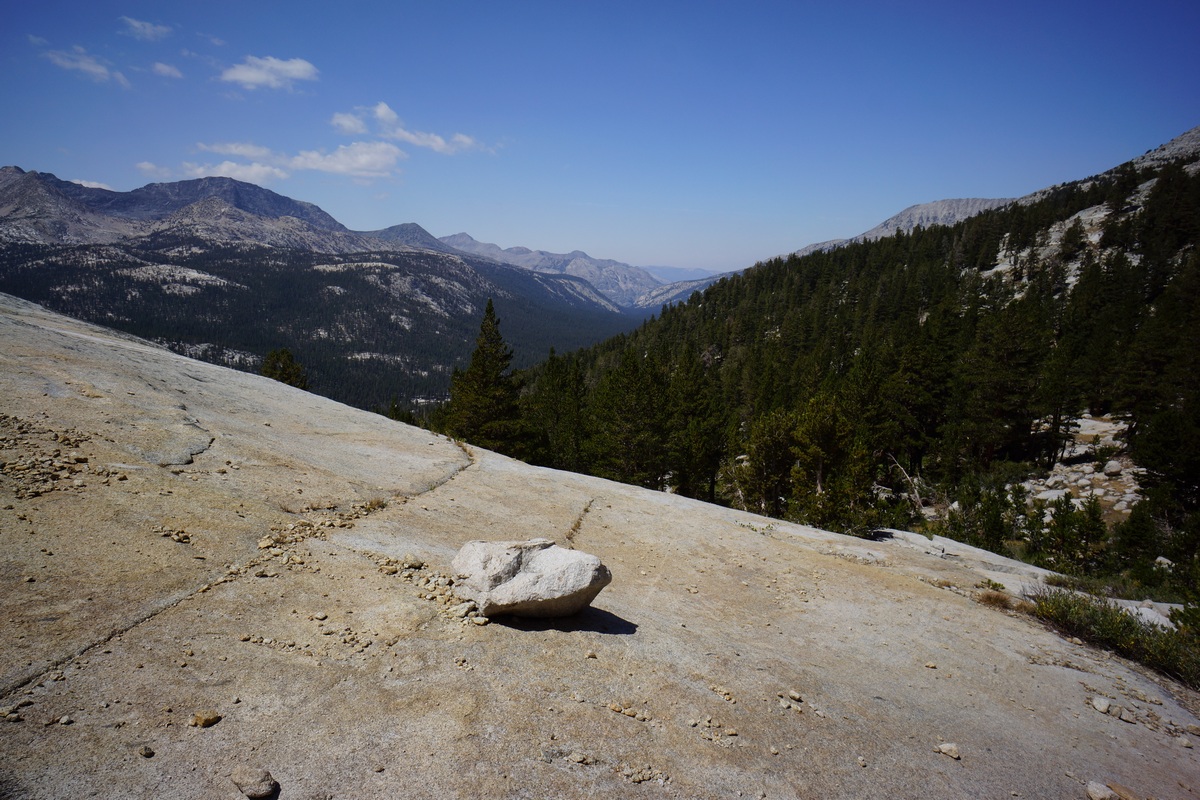

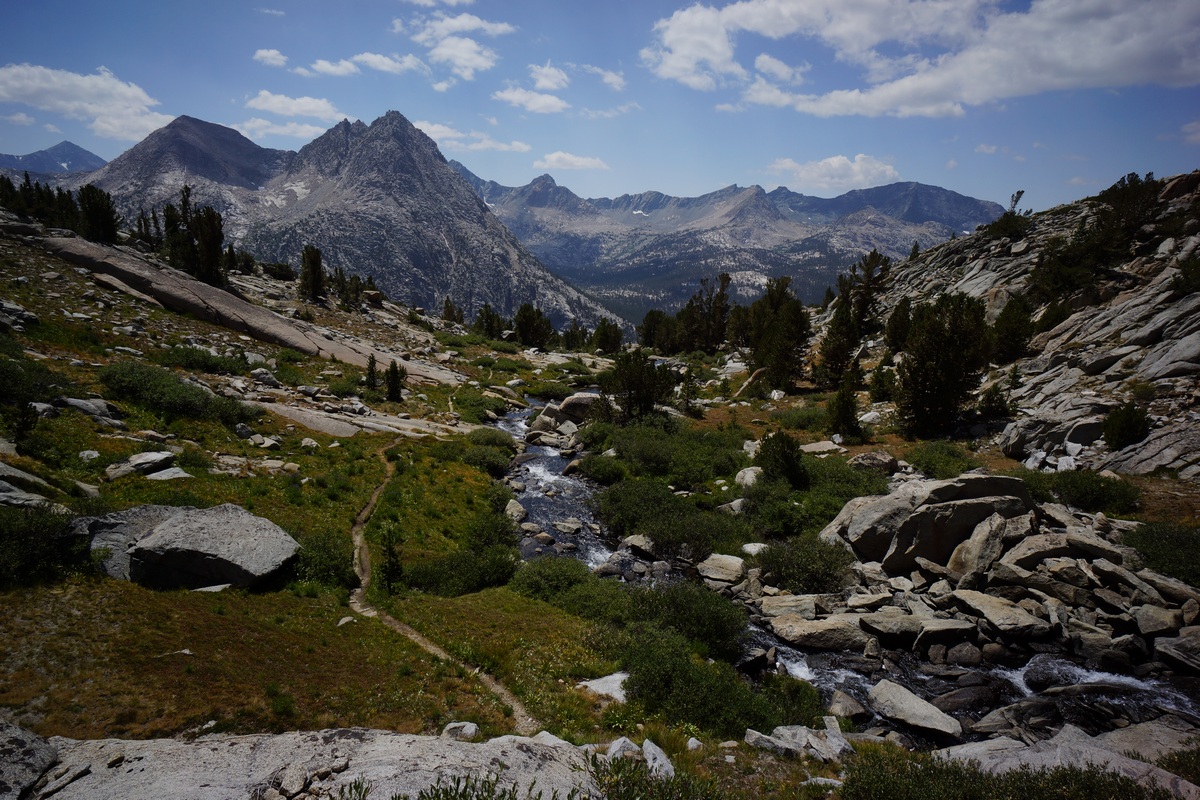


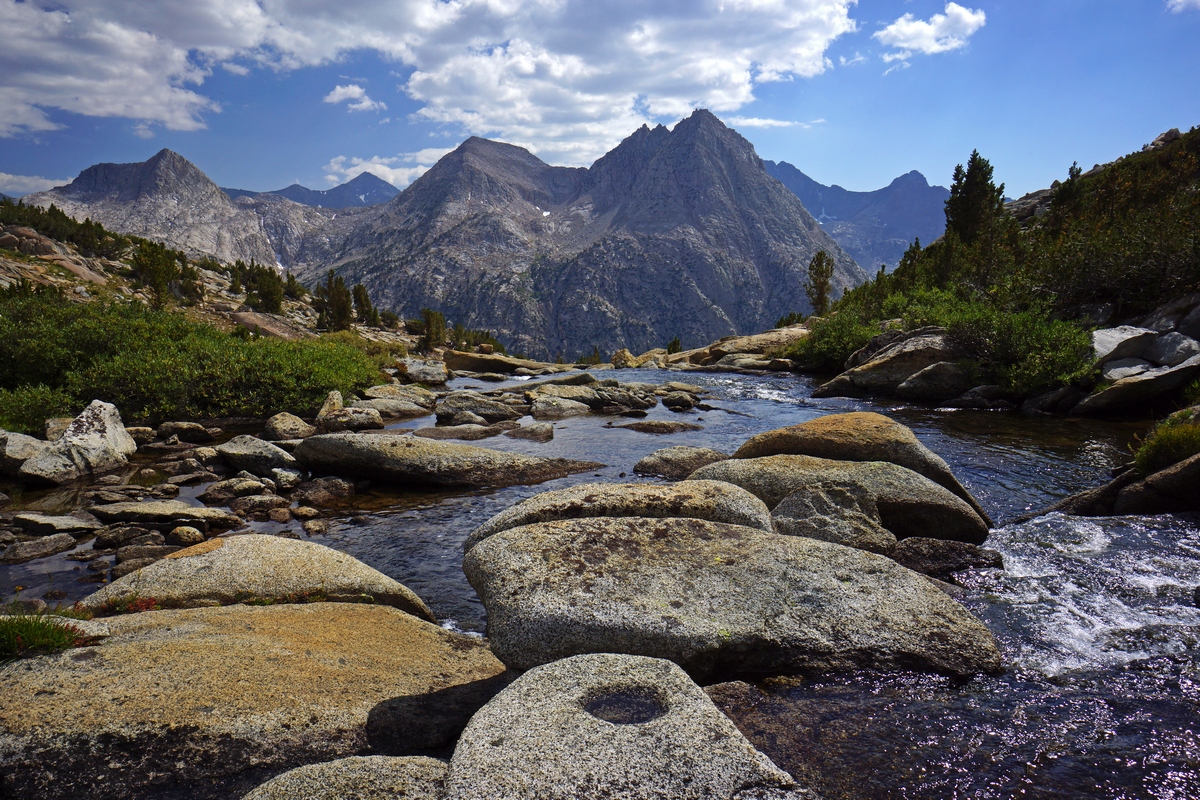





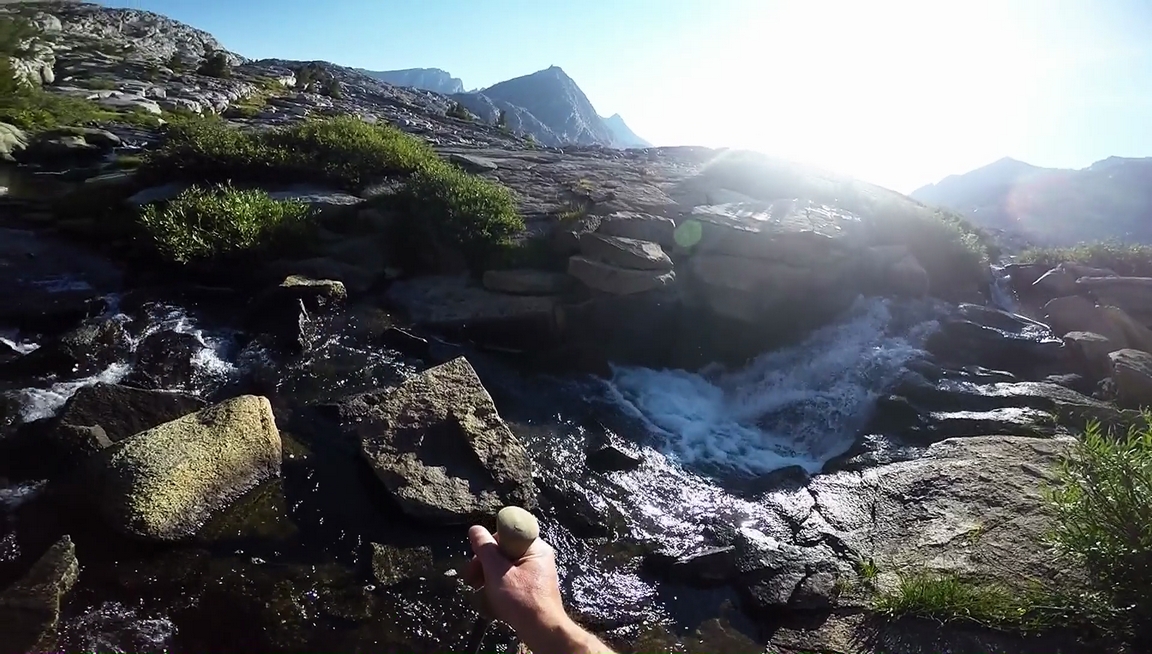
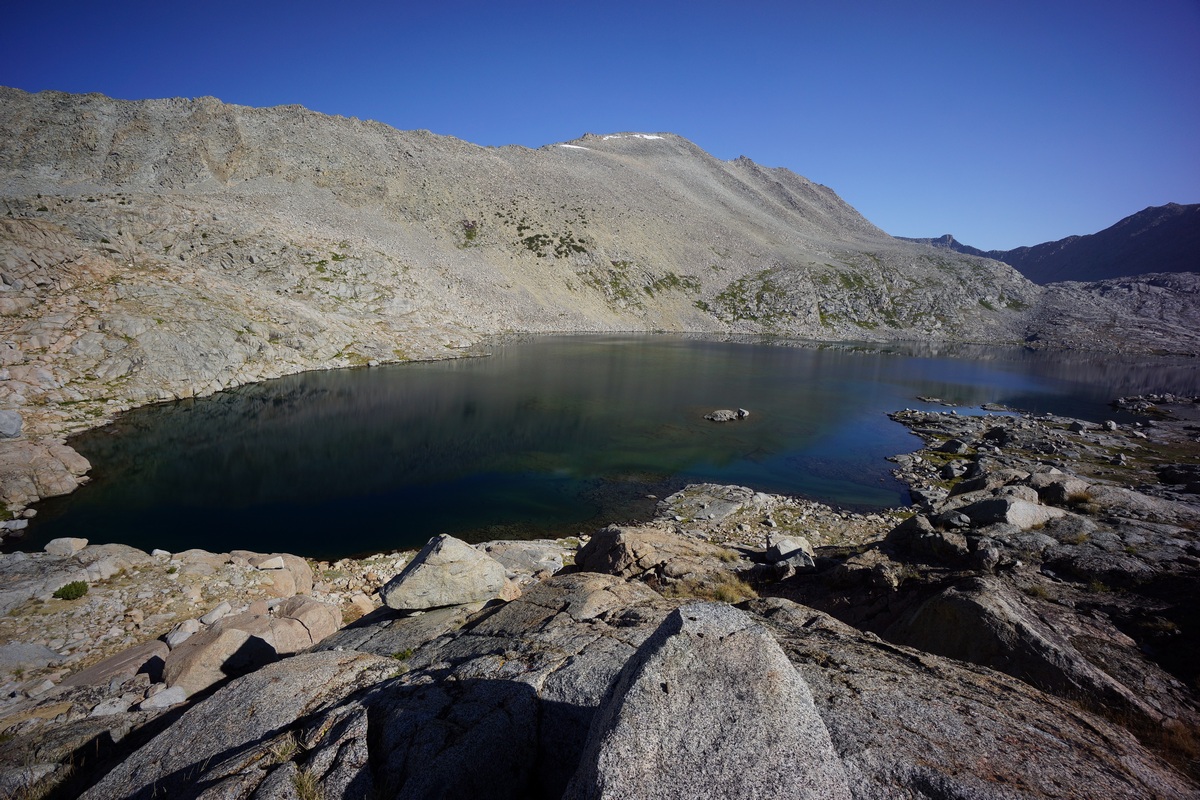

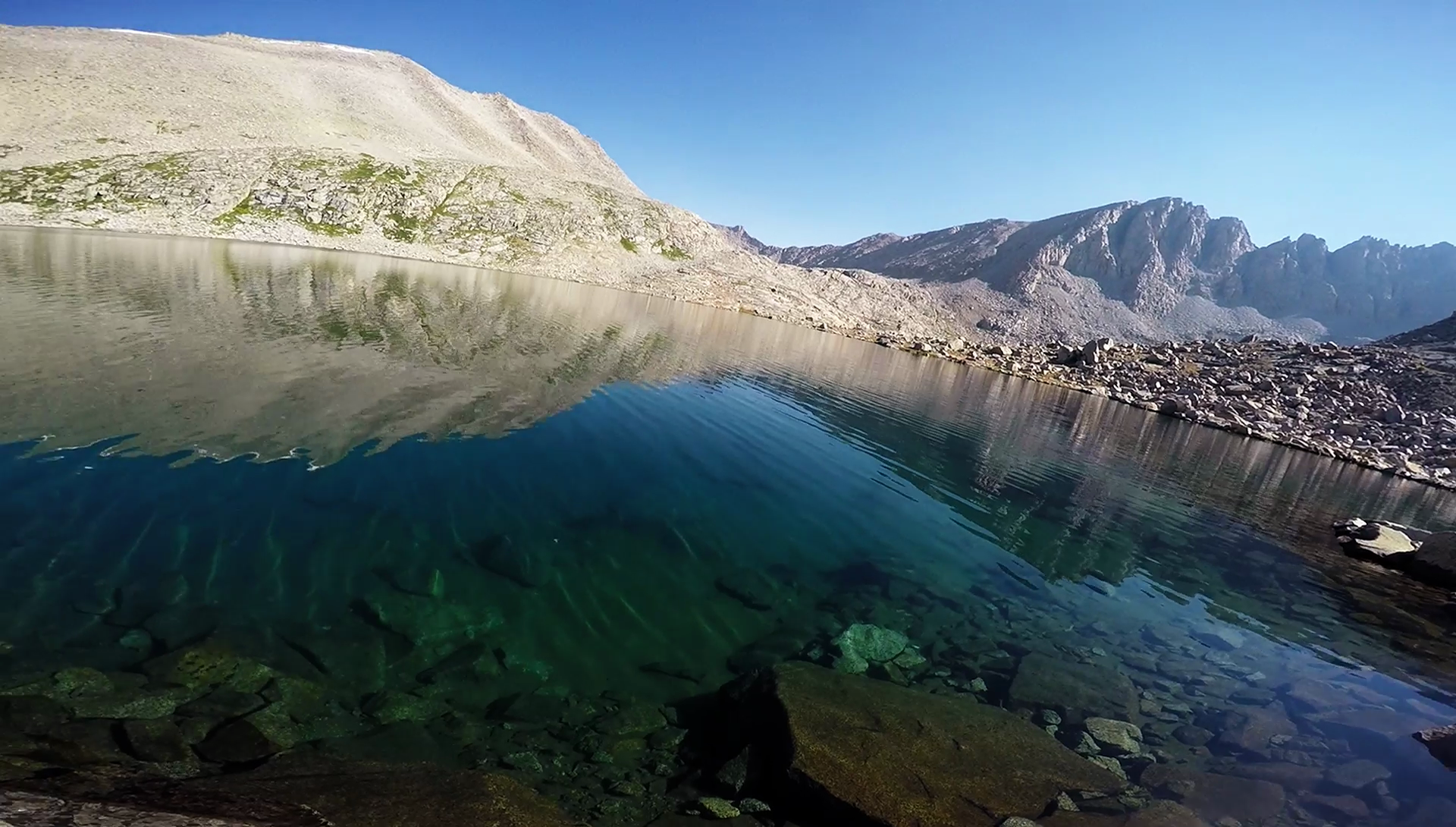

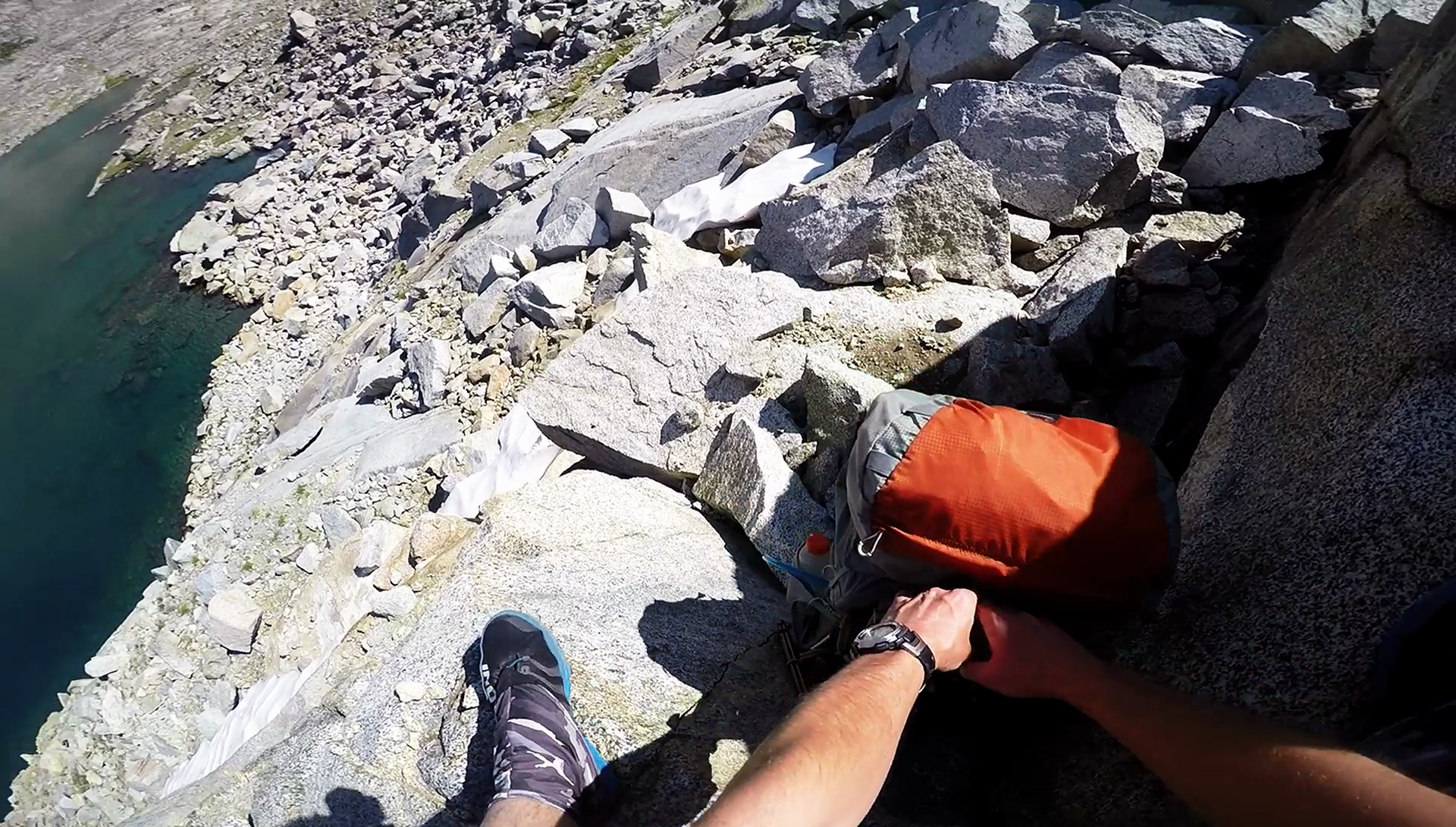

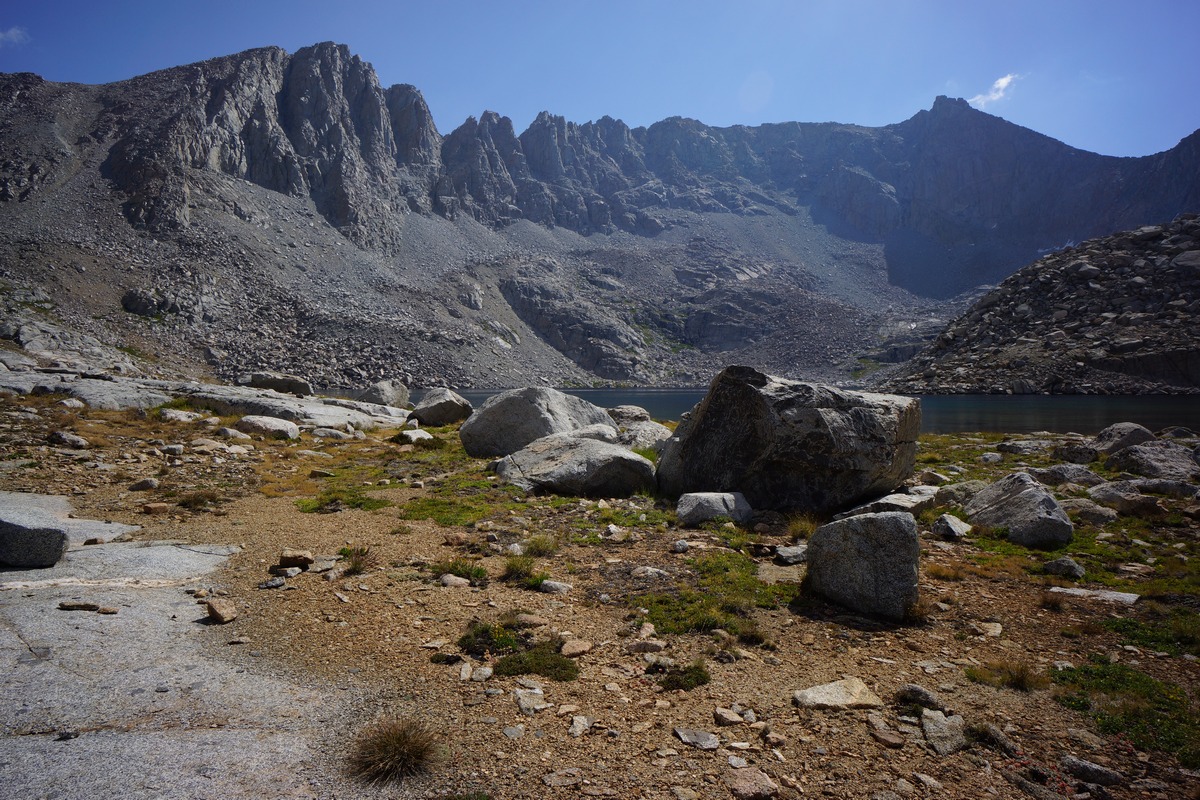

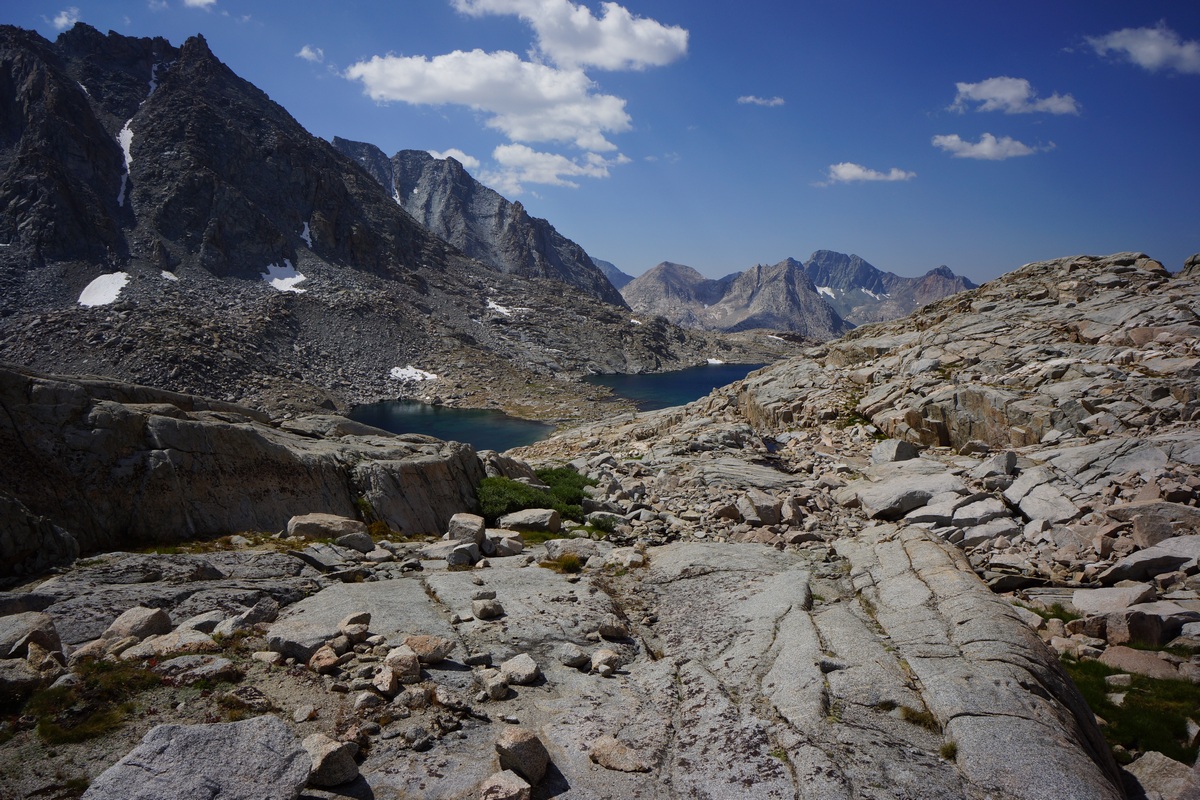

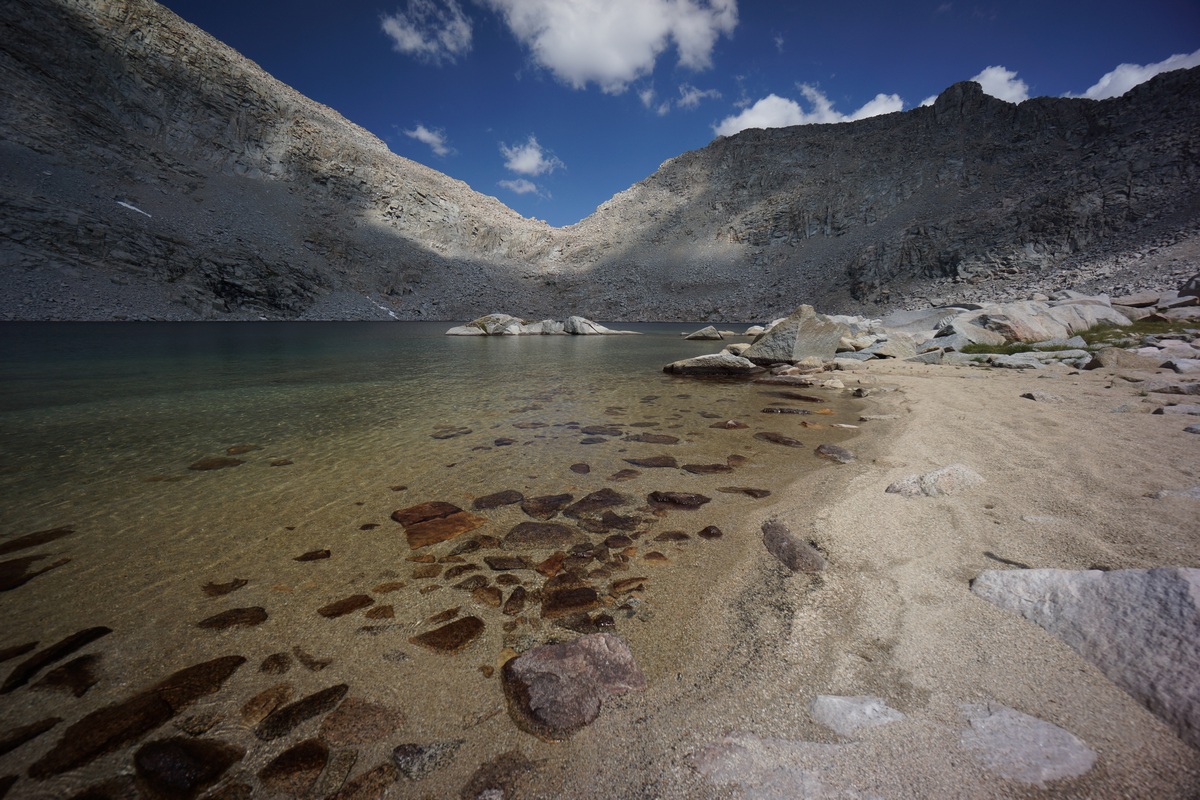



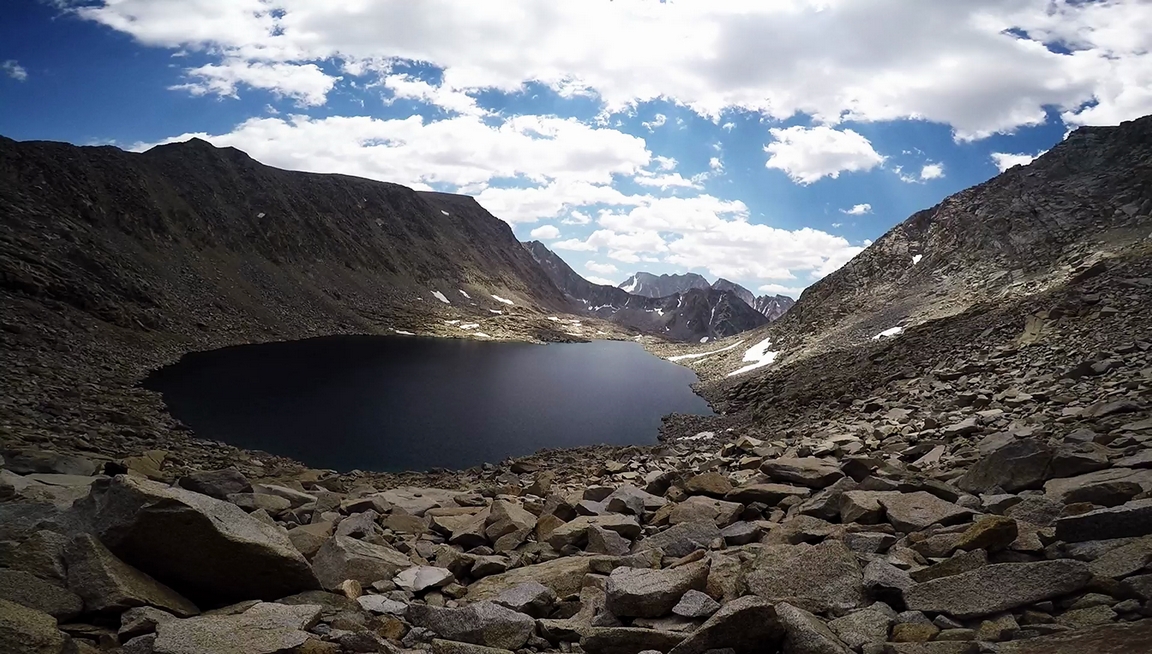
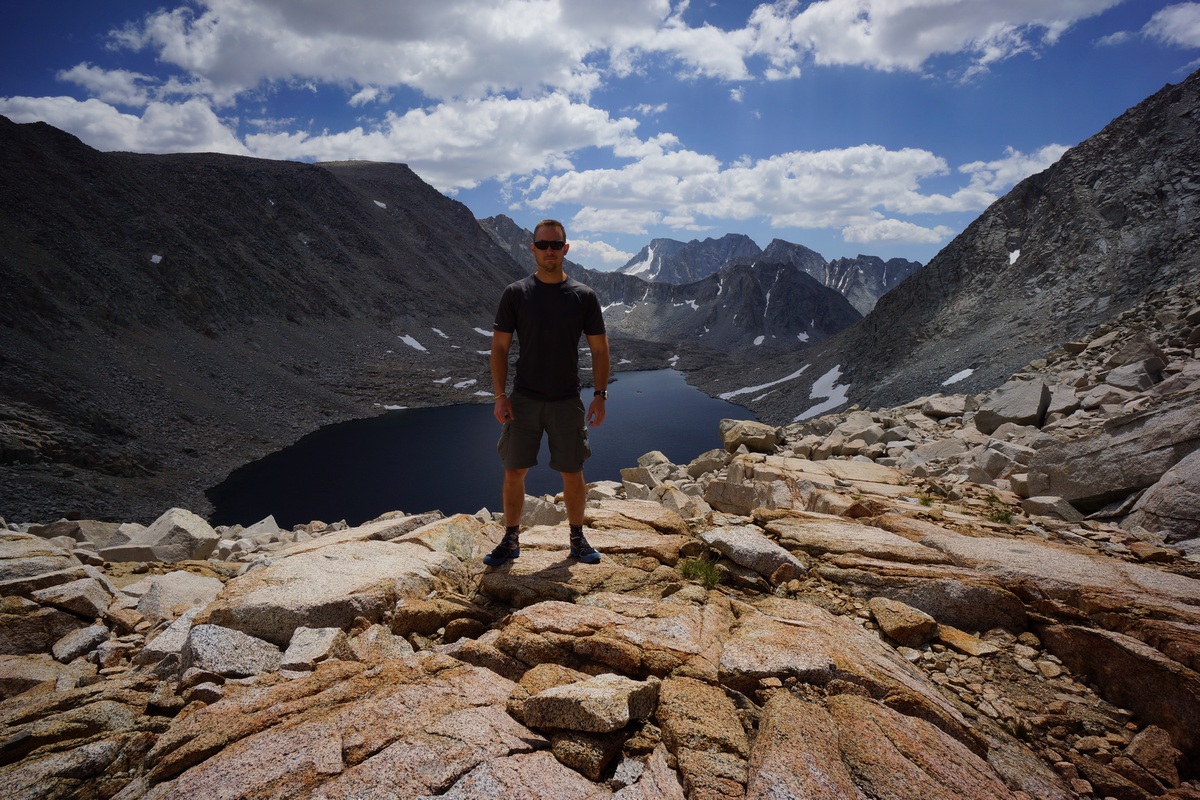
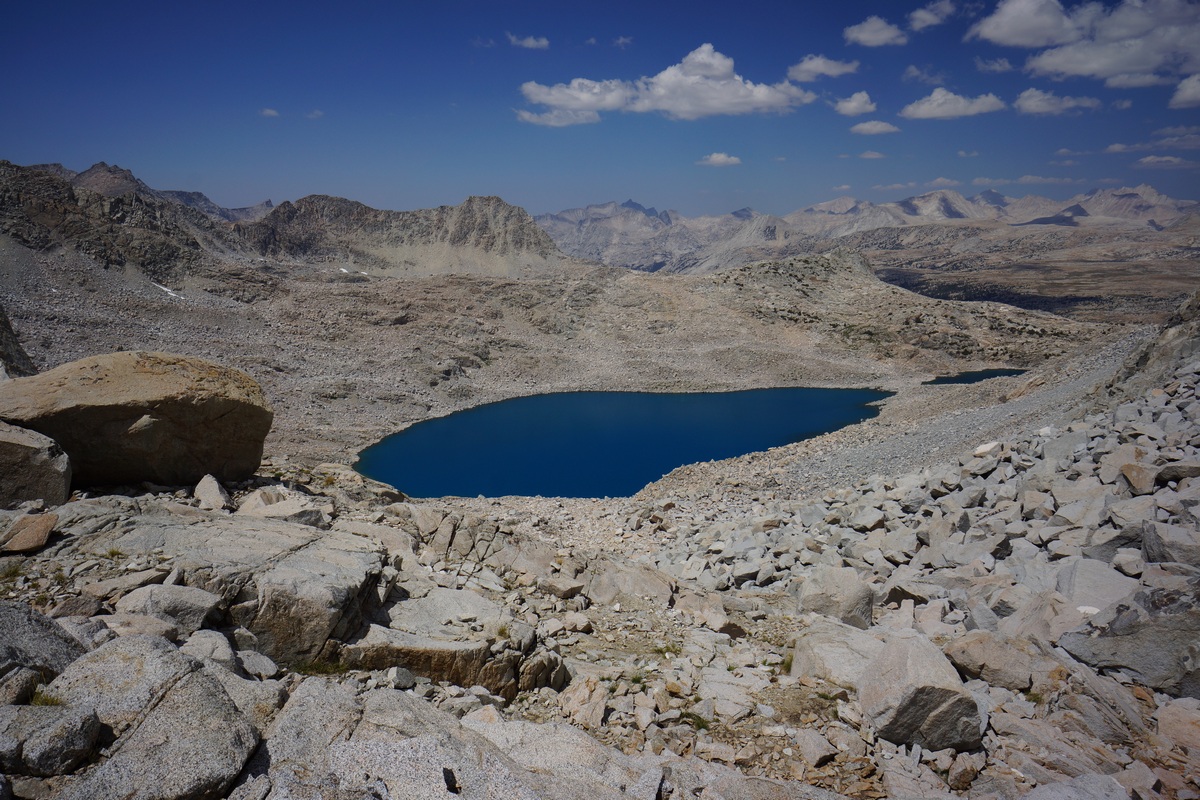
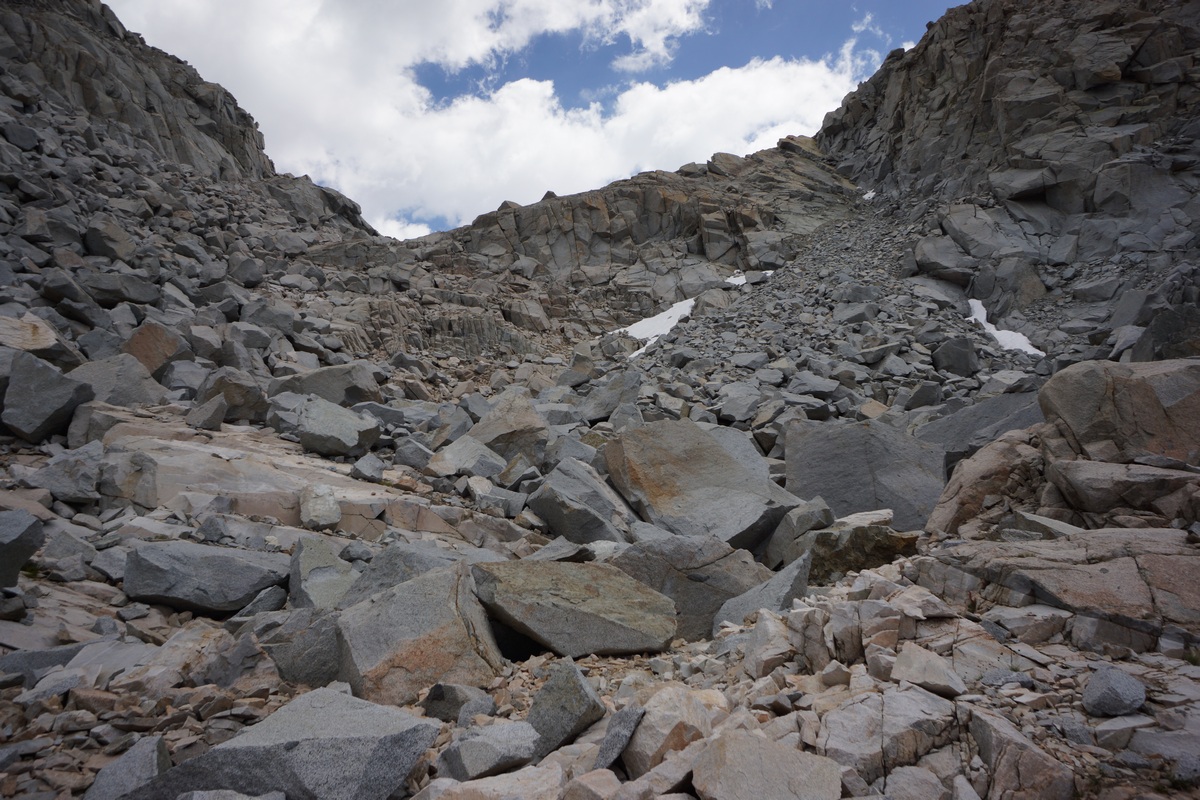





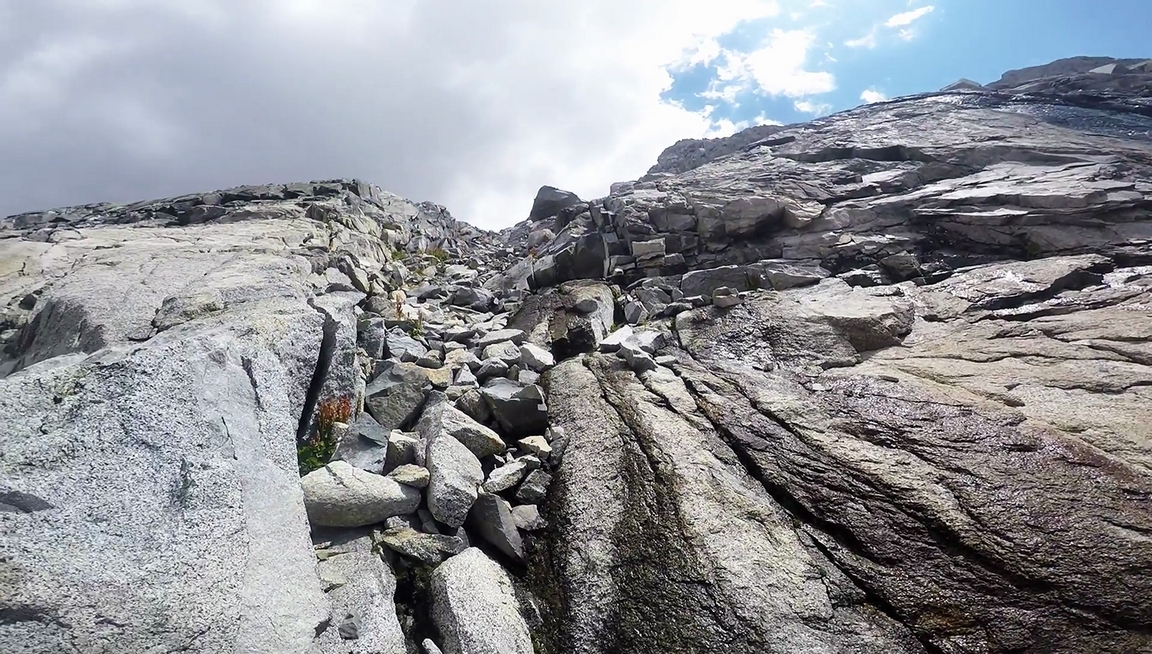


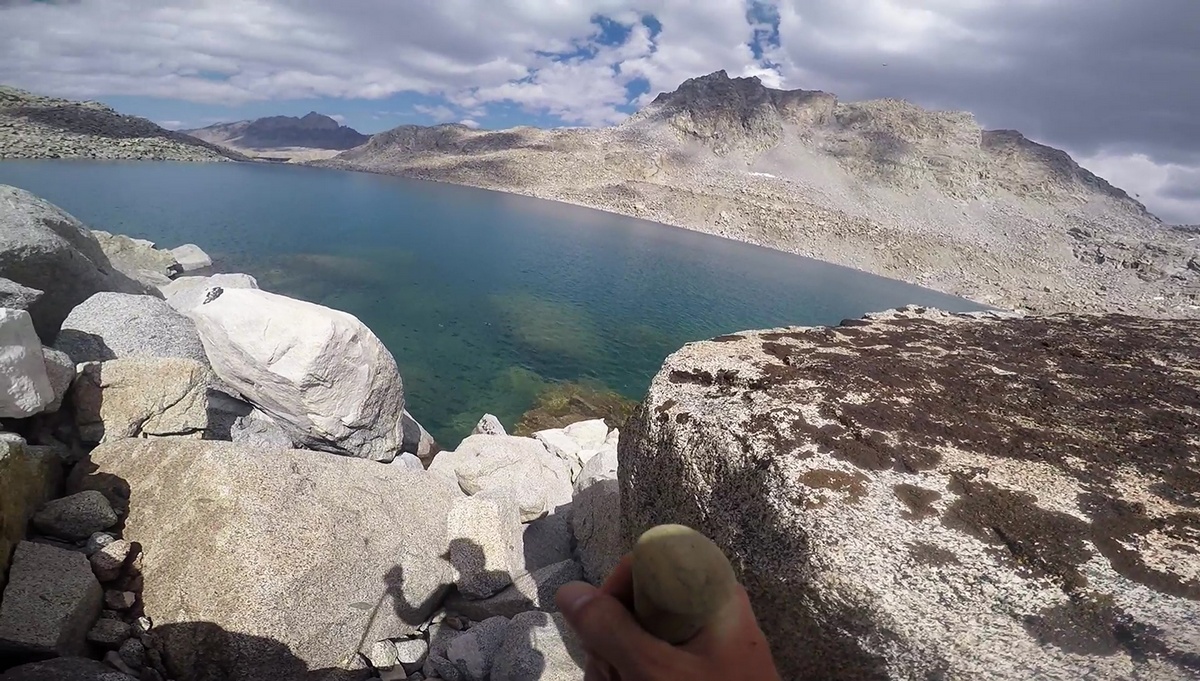





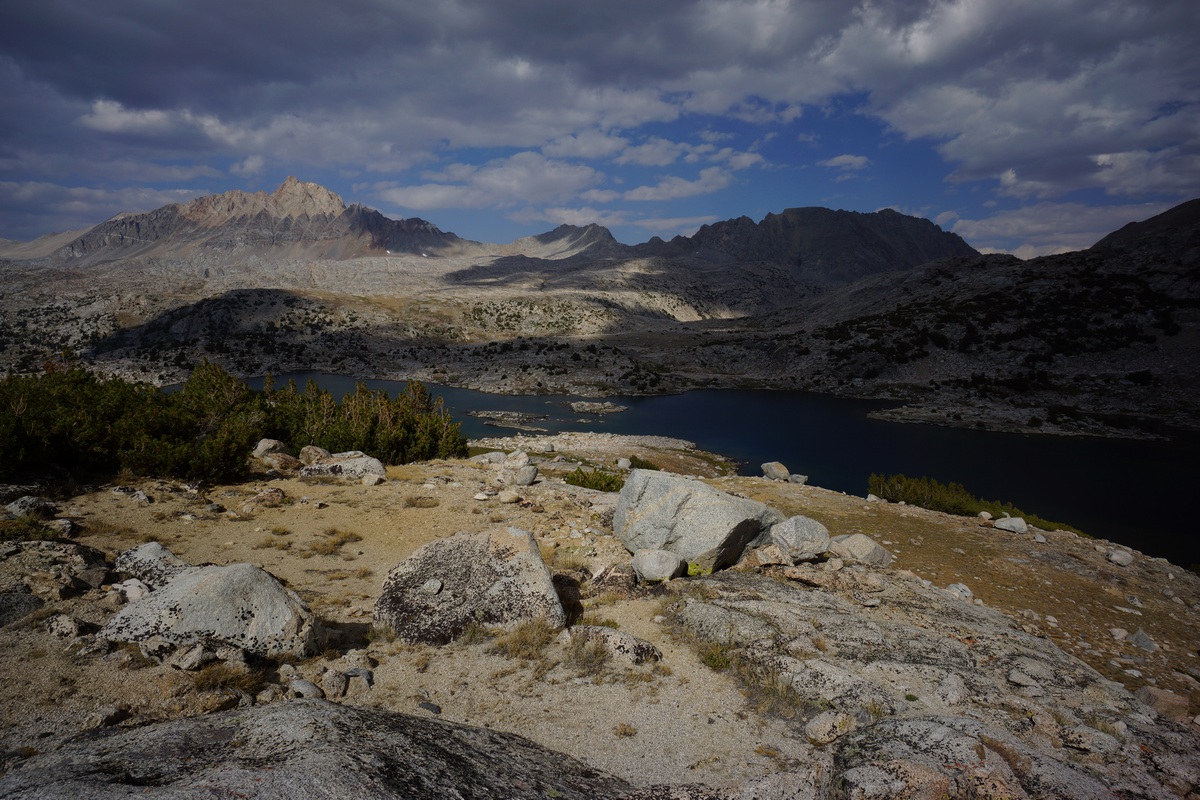

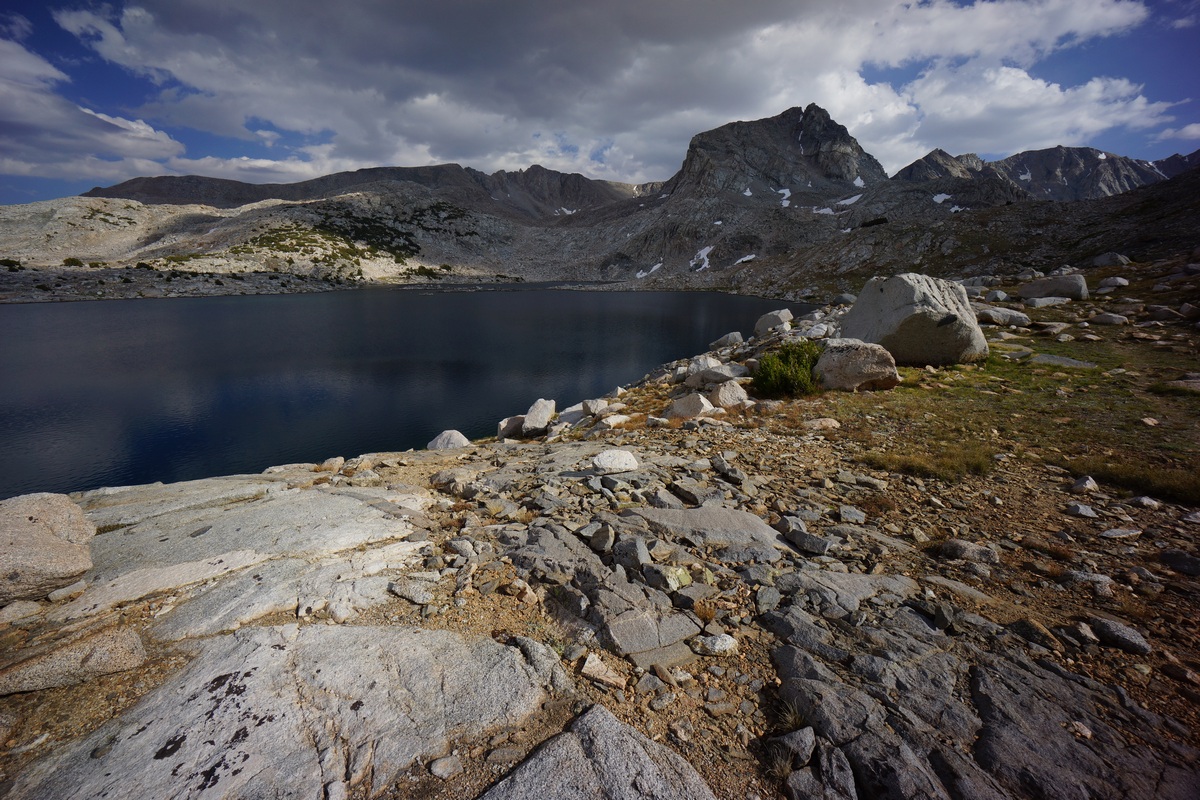
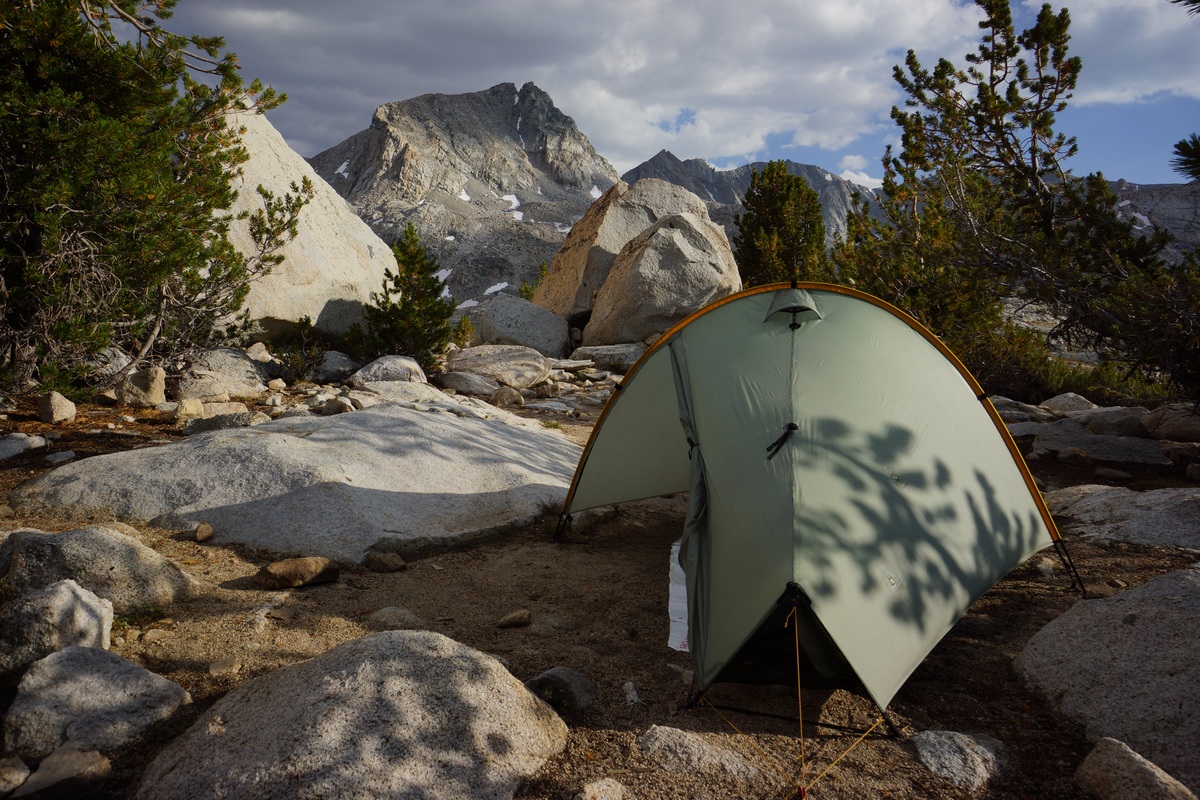









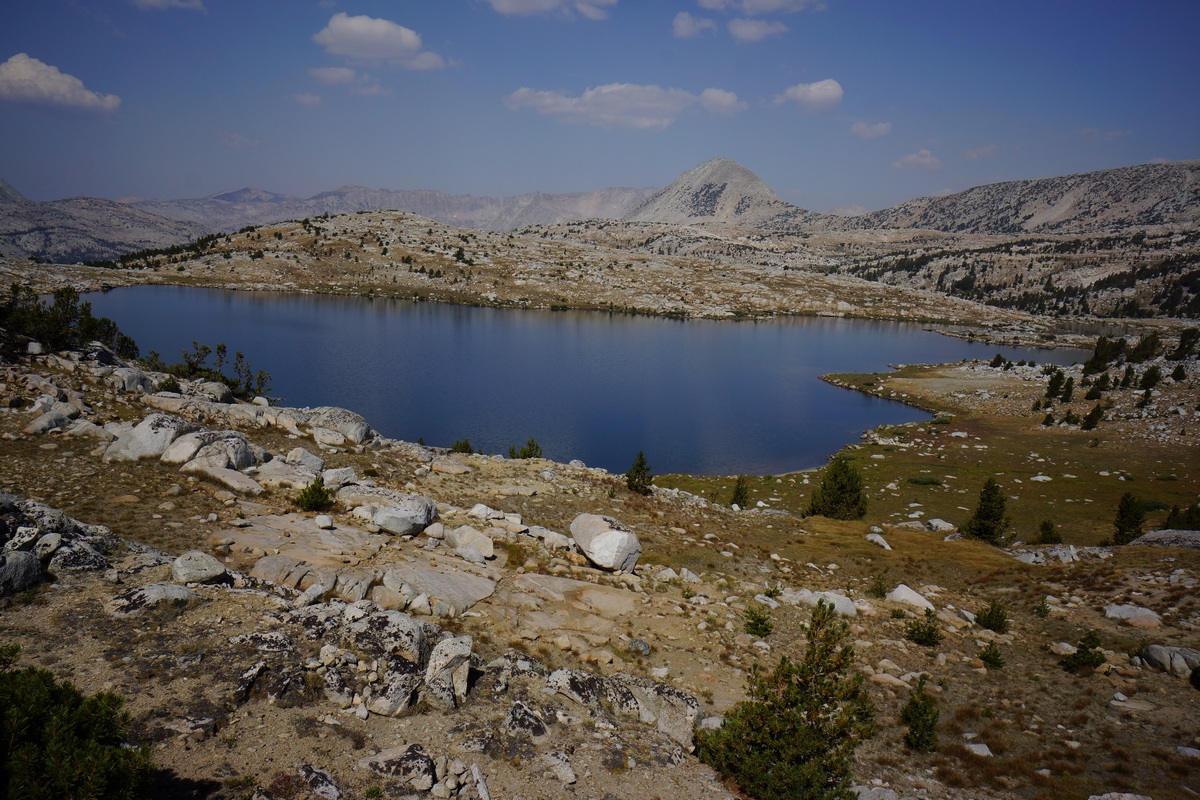




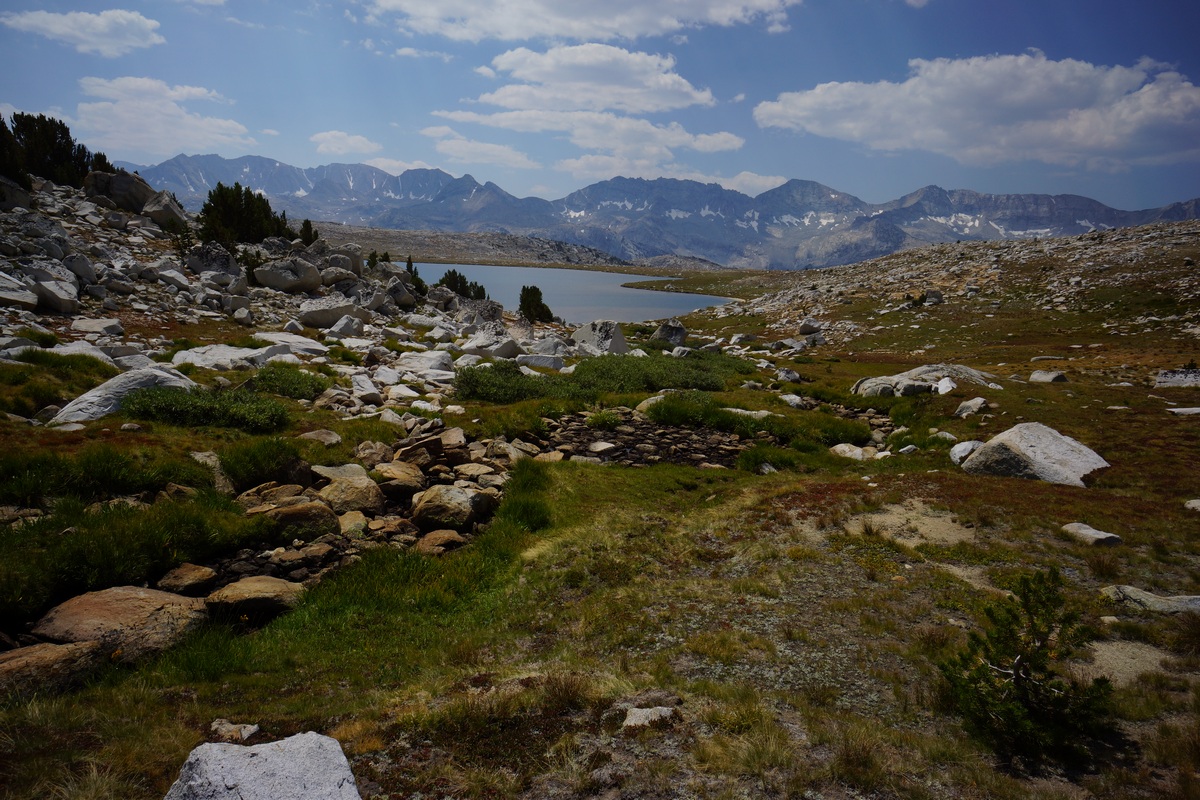
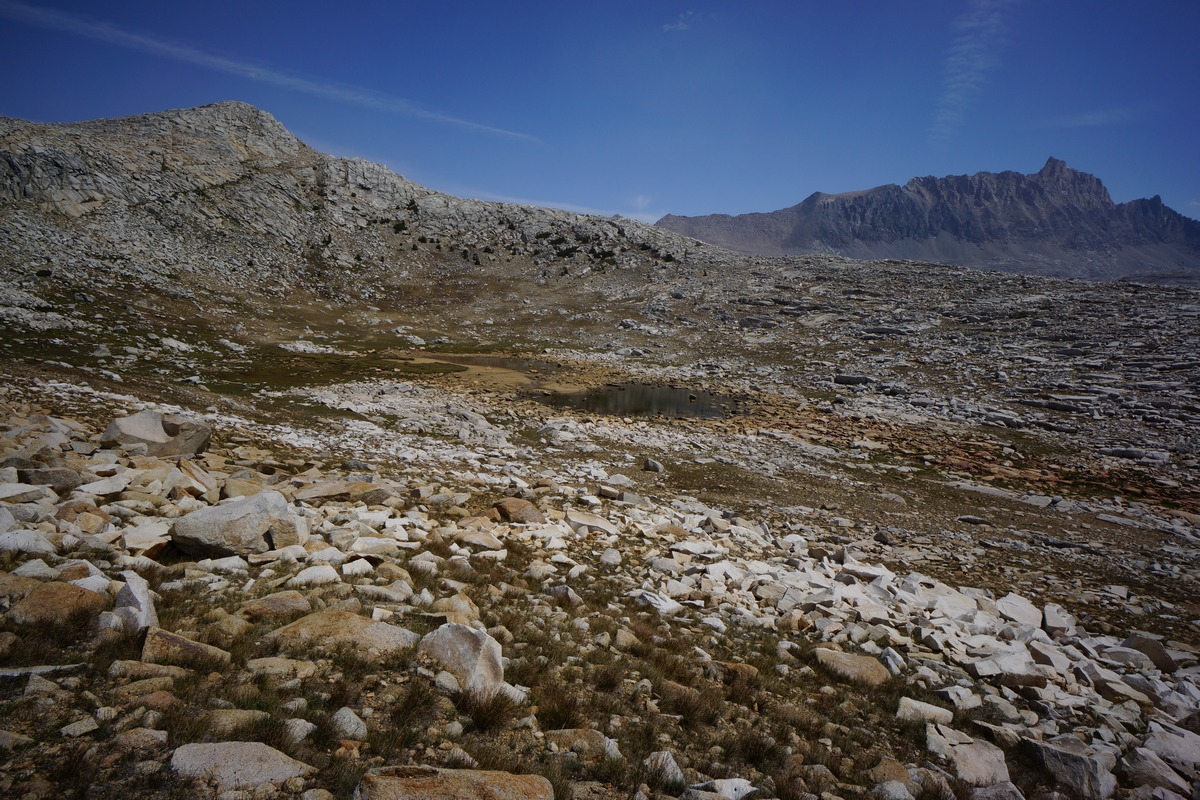
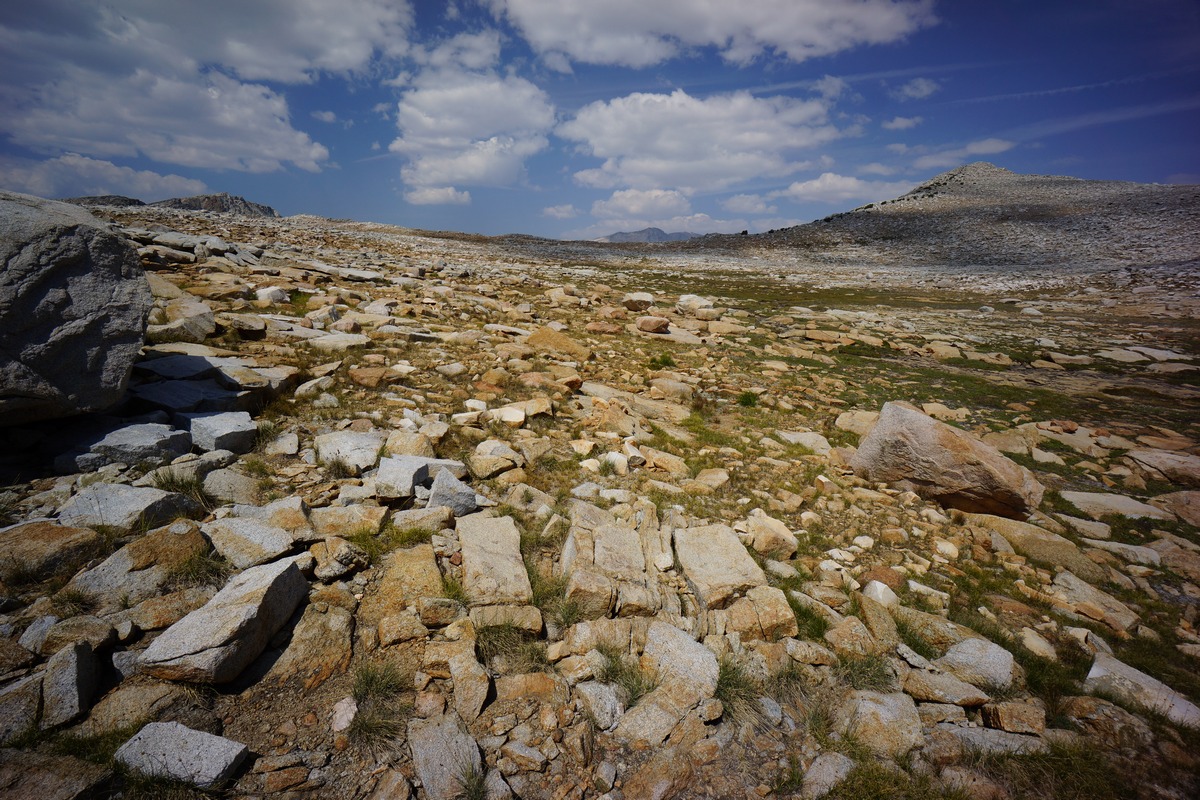

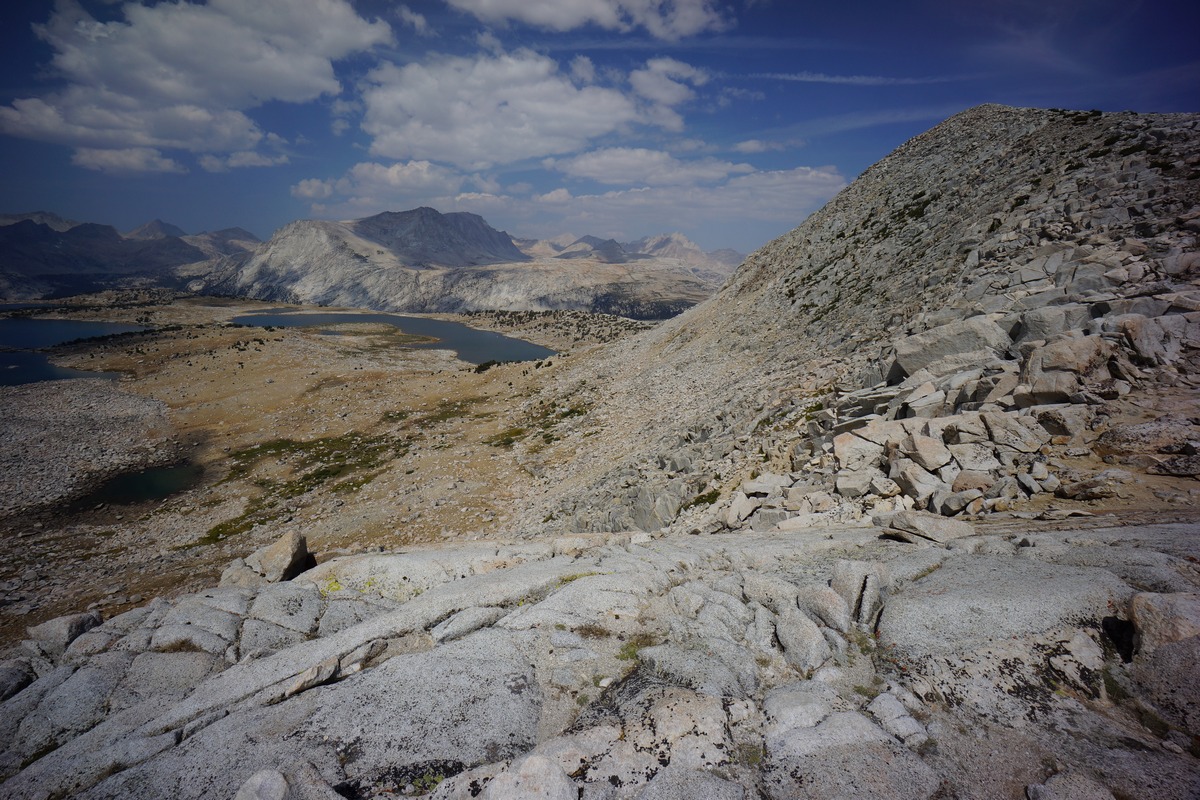
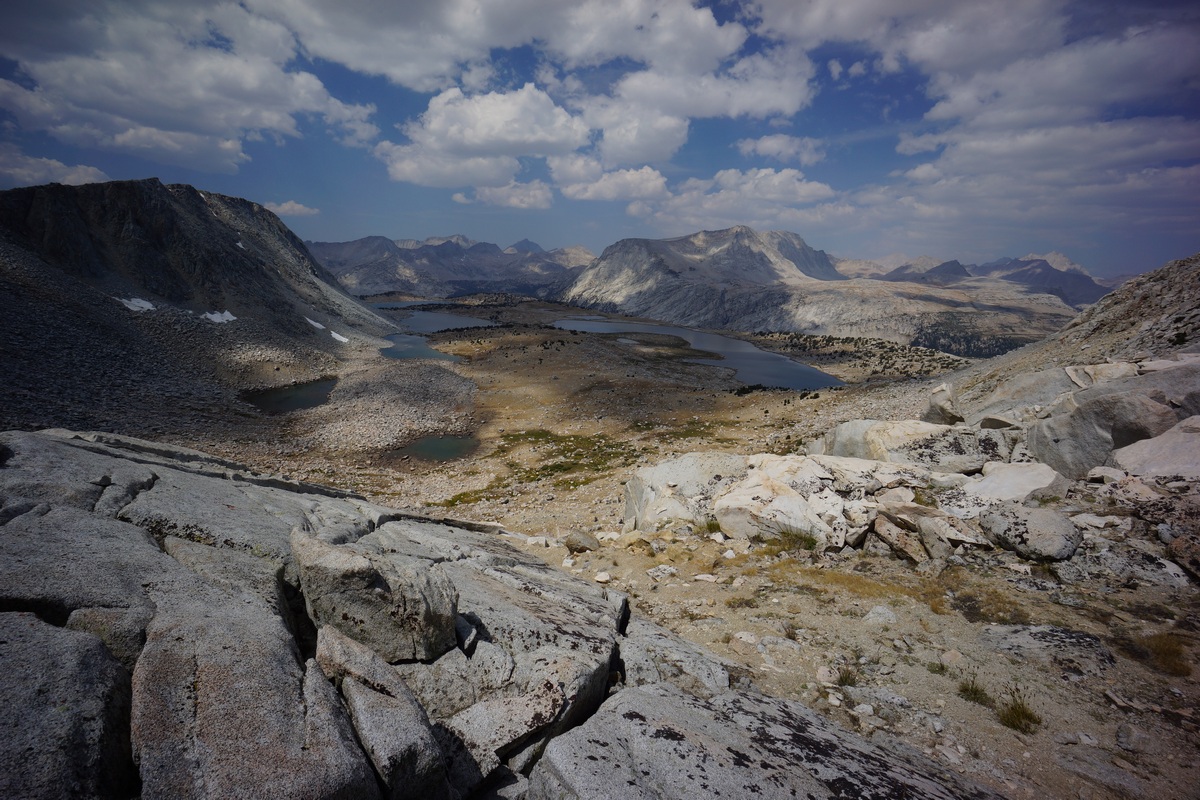

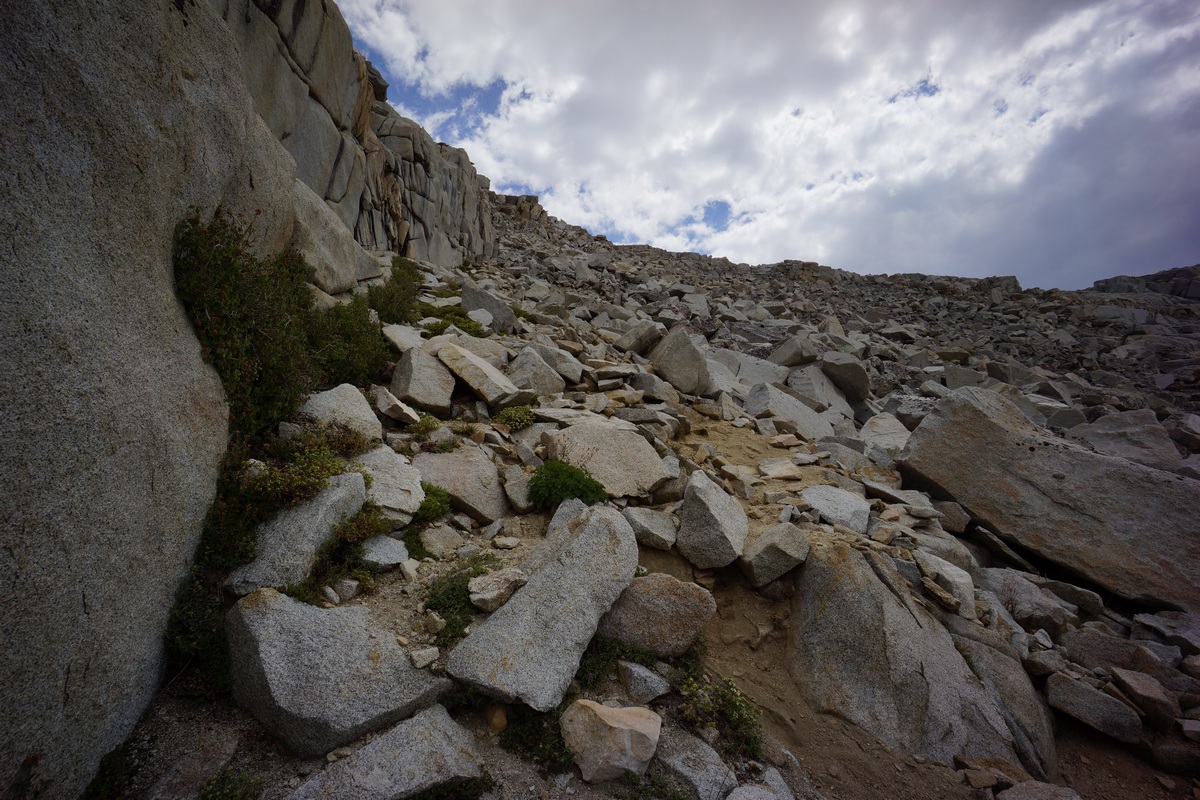


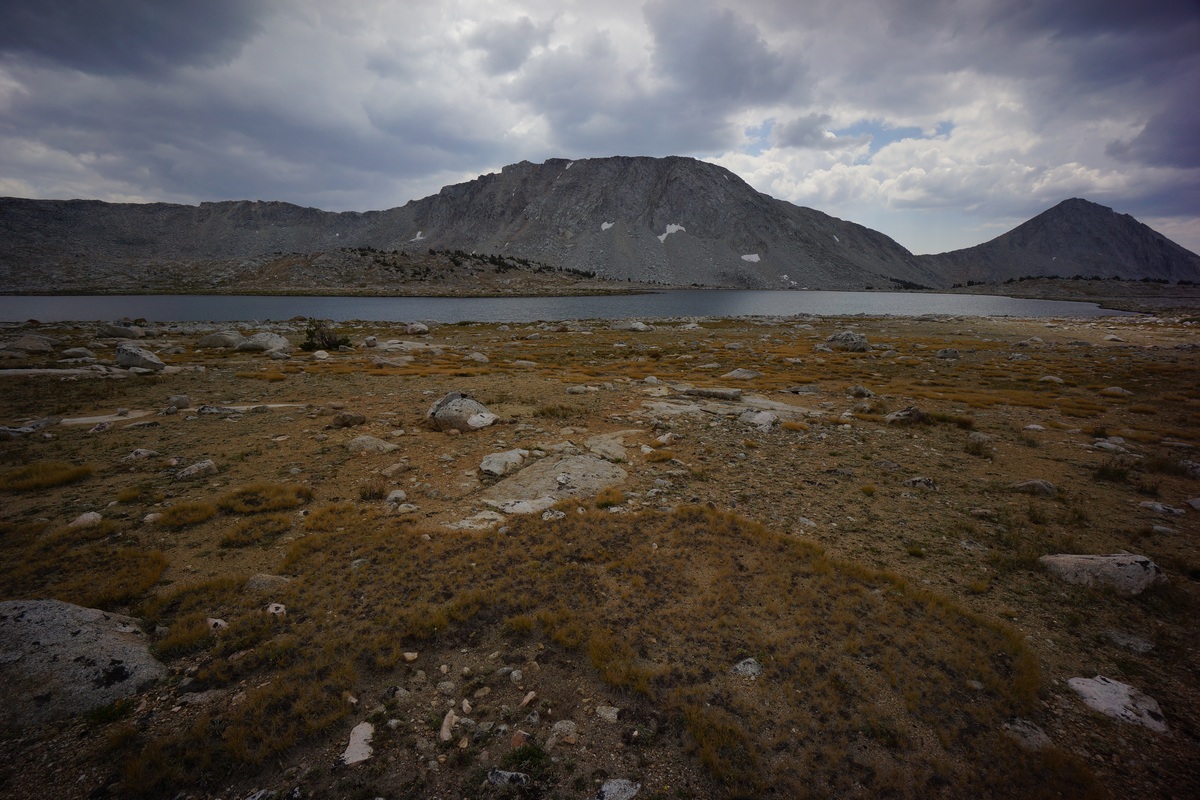

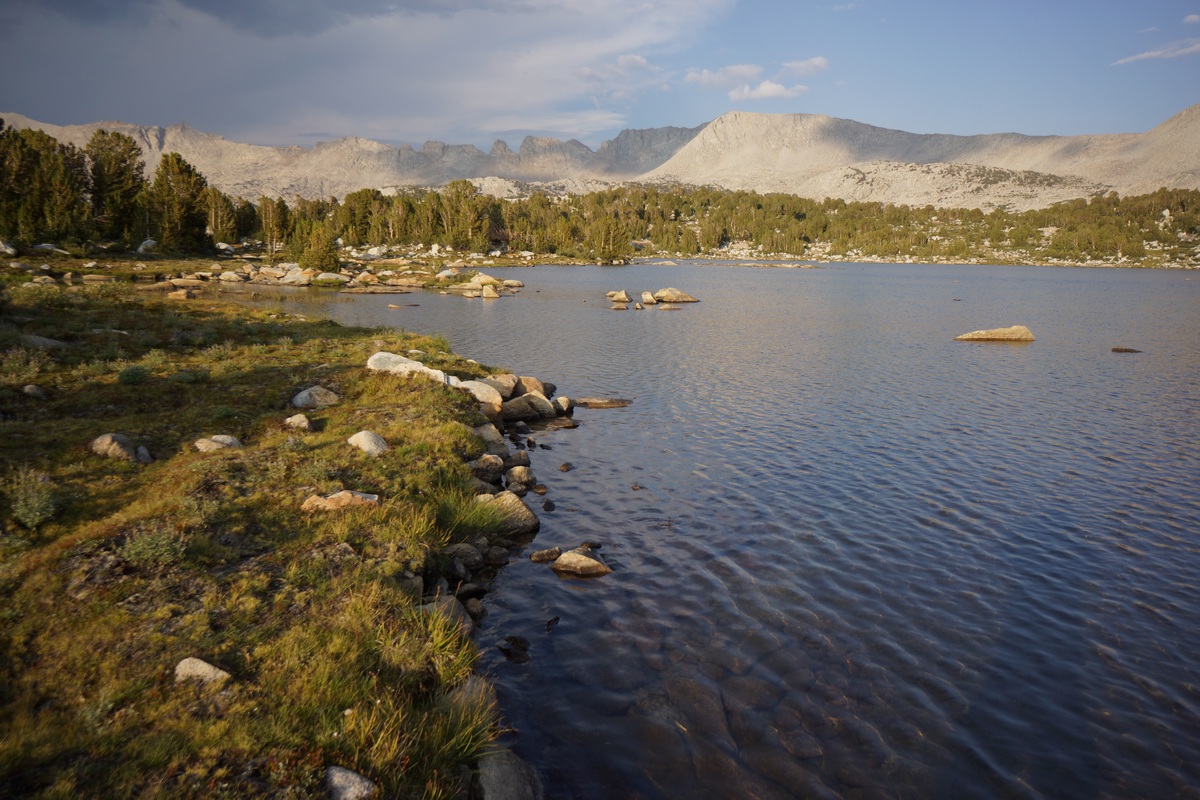

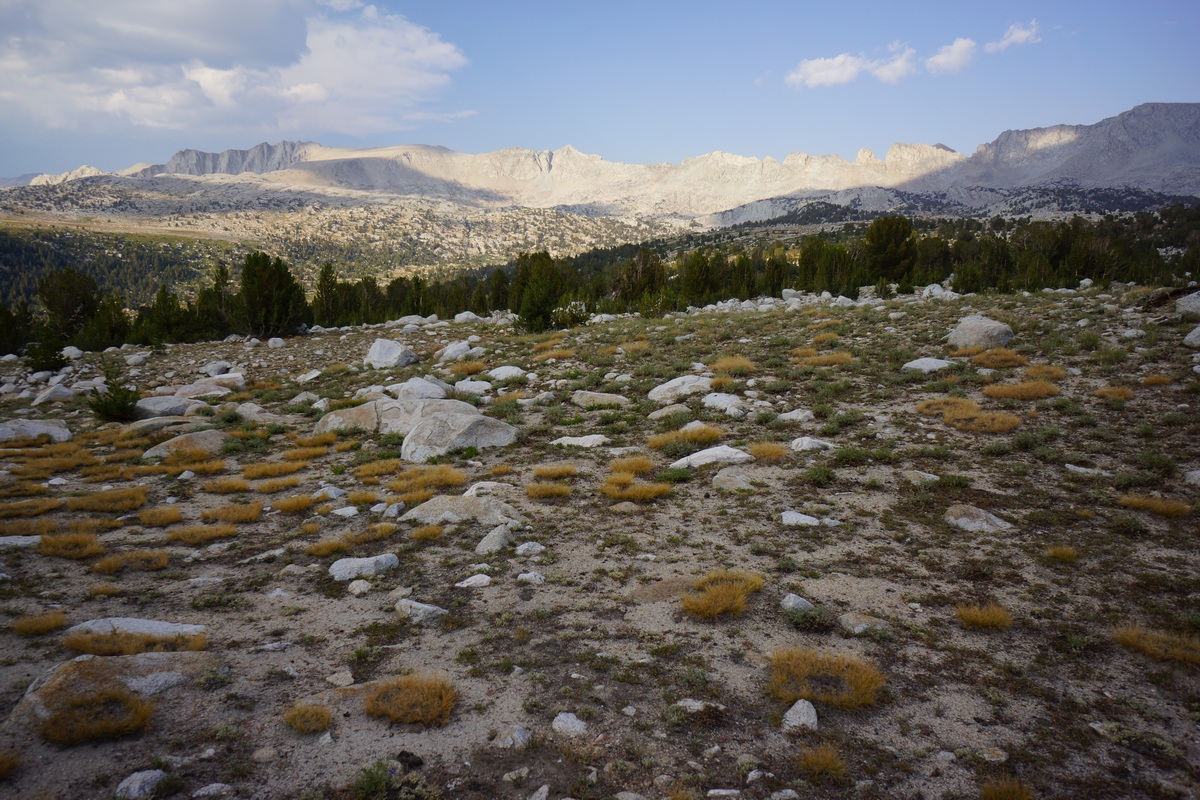




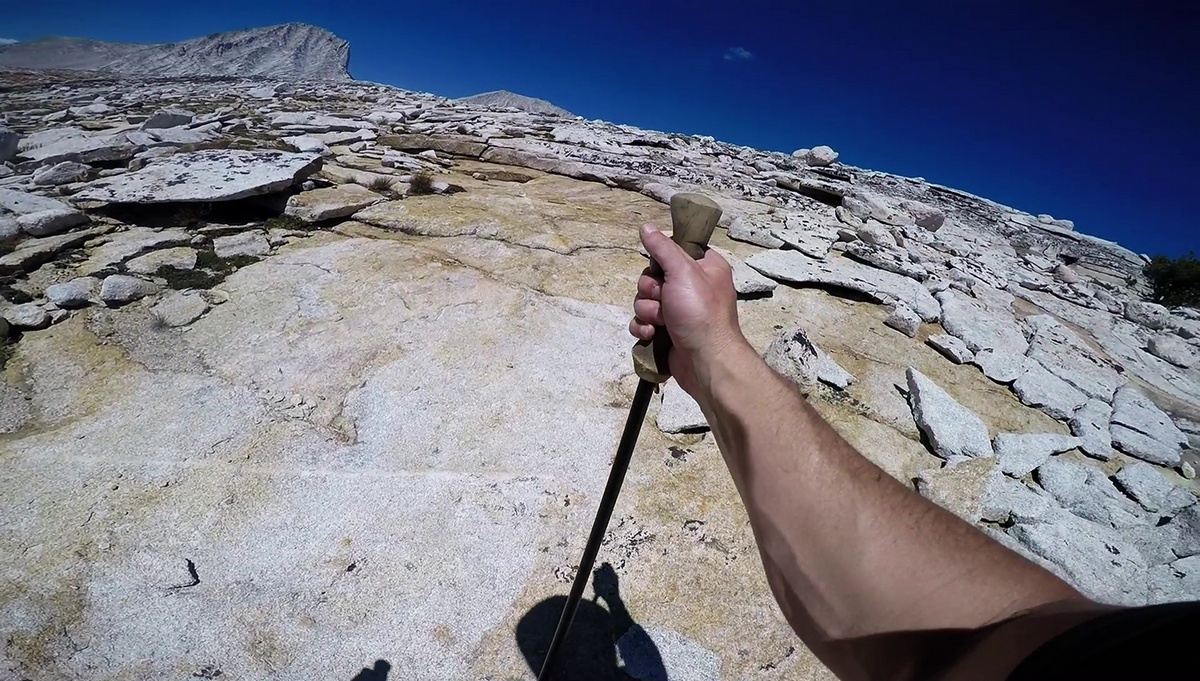




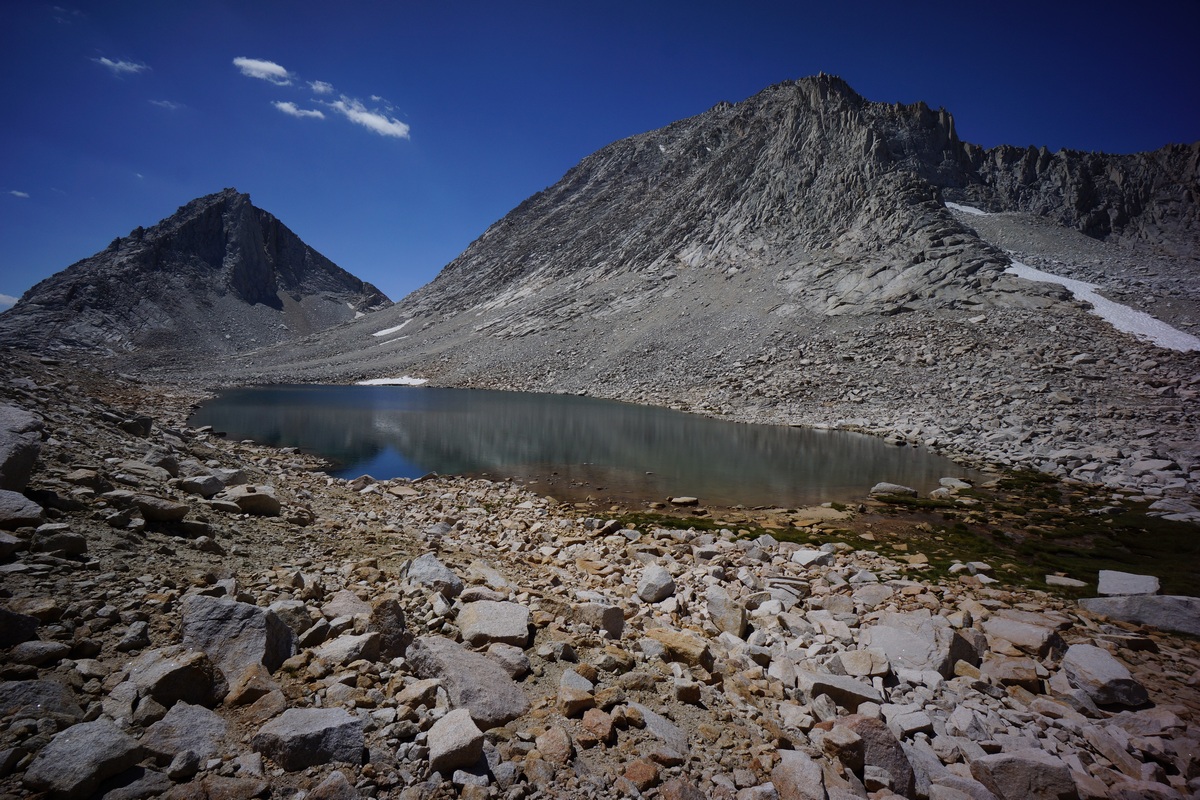



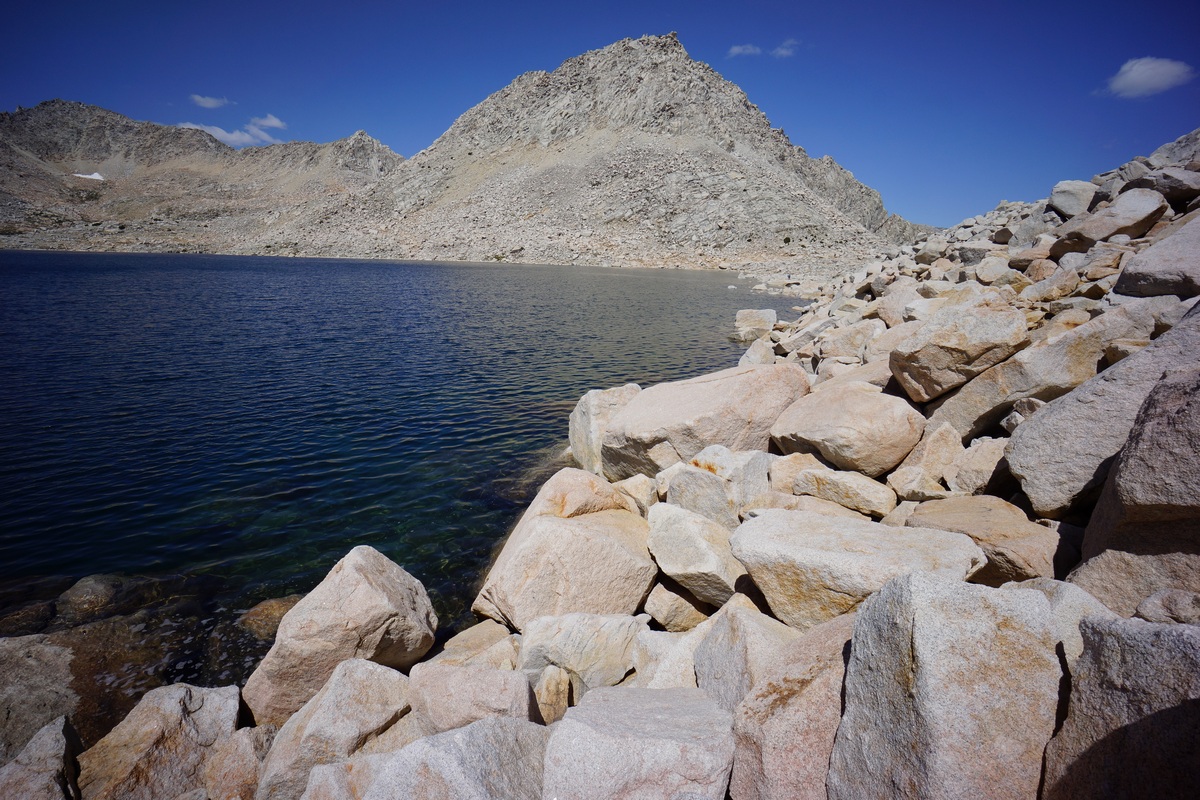

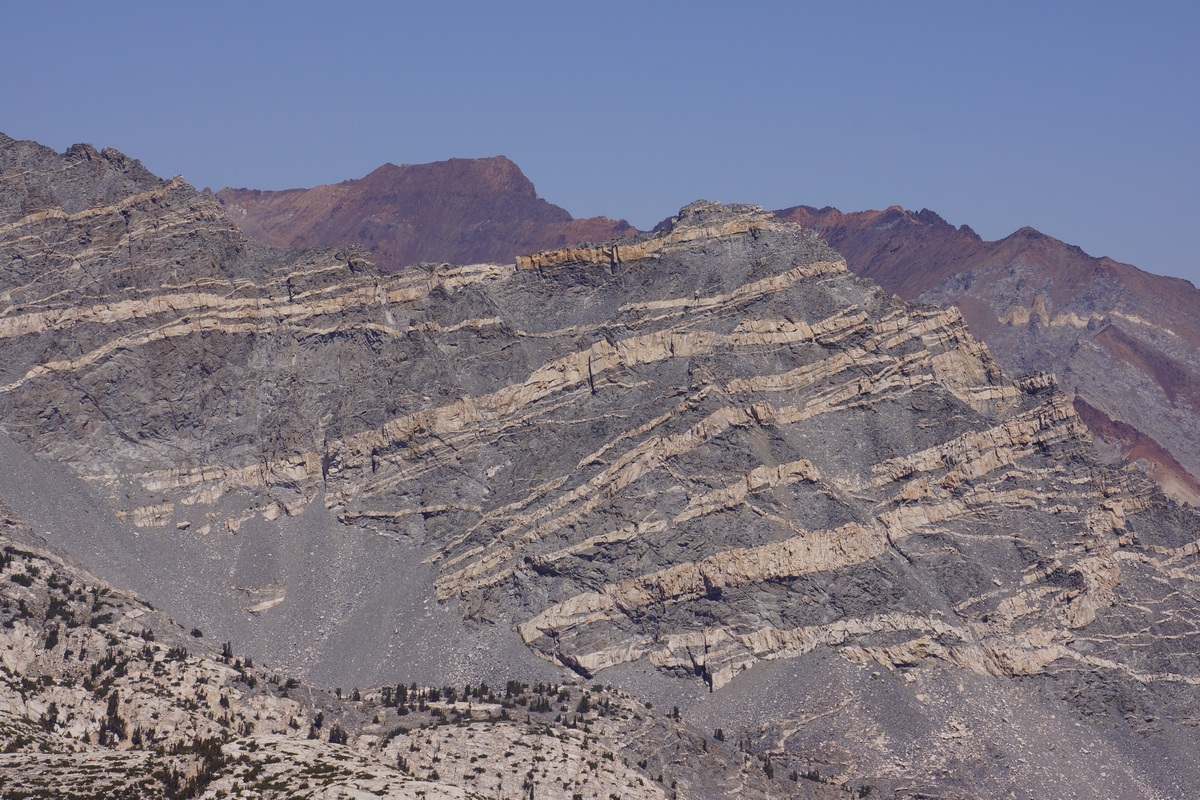


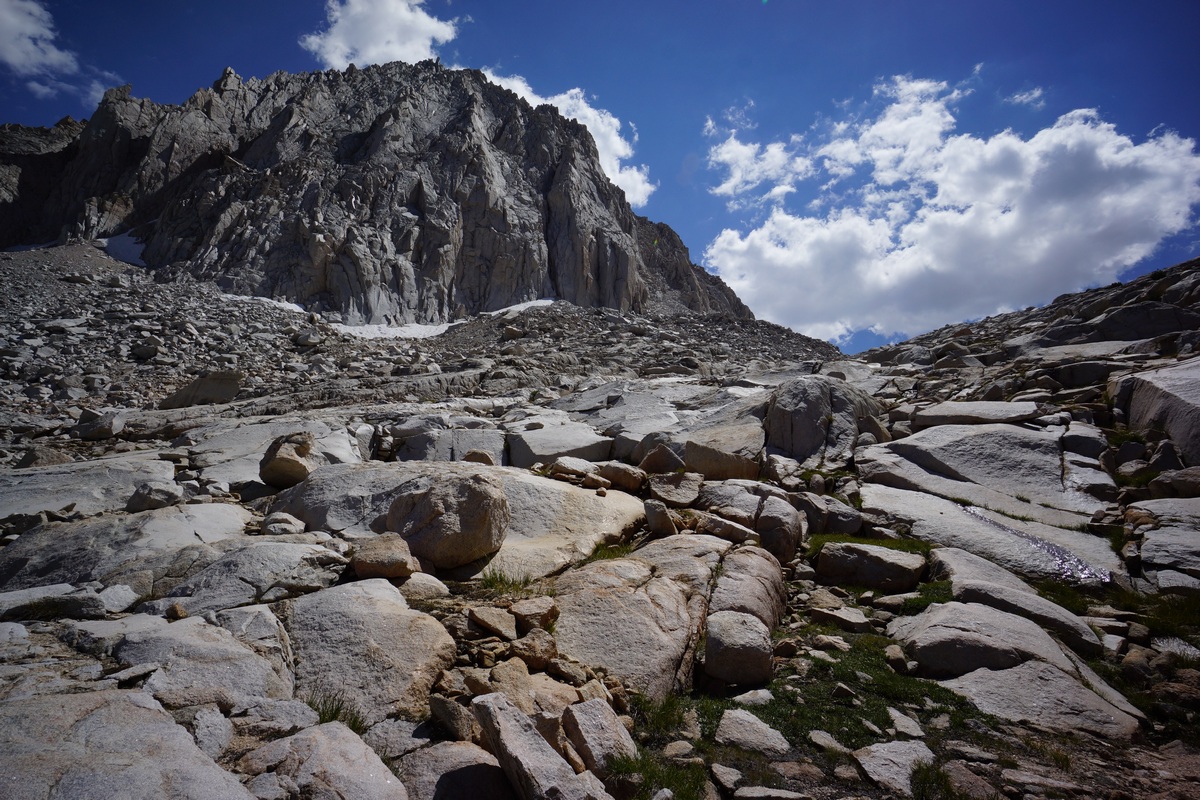

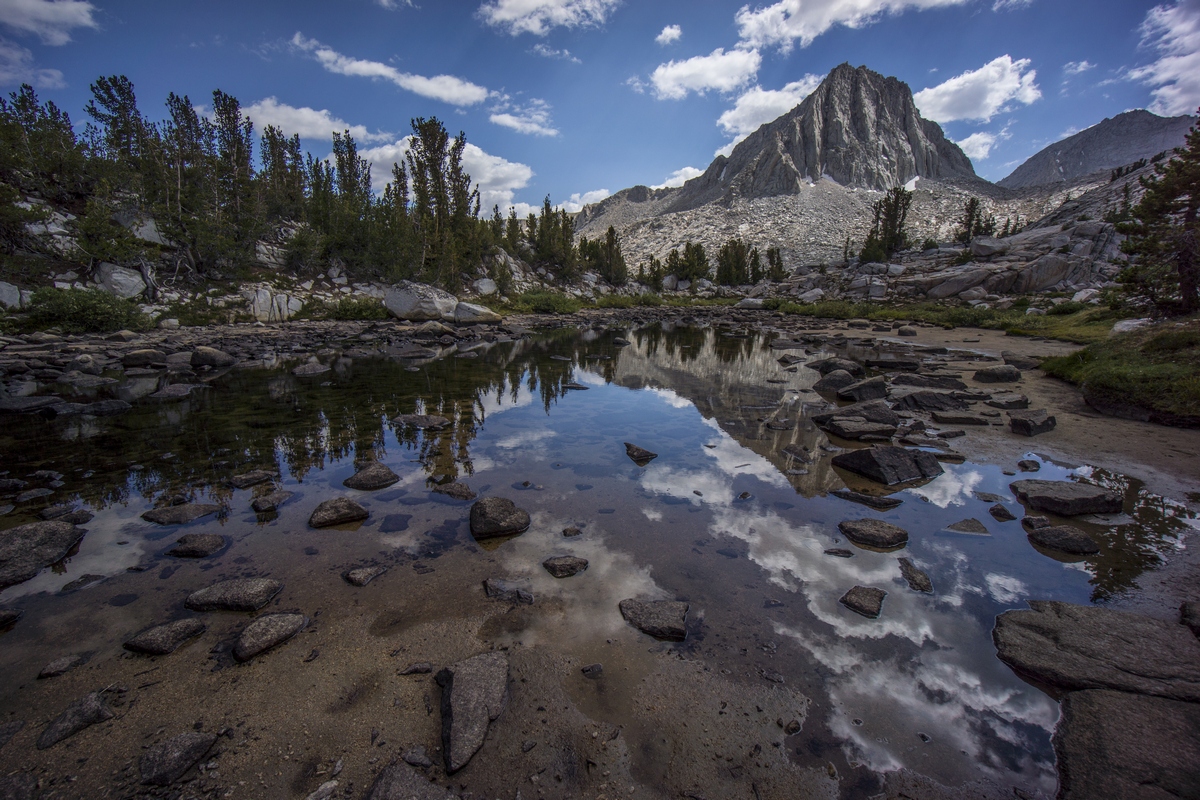
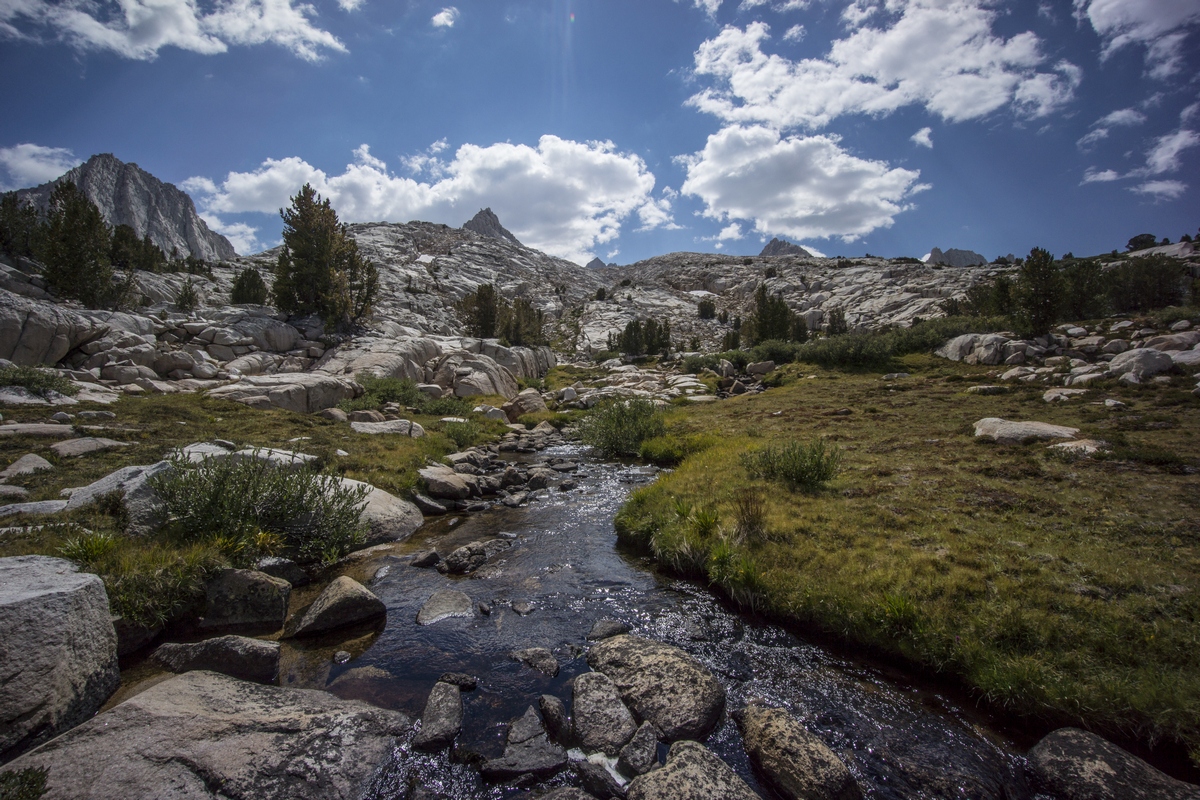








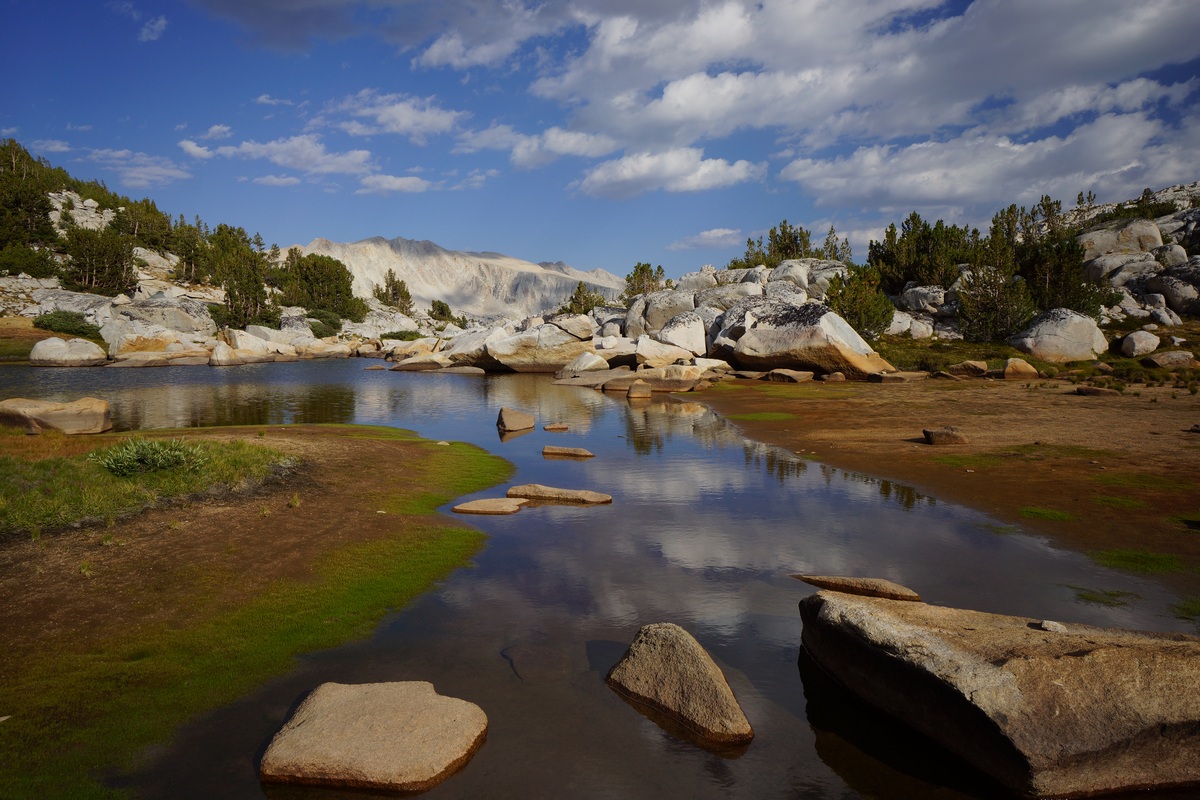



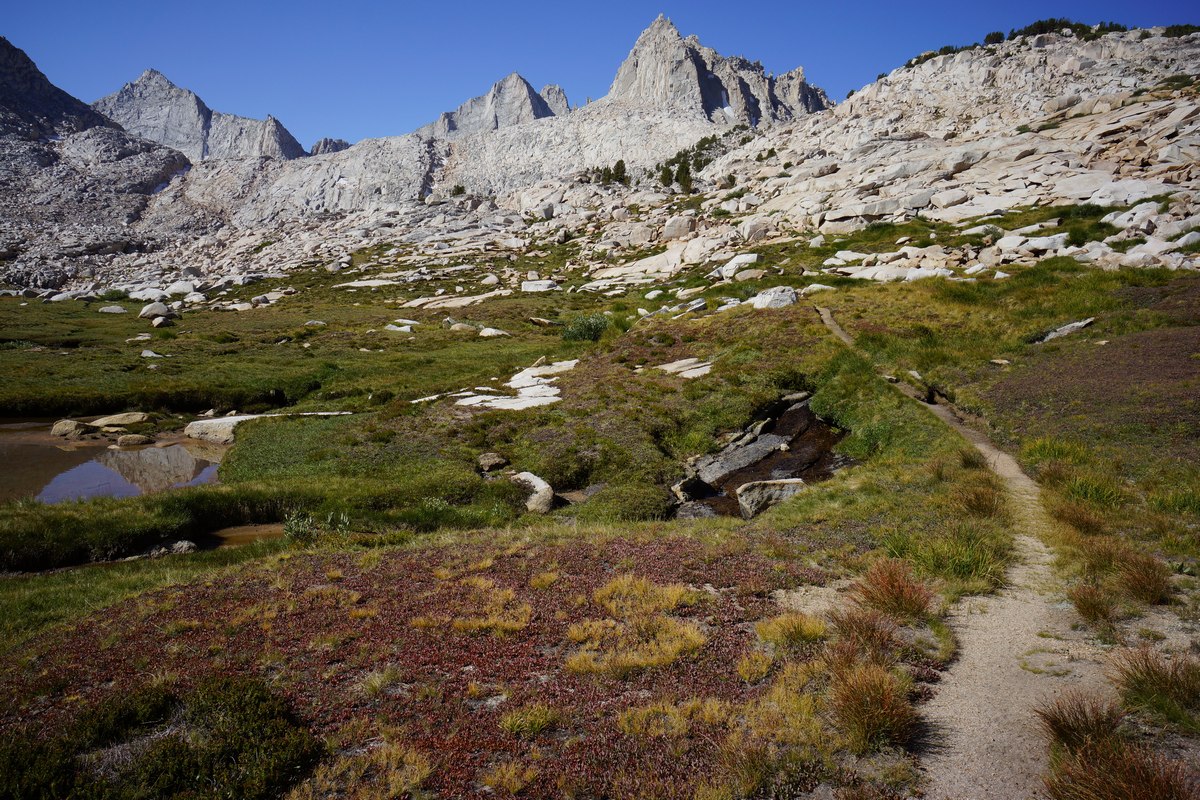









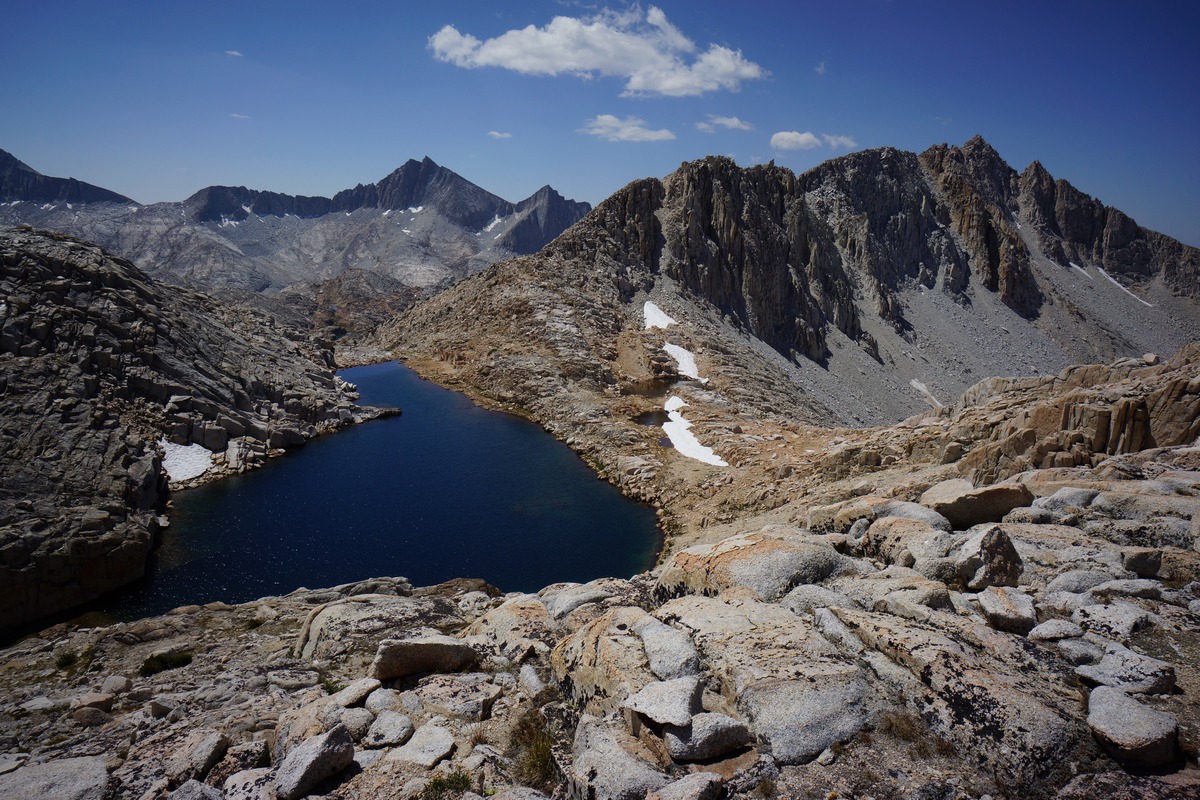

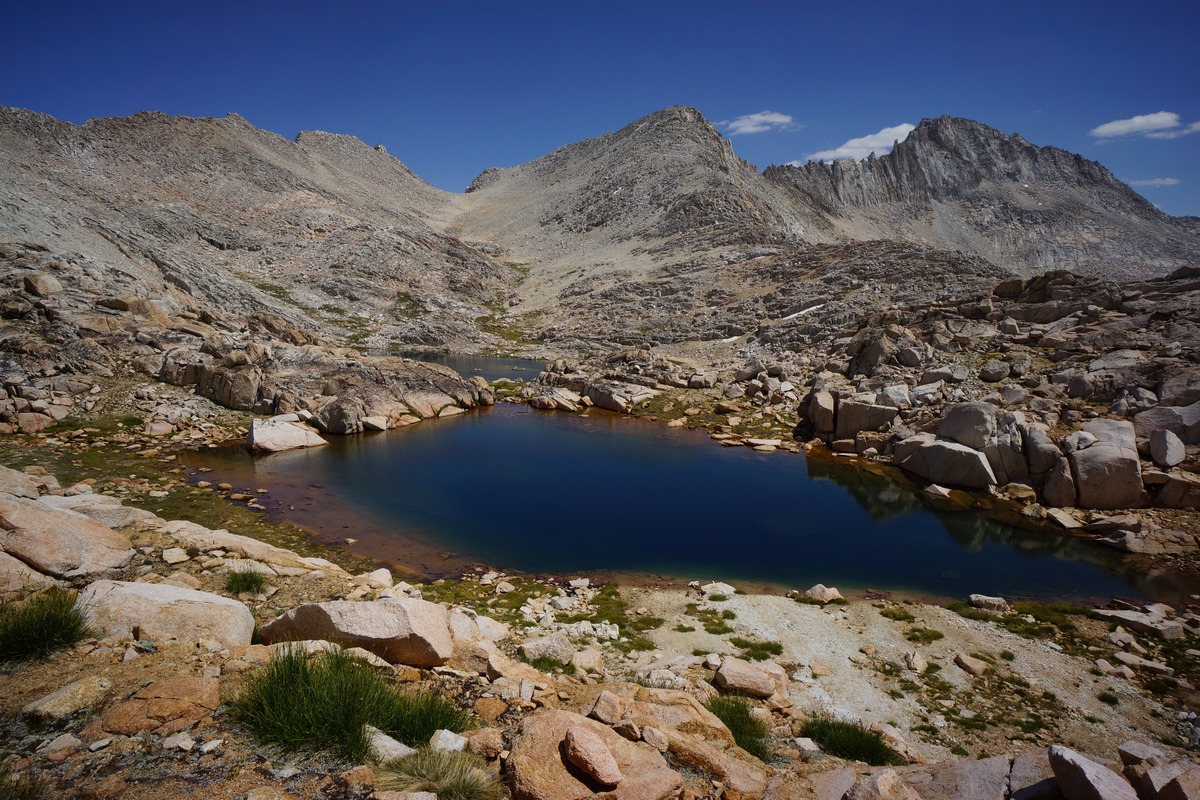

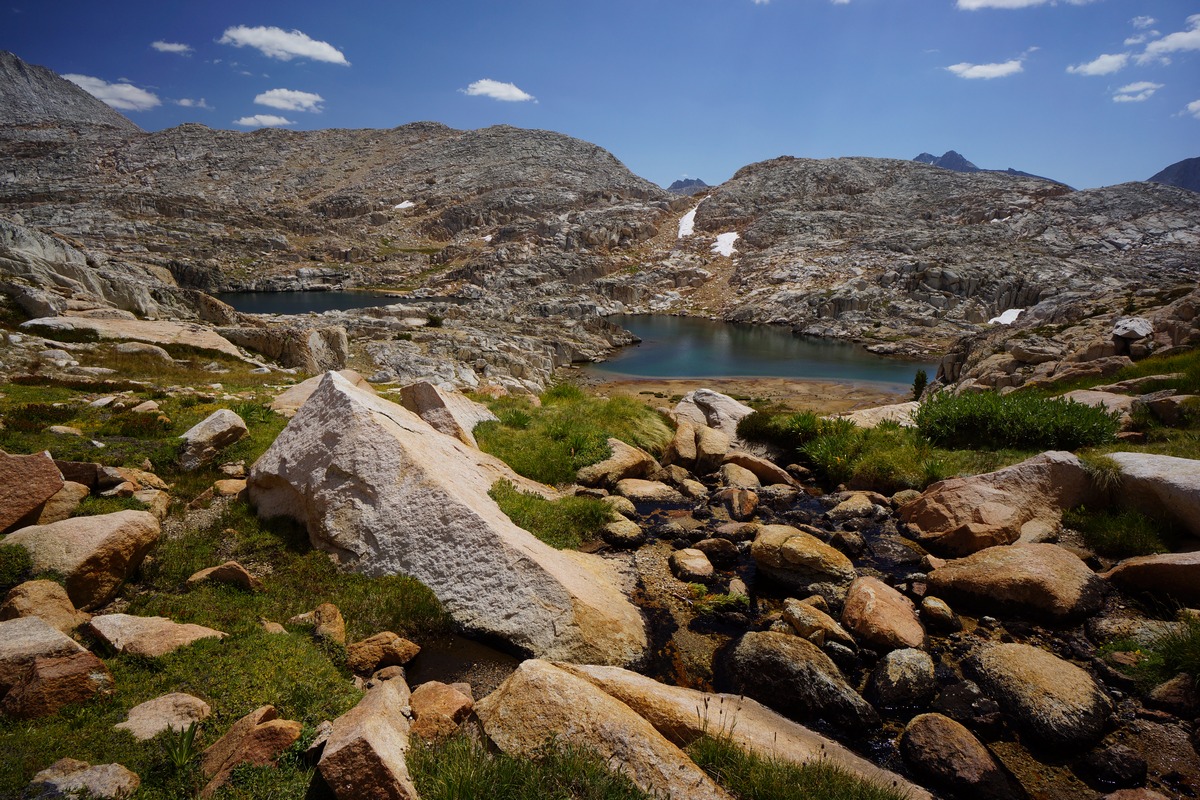
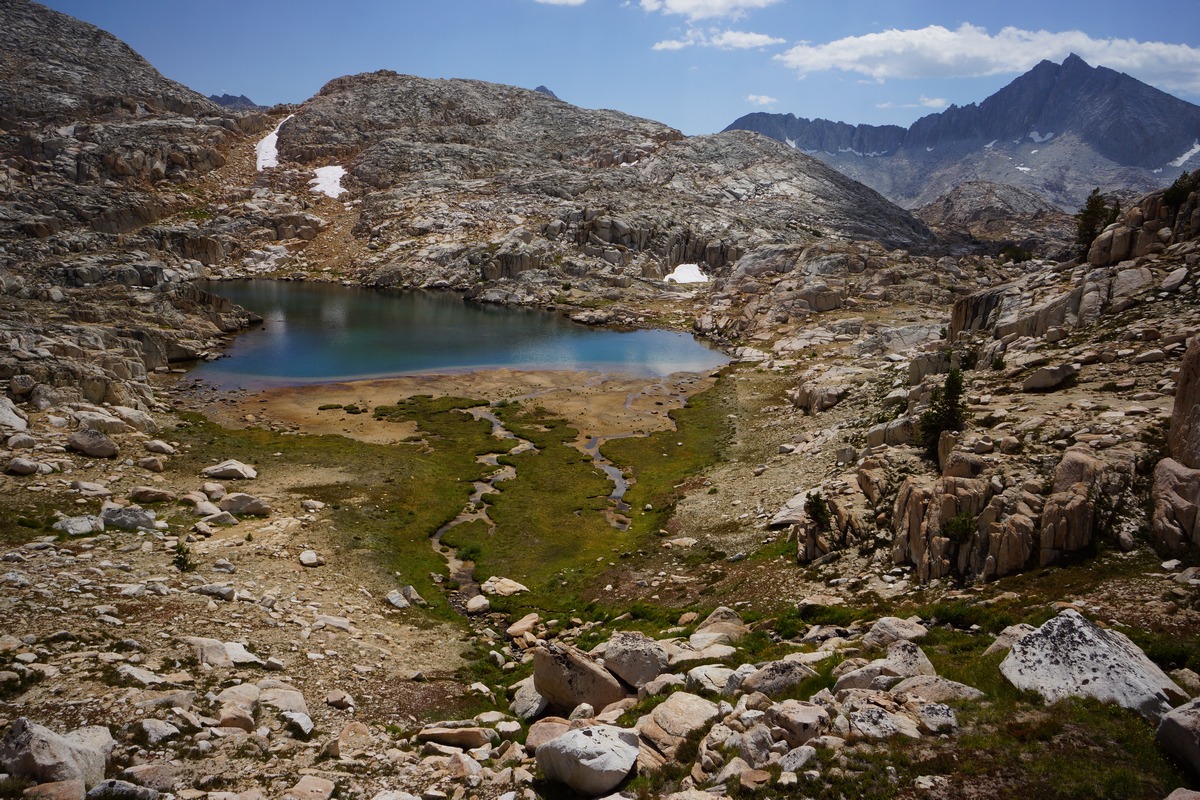

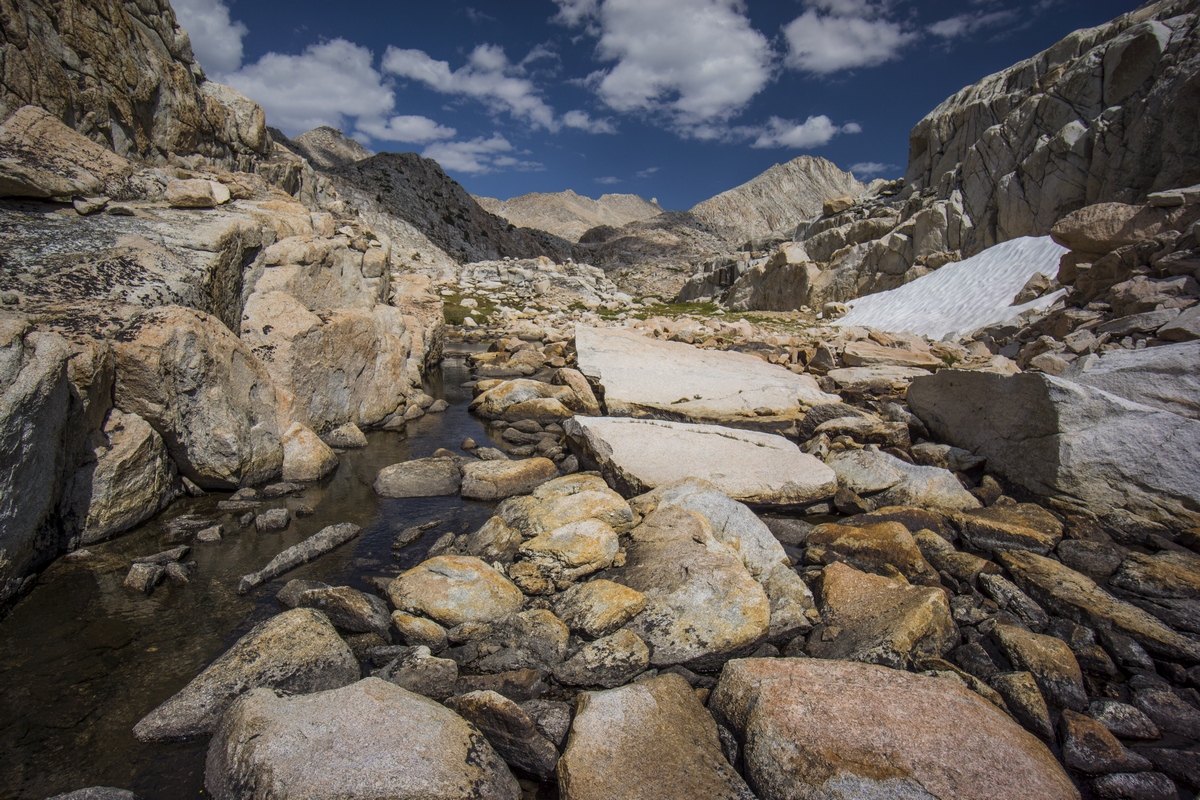
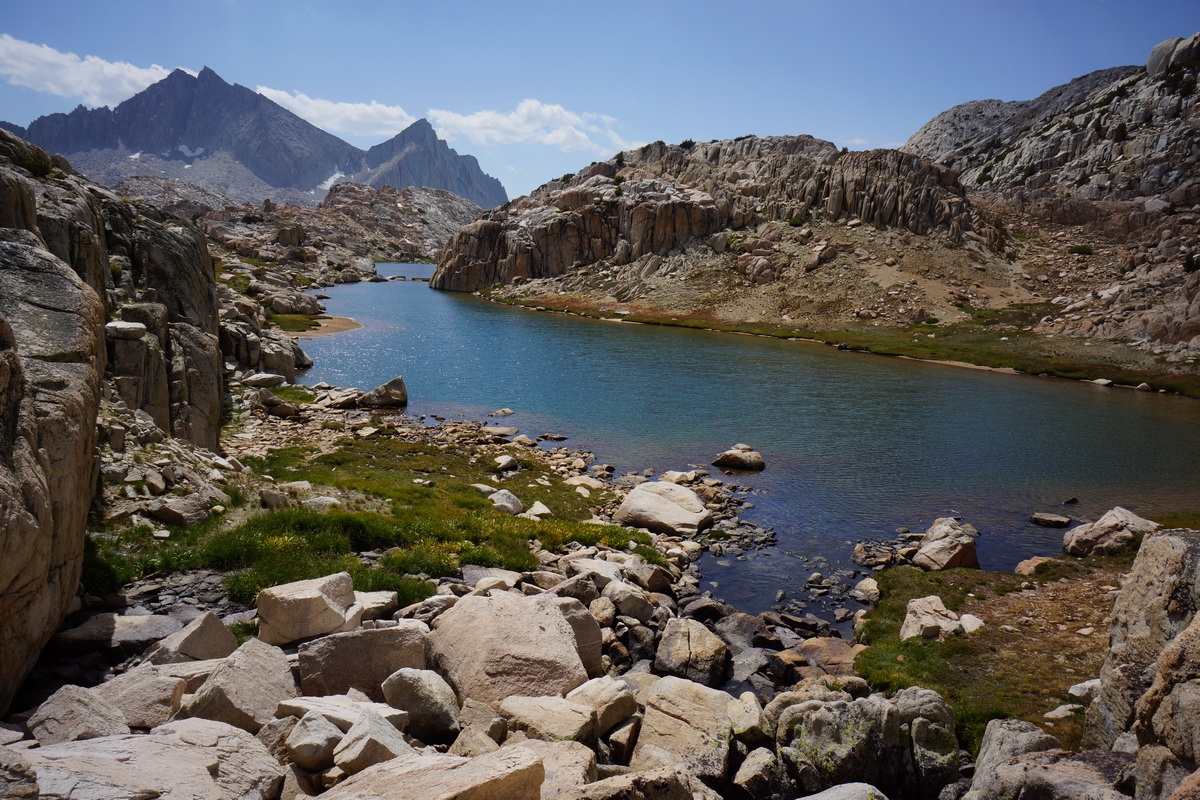
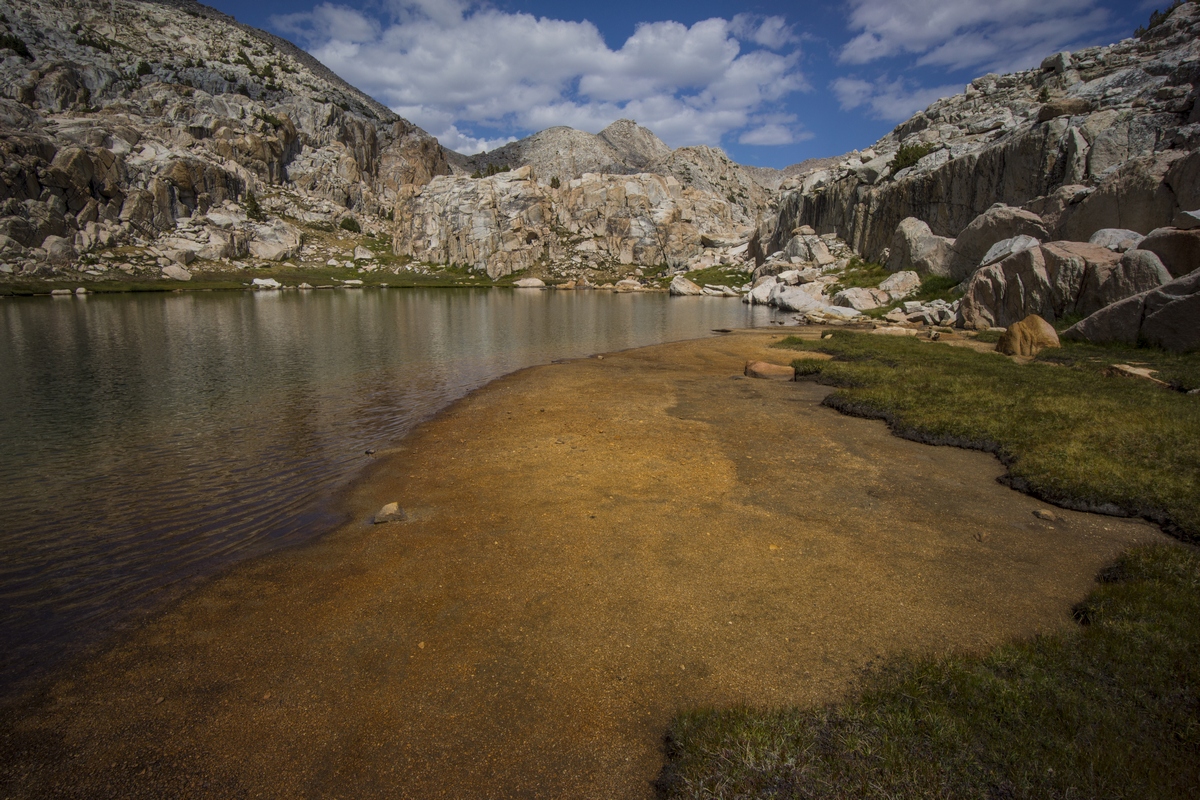




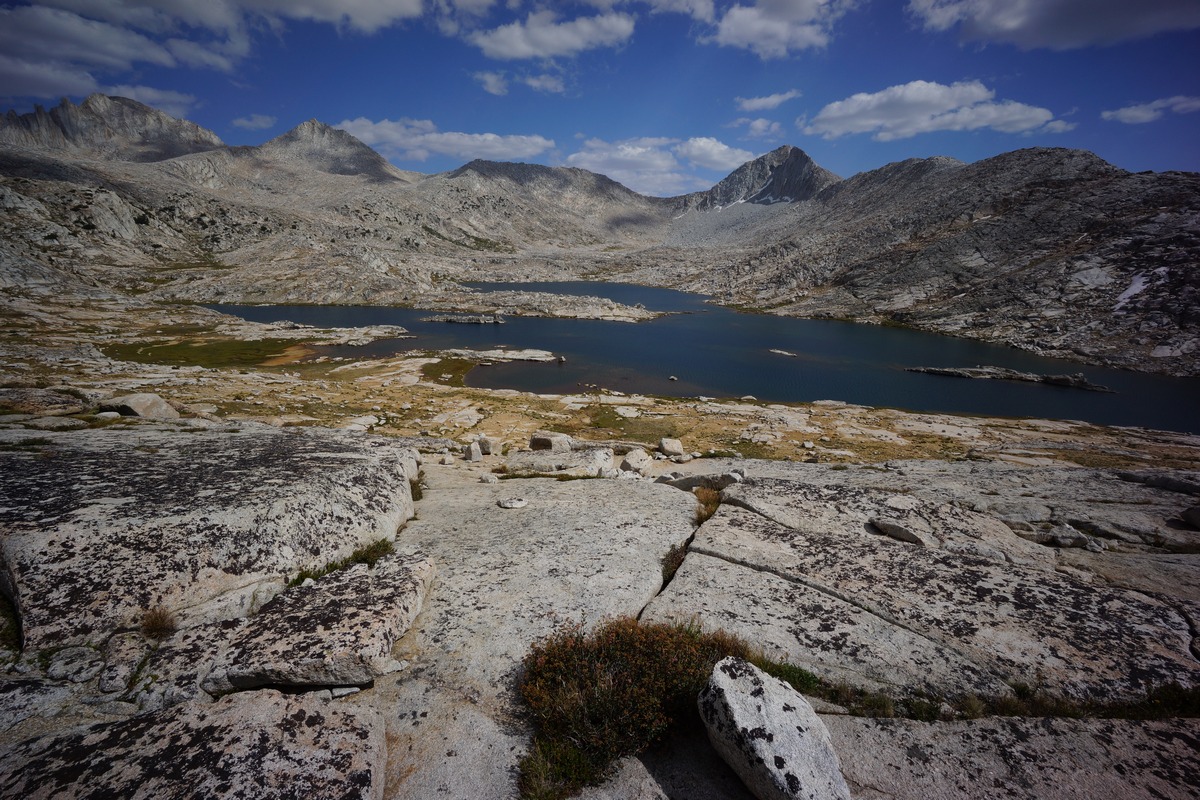


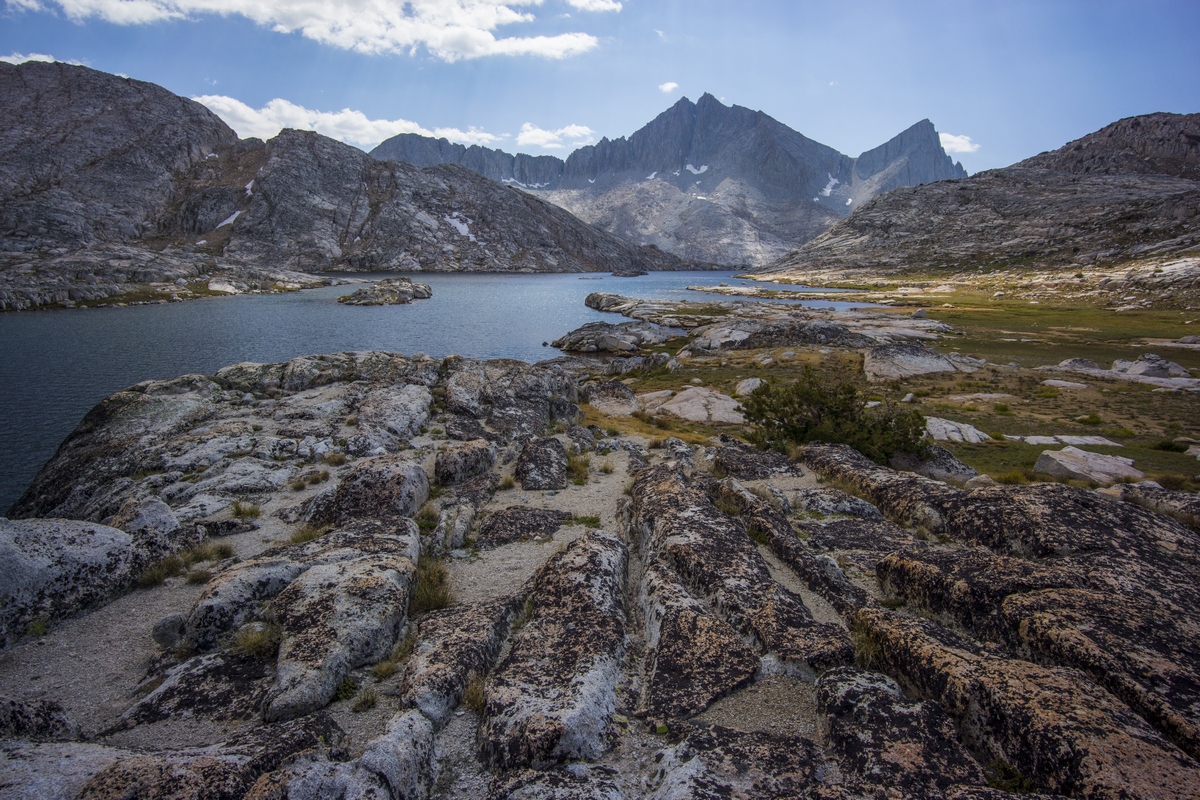
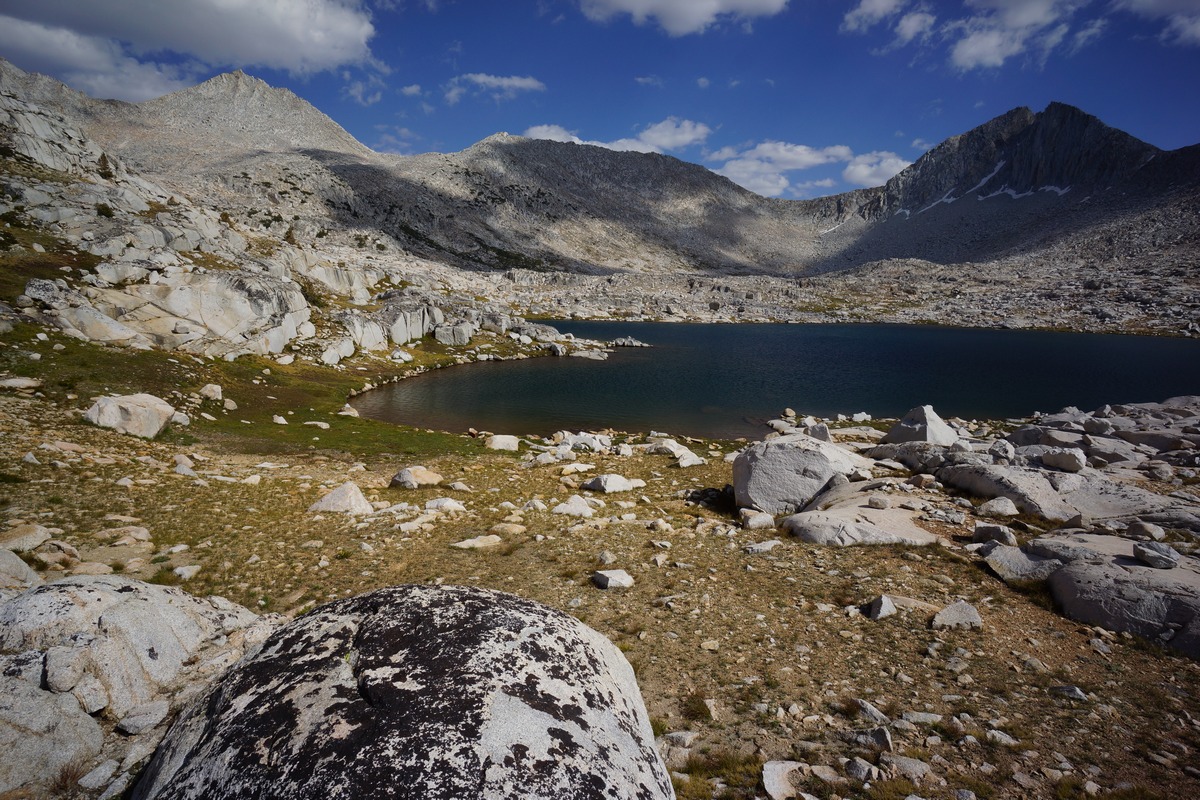



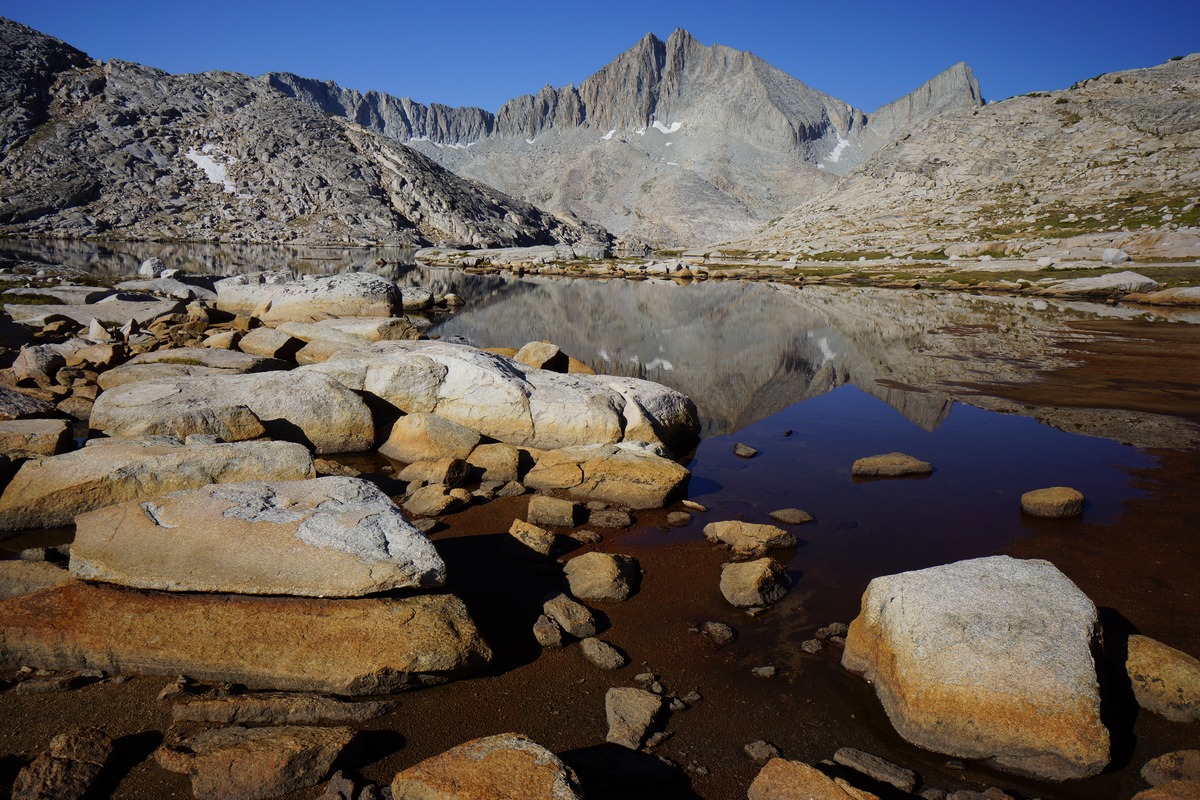
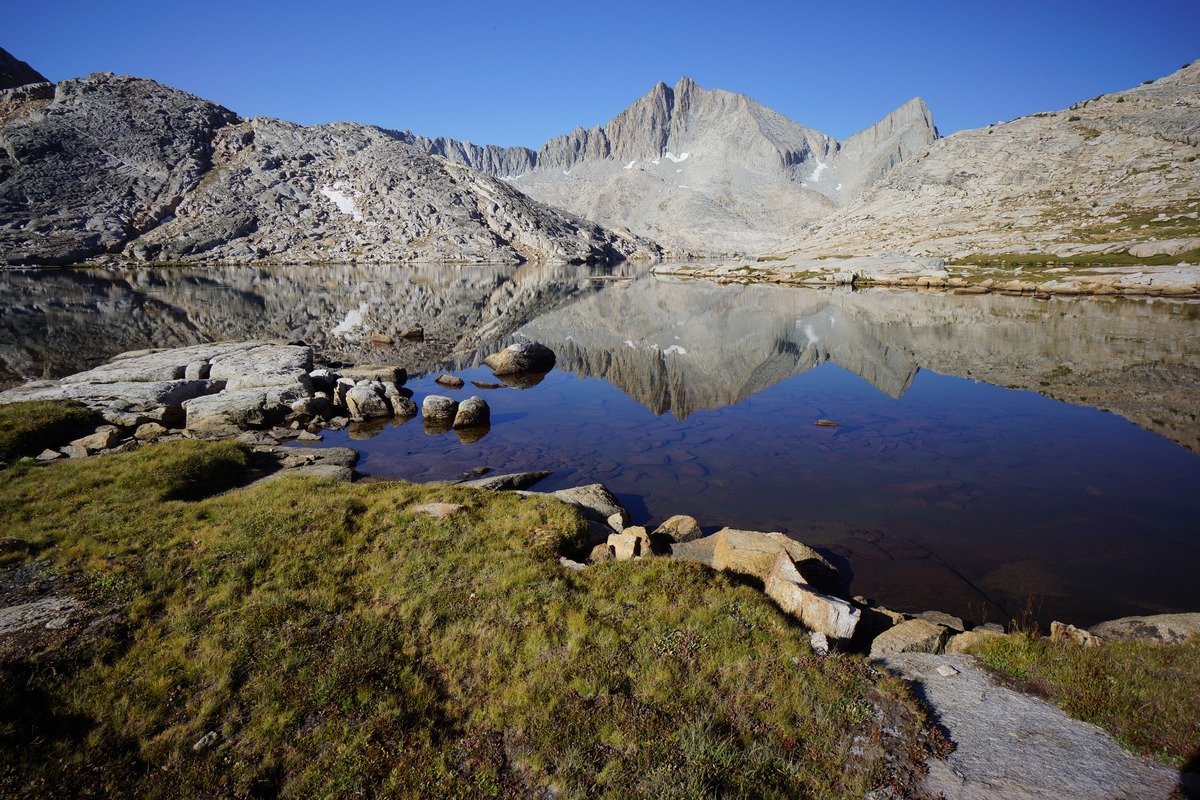






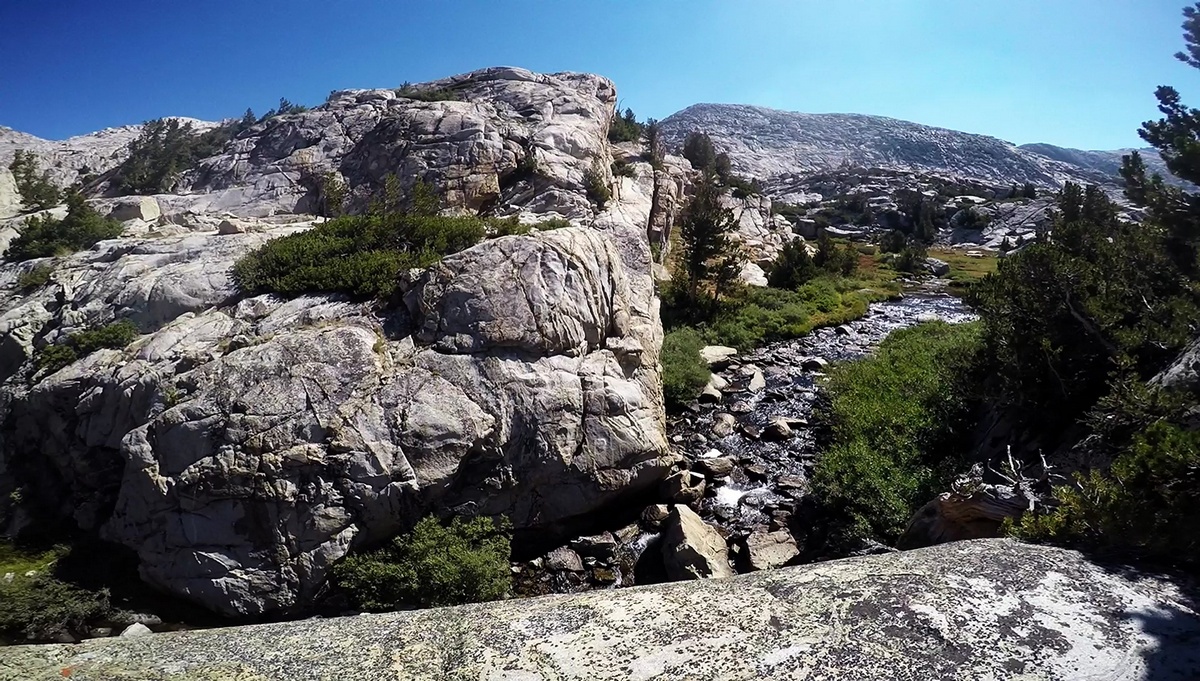







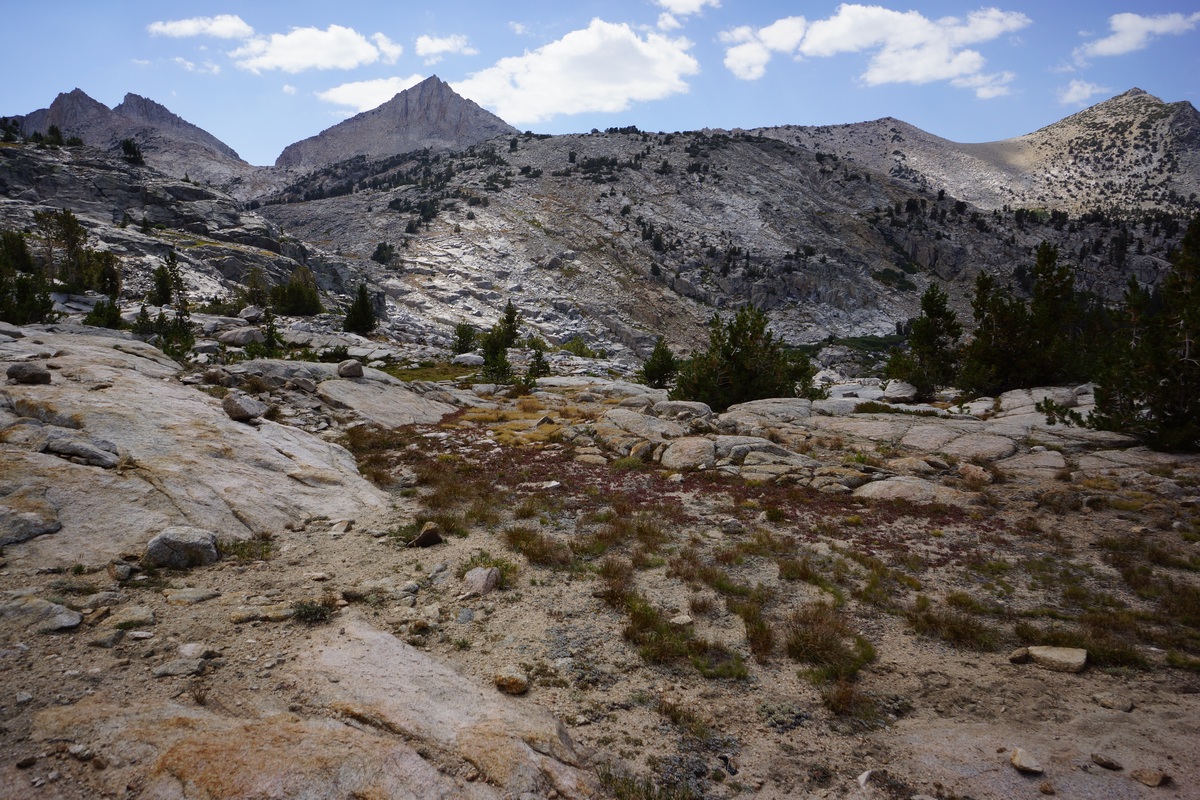

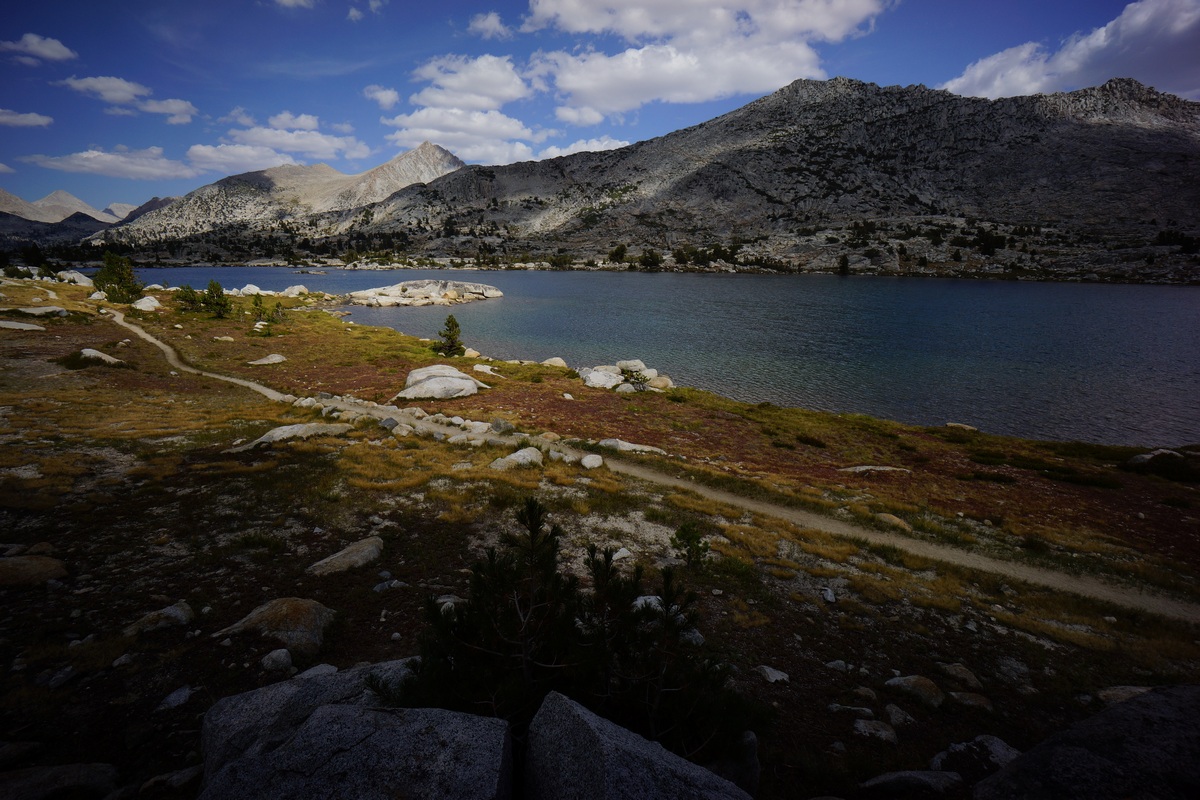


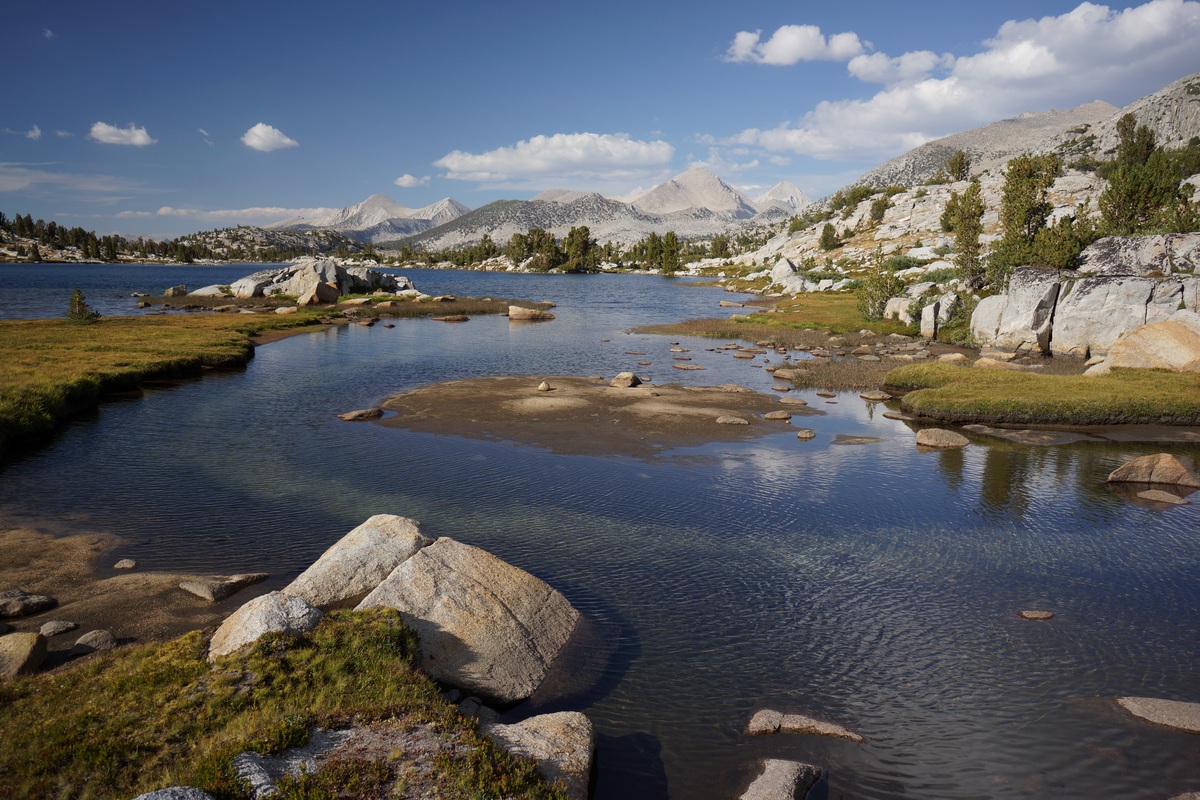
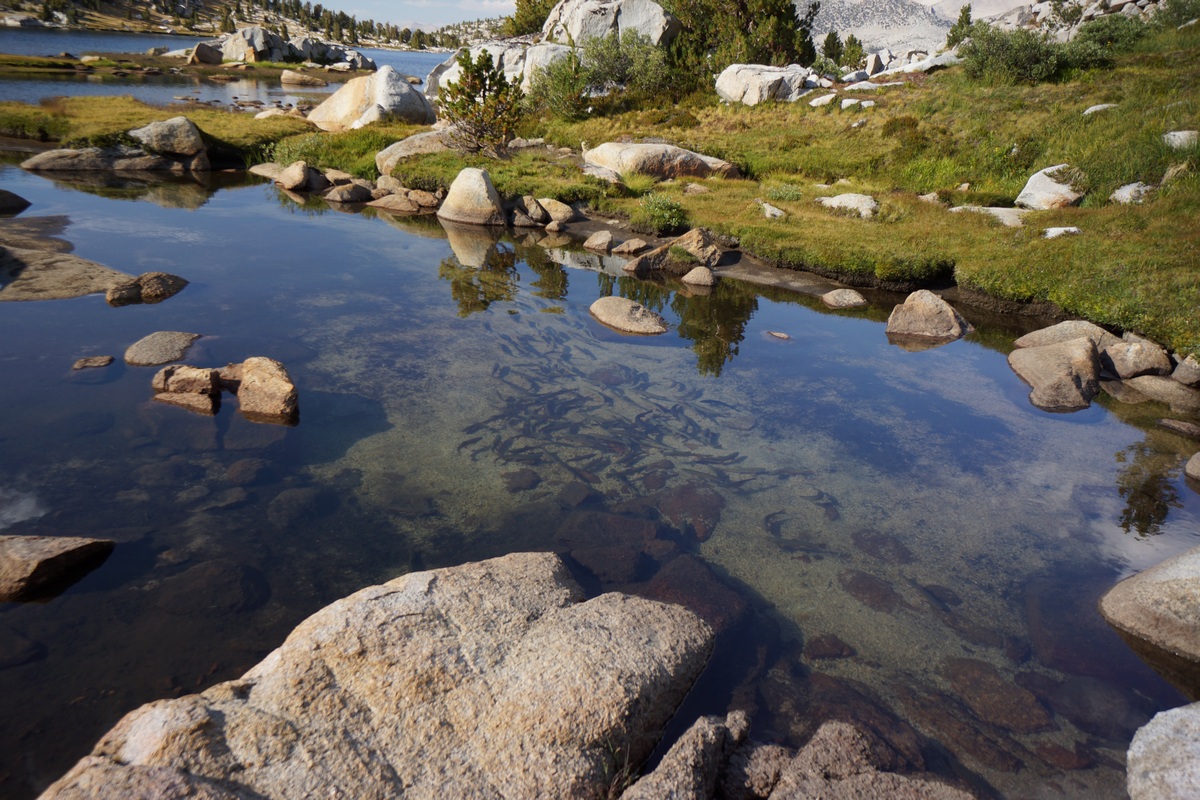
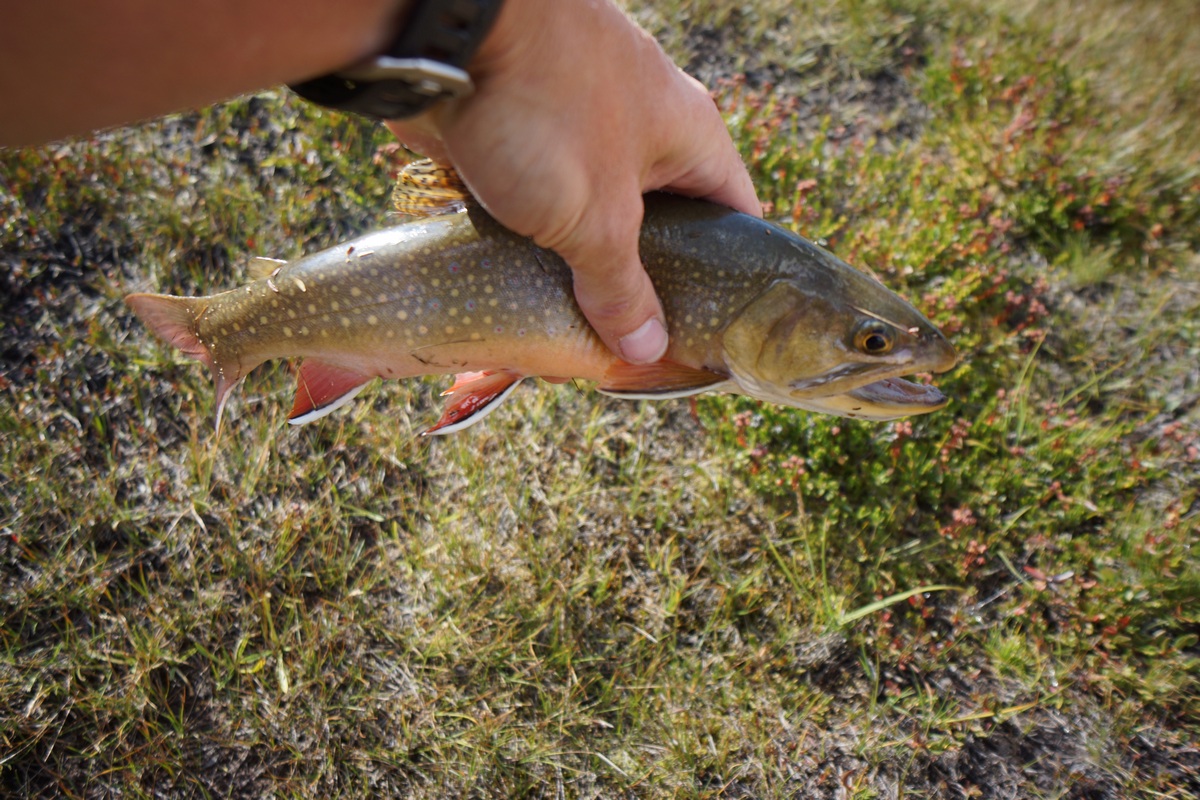
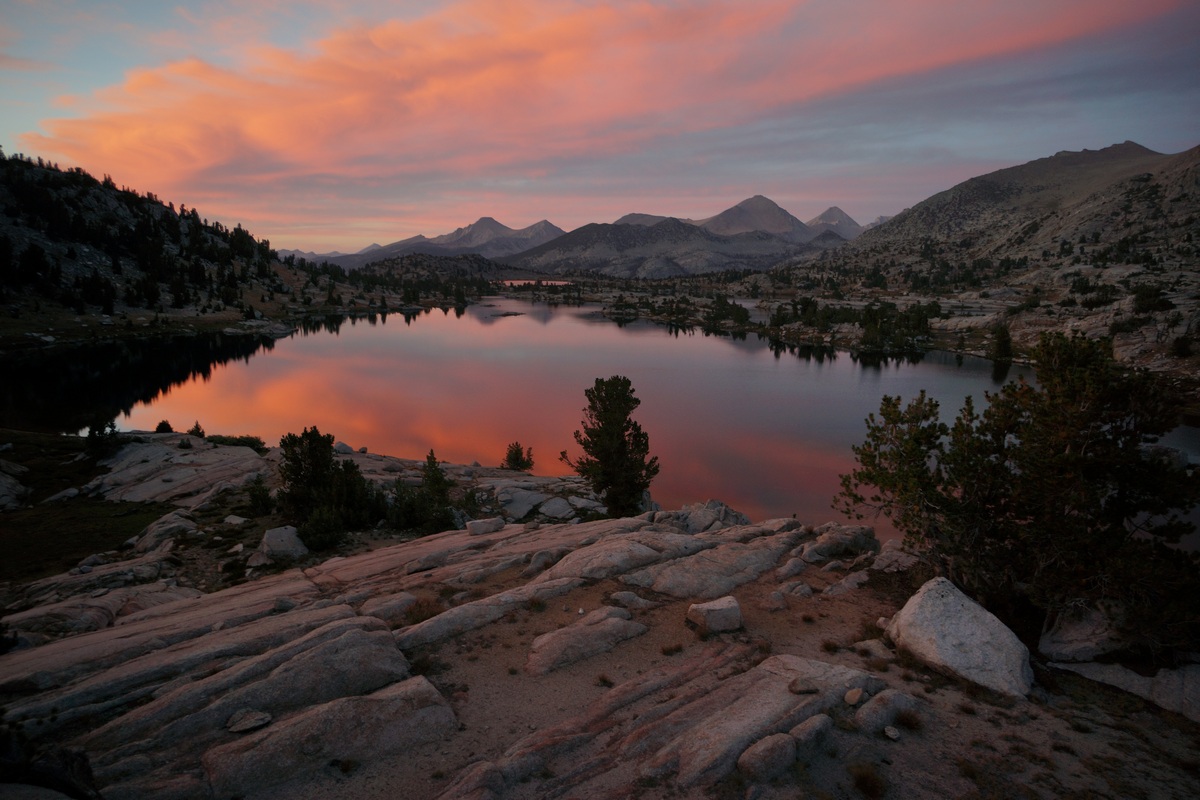


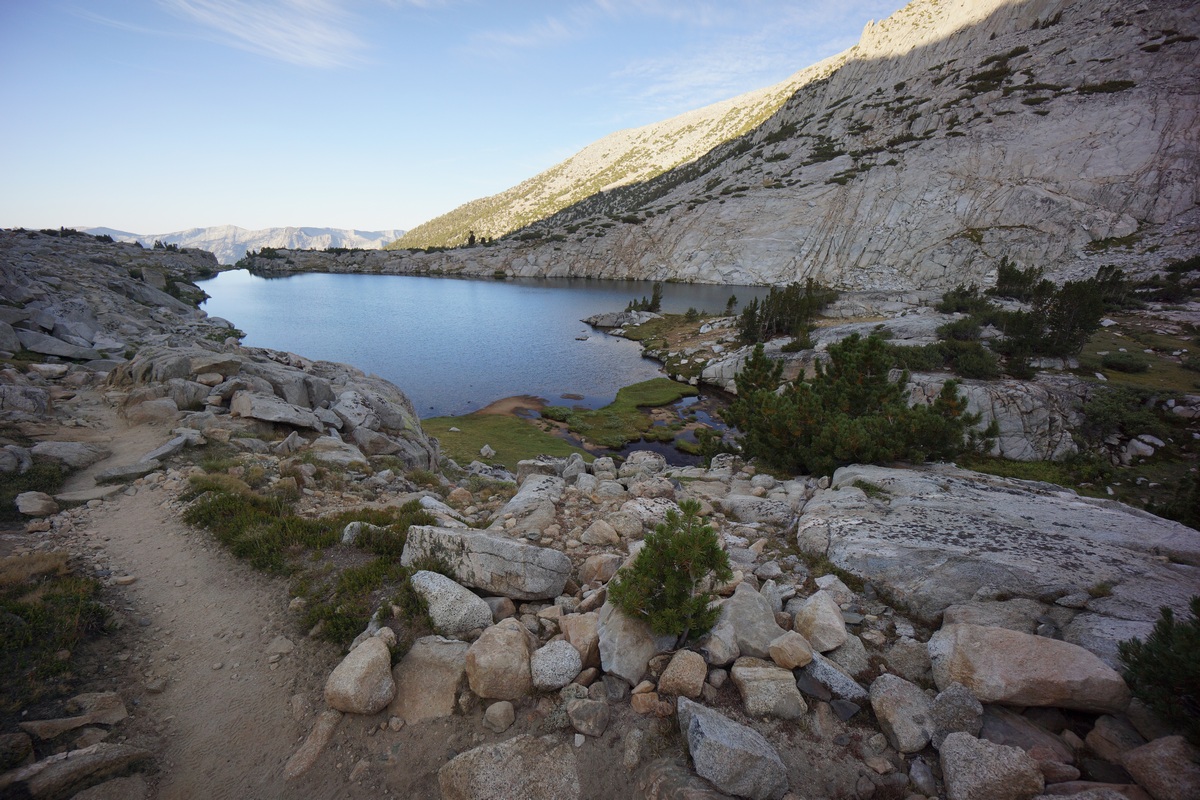

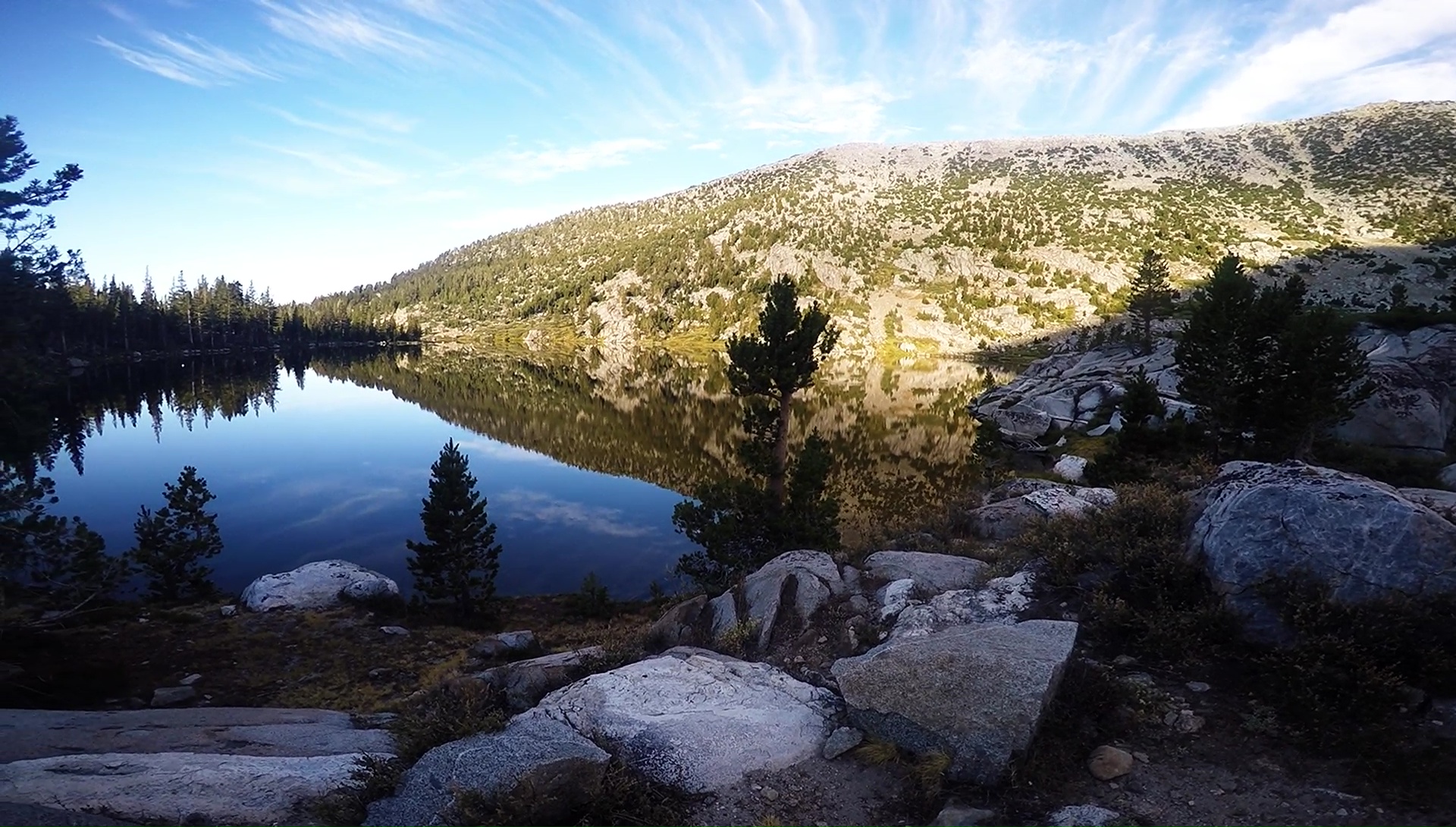





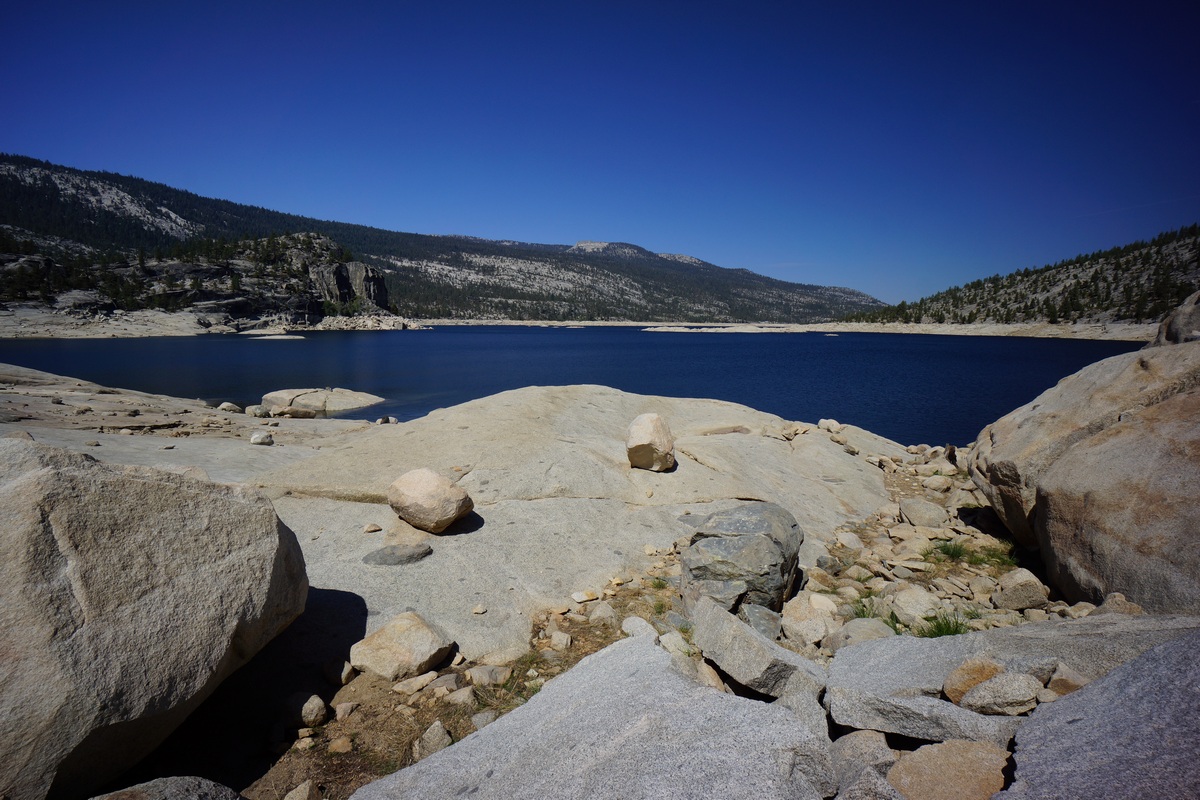



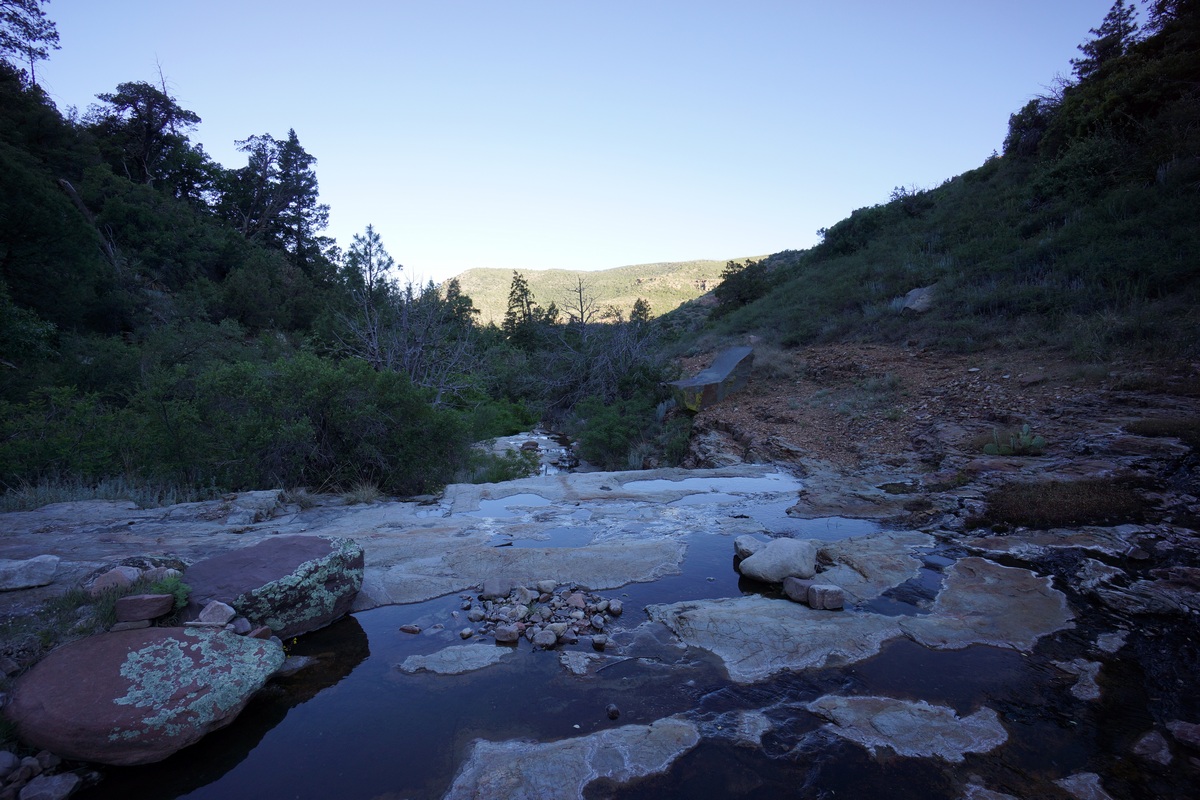
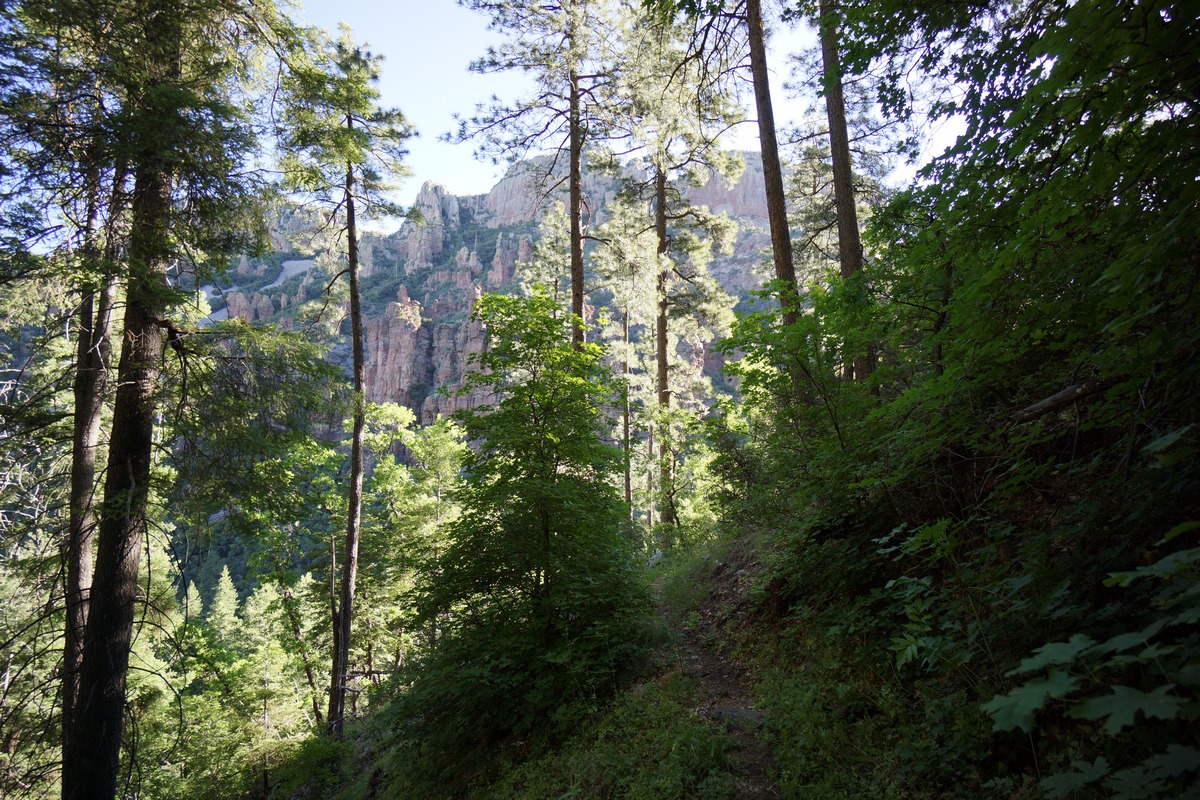

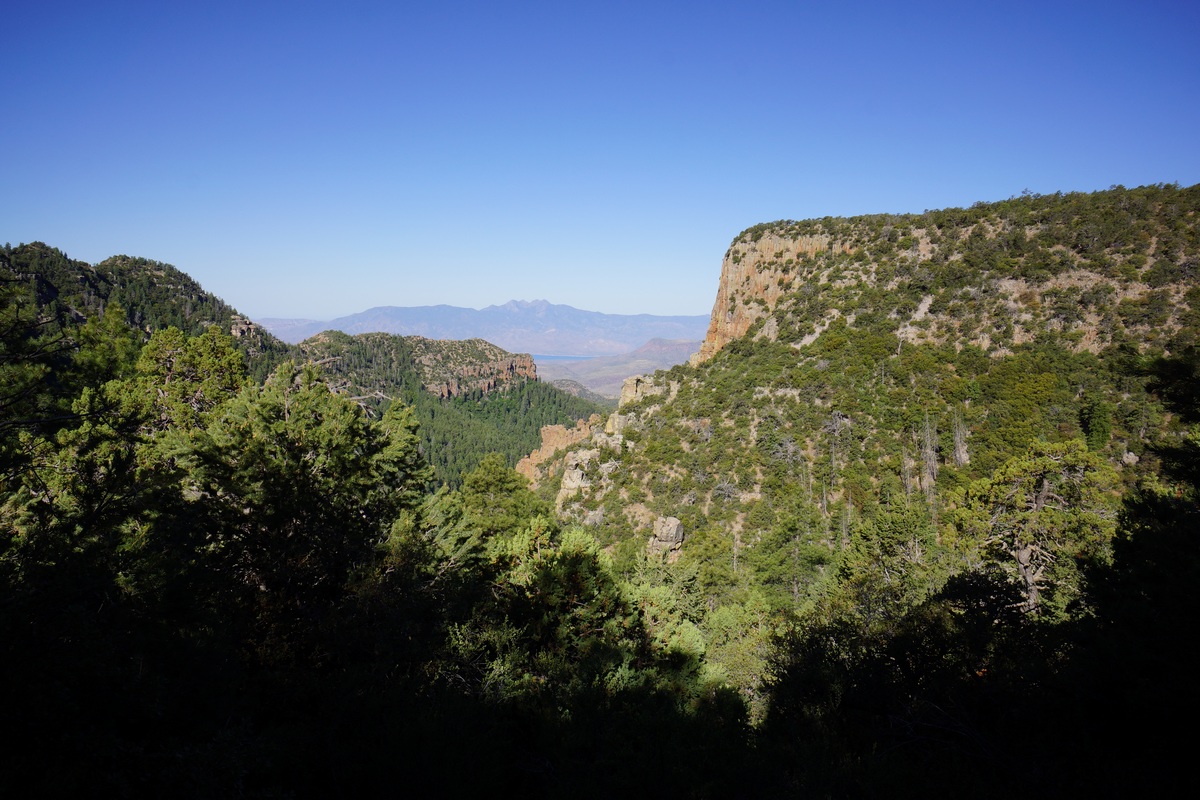
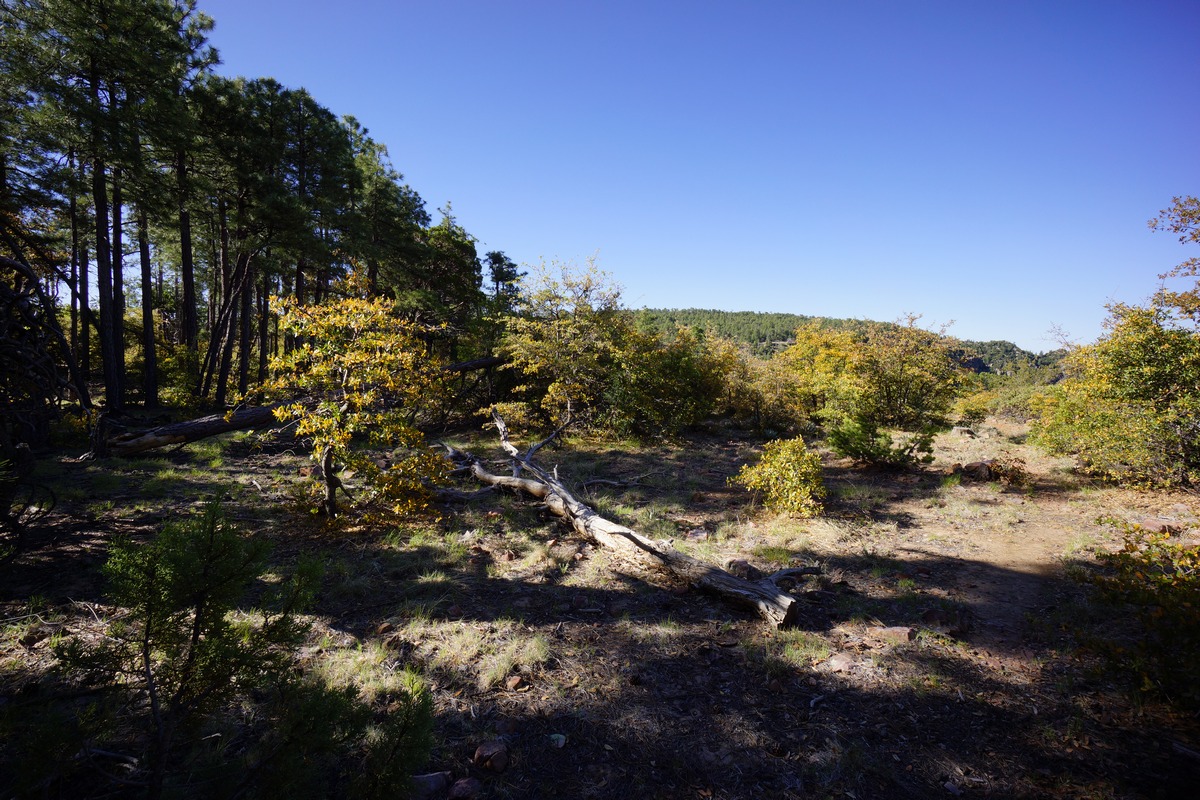

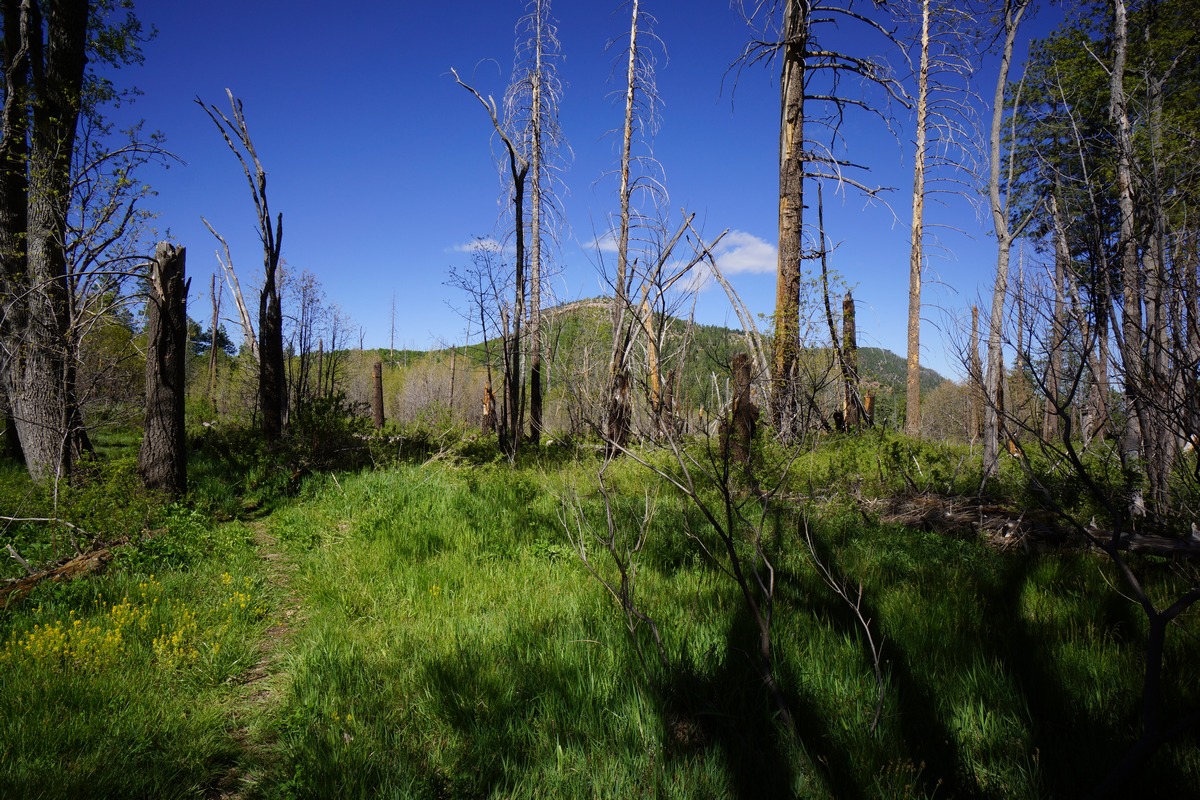
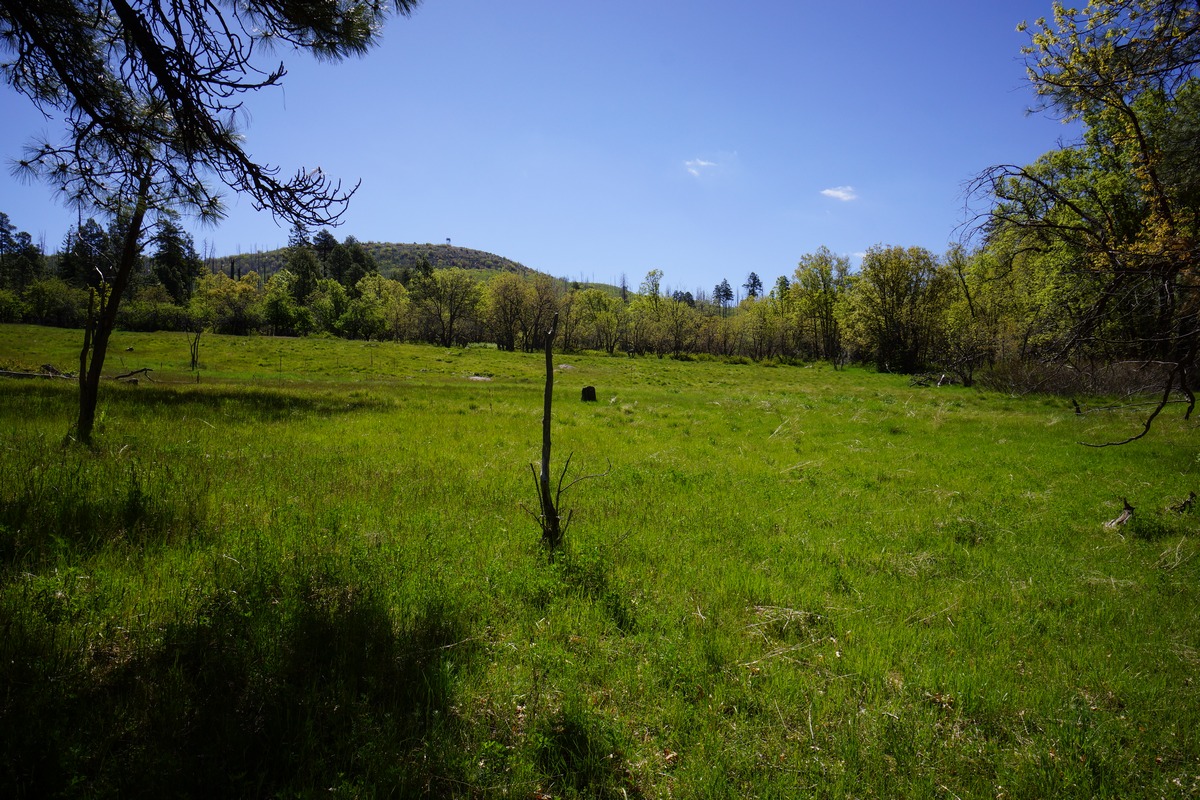


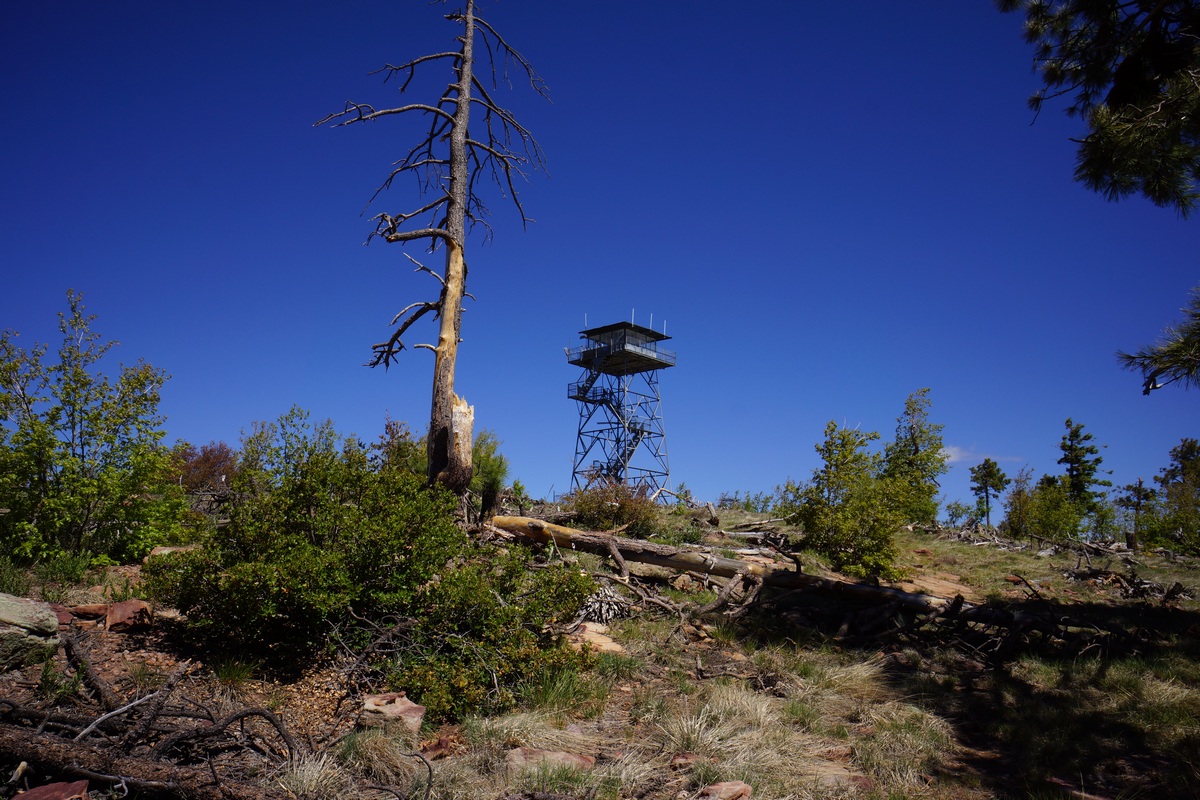

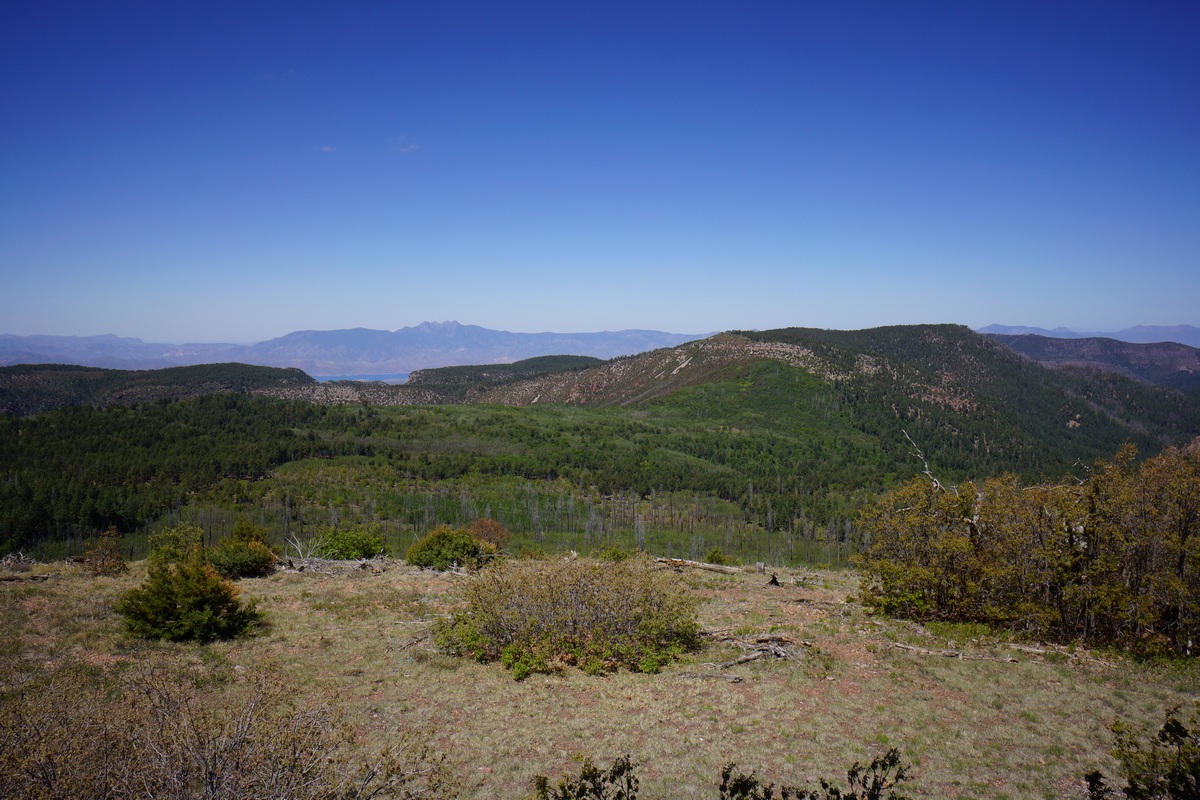









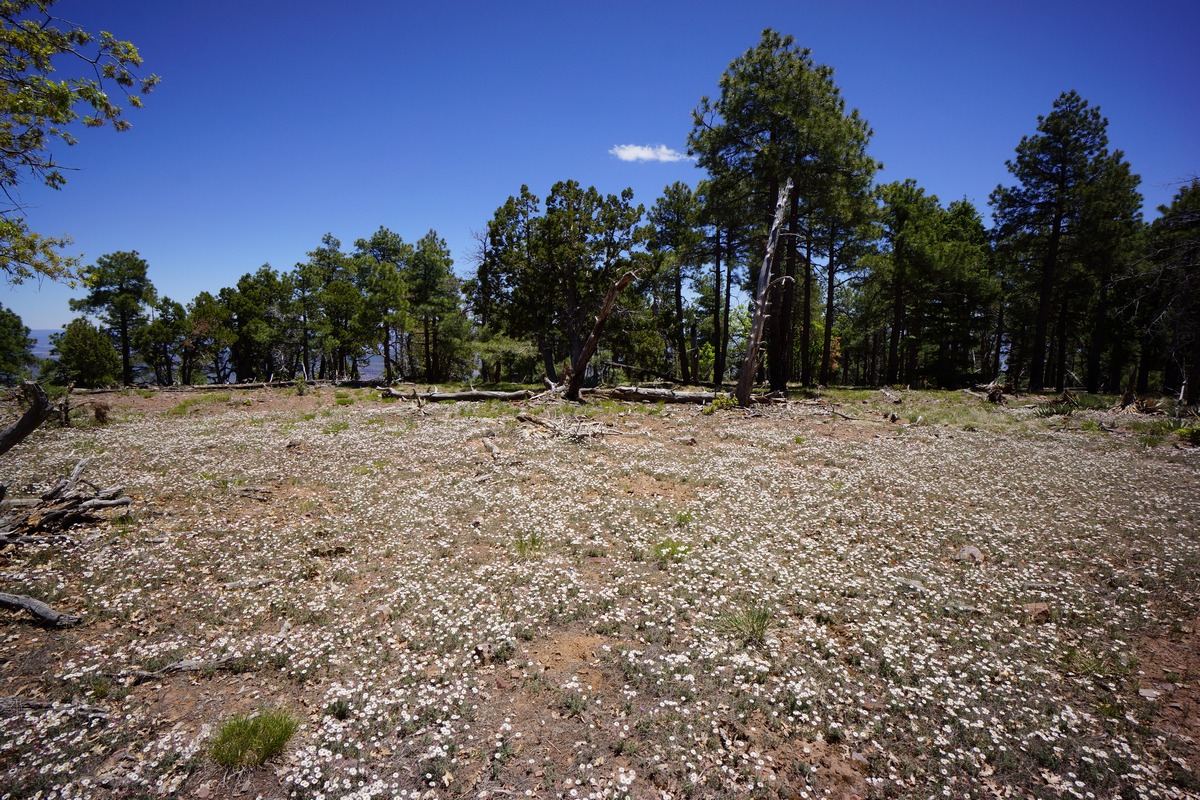
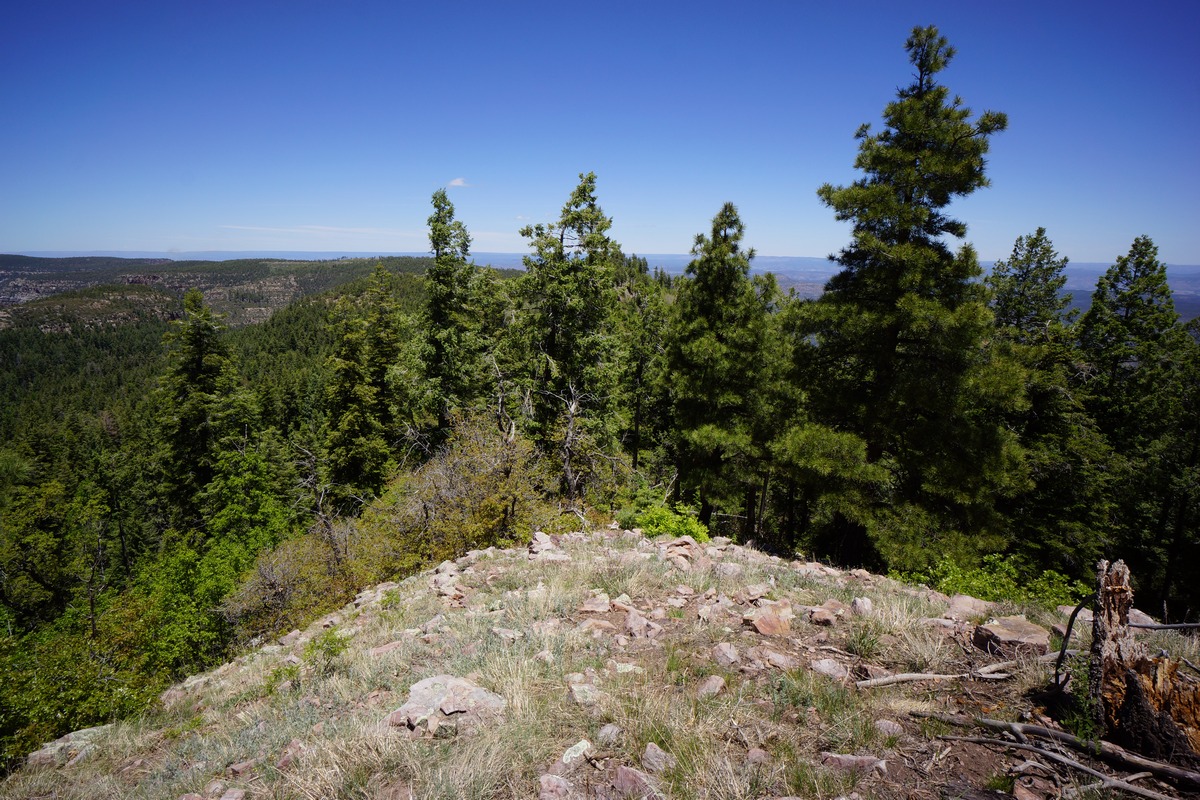
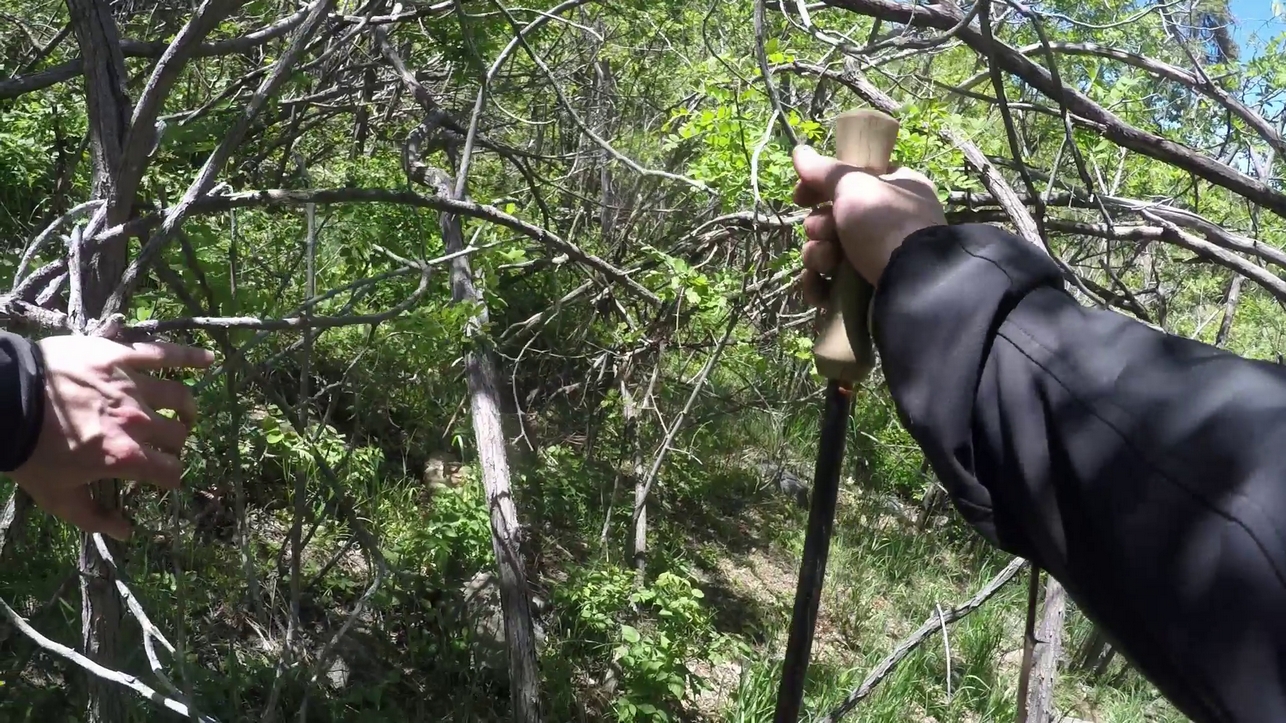

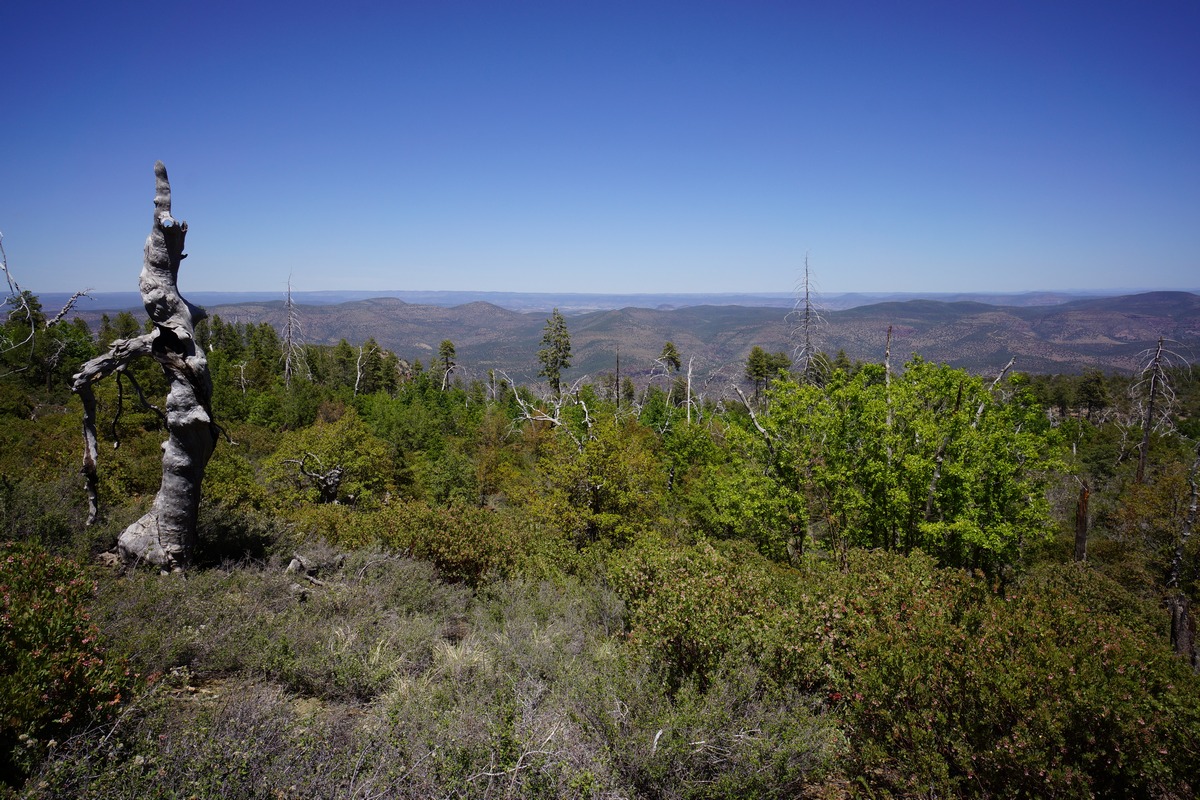


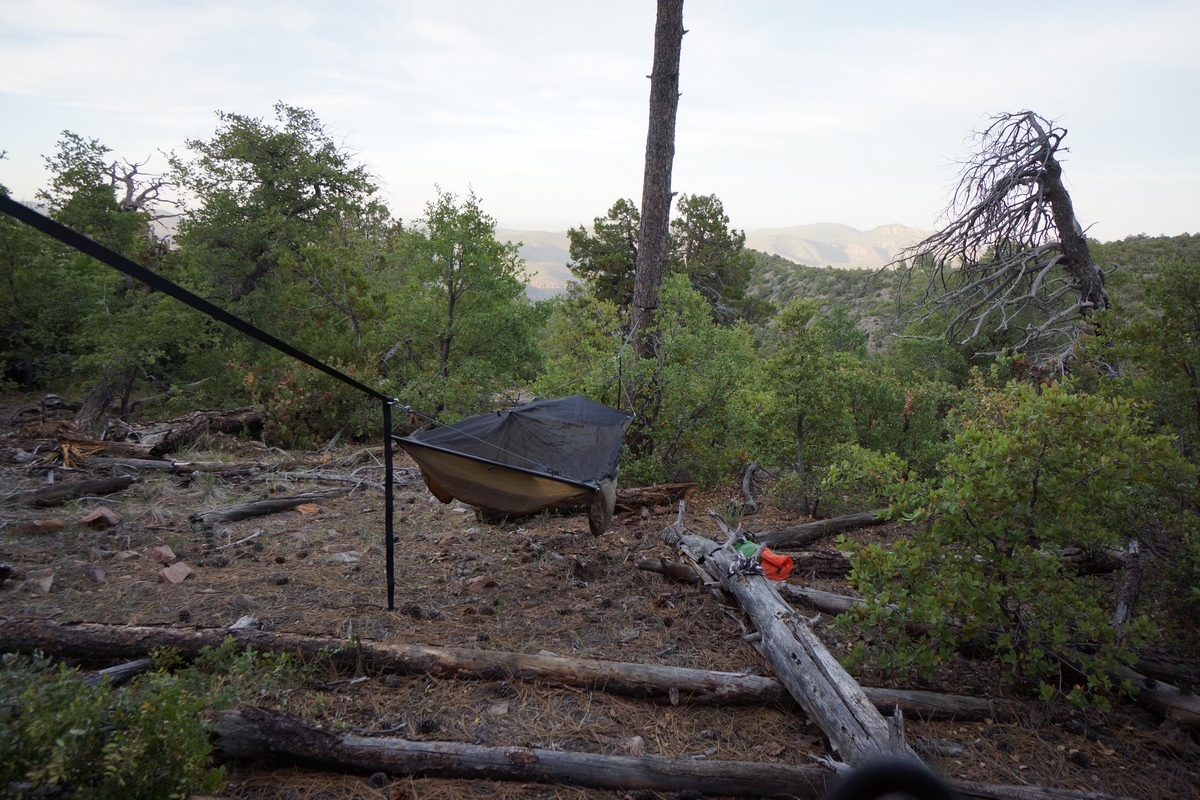


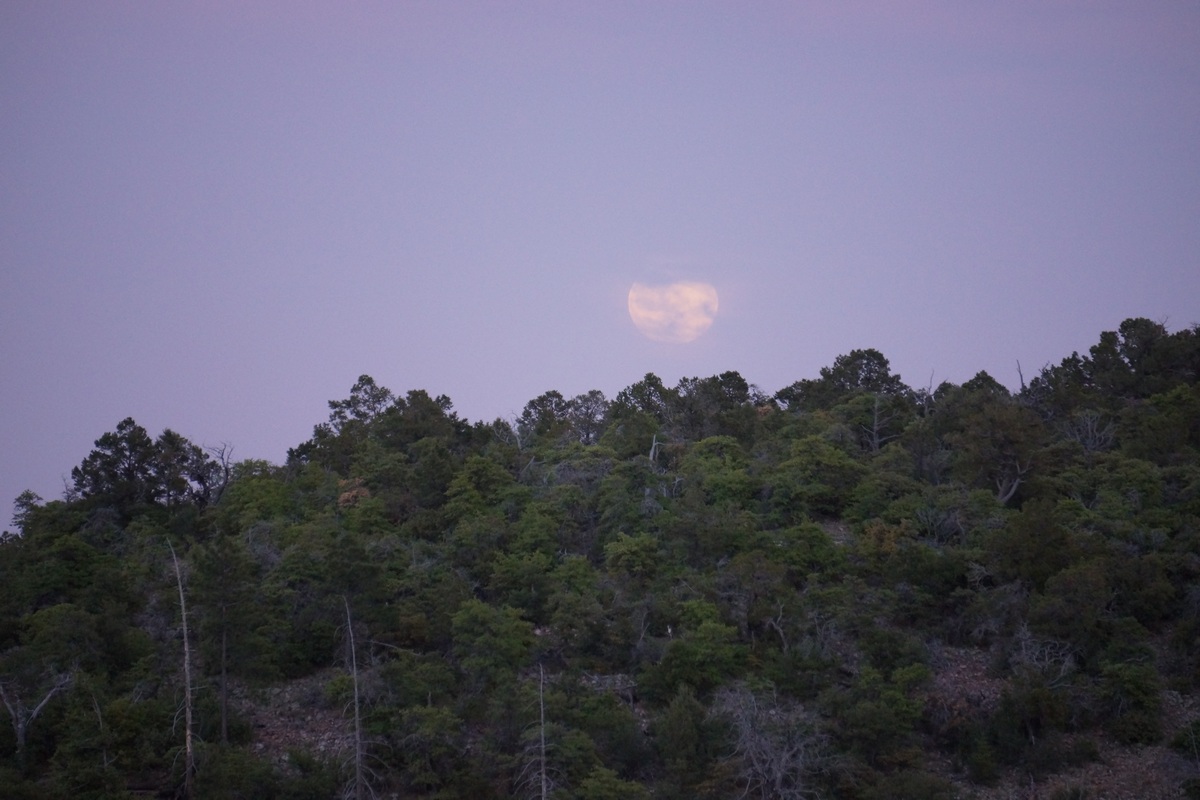













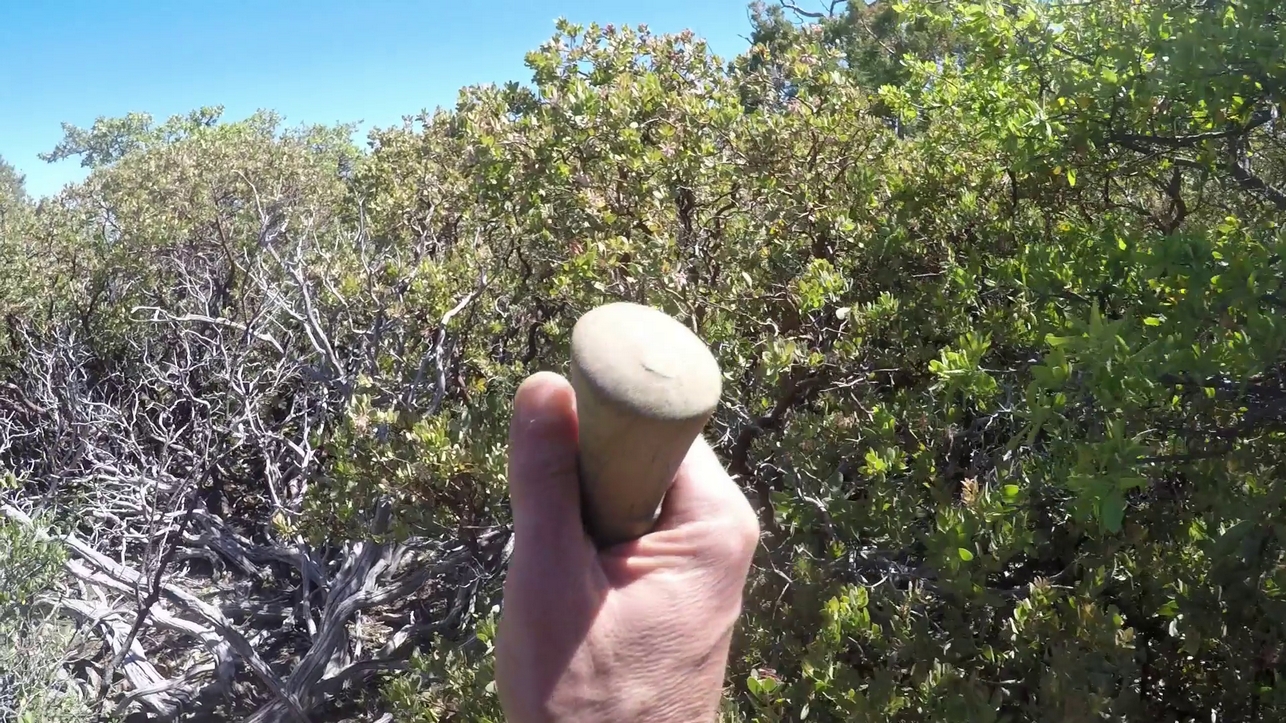



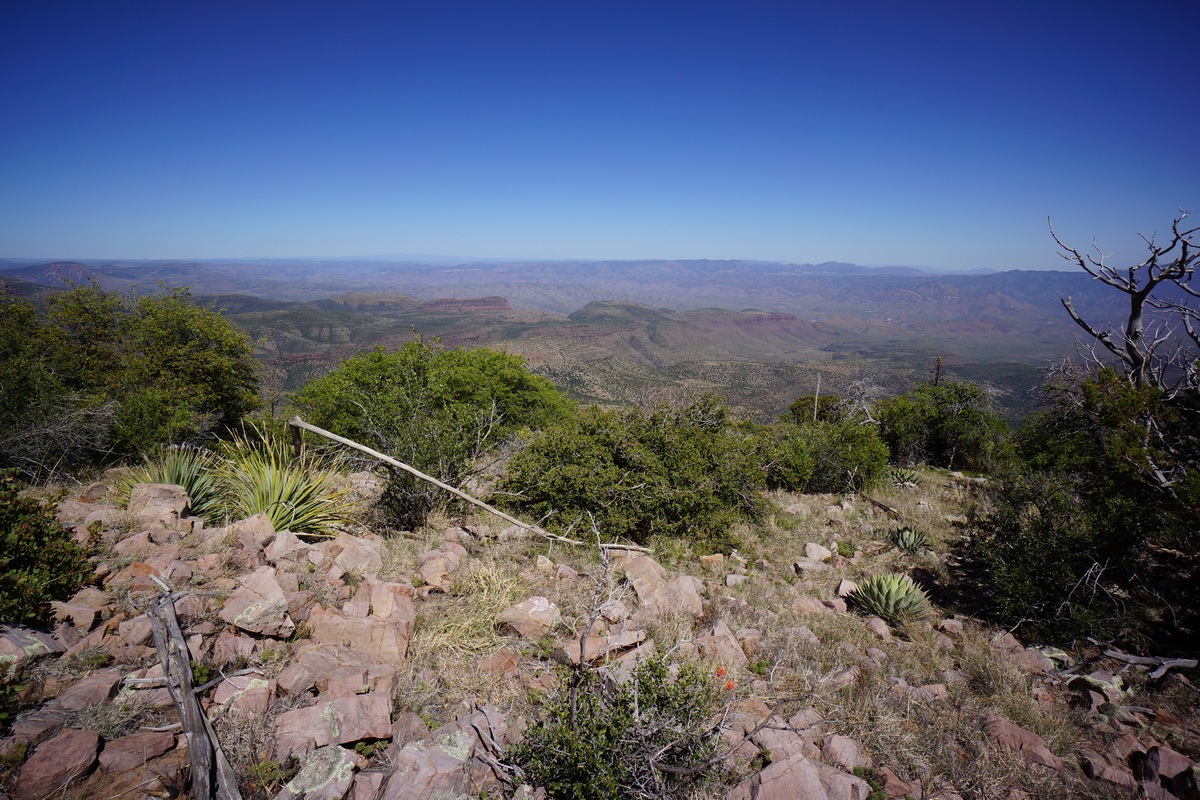

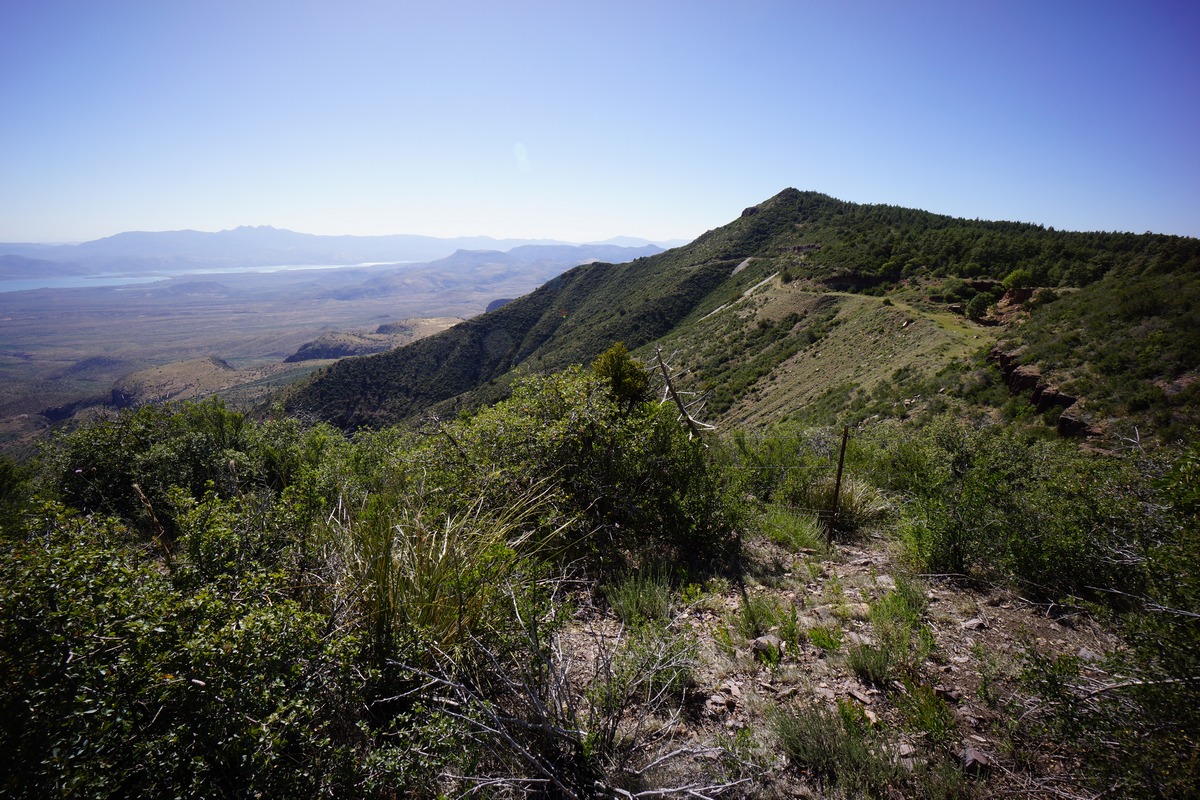
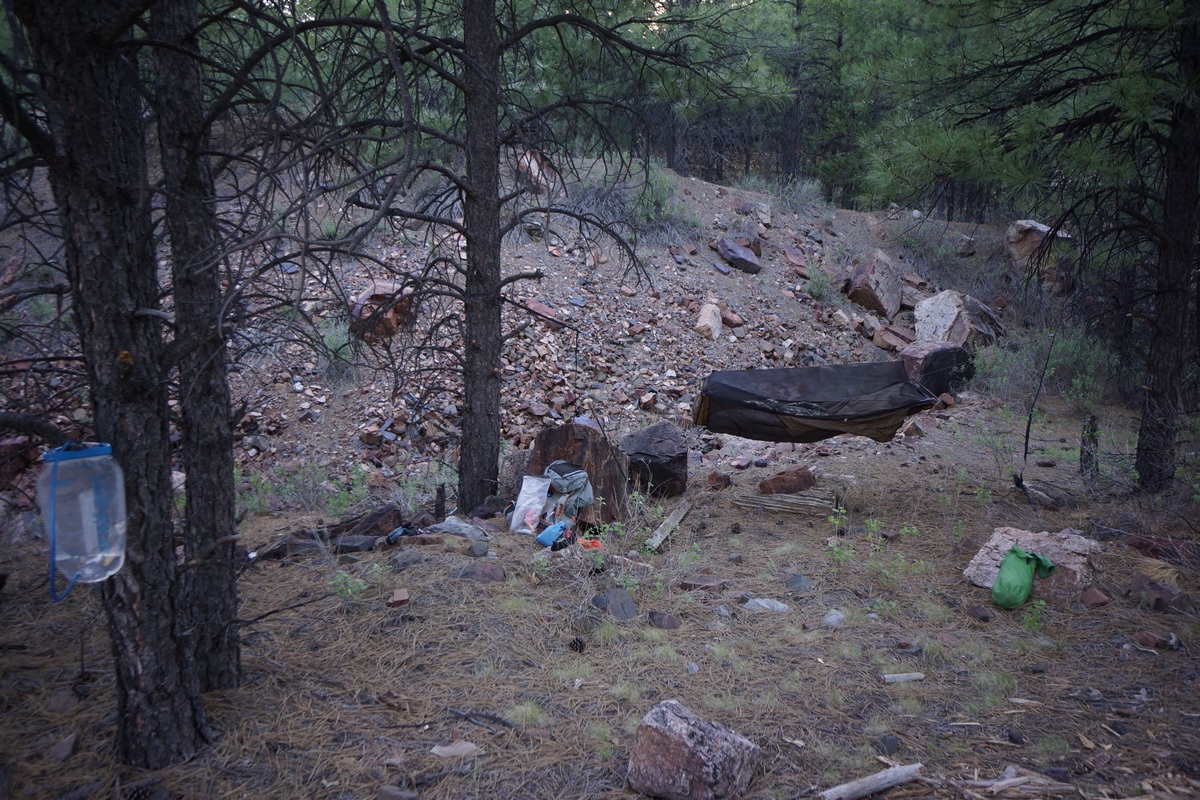









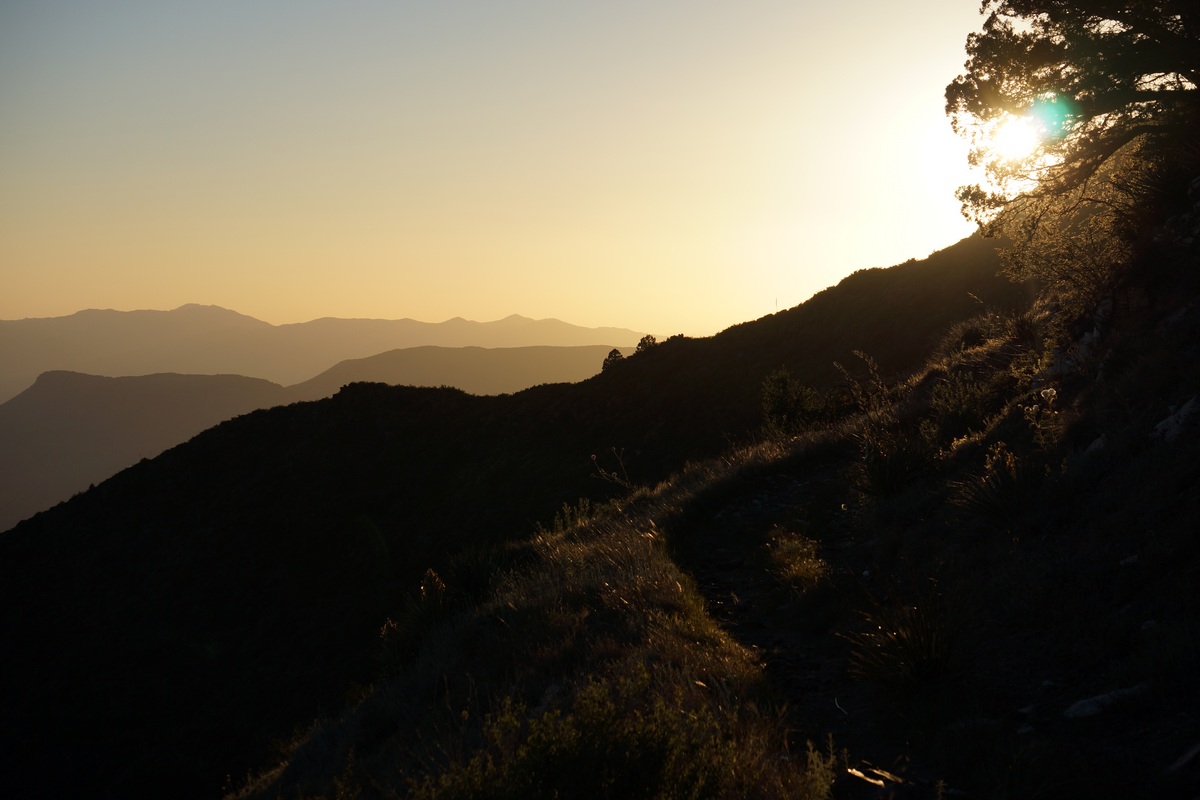


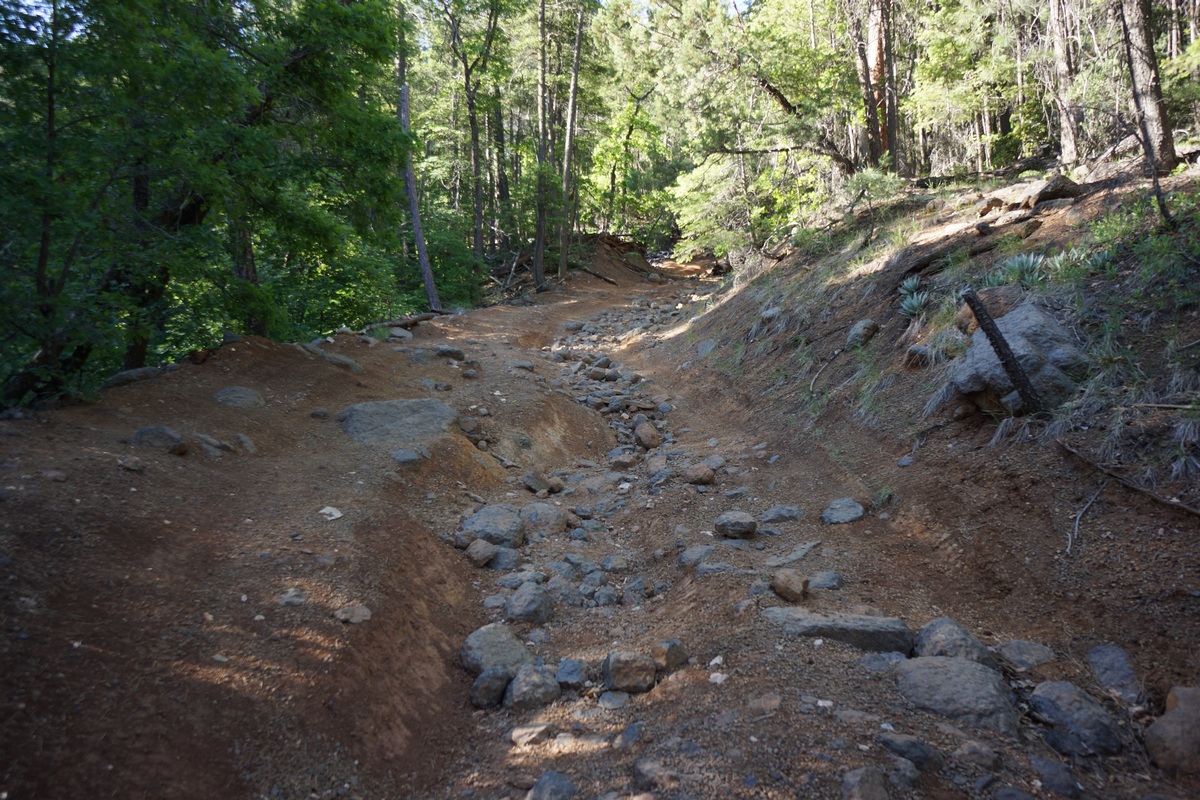

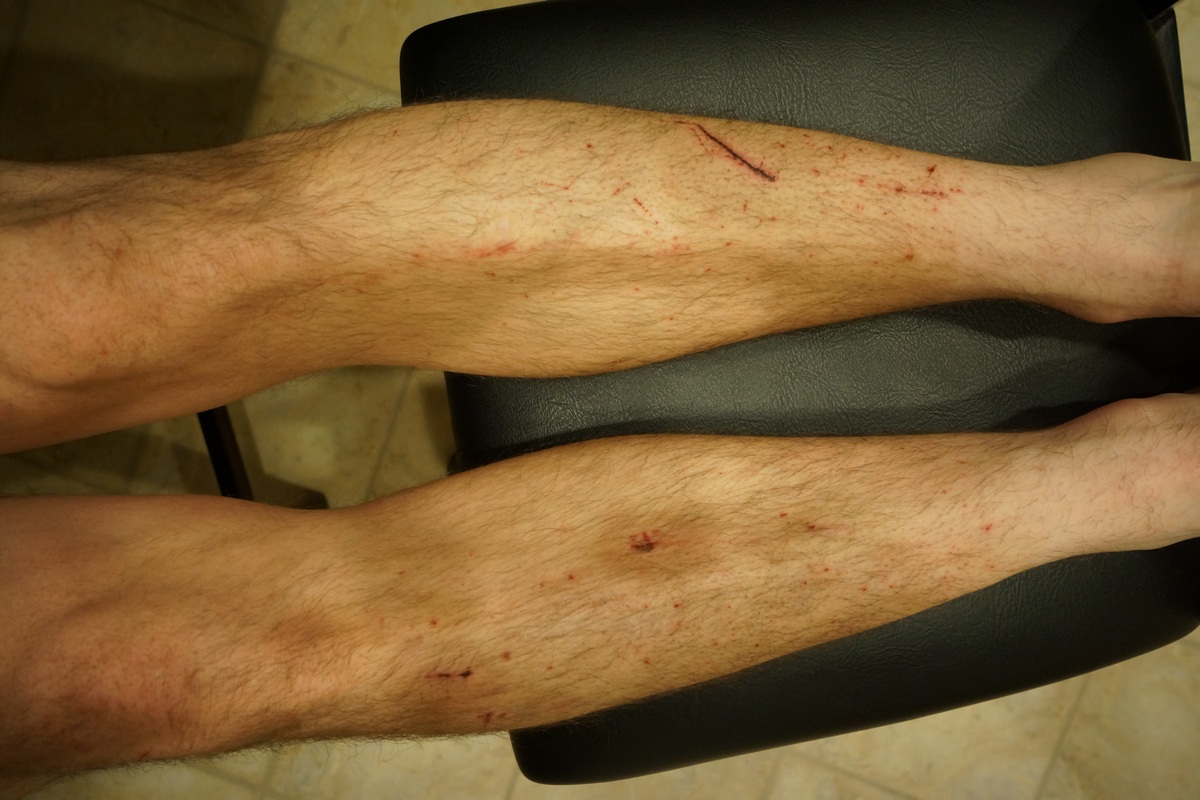
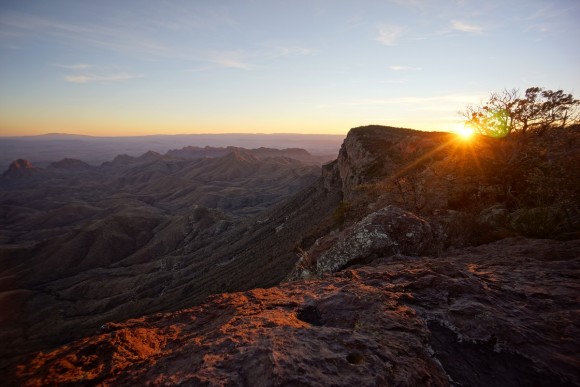

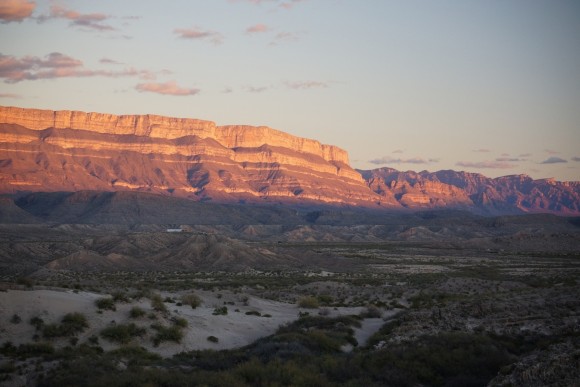




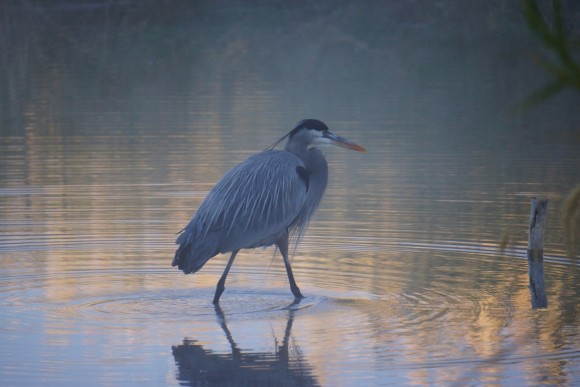




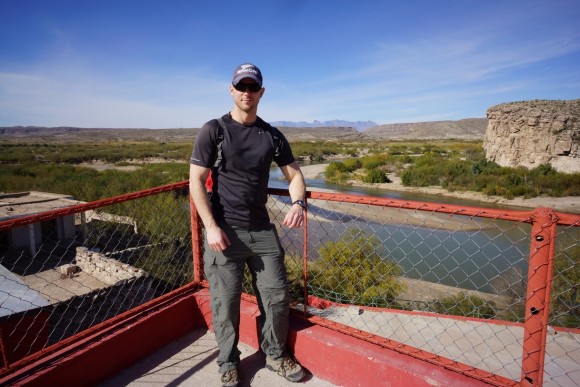

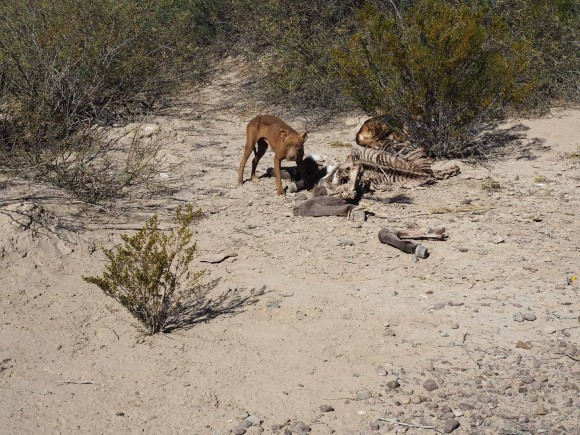
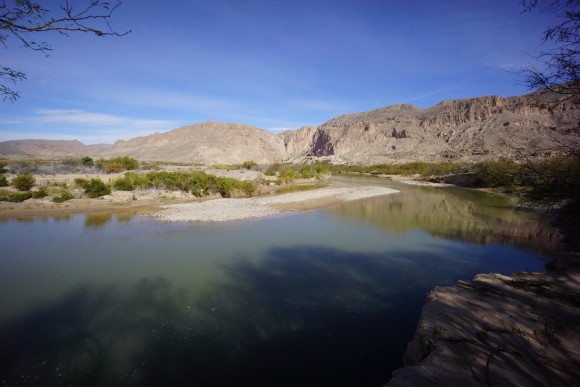




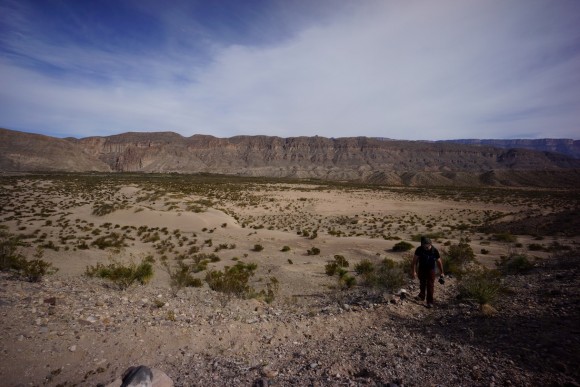

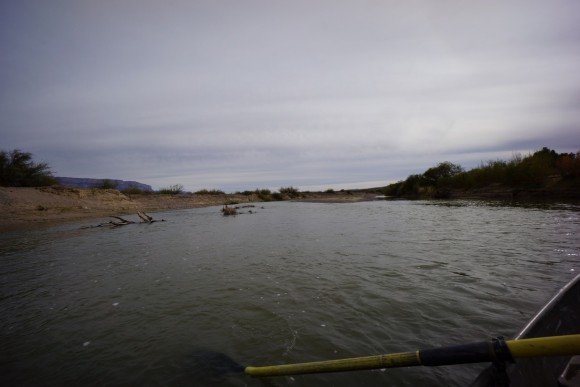

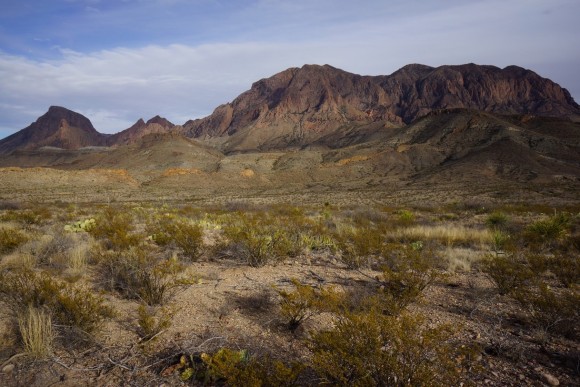


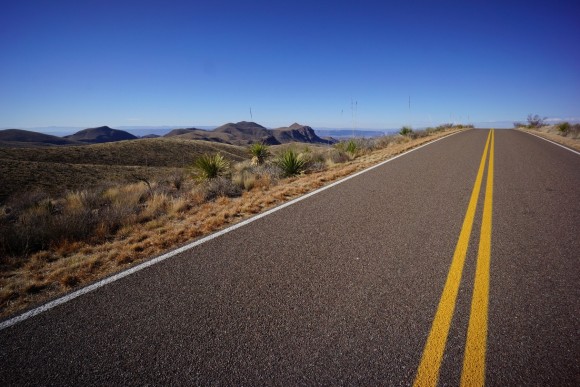


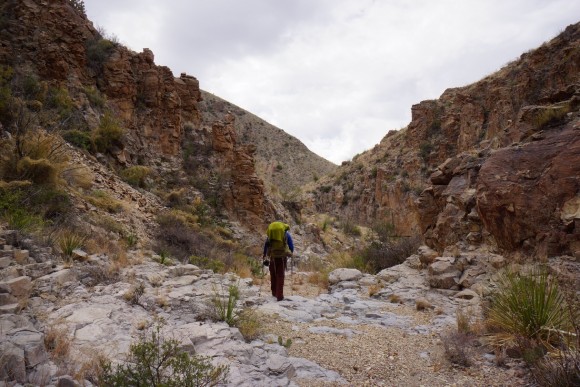

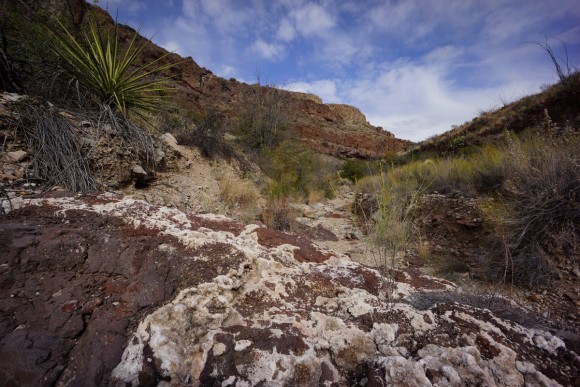
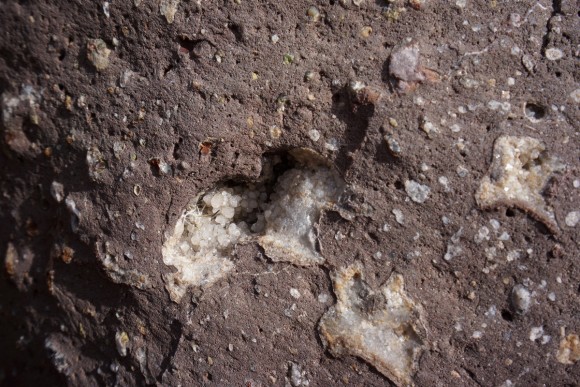


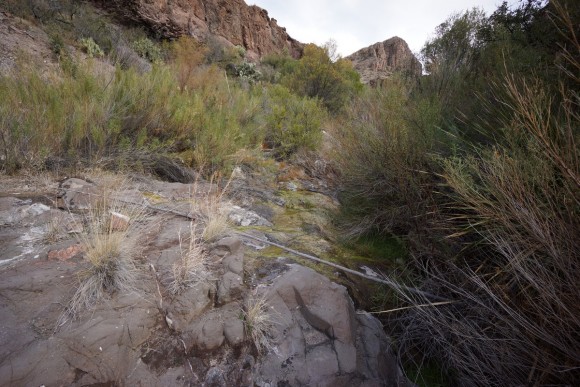

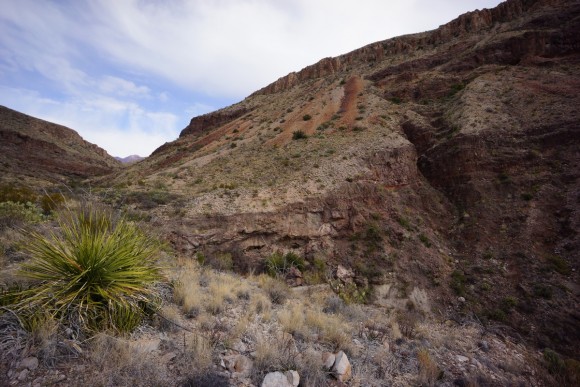

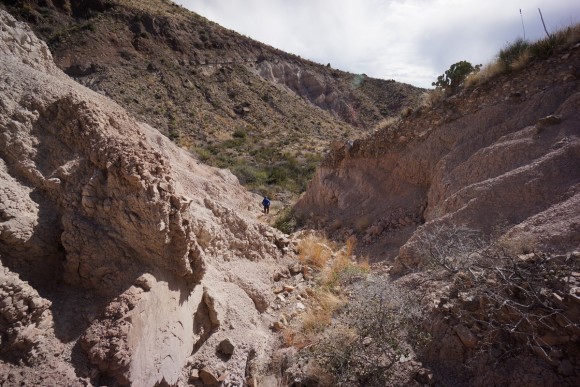


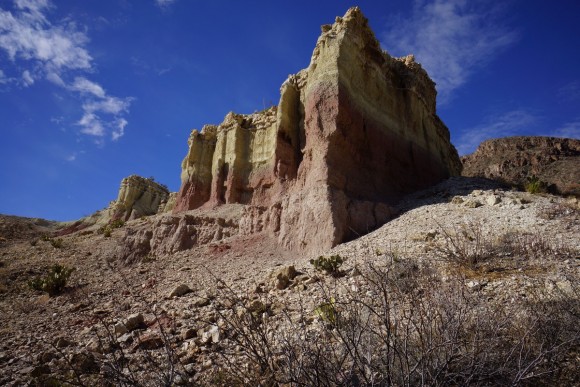



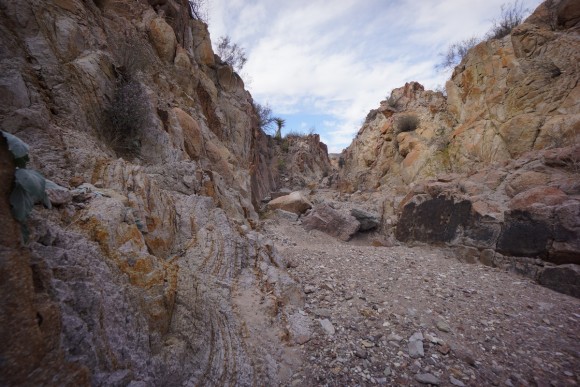
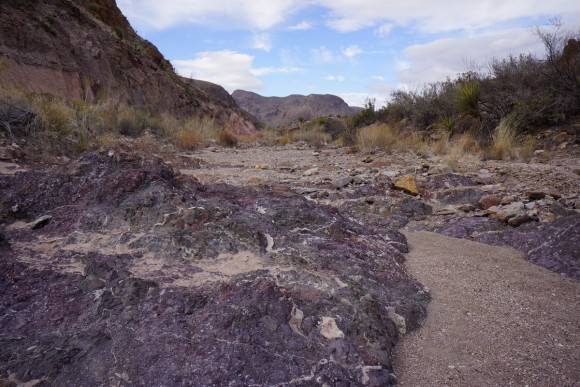

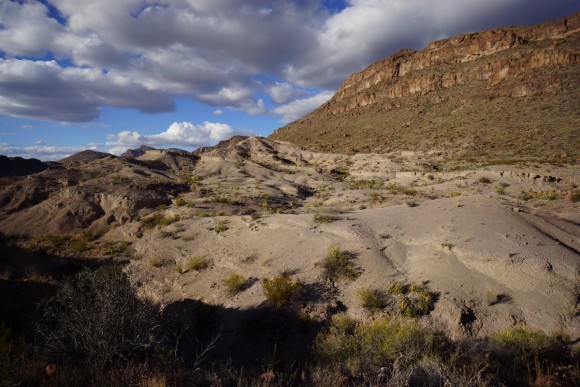

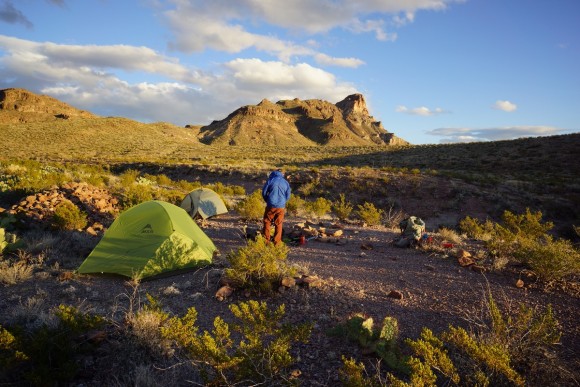







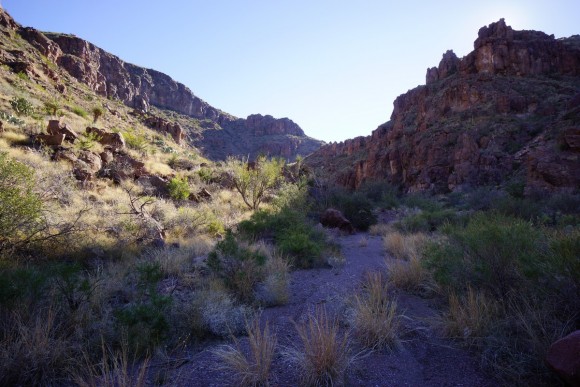
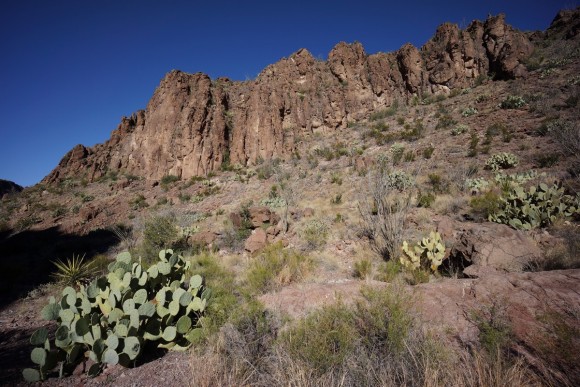











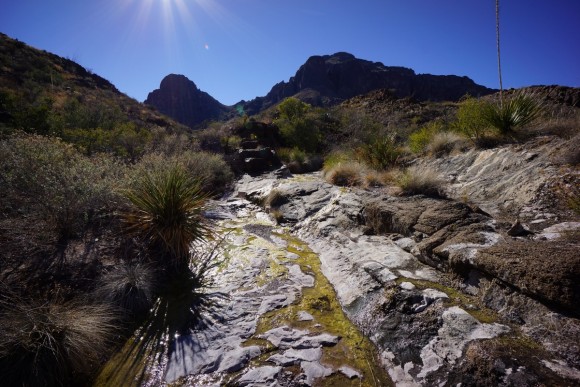


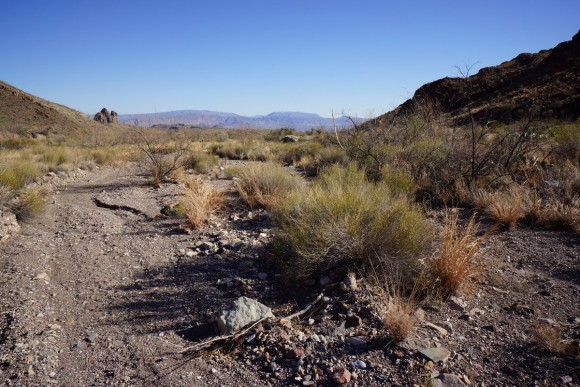


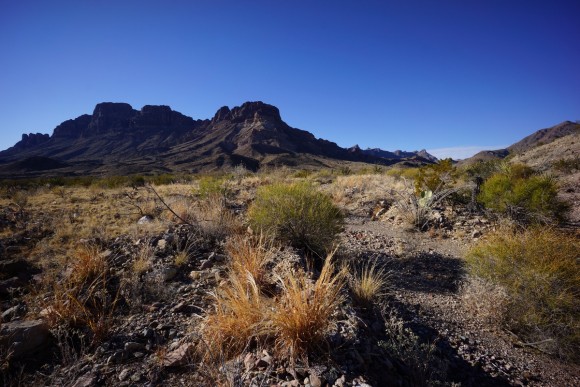

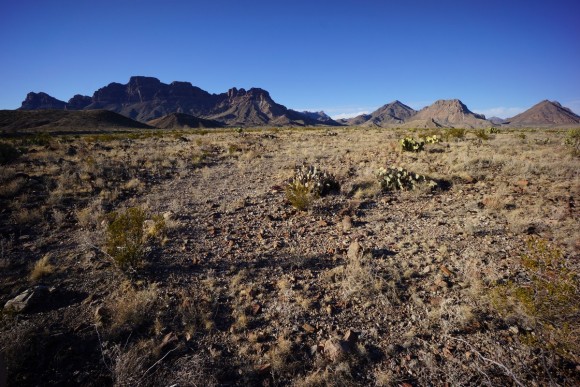
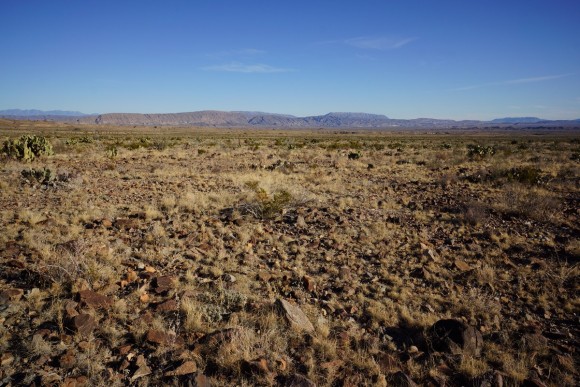

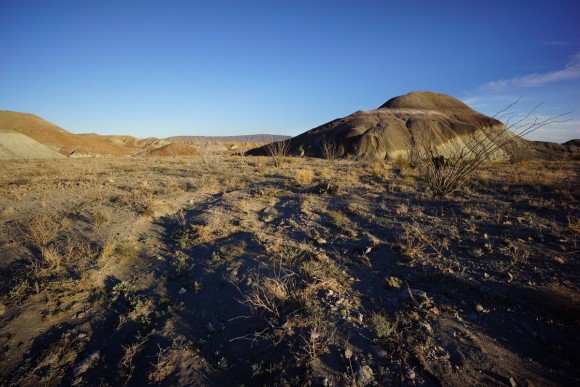
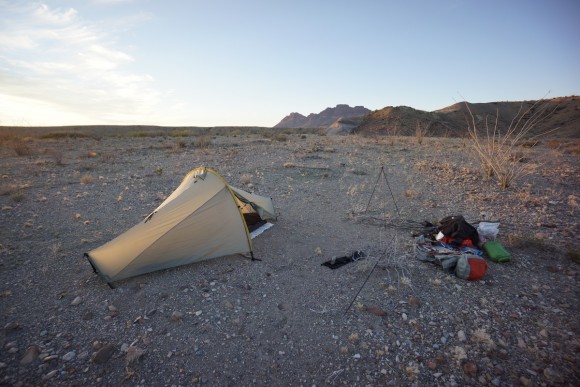
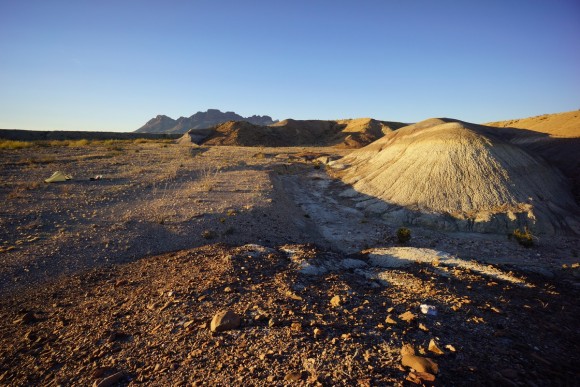


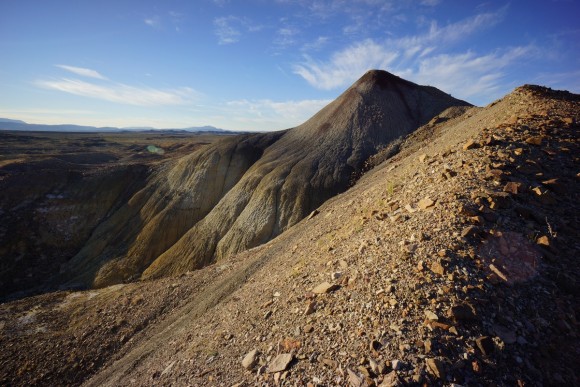




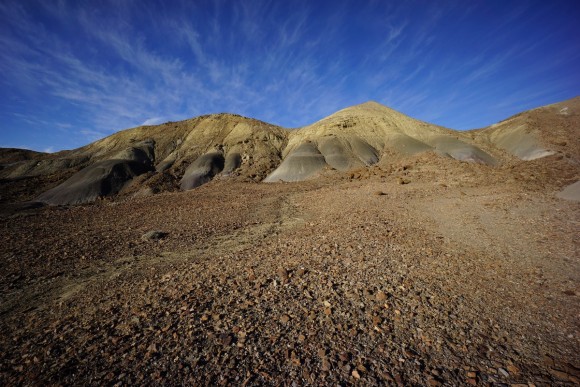


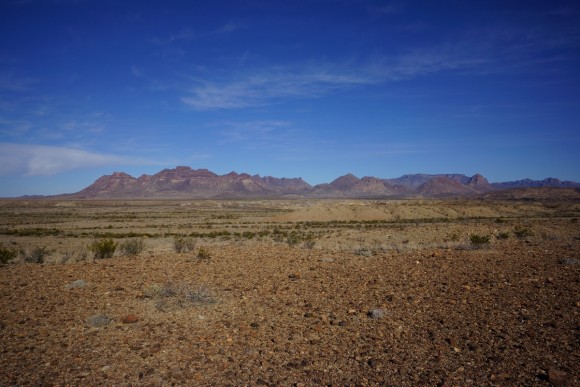


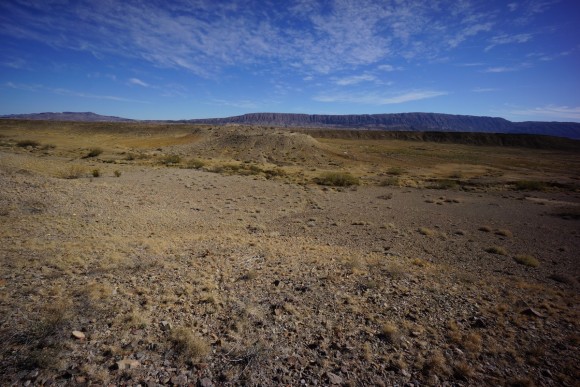
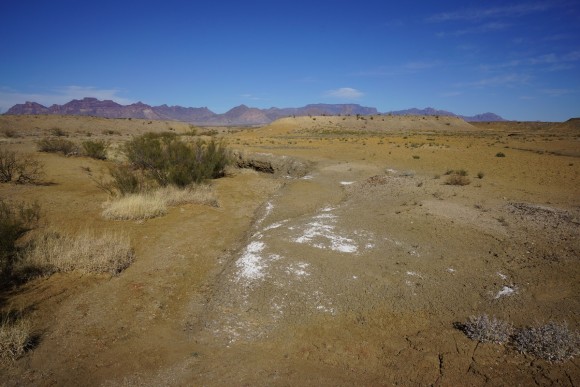




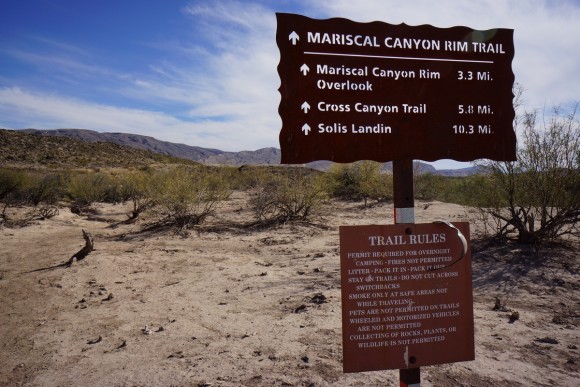
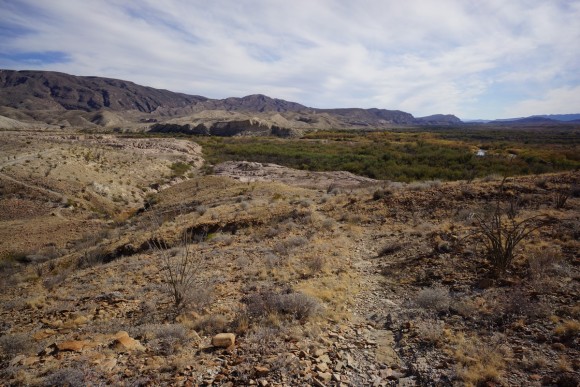
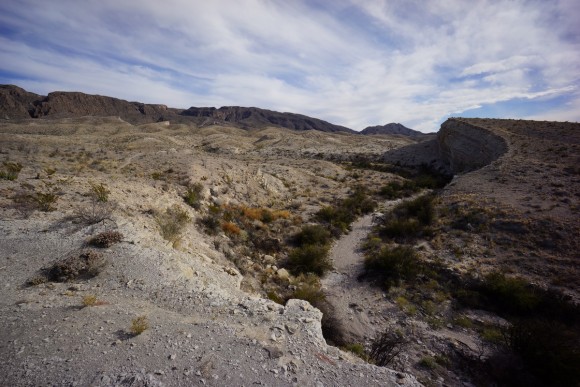


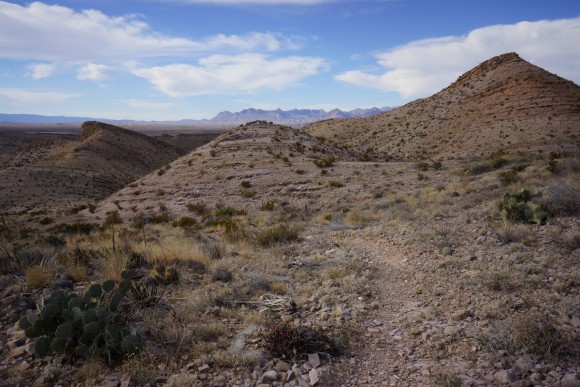



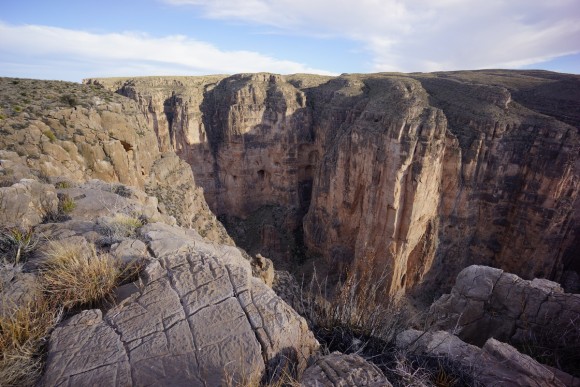




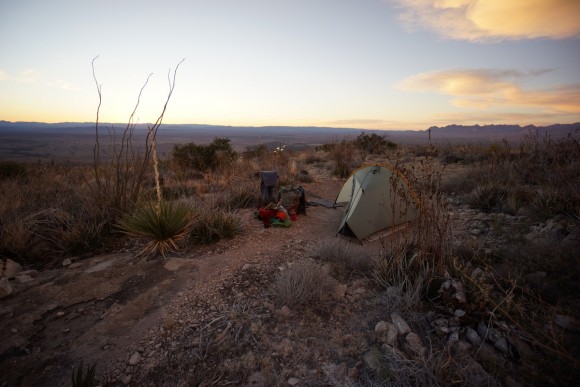
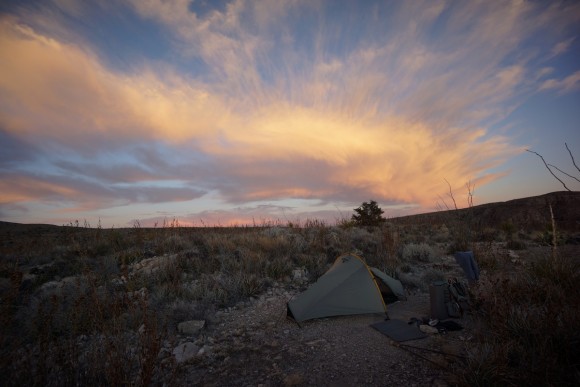
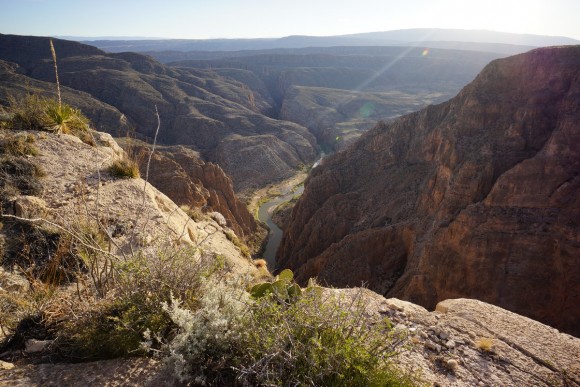


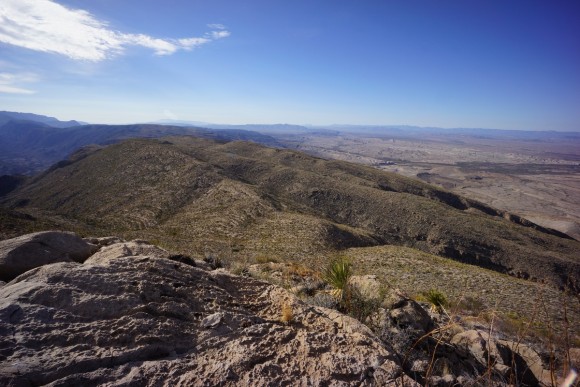


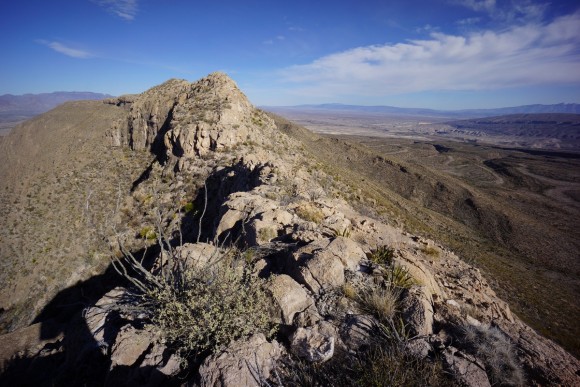
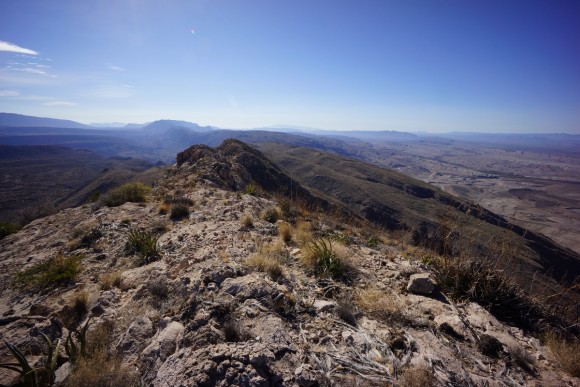
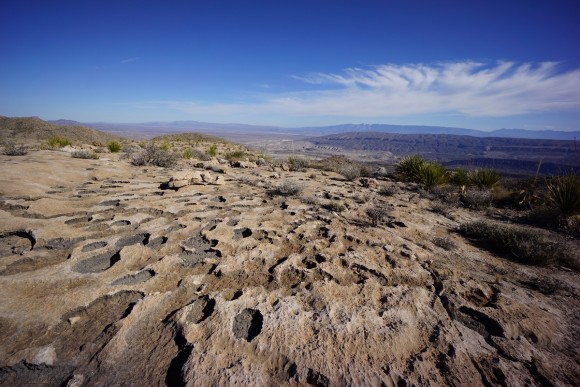


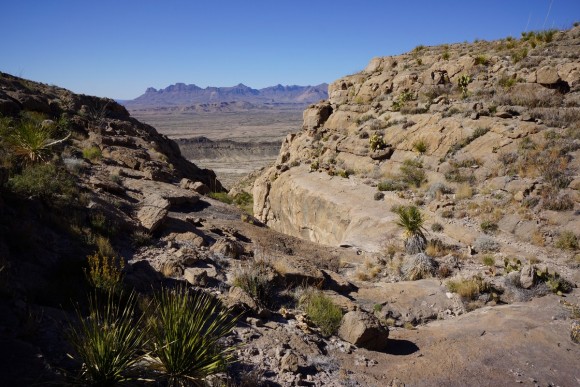

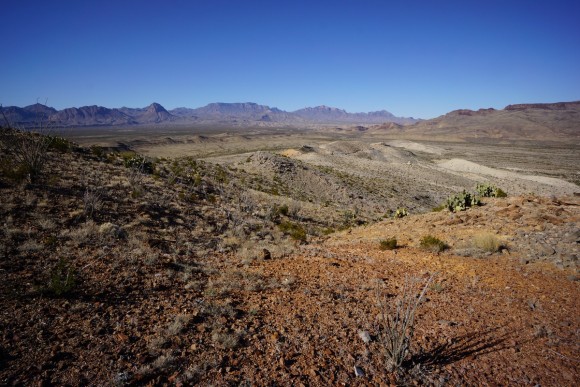
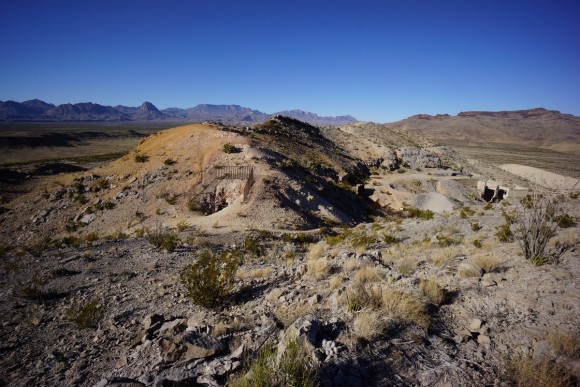
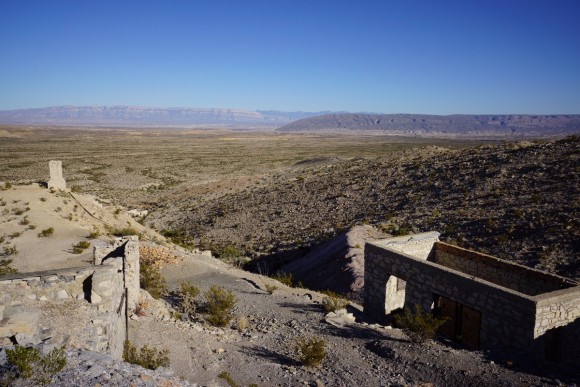


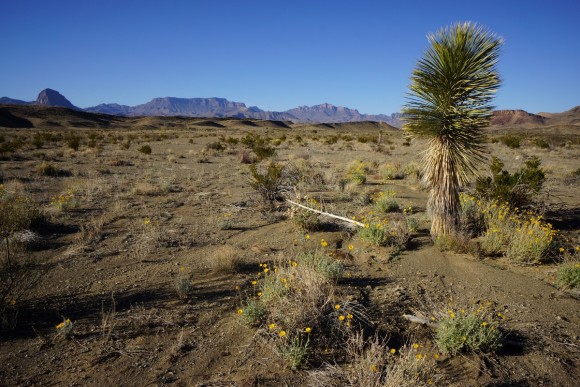




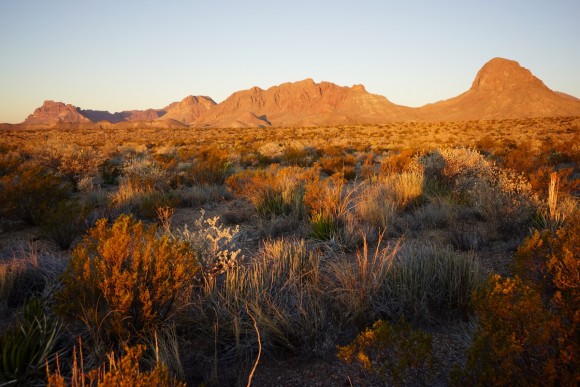


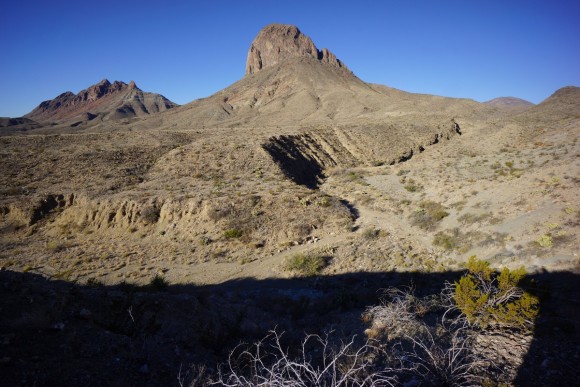

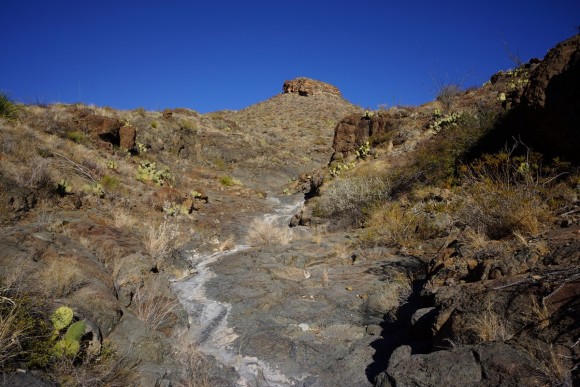

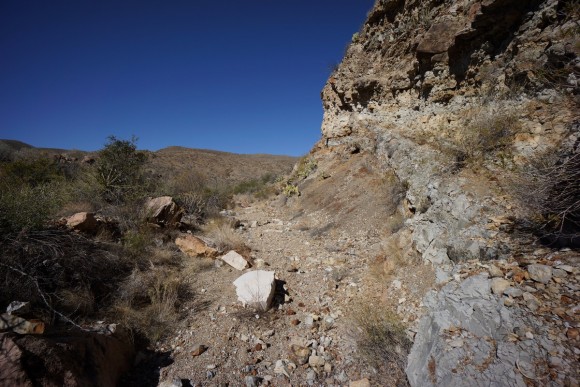


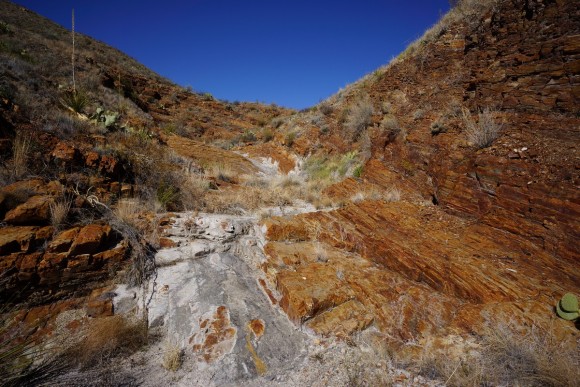
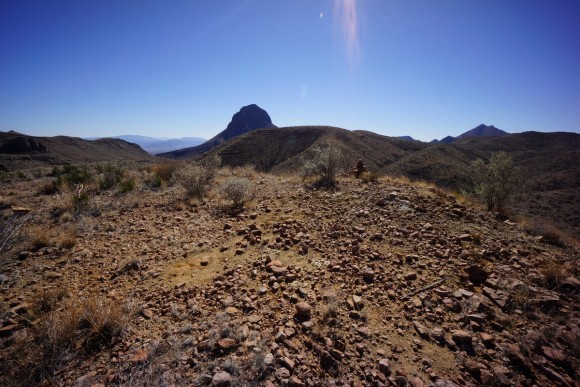
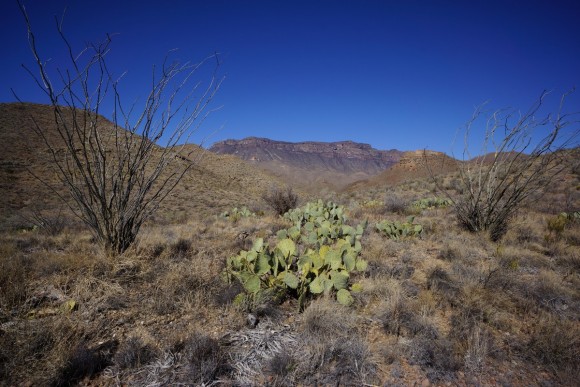
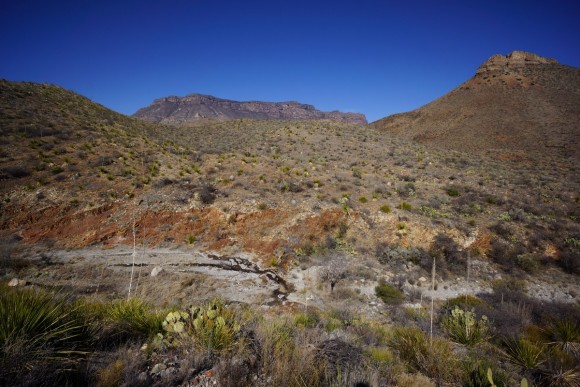





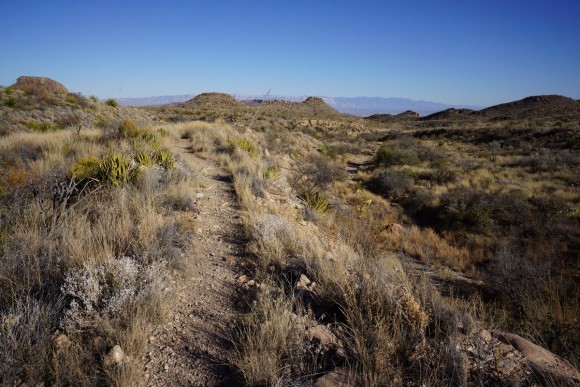



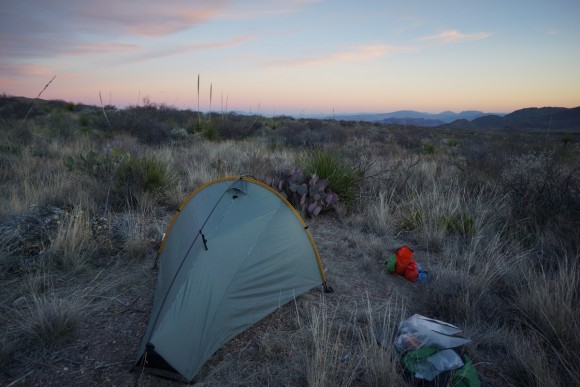


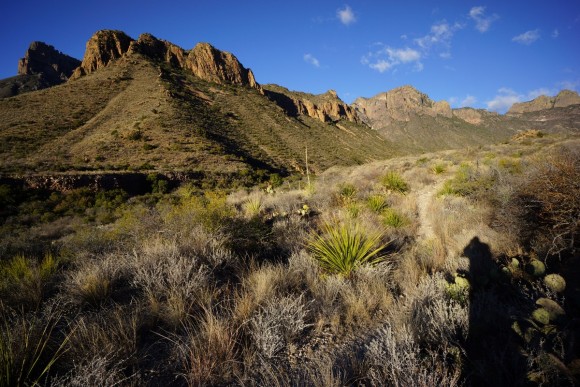





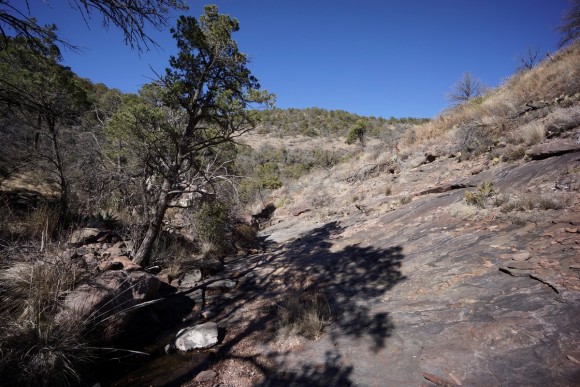
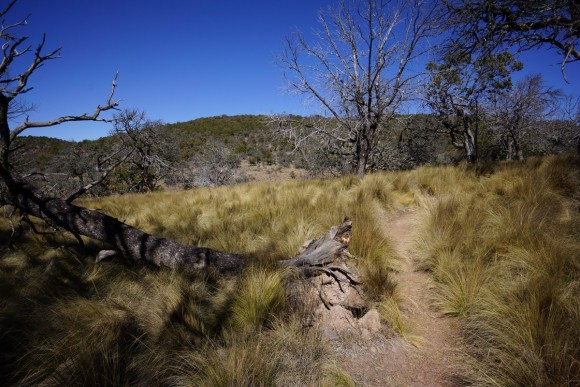

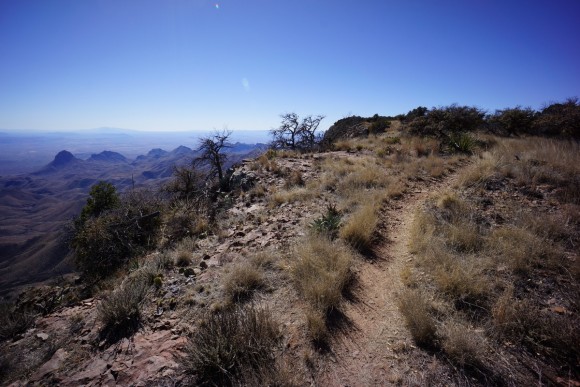

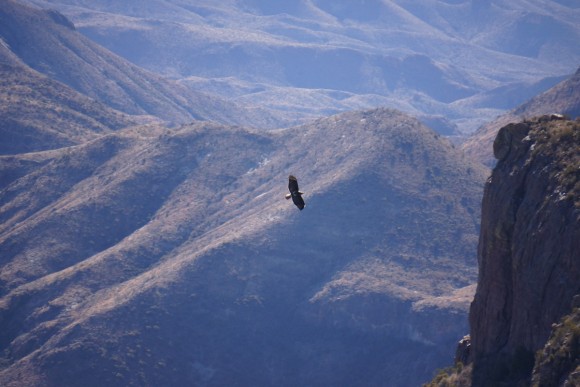




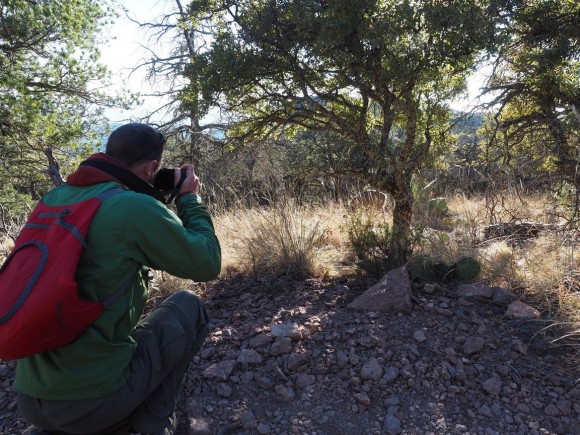


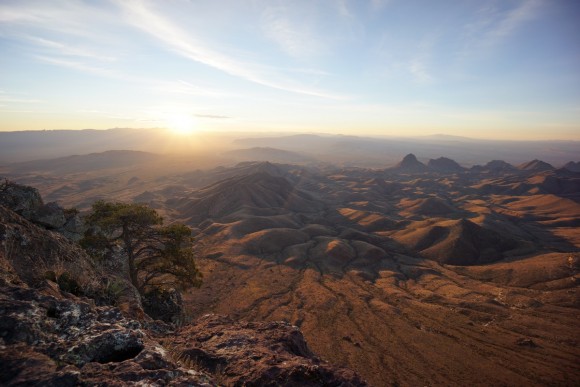



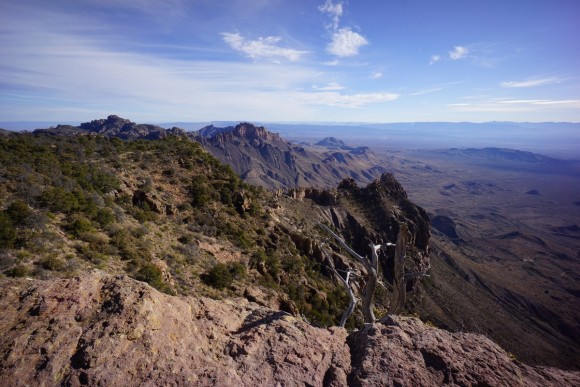


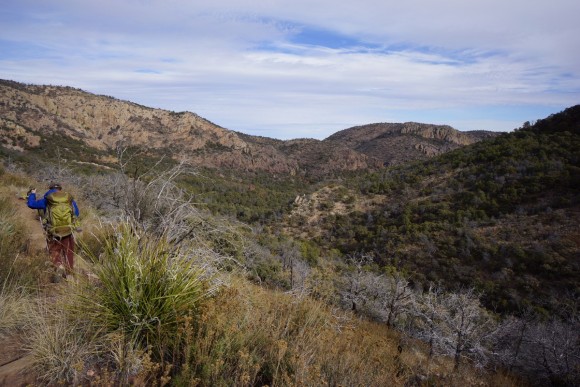





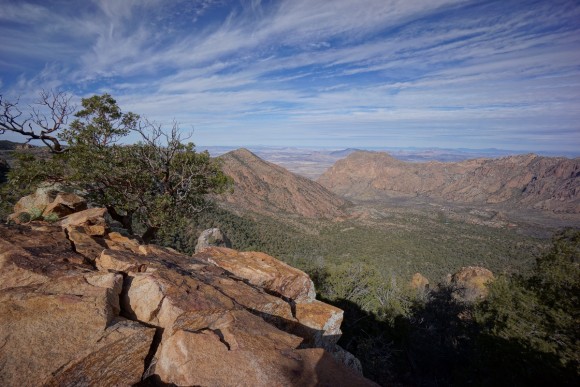





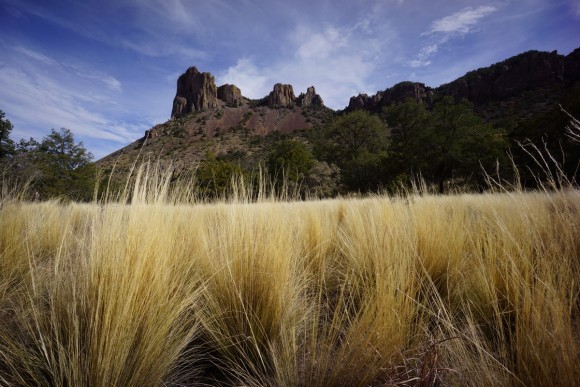






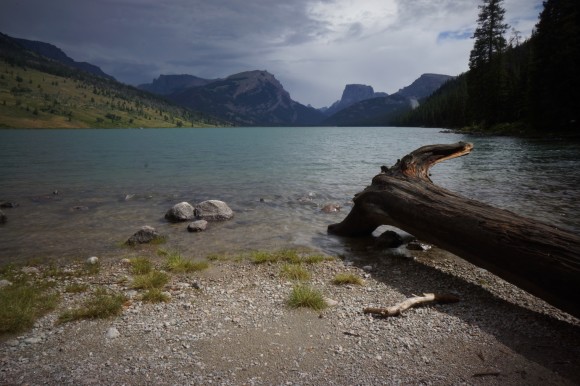
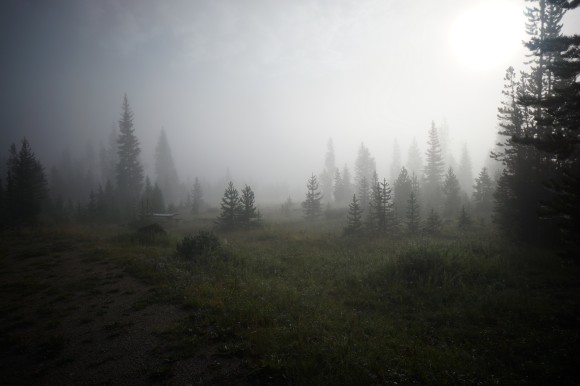

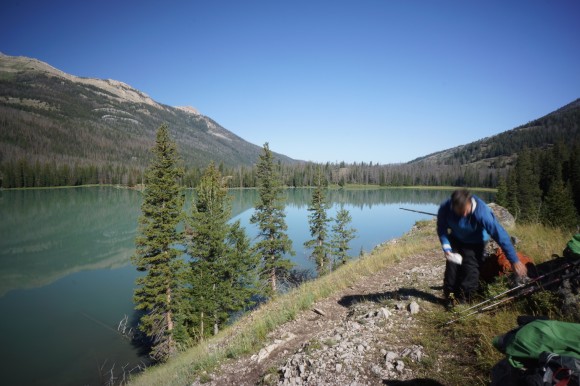
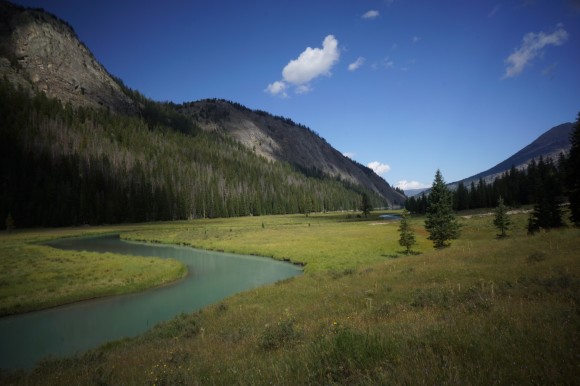



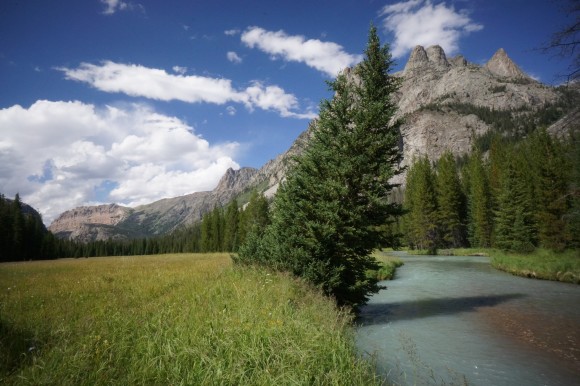





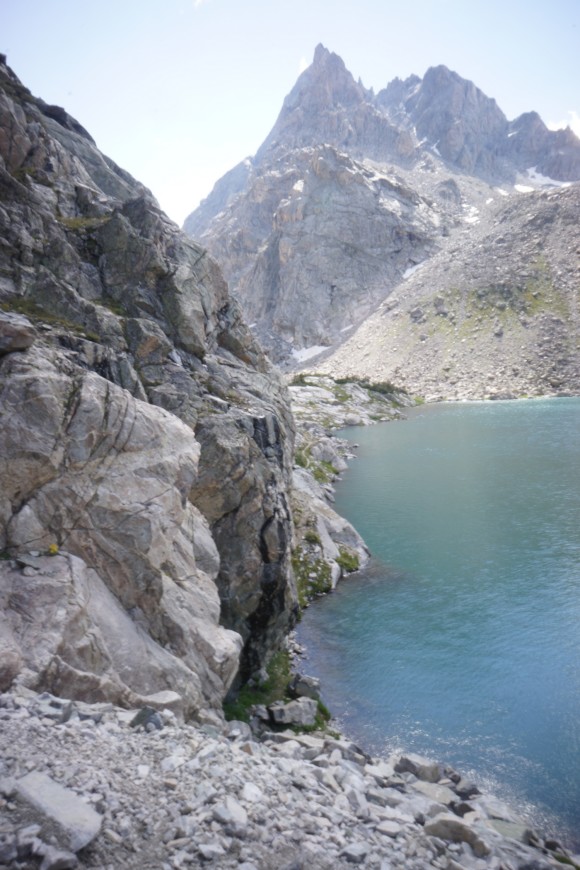

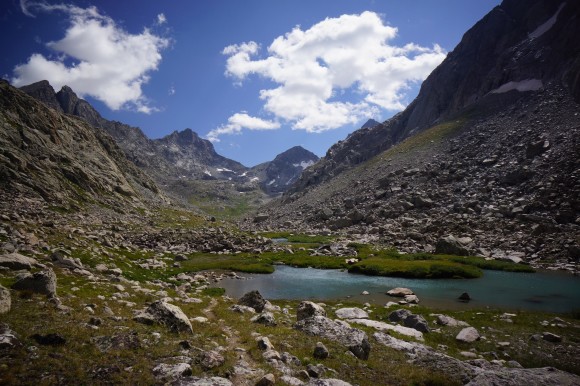



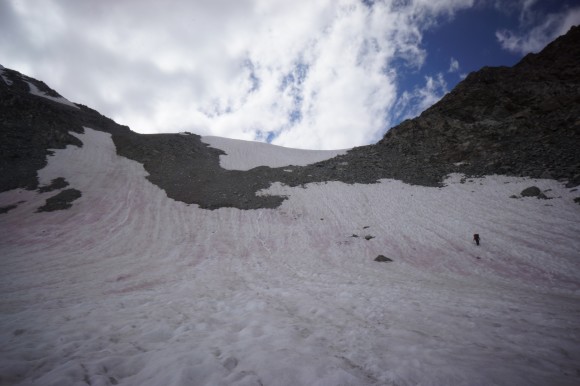


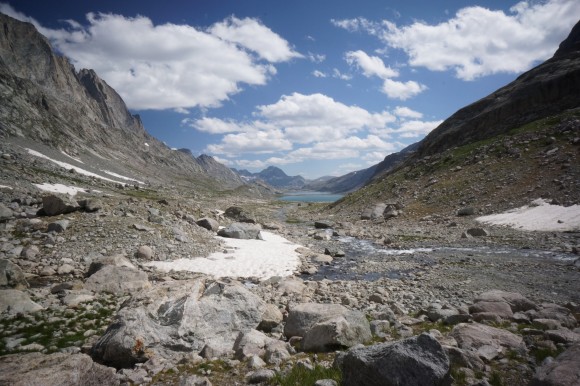



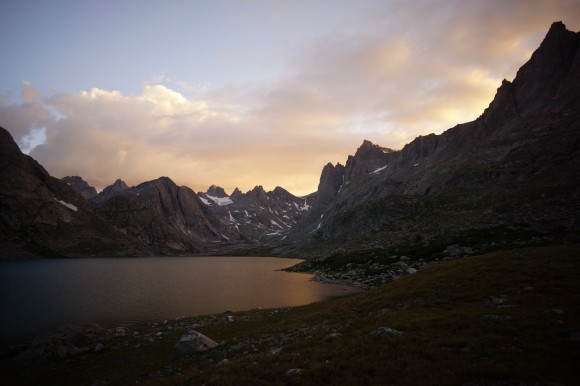








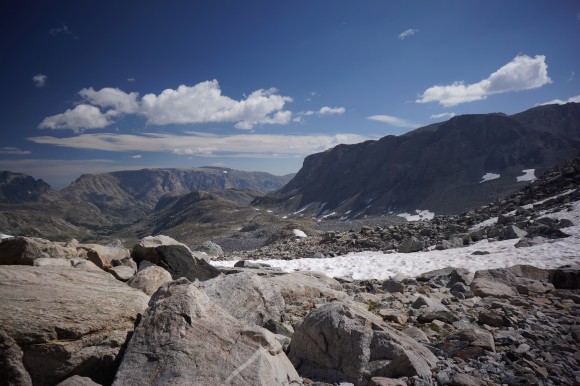

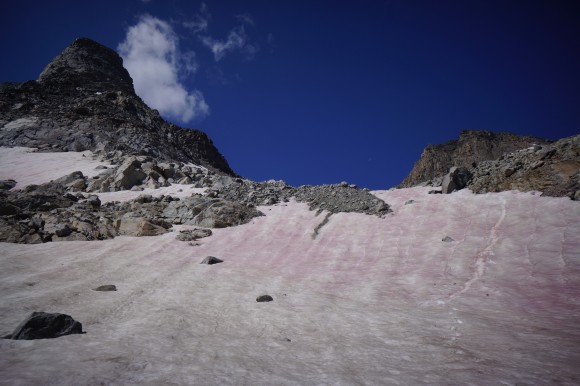
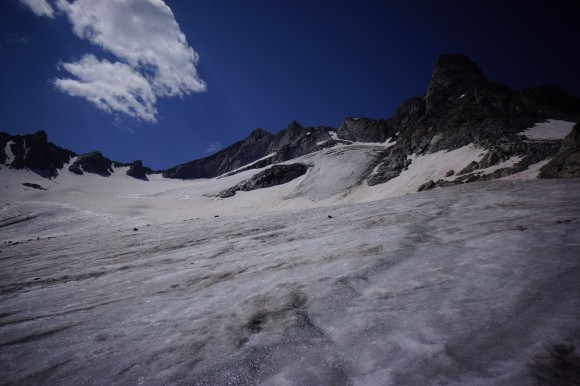


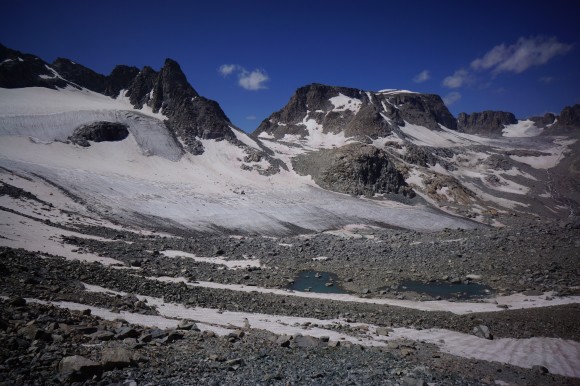





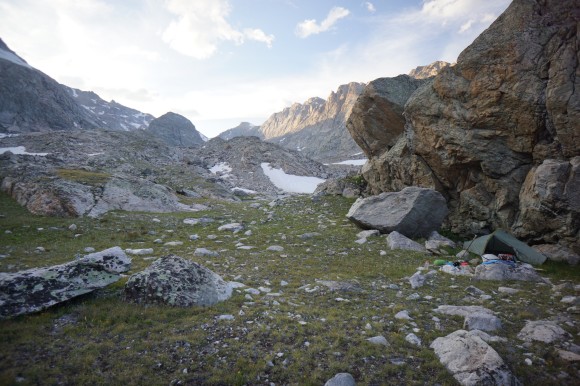













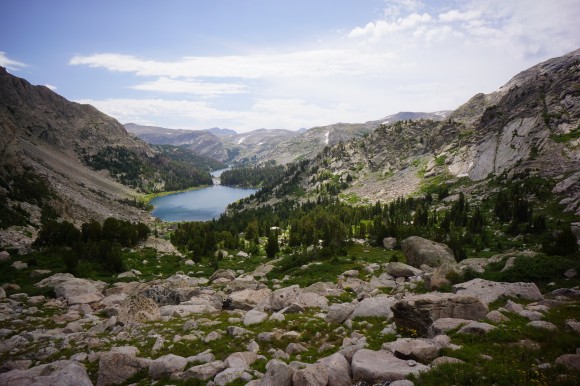
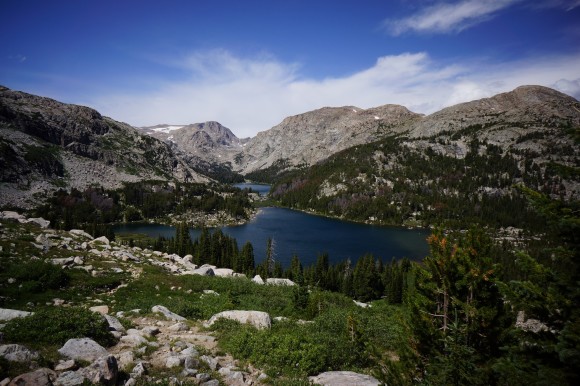


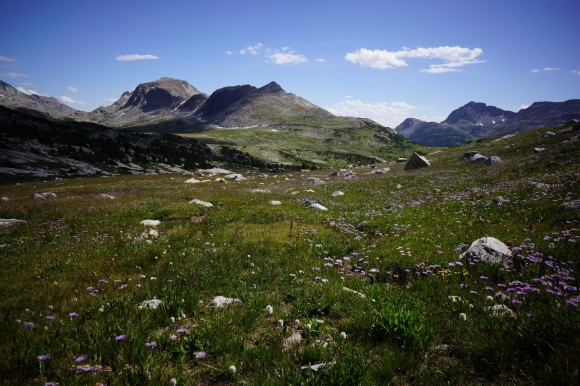

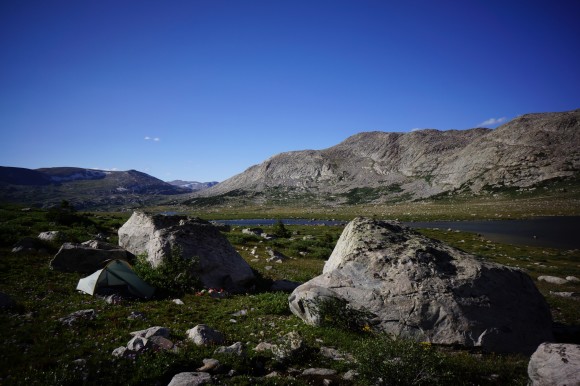
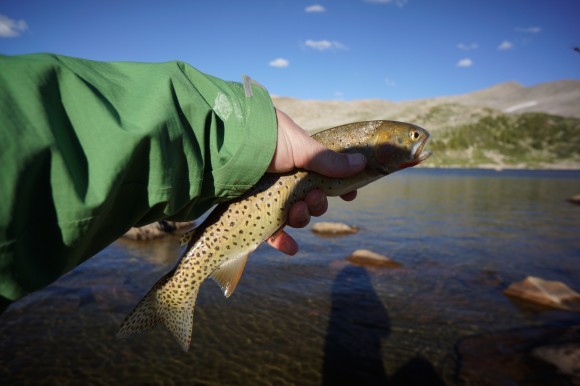
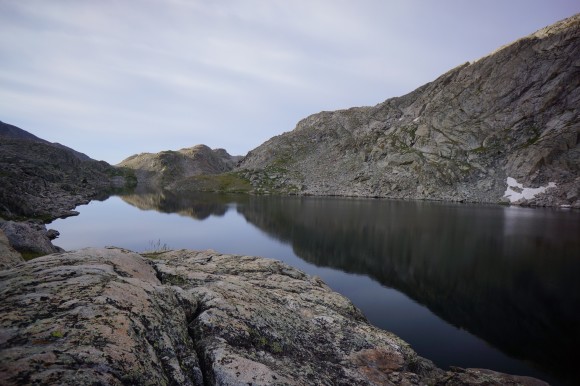



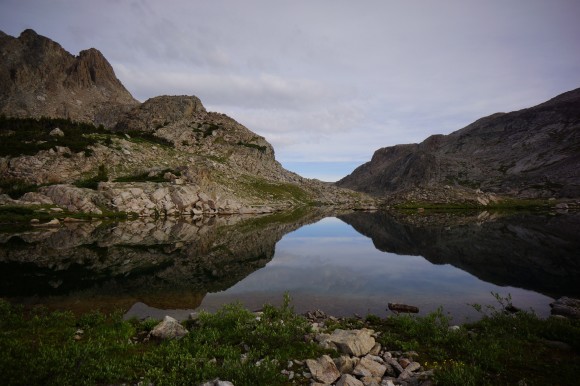














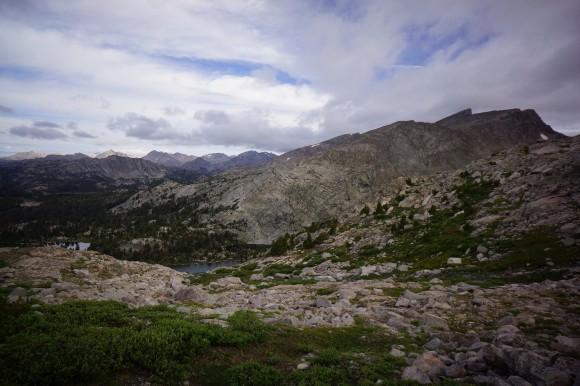 \
\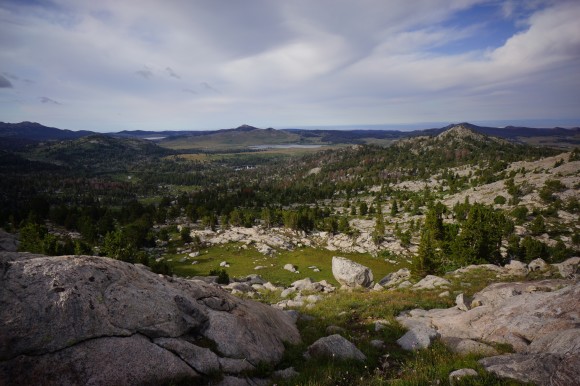
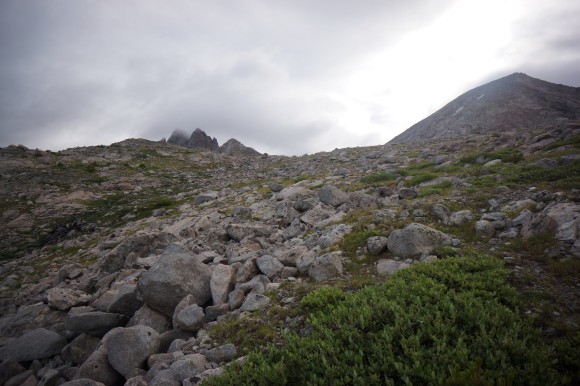

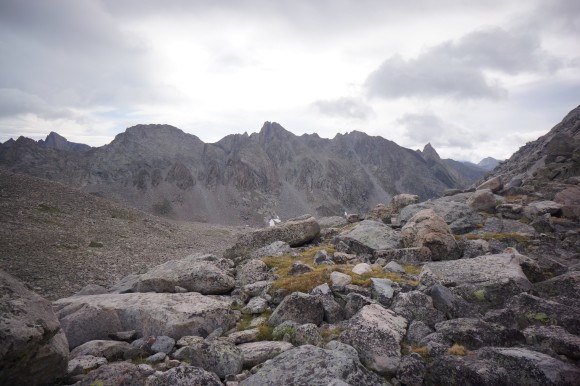 \
\